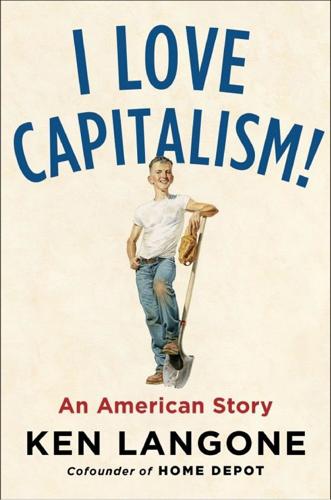
I Love Capitalism!: An American Story
by
Ken Langone
Published 14 May 2018
“Look,” Henry said, “I’m trying to turn my company around, and the NYU Medical Center has got a real problem. I can’t fix both things at the same time.” One thing suddenly occurred to me. “I want to be honest, Henry,” I said. “New York is a Jewish town. I don’t need the suspicion that I pushed a Jew out of this position.” “I don’t think anybody would say that,” Henry told me. “But if they did, I’d tell them the real story.” I met next with the NYU Medical School’s new dean, Bob Glickman. I was shocked at how depressed he was. Glickman, who’d previously been the chief of medicine at Beth Israel at Harvard, felt he’d been lured to NYU under false pretenses: he’d been promised the medical school was ready to make all kinds of changes, but when he arrived he was told the money simply wasn’t there.
…
I knew a few things about health care, and as I went around and interviewed these NYU docs, I saw that the quality of care at NYU Hospital wasn’t just good; it was spectacularly good. These were old-fashioned docs who understood the meaning of quality patient care. They would never rush a patient through a hospital stay just to clear a room: they paid real attention to their patients as people. I also had a leg up. Dr. John Mountain, the surgeon Elaine had worked for when we were newlyweds, was still active at North Shore Hospital, and he was an incredible source of knowledge for me. Dr. Mountain said to me, “There’s a doctor at NYU who is one of the most respected and accomplished cardiovascular surgeons in the world.
…
Jack Weist Jack Welch Tony Welters Hudson Whitenight David Wiederecht Frank Wilkens Webb Williams Faye Wilson Ernie Wuliger David Zaslav Gerson Zweifach All the associates of the wonderful companies and organizations I’ve been fortunate to be a part of: Autofinance Group Bucknell University Choicepoint Electronic Data Systems The Home Depot Invemed IVAC Micelle Technologies NYU Langone Health doctors, nurses, staff, and board of trustees NYU Stern School of Business Ohio Mattress Company Parkdale America Patlex Corporation Salem Leasing Corp. Unifi United States Satellite Broadcasting Wachtell, Lipton, Rosen and Katz Yum! Brands The world belongs to risk takers.
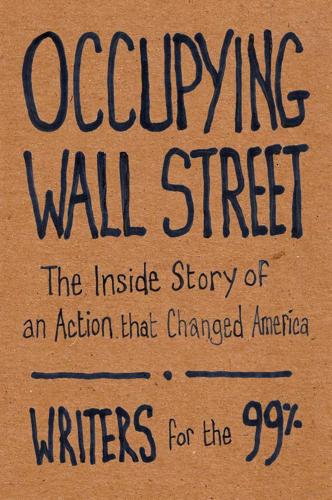
Occupying Wall Street: The Inside Story of an Action That Changed America
by
Writers For The 99%
Published 17 Dec 2011
Other speakers included law student activists from the University of Puerto Rico, who spoke of the global threat to public, accessible higher education and workers’ rights—a threat that New York area students followed on Facebook and Twitter posts from activists in Greece, India, England, and across the world. At NYU, students, faculty and staff had also been active in a nearly four-year-long campaign for the rights of migrant workers who build, operate and maintain non-U.S. site branch campuses, particularly NYU Abu Dhabi. NYU undergraduates also organized the Tuition Reform Action Committee (TRAC) and Students Creating Radical Change (SCRC) in the years leading up the occupation of the NYU Kimmel Student Center in February 2009. The NYU occupation took direct inspiration from the December 2008 student occupation of the New School.
…
., however, the square teemed with hundreds of students, professors and community members, and the New School contingent was still on its way. The NYU organizers had planned for a relatively small contingent of students, marching along the sidewalks to join the community groups and union members downtown. “Because it was just this small number of grad students that organized this thing. We felt like we couldn’t in good conscience encourage NYU undergrads to do something illegal and risk getting arrested,” recalled Christy Thorton, an NYU graduate student in history and one of the walkout’s organizers, “This was right after the Brooklyn bridge arrests.”
…
Josh Frens-String, a graduate student in New York University’s history department, said he first heard about NYSR when he was handed a flyer in Zuccotti. Josh, like many other NYU graduate student activists, was a member of the Graduate Student Organizing Committee (GSOC) and had primarily focused his activism on building support for an anticipated union certification vote. But the news of NYSR inspired Josh to build public-private solidarity at NYU. “All that really happened was I posted something to Facebook saying, ‘Does anyone know if there’s something going on?’— and Dan [DiMaggio] was organizing an NYU walk-out in coordination with students at CUNY,” Josh said. “So I made my first Facebook group ever for it.”

The Sharing Economy: The End of Employment and the Rise of Crowd-Based Capitalism
by
Arun Sundararajan
Published 12 May 2016
If I have inadvertently failed to include you, and you know me, then you know that I’m both forgetful and grateful. Thank you. (And visit http://oz.stern.nyu.edu/thanksforsharing where I will continue to update this note.) I see the changes we label “the sharing economy” as the current phase of an ongoing evolution of the economy and society that is shaped in part by digital technologies. This is the topic of my program of research and scholarship at NYU. When I began investigating this evolution many years ago, two colleagues—Vasant Dhar and Roy Radner—were especially important intellectual influences and mentors.
…
The sharing economy, although not politically neutral, is creating a new economic model—an interesting middle ground between capitalism and socialism—that also appears to lend itself to the fulfilling the desires and needs of people who identify with the extreme ends of both the economic and political spectrums. More importantly, it has developed as an economic model that appears to lend itself to fulfilling the desires and needs of people who identify with neither of those extremes. In 2013, I joined a newly formed NYU collective, the Project for the Advancement of our Common Humanity (PACH), founded by the NYU professors Niobe Way, Carol Gilligan, and Pedro Nguera. PACH was formed to better understand “what lies at the root of our crisis of connection and what we can do to create a more just and humane world.”46 A number of the world’s problems, ranging from violence to educational outcomes have been shown to stem from an insufficient level of human connectedness.
…
As a consequence, deepening our understanding of trust in society that is digitally mediated, as well as how the use of digital technologies changes levels of trust between people, is critically important. I hope our research with Frederic Mazella of BlaBlaCar and my NYU colleague Mareike Mohlmann, which is ongoing as this book goes to press—but which will be available via the NYU and BlaBlaCar websites in 2016—will be a first step in this direction. City governments, in parallel, will try to become more “shareable” as they get more crowded. Over time, they are likely to realize that unlocking the true potential of the sharing economy requires a fundamentally rethinking of how they plan and govern, and fairly radical changes in our approach towards both residential zoning and the role of regulatory agencies. *** Is crowd-based capitalism a passing phase, an interesting social experiment before society returns to the familiar confines of 20th-century managerial capitalism?
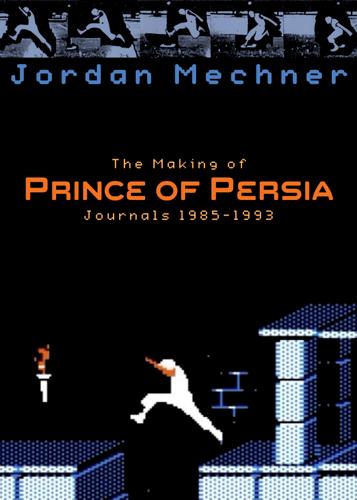
The Making of Prince of Persia: Journals 1985-1993
by
Jordan Mechner
Published 30 Jan 2012
The extent of the damage in my building: no hot water, no elevator, no lights in the lobby or stairwell, and the fire escape is sealed off as a “Restricted Zone.” November 20, 1989 NYU film school application arrived. I’ve started to fill it out. How terrifying. Robert is in town. We drove to Berkeley for dinner. (Crossed the Bay Bridge for the first time since the quake.) He’s euphoric at having escaped the industrial park and started a new life at Yale. That’s part of why I’m so eager to go to NYU. November 21, 1989 Virginia called to give me the post-mortem on In the Dark. She is no longer involved. She says James Alex is crazy and self-destructive and they could have made this movie, but he blew it by getting involved with the Abramoff brothers, and so on.
…
We discussed the possibility of doing Sega and NEC versions instead. It’s a tough sell. In any case, Game Boy looks like it’s happening, which is great news. They can’t start till March, but they hope to finish by June. Danny Gorlin has offered to do the Amiga conversion. January 10, 1990 Larry Turman agreed to write me a recommendation for NYU. He thinks NYU and USC are the best schools. His son Andrew just started at USC. Prince of Persia won “Game of the Year” from Computer Entertainer magazine, according to Brian. January 11, 1990 Made a six-minute demo tape of POP on the Broderbund video editing console, to submit to film schools.
…
Now that I’m going to leave, I’m starting to miss it. It’s more fun now that I’m not programming by myself. I think it would be fun to start a software company to make games, or educational games. But how can I do that while enrolled as a full-time graduate student at NYU? To try to do both at the same time would be folly. I don’t want to short-shrift NYU the way I short-shrifted Yale. I don’t want to spend another three years moving pixels around, even though it would be fun. I want to make movies. I’m so confused. January 31, 1990 Another Broderbund week. I’m so tired of coloring in these frames, I see paint in front of my eyes when I fall asleep at night.

Genius Makers: The Mavericks Who Brought A. I. To Google, Facebook, and the World
by
Cade Metz
Published 15 Mar 2021
With dozens of engineers, computer scientists, and academics packed into this split-level space, including the balcony overlooking the crowd below, LeCun revealed that the company was opening an AI lab in Manhattan, not far from his office at NYU. “It’s a marriage made in heaven—otherwise known as New York City,” LeCun said, before raising a glass to “Mark and Schrep.” Facebook had already hired a second NYU professor to work alongside LeCun at the new lab—dubbed FAIR, for Facebook Artificial Intelligence Research—and a few more notable names would soon join them, including three researchers poached from Google. But in the end, despite his long history with LeCun, a fellow Frenchman, Clément Farabet did not.
…
The next day, LeCun visited Facebook HQ, chatting with Zuckerberg, Schrep, and others in “The Aquarium,” the glass-walled conference room where the Facebook boss held his meetings. At this point, Zuckerberg did not mince words. “We need you to build a Facebook AI lab,” he said. LeCun said he had two conditions: “I am not moving from New York. And I am not leaving my job at NYU.” Zuckerberg agreed to both—on the spot. Over the next few days, the company also hired Rob Fergus, another NYU professor, who had just won the next iteration of the ImageNet contest alongside a young graduate student named Matt Zeiler. Then Zuckerberg flew to NIPS. After unveiling his new lab at the private Facebook party the night before the conference began, he revealed the news to the rest of the world with his speech in the main hall
…
Meanwhile, AlphaGo had beaten Lee Sedol, and the tech industry was stricken with a kind of AI fever. Even smaller Silicon Valley companies—Nvidia, Twitter, Uber—were jockeying for position in a race toward a single idea. After Twitter acquired Madbits, the company founded by Clément Farabet, the NYU researcher who turned down Facebook, Uber bought a start-up called Geometric Intelligence, a collection of academics pulled together by an NYU psychologist named Gary Marcus. Deep learning and deep learning researchers were the coin of the day. But Microsoft was handicapped. It wasn’t an Internet company or a smartphone company or a self-driving car company. It didn’t actually build the stuff that needed the Next Big Thing in artificial intelligence.
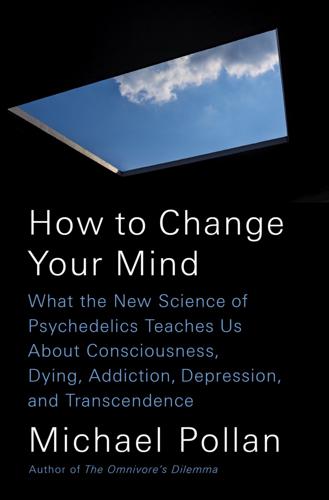
How to Change Your Mind: What the New Science of Psychedelics Teaches Us About Consciousness, Dying, Addiction, Depression, and Transcendence
by
Michael Pollan
Published 30 Apr 2018
In doing so, I’m following in the steps of several of the current generation of psychedelic researchers, who, beginning in the late 1990s, set out to excavate the intellectual ruins of this first flowering of research into LSD and psilocybin and were astounded by what they found. Stephen Ross is one such researcher. A psychiatrist specializing in addiction at Bellevue, he directed an NYU trial using psilocybin to treat the existential distress of cancer patients, to which I will return later; since then, he has turned to the treatment of alcoholics with psychedelics, what had been perhaps the single most promising area of clinical research in the 1950s. When several years ago an NYU colleague mentioned to Ross that LSD had once been used to treat thousands of alcoholics in Canada and the United States (and that Bill Wilson, the founder of Alcoholics Anonymous, had sought to introduce LSD therapy into AA in the 1950s), Ross, who was in his thirties at the time, did some research and was “flabbergasted” by all that he—as an expert on the treatment of alcoholism—did not know and hadn’t been told.
…
By the 1990s, when he began his residency in psychiatry at Columbia and the New York State Psychiatric Institute, the history of psychedelic therapy had been erased from the field, never to be mentioned. The trial at NYU, along with a sister study conducted in Roland Griffiths’s lab at Johns Hopkins, represents one of a handful of efforts to pick up the thread of inquiry that got dropped in the 1970s when sanctioned psychedelic therapy ended. While the NYU and Hopkins trials are assessing the potential of psychedelics to help the dying, other trials now under way are exploring the possibility that psychedelics (usually psilocybin rather than LSD, because, as Ross explained, it “carries none of the political baggage of those three letters”) could be used to lift depression and break addictions—to alcohol, cocaine, and tobacco.
…
By 2010, the cancer had spread to Patrick’s lungs, and he was buckling under the weight of an especially debilitating chemotherapy regime and the dawning realization that he might not survive. The article, headlined “Hallucinogens Have Doctors Tuning In Again,” briefly mentioned research at NYU, where psilocybin was being tested to relieve existential distress in cancer patients. According to Lisa, Patrick had no experience with psychedelics, but he immediately determined to call NYU and volunteer. Lisa was against the idea. “I didn’t want there to be an easy way out,” she told me. “I wanted him to fight.” Patrick placed the call anyway and, after filling out some forms and answering a long list of questions, was accepted into the trial.
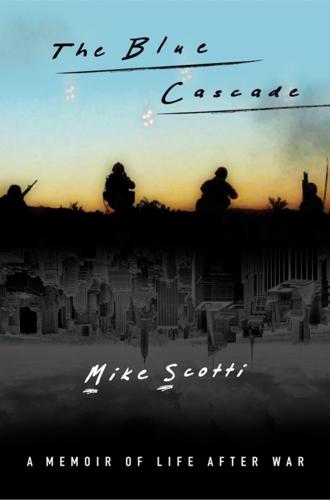
The Blue Cascade: A Memoir of Life After War
by
Mike Scotti
Published 14 May 2012
Part III Up Chapter Ten Date: Fri, 15 Apr 2005 10:08:23 -0400 From: Anika Pratt Subject: Meeting at NYU Stern To: Michael Scotti Dear Michael, My name is Anika Pratt and I am a member of the admissions committee at NYU Stern. I am writing to find out if you can come to Stern to meet with me sometime next week. Please let me know your availability to meet during business hours. Thank you, and I look forward to hearing from you soon, Anika Pratt -- Anika Davis Pratt Director, MBA Admissions NYU Stern School of Business http://www.stern.nyu.edu/admissions Downtown. Down to Earth. Down to Business. A jolt of equal parts hope and fear hit me as I opened the e-mail.
…
The lines of the suit must be tailored perfectly along the shoulders and the arms for it to become a part of you. Your steps and movements have a self-assuredness to them because it fits perfectly, just like a Marine’s uniform. I flashed my purple laminated NYU ID card as the guard waved me through the checkpoint. To my left, embedded in the wall, was a plaque I hadn’t noticed before. A memorial to the students and alumni from NYU Stern who had died on 9/11. Her name was there. Beth Anne Quigley. I stopped for a few moments and gently rubbed my fingers over the raised lettering of her name. I remembered clearly the nights just a year before, walking to work along the edge of Ground Zero.
…
“The camera made a weird noise. The tape played for a second, but then the image froze and the tape jammed and there were just these weird lines going across the screen.” “Oh that’s terrible. I’m sorry. What are you going to do? I know how much those tapes mean to you.” “I talked to some guy the other day—a student from NYU Film School—who said that I needed to get them put on a more stable format. Like DVD. He’s an intern from some production company that he says does pretty good work, so I’m going to meet with them next week. I have to make sure the rest of the tapes don’t break.” Then the conversation drifted to other things.

Only Americans Burn in Hell
by
Jarett Kobek
Published 10 Apr 2019
You can’t charge $63,472 and expect much more than a mixture of the rich and the gullible. The gullible emerge from NYU in a state of financial ruin, indebted for a substandard education that they could’ve received for about 1/8th of the price at a state-run university. Welcome to adulthood! Time to pay back $253,888! With compounding interest! The rich kids come out fine. The rich kids are always fine. The third thing that distinguishes NYU is its Abu Dhabi campus, which opened in 2014 AD. The idea behind the Abu Dhabi campus was to construct a mirror-world NYU that bestowed the same substandard education, and thus conferred the same substandard degree, as the Greenwich Village campus.
…
And although putting people into human bondage and making them build college campuses was a time-honored tradition, it’d been a very long while since any American institution of higher learning had involved itself in this sort of disgrace. On August 30th, 2017 AD, I received an email from NYU’s Office of Development and Alumni Relations. The email was from a Senior Annual Giving Officer named Corey, and it informed me that Corey was coming to Los Angeles. I live in Los Angeles. Corey wanted to have lunch or get coffee. For years, I’d received emails from NYU. All of the emails begged for money. But none of them had extended a personal invitation of food or caffeine. Corey’s email made me wonder if NYU employed a clipping service to search for media mentions of prominent alumni. In the sixteen months prior to Corey’s email, I’d lived as a minor literary sensation off the strength of my novel I Hate the Internet.
…
to a Goose Only Americans Burn in Hell JARETT KOBEK Introduction Thank You for Your Honesty The last time anyone thanked me for my honesty was in an email sent by the Office of Development and Alumni Relations at New York University, an institution of higher learning centered in New York City’s Greenwich Village. NYU has three distinguishing characteristics. The first is that it’s my alma mater. I graduated in 2002 AD, after giving the university an absurd amount of money for an undergraduate degree. This is why the school begs me for money. It’s like a junkie who can’t stop. NYU’s second distinction is its inhuman cost. In 2017 AD, the tuition was $46,170 for a year. Throw in campus housing and administrative fees, and the total was $63,472.
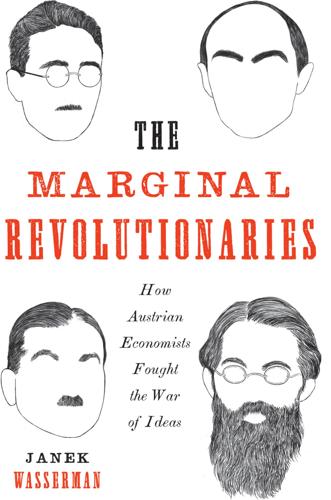
The Marginal Revolutionaries: How Austrian Economists Fought the War of Ideas
by
Janek Wasserman
Published 23 Sep 2019
Mises had some possibilities at New York University, but nothing came out of this.” In a confidential letter of recommendation to NYU, Machlup recounted the strengths and the flaws of his mentor. He observed that “the neo-Austrian school is to a large extent the Mises School.” However, he also noted that Mises’s unyielding style repelled as often as it attracted. “It is the conviction with which he expounds his ideas which arouses the students’ interest, partly by convincing them, partly by provoking their criticism.” Mises did not receive a full-time offer from NYU, not for Machlup’s lack of trying.17 Because of the tireless activity of the Austrian School members, by late 1940 virtually everyone who would escape from the European maelstrom had made it out.
…
Those two books, which focused on history and politics more than economics, barely made a ripple outside this ideological community, however.34 While in California, the emerging epicenter of US libertarianism, Mises encountered Leonard Read, who became one of Mises’s patron saints. Read disseminated Mises’s works and provided him a regular stipend. Read, Henry Hazlitt, and Lawrence Fertig, a New York University trustee, orchestrated Mises’s appointment to a visiting professorship at the NYU Graduate School of Business Administration in 1945. Like Hayek at Chicago, NYU did not pay Mises’s salary; private contributions did. After the appointment, Mises began holding lectures and seminars, first in Manhattan and later in Irvington-on-Hudson, where FEE purchased an opulent estate in one of New York City’s wealthiest suburbs. Harold Luhnow and the Volker Fund also provided support for Mises’s endeavors from 1947 onward.
…
Like Kirzner, he felt himself to be a bridge between the Austrians and “Anglo-Saxons,” yet he bridled at the “Austrian” descriptor: “While you may say that this analysis is essentially Austrian in character, I must point out that this is by no means foreign to Anglo-Saxon equilibrium theory.” Machlup was less interested in claiming Austrianness than in advancing good economics.21 Creating and maintaining clear definitional boundaries within the Austrian tradition was a challenge. While both Kirzner and Machlup stuck primarily to academic work—Kirzner at NYU and Machlup at Princeton and then NYU—they did not entirely eschew policy and political discussions, particularly Machlup. Elite liberalism informed Machlup’s work, yet it was hard to categorize on a left-right political spectrum. He was committed to individual liberty, economic and political, and this led him to speak out on issues rather than to get involved in party political affairs.
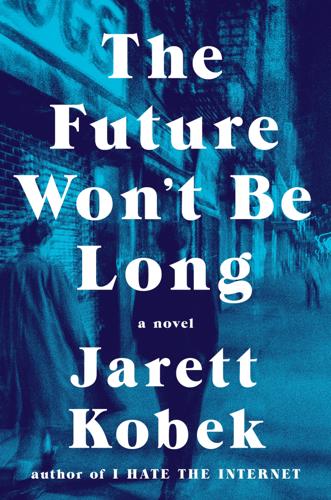
The Future Won't Be Long
by
Jarett Kobek
Published 15 Aug 2017
Or emptiness on which proletariat worker projects meaning?” Baby wasn’t home, it being the time of day when he was either in class or working at the Theatre 80 St. Mark’s. “Roommate?” asked Минерва. “He isn’t present.” “Is student?” she asked. “At NYU,” I said. “Fucking NYU,” said Минерва. “I tell stories about NYU. Real prick institution.” I offered Минерва some food, but she declined. “New York ten years ago is real place,” she said. “All since is monkeys who fling shit. You and I are nothing.” FEBRUARY 1989 Baby Invites Adeline to Bret Easton Ellis’s Apartment Our holiday break did not include a sojourn to California.
…
Or want to own him. But I wanted him with me, right there, right in that moment. Would have given anything to hear him talk about the stupid things that he liked. About skateboarding or Dungeons & Dragons or beer or anything. I beat off. MAY 1988 Baby Gets into NYU Then there was the time when I got into NYU. MAY 1988 Adeline Makes a Decision I was downstairs, watching a VHS recording of The Wonder Years, a television show about a junior high student in 1968. The idea is that this kid, named Kevin, narrates from an indeterminate point in the future, presumably 1988.
…
Other than Larry, the only good writer we’ve got is this woman named Ann Nocenti, who’s doing Daredevil. And most of the office hates her work.” “Because she’s a woman?” I asked. “Because she’s interesting,” he said. * Walking up Third Avenue, my stomach burned with the old tequila churn. I examined a construction site. A new NYU dormitory. Those were the days when NYU was always erecting a new dormitory on Third Avenue. I’d asked Baby how he felt having matriculated into an organization with the stated goal of our neighborhood’s complete transformation. “To be honest,” he said, “I haven’t thought much about it.” In the lobby of 114 East 13th Street, I informed the doorman that I was ascending to apartment 2D.
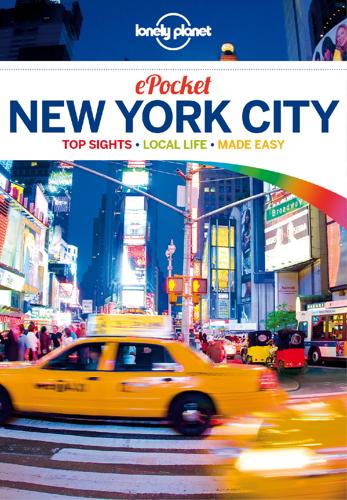
Pocket New York City Travel Guide
by
Lonely Planet
Published 27 Sep 2012
It plays host to lounging New York University (NYU) students, fire-eating street performers, curious canines and their owners, and legions of speed-chess pros. Encased in perfectly manicured brownstones and gorgeous twists of modern architecture (all owned by NYU), Washington Sq Park is one of the most beautiful garden spaces in the city – especially as you are welcomed by the iconic Stanford White Arch on the north side of the green. (www.washingtonsquareparkcouncil.org; Fifth Ave at Washington Sq N; A/C/E, B/D/F/V to W 4th St-Washington Sq, N/R/W to 8th St-NYU) 2 Chelsea Market Market Offline map Google map In a shining example of redevelopment and preservation, the Chelsea Market has taken a former factory of cookie giant Nabisco (creator of the Oreo) and turned it into an 800ft-long shopping concourse that caters to foodies.
…
He’d scarcely recognize the place today, which has swelled to a student population of more than 54,000. For a unique experience, sign up for a one-day class – from American history to photography – offered by the School of Professional Studies and Continuing Education. (NYU; 212-998-4636; www.nyu.edu; information center 50 W 4th St; A/C/E, B/D/F/V to W 4th St-Washington Sq, R/W to 8th St-NYU) 4 Astor Place Square Offline map Google map This square is named after the Astor family, who built an early New York fortune on beaver pelts and lived on Colonnade Row, just south of the square. Originally Astor Pl was the home of the Astor Opera House (now gone), which attracted the city’s wealthy elite for regular performances in the mid-1800s.
…
St Marks Pl is one of the best strips of pavement in the city for story telling, as almost every building on these hallowed blocks is rife with tales from a time when the East Village embodied a far more lawless spirit. When things get too crowded, hop a block over in either direction for some local retail and restaurant finds. (St Marks Pl, Ave A to Third Ave; N/R/W to 8th St-NYU, 6 to Astor Pl) 2 New Museum of Contemporary Art Gallery Offline map Google map Any modern-day museum worth its salt has to have a structure that makes as much of a statement as the artwork inside. The New Museum of Contemporary Art’s Lower East Side avatar accomplishes just that and more with its inspired design by noted Japanese architecture firm SANAA.
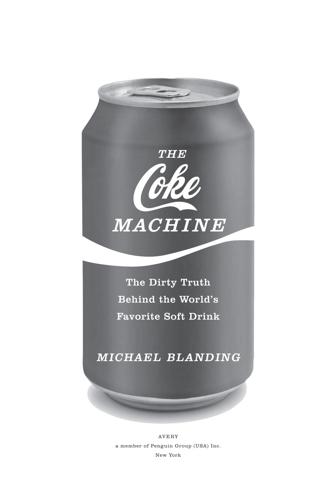
The Coke Machine: The Dirty Truth Behind the World's Favorite Soft Drink
by
Michael Blanding
Published 14 Jun 2010
By that time, the day of reckoning was approaching at both NYU and the University of Michigan. As NYU’s senate reconvened to consider the vending machine ban, Coke continued in its refusal to meet with the WRC. The university issued an ultimatum—either Coke agree by December, or the Coke machines would go. When the deadline passed, NYU announced it would begin removing Coke from campus, effective immediately. But that wasn’t all. When the University of Michigan’s December 31 deadline passed three weeks later, it, too, declared it would be severing its ties with Coke. This decision was even more significant, since unlike both NYU and Rut gers, the university was breaking an exclusive contract and it was doing so specifically because of the company’s human rights violations—and not only in Colombia but in India as well.
…
Page 264 “big blow to the company”: Rogers, interview by the author; Heybour, “At Rutgers, Pepsi’s $17 Million Deal Is the Real Thing.” Page 264 about a hundred vending machines: Crystal Yakacki, former organizer with anti-Coke campaign at NYU, interview by the author; Victoria Foltz and Barbara Leonard, “NYU Senate Bans Coke from Campus,” Washington Square News, December 9, 2005; Brittani Manzo, “Possible Coke Ban to Take Effect at NYU,” Washington Square News, November 28, 2005. Page 264 USAS led the way: Romero, interview by the author; Barbara Leonard, “Coke Re fuses NYU Request to Audit Workers’ Rights Practices,” Washington Square News,” April 21, 2005. Page 264 Students wrapped vending machines: Campaign to Stop Killer Coke “Student Protest Pics,” www.killercoke.org/proteststud.htm.
…
Page 266 Coke was soon setting its own rules: Notes from September 9, 2005, commission meeting by anonymous student. Page 266 The students dismissed those demands: “How NYU Chose Colombia over Coke,” BusinessWeek, Online Extra, January 17, 2006, http://www.businessweek.com/magazine/ content/06_04/b3968078.htm. Page 267 The university issued an ultimatum: Jacob Gershman, “University Senate at NYU Threatens to Oust Coca-Cola from Campus,” Sun (New York), November 7, 2005. Page 267 NYU . . . would begin removing Coke from campus: Patrick Cole, “NYU Bans Coca-Cola Products,” Bloomberg News, December 9, 2005. Page 267 “Certainly if there was any wrongdoing”: Caroline Wilbert, “A Surprising Critic of Coke,” Atlanta Journal-Constitution, January 28, 2006.
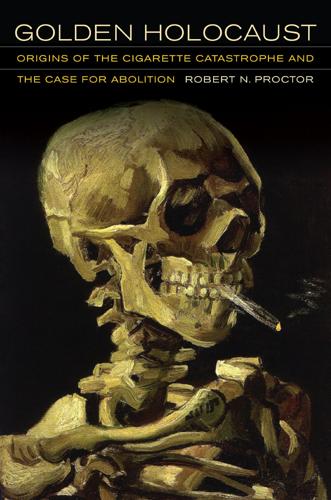
Golden Holocaust: Origins of the Cigarette Catastrophe and the Case for Abolition
by
Robert N. Proctor
Published 28 Feb 2012
TIGHT SECURITY Collaborating in the American Tobacco-Runyon Fund “air pollution” project were a number of scientists working under Rhoads and Lanza. Norton Nelson, director of research at NYU’s Institute of Industrial Medicine, was a member of the team, as was William E. Smith, professor of medicine at NYU and an expert in the realm of carcinogenic bioassays. Others involved in the project conducted animal experiments of various sorts (tobacco tar painting, for example), identified tobacco constituents, or used radioactive tracers to study nicotine metabolism. The NYU organic chemist Alvin I. Kosak studied the chemical composition of tobacco smoke and Sid Laskin, a physicist with expertise in pharmacology and instrumentation, organized C 14 tracer projects to study nicotine metabolism.
…
Smith’s view that “any product causing the destruction of the sebaceous glands under the conditions of accelerated tests would probably produce papillomata and eventual cancer under the conditions of the recognized standard test.” Smith at this time was the chief proponent of the accelerated tests used in the Ecusta experiments; he was also a faculty member at NYU’s Bellevue Medical Center and an important figure in the NYU collaboration—and one of those who would suffer professionally for recognizing the cancer-causing capacity of tobacco. Smith in fact would shortly thereafter be purged from the NYU faculty (by Lanza in 1956), a decision upheld despite protests to the chancellor.27 Ecusta was quite happy with these results, and for obvious reasons. Experimental tests had seemed to exonerate cigarette paper and put the entirety of blame for cancer on tobacco.
…
Hanmer thanked him for a clipping from a recent issue of the Science News Letter implicating arsenic in lung cancer causation.3 Teeter then explained that the Runyon Fund had on file a request from NYU for a grant in the amount of $150,000 to support a long-term project on lung cancer—including $50,000 for “tooling up” and $50,000 per year for operations thereafter. Teeter realized this was an ambitious sum, given that the eleven projects currently funded by the National Cancer Institute (NCI), the American Cancer Society (ACS), and the Runyon Fund itself totaled only $96,768 altogether.4 American Tobacco agreed to fund the collaboration—with minor contributions from the other manufacturers—provided certain conditions of confidentiality could be met. The Runyon-NYU-SKI collaboration would become the best-financed lung cancer research project in the world, albeit one with its ultimate source of funding hidden.
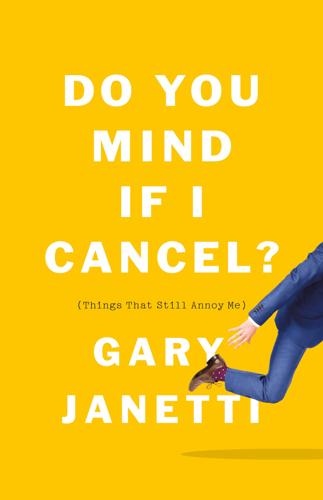
Do You Mind if I Cancel?: (Things That Still Annoy Me)
by
Gary Janetti
Published 21 Oct 2019
It was extremely groundbreaking, and it was the first time a storyline on the show had ever spoken directly to me after all these years watching it, and I was amazed at the power it had (has) over me even though I was already out and in my mid-twenties when it aired). Even just having One Life to Live on in the room without the volume is comforting somehow. (A Viki/Dorian episode, however, is always something I’ll drop whatever I’m doing for.) And I go to graduate school and I get a job at NYU and I plan to be a writer, want to be a writer, say I’m a writer, but don’t write. And while I’m working at this office at NYU I make a friend, Evie, who also watches One Life to Live, has been watching as long as I have. And, then, one day, I write a letter. It’s addressed to the executive producer of One Life to Live and in it I talk about how I grew up watching the show and that I would like to write for it.
…
Unfortunately in order to get the good Lend-A-Hand assignments you had to prove yourself by taking any available ones offered to you. This is what I am told by the woman in charge of handing out jobs. I, of course, say I would be willing to take on any job, which is how I find myself less than twenty-four hours later cleaning the bathroom of an NYU linguistics professor as his family sits in the living room pretending I’m not there. Later, while I’m on my knees scrubbing this family’s disgusting toilet (who by the way all look perfectly capable of scrubbing their own fucking toilet) I think, “I have a degree I have potential I have dreams, how did I end up someone who cleans apartments?”
…
Oh, but to see that commercial. Evita’s arms outstretched, proud, defiant. It was like a door had opened and Patti was welcoming me. “Come in,” she said. “Come in.” PARAMOUNT I’m twenty-six years old. I quit my previous job working as the receptionist for a nonprofit educational theater company at NYU (at least I think I quit, somebody might have implied—said—maybe it’s time you move on Gary) before I have another job in place. This is the first time I have ever left a job before I already have the next one lined up. I estimate I can survive on my savings for two days, three if I just sit in a corner.
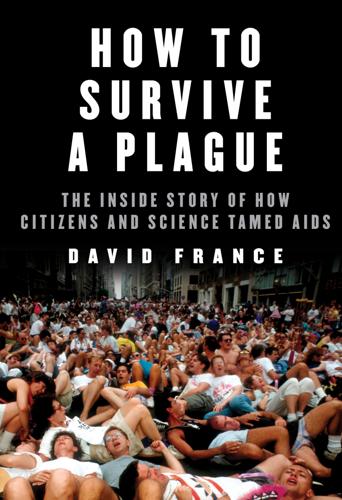
How to Survive a Plague: The Inside Story of How Citizens and Science Tamed AIDS
by
David France
Published 29 Nov 2016
Joyce Wallace, to whom he had referred his KS patient, and she had learned of them by calling the National Cancer Institute in Bethesda, Maryland. Someone there referred her to the NYU Medical Center’s Dr. Alvin Friedman-Kien, an overnight KS expert who was quietly treating the majority of the new patients. Eighteen KS patients were a significant cluster, a trumpet call that said something remarkable was going around, Sonnabend felt. In his opinion, doctors throughout New York should have been alerted to the outbreak. At a minimum, he believed, the CDC and officials at the NYU Medical Center should have reached out to the doctors with bustling gay practices, like his, telling them what to look for and what to do with suspected KS cases.
…
“This,” Friedman-Kien said of his patient, “is just the beginning of a disaster. This is going to be a pandemic.” To which Farber replied, still in earshot, “But why does NYU have to be the Titanic?” Farber later adpoted his own anti-GRID policy, ruling that those patients could not be admitted to shared rooms, and consequently had to be held in the ER when the limited number of isolation rooms filled up. He knew that GRID patients posed no risk to roommates. But Farber considered the containment policy necessary because applications for residencies at NYU from top medical schools had lagged, either from fear of GRID or because a hospital overwhelmed with the disease presumably lacked the diversity of illnesses that ambitious physicians sought.
…
Reluctantly, he filled out applications for NYU and one or two other schools. Apartment hunting in Manhattan took the two through June and July, masking their troubles with industriousness. Launy never stopped loving Staley, but every day made him more and more afraid of him. As ashamed as that made him feel, he was obsessed with the danger Staley posed for him. He wondered stupid things. Were the dishes really safe? Someone told him toothbrushes carried the virus. Was safe sex nullified by the toothpaste tube? In August, when he flew to Amsterdam to sit for the NYU admissions exams there, as the school required, he knew what he had to do.
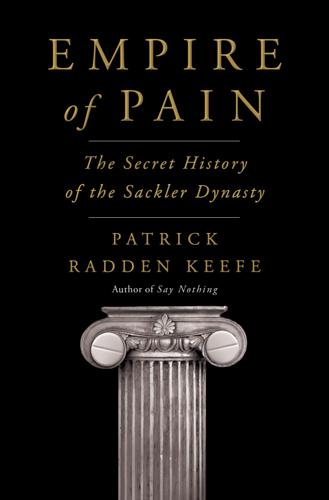
Empire of Pain: The Secret History of the Sackler Dynasty
by
Patrick Radden Keefe
Published 12 Apr 2021
The Sackler brothers were giving money to a wide range of institutions, but notably their contributions were often directed to places where they did not have any prior personal connections. Arthur hadn’t gone to Columbia; he went to NYU. Mortimer and Raymond couldn’t even get into NYU for medical school, on account of anti-Semitic quotas. Yet the brothers donated to Columbia, and eventually to NYU, and to the most elite university of them all, Harvard. Their generosity had a conspicuously aspirational quality. But the Met was in a class by itself. The institution’s credo of free access to the public was offset by its reputation for tremendous exclusivity when it came to the wealthy donors who supported the place and won a coveted seat on the museum’s board.
…
Social acquaintances would see members of the family out, at gala dinners and Hamptons fund-raisers, on a yacht in the Caribbean or skiing in the Swiss Alps, and wonder, or whisper, about how they made their money. And this was strange, because the bulk of the Sacklers’ wealth had been accumulated not in the era of the robber barons but in recent decades. “You graduated from NYU undergraduate in 1980,” Hanly said. “True?” “Correct,” Kathe Sackler replied. “And from NYU Medical School in 1984?” “Yes.” And was it true, Hanly asked, that after a two-year surgical residency she had gone to work for the Purdue Frederick Company? Purdue Frederick was a drug manufacturer, which subsequently became known as Purdue Pharma.
…
His mother, Beverly, answered the phone, but she refused to put Richard on. “I think you’ve hurt him enough,” she said. With his casual approach to his own studies, Richard Sackler did not get into a premier medical school like Harvard or NYU, even with the connections that his family was spending so much money to cultivate. Instead, he went to SUNY Buffalo for two years and eventually managed to transfer to NYU. It didn’t ultimately matter, in any case. Wherever he went to med school, and however well or poorly he did, there was little doubt about where Richard Sackler would end up. “My dearest nephew and colleague Richard,” Félix Martí-Ibáñez wrote to him on June 7, 1971.
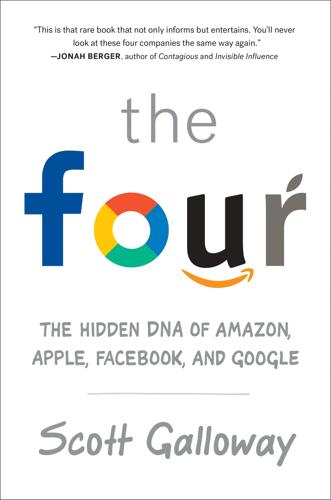
The Four: How Amazon, Apple, Facebook, and Google Divided and Conquered the World
by
Scott Galloway
Published 2 Oct 2017
New York Times. May 20, 2001. http://www.nytimes.com/2001/05/20/business/listen-up-it-s-time-for-a-profit-a-front-row-seat-as-amazon-gets-serious.html. 45. Yahoo! Finance. https://finance.yahoo.com/. 46. Damodaran, Aswath. “Enterprise Value Multiples by Sector (US).” NYU Stern. January 2017. http://pages.stern.nyu.edu/~adamodar/New_Home_Page/datafile/vebitda.html. 47. Nelson, Brian. “Amazon Is Simply an Amazing Company.” Seeking Alpha. December 6, 2016. https://seekingalpha.com/article/4028547-amazon-simply-amazing-company. 48. “Wal-Mart Stores’ (WMT) CEO Doug McMillon on Q1 2016 Results—Earnings Call Transcript.”
…
I also served on the board of Gateway, which sold three times more computers annually than Apple, at a fifth the margin—it didn’t end well. Finally, I’ve also served on the boards of Urban Outfitters and Eddie Bauer, each trying to protect their turf from the great white shark of retail, Amazon. However, my business card, which I don’t have, reads “Professor of Marketing.” In 2002, I joined the faculty of NYU’s Stern School of Business, where I teach brand strategy and digital marketing and have taught over six thousand students. It’s a privileged role for me, as I’m the first person, on either side of my family, to graduate from high school. I’m the product of big government, specifically the University of California, which decided, despite my being a remarkably unremarkable kid, to give me something remarkable: upward mobility through a world-class education.
…
The pillars of the second year should be a study of the Four and the sectors they operate in (search, social, brand, and retail). To better understand these firms, the instincts they tap into, and their intersection between technology and stakeholder value is to gain insight into modern-day business, our world, and ourselves. At the beginning and end of every course at NYU Stern, I tell my students the goal of the course is to provide them with an edge so they too can build economic security for themselves and their families. I wrote this book for the same reason. I hope the reader gains insight and a competitive edge in an economy where it’s never been easier to be a billionaire, but it’s never been harder to be a millionaire.
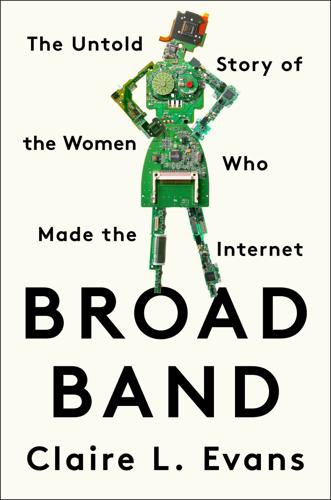
Broad Band: The Untold Story of the Women Who Made the Internet
by
Claire L. Evans
Published 6 Mar 2018
She turned in her thesis film, an effects-laden skate video, and bought a plane ticket to New York City, having decided that NYU’s Interactive Telecommunications Program (ITP) was for her. Some of her favorite filmmakers—Jim Jarmusch, Spike Lee—had graduated from NYU, and it seemed like an interesting time to be in New York. There was video art being screened at The Kitchen, and this interesting band, Sonic Youth, was playing gigs in the city. In typical style, she marched into the Tisch Building at NYU without an appointment. The move was part bombast, part desperation: she didn’t think she could have gotten an interview if she tried.
…
It earned her the respect of her superiors and the unbridled resentment of her colleagues. In the winter of 1941, Grace and Vincent were in New York City. Vincent had found a job teaching general literature at New York University’s School of Commerce, and Grace had arranged a yearlong faculty fellowship from Vassar to study at NYU herself, under Richard Courant, one of the few major figures in applied mathematics. It was a nice vacation from the breakneck weekly commute they’d been driving along the Hudson, between Poughkeepsie and the city, in a Model A Ford she called Dr. Johnson. Grace liked Courant, who specialized in differential equations with finite differences, something she’d learned “one jump ahead of the students” to teach her calculus course at Vassar.
…
She was named battalion commander and graduated first in her class, in itchy lisle stockings. Although Grace was certain the navy would have sent her to sea had she been a man, the newly minted Lieutenant Hopper would never spend a day on board a navy ship. Instead, something in her employment history rang a bell—of all things, her study of finite differences at NYU, under Richard Courant. The navy changed Grace’s orders overnight. In training, she’d assumed her military career would be spent cracking enemy codes with the elite group of mathematicians and logicians at the Communications Annex, the navy’s cryptographic brain trust, overseen by one of Grace’s former Yale professors.
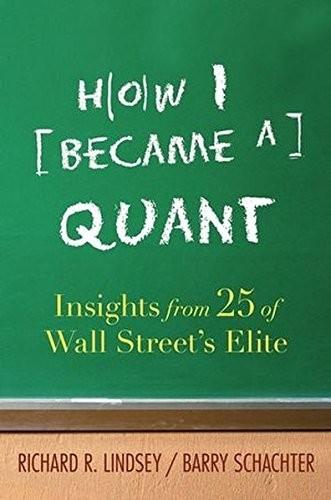
How I Became a Quant: Insights From 25 of Wall Street's Elite
by
Richard R. Lindsey
and
Barry Schachter
Published 30 Jun 2007
I also worked closely with the financial economics group at AT&T’s research arm, Bell Laboratories—in particular, with Vijay Bawa of stochastic dominance fame and Stephen Brown, now at NYU’s Stern School. Stephen and I subsequently coedited a book titled Quantitative Methods for Financial Analysis, for the CFA program. While at AT&T, I enrolled in the Ph.D. program at NYU’s business school and began to hone my quantitative skills. After a couple of years I transferred to the graduate school of arts and science at NYU to pursue a Ph.D. in economics. I soon realized that I could not continue with my career, especially given my travel commitments, and at the same time devote the requisite attention to my classes.
…
JWPR007-Lindsey 132 May 7, 2007 16:55 h ow i b e cam e a quant The Courant program grew out of two mathematical finance courses that were taught in the early 1990s by Marco Avelleneda at Courant, and the idea was to build a program around these courses. The push to do it came from Courant’s then-director David McLoughlin—now NYU’s provost—who I think, like Zimmer, saw the wisdom in supplying training in core subjects in the mathematics of finance. My job would be to help form the curriculum, administer the program and recruit adjunct faculty to teach practitioner courses. I was flattered to be offered the opportunity and to work with Courant’s faculty, including Robert Kohn and Jonathan Goodman, who were instrumental in getting the program off the ground.
…
I will use my final words to say that I am a huge believer in quantitative management past, present, and future, again acknowledge a fair amount of luck in my own path, and, finally thank the partners, professors, clients, and family who made up a fair amount of that “luck”! JWPR007-Lindsey May 7, 2007 17:6 Chapter 15 Stephen Kealhofer Managing Partner, Diversified Credit Investments W hen our daughter turned three years old, my wife decided that she wanted to return to school to study law. Her choices came down to NYU or Berkeley. At the time, my academic career in the finance group at Columbia wasn’t going anywhere. After a depressing tour of apartments and preschools on the Upper West Side, it was easy to choose Berkeley. In July 1985, we loaded up our little green Mazda with our possessions and drove across the country.

The New Urban Crisis: How Our Cities Are Increasing Inequality, Deepening Segregation, and Failing the Middle Class?and What We Can Do About It
by
Richard Florida
Published 9 May 2016
Richard Florida and Karen King, Rise of the Global Startup City: The Geography of Venture Capital Investment in Cities and Metro Areas Across the Globe (Toronto: Martin Prosperity Institute, Rotman School of Management, University of Toronto, 2016), http://martinprosperity.org/content/rise-of-the-global-startup-city. 18. Alessandro Piol and Maria Teresa Cometto, Tech and the City: The Making of New York’s Startup Community (San Francisco: Mirandola Press, 2013). 19. “Stern’s Urbanization Project Hosts a Conversation with Richard Florida and Fred Wilson,” NYU Stern School of Business, October 9, 2013, www.stern.nyu.edu/experience-stern/news-events/conversation-florida-wilson. 20. Paul Graham, “How to Be Silicon Valley,” PaulGraham.com, May 2006, www.paulgraham.com/siliconvalley.html. 21. Rory Carroll, “Oakland: The City That Told Google to Get Lost,” The Guardian, February 11, 2014, www.theguardian.com/technology/2014/feb/10/city-google-go-away-oakland-california; Ellen Huet, “Protesters Block, Vomit on Yahoo Bus in Oakland,” SFGate, April 2, 2014, http://blog.sfgate.com/techchron/2014/04/02/protesters-block-vomit-on-yahoo-bus-in-oakland; Rebecca Solnit, “Diary: Google Invades,” London Review of Books, February 7, 2013, 34–35, www.lrb.co.uk/v35/n03/rebecca-solnit/diary.
…
Journalists—or artists, for that matter—tend to see gentrification as it is playing out in their own neighborhoods, and this bias can cause them—and us—to miss important parts of the picture. Gentrification is also limited to particular areas of even the most economically successful cities. Gentrifying neighborhoods made up slightly more than a quarter of New York City neighborhoods, according to a 2016 study by NYU’s Furman Center.23 The study traced the transformation of fifty-five of the city’s neighborhoods between 1990 and 2014. Just fifteen neighborhoods, or 27 percent, qualified as gentrifying (meaning they started off in 1990 with incomes below 40 percent of the median, and experienced rent increases greater than the median neighborhood did).
…
Rents increased by more than 50 percent in Central Harlem, the Lower East Side, and Chinatown; more than 40 percent in East Harlem and Bushwick; and more than 36 percent in Bedford Stuyvesant, Morningside Heights, and Hamilton Heights. Conversely, rents increased by just over 18 percent in South Crown Heights and more than 20 percent in Brownsville and Ocean Hill. Figure 4.2: Gentrifying and Non-Gentrifying Neighborhoods in New York Source: NYU Furman Center, State of New York City’s Housing and Neighborhoods in 2015, May 2016. An even more varied pattern of housing values can be seen in Brooklyn, a place whose name has become synonymous with gentrification, as captured in the telling term Brooklynization. Despite the popular perception that Brooklyn has been turned into a playground for hipsters and a breeding ground for young white families, many of the borough’s neighborhoods remain poor, with large numbers of minority residents, and some have seen their housing values decline.
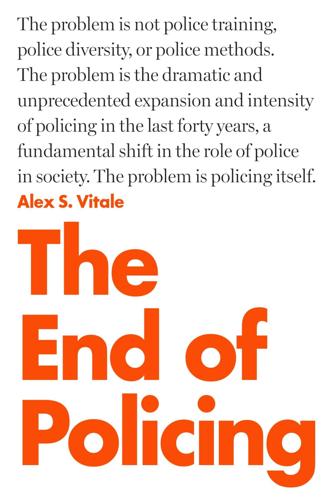
The End of Policing
by
Alex S. Vitale
Published 9 Oct 2017
Women of the Street: How the Criminal Justice-Social Services Alliance Fails Women in Prostitution. New York: NYU Press, 2017. Domanick, Joe. Blue: The LAPD and the Battle to Redeem American Policing. New York: Simon and Schuster, 2015. Friedman, Barry. Unwarranted: Policing Without Permission. New York: Farrar, Straus and Giroux, 2017. Fuentes, Annette. Lockdown High: When the Schoolhouse Becomes and Jailhouse. Brooklyn: Verso, 2013. Garriott, William Campbell. Policing Methamphetamine: Narcopolitics in Rural America. New York: NYU Press, 2011. Hari, Johann. Chasing the Scream: The First and Last Days of the War on Drugs.
…
Chicago: University of Chicago Press, 2012. Rios, Victor. Punished: Policing the Lives of Black and Latino Boys. New York: NYU Press, 2011. Ruderman, Wendy and Barbara Laker. Busted: A Tale of Corruption and Betrayal in the City of Brotherly Love. New York: HarperCollins, 2014. Stuart, Forrest. Down and Out and Under Arrest: Policing and Everyday Life in Skid Row. Chicago: University of Chicago Press, 2016. Tiger, Rebecca. Judging Addicts: Drug Courts and Coercion in the Justice System. New York: NYU Press, 2012. Way, Lori Beth and Ryan Patten. Hunting for Dirtbags: Why Cops Over-Police the Poor and Racial Minorities.
…
Just as many hospitals, universities, and corporations have outside directors drawn from the communities they serve, the police should be bringing people in, not shutting them out. This is being done in places like Seattle and Oakland, which have created civilian police commissions with encouraging results. Ideally, these people should be chosen by communities, rather than the police or even political leaders. This is a basic requirement of democratic policing. As NYU law professor Barry Friedman notes, our failure to adequately oversee the actions of police puts our society at peril, especially as new technologies give police the ability to see into ever more aspects of our private lives.52 We can’t rely on a few well-intentioned individuals to rein in excessive police power.
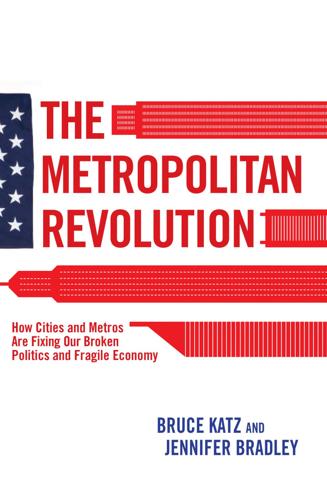
The Metropolitan Revolution: How Cities and Metros Are Fixing Our Broken Politics and Fragile Economy
by
Bruce Katz
and
Jennifer Bradley
Published 10 Jun 2013
The campus will be known as the Center for Urban Science and Progress (CUSP). “We are about applying the technologies of big data to urban problems and urban systems,” said Steven Koonin, CUSP’s founding director. The center’s 02-2151-2 ch2.indd 27 5/20/13 6:48 PM 28 NYC: INNOVATION AND THE NEXT ECONOMY partners include NYU, NYU-Poly, Carnegie Mellon, the City University of New York, the Indian Institute of Technology, the University of Toronto, and the University of Warwick. The city will provide $15 million in either new funds or abatements of funds due related to the site.35 Both city and university officials hope that the redevelopment of the transit authority building will create investment and growth at the heart of the emerging “Brooklyn tech triangle,” an area bound by downtown Brooklyn, the Dumbo neighborhood along the waterfront, and the Brooklyn Navy Yard, which has become a hub for niche manufacturers, tech companies, set designers, and media production.
…
The center will also work with private industry partners, including IBM, Cisco, ConEdison, National Grid, Siemens, Xerox, AECOM, Arup, IDEO, Lutron, and Microsoft, and government labs, including the Livermore, Los Alamos, and Sandia National Laboratories. 02-2151-2 ch2.indd 28 5/20/13 6:48 PM NYC: INNOVATION AND THE NEXT ECONOMY 29 NEW YORK CITY’S APPLIED SCIENCES CAMPUSES 02-2151-2 ch2.indd 29 5/20/13 6:48 PM 30 NYC: INNOVATION AND THE NEXT ECONOMY In July 2012 Columbia University’s new Institute for Data Sciences and Engineering, located at its Morningside Heights and Washington Heights campuses in New York City, became the third Applied Sciences campus.37 At Columbia, students and faculty will focus on applications for new media, smart cities, health analytics, cybersecurity, and financial analytics, among other areas. Columbia’s deal, like NYU’s, includes $15 million in various forms from the city. In a rapidly urbanizing world, with more than 6 billion people expected to populate cities and metropolitan areas over the next several years, smart and sustainable municipal services, or what NYU is calling “urban science,” will be in high demand. Thus it’s no surprise to find that a “smart cities” or “built environment” thread runs through all the institutions selected for the Applied Sciences initiative.
…
See also Collaborative approach; Trading cities New Economy Initiative for Southeast Michigan, 139 New Federalism, 177 The New Geography of Jobs (Moretti), 36, 102 New York City Economic Development Corporation (NYCEDC): and Applied Sciences initiative, 23–24, 25, 27, 28, 31, 36, 37–39; and game-changers initiative, 19, 23, 35, 36, 38; objectives of, 18–19; sustainability of, 201 New York City metropolitan area, 17–40; Applied Sciences initiative, ix, 23–31, 36–39; demographic composition of, 24; economic development 12-2151-2 index.indd 256 strategies for, 18–19, 20; financial services sector in, 17–18; game changers for, 198; innovation clusters in, 4, 22; and Lehman Brothers collapse (2008), 17–18; network building in, 195; research and development in, 20–21, 36; technology clusters in, 21, 23, 36–37; trade links with, 165; vision established for, 196 New York Times on pharmaceutical companies, 123 New York University (NYU), 28, 30, 36–37 Next economy: and exports, 32–33; and globalization, 24–25; imperatives of, 3, 19–20; and metropolitan areas, 32–35 Nijman, Jan, 163 Nixon, Richard, 177 Noise pollution, 29 Nokia, 122 Noon, Cathy, 60, 61 NorTech, 73, 74–75, 76 North Carolina State University in Raleigh. See Research Triangle Park Nutter, Michael, 169 NYCEDC. See New York City Economic Development Corporation NY Tech Meetup, 36 NYU. See New York University Obama administration on export expansion, 151, 157 Ohio. See Cleveland (Ohio) metropolitan area Orr, Kevyn, 132 Parilla, Joseph, 147, 152 Parking, smart systems for, 29, 34 Partnership for New York City, 21 Partnership for Regional Innovation Services in Manufacturing (PRISM), 83 Pasadena (Texas): demographic changes in, 91, 98; Neighborhood Centers programs in, 91–92, 98, 99–100.
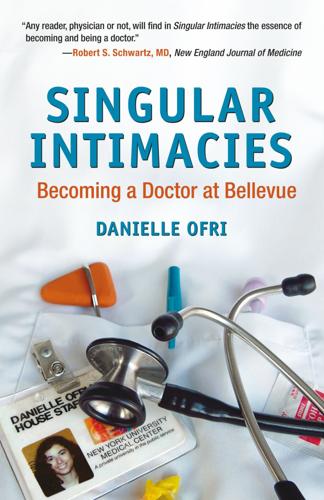
Singular Intimacies: Becoming a Doctor at Bellevue
by
Danielle Ofri
Published 31 Mar 2003
The waiting area by the elevators was deserted at this time of night. The security guard slurped her coffee and barely glanced up from her magazine to check my ID. My brand new ID. The one that now said “MD” after my name. She didn’t even notice. I shuffled in place. My new white coat was clean and pressed, and the insignia said “NYU Medical Center,” instead of “NYU School of Medicine.” Subtle distinction, perhaps, to the world beyond First Avenue and Twenty-seventh Street, but portentous inside these hallways. Being part of the medical center instead of the medical school meant that I had finally expanded beyond the self-indulgent chrysalis of studenthood, in which the overriding purpose of illness, trauma, and patients had been the absorption of knowledge.
…
I found myself at the obituaries and there it was: “Sitkin, Joseph, beloved husband of Julie, devoted father of Andrea and Ellen, dead at the age of thirty-nine. According to his wishes, the family has donated his body to the Microbiology Department at NYU Medical Center.” It was suddenly so real, so final. I began to sniffle and swallow. And then the tears began to creep out. Someone offered me a seat and suddenly I began to cry unabashedly. The commuters looked on in helpless confusion. A woman asked me if I was feeling okay. I pointed to the obituary and said, “I knew him. That doctor from NYU who’s been missing, I knew him. He was one of my teachers.” And I bawled openly amid the embarrassed silence of the subway car.
…
I couldn’t tell if Li-Chan disliked me or was just too busy to notice my presence. “A spring intern,” Linda smiled when I expressed my difficulty keeping up with Li-Chan. “There’s nothing like a solid spring intern.” I hung my head, my seasons woefully out of sync. I wasn’t a spring medical student at all. March was nearly ending and the cherry trees in front of NYU were just starting to bud, but I still didn’t know how to get stat X-rays done or where to find the cardiology fellows when they wouldn’t answer their pages. I was really a July greenhorn student. I had only just learned how to draw blood on Mr. Wiszhinsky. And it still took me two or three sticks.
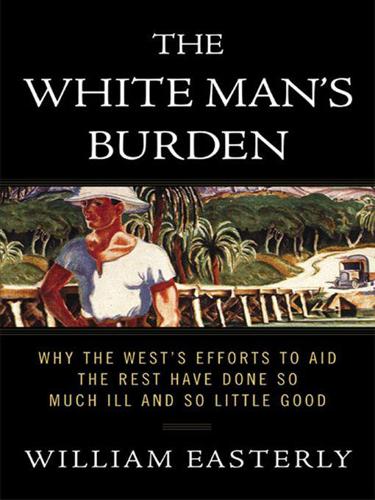
The White Man's Burden: Why the West's Efforts to Aid the Rest Have Done So Much Ill and So Little Good
by
William Easterly
Published 1 Mar 2006
After a stint at Brown University, he joined the Department of Economics at NYU, where today he is my colleague. He is also the vice provost for global affairs at NYU, where he has helped develop an NYU study-abroad site and research site in Accra. It is based at Ashesi University, the dynamic private university started by Patrick Awuah, and the University of Ghana at Legon. Yaw has donated his own time to teach economics to the eager undergraduates at Ashesi. He has even more ambitious plans: starting an interdisciplinary research center at NYU called Africa House. Roland Akosah is skeptical about what foreign aid has done for Ghana.
…
Meanwhile, I immigrated to Canada in 1988 and then later to the United States, in 1992. I enrolled in graduate programs at Laval University and UBC in Canada, and Northwestern University in the United States. I graduated in 1995 and became an assistant professor at Yale University in 1995 and an associate professor at NYU in 2001. Today, Leonard Wantchekon, now an NYU professor of politics with a global reputation, runs a research institute in Benin devoted to testing what works in development programs for Benin, training the next generation and devising ways to hold the new democratic government of Benin accountable for delivering services to its citizens.
…
However, if population density is low and land abundant, the tragedy of the commons does not arise, and community ownership works fine. Even when pressure on the land tightens up, informal community arrangements can still control overgrazing (say the village elders decide that you and I may let our cows into the pasture on alternating days). NYU professor Leonard Wantchekon offered this account of how his village in Benin managed a common property resource, the fishing pond (overfishing is a classic example used for the tragedy of the commons), when he was growing up: To open the fishing season, elders performed ritual tests at Amlé, a lake fifteen kilometers from the village.
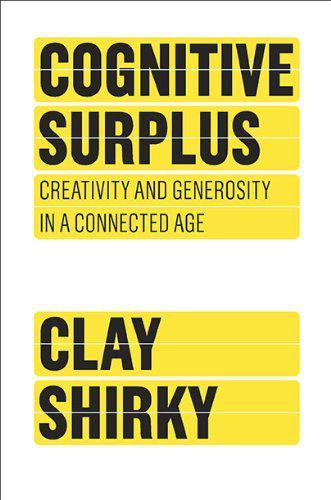
Cognitive Surplus: Creativity and Generosity in a Connected Age
by
Clay Shirky
Published 9 Jun 2010
The public wanted to be consulted on significant matters, and if that didn’t happen through ordinary channels, places like the DBSK bulletin boards would provide all the coordination they needed. In Seoul ordinary citizens used a communication medium that neither respects nor enforces silence among The People Formerly Known as the Audience, as my NYU colleague Jay Rosen likes to call us. We are used to the media’s telling us things: the people on TV tell us that the South Korean government has banned U.S. beef because of fears of mad cow disease, or that it’s lifted the ban. During the protests in South Korea, though, media stopped being just a source of information and became a locus of coordination as well.
…
The fifteenth-century model of media production didn’t allow for that kind of sharing, because its inherent cost and risk meant professionals were required at every step. Now they’re not. THE SHOCK OF INCLUSION I teach in the Interactive Telecommunications Program, an interdisciplinary graduate program at NYU. In the decade I’ve been there, the average age of my students has stayed roughly the same, while my average age has grown at the alarming rate of one year per year; my students are now fifteen or twenty years younger than I am. Because I try to convey an understanding of the changing media landscape, I now have to teach the times of my own youth as ancient history.
…
Creating something personal, even of moderate quality, has a different kind of appeal than consuming something made by others, even something of high quality. I was wrong about Geocities because I bet that amateurs would never want to do anything other than consume. (That was the last time I ever made that mistake.) MEMBERSHIP AND GENEROSITY Yochai Benkler, a legal scholar at Harvard, and Helen Nissenbaum, a philosopher at NYU, wrote a paper in 2006 with a mouthful of a title: “Commons-Based Peer Production and Virtue.” Commons-based peer production is Benkler’s term for systems that rely on voluntary contributions to operate—systems that rely on cognitive surplus. In their piece, they describe the positive characteristics that such participation both relies on and encourages.

Doctored: The Disillusionment of an American Physician
by
Sandeep Jauhar
Published 18 Aug 2014
Rajiv had the kind of gregarious and easygoing personality that I had always desired but somehow never could develop. The only time we had worked together professionally was during my internship at New York Hospital in Manhattan, where as a star senior cardiology fellow he unwittingly reminded me of my incompetence again and again. Toward the end of my own cardiology fellowship at NYU, he had invited me to apply to LIJ and had used his considerable influence to get me a job. Now he was in a position to guide me through another, perhaps more challenging apprenticeship. At Long Island Jewish I would work as a cardiologist with a specialization in congestive heart failure. This was no small task: heart failure is the common final pathway for a host of cardiac diseases, including heart attacks, acute valve disorders, viral infections of the cardiac muscle, etc.
…
The little boy in the elevator, the homeless guy on Seventy-seventh Street, and Clement, the Rastafarian, had all gotten it right. But not the chief of maternal-fetal medicine at the world-famous Cleveland Clinic with the aid of ultrasound! We became addicted to monitoring our baby. Just for kicks, we’d sneak into the echo lab at NYU, where Sonia would lie on an exam table and I, a senior cardiology fellow, would gently press the cardiac ultrasound probe to her belly. Her eyes would twinkle, and I would smile, too, quietly overjoyed at the melding of my personal and professional lives. We spent hours watching a video I made of our baby throwing up his arms, startled.
…
If postmodernism teaches that there are many truths, or perhaps no truth, postmodern medicine teaches the opposite: that an objective truth is sure to explain a patient’s symptoms if only we look for it with the right tools. Under a flashing art deco coffee cup, I told Tom a story that an old-timer cardiologist at NYU had once told me. A group of residents had presented to him a case of atrial fibrillation, an abnormal heart rhythm, replete with results of echocardiograms, angiograms, and stress tests. He went to see the patient and immediately noticed that the whites of her eyes had black discoloration, a sign of a potentially serious metabolic derangement.
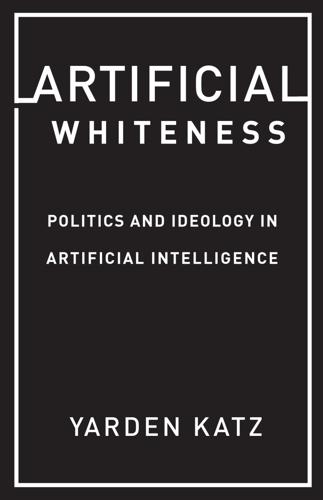
Artificial Whiteness
by
Yarden Katz
A variety of initiatives that imbibe this model have emerged at elite universities, including Harvard, MIT, Stanford, New York University, and Carnegie Mellon.39 These centers publish prolifically on AI’s consequences for numerous social and political arenas.40 A prominent institute in this space is AI Now, founded in 2017 at NYU and backed by Microsoft, which describes its focus as “social and cultural issues arising from data-centric technological development.” At first glance AI Now seems to offer a different discourse on AI compared with that of computing practitioners and entrepreneurs. The institute’s leaders speak of racism and sexism and even labor issues; not typical emphases within Silicon Valley’s corporate sphere.
…
But while AI Now presents itself as an “independent” counter to major platform companies, it is nourished by those very corporations. Several of the institute’s core members are either current or former employees of Google or Microsoft, and Google employees serve on the advisory board.41 Other institutes in this space have similar corporate ties.42 AI Now was founded by former members of the Data & Society Center (also at NYU and backed by Microsoft), which had focused on social issues concerning “big data.” In AI Now’s founding event, academic social scientists appeared alongside representatives of Google, Facebook, and Intel, as well as White House representatives. In such ceremonies, each sector plays a part: academics make the endeavor look critical; major corporations give it money, power, technical bona fides; and the state lends an air of policy cachet.
…
How Artificial Intelligence Is Reprogramming Fashion,” Guardian, September 15, 2018. 5. Max Tegmark, Life 3.0: Being Human in the Age of Artificial Intelligence (New York: Knopf, 2017); New York University, “New Artificial Intelligence Research Institute Launches,” November 20, 2017, https://engineering.nyu.edu/news/new-artificial-intelligence-research-institute-launches; Ahmed Alkhateeb, “Can Scientific Discovery Be Automated?,” Atlantic, April 25, 2017; Arun Vishwanath, “When a Robot Writes Your News, What Happens to Democracy?,” CNN, February 27, 2018. 6. Ian Sample, “AI Will Create ‘Useless Class’ of Human, Predicts Bestselling Historian,” Guardian, May 20, 2016; Vikram Barhat, “China Is Determined to Steal A.I.
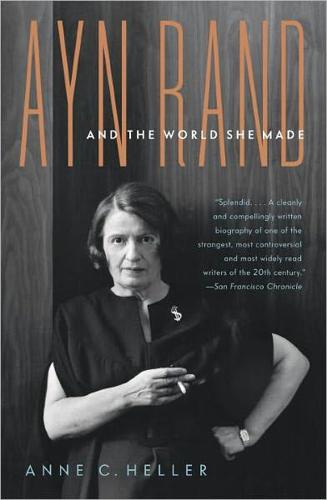
Ayn Rand and the World She Made
by
Anne C. Heller
Published 27 Oct 2009
Blumenthal’s future wife), NYU graduate art student Joan Mitchell. Joan, in turn, brought along a friend, Mary Ann Sures, and the future chairman of the Federal Reserve Board, Alan Greenspan. (In 1953, Joan and Greenspan were briefly married. They remained on excellent terms after dissolving their marriage in 1954. Joan married Allan Blumenthal in 1957.) Barbara also enlisted her bright, bespectacled seventeen-year-old first cousin Leonard Peikoff, young for his age, who shortly after meeting Rand dropped out of a Canadian pre-med program and, to his parents’ horror, enrolled at NYU to study philosophy.
…
In 1987, when he was fifty-four years old and living in California, his second wife, Cynthia Pastor, wrote a poignant letter to Sidney Hook, her husband’s former academic adviser at NYU, pleading for help in finding her husband a post in which to exercise “his talent and passion for teaching.” Peikoff had applied to three hundred colleges and universities, she wrote. He had been granted three interviews and had been “explicitly rejected because of his views.” Hook replied, not unkindly, that before recommending his former student for another teaching job, he would have to be satisfied that Peikoff would not inject, where inappropriate, Randian dogma into classroom instruction. “I made that a condition before giving him a couple of classes to teach at NYU many years ago,” Hook wrote.
…
As the years went by, this particular confidence would not always serve her well. Then, suddenly, Barbara and Nathaniel were leaving. The philosophy major earned her bachelor’s degree in the spring of 1951 and enrolled in the master’s degree program at New York University. Nathaniel, about to be a college junior, decided to go with her and study psychology at NYU. In later years, he could hardly reconstruct his reasoning, so astonished was he at his readiness to leave the most significant relationship of his life. But with Rand’s encouragement, Barbara and he had become lovers again and were committed to making it work. In late June, the two stood in the O’Connors’ driveway and told their older friends good-bye.
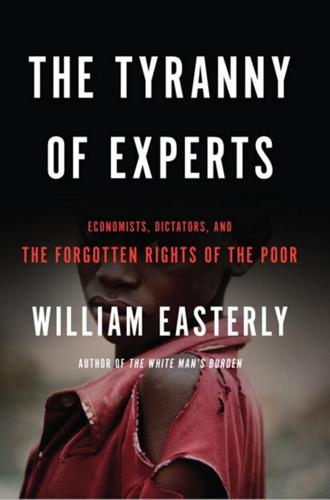
The Tyranny of Experts: Economists, Dictators, and the Forgotten Rights of the Poor
by
William Easterly
Published 4 Mar 2014
Laura Freschi, the Managing Director of DRI, contributed to this book (sometimes also in symbiosis with the Templeton proposal and research) in many intangible and tangible ways, including supervising the student workers, doing her own research and fact-checking, co-authoring the work on the history of Greene Street, and heroic problem-solving whenever there was a crisis close to a deadline. The support of NYU for the Development Research Institute (DRI) was also critically important to being able to do this book. I want to thank in particular the co-director of DRI, Yaw Nyarko, the Provost of NYU, David McLaughlin, the Economics Department Chairman Alessandro Lizzeri, my Economics faculty colleagues Hunt Allcott, Jess Benhabib, Raquel Fernandez, and Boyan Jovanovic, Professor Kevin Davis from the NYU Law School and Bruce Bueno de Mesquita, Adam Przeworski, and Shanker Satyanath from NYU Politics. Steven Pennings played a crucial and remarkably helpful role as my Research Assistant on my own work, as co-author on the Greene Street history, and as co-author of work on “benevolent autocrats” and economic growth.
…
I could not keep my job at NYU, a few blocks away in what is now a foreign country, unless the US government authorized the immigration and employment of a foreign national. To judge by the experiences of my foreign friends with the Immigration and Naturalization Service, my paperwork would get lost several times, the rules would be incomprehensible, and I would strain to find the right kind of visa that permits my work. I don’t know that I would even qualify for the category that the INS calls “alien of extraordinary ability.” Some anti-immigrant forces would criticize NYU for outsourcing to a foreign nation.
…
“Half-free” meant that the slaves themselves were now free, but their children would return to slavery.1 The Dutch gave a half-free slave named Gratia d’Angola a 10-acre farm in the 1640s, centered around what is today one block of Greene Street between Prince Street and Houston Street, in the SoHo neighborhood of Manhattan.2 My NYU colleagues Laura Freschi, Steven Pennings, and I have researched the history of this Greene Street block between Houston and Prince from the 1600s up to the present using archival records and maps.3 Aiming to consider a view of development based on individual rights, we wanted to examine the story of the individuals who would come and go on this block during the 400 years of American economic development.

Smart Cities: Big Data, Civic Hackers, and the Quest for a New Utopia
by
Anthony M. Townsend
Published 29 Sep 2013
Citizens could shape the technology, and the business and regulatory context into which it would be applied, to meet their own needs. Cable was only a shadow of the media and communications revolution in store for the 1980s. Sensing what was coming, in 1975 Burns and others at NYU began planning a graduate program that would carry on the work of the Alternate Media Center, training the next generation of media and technology activists. With seed funding from the Markle Foundation, the Interactive Telecommunications Program (ITP) opened its doors at NYU in 1979 with teleconferencing expert Martin Elton at the helm. Urban scholar Mitchell Moss (my own mentor during my master’s degree studies in urban planning) stepped in from 1981–1983 and rapidly expanded the program before Burns returned in 1983 to lead it for nearly twenty years.10 ITP’s ambition was to challenge top-down thinking about technology.
…
., retrieved from Internet Archive, http://web.archive.org/web/20120103181806/http://www.ncta.com/About/About/ HistoryofCableTelevision.aspx?source=Resources. 5“History of Cable Television.” 6Jason Huff, “Technology is Not Enough: The Story of NYU’s Interactive Telecommunications Program,” Rhizome, December 15, 2011, http://rhizome.org/editorial/2011/dec/15/technology-not-enough-story-nyus-interactive-telec/. 7Red Burns, original manuscript, “Beyond Statistics,” Alternate Media Center, School of the Arts, New York University, n.d., 7. Also published in Martin C. J. Elton et. al., eds., Evaluating New Telecommunications Services (New York: Plenum Publishing, 1978). 8Burns, “Cultural Identity and Integration in the New Media World,” 6–7. 9Red Burns, interview by author, New York, October 24, 2011. 10Martin Elton, martin.elton@nyu.edu, “Through the Looking Glass: The Rhizome article on ITP,” private e-mail reposted by Gilad Rosner, itp-alumni@lists.nyu.edu, December 21, 2011. 11Red Burns, “Technology is not enough,” paper presented at the American Council on Education, Washington, DC, October 16, 1981. 12Burns, interview, October 24, 2011. 13William Gibson, “Rocket Radio,” Rolling Stone, June 15, 1989. 14Burns, “Cultural Identity and Integration in the New Media World,” 7. 15Dennis Crowley, interview by author, May 13, 2011. 16Dodgeball.com, November 9, 2000, http://web.archive.org/web/200011092025/http://www.dodgeball.com/city/. 17Crowley, interview, May 13, 2011. 18Crowley, interview, May 13, 2011. 19Crowley, interview, May 13, 2011. 20Five years later, when a half-decade’s worth of archived check-ins were migrated to the Foursquare database, Crowley e-mailed with the discovery that on November 17, 2003, during a test, I had tapped out a terse message, hit send, and became the first person (other the Crowley and Rainert) to check in on the third version of Dodgeball. 21Crowley, interview, May 13, 2011. 22Laura Barnett, “If It Wasn’t For Hedy Lamarr, We Wouldn’t Have Wi-Fi,” The Guardian, last modified December 4, 2011, http://www.guardian.co.uk/theguardian/shortcuts/2011/dec/04/hedy-lamarr-wifi. 23“A Brief History of Wi-Fi,” The Economist, June 10, 2004, http://www.economist.com/node/2724397. 24Alvin F.
…
., Evaluating New Telecommunications Services (New York: Plenum Publishing, 1978). 8Burns, “Cultural Identity and Integration in the New Media World,” 6–7. 9Red Burns, interview by author, New York, October 24, 2011. 10Martin Elton, martin.elton@nyu.edu, “Through the Looking Glass: The Rhizome article on ITP,” private e-mail reposted by Gilad Rosner, itp-alumni@lists.nyu.edu, December 21, 2011. 11Red Burns, “Technology is not enough,” paper presented at the American Council on Education, Washington, DC, October 16, 1981. 12Burns, interview, October 24, 2011. 13William Gibson, “Rocket Radio,” Rolling Stone, June 15, 1989. 14Burns, “Cultural Identity and Integration in the New Media World,” 7. 15Dennis Crowley, interview by author, May 13, 2011. 16Dodgeball.com, November 9, 2000, http://web.archive.org/web/200011092025/http://www.dodgeball.com/city/. 17Crowley, interview, May 13, 2011. 18Crowley, interview, May 13, 2011. 19Crowley, interview, May 13, 2011. 20Five years later, when a half-decade’s worth of archived check-ins were migrated to the Foursquare database, Crowley e-mailed with the discovery that on November 17, 2003, during a test, I had tapped out a terse message, hit send, and became the first person (other the Crowley and Rainert) to check in on the third version of Dodgeball. 21Crowley, interview, May 13, 2011. 22Laura Barnett, “If It Wasn’t For Hedy Lamarr, We Wouldn’t Have Wi-Fi,” The Guardian, last modified December 4, 2011, http://www.guardian.co.uk/theguardian/shortcuts/2011/dec/04/hedy-lamarr-wifi. 23“A Brief History of Wi-Fi,” The Economist, June 10, 2004, http://www.economist.com/node/2724397. 24Alvin F.
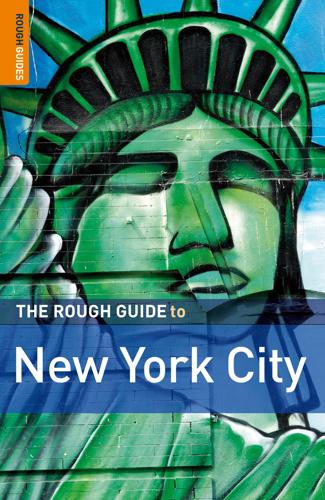
The Rough Guide to New York City
by
Martin Dunford
Published 2 Jan 2009
The fire led to legislation requiring improved safety standards, and helped spur the growth of the International Ladies’ Garment Workers’ Union. The site is now known as the Brown Building and forms part of NYU, with flowers left in front of the plaque commemorating the disaster on March 25 each year. | Washington Square Park and around 11am–6pm,Wed 11am–8pm, Sat 11am–5pm; suggested donation $3; T 212/9986780, W www.nyu.edu/greyart/).The space hosts top-notch traveling exhibitions, which rotate every three months and feature a wide range of media, including sculpture, painting, photography, and provocative video shows.
…
You can also cruise the harbor in style aboard Options for walking tours of Manhattan or the outer boroughs are many and varied. You’ll find fliers for some of them at the various visitor centers; for what’s happening in the current week, check the weekly print edition of Time Out New York, or the weekly Village Voice (Wwww.villagevoice.com). Columbia and NYU run very frequent tours of their campuses, free of charge. Not all tour operators are open year-round, with the more esoteric running only a few outings annually. Phone ahead or check websites for the full schedules. Tour companies Art Entrée T 718/391-0011, W www.artentree .com. Runs a range of art tours throughout the city, focusing on different art scenes, museums, galleries, neighborhoods, and genres like glass art and portraits.
…
The last fifteen years have seen it become downright mainstream – you’re likely to walk by a pretty standard crosssection of boutiques, thrift stores, and record shops patronized by more tourists, students, and uptowners than authentic bohemians. The area’s high standard of living and panoply of restaurants and bars, never mind its proximity to NYU, ensure that rents here are almost – although not quite – as insane as those in the neighboring West Village. Nevertheless, despite the vaudevillian circuses of St Mark’s Place and Cooper Square, and creeping invasion of Starbucks (note THE E AST V I L L AGE The East Village The East Village’s cultural heritage Over the years, the East Village has been home to its share of famous artists, politicos, and literati.
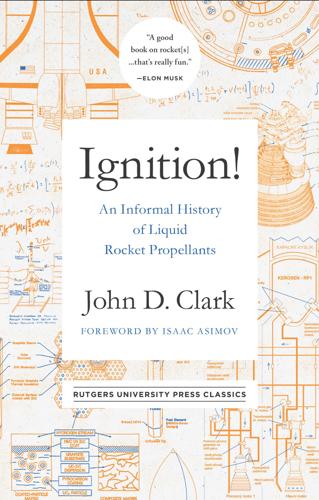
Ignition!: An Informal History of Liquid Rocket Propellants
by
John Drury Clark
Published 14 Jun 1972
, Standard Oil of Indiana, Phillips Petroleum, and the Chemical Engineering Department of New York University (NYU). And for the next two or three years there was a continuous ignition delay project going on. Each laboratory, as it came up with a new hypergolic additive, would ship samples to all the others, who would mix it with standard nonhypergolic fuels and then measure the ignition delay of the mixtures. The standard nonhypergols were generally toluene and n-heptane, although NYU, presumably to assert its academic independence, used benzene and n-hexane. (JP wasn’t much use as a reference fuel, since no two lots of it were alike.)
…
(Ethylene oxide, C2H4O, whose major decomposition products are methane and carbon monoxide, was considered for the same sort of cycle.) So the acetylenics looked good for the ram rocket. And finally, the acetylenics are rather easy to produce from petroleum feed-stock, by cracking and partial oxidation. The approaches of NYU and of Shell to the acetylenic problem were completely dissimilar. NYU tried dozens of compounds of the family, while Shell concentrated on just two, and then went hunting for additives which would make them into useful fuels. One of the two was 1,6-heptadiyne, with the skeletal structure C≡C—C—C—C—C≡C. And the other was 2-methyl-1-buten-3-yne, otherwise known as “isopropenyl acetylene” or “methyl vinyl acetylene,” whose skeleton is .
…
(JP wasn’t much use as a reference fuel, since no two lots of it were alike.) As for the fuels and/or additives that they synthesized, Shell and NYU concentrated on acetylenic compounds, and Phillips put their major effort into amines. As for Standard of Indiana, that organization went off on a wild tangent. Apparently jealous of their sister company of California and determined to do them one better, they went beyond mere sulfur compounds, and came down hard on phosphorous derivatives. They investigated assorted substituted phosphines, from the timethyl phosphine, through butyl and octyl phosphines, on to monochloro (dimethylamino) phosphine, and then they settled happily on the alkyl trithiophosphites, with the general formula (RS)3P, where R could be methyl, ethyl, or whatever.
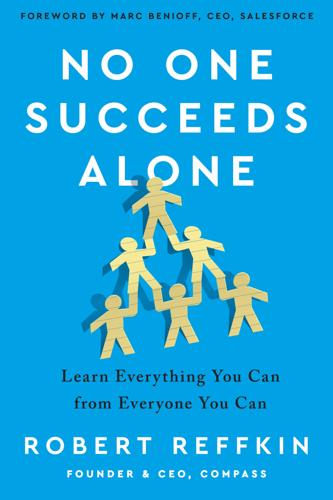
No One Succeeds Alone
by
Robert Reffkin
Published 4 May 2021
When my grandfather found out that my mom and her long-term college boyfriend had slept together, he forced her to live at home and eat her meals alone at different times than the rest of the family. He refused to speak to her for months. When my mother married Gene Reffkin, a young man she’d met at NYU who’d been playing club gigs as a drummer since he was fourteen, her father made them marry out of state so he didn’t have to invite his friends and relatives to a ceremony that he flat-out did not support. When Gene declined my grandfather’s misguided offer to set him up with an accounting job, my grandfather was so offended and outraged that the two men almost never spoke again.
…
Even though only 25 percent of the students graduated from that school, and most graduates didn’t even consider college, she was focused on getting good grades so she could get into the best college possible. Benís earned her place as one of the top students in her class while also working nights and weekends at the local country club to help ends meet at home. When she was admitted into NYU, the people she served as a waitress were amazed because all that many of them could see in her was another service worker with brown skin. But no one who’d gone to school with her was surprised at all. How my wife lost herself and then found herself again The first year of our second daughter’s life and the importance of home When we decided to have a second child, Benís told me that she thought we needed a larger apartment with another bedroom.
…
In college, she didn’t realize that her well-off classmates were doing summer internships and making connections that would likely have a much bigger impact on their professional lives than any class she took or high grade she received. She didn’t have time to socialize or do extracurriculars because by age fifteen she was working at a country club, a job she kept until she graduated from NYU seven years later. Across the country in Berkeley, California, I had a mother who had immigrated to America from Israel as a child and therefore had been lucky enough to learn English at a young age, get a college education, and develop a clear understanding of how the game was played. As a single mother without a family to lean on, my mom had to declare bankruptcy at one point in my youth.

Wordslut: A Feminist Guide to Taking Back the English Language
by
Amanda Montell
Published 27 May 2019
Then I got to college and signed up for Linguistics 101, and you can imagine my delight when suddenly there was a whole room of people just like me, all desperately curious to know why we talk the way we do. Out of everything I studied, I was most bewitched by a course called Sex, Gender, and Language. It had actually never occurred to me before spotting the class on NYU’s registration system in 2011 that gender had anything to do with how we speak. Sure, when I was in preschool I was irrevocably labeled “bossy” after expressing that I should be the director of the class play instead of little Danny Altman. (I ended up winning, and the play was a smash—though it earned me the nickname “Demand-a Montell,” which I put up with until middle school.)
…
Here is a story of one of those experiences—a time when just a little dash of linguistics expertise helped me convince someone from a very different background from mine, someone with their own steadfast beliefs about how women should talk, to consider a new idea. I was nineteen, working between classes at NYU as a babysitter for a professor’s daughter, who attended a prep school on the Upper East Side of Manhattan. The kid was in the same grade as another girl with a mother who wore tweed skirt suits, had hair the color of a daffodil, and grew up in a family that valued proper elocution and manners above all else—principles she was intent on passing down to her own daughter.
…
Because female subjects are mostly absent from medical textbooks and papers, many doctors simply don’t know how to recognize or treat heart disease in women, whose symptoms usually show up differently than men’s (like nausea and neck discomfort as opposed to chest pain). So Jespersen’s book was very much like that, but for language. Louise O. Vasvári, language professor at NYU, has less-than-favorable thoughts about his “The Woman” chapter. “He had no chapter called ‘men’ or even ‘young men’ or ‘old men’ or any kind of minority men,” she laments. “Because Language was man’s language, of course, and then you have this one chapter, saying, oh, how interesting, how strange, these women and their language.”
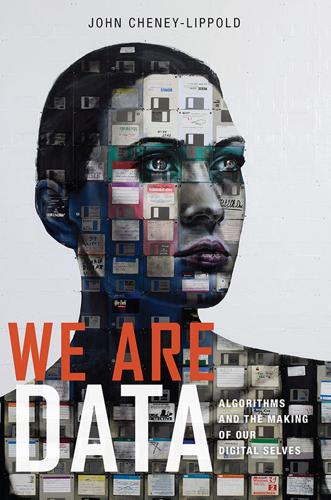
We Are Data: Algorithms and the Making of Our Digital Selves
by
John Cheney-Lippold
Published 1 May 2017
Alondra Nelson, The Social Life of DNA: Race, Reparations, and Reconciliation after the Genome (Boston: Beacon, 2016); Kim Tallbear, Native American DNA: Tribal Belonging and the False Promise of Genetic Science (Minneapolis: University of Minnesota Press, 2013); Clara E. Rodriguez, Changing Race: Latinos, the Census, and the History of Ethnicity in the United States (New York: NYU Press, 2000). 31. Mae Ngai, Impossible Subjects: Illegal Aliens and the Making of Modern America (Princeton, NJ: Princeton University Press, 2014). 32. Edlie L. Wong, Racial Reconstruction: Black Inclusion, Chinese Exclusion, and the Fictions of Citizenship (New York: NYU Press, 2015). 33. Gilles Deleuze and Félix Guattari, A Thousand Plateaus: Capitalism and Schizophrenia (Minneapolis: University of Minnesota Press, 1980). 34.
…
Quite obviously, it wasn’t me who made those searches. In reality, I wasn’t even using my web browser. I was writing the preceding paragraph. Instead, those ten phrases were scraped from the RSS feeds of the top news stories at NYTimes.com, CNN.com, MSNBC.com, and TheRegister.co.uk. The program that did it was an NYU-based research project led by Helen Nissenbaum called TrackMeNot. TrackMeNot is a browser plug-in that sits like a daemon under your browser and automatically throws random search queries at each of the aforementioned four search engines every six seconds. These capricious queries make your data gibberish but now through a different rouse.
…
And to my community at Michigan and beyond, I want to sincerely thank Carolina Aguerre, Evelyn Alsultany, Patricia Aufderheide, Finn Brunton, Amy Sara Carroll, Iván Chaar-López, Maria Cotera, Greg Dowd, Larry La Fountain-Stokes, Mary Frieman, Parisa Ghaderi, Judy Gray, Colin Gunckel, Zehra Hashmi, June Howard, Dara Leto, Peggy McCracken, Richard Meisler, Stephen Molldrem, Marlene Moore, Anthony Mora, JP Obley, Christian Sandvig, Sidonie Smith, Alexandra Minna Stern, Ted Striphas, Wendy Sung, and Tammy Zill. I also want to thank Lisha Nadkarni and NYU Press for their help, and accommodation, in producing this book. And abundant credit goes to Kim Greenwell and her laser-like ability to parse text, argument, and puerility. Lastly, to my sister Emily, my brother Matt, and especially my mother, Karen: while our family might be unique in its formation, it remains loving in its future.
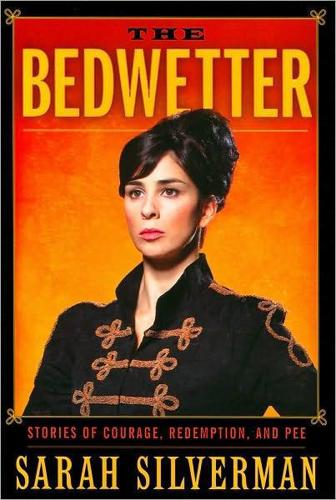
The Bedwetter: Stories of Courage, Redemption, and Pee
by
Sarah Silverman
Published 19 Apr 2010
Kevin was tall with dark brown hair and a white-and-red blotchy Irish face. He wore a long army green trench coat and carried a briefcase, which, at nineteen, I found very impressive. And he was thirty--a grown man. He stood outside the club smoking a Merit Light. I went outside and bummed one. KEVIN: So, you go to school? ME: Yeah. NYU. KEVIN: What--are you a freshman? ME: Mm-hm. KEVIN: What--are you, like, in a sorority? ME: Yeah, but you can only be in it if you're really cool. KEVIN: Yeah? Who else is in it? ME: Just me. He laughs. Let me take a moment to describe myself here: big curly perm, black polyester shirt with long shear sleeves, black miniskirt, and Doc Martens with thick black socks.
…
In New Hampshire, I'd always felt like a goat living among sheep; until I got to New York it had never occurred to me that there could be a place filled with other goats. It was the best New Year's I'd had yet. It probably still is. At seventeen I took a train from New Hampshire to New York City to go to an open call for Gypsy. In the fall of 1989 my mom came with me to New York City to help move me into my freshman dorm at NYU. We arrived in the city the night before and stayed at the Washington Square Hotel, putting the bulk of my luggage in their storage room. The next morning, we were given the storage key and went to gather my things. We opened the door, and there, lying on top of a mountain of luggage--including my trunk--was a maintenance man with his pants down around his ankles.
…
Passersby pulled him off me almost instantly--what is that Tennessee Williams line about depending on the kindness of strangers?--and though I was shaken, not ten minutes later I was back to my barking duties. I shared the corner with another flyer-hander-outer--the mascot from Pluck-U Chicken, a nearby fast-food establishment. You might scoff that puns don't whet the appetite, but that place was insanely popular with NYU students. The mascot was an Asian kid my age in a giant chicken suit. To do that job shows tremendous ambition. Not because it leads anywhere, but because it means he was faced with the questions: What is it worth to you to go to college? What are you willing to do to afford the best education possible?
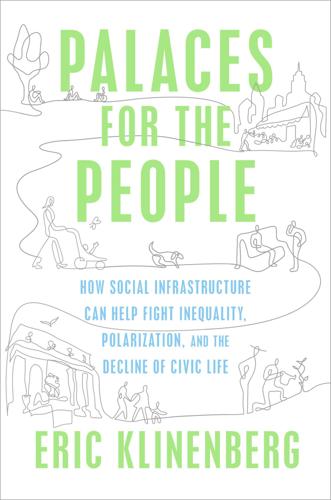
Palaces for the People: How Social Infrastructure Can Help Fight Inequality, Polarization, and the Decline of Civic Life
by
Eric Klinenberg
Published 10 Sep 2018
In some nations, dealing with global warming remains a low priority, but in Bangladesh it’s already a matter of grave national significance, part of every major policy debate. In Bangladesh, as in most of the world’s poor nations, international development agencies tend to dictate the terms of new infrastructure investments. Malcolm Araos, an NYU graduate student and one of my research assistants, did fieldwork in Dhaka to examine how adaptation projects unfold on the ground. He found, predictably, that hard infrastructure like embankments, sluice gates, and drainage systems were often placed around command centers where the nation’s elites clustered rather than in the crowded, low-income neighborhoods where residents are most at risk.
…
For years I took for granted all the things I learned in this special community center. Now I understand how much it shaped me. If the ideas for this book come from Chicago, they developed in New York City, and particularly at New York University. Since 2012, I’ve had the great privilege of directing NYU’s Institute for Public Knowledge, which is as real a community as any I’ve known in the academy, and a rare place where scholars are rewarded for engaging in civic life. I thank Craig Calhoun, IPK’s founding director, for creating such a special environment and entrusting me with its future; Katy Fleming, the provost, and Cybele Raver, the senior vice provost, for supporting it; and Jessica Coffey, Siera Dissmore, and Gordon Douglas for sustaining it.
…
Thanks to Gabriel Abend, Sasha Abramsky, Hillary Angelo, Aziz Ansari, Eric Bates, Craig Calhoun, Daniel Aldana Cohen, Andrew Deener, Shamus Khan, Andrew Lakoff, Margaret Levi, Sharon Marcus, Harvey Molotch, Eyal Press, Patrick Sharkey, Rona Talcott, Iddo Tavory, Fred Turner, and Matt Wray. I owe a special debt to my research assistants from NYU, especially Delaram Takyar, who collaborated on all aspects of this project, and Matt Wolfe, who helped with the sections on social isolation and opioid addiction. After I finished writing, Delaram, who’s now studying law and social science, and Matt, who’s a sociologist as well as a journalist, teamed up to fact-check the entire document.
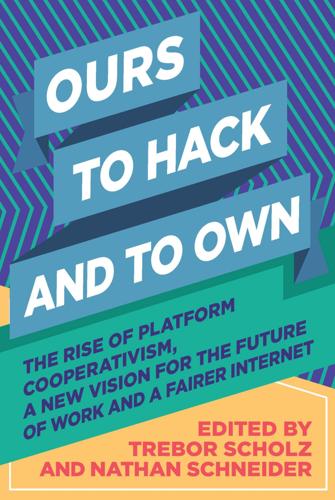
Ours to Hack and to Own: The Rise of Platform Cooperativism, a New Vision for the Future of Work and a Fairer Internet
by
Trebor Scholz
and
Nathan Schneider
Published 14 Aug 2017
Seda Gürses is a Postdoctoral Research Associate at the Center for Information Technology at Princeton University, and an FWO fellow at the Computer Security and Industrial Cryptography (COSIC) research group at the University of Leuven in Belgium. She works on privacy and requirements engineering, privacy enhancing technologies, and surveillance. Previously, she was a postdoctoral fellow at the Media, Culture and Communications Department at the NYU Steinhardt School and at the Information Law Institute at NYU Law School. She is also a member of the feminist art collective Constant VZW in Brussels. Steven Hill is a senior fellow at the New America Foundation and the Holtzbrinck fellow at the American Academy in Berlin. His latest book is Raw Deal: How the “Uber Economy” and Runaway Capitalism Are Screwing American Workers (St.
…
He is also helping build seed.coop, a platform for co-ops everywhere to grow their membership. Say hi on Twitter @daspitzberg. Arun Sundararajan is Professor and the Robert L. and Dale Atkins Rosen Faculty Fellow at New York University’s Leonard N. Stern School of Business. He is also an affiliated faculty member at NYU’s Center for Urban Science+Progress, and at NYU’s Center for Data Science. Astra Taylor is a documentary filmmaker, writer, and political organizer. She is the director of the films Zizek! and Examined Life, and the author of The People’s Platform: Taking Back Power and Culture in the Digital Age (Picador, 2015), winner of a 2015 American Book Award.
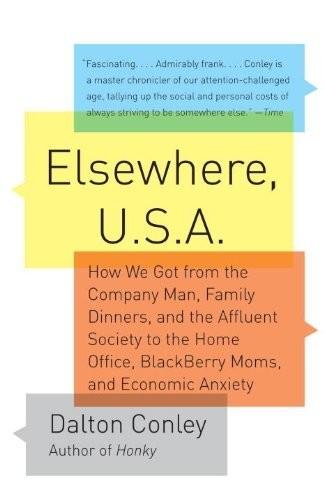
Elsewhere, U.S.A: How We Got From the Company Man, Family Dinners, and the Affluent Society to the Home Office, BlackBerry Moms,and Economic Anxiety
by
Dalton Conley
Published 27 Dec 2008
And as long as I am thanking institutions, I have to express my appreciation to New York University for providing a fertile environment for this kind of more public work and for valuing it, perhaps in a way that other universities might not. In this vein, particular thanks go out to Richard Foley, the dean of the Faculty of Arts and Sciences; to George Downs, the dean of Social Science; to David McLaughlin, NYU’s provost; and to NYU President John Sexton. For administrative support with this project I also have to thank Alana Barraj and Dom Bagnato here at NYU, and at Pantheon Books, Dan Frank’s assistant, Fran Bigman. And for always asking why and keeping me guessing, I have to thank my kids, E and Yo Jeremijenko-Conley Notes INTRODUCTION 1. Suzanne M. Bianchi, John P.
…
Nor could he have known about employee stock and pension plans that effectively gave workers a stake—albeit a much slimmer slice than major shareholders—in the profits of their company. ABOUT THE AUTHOR Dalton Conley is University Professor of the Social Sciences and Acting Dean for the Social Sciences at New York University. He also holds appointments at NYU’s Wagner School of Public Service, as an Adjunct Professor of Community Medicine at Mount Sinai School of Medicine, and as a Research Associate at the National Bureau of Economic Research. His essays have appeared in the New York Times, the Los Angeles Times, and Salon, among other publications. His previous books include Honky; Being Black, Living in the Red: Race, Wealth, and Social Policy in America; and The Pecking Order: Which Siblings Succeed and Why.
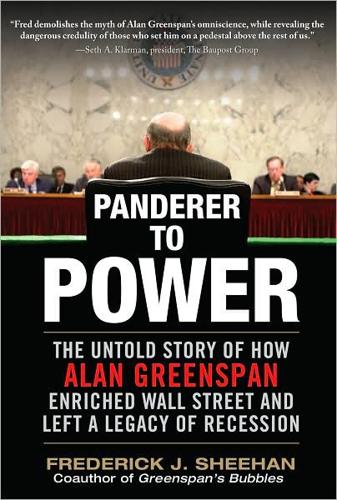
Panderer to Power
by
Frederick Sheehan
Published 21 Oct 2009
Not intimidated by the anonymity of such an assembly line of students, he played clarinet in the orchestra, sang in the glee club, was chosen as president of the Symphonic Society, and was president of the Economics Society.12 Greenspan graduated summa cum laude in 1948 with a bachelor of science degree in economics. In 1950, Greenspan earned his master’s degree in economics from NYU. Acquaintances thought Greenspan was introverted. Did he view his extracurricular activities as a way to boost his career? Whether or not that was his intention, his friendships paid dividends. Robert Kavesh was probably his best friend at NYU, and they remained close. Kavesh worked on Wall Street in the 1950s before returning to NYU to teach economics. Professor Kavesh aided Greenspan when Alan sought (and received) his doctorate in the 1970s. To stake his future in the field was a gamble.
…
He did so under the tutelage of his former classmate, Bob Kavesh, who was now a professor at NYU. Greenspan’s dissertation was peculiar. According to Jeff Madrick, writing in the New York Review of Books: “[H]e did not complete a conventional dissertation. Instead, he submitted published articles and other writings, some of them for publications such as Business Economics, which would not have met the scholarly standards for most economic 1John H. Allan, “Thrift Adrift: Why Nobody Saves,” New York Times, February 17, 1980, p. 4. 59 departments.”2 Traditionally, scholarship is available to the public; however, NYU has not released Greenspan’s work.3 The Ph.D. might or might not have aided his consulting business, but Greenspan knew it would be an asset if he were to be considered for a senior government position—such as Federal Reserve chairman.
…
., New York 1960, p. 61. 5Figures from end of years he entered and left office. “Beginning of office” is December 31, 1987, from Federal Reserve Flow of Funds Account; “end of office” is December 31, 2005. After graduating from New York University in 1948, Greenspan took a job at the Conference Board. He received a master’s degree from NYU in 1950; then studied economics under Arthur Burns at Columbia University. The two became lifelong friends. Arthur Burns served as chairman of the Council of Economic Advisers under President Dwight Eisenhower. He would become Federal Reserve chairman under President Richard Nixon. Greenspan headed President Gerald Ford’s Council of Economic Advisers (CEA) when Arthur Burns was Federal Reserve chairman.

Aerotropolis
by
John D. Kasarda
and
Greg Lindsay
Published 2 Jan 2009
Its stable of blue-chip brands includes branches of both the Sorbonne and London’s Imperial College to go along with a complete New York University campus on Saadiyat Island—the first time a major U.S. research institution has cloned its entire curriculum offshore. NYU Abu Dhabi’s students are admitted under the same standards and handed the same diplomas as their American peers. NYU’s wish is to open “the world’s first global university in the world’s first truly global city,” according to its president. And while you might think NYU already fits that description in Manhattan, it’s not true. Not anymore. Before 9/11, more than half a million students from developing nations applied for visas every year to study in the United States.
…
Human Rights Watch investigated the treatment of the UAE’s “guest workers” in “Building Towers, Cheating Workers: Exploitation of Migrant Construction Workers in the United Arab Emirates,” published in November 2006. In addition to his history of Dubai up until the crash, Christopher Davidson has written a comprehensive book about its older brother, Abu Dhabi. The Guggenheim’s Thomas Krens was interviewed by Rem Koolhaas in Al Manakh. The emirate’s plan to clone NYU was detailed in “The Emir of NYU” (New York, April 13, 2008), from which NYU president John Sexton’s quotes are taken. My road trip to the site of Dubai World Central occurred in June 2007. Kasarda’s ill-fated audience with its various executives occurred a year earlier. His subsequent meetings to plan a “Dubai Aerotropolis” took place between March 2009 and April 2010.
…
The inaugural class attracted more than five hundred early-decision applicants, accepting students from China, Ethiopia, Hungary, India, Indonesia, Jordan, Morocco, Russia, and Taiwan. “Everyone introduced themselves, in English and whatever language they wanted,” recalled the NYU vice pro-vost in charge of admissions. “From French to Russian to Arabic to Hungarian, they’d say things like ‘I traveled 30 hours to get here,’ or ‘I’ve never been on a plane before.’ It was kind of a goose-bump moment.” What NYU gains from this arrangement besides money is harder to put a finger on. University president John Sexton is frank about his desire to see a host of “glocal” offshoots worldwide, framing expansion and confrontation in the context of 9/11.

The Alignment Problem: Machine Learning and Human Values
by
Brian Christian
Published 5 Oct 2020
The models have tens of millions, not dozens, of parameters, and those parameters represent fairly ineffable things: summed thresholds of earlier layers, which are themselves summed thresholds of earlier layers, all the way back to the millions of raw pixels. This is not the raw grist from which intelligible explanations are made. So what to do? At NYU, PhD student Matthew Zeiler and his advisor, Rob Fergus, were fixated on this question. The success of these enormous, bewildering models, they argue, is undeniable. “However,” they write, “there is no clear understanding of why they perform so well, or how they might be improved. . . . From a scientific standpoint, this is deeply unsatisfactory.”63 In other words, the results are impressive, but as Zeiler puts it, “With all these nice results, it’s not clear what these models are learning.”64 People knew that the bottommost layer of a convolutional network represented basic things: vertical edges, horizontal edges, diagonal edges, a strong single color, or a simple gradient.
…
Zeiler hypothesized that they weren’t correctly sized for the types of patterns they were trying to match. As astoundingly successful as AlexNet had been, it was carrying some dead weight. It could be improved—and the visualization showed where. In the fall of 2013, within a matter of frantic months, Zeiler finished his PhD, left NYU, started his own company—Clarifai—and entered that year’s ImageNet competition. He won.66 Other groups, subsequently and in parallel, have explored further ways of directly visualizing a neural network. In 2015, Google engineers Alexander Mordvintsev, Christopher Olah, and Mike Tyka experimented with a method of starting from an image of random static, and then tweaking its pixels to maximize the probability that the network assigns it a particular label—say, “banana” or “fork.”67 This deceptively simple method has proven to be remarkably powerful.
…
In time, studies began to establish that the areas of the brain in which this electrical stimulation was most compelling were those areas involving neurons that produced a neurotransmitter called 3,4-dihydroxyphenethylamine—better known by its abbreviated nickname: dopamine.34 These cells were rare—much less than 1% of 1% of the brain—and they clustered in very specific areas.35 A single one of these dopamine cells could be wired in some cases to millions of other neurons, across a wide area of the brain.36 In fact, they were almost uniquely broadly connected, with the most highly connected cells each having nearly fifteen feet of axonal wiring within the brain.37 At the same time, however, they were fairly limited in the range and complexity of their output. As NYU neuroscientist Paul Glimcher puts it, this means that “they cannot say much to the rest of the brain, but what they say must be widely heard.”38 It sounded a lot, in other words, like a “reward scalar”—in essence, like points on the brain’s scoreboard—dead simple, but widely broadcast and all-important.

Coders: The Making of a New Tribe and the Remaking of the World
by
Clive Thompson
Published 26 Mar 2019
Whatever was going on? At first, they noticed that a large number of complaints came from students who were logging into NYU’s portal while using computers at the Kinko’s copy center around the corner. Maybe Kinko’s was somehow to blame? But then Whitney saw reports of the same login bug from computers located on-campus. It became clear that the culprit was the university’s login system itself. Unfortunately, that login code had been written years earlier by a staff programmer who no longer worked for NYU. Since Whitney couldn’t ask him to help debug his code, she sat down to scrutinize it line by line with the help of another expert programmer.
…
The problem began the moment someone connected to NYU’s network. When students logged in, the system gave them a random temporary ID number for that session. To generate the random ID number, the program would “seed” its random-number generator using the timestamp, the exact instant that the student logged in. But what if two students just coincidentally logged in at precisely the same second? They’d be issued the same quasi-random number; oops! To prevent this, the programmer added another “seed” number, the IP address of the computer that the student was using. NYU had tons of IP addresses, so the programmer figured there was no chance any two students logging in would have precisely the same timestamp and precisely the same IP address.
…
NYU had tons of IP addresses, so the programmer figured there was no chance any two students logging in would have precisely the same timestamp and precisely the same IP address. Right? Nope. Years later, NYU and Kinko’s switched over to a new technology that funneled lots of computers through just one or two IP addresses. They did this to handle the explosive growth of internet use on campus, but nobody realized it might interfere with the old login system, written so many years previously. But it did. Suddenly it became possible for two people to log in at the same time and have the same IP address. The two users would be assigned the exact same session ID, and presto: One of them would be logged into the other person’s account, able to see the other person’s email and notes.
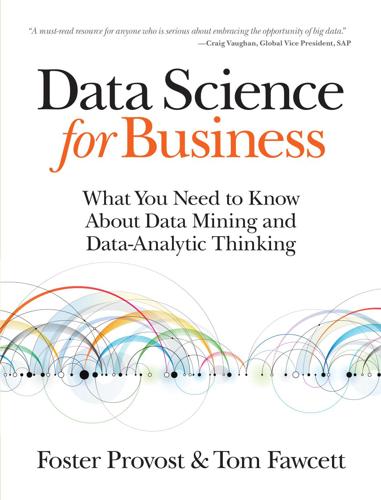
Data Science for Business: What You Need to Know About Data Mining and Data-Analytic Thinking
by
Foster Provost
and
Tom Fawcett
Published 30 Jun 2013
Historically, the book arose from the development of Foster’s multidisciplinary Data Science classes at the Stern School at NYU, starting in the fall of 2005.[1] The original class was nominally for MBA students and MSIS students, but drew students from schools across the university. The most interesting aspect of the class was not that it appealed to MBA and MSIS students, for whom it was designed. More interesting, it also was found to be very valuable by students with strong backgrounds in machine learning and other technical disciplines. Part of the reason seemed to be that the focus on fundamental principles and other issues besides algorithms was missing from their curricula. At NYU we now use the book in support of a variety of data science–related programs: the original MBA and MSIS programs, undergraduate business analytics, NYU/Stern’s new MS in Business Analytics program, and as the Introduction to Data Science for NYU’s new MS in Data Science.
…
At NYU we now use the book in support of a variety of data science–related programs: the original MBA and MSIS programs, undergraduate business analytics, NYU/Stern’s new MS in Business Analytics program, and as the Introduction to Data Science for NYU’s new MS in Data Science. In addition, (prior to publication) the book has been adopted by more than a dozen other universities for programs in seven countries (and counting), in business schools, in computer science programs, and for more general introductions to data science. Stay tuned to the books’ websites (see below) for information on how to obtain helpful instructional material, including lecture slides, sample homework questions and problems, example project instructions based on the frameworks from the book, exam questions, and more to come.
…
However, much more often the well-known big data technologies are used for data processing in support of the data mining techniques and other data science activities, as represented in Figure 1-1. Previously, we discussed Brynjolfsson’s study demonstrating the benefits of data-driven decision-making. A separate study, conducted by economist Prasanna Tambe of NYU’s Stern School, examined the extent to which big data technologies seem to help firms (Tambe, 2012). He finds that, after controlling for various possible confounding factors, using big data technologies is associated with significant additional productivity growth. Specifically, one standard deviation higher utilization of big data technologies is associated with 1%–3% higher productivity than the average firm; one standard deviation lower in terms of big data utilization is associated with 1%–3% lower productivity.
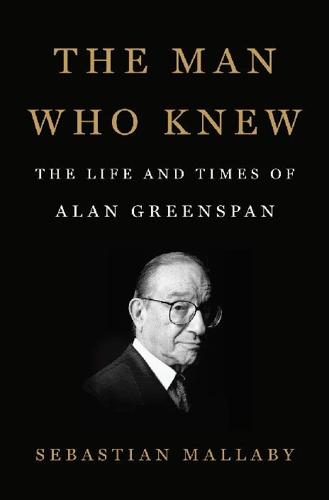
The Man Who Knew: The Life and Times of Alan Greenspan
by
Sebastian Mallaby
Published 10 Oct 2016
“No longer is modern man able to believe ‘that government governs best which governs least,’” Samuelson declared confidently in his textbook; and his writing’s profound influence on students just a few years younger than Greenspan can be gauged from the vehemence with which conservatives denounced it.12 In God and Man at Yale, published in 1951, William F. Buckley Jr. lamented that fully one third of the Yale class had been exposed to Samuelson’s writings, and that “the net influence of Yale economics” was “thoroughly collectivistic.”13 But when Greenspan began at NYU, Samuelson’s textbook was as yet unpublished. Instead, Greenspan enrolled in courses taught by Walter Spahr, the head of the NYU economics faculty, whose view of the New Deal was ferociously critical. In a typical speech to the Economic Club of Detroit in 1949, Spahr decried “the March into the Death Valley of Socialism,” exclaiming that “‘Liberalism’ means practically nothing but Socialism or Communism or being liberal with other people’s money.”
…
Over the next quarter century, researchers at the National Bureau assembled the statistics necessary to document the business cycle and formulate the national accounts from which the gross domestic product is calculated. At the onset of the Depression, the Hoover and Roosevelt administrations had confronted a collapse in output without the benefit of knowing what that output was. By the time Greenspan graduated from NYU, armies of Wesley Mitchell acolytes were tracking every facet of Americans’ productive existence. In his junior year at NYU, Greenspan got a taste of this measurement project. He took statistics classes from Geoffrey Moore, a School of Commerce professor who doubled as a researcher at the National Bureau. Moore went on to become commissioner of labor statistics under Richard Nixon, and made a lasting mark on the profession by developing leading and lagging indicators of the business cycle.
…
Statist faith was at its peak; laissez-faire ideas were in abeyance. “In 1945 no articulate, coordinated, self-consciously conservative intellectual force existed in the United States,” declared George Nash, the great historian of the conservative movement. “There were, at most, scattered voices of protest.”8 • • • Arriving on the NYU campus as a shy nineteen-year-old, Greenspan could hardly fail to sense these intellectual currents. Since quitting the Henry Jerome band, he had spent the summer shuttling between the public library and his mother’s apartment, diligently reading the textbooks he would encounter in his first year of economics.
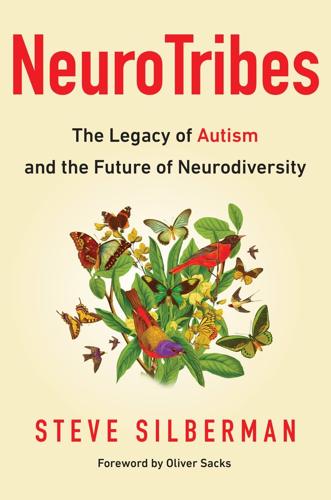
NeuroTribes: The Legacy of Autism and the Future of Neurodiversity
by
Steve Silberman
Published 24 Aug 2015
appearances by Hillary Clinton and CBS Evening News anchor Katie Couric: “NYU Child Study Center Raises $9 Million and Celebrates 10th Anniversary.” Press release, NYU Child Study Center, Dec. 5, 2007. ASAN blasted out an action alert: “An Urgent Call to Action: Tell NYU Child Study Center to Abandon Stereotypes against People with Disabilities.” Press release, ASAN, Dec. 8, 2007. “This is a ‘public awareness’ campaign”: “Rescue Me: The NYU Child Study Center’s Ransom Notes Ad Campaign,” Kristina Chew. Blisstree. Dec. 11, 2007. http://www.blisstree.com/2007/12/11/mental-health-well-being/rescue-me-the-nyu-child-study-centers-ransom-notes-ad-campaign/#ixzz3AgpNrbMn In 2014, when Obama issued an executive order: “Obama’s Wage Hike For Federal Contractors Won’t Apply to Disabled Workers,” Mike Elk.
…
The group’s chances of success seemed slim. NYU was powerful, and BBDO’s campaign represented hundreds of thousands of dollars in pro bono work. By contrast, ASAN hadn’t yet rented an office or opened a bank account. To persuade other disability advocacy groups to sign a letter of protest, Ne’eman cold-called Bob Kafka, the national director of ADAPT, one of the leading disability rights organizations in the country, with chapters in thirty states. Kafka agreed to sign the letter immediately, and thirteen other organizations quickly added their names to the list. Since Ne’eman had not yet gotten a response from NYU, an ASAN representative hand-delivered it to the receptionist at the Child Study Center, who looked haggard as phones rang in the background.
…
The ads—produced on a pro bono basis by BBDO, the PR powerhouse that inspired Mad Men—were no more histrionic or stigmatizing than the messages that fund-raising organizations like Autism Speaks had been pumping out for years, comparing autism to cancer, cystic fibrosis, and other potentially fatal diseases. (Indeed, BBDO had done similar work for Autism Speaks.) In this case, however, the ads’ sponsor was NYU’s prestigious Child Study Center, launching a new campaign to alert the public to the “silent public health epidemic” of childhood mental illness. In the words of the center’s press release, twelve million children in America were being “held hostage by a psychiatric disorder.” “It’s like with AIDS,” the center’s director, Harold Koplewicz, told the New York Times.

Artificial Unintelligence: How Computers Misunderstand the World
by
Meredith Broussard
Published 19 Apr 2018
Data Privacy Lab, “Mission Statement”; Sweeney, “Foundations of Privacy Protection from a Computer Science Perspective.” 7. Pilhofer, “A Note to Users of DocumentCloud.” Acknowledgments Thank you to all the people who helped to bring this book to reality. I am grateful to my colleagues at New York University’s (NYU’s) Arthur L. Carter Journalism Institute, my colleagues at the Moore-Sloan Data Science Environment at NYU’s Center for Data Science, the faculty and staff at the Tow Center for Digital Journalism at Columbia Journalism School, and my former colleagues at Temple University and the University of Pennsylvania. For reading, consulting on, or otherwise midwifing this manuscript, I am eternally indebted to Elena Lahr-Vivaz, Rosalie Siegel, Jordan Ellenberg, Cathy O’Neil, Miriam Peskowitz, Samira Baird, Lori Tharps, Kira Baker-Doyle, Jane Dmochowski, Josephine Wolff, Solon Barocas, Hanna Wallach, Katy Boss, Janet Alteveer, Leslie Hunt, Elizabeth Hunt, Kay Kinsey, Karen Masse, Stevie Santangelo, Jay Kirk, Claire Wardle, Gita Manaktala, Melinda Rankin, Kathleen Caruso, Kyle Gipson, my writers’ group, and the talented team at the MIT Press.
…
Thus far, their efforts in self-governance have left much to be desired. We can learn from the past, but first we need to pay attention to it. A few projects in journalism and academia suggest that a new, more balanced view of AI is on the horizon. One such project is the AI Now Institute, a policy group at NYU founded in 2017 by Kate Crawford of Microsoft Research and Meredith Whittaker of Google. Funded by Silicon Valley, the group began as a joint project of President Obama’s White House Office of Science and Technology Policy and the National Economic Council. AI Now’s first report focused on the near-term social and economic issues that arise from artificial intelligence technology in four fundamental areas: healthcare, labor, inequality, and ethics.
…
“Men (on the Internet) Don’t Believe Sexism Is a Problem in Science, Even When They See Evidence,” January 8, 2015. Fischhoff, Baruch, and John Kadvany. Risk: A Very Short Introduction. Oxford: Oxford University Press, 2011. Fletcher, Laurence, and Gregory Zuckerman. “Hedge Funds Battle Losses,” 2016. http://ezproxy.library.nyu.edu:2048/login?url=http://search.proquest.com/docview/1811735200?accountid=12768. Flew, Terry, Christina Spurgeon, Anna Daniel, and Adam Swift. “The Promise of Computational Journalism.” Journalism Practice 6, no. 2 (April 2012): 157–171. doi:10.1080/17512786.2011.616655. Fowler, Susan J. “Reflecting on One Very, Very Strange Year at Uber.”
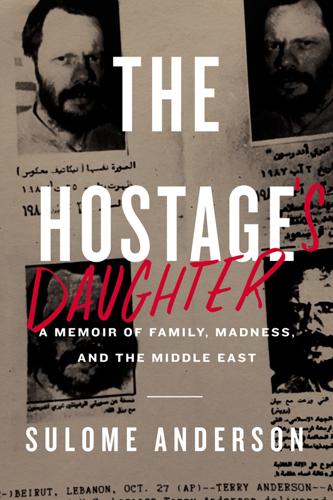
The Hostage's Daughter
by
Sulome Anderson
Published 24 Aug 2016
“Okay, well, you’ll have to tell me who he is,” she said, but I could see the doubt cross her face. A glimmer of hope. Was it possible I’d be able to bullshit my way out of this? I unleashed the tears. “This can’t be happening!” I wailed. “I’m graduating in three months! I was just trying to help a friend! Please don’t tell the dean, please . . . I’m supposed to go . . . to NYU . . .” I dissolved in sobs. The dorm master put a hand on my shoulder. “Sorry, Sulome,” she told me, sounding honestly regretful. “I have to tell the dean, otherwise my job is on the line.” She shook her head. “It’s a shame, though, it really is. You’re such a smart girl. Why do you have to do this stuff?”
…
My boyfriend at boarding school had broken up with me hours after I was expelled and I found myself in a place I hated, with barely any friends. The empty place in me grew canyon wide. I needed something to fill it and was soon dabbling in harder substances; cocaine became my favorite way to erase my misery. Luckily, NYU didn’t withdraw my acceptance, so I was still off to New York in the fall, which was a light at the end of the tunnel. But I would often find myself doing lines off the toilet lid in the school restroom or running around town with some guy, rolling on Ecstasy. My parents seemed to just give up and let me do what I wanted, which was both painful and exhilarating.
…
“If he ever comes to Lebanon again, tell him he’s welcome in my house. Say to him that the Shia are not monsters.” It’s an odd feeling, hearing this from a terrorist. But it’s even stranger that I find myself seeing a terrorist as a human being. THEN October 2003 I OD’d for the first time not long after I started at NYU. It wasn’t serious enough to get me sent to the hospital. I just remember being in the middle of one of those meaningless, teeth-grinding coke conversations and coming to on the floor of my dorm room, with my boyfriend yelling and shaking me. Apparently, I had gone into convulsions. I got up, drank some water, waited a half hour, and did another line.

Terms of Service: Social Media and the Price of Constant Connection
by
Jacob Silverman
Published 17 Mar 2015
At the same time, the trials of poverty and urban crime are turned into yet another spectacle, in line with a popular culture that has made sport of satirizing the folkways of the poor, minorities, rednecks, and assorted eccentrics on reality TV and in tabloid media. Commenting on the “Bed Intruder Song,” an NYU music professor told NPR: “There’s a way in which the aesthetics of black poverty—the way they talk and they speak and they look—sort of becomes this fodder for humor without any interest in the context of the conditions in which people actually live.” But at least Honey Boo Boo and her family get paid, are shown in something approaching the fullness of their lives, and are willing participants in their own degradation.
…
It wasn’t New York, and it was difficult leaving her grandparents and other family behind in India, but for all of them, it was the start of an exciting new American life—one which, her parents hoped, would lead to better opportunities, particularly for higher education. By the time that Nandini was a high school senior, she knew that Texas wasn’t for her, so she arranged to visit the city she had fallen in love with a decade earlier. She toured NYU, an experience that culminated with a trip to the top floor of the Kimmel Center, one of the university’s lavishly appointed, modern buildings off of Washington Square Park. From that vantage, she could take in an inspiring view of lower Manhattan. The message, she would later recall, was that “this could be yours”—this city, this life, all the fabled magic of being a young person on the make in New York.
…
The message, she would later recall, was that “this could be yours”—this city, this life, all the fabled magic of being a young person on the make in New York. The next fall, she happily matriculated into the school of her dreams. More than five years later, the dream has curdled. The economy crashed before Nandini even finished high school, and its tepid recovery has done little to improve her prospects. After finishing her film degree at NYU, Nandini and a roommate moved uptown to a rent-stabilized, fourth-floor walkup. Despite a fine résumé that includes a number of internships in her field of interest, she’s been unable to find any work. If not for her relatively favorable lease arrangement, she’d have difficulty surviving at all in New York and might be forced to make the lonely trek back to Texas.
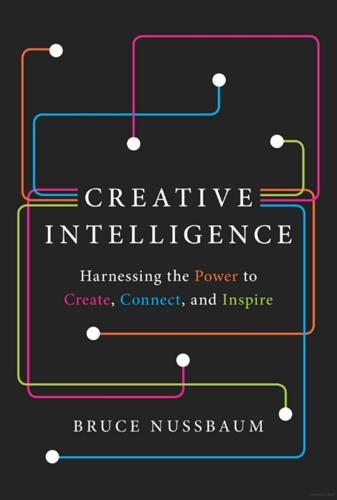
Creative Intelligence: Harnessing the Power to Create, Connect, and Inspire
by
Bruce Nussbaum
Published 5 Mar 2013
_nkw=Old+German&_sacat=717&_ odkw=german&_osacat=717, accessed September 8, 2012. 163 Amy and Joe began: “Little Alouette: Wood for Wee Ones.” 163 Kids “require so little”: “Little Alouette Has Big Plans for Baby Toys,” post by Walker, Columbus Underground, October 19, 2009, September 8, 2012, http://www.columbusunderground.com/ little-alouette-has-big-plans-for-baby-toys. 163 And for every purchase: http://www.etsy.com/listing/48850576/ little-alouette-wee-wood-moustache, accessed September 8, 2012. 163 In 2007, the Sharps opened: http://www.etsy.com/shop/littleal ouette, accessed September 8, 2012. 163 Rattles and teethers: http://www.littlealouette.com/blocks/ safari-free-play-block-set, accessed September 8, 2012. 164 Sharp is an Etsy mom: http://en.wikipedia.org/wiki/Mompre neur, accessed September 8, 2012; http://www.wisegeek.com/ what-is-a-mompreneur.htm, accessed September 8, 2012. 164 They set up shop, literally: “Little Alouette Has Big Plans for Baby Toys.” 164 millions who shop there: http://mywifequitherjob.com/etsystores/, accessed September 8, 2012. 164 Rob Kalin dropped out: Teri Evans, “Creating Etsy’s Handmade Marketplace,” Wall Street Journal, March 30, 2010, accessed September 8, 2012, http://online.wsj.com/article/ SB1000142405270230437030 4575152133860888958.html?mod=WSJ_hp_edi torsPicks; http://www.nyu.edu/about/university-initiatives/ entrepreneurship/nyu-ventures/ success-stories/etsy.html, accessed September 8, 2012. 164 His real passion: Evans, “Creating Etsy’s Handmade Marketplace.” 164 In 2005, he got two: http://www.nyu.edu/about/universityinitiatives/ entrepreneurship/nyu-ventures/success-stories/etsy.html, accessed September 8, 2012. 164 Headquarters were set up: http://www.etsy.com/help/article/486/, accessed September 8, 2012. 164 Etsy has 875,000 sellers: I am indebted to Larry Keeley of Doblin, part of the Monitor Group of consultants, for first showing me the importance of platforms and platform innovation.
…
Like so many shops on the site, Etsy was founded by an artisan seeking a direct connection to customers. Rob Kalin dropped out of high school for a time before attending NYU in New York City. His real passion was making furniture, which he did out of his apartment in Brooklyn. But selling furniture proved to be more difficult. Kalin wanted to get directly in front of his customers, but there was no marketplace for his work. So he decided to build one. In 2005, he got two of his NYU friends to set up servers for a new e-commerce service that would allow producers to share their experiences and challenges with each other. A community of crafters, in other words.
…
But for other illnesses and treatments, the existing framework of health care is ill-suited, unnecessary, and expensive. For regular chemotherapy appointments, that’s especially true. In 2010, Irish Maliq, the Project Manager of Strategic Planning and Innovation at the Memorial Sloan-Kettering Cancer Center, decided to do something about it: Maliq gathered students from NYU, Carnegie Mellon University, IIT Institute of Design, and Parsons The New School for Design to reframe the chemo experience. The first thing the team did was observe the patients getting chemo treatments and ask them how they felt about it. It became obvious that people took cars or subways long distances to get to the hospital and then had to return home just as they began to feel sick.

Custodians of the Internet: Platforms, Content Moderation, and the Hidden Decisions That Shape Social Media
by
Tarleton Gillespie
Published 25 Jun 2018
JARRETT, KYLIE. 2014. “The Relevance of ‘Women’s Work’: Social Reproduction and Immaterial Labor in Digital Media.” Television and New Media 15 (1): 14–29. JENKINS, HENRY. 2006. Convergence Culture: Where Old and New Media Collide. New York: NYU Press. JENKINS, HENRY, SAM FORD, AND JOSHUA GREEN. 2013. Spreadable Media: Creating Value and Meaning in a Networked Culture. New York: NYU Press. JEONG, SARAH. 2015. The Internet of Garbage. Forbes Media. http://www.forbes.com/ebooks/the-internet-of-garbage/. JISC (JOINT INFORMATION SYSTEMS COMMITTEE). 2007. “Hosting Liability.” https://www.jisc.ac.uk/guides/hosting-liability.
…
“The Legislative History of Senator Exon’s Communications Decency Act: Regulating Barbarians on the Information Superhighway.” Federal Communications Law Journal 49: 51. CHANDER, ANUPAM. 2014. “How Law Made Silicon Valley.” Emory Law Journal 63: 639–94. CHENEY-LIPPOLD, JOHN. 2017. We Are Data: Algorithms and the Making of Our Digital Selves. New York: NYU Press. CHENG, JUSTIN, CRISTIAN DANESCU-NICULESCU-MIZIL, AND JURE LESKOVEC. 2015. “Antisocial Behavior in Online Discussion Communities.” arXiv. http://arxiv.org/abs/1504.00680. CHESS, SHIRA, AND ADRIENNE SHAW. 2015. “A Conspiracy of Fishes, or, How We Learned to Stop Worrying about #GamerGate and Embrace Hegemonic Masculinity.”
…
Cyber Rights: Defending Free Speech in the Digital Age. Rev. ed. Cambridge: MIT Press. GOLDSMITH, JACK, AND TIM WU. 2008. Who Controls the Internet? Illusions of a Borderless World. New York: Oxford University Press. GRAY, MARY L. 2009. Out in the Country: Youth, Media, and Queer Visibility in Rural America. New York: NYU Press. GRIMMELMANN, JAMES. 2014. “Speech Engines.” Minnesota Law Review 98 (3): 868–952. ———. 2015. “The Virtues of Moderation: Online Communities as Semicommons.” Yale Journal of Law and Technology 17 (42). GRIMMELMANN, JAMES, AND PAUL OHM. 2010. “Dr. Generative, or: How I Learned to Stop Worrying and Love the iPhone.”
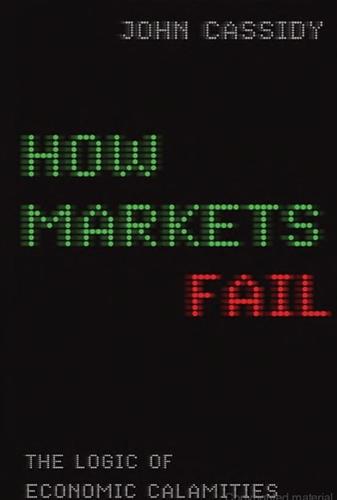
How Markets Fail: The Logic of Economic Calamities
by
John Cassidy
Published 10 Nov 2009
, March 3, 2009. 342 “a hedge fund, basically . . .”: Ibid. 343 “The goal is not . . .”: Viral V. Acharya and Matthew Richardson, “Repairing a Failed System: An Introduction,” White Paper, from the series “Restoring Financial Stability: Policy Recommendations from NYU Stern,” 2008, available at http://whitepapers.stern.nyu.edu/summaries/intro.html. 345 “[T]he typical graduate . . .”: Willem Buiter, “The Unfortunate Uselessness of Most ‘State of the Art’ Academic Monetary Economics,” Financial Times, March 3, 2009, available at www.ft.com/maverecon. 346 “Despite the enormity . . .”: N.
…
Friedman and Arnold Harberger—the same Arnold Harberger who would later accompany Friedman to Pinochet’s Chile—backed him up. (According to one of Harberger’s studies, the economy-wide efficiency losses from monopoly amount to just one-tenth of 1 percent of GDP.) Later on, even some moderate economists, such as NYU’s William Baumol, argued that monopolies didn’t need to be exposed to actual competition in order to curb their predatory behavior: the mere threat of competition would do the job. During the administration of George W. Bush, antitrust policy was relaxed to favor big companies. In 2008, the Justice Department published guidelines making it much harder to sue big companies for predatory or anticompetitve behavior.
…
On the basis of experiments such as these, it is tempting to view the participants in speculative bubbles as lemmings headed for a cliff. But even lemmings aren’t as stupid as they appear. (Recent research suggests that they don’t commit suicide en masse, as was once commonly believed.) In 1953, two psychologists from NYU, Morton Deutsch and Harold Gerard, repeated Asch’s vision test but with a slightly different setup. This time the subjects didn’t meet the other members of their group, and they didn’t have to answer publicly: they just pushed a button. However, before they gave their responses, the instructors told them the (often mistaken) answers that other people in the group had given.
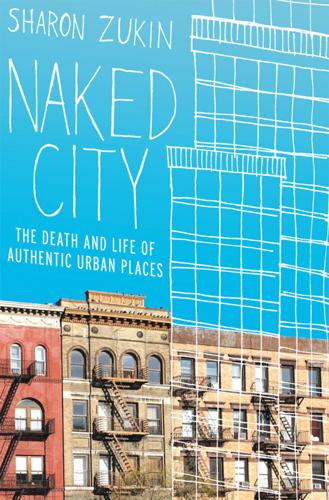
Naked City: The Death and Life of Authentic Urban Places
by
Sharon Zukin
Published 1 Dec 2009
“Blight,” which urban planning officials in the 1950s sneeringly said was the problem with old neighborhoods like ours, has yielded to chic.9 Redevelopment began in the 1950s, to the south of Washington Square Park, when Robert Moses used federal government funds for urban renewal to demolish manufacturing lofts and replace them with faculty housing for NYU. Since then NYU has expanded northward and eastward block by block. Tompkins Square Park has been cleaned up and pacified by the Parks Department and the police. Bars have overtaken ethnic grocery stores; rising rents have pushed old tenants out. Real estate markets have been supported by the actions of government agencies: policing by the NYPD, rezoning by the City Planning Commission, liquor licensing by the State Liquor Authority.
…
In an apartment where maybe a husband and wife [had lived], now there might be three or four students living … so [there was] more of a concentration of people, and a younger population. Then slowly … a big thing [happened]. A lot more people [were] in the neighborhood during the day.” Joe focuses on two big changes in the East Village at that time: the aging of the working-class residents and the arrival of artists and yuppies. Lana talks about how NYU started to expand into the area from its campus on Washington Square. Joe mentions the East Village art galleries. Like the artist who recalls hanging out in the galleries all day, they also remember young people, students, and artists practically taking up residence in the area’s growing number of cafés.
…
This style of life usually appeals to men and women who have more cultural than financial capital and can’t afford to pay high rents. But they can pay more than longtime residents. By connecting in some way to the growing sectors of the mainstream economy—working as a free-lancer, getting a teaching job at NYU, or consulting for an investment bank—they are willing and able to pay more for the consumption of history that the East Village represents. For a long time the neighborhood offered a visible image of the jagged edges of the city’s uneven development, with its tenements and storefronts and dangerous, derelict streets.

Free as in Freedom
by
Sam Williams
Published 16 Nov 2015
Taken as a whole, the signs offer a reminder: even in the relatively tranquil confines of pre-September 11, 2001, New York, one can never be too careful or too suspicious. The signs offer an interesting thematic counterpoint to the growing number of visitors gathering in the hall's interior atrium. A few look like NYU students. Most look like shaggy-aired concert-goers milling outside a music hall in anticipation of the main act. For one brief morning, the masses have taken over Warren Weaver Hall, leaving the nearby security attendant with nothing better to do but watch Ricki Lake on TV and shrug her shoulders toward the nearby auditorium whenever visitors ask about "the speech."
…
As announced over a host of hacker-related web sites, including the GNU Project's own http://www.gnu.org site, Stallman is in Manhattan, his former hometown, 15 to deliver a much anticipated speech in rebuttal to the Microsoft Corporation's recent campaign against the GNU General Public License. The subject of Stallman's speech is the history and future of the free software movement. The location is significant. Less than a month before, Microsoft senior vice president Craig Mundie appeared at the nearby NYU Stern School of Business, delivering a speech blasting the General Public License, or GPL, a legal device originally conceived by Stallman 16 years before. Built to counteract the growing wave of software secrecy overtaking the computer industry-a wave first noticed by Stallman during his 1980 troubles with the Xerox laser printer-the GPL has evolved into a central tool of the free software community.
…
Added Mundie: It also fundamentally undermines the independent commercial software sector because it effectively makes it impossible to distribute software on a basis where recipients pay for the product rather than just the cost of distributionSee Craig Mundie, "The Commercial Software Model," senior vice president, Microsoft Corp. Excerpted from an online transcript of Mundie's May 3,speech to the New York University Stern School of Business. The mutual success of GNU/ LinuxThe acronym GNU stands for "GNU's not Unix." In another portion of the May 29, 2001, NYU speech, Stallman summed up the acronym's origin: We hackers always look for a funny or naughty name for a program, because naming a program is half the fun of writing the program. We also had a tradition of recursive acronyms, to say that the program that you're writing is similar to some 18 existing program … I looked for a recursive acronym for Something Is Not UNIX.
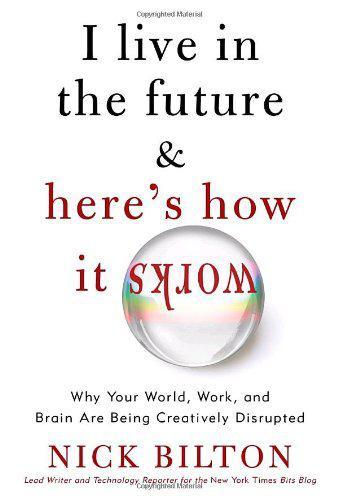
I Live in the Future & Here's How It Works: Why Your World, Work, and Brain Are Being Creatively Disrupted
by
Nick Bilton
Published 13 Sep 2010
Time, May 5, 2009, http://www.time.com/time/business/article/0,8599,1895737,00.html. 6 Walter Lippmann and John Dewey: The debate played out largely in the pages of The New Republic, in a series of articles dating from 1922 to 1927. Also: In-person interview, Jay Rosen, NYU School of Journalism, 2009 and in-person interview with Mitchel Stephens, author of A History of News and The Rise of the Image, the Fall of the Word, NYU School of Journalism, 2009. 7 Cyborgs: Gordon Bell and Steve Mann: Clive Thompson, “A Head for Detail,” Fast Company 110, November 1, 2006, http://www.fastcompany.com/magazine/110/head-for-detail.html. Also: Personal discussion with Gordon Bell, Toronto, 2008, and personal discussion with Steve Mann, Toronto, 2008.
…
But I don’t question the authenticity of our friendship just because our encounters are digital; instead, I appreciate the camaraderie as well as the interesting, though geeky, technology and media stories we exchange online. Jason is a whiz at finding fun and interesting design news. Though we met only once at a conference, he lives in San Francisco, and I might not be able to pull him out of a police lineup, I trust his design-news judgment more than that of some of my colleagues at the Times and NYU. I don’t see any lines between real-life friendships that involve talking or looking someone in the eye and virtual ones in which the communication is through e-mail or text messages. Any of those relationships can be good friendships. We may not drink beer or coffee together or exchange birthday and anniversary cards.
…
That’s the case because the press made books available in the common languages of the men and women of Europe—English, French, and Spanish—instead of Latin. After that, books in a common language became a vehicle for helping a community define its shared ambitions, and the modern nations we know today developed. In addition, the concept of imagined communities goes way beyond geography: I am middle class, a meat eater, a rock climber, an NYU instructor, a reader of a certain genre of books, a drinker of a specific brand of coffee, and a devotee of the New York Times. These all represent different, but important, imagined communities for me. Some are connected and overlap, but most don’t, and they are all dynamic, subject to influence by other communities in my life.
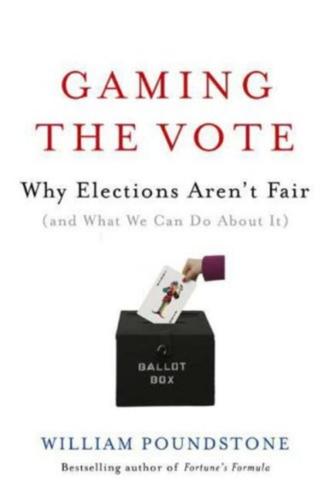
Gaming the Vote: Why Elections Aren't Fair (And What We Can Do About It)
by
William Poundstone
Published 5 Feb 2008
172 Story about Robert Lincoln, Equinox House: Ward 1992. 173 A score (twenty-three) cities used S1V: Cabrera 2006. 174 "I consider PR [proportional representation] the most un-American": www.nyu.edu/ gsas/deptlhistory/public~historyIPR. 174 Figures for city council seal" Ibid. 174 "complicated, trying the voters' patience '. Ibid. 174 "there is among the PR groups"; lhid, 175 Staller biography; wwwrotten.comllibrary/bio/entertaineruactors/ciccioJinal, 175 "'Stalin Frankenstein' Project": www.nyu.edu/gsasfdeptlhistorylpublic_historyfPR. 175 "By [960 there was only Cambridge"; Richie, interview, Tacoma Park, Md., Oct. 9, 2006. 176 "I am quite prepared to be told"; Black 1958, 230. 177 "Suppose A to be the candidate"; Ibid., 232. 177 'This prindple of voting": Ibid., 233. 177 Decision to use Gingrich in 1V arlo Morris 1997, 184. 178 Falwell On Clinton and Lucifer: Potter 2006. 178 Riker biography, Bueno De Mesquita and Shepsle 2001. 179 Riker interpreted Powell amendment as Condorcet cycle: Riker 1958 and 1965. 180 "has been seized upon": Riker 1982,154, 180 "The main thrust of Arrow's theorem": Ibid., 136. 181 "consigns democratic outcomes-and hence the democratic method", Ibid" 119.
…
"Rejoinder to Saari and Van Newenhizen," Public Choke 59, 149. Brarns, SlevenJ., ~nd P~ul Hager (2002). "Why the Academy Awards May Fail to Pick the 'Best Picture' Again." www.cs-indiana.edu!-hagerp/ampas_nyu.htm. Btams, Steven J., and Samuel Merrill III (1994). "Would Ross Perot Have Won the 1992 Presidential Election Under Approval Voting?" PS, Po!itiml Science and Polirics 27: 39--44. Brams, Steven j., and M, Remzi Sanver (2006). "Voting Systems That Combine Approval and Preference." www.nyu.eduigsasideptipoliticslfacultylbramslapprovaLpreference,pdf. '1' Sources Bmun, Stephen, and Ralph Vartabedian (2005), "Levees Weakened as New Orleans Board, Federal Engineers Feuded."
…
He could not believe how high the salaries of the other economics professors were, and how low his own salary was in comparison. For someone with Morgenstern's self-esteem (and belief in market valuations), this finding was impossible to accept. He did not accept it. In 1970 he severed ties with Princeton and took a professorship at New York University. Once again, Morgenstern was more or less cast adrift by fate. At NYU he met a young political scientist named Steven Srams. Srams revered Morgenstern as a living legend, and Bcams's wife, who happened to be Austrian, charmed the elderly economist. The couple socialized with Morgenstern-until he became too ill to socialize with anyone. Srams visited Morgenstern on his deathbed.

The Big Nine: How the Tech Titans and Their Thinking Machines Could Warp Humanity
by
Amy Webb
Published 5 Mar 2019
Focusing on beating humans in direct competition has led to neglecting other ways of measuring and advancing AI. The Winograd schema was intended as a more multidimensional test because passing it requires more than a broad data set. Ernest Davis, Leora Morgenstern, and Charles Ortiz, three computer scientists at NYU, proposed the Winograd Schema Challenge, which is run once a year. They offer a terrific example on their faculty website (last accessed September 5, 2018, https://cs.nyu.edu/faculty/davise/papers/WinogradSchemas/WS.html): The city councilmen refused the demonstrators a permit because they [feared/advocated] violence. If the word is “feared,” then “they” refers to the city council; if it is “advocated,” then “they” presumably refers to the demonstrators.
…
My sincerest thanks to Nicholas Burns, Condoleezza Rice, Joseph Nye, and Jonathon Price for the invitation and to Carla Anne Robbins, Richard Danzig, James Baker, Wendy Sherman, Christian Brose, Eric Rosenbach, Susan Schwab, Ann-Marie Slaughter, Bob Zoellick, Philip Zelikow, Dov Zakheim, Laura Rosenberger, and Mike Green for all of their valuable feedback. A lot of my thinking happened on the campus of NYU’s Stern School of Business, which has been a tremendously supportive professional home for my research. I’m grateful to Professor Sam Craig for bringing me into the MBA program and for advising me the past few years. I cannot say enough about the incredibly bright, creative MBA students who have taken my classes.
…
Three recent Stern graduates in particular—Kriffy Perez, Elena Giralt, and Roy Levkovitz—were wonderful sounding boards as I modeled the futures of AI. I’m lucky to have in my life a group of sages who offer counsel and advice. All of the work I do is better because of them. Danny Stern changed my life a few years ago when he asked me to meet him one day on the NYU campus. He taught me how to think more exponentially and showed me how to make my research connect with much wider audiences. His partner at Stern Strategy Group, Mel Blake, has spent hundreds of hours mentoring me, shaping my ideas, and helping me to see the world around me differently. They are a continual source of inspiration, motivation, and (as they know) perspiration.
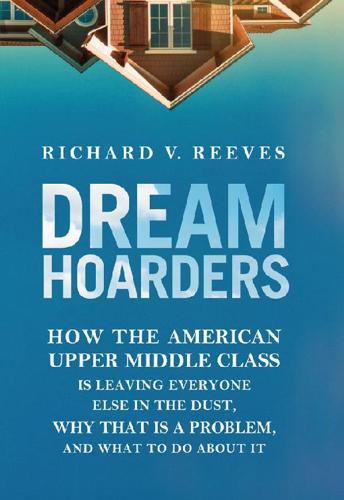
Dream Hoarders: How the American Upper Middle Class Is Leaving Everyone Else in the Dust, Why That Is a Problem, and What to Do About It
by
Richard V. Reeves
Published 22 May 2017
The second degree is a “positional good,” valued precisely because not everybody can have one. Entry to the upper middle class now requires not one framed certificate, but two. A postgraduate degree has in fact become the most important means for transmitting status to the next generation, according to NYU economist Florencia Torche. “Intergenerational reproduction declines among college graduates,” she reports, “but reemerges among advanced degree holders, questioning the meritocratic character of labor markets for skilled workers.”43 (Well, Professor Torche, that depends on how you define “merit.” But I’ll get to that soon.)
…
They are just as “stuck” at the top of the income ladder as the poor kids are at the bottom. Chetty’s data is not unusual: every scholar working in this field with any dataset finds that there is at least as much stickiness at the top as at the bottom of the distribution, and many find that there is more. NYU’s Florencia Torche found stronger intergenerational income persistence at the top than at the bottom. “Children of wealthy parents,” she says, “are more homogeneously wealthy than children of poor parents are homogeneously poor.”5 Stanford’s Pablo Mitnik and David Grusky used another measure of mobility—intergenerational elasticity (IGE)—and also found more stickiness at the top than at the bottom.6 Whatever measure is chosen, the pattern is the same.
…
As with legacy preferences, policy changes will need to be accompanied with if not preceded by a shift in attitudes. Right now, Americans are literally shameless about the way they hand out and take up internships. But this could change. Social norms and social institutions evolve. “Behavior that is seen in one social setting as an admirable expression of parental concern,” NYU philosopher Samuel Scheffler points out, “may be seen in another as an intolerable form of favoritism or nepotism.”59 A comparison between the United Kingdom and the United States makes the point. In the United Kingdom, the handing out of internships to your own children, de Blasio style, would be political suicide.
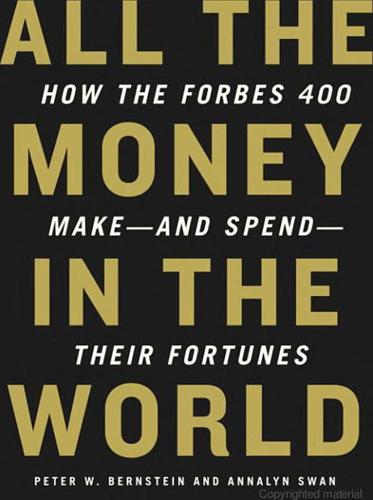
All the Money in the World
by
Peter W. Bernstein
Published 17 Dec 2008
Yet BP Capital Management has made him richer than ever. In 2006 Forbes estimated his net worth at $2.7 billion. For many others, failure ends in a slide that takes them off the 400 list, never to return. But there is an upside to even the worst bankruptcies—if not for the individual, then for the larger society, argues George Smith of NYU’s Stern School of Business. Smith says it is fortunate that entrepreneurs are willing to stick their necks out, because for every one hundred people who take a risk there is a chance that one will succeed. The United States, he points out, has made it relatively easy for people to fail because of a legal system and bankruptcy laws and protections that give failed entrepreneurs a “soft landing.”
…
Larry Page #13 They’ve also invested in the Tesla roadster, a sports car with an electronic engine, which sells for $100,000 and has a range of 200 miles on the highway and 270 miles in stop-and-go city driving without a recharge. Steven Ballmer #15 1998 Lincoln Continental He grew up in Motor City, USA, which may explain his preference for a maroon Continental. * * * It goes without saying that art isn’t just a status symbol or an expensive hobby; it can also be a great investment. A study by NYU’s Jianping Mei and Michael Moses78 showed that between 1996 and 2006 postwar and contemporary art performed better than the S&P 500 Total Return Index. Art can also have tax benefits. Banking tycoon Andrew Mellon saved on his enormous estate tax bill by donating his art collection to the nation just before his death; it would become the National Gallery in Washington, D.C.
…
But Vilar misjudged the depth of the high-tech market crash; as the NASDAQ plunged in 2001, Amerindo began to pay a hefty price. Still, his declining fortunes apparently didn’t rein in his urge to give. He pledged to donate more than $100 million that year to the Kennedy Center in Washington, D.C., Columbia University’s medical school, NYU, and, of course, opera houses. “Asking Alberto for money34 was like offering an alcoholic a drink,” a friend of Vilar’s told New Yorker writer James B. Stewart. Not surprisingly, Vilar was finding it tough to follow through on his pledges. He began to miss payment due dates. For the first time since he had joined the Met’s board in 1996, Vilar skipped a meeting in spring 2003.

Your Computer Is on Fire
by
Thomas S. Mullaney
,
Benjamin Peters
,
Mar Hicks
and
Kavita Philip
Published 9 Mar 2021
Ford, Think Black: A Memoir (New York: Amistad, 2019). 11. Simone Browne, Dark Matters: On the Surveillance of Blackness (Durham, NC: Duke, 2015). See also Ruha Benjamin, Race after Technology (New York: Polity, 2019). 12. Clyde W. Ford, Think Black: A Memoir (New York: Amistad, 2019). 13. Safiya Noble, Algorithms of Oppression (New York: NYU Press, 2018). 14. David Golumbia, “Do You Oppose Bad Technology, or Democracy?,” Medium (April 24, 2019), https://medium.com/@davidgolumbia/do-you-oppose-bad-technology-or-democracy-c8bab5e53b32. 15. Nick Statt, “Google Dissolves AI Ethics Board Just One Week after Forming It: Not a Great Sign,” The Verge (April 4, 2019), https://www.theverge.com/2019/4/4/18296113/google-ai-ethics-board-ends-controversy-kay-coles-james-heritage-foundation. 16.
…
Ali Winston and Ingrid Burrington, “A Pioneer in Predictive Policing Is Starting a Troubling New Project,” The Verge (April 26, 2018), https://www.theverge.com/2018/4/26/17285058/predictive-policing-predpol-pentagon-ai-racial-bias. 42. “How CEP’s EGLYPH Technology Works,” Counter Extremism Project (December 8, 2016), https://www.counterextremism.com/video/how-ceps-eglyph-technology-works. 43. Safiya Umoja Noble, Algorithms of Oppression: How Search Engines Reinforce Racism (New York: NYU Press, 2018). 44. Siva Vaidhyanathan, Antisocial Media: How Facebook Disconnects Us and Undermines Democracy (New York: Oxford University Press, 2018); Virginia Eubanks, Automating Inequality: How High-Tech Tools Profile, Police, and Punish the Poor (New York: St. Martin’s Press, 2018). 45. “ACM FAT*,” accessed August 1, 2018, https://fatconference.org/. 46.
…
Janet Abbate, Inventing the Internet (Cambridge, MA: MIT Press, 1999); Paul N. Edwards, The Closed World: Computers and the Politics of Discourse in Cold War America (Cambridge, MA: MIT Press, 1996); Finn Burton, Spam: A Shadow History of the Internet (Cambridge, MA: MIT Press, 2013); Thomas Streeter, The Net Effect: Romanticism, Capitalism, and the Internet (New York: NYU Press, 2011). See also Katie Hafner and Matthew Lyon, Where Wizards Stay Up Late: The Origins of the Internet (New York: Simon & Schuster, 1996) and Walter Isaacson, The Innovators: How a Group of Hackers, Geniuses, and Geeks Created the Digital Revolution (New York: Simon & Schuster, 2014). 6. Peters, How Not to Network a Nation, 1–13.
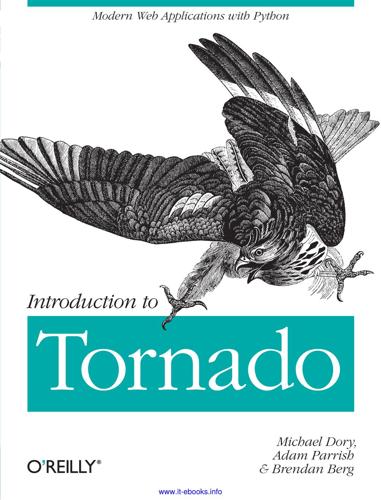
Introduction to Tornado
by
Michael Dory
,
Adam Parrish
and
Brendan Berg
Published 29 Sep 2011
Mike would like to express his eternal gratitude to his family and friends for their constant support and encouragement, especially to Jean and John Dory, who understood that a love of blinky lights and black coffee might turn into something useful after all. A big thanks is due to the NYU ITP alumni, faculty, and staff that serve as a constant feed of guidance, support, and ever-evolving inspiration. And most importantly, to his wife Rita, whose encouragement, advice, and understanding made this and everything else possible. Adam is indebted to his students at NYU’s Interactive Telecommunications Program, for whom much of the material in early chapters of the book was originally prepared. Their enthusiasm for the material proved that a book like this one would have an audience, and their helpful feedback made the book better.
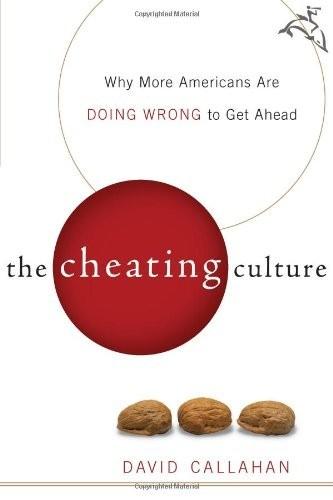
The Cheating Culture: Why More Americans Are Doing Wrong to Get Ahead
by
David Callahan
Published 1 Jan 2004
The Neurontin scandal is only one of many prescription drug scandals that have recently rocked the medical world. ♦ A reporter is writing an article on Ronald Zarrella, the CEO of Bausch & Lomb. Checking Zarrella's background, the reporter discovers that NYU's School of Business Administration has no record of the M.B.A. that Zarrella says he earned there. Confronted with this information, Zarrella confirms that, in fact, he did not get an M.B.A. from NYU as he had long contended. This revelation is just the latest in a spate of résumé-faking cases, including ones involving high-profile people like George O'Leary, the former Notre Dame football coach; Kenneth Lonchar, the former chief financial officer of Veritas software; and Sandra Baldwin, the former president of the U.S.
…
The lie cost him over $1 million—a pittance, given that his fake credentials had helped him make many millions of dollars before he was unmasked.34 A year earlier, George O'Leary was hired as Notre Dame's football coach in a seven-figure deal—and fired shortly afterward when it was learned that he had lied about having a master's degree from NYU. (What is it about NYU?) O'Leary's brother Tom offered a spirited defense of him to a Sports Illustrated reporter: "Is anyone trying to tell me that résumés are truthful? In the America we live in, the willingness to lie on a résumé is an indication of how much you want the job."35 Olympic head Sandra Baldwin is another high-profile figure recently ousted from a lucrative job after the truth caught up with her.
…
As the prizes for the winners have increased, people have become more willing to do whatever it takes to be a winner. A CEO will inflate earnings reports to please Wall Street—and increase the value of his stock options by $50 million. An A student will cheat to get the A+ that she believes, correctly, could make the difference between Harvard and a lifetime of big opportunities—or NYU and fewer opportunities. A steady .325 hitter will take steroids to build the muscles needed to be a slugger—and make $12 million a year instead of a mere $3 million. A journalist will fabricate sources in his quest to write as many hit pieces as possible—so that the day arrives sooner rather than later when he can command six-figure book deals and get lucrative lecture gigs.
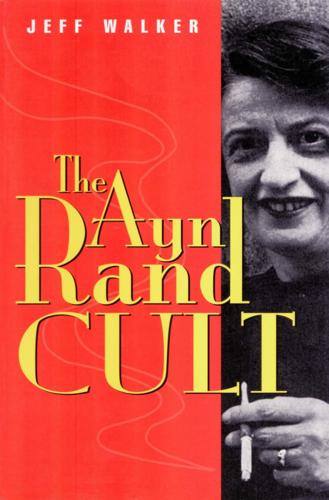
Ayn Rand Cult
by
Jeff Walker
Published 30 Dec 1998
Despite having no Ph.D. in economics and little esteem in academia, Greenspan was sworn in as, in a sense, the nation’s leading economist. And there in the front row at the White House ceremony sat Ayn Rand. Two days before she had told a reporter, “Alan is my disciple.” Greenspan did eventually get his Ph.D. from NYU in 1977, but it was apparently for articles he had written that NYU then conveniently lost, notes Lewis, making it the most suspect doctorate since Nathaniel Branden’s California Graduate Institute diploma. Comments neo-Objectivist Victor Niederhoffer, author of The Education of a Speculator, “As far as I know, no one has ever seen or read Greenspan’s dissertation.”
…
Murray Rothbard and his Cercle Bastiat briefly intersect with Rand’s inner circle. 1960–1962 John Hospers has many philosophical discussions with Rand. 1962 The Objectivist Newsletter begins publication. 1962 John Hospers is excommunicated by Rand. Who Is Ayn Rand? by Nathaniel and Barbara Branden published. 1964 April, Rand pushes Nathan to resume their affair, she at age 59, he at 34. The Virtue of Selfishness published. Leonard Peikoff obtains his Ph.D. in philosophy from NYU. 1966 Capitalism: The Unknown Ideal published. 1966–1971 The Objectivist journal published. 1967 NBI moves to offices in the Empire State Building, signing 15-year $500,000 lease. 1968 Edith Efron is excommunicated by Rand. The Break: The Brandens and all who will not shun them are excommunicated by Rand.
…
Many former cultists say that early college classes destabilized their worldview and bewildered them, preparing them for the certainty offered by the cult. Rand criticized professors for disorienting students, while in effect capitalizing upon the disorientation. Kay Nolte Smith recalls that a friend took her in 1957 to an NYU lecture by Rand who said that everyone has a philosophy of life, the only choice being whether one is going to know it consciously or not. For Smith this was “a blinding epiphany. I thought ‘my God, she’s right’—everybody’s actions are governed by some kind of thoughts,” so it’s incumbent on us to know consciously what those are.
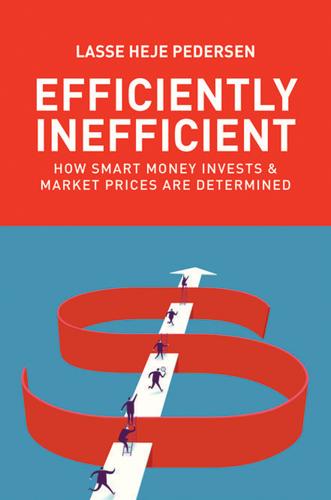
Efficiently Inefficient: How Smart Money Invests and Market Prices Are Determined
by
Lasse Heje Pedersen
Published 12 Apr 2015
Before forming his investment management firm, he was a general partner of Gruss Partners and a managing director in mergers and acquisitions at Bear Stearns. LHP: How did you originally get interested in event-driven investment? JAP: I first learned about risk arbitrage when I was a student at NYU and I signed up for a seminar-type course taught by Gustave Levy. He was the Chairman of Goldman Sachs and a graduate of NYU, and he had previously run the risk arb desk at Goldman Sachs. Unfortunately, right before the course started, Gustave Levy passed away. John Whitehead was made the Chairman, and John Whitehead stepped into Gustave’s shoes and took over the class.
…
I became an insider in the asset management world and finally had access to people who knew how securities are traded, how leverage is financed, and how trading strategies are executed, both my colleagues at AQR and, through them, the rest of Wall Street. Most excitingly, my own research was being put into practice. After a year, AQR convinced me to take a leave of absence from NYU to join them full time starting on July 1, 2007. Moving from Greenwich Village to Greenwich, CT, the first big shock was how dark and quiet it was at night compared to the constant buzz of Manhattan, but a bigger shock was around the corner. My job was to develop new systematic trading strategies as a member of the Global Asset Allocation team, focusing on global equity indices, bonds, commodities, and currencies, and I also had opportunities to contribute to the research going on in the Global Stock Selection and arbitrage teams.
…
Here was a real-life liquidity spiral, all too similar to that in my theoretical model. It is difficult to explain the emotional reaction to seeing many millions being lost, but it hurts. It hurt even though the strategies that I had worked on were actually unaffected and even though I had a tenured lifetime appointment at NYU to return to. It has been said that you cannot explain what it is like to be in a war unless you experience bullets flying over your head, and I think something similar holds for being in the midst of a trading crisis. I understand why most of the successful managers whom I interviewed for this book emphasize the importance of self-discipline.
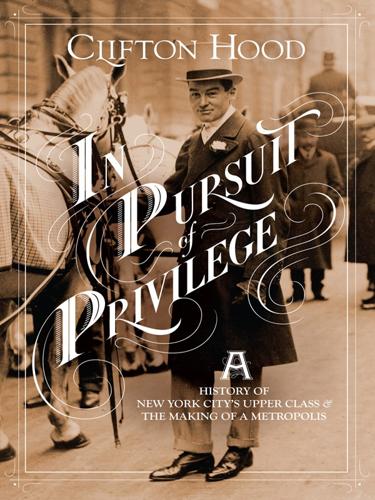
In Pursuit of Privilege: A History of New York City's Upper Class and the Making of a Metropolis
by
Clifton Hood
Published 1 Nov 2016
In 1965 Columbia’s twenty-four-person board embodied clubby Old New York, an all-male and mostly WASP bastion that had only three Jews and two Catholics. The NYU board of trustees was significantly more varied. In 1965 it had three women: Brooke Astor, the principal heir to the Astor family fortune; Mary W. Lasker, a philanthropist in the field of medical research; and Ruth L. Farkas, the wife of the owner of Alexander’s department stores. Nearly a third of the thirty-nine NYU trustees were Jews, including the heads of the Lehman Brothers; Kuhn, Loeb; Lazard Frères; and Loeb, Rhoades investment banks. Aware that Jewish leaders were grossly underrepresented on the boards of almost every other major New York City nonprofit, NYU administrators seem to have tapped upper-class Jewish networks as a growth strategy that aided its subsequent resurgence.86 Because the two universities had civic missions and because their boards were a key part of their public faces, both boards augmented their social diversity.
…
Aware that Jewish leaders were grossly underrepresented on the boards of almost every other major New York City nonprofit, NYU administrators seem to have tapped upper-class Jewish networks as a growth strategy that aided its subsequent resurgence.86 Because the two universities had civic missions and because their boards were a key part of their public faces, both boards augmented their social diversity. By 1980 half of NYU’s trustees were Jewish. In 1980 Columbia’s twenty-three-person board contained two women and at least seven Jews and six Catholics, a marked improvement over 1965. Each board included a single African American in 1980. The numbers of women and particularly African Americans remained small, but some members of the newly included groups were blue-chip businesspeople (and major donors) who were in a position to make their presence felt rather than simply be symbols.
…
MMA Metropolitan Museum of Art Archives, Metropolitan Museum of Art, New York, N.Y. MO Metropolitan Opera Archives, New York, N.Y. N-YHS Library, New-York Historical Society, New York, N.Y. NYPL Manuscripts and Archives Division, New York Public Library, New York, N.Y. NYSEA New York Stock Exchange Archives, New York, N.Y. NYU New York University Archives, Bobst Library, New York University, New York, N.Y. PU Seeley G. Mudd Manuscript Library, Princeton University, Princeton, N.J. RAC Rockefeller Archive Center, Sleepy Hollow, N.Y. NOTES INTRODUCTION 1. L. P. Hartley, The Go-Between (London: Hamish Hamilton, 1953; repr., New York: New York Review of Books, 2002), 17. 2.
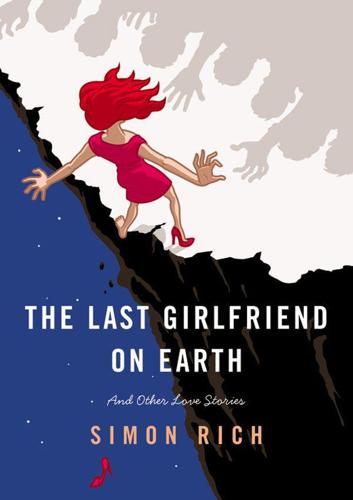
The Last Girlfriend on Earth: And Other Love Stories
by
Simon Rich
Published 22 Jan 2013
That night, I poke my head out of wallet and look around pocket. It is dark, but I can see we have new neighbor. He says his name is Cigarettes Gauloises. He is very polite, but I get “weird vibe” from him. It is about this time that I meet strip of notebook paper. On him is written rachelfeingold@nyu.edu. Now we’re getting somewhere, MetroCard says. I have never been more frightened in my life. IV. That Saturday, five crisp Twenties show up. I assume they will stay long time, like most Twenties. But two hours later, they are gone, replaced by receipt La Cucina. MetroCard looks at receipt La Cucina and laughs.
…
I do not really want to move in with them, but what can I do? I figure this is “end of the line” for me. Suddenly, though, Jordan carries me away—to other side of room. I am placed inside shoe box under his bed. At first, I am afraid, because it is dark, but as vision adjusts I see I am not alone. There is strip of notebook paper rachelfeingold@nyu.edu. There is receipt La Cucina, on which is now written, “first date.” I spend long, long time in shoe box. When I arrive, I am “new guy.” But as time passes, I become veteran. I welcome many new friends: Birthday card Rachel. Happy Valentine’s Day Rachel. And many, many Post-it Notes Rachel. I love you, Jordi.
…
One way or another. By its fifth week, the movement had gone national, with sympathy protests springing up on campuses across the country. Some of the demonstrations had turned violent. At the University of Mississippi, six students were teargassed. (The incident was blamed on “poor officer training.”) At NYU, kids were skipping lectures in protest of Jen. Few professors complained; some even joined their students on the streets. The most dramatic moment came six weeks into the movement. Jen had been avoiding the front entrance to her dormitory for some time. But one day, the back entrance was closed for construction and she had no choice but to cross the picket line.
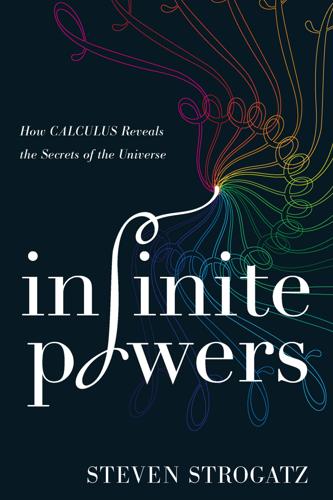
Infinite Powers: How Calculus Reveals the Secrets of the Universe
by
Steven Strogatz
Published 31 Mar 2019
27 Plutarch: The Plutarch quotes are from John Dryden’s translation of Plutarch’s Marcellus, available online at http://classics.mit.edu/Plutarch/marcellu.html. The specific passages about Archimedes and the siege of Syracuse are also available at https://www.math.nyu.edu/~crorres/Archimedes/Siege/Plutarch.html. 27 “made him forget his food”: http://classics.mit.edu/Plutarch/marcellu.html. 27 “carried by absolute violence to bathe”: Ibid. 27 Vitruvius: The Eureka story, as first told by Vitruvius, is available in Latin and English at https://www.math.nyu.edu/~crorres/Archimedes/Crown/Vitruvius.html. That site also includes a children’s version of the story by the acclaimed writer James Baldwin, taken from Thirty More Famous Stories Retold (New York: American Book Company, 1905).
…
That site also includes a children’s version of the story by the acclaimed writer James Baldwin, taken from Thirty More Famous Stories Retold (New York: American Book Company, 1905). Unfortunately, Baldwin and Vitruvius oversimplify Archimedes’s solution to the problem of the king’s golden crown. Rorres offers a more plausible account at https://www.math.nyu.edu/~crorres/Archimedes/Crown/CrownIntro.html, along with Galileo’s guess regarding how Archimedes might have solved it (https://www.math.nyu.edu/~crorres/Archimedes/Crown/bilancetta.html). 28 “A ship was frequently lifted up”: http://classics.mit.edu/Plutarch/marcellu.html. 29 estimate pi: Stein, Archimedes, chapter 11, shows in detail how Archimedes did it. Be prepared for some hairy arithmetic. 33 existence of irrational numbers: No one really knows who first proved that the square root of 2 is irrational or, equivalently, that the diagonal of a square is incommensurable with its side.
…
For philosophy, see S. Weinstein and D. Rickles, “Quantum Gravity,” Stanford Encyclopedia of Philosophy, https://plato.stanford.edu/entries/quantum-gravity/. 2. The Man Who Harnessed Infinity 27 Archimedes: For his life, see Netz and Noel, The Archimedes Codex, and C. Rorres, “Archimedes,” https://www.math.nyu.edu/~crorres/Archimedes/contents.html. For a scholarly biography, see M. Clagett, “Archimedes,” in Gillispie, Complete Dictionary, vol. 1, with amendments by F. Acerbi in vol. 19. For Archimedes’s mathematics, Stein, Archimedes, and Edwards, The Historical Development, chapter 2, are both outstanding, but see also Katz, History of Mathematics, sections 3.1–3.3, and Burton, History of Mathematics, section 4.5.
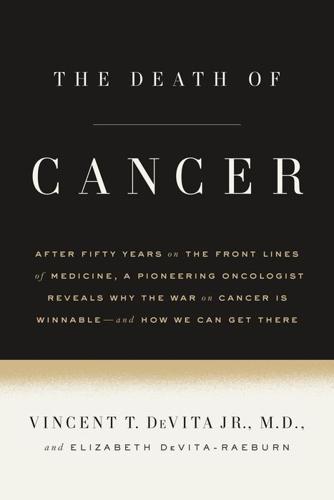
The Death of Cancer: After Fifty Years on the Front Lines of Medicine, a Pioneering Oncologist Reveals Why the War on Cancer Is Winnable--And How We Can Get There
by
Vincent T. Devita, Jr., M. D.
and
Elizabeth Devita-Raeburn
Published 3 Nov 2015
.; National Cancer Act and; war on cancer and Nobel Prize non-Hodgkin’s lymphoma (NHL) Northwestern University Norton, Larry Norton-Simon effect NSAIDS Nuremberg Code nurses NYU cancer center Office of Management and Budget (OMB) Office of Medical Research Oliverio, Vince oncogenes Oncologic Drugs Advisory Committee (ODAC) oncology Oncovin optimism Osler, Sir William ovarian cancer ovaries Oxford University oxidative phosphorylation Paget, Stephen pancreatic cancer papilloma virus paralysis pathologists patient history Pazdur, Richard PD-1 PDQ Pel-Ebstein fever penicillin perimenopause Perlmutter Cancer Center, NYU Perry, Sy Peters, Vera pharmaceutical industry; FDA and; NCI and; new drug development; profits; see also specific companies and drugs pharmacology phase I trials phase II trials phosgene physical exam placebo placenta plasma cells platelets; transfusions platinum analogs PLX4032 pneumococcal meningitis pneumonia polymyxin B POMP potassium prednisone pregnancy President’s Cancer Panel prevention procarbazine prostate cancer; chemotherapy and radiation; of DeVita; diagnosis; hormone deprivation therapy; median survival; mortality rates; recurrence prostatectomy prostate gland; enlarged; removal of prostatitis Provenge PSA; elevated; prostate cancer and PSA test pseudomonas meningitis pseudomonas rectal infections Public Health Service pulmonary edema Quinn, Luke radiation; adjuvant chemotherapy; breast cancer and; chemotherapy vs.; dosage; dosimetry and; history of; for Hodgkin’s disease; improved technology; at Memorial Sloan Kettering; MOPP vs.; for prostate cancer; risk of future cancers from; side effects; survival rates; at Yale Cancer Center radical mastectomy radium Rall, Dave Rand Corporation randomized controlled trials RARA Rauscher, Frank Rauscher leukemia virus Reagan, Ronald rectal cancer recurrence; “critical period” and; prostate cancer red blood cells Reed, Dorothy Reed, John Reed-Sternberg cell Reid, Featherstone Reinhardt, Paul Relman, Bud remission; complete; Hodgkin’s disease Republican Party research, cancer; angiostatins; beginning of war on cancer; childhood leukemia studies; CMF period; common cancers; extramural; FDA approval of drugs and; funding; future of; Hodgkin’s disease studies; immunotherapy; intramural; Mary Lasker and; Memorial Sloan Kettering; MOMP; MOPP; National Cancer Act and; NCI cancer drug program; of 1970s; of 1980s; RO1 grants; turf battles; university cancer center model; VAMP; war on cancer; wartime embargo; Yale Cancer Center; see also specific doctors, hospitals, methods, and organizations resistance, drug retroperitoneal space rheumatoid arthritis Rhoads, Cornelius “Dusty” Rivers, Joan RNA Robbins, Guy Robinson, James D.
…
In both cases, senators had intervened on their behalf and told the NCI, in no uncertain terms, that it had to fund them. But even without government intervention, the NCI has leeway in extending center grants under special circumstances, to allow a center to try to get its act together. Many centers, including Yale, Herbert Irving at Columbia, NYU, and the Sylvester Comprehensive Cancer Center at the University of Miami, have had their grants extended via political favor to avoid the embarrassment of losing NCI designation. Nonetheless, these centers also went on to be outstanding. Twice, I got Yale’s core grant approved by finessing the truth.
…
This presentation took place in a small room with only a few people in attendance. The president of the hospital didn’t bother to show up. I tell you this story not to pillory Yale particularly, though it behaved badly with regard to its obligations to the war on cancer and to its patients, just as Mary Lasker had feared. The cancer centers at NYU, Columbia, Albert Einstein, Jefferson Medical College, University of Chicago, University of California, San Diego, UCLA, University of Miami, University of Colorado, Georgetown University, Duke, University of Alabama, University of Virginia, Wake Forest University, Emory, University of Hawaii, and Northwestern University, just to name a few more typical of the genre, had virtually the same problems.
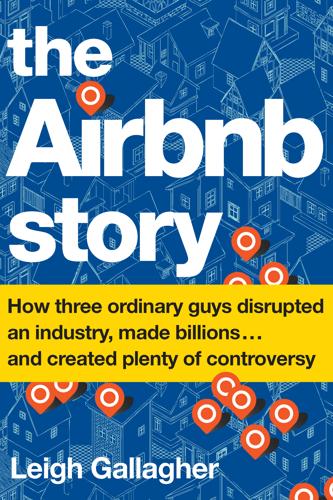
The Airbnb Story: How Three Ordinary Guys Disrupted an Industry, Made Billions...and Created Plenty of Controversy
by
Leigh Gallagher
Published 14 Feb 2017
I liked everything about “Jen’s” place, from her book collection, which mirrored mine, to the towels she’d fluffed and folded, to the handwritten card she left for me. (It helped that Jen and I had the same aesthetic taste, but then that’s precisely why I picked her listing.) “When you stay in an Airbnb, even if the host isn’t there, it’s personal,” says NYU’s Arun Sundararajan. “It’s intimate. There’s this connection that you have with this person, with their art, with their choice of linens, with their wedding pictures. And that evokes in us a sense of something that we have lost.” Whatever the press thought of the rebrand, Airbnb’s users seemed to “get” it—over the next few months, more than eighty thousand people went online and designed their own versions of the logo, a rate of consumer-brand engagement that would be considered off the charts by larger brands.
…
The scale of the Airbnb platform has grown so large that the fact that more things haven’t gone wrong may show that perhaps that trust is deserved. Some say we may also be heading toward a new paradigm of adjusted expectations for the brave new world of the sharing economy. “Fundamentally, this model of business isn’t going to have the same kind of protection that the hotels or the car-rental companies or the taxi commission provide,” says NYU’s Arun Sundararajan. “We always make a trade-off, and we’ll start to make different trade-offs with the sharing economy.” Some of the people who were victims of some of the worst incidents of breached trust seem to support this argument: Mark King of Calgary, whose home was trashed and had to be rebuilt, called the Kings’ experience “one in several million” and said, “It didn’t turn me off to the idea of Airbnb.”
…
But it’s also why so many people who were initially drawn to Airbnb, both on the host side and on the guest side, weren’t customers of another vacation-rental site who switched; they were an entirely different kind of customer. After dismissing it for so long, the hotel industry slowly started to confront its Airbnb Problem. Executives started talking openly about it at industry events. At the 2016 NYU International Hospitality Industry Investment Conference, a series of CEOs took the stage and, referring to the “second phase” of Airbnb, pointed out why it wouldn’t compete and cited the hotel industry’s strengths—that hotels were people- and service-focused, that there would always be a customer for hotels, and that the hotel industry just needed to double down on its strengths.

What Patients Say, What Doctors Hear
by
Danielle Ofri
Published 1 Feb 2017
“Patients are so varied as to what motivates and what challenges them,” Hamilton told me. “They have so many issues in their lives that make diabetes hard to manage, but these issues don’t come up in the regular doctor-patient encounter.” Research into adherence with blood pressure treatment by some of my colleagues at NYU reveals comparable findings.3 When doctors dominate the conversation and focus on the strictly medical issues of the visit—as opposed to the psychosocial aspects—the risk of nonadherence to medications is three-fold higher. When patients are experiencing particularly stressful life situations such as inadequate housing or unemployment, doctors’ avoidance of these issues is associated with a six-fold higher risk of nonadherence to medication.
…
When I was a medical student, there wasn’t any explicit listening training—we were simply tossed into the clinical waters. I wouldn’t necessarily advocate that now, though there’s certainly something to be said for jumping right in. As a beginning medical student with not a single clinical skill to offer, listening is all you have so listening is all you do. One of my first clinical encounters was at NYU’s cranio-facial clinic, where young children with severe birth abnormalities undergo dozens of intricate reconstructive surgeries. I remember just listening and listening as parents recounted their harrowing journeys (and also listening to the surgeons, who displayed a sensitivity and perceptiveness I’ve never seen surpassed).
…
And as the cranio-facial surgeons taught me by example when I was a beginning medical student, these skills are equally important for procedure-based doctors. But are all these training courses effective? A group of British researchers developed an intensive three-day training course for oncologists,2 based on a model created by Mack Lipkin, one of my colleagues from NYU. The doctors practiced extensively with actors who simulated patients, then received wide-ranging feedback from both the actors and an experienced facilitator. They also spent time critically reviewing videos of themselves in action. Compared with doctors who did not undergo the training, these participants demonstrated significantly more effective communication skills.
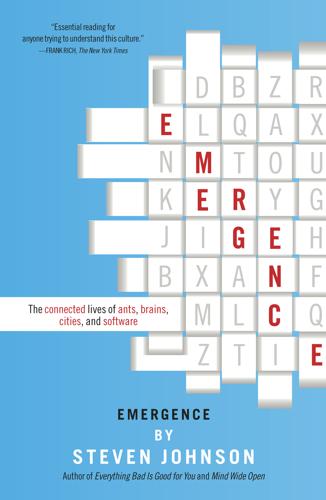
Emergence
by
Steven Johnson
By this standard, Eric Zimmerman is the Lou Reed of the new gaming culture. A stocky thirty-year-old, with short, club-kid hair and oversize Buddy Holly glasses, Zimmerman has carved out a career for himself that would have been unthinkable even a decade ago: bouncing between academia (he teaches at NYU’s influential Interactive Telecommunications Program), the international art scene (he’s done installations for museums in Geneva, Amsterdam, and New York), and the video-game world. Unlike John Maeda and or Jodi.org, Zimmerman doesn’t “reference” the iconography of gaming in his work—he openly embraces that tradition, to the extent that you have to think of Zimmerman’s projects as games first and art second.
…
Unlike John Maeda and or Jodi.org, Zimmerman doesn’t “reference” the iconography of gaming in his work—he openly embraces that tradition, to the extent that you have to think of Zimmerman’s projects as games first and art second. They can be fiendishly fun to play and usually involve spirited competition between players. But they are also self-consciously designed as emergent systems. “One of the pleasures of what I do,” Zimmerman tells me, over coffee near the NYU campus, “is that you get to see a player take what you’ve designed and use it in completely unexpected ways.” The designer, in other words, controls the micromotives of the player’s actions. But the way those micromotives are exploited—and the macrobehavior that they generate—are out of the designer’s control.
…
I recall more than a few casual conversations that also had an impact, primarily ones that involved David Shenk, Ruthie Rogers, Roo Rogers, Mitch Kapor, Kevin Kelly, Annie Keating, Nicholas Butterworth, Kim Hawkins, Rory Kennedy, Mark Bailey, Frank Rich, Denise Caruso, Liz Garbus, Dan Cogan, Penny Lewis, John Brockman, Rufus Griscom, Jay Haynes, Betsey Schmidt, Stephen Green, Esther Dyson, and my students at NYU’s ITP program, where Red Burns generously invited me to teach a graduate seminar on emergent software. My family, as always, was a constant source of ideas and encouragement—particularly my two direct connections to the world of medicine, my mother and my sister Sallie. For most of the writing of this book, Andrew Shroeder played an invaluable role as research assistant, tracking down obscure essays and reading alongside me.

Here Comes Everybody: The Power of Organizing Without Organizations
by
Clay Shirky
Published 28 Feb 2008
A perceptive appraisal of the contemporary technology-society interface.” —Booklist ABOUT THE AUTHOR Clay Shirky writes, teaches, and consults on the social and economic effects of the internet, and especially on those places where our social and technological networks overlap. He is on the faculty of NYU’s Interactive Telecommunications Program, and has consulted for Nokia, Procter and Gamble, News Corp., the BBC, the United States Navy, and Lego. Over the years, his writings have appeared in the New York Times, the Wall Street Journal, the Harvard Business Review, Wired, and IEEE Computer, and he is a regular keynote speaker at tech conferences.
…
It’s obvious why they would find Meetup valuable. Less obvious but as least as remarkable is how that particular group came to be in the first place. Every Meetup group navigates the tension between specificity and size. A Meetup group perfectly fit to an individual (bald fathers of two in Brooklyn who teach at NYU and like bagpipe music) would have exactly one member, while a Meetup that included huge numbers of potential members (parents, or TV watchers, or residents of Atlanta) would provide little in the way of commonality or conversational fodder: “So, you watch TV too, huh?” The ideal group exists in some equipoise between specific and generic.
…
As everyone from working biologists to angry air passengers starts to adopt those tools, it is leading to an epochal change. ACKNOWLEDGMENTS No one knows better than I that a book is the work of a group, and that the thanks I can offer will be both incomplete and inadequate to the debt. First, I must thank Red Burns for recruiting me to the Interactive Telecommunications Program at NYU; she has created not just a wonderful environment for teaching but for thinking. Dan O’Sullivan, the associate director, and my colleagues Tom Igoe and Nancy Hechinger offered vital comments and support. I must also thank many of my former students, who have always asked sharp questions and pushed for clear answers.
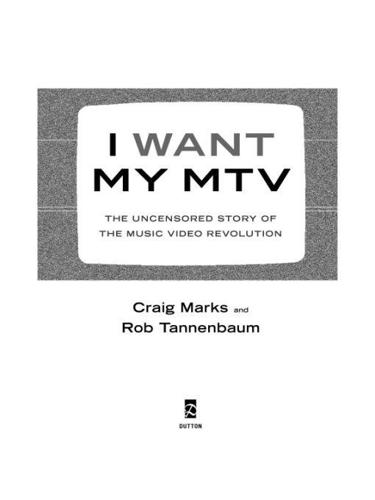
I Want My MTV: The Uncensored Story of the Music Video Revolution
by
Craig Marks
and
Rob Tannenbaum
Published 19 Sep 2011
We started madly dialing her house—we thought maybe she’d been in a car accident. We got her husband on the phone and he said, “Well”—long pause—“Meg has decided this is not for her.” MEG GRIFFIN: Maybe they thought I was being unprofessional. You know what? I didn’t give a shit. MARTHA QUINN, MTV VJ: I had graduated from NYU, where I’d worked at the radio station, WNYU. My radio name was Tiffany and I played urban music, like Shalamar and the Whispers. MEG GRIFFIN: It was clearly typecast, because look who they hired when I turned it down! Martha Quinn was a duplicate of me. People used to call her “Little Meg,” which irked her.
…
Mark Goodman almost got into a fist fight with them because they were rude to his wife. ADAM HOROVITZ: “Fight for Your Right (to Party)” started as a joke. The goal was “Let’s write a stupid frat song. That’ll be funny.” Then people liked it. So Rick said we had to make a video. RIC MENELLO, director: I was a desk clerk at the NYU dorm from midnight to 8 A.M. I knew a lot about movies. Rick Rubin used to come by. Russell Simmons used to come to the dorm. The Beastie Boys would come by, especially Adam Horovitz, because his dad was a play wright and a screenwriter. You pop by Menello at the front desk, bullshit a little, then split.
…
Now, Menello is a great character. He’s ten years older than me, and he knows more about film than anybody you know. He’s like an idiot savant of film, and he would preside behind the desk of Weinstein dorm. He would tell you about Orson Welles for four hours, and imitate him as he’s doing it. I’d graduated NYU film school in May of ’86, and I’d produced and directed my own student films, so Menello brought me in. He hit on the look and the feel of the video by saying, “It’s going to be like the party scene in Breakfast at Tiffany’s,” which is really just a long series of gags. In fact, we stole some of the gags from director Blake Edwards, particularly having a guy with an eye patch.
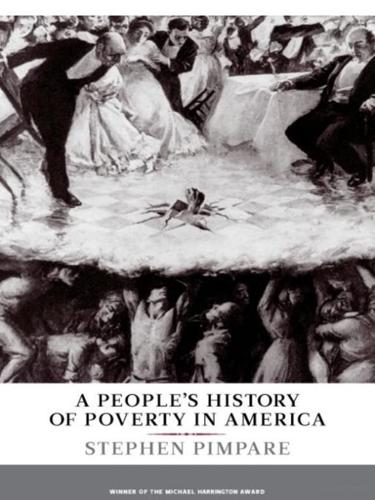
A People's History of Poverty in America
by
Stephen Pimpare
Published 11 Nov 2008
., Managing Welfare Reform in New York City (Lanham, MD: Rowman and Littlefield, 2005), 359. 11 Premilla Nadasen, Welfare Warriors: The Welfare Rights Movement in the United States (New York: Routledge, 2005), 50. 12 Gwendolyn Mink and Rickie Solinger, eds., Welfare: A Documentary History of U.S. Policy and Politics (New York: NYU Press, 2003), chap. 70. 13 Ibid., chap. 98. 14 John Kenneth Galbraith, The Affluent Society (Boston: Houghton Mifflin, 1958), 330. 15 Stephen E. Lankenau, “Stronger than Dirt: Public Humiliation and Status Enhancement Among Panhandlers,” Journal of Contemporary Ethnography 28, no. 3 (June 1999): 288–318. 16 Dwight Macdonald, “Our Invisible Poor,” New Yorker, January 19, 1963. 17 I adopt the use of “constants” here from Stephen T.
…
Roosevelt: Letters from Children of the Great Depression (Chapel Hill: University of North Carolina Press, 2002), 92. 71 Terkel, Hard Times, 47. 72 David Caplovitz, The Poor Pay More (New York: Free Press, 1963 [1967]). 73 Proceedings of the National Conference on Charities and Corrections (1912), 119. 74 Gwendolyn Mink and Rickie Solinger, eds., Welfare: A Documentary History of U.S. Policy and Politics (New York: NYU Press, 2003), chap. 63. 75 Gold, Jews Without Money, 255. 76 Noah Sawyer and Kenneth Temkin, “Analysis of Alternative Financial Service Providers,” Fannie Mae Foundation and the Urban Institute, February 19, 2004, www.urban.org/url.cfm?ID=410935; John P. Caskey, “Fringe Banking and the Rise of Payday Lending,” chap. 2 in Credit Markets for the Poor, ed.
…
Houck, Katalin Szanto, Mary Amanda Dew, Stephen E. Gilman, and Charles F. Reynolds III, “Social Inequalities in Response to Antidepressant Treatment in Older Adults,” Archives of General Psychiatry 63 (January 2006): 50–56. 17 Gwendolyn Mink and Rickie Solinger, eds., Welfare: A Documentary History of U.S. Policy and Politics (New York: NYU Press, 2003), chap. 61. We’ll set aside how it is that “lazy loafers” manage to muster the significant energy required to riot. 18 Vivyan C. Adair, “Disciplined and Punished,” in Reclaiming Class: Women, Poverty, and the Promise of Higher Education in America, ed. Vivyan C. Adair and Sandra L. Dahlberg (Philadelphia: Temple University Press, 2003), 32–33.
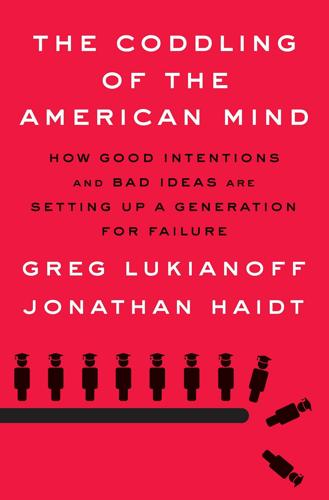
The Coddling of the American Mind: How Good Intentions and Bad Ideas Are Setting Up a Generation for Failure
by
Greg Lukianoff
and
Jonathan Haidt
Published 14 Jun 2018
The signs outline for members of the NYU community how to report one another anonymously if they experience “bias, discrimination, or harassment,” including by calling a “Bias Response Line.”37 NYU is not an outlier; a 2017 report by FIRE found that, of the 471 institutions cataloged in FIRE’s Spotlight on Speech Codes database, 38.4% (181) maintain some form of bias reporting system.38 Of course, there should be an easy way to report cases of true harassment and employment discrimination; such actions are immoral and unlawful. But bias alone is not harassment or discrimination. The term is not defined on the NYU Bias Response website, but psychological experiments have consistently shown that to be human is to have biases.
…
The webpage listed on the signs explains: “The New York University Bias Response Line provides a mechanism through which members of our community can share or report experiences and concerns of bias, discrimination, or harassing behavior that may occur within our community.” NYU Bias Response Line. (n.d.). Retrieved from http://www.nyu.edu/about/policies-guidelines-compliance/equal-opportunity/bias-response.html 38. FIRE. (2017). 2017 Report on Bias Reporting Systems. [Blog post]. Retrieved from https://www.thefire.org/first-amendment-library/special-collections/fire-guides/report-on-bias-reporting-systems-2017 39.
…
., 60–62, 75, 76, 98 Kipnis, Laura, 208–10 Krupenkin, Masha, 130–32 Ku Klux Klan, 12, 90, 91, 207 Kuran, Timur, 267 labeling, 38, 39, 50, 89, 145, 150, 277 LaFreniere, Peter, 181 Lagarde, Christine, 48 language development, 182 Lareau, Annette, 173–75, 179, 235 Las Vegas shooting, 12 law education, 205 Leahy, Robert, 37, 241–42 LEAP (Learning Early About Peanut Allergy), 20–21 learned helplessness, 158 Let Grow, 164, 238–39 Licence, 238–39 Levitsky, Steven, 131 Lexington High School, 190 Lilla, Mark, 74–75 Limbaugh, Rush, 132 locus of control, 46, 70, 158 Louisiana State University (LSU), 199 Lythcott-Haims, Julie, 165, 169–70, 190 Macaulay, Thomas Babington, 265 Mac Donald, Heather, 88–89, 126 Maher, Bill, 48 Mandela, Nelson, 81, 98 Manning, Jason, 209, 210 Mao Zedong, 100–101 Marano, Hara Estroff, 170 Marcus Aurelius, 95 Marcuse, Herbert, 64–71 marriage equality, 61–62 Martínez Valdivia, Lucía, 93 Marx, Karl, 64, 254 Marxism, 64, 65 matrix, matrices, 9–10 May Day, 201 McChrystal, Stanley, 251 McElroy, Wendy, 26–28 McGinn, Lata, 37 McLaughlin and Associates, 86 McNally, Richard, 29 McNeese State University, 203 McWhorter, John, 86 media, 130–32, 137 Meng Tzu (Mencius), 19 mental health, 26, 140, 143–61, 266 of college students, 156–59 in girls versus boys, 149–51, 154–56, 160, 161 self-harming and, 151, 195–96 and social media and phones, 146–47, 152–56, 159–61, 265 see also anxiety; depression #MeToo Movement, 12, 27 microaggressions, 40–46, 51, 71, 77, 145, 205, 210, 260 Middlebury College, 12, 87–88, 90, 103, 127 Mill, John Stuart, 248 Millennials, 30, 31, 156, 160, 175, 178, 184–85, 188, 213 Milton, John, 34 mindfulness, 242 mind reading, 38, 41, 212, 277 Misoponos, 1–4, 14, 34, 50 moral dependency, 209–12 moral judgments, intent versus impact in, 43–44, 46 moral matrices, 9, 10, 58 moral values, 61–62 Morgan, Kathryn Pauly, 68–69 Murray, Charles, 87–88, 103, 127 Murray, Pauli, 61, 62, 75–76, 260 Nader, Ralph, 24 National Association of Social Workers, 220 National Center for Missing & Exploited Children, 166, 168 Nazis and neo-Nazis, 12, 63, 64, 90–92, 133, 139, 140 negative filtering, 38, 177, 277 negative partisanship, 131–32, 140 Neuromancer (Gibson), 9–10 New Jersey Transit, 203–4 New Jim Crow, The: Mass Incarceration in the Age of Colorblindness (Alexander), 74 New Left, 65, 67 New Republic, 6 Newsome, Hawk, 75–76 Newton, Isaac, 125 New York, 106 New Yorker, 205 New York Sun, 163 New York Times, 6, 26, 88, 92, 95, 127, 133, 190, 226 New York University (NYU), 204–5 Nietzsche, Friedrich, 2, 22 1960s, 213–14, 216, 230 No Child Left Behind, 188 Noonday Demon, The: An Atlas of Depression (Solomon), 143 Northern Michigan University, 200, 211 Northwestern University, 208 Notre Dame vs. the Klan: How the Fighting Irish Defeated the Ku Klux Klan (Tucker), 207 NW Anxiety Institute, 163 Oakton Community College, 201 Obama, Barack, 11, 96, 140, 214 Obama, Malia, 250 Oberlin College, 24–25 Occupy Wall Street, 129 Oliver, Kelly, 106–7 Olivia (Claremont student), 53–55, 175 Once and Future Liberal, The: After Identity Politics (Lilla), 74–75 On Liberty (Mill), 248 oppression, 6, 44, 46, 57, 64, 65, 68–71 Orlando nightclub shooting, 12 Ostrom, Elinor, 191 Ostrom, Vincent, 191, 192 Our Kids: The American Dream in Crisis (Putnam), 173–76 overgeneralizing, 38, 39, 50, 277 overprotection, 13 in parenting, 126, 148, 164, 165, 167–72, 183, 201–2, 235, 236, 266 see also fragility; parenting; safetyism overreaction, 201, 203 overregulation, 201–3 parenting, 125, 126, 163–79, 192 and actual versus imagined risk, 167–68 and arrest for neglect, 171–72, 266 and assuming capability in children, 237 and child’s walking to places alone, 169–70, 237–39 cognitive distortions and, 177–78 concerted cultivation style of, 173, 174, 176, 179, 235–36 free-range, 164, 211, 238, 266, 268 Let Grow License and, 238–39 natural growth style of, 174, 179 overprotective (helicopter), 126, 148, 164, 165, 167–72, 183, 201–2, 235, 236, 266 prepare the child for the road, not the road for the child, 23, 237–40 risk taking and, 238 school policies and, 245–49 social class and, 173–76, 179 societal pressures and, 171 suggestions for, 235–51 Parker, Sean, 147 Paros, Mike, 118 Patz, Etan, 165, 166 Paxson, Christina, 27 “Paying the Price for Breakdown of the Country’s Bourgeois Culture” (Wax and Alexander), 107–8, 121 peanut allergies, 19–21, 23–24, 30, 164, 236, 237 Peck, Don, 10 personalizing, 277 Pew Research Center, 128 phones, 30, 146, 147, 152–54, 159–61, 194, 214 and limiting device time, 249–50 school and, 247 see also social media Pinker, Steven, 264, 265 play, 125, 126, 178, 181–94 brain and, 181–84, 193 free, 183–86, 188, 189, 191, 193–94, 235–37, 245–46, 266 importance of, 181–83, 193–94 outdoor, 184, 186, 266 playgrounds, 183, 238 risk and, 183–85, 236, 238, 246 polarization, 121, 125–41, 251, 265 affective, 129, 131–32, 141 outrage and, 133–38, 261 police, attitudes toward, 219–20 political correctness, 46, 94–95, 202 Political Tribes: Group Instinct and the Fate of Nations (Chua), 267 politics, 213–14 alt-right, 81, 84, 118, 139, 266 bipartisanship in, 131 birth year and, 213–14 filter bubble and, 130–31 left-wing, 5, 110–13, 126–27, 132–38, 141, 199 negative partisanship in, 131–32 from 1940s to 1980, 130 right-wing, 5, 63, 110–13, 118, 126, 127, 132–38, 141 universities and, 110–13, 121, 126–27, 132–38, 141, 199, 258 see also polarization Pomona College, 89–90 positives, discounting, 38, 177, 277 post-traumatic stress disorder (PTSD), 25, 28–29 power, 53, 66 intersectionality and, 68 prejudice, 25, 40–44, 46 see also racism Princeton Review, 189 principle of charity, 42, 51, 55, 243–44, 260 privilege, 68–71 problems of progress, 13–14, 170, 264 procedural justice, 217, 219–22, 227, 230, 231 professors: political perspectives of, 110–13, 121, 258 retraction demands and, 103–4, 107–8, 121 social media and, 137, 141, 201 trust between students and, 205–6, 212 viewpoint solidarity and diversity among, 108–13, 121, 258 proportionality, 217–19, 224, 227 proportional-procedural social justice, 220–23, 231 Putnam, Robert, 173–76, 236 racism, 6, 42, 44–45, 64, 71, 140 civil rights movement and, 60–61 Halloween costumes and, 56, 102, 165 intimidation and threats, 138–40 Jim Crow laws, 221 white supremacists, 12, 86, 87, 89–91, 94 Rage, The: The Vicious Circle of Islamist and Far Right Extremism (Ebner), 266–67 rape culture, 26–28 rape law, teaching of, 205 Rational Optimist, The (Ridley), 264–65 Rauch, Jonathan, 59, 267 Rawls, John, 213 Redelsheimer, Katrina, 82 Reed College, 93, 127 regret orientation, 278 religion: American civil, 60–61 rituals in, 100 Renaissance, 136 “Repressive Tolerance” (Marcuse), 65–67 Republicans, 129–31, 213, 216 see also politics rider-and-elephant metaphor, 35, 36, 51, 62 Ridley, Matt, 264–65 Righteous Mind, The: Why Good People Are Divided by Politics and Religion (Haidt), 9 Right on Crime, 74 Rise of the Warrior Cop: The Militarization of America’s Police Forces (Balko), 74 risk, 185, 237 actual versus imagined, 167–68 play and, 183–85, 236, 238, 246 see also safety rituals, 100 Roberts, John, 192–93 Roman statues, 136–37 Roof, Dylann, 139 Roosevelt, Franklin D., 74 Sacks, Jonathan, 53, 64 safety, 6–7, 9, 14, 24–25, 29–30, 96, 148 and actual versus imagined risk, 167–68 crime and, 167, 186, 238, 266 improvements in child safety, 168–69 meaning of, and concept creep, 24–25, 27, 246–47, 259 threats and, 138–40, 260–61 safetyism, 29–30, 85, 104, 121, 125, 164, 165, 194, 203, 246–47 on campus, 12, 24–26, 96–97, 125, 145–46, 148, 195–212, 268 cognitive distortions and, 177–78 dangers of, 168–71 exclusion and, 246–47 iGen and, 30–31, 156, 158, 161 overprotective parenting, 126, 148, 164, 165, 167–72 rise of, 24–26, 121 safe spaces, 26–31, 96, 145, 210, 259 school and, 236 trigger warnings, 6–7, 24, 28, 29, 31, 145, 210 Salem witch hunts, 99–100 San Bernardino attack, 12 Sanders, Bernie, 213 Savio, Mario, 84 schemas, 36–38, 57, 150, 177 Schill, Michael, 92 school (K–12), 59, 185–89, 194 college admissions and, 189–91, 194, 235, 236, 257–58, 268 debate teaching in, 248 discussions on coursework in, 248 first-grade readiness checklists, 186–87, 238 grades in, 190 homework, 185–86, 245 ideas for elementary schools, 245–47 ideas for middle schools and high schools, 247–49 identity politics and, 244 influencing policies at, 245–49 kindergarten, 185, 187–88 phones at, 247 recess at, 245–47 safetyism and, 236 year of service or work between high school and college, 250–51, 257 Schulz, Kathryn, 244 “see something, say something,” 203–4 Seligman, Martin, 158 September 11, 2001, attacks, 200, 203 Service Year Alliance, 251 sexism, 6, 44, 71 sexual misconduct and assault, 27 law education and, 205 #MeToo Movement and, 12, 27 Shakespeare, William, 34 Shapiro, Ben, 83 Sheskin, Mark, 218 shoulds, 277 Shuchman, Daniel, 238 Shulevitz, Judith, 26–28 Silverglate, Harvey, 74 Simmons, Ruth, 259 Singal, Jesse, 106 Skenazy, Lenore, 163–65, 169, 171, 172, 177, 185, 211, 238 sleep, 250 smartphones, see phones Smith College, 72 snowballs, and danger, 236 social class: parenting and, 173–76, 179 universities and, 174, 176 social justice, 111, 125, 126, 213–32 and correlation as causation, 227–29, 231–32 definition and use of term, 217, 220–21, 223 equal-outcomes, 223–27, 230, 231 major news stories related to, 214–16 proportional-procedural, 220–23, 231 social media, 5, 10, 30, 130, 133, 139, 145, 194, 203, 259 call-out culture and, 71–73 curation and comparisons in, 154–55, 161 Facebook, 49, 55, 105, 107, 130, 146–47, 207, 265 impact on girls, 154–56 and limiting device time, 249–50 mental health and, 146–47, 152–56, 159–61, 265 positive trends in, 265–66 professors and, 137, 141, 201 Twitter, 81, 130, 135–37, 147, 265 virtue signaling and, 73 Socrates, 49, 50 Solomon, Andrew, 143 Solzhenitsyn, Aleksandr, ix, 243 Soviet Union, 130, 243 Spellman, Mary, 54–55, 57, 71, 102–3, 105–6, 134 Spencer, Richard, 139 Spock, Benjamin, 174 sports, 152, 189, 225–26 Title IX and, 224–25 spurious correlations, 152, 228 Stalin, Joseph, 243 Stanger, Allison, 87–88, 103, 127, 140 Starmans, Christina, 218 statues, Greco-Roman, 136–37 “sticks and stones” saying, 210 Stoicism, 95–96, 98 Stone, Geoffrey, 255, 279 Student Nonviolent Coordinating Committee, 84 Sue, Derald Wing, 40–42 suicide, 5, 24, 30, 143–44, 152 academic competition and, 190 rates of, 150–51, 160, 183, 190 sharing thoughts of, 195–96 Suk Gersen, Jeannie, 205 summer camps, 240 Supreme Court, 61 Tajfel, Henri, 57–58, 76 Taleb, Nassim Nicholas, 22–23, 28, 164, 170 Tannen, Deborah, 154 Taylor, Keeanga-Yamahtta, 135–36 Tea Party, 129 telos, 253–55 Tenbrink, Tyler, 139 terrorism, 11–12, 204 September 11, 2001, attacks, 200, 203 Tetlock, Phil, 229 Texas State University, 63–64, 67 Theodoric, 34 Theory of Justice, A (Rawls), 213 Thinking in Bets: Making Smarter Decisions When You Don’t Have All the Facts (Duke), 248–49 threats, 138–40, 260–61 Three Felonies a Day: How the Feds Target the Innocent (Silverglate), 74 Thucydides, 108–9 Title IX, 206–8, 223–25 Tocqueville, Alexis de, 191, 195 tolerance, 65–66 transgenderism, 104–5, 205–6 transracialism, 104 trauma, 25–26, 28–29, 31–32, 33 PTSD, 25, 28–29 Treatment Plans and Interventions for Depression and Anxiety Disorders (Leahy, Holland, and McGinn), 37 tribalism, 57–59, 76, 130, 131, 153, 267 see also groups trigger warnings, 6–7, 24, 28, 29, 31, 145, 210 Trump, Donald, 12, 82–83, 87, 96, 112, 114, 127, 135, 139, 140 Charlottesville and, 91, 94 supporters of, 75–76, 81, 83 truth, 253–55, 268 Tucker Carlson Tonight, 118, 133, 134 Turning Point USA (TPUSA), 138 Tuvel, Rebecca, 104–7, 121, 127 Twenge, Jean, 30–31, 146–49, 152–54, 159, 160, 164, 185 Twitter, 81, 130, 135–37, 147, 265 Tyler, Tom, 219–20 Tyranny of the Majority, The (Guinier), 222 UCLA, 92 Unequal Childhoods: Class, Race, and Family Life (Lareau), 173–75 unfair comparisons, 278 universities, 5, 8, 10, 11, 59, 125–26, 214 admissions to, 189–91, 194, 235, 236, 257–58, 268 amenities at, 199, 211 bureaucracy at, 125, 126, 192, 194, 195–212 canon wars at, 7 Chicago Statement and, 255–56, 268, 279–81 consumerist mentality at, 198–200, 211 corporatization of, 197–98, 211 cross-partisan events at, 261 distorted thinking modeled by administrators at, 200–203 diversity among professors in, 108–13, 121, 258 diversity among students in, 43, 258, 260 expansion of, 197–98 freedom of inquiry at, 255–57 free speech at, 5–6, 31, 65, 84, 200–203 heckler’s veto and, 257 iGen and, 31, 145, 148, 156–59, 174–75, 185 intellectual virtues and, 258 intimidation and violence at, 81–98 mental health and, 156–59 as multiversities, 197, 253 political orientation and, 110–13, 121, 126–27, 132–38, 141, 199, 258 preparation for life following, 8–9 productive disagreement in, 258–60 regulations at, 192, 200–203, 211–12 and responding to pressure campaigns and outrage, 256–57 retraction demands at, 103–4, 107–8, 121 safe spaces and, 26–31, 96, 145, 210, 259 safetyism at, 12, 24–26, 96–97, 125, 145–46, 148, 195–212, 268; see also safetyism school spirit at, 260 social class and, 174, 176 speakers at, 6, 27, 47–51, 87, 199 suggestions for, 253–62 trigger warnings and, 6–7, 24, 28, 29, 31, 145, 210 trust between professors and students at, 205–6, 212 truth and, 253–55, 268 wisdom and, 253–62 University of California, 197 Berkeley, 12, 81–87, 90, 94, 120 Los Angeles, 92 University of Central Florida, 207 University of Chicago, 119, 251, 253, 268 Chicago Statement on Principles of Free Expression, 255–56, 268, 279–81 University of Cincinnati, 203 University of Connecticut, 202 University of Iowa, 136–37 University of Michigan, 184, 207 University of Missouri, 11 University of Northern Colorado, 205–6 University of Oregon, 92 University of Pennsylvania, 107, 108 University of Virginia, 12, 188, 223–27 University of West Alabama, 202 Unsafe at Any Speed (Nader), 24 us versus them; good people versus evil, 3–4, 14, 53–77, 85, 90, 92, 119–20, 132, 177, 206, 243–44, 247, 259–60 see also groups vaccination, 21 Valenti, Jessica, 26–27 Venker, Suzanne, 49 victimhood culture, 209–10 victimization, 41–42, 46, 57, 126 viewpoint diversity, 11, 109, 112–13, 121, 248, 258 vindictive protectiveness, 10, 235 violence, 81–98 definition of, 85–86 words as, 84–86, 89, 94–98, 145, 158 Virginia Rowing Association, 223 virtue signaling, 73 vulnerability, culture of, 209, 210 see also fragility Wall Street Journal, 222 Walsh, Adam, 165–66 Walsh, John, 166 Ward, Douglas Turner, 114 War on Cops, The (Mac Donald), 88 Washington Post, 93, 199 Wax, Amy, 107–8, 121, 126 Weinstein, Bret, 114–19, 127, 133 “what if” questions, 278 Where You Go Is Not Who You Will Be: An Antidote to the College Admissions Mania (Bruni), 190 white genocide, 135, 136 white nationalists and white supremacists, 12, 86, 87, 89–91, 94, 135, 136, 139, 140, 266 Will, George, 48 William & Mary, 92 Williams College, 49–50 Wilson, E.
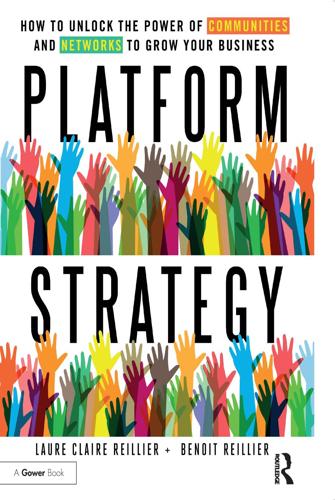
Open for Business Harnessing the Power of Platform Ecosystems
by
Lauren Turner Claire
,
Laure Claire Reillier
and
Benoit Reillier
Published 14 Oct 2017
As expected (see Figure 12.1), close friends and family are the most trusted (4.7/5), while online strangers are the least trusted (1/5). What is fascinating is the extent to which adding a picture and having a validated identity, as well as positive reviews on a platform, can make a total stranger almost as trusted as a family member (4.2/5). BlaBlaCar and NYU Stern Professor Arun Sundararajan also carried out an extensive study in 2016 over 18,000 BlaBlaCar members in 11 European countries. It validated earlier survey results across all countries, showing the universality of new online trust tools.3 The ability to create a trusted online profile is a very recent phenomenon that is partly linked to the ubiquitous availability of social networks and the unique ability for platforms to collect and display relevant data that increase trust between participants.4 Establishing trust between participants is therefore one of the foundational pillars of platforms and critical to their successful scaling.
…
Notes 1 For an accessible summary of the argument and its implications for platforms, see R. Fisman and T. Sullivan, The Inner Lives of Markets: How People Shape Them – and They Shape Us, London: Public Affairs/John Murray Learning, 2016. 2 Betrustman Report, Chronos & BlaBlaCar, December 2012. 3 See BlaBlaCar, NYU Stern, Entering the Trust Age, 2016. In this study, respondents were asked to rank on a scale from 0 to 5 the level of trust they gave to different types of relationships, from a social network contact through to friends or family. A BlaBlaCar member with a full online profile was then included in the mix.
…
This percentage is largely above the percentage of people who highly trust their colleagues (58%) or neighbors (42%), and close to the percentage of people who highly trust their friends (92%), revealing that trust built by online platforms can supersede offline relationships. 4 Arun Sundararajan, The Sharing Economy, Cambridge, MA: MIT Press, 2016, p. 61. 5 Rachel Bostman, the Trust Stack, www.rachelbotsman.com. 6 D. H. Maister, R. Galford and C. Green, The Trusted Advisor, London: Simon & Schuster, 2 January 2002. Trust, governance and brand 171 7 BlaBlaCar, NYU Stern, Entering the Trust Age, 2016. 8 This feedback profile example is from StuffUSell, the UK’s leading trading assistant. This popular merchant helps people who don’t have the time or don’t have enough positive feedback to efficiently sell on eBay. 9 H. Hagiu and S. Rothman, ‘Network Effects Aren’t Enough’, Harvard Business Review, 94(4), 2016, https://hbr.org/2016/04/network-effects-arent-enough. 10 Survey from BlaBlaCar showed that 75% of participants believed in the importance of the platform in regulating the community.

Competition Overdose: How Free Market Mythology Transformed Us From Citizen Kings to Market Servants
by
Maurice E. Stucke
and
Ariel Ezrachi
Published 14 May 2020
But in fact the unpopular, exploitive practice did not stop. Resort fees on the Strip, and throughout the United States, continued to increase, and more competitors kept adding them. A trend analysis report written by a professor at NYU concluded that such “fees and surcharges are highly profitable; many have incremental profitability of 80 to 90 percent or more of the amounts collected, so they represent significant contributors to industry profits.”48 Source of data: 2017 NYU School of Professional Studies: Trend Analysis Report49 So a powerful casino chain takes a stand against an unpopular, exploitive practice. And not only does it fail, but by 2013, Caesars gives up on its quest to warn consumers of these resort fees and joins the race to exploit.
…
., “Economics at the FTC: Drug and Pbm Mergers and Drip Pricing,” Review of Industrial Organization 41, no. 4 (2012): 303–319, https://doi.org/10.1007/s11151-012-9360-x (discussing Laibson’s testimony); see also Xavier Gabaix and David Laibson, “Shrouded Attributes, Consumer Myopia, and Information Suppression in Competitive Markets,” Quarterly Journal of Economics 121, no. 2 (2006): 505, 506, http://nrs.harvard.edu/urn-3:HUL.InstRepos:4554333. 41.Sullivan, Economic Issues. 42.Federal Trade Commission Warning Letters. 43.Bjorn Hanson, “U.S. Lodging Industry Fees and Surcharges Continue Upward Trend in 2011 to New Record—$1.8 Billion,” NYU School of Professional Studies: Trend Analysis Report, September 20, 2011, http://lb1.scps.nyu.edu/content/scps/about/newsroom/news/2011/u_s_lodging_industry.html. 44.“Showgirls Take to Las Vegas Boulevard for Rally,” Las Vegas Blog, July 21, 2011, http://blog.caesars.com/las-vegas/las-vegas-hotels/ballys-las-vegas/showgirls-take-to-las-vegas-boulevard-for-rally/. 45.Ron Sylvester, “Caesars to Start Charging Resort Fees, Says Guests Demanding Them,” Las Vegas Sun, February 21, 2013, https://lasvegassun.com/news/2013/feb/21/caesars-hotels-will-start-charging-resort-fees/. 46.Benston, “Harrah’s Sees $$.” 47.Sylvester, “Caesars to Start Charging Resort Fees.” 48.Hanson, “U.S.
…
News Ranking Overall Average % of Students Matriculating Brown 14 3.17% Columbia 5 3.23% Cornell 14 3.0% Dartmouth 11 2.2% Harvard 2 4.48% Penn 8 3.16% Princeton 1 2.28% Yale 3 3.28% Ivy League Subtotal 24.8% Other Top 30 2018 U.S. News Ranking Overall Average % of Students Matriculating Cal Tech 10 0.25% Carnegie Mellon 25 1.1% Chicago 3 3.47% Duke 9 1.37% Emory 21 1.06% Georgetown 20 2.18% Johns Hopkins 11 0.93% MIT 5 1.04% NYU 30 3.02% Northwestern 11 1.96% Notre Dame 18 0.42% Rice 14 0.19% Stanford 5 2.26% USC 21 1.97% Vanderbilt 14 0.84% Wake Forest 27 0.42% Washington University in St Louis 18 2.31% Other Top 30 Subtotal 24.79% Little Ivies 2018 U.S. News Ranking Overall Average % of Students Matriculating Amherst 2 1.14% Bates 23 0.62% Bowdoin 3 1.13% Colby 12 0.75% Connecticut College 46 0.38% Hamilton 18 1.03% Middlebury 6 1.08% Trinity 44 0.53% Tufts 28 (National) 1.89% Wesleyan 21 1.18% Williams 1 1.21% Little Ivies Subtotal 10.94% Other Top 30 Liberal Arts 2018 U.S.

USA's Best Trips
by
Sara Benson
Published 23 May 2010
Downtown in Greenwich Village, you can find the urban campus of New York University. It has no defined quad, but is centered on Washington Square Park, with its famous arch that you’ve seen in every rerun of Friends. Founded later than the other universities, in 1831, NYU is known for its art, business and law schools. NYU (masquerading as UNY) is also where Keri Russell as “Felicity” matriculated. Walk down West 4th St and admire the brick NYU School of Law where JFK Jr got his degree. Further east on 4th St is Bobst Library, a severe orangey-red brutalist cube of a building, designed by Phillip Johnson, which houses one of New York’s largest libraries
…
The decor is subdued, the music quiet enough to carry on a conversation. Come for the kuzu stew and stay for the New York tofu cheesecake and homemade soy ice cream!” Liz Ureneck, NYU, New York * * * If you’re near NYU, unpack your bag at the basic but comfortable Washington Square Hotel. From here you’ll easily be able to go carousing up and down Bleecker St with the NYUers into the wee hours. And if the next morning’s hangover isn’t enough to convince you to hightail it home, then drop by the NYU Office of Admissions right down the street – surely they’d be happy to hand you an application. Got your transcripts ready? David Ozanich * * * TRIP INFORMATION GETTING THERE Williamsburg is 50 miles east of Richmond via the I-64.
…
A couple of hour’s drive north, there’s a place called New York and it has enough universities to rival Boston for the college-town crown. But the roost is ruled by two dueling divas, one from uptown and the other downtown: Columbia University and New York University. Only one of them is Ivy League (Columbia, if you didn’t know) and that forever rains on NYU’s parades. To its constant chagrin, no matter how many Olsen twins enroll, NYU will never have the same golden luster as fancy-schmancy Columbia. But both are pretty cool schools, all things considered. Columbia is another of the colonial colleges (founded in 1754 as King’s College) and counts both presidents Roosevelt among its alumni.
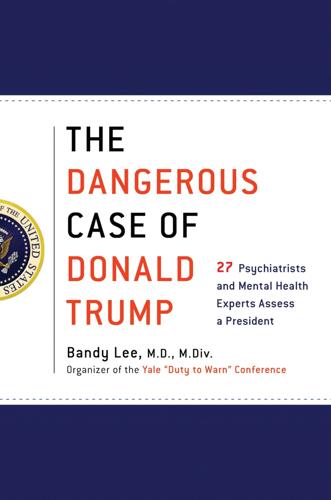
The Dangerous Case of Donald Trump: 27 Psychiatrists and Mental Health Experts Assess a President
by
Bandy X. Lee
Published 2 Oct 2017
Born in the post-Holocaust displacement in the Ural Mountains, she has lived and received her education in the Soviet Union, Poland, Italy, and the United States. That journey included essential lessons in history, geography, culture, art, and politics. Postgraduate training and faculty appointments followed, in psychiatry at Hillside Hospital on Long Island, and in psychoanalysis at NYU Psychoanalytic Institute (now the Institute for Psychoanalytic Education, affiliated with NYU Medical School). She is editor of Issues in Education for The American Psychoanalyst of the American Psychoanalytic Association. TRUMP’S DADDY ISSUES: A Toxic Mix for America STEVE WRUBLE, M.D. As a psychiatrist, I am interested in why people are the way they are.
…
Gilligan is a psychiatrist and author who has studied the motivations behind violent behavior over his twenty-five years of work in the American prison systems. “If we psychiatrists who have experience in assessing dangerousness, if we give passive permission to our president to proceed in his delusions, we are shirking our responsibility,” Gilligan said. Today a senior clinical professor of psychiatry at NYU School of Medicine, Gilligan told Dr. Lee’s town hall attendees, “I don’t say Trump is Hitler or Mussolini, but he’s no more normal than Hitler.” We don’t have to rely on psychiatrists to see that this president is not consistent in his thinking or reliably attached to reality. We have had vastly more exposure to Donald Trump’s observable behavior, his writing and speaking, than any psychiatrist would have after listening to him for years.
…
It is a privilege we still enjoy in the United States, and it will be the skill we need to prevent us from careening toward crisis, as it seems Donald Trump would have us do. Betty P. Teng, M.F.A., L.M.S.W., is a trauma therapist in the Office of Victims Services of a major hospital in Lower Manhattan. A graduate of Yale College; UCLA’s School of Theater, Film, and Television; and NYU’s Silver School of Social Work, Ms. Teng is in psychoanalytic training and practices at the Institute for Contemporary Psychotherapy. She is also an award-winning screenwriter and editor whose credits include films by Ang Lee, Robert Altman, and Mike Nichols. References Chun, Wendy. 2016. Updating to Remain the Same: Habitual New Media.
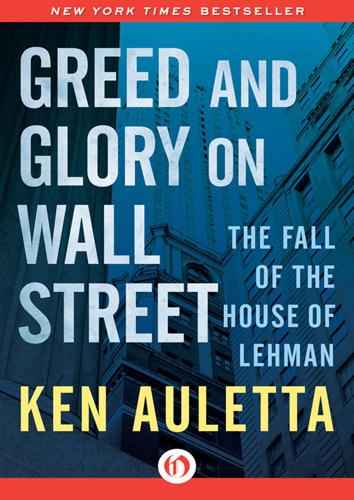
Greed and Glory on Wall Street: The Fall of the House of Lehman
by
Ken Auletta
Published 28 Sep 2015
With a liberal arts and accounting degree, in 1947 Glucksman migrated to Wall Street, where he first went to work as a credit reporter with Dun & Bradstreet. He then held a series of other unsatisfactory jobs. Restless, he enrolled nights at New York University’s Business School, receiving an M.B.A. in finance in 1951. He credits the years at N.Y.U. with opening his “intellectual horizons”; his gratitude is evident through his service as an N.Y.U. trustee and his sponsorship of the L. Glucksman Institute for Research in Securities Markets at the N.Y.U. Graduate School of Business Administration. In 1952, Glucksman became a securities analyst at A. G. Becker, a Wall Street investment bank. He left to become an arbitrageur—purchasing securities, commodities or currency in one market and selling them at a better price in another market—for L.
…
This desire led to discussions with Laurence and Robert Tisch of the Loews Corporation. Glucksman felt comfortable with Larry and Bob Tisch. They were all alumni of New York University and had undertaken to raise funds for the university. Each man sat on N.Y.U.’s board. Larry Tisch liked Lew Glucksman, and fondly remembered the dinner they once shared at N.Y.U. when these two millionaires mourned the death of the five-cent hotdog, and Glucksman told him that he still did his own laundry rather than send it out and pay “ridiculous” prices. They talked about Loews putting up between $150 and $200 million to purchase a 50 percent interest in Lehman’s stock.
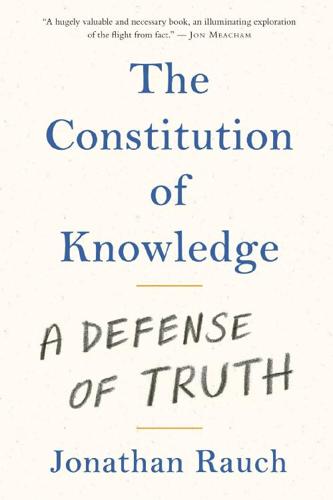
The Constitution of Knowledge: A Defense of Truth
by
Jonathan Rauch
Published 21 Jun 2021
In a lecture at Case Western Reserve University in 2018, Haidt, the psychologist, said: “I don’t take any chances at NYU. I don’t say anything controversial. I can be controversial with you, because you can’t report me. You can’t do anything to me if I say something that offends you. But if I’m at NYU, there’s a sign in every bathroom telling students what number to call or what email to send to report me or anyone else who says something that they think is offensive. So I just don’t take chances at NYU.” All downside. Ironically, although canceling chilled dissent on the center and left, it was a godsend to trolls on the right.
…
It is only after we appreciate the miracle of knowledge production (the “constitution” of knowledge) that we can understand the tragedy befalling us now, as key institutions and practices decay. This book is a magnificent integration of psychology, epistemology, and history. It is a joy to read—deep insight after deep insight, embedded in playful writing, about one of the most important problems of the 2020s.” —JONATHAN HAIDT, Thomas Cooley Professor of Ethical Leadership, NYU-Stern School of Business; author of The Righteous Mind; co-author of The Coddling of the American Mind “The digital age was supposed to bring about the blessings of unlimited knowledge fueled by radically egalitarian free speech allowing everyone to access, share, and learn from freely available information to the benefit and progress of all.
…
., 178–80; digital model compared to, 135–38; disinformation awareness of, 186–88; public trust in, 174, 188; Rushdie and, 190; Trump and, 5, 6, 171, 180–81, 235; viewpoint diversity in, 240–41. See also conservative media; journalism Newton, Isaac, 65–66 New York Times: Cotton’s op-ed essay in, 199–200, 206–07; liberal readers of, 177; subscription base for, 137; on traditional news viewership trends, 188; on Trump, 169–70 New York University (NYU), 14 nihilism and trolling, 158–60 Nimmo, Ben, 187 Niven, Nephi, 256–57 no bullshitting, 107–08, 143, 245 Noelle-Neumann, Elisabeth, 195 NPR (Nation Public Radio), 177 Nupedia, 138–39 Nygaard, William, 190 Nyhan, Brendan, 30, 177, 185 Obama, Barack, 9, 40–41, 170, 209 objectivity: academic doctrines vs., 261; from diversity, 193–94; government agencies and, 241; journalism and, 240; of reality, 9, 86–87; reality-based communities and, 100–103, 108; Wikipedia and, 141, 147 O’Connor, Cailin: The Misinformation Age (with Weatherall), 36, 121–22, 196 Olson, Mancur, 229 ONE (magazine), 253 optimism bias, 26 Orbán, Viktor, 157 orchestration in cancel culture, 219 Oreskes, Naomi: Why Trust Science?

WikiLeaks and the Age of Transparency
by
Micah L. Sifry
Published 19 Feb 2011
By seeing everyone’s comments and joining in the give-andtake, I could even play a role in the public conversation we were all having. It didn’t matter who I was or whether I had been credentialed by the “authorities” running the event as an expert. All that mattered was whether what I had to say had any credibility. I was now a full-fledged member of the group that NYU scholar Jay Rosen has dubbed “the people formerly known as the audience.”4 Being connected in real-time also meant that we, the ex-audience, had a new ability to talk back to the powers that be, or as digital visionary Howard Rheingold likes to say, to be “crap-detectors” and “call bullshit” when we see it.5 Nothing illustrates that better than a moment at the first Personal Democracy Forum in May 2004.
…
As Malamud recounted at a keynote address at the 2009 Government 2.0 Summit in Washington, “What we found when we placed these so-called products on the Internet—for free—was that these reports were not just fodder for a few well-heeled financial professionals, a commodity used to make the Wall Street money machine function, but instead that these public reports of public corporations were of tremendous interest to journalists, students, senior citizen investment clubs, employees of the companies reporting and employees 66 MICAH L. SIFRY of their competitors, in short a raft of new uses that had been impossible before.”3 By late 1994, other partners were joining in Malamud’s quirky venture. MIT, NYU, Sun Microsystems, MCI Communications, R. R. Donnelly & Sons, and Time Inc. announced they were working to expand the databases provided to include patents, trademarks, and all current SEC filings. As Vint Cerf, one of the creators of the Internet (who was then at MCI and now works for Google as its senior Internet evangelist), said at the time, “I think the rest of the world is listening to how valuable it is for a government to provide information to its citizens.”4 By the summer of 1995, Malamud was providing SEC records on a same-day basis, thanks to donations from two private companies.
…
In 2007, in a first for courtroom transparency, a rotating team of six bloggers from FireDogLake.com live-blogged the Scooter Libby trial, providing real-time coverage that the rest of the media didn’t see as a priority, but came to rely on. (Libby, Vice President Dick Cheney’s chief of staff, was convicted for obstructing justice and perjury in the Valerie Plame affair, which ironically enough was about the unauthorized leaking of classified information. President Bush commuted his prison sentence.) At the time, NYU press critic Jay Rosen marveled: That an online community could, of its own free will, scare up support for six correspondents at a big trial; that the correspondents would work as hard as they did informing a live public; that they did it for expenses (no pay) and the joy of informing people who depend on you, this is a small, but remarkable part of the Libby case to reflect on, if we’re still aftermathing it.
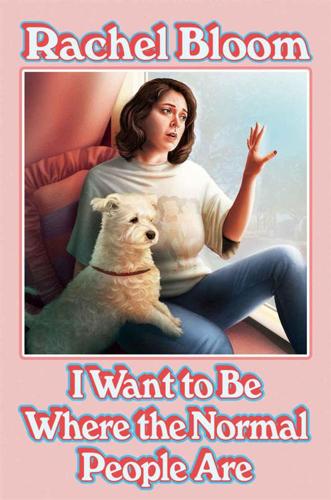
I Want to Be Where the Normal People Are
by
Rachel Bloom
Published 17 Nov 2020
Chocolate Seller Max Brenner Union Square November 2008–January 2009 Worked over the holidays at this popular chocolate shop and restaurant. One time in the storeroom, a co-worker said that if he couldn’t make a woman cum with “just his dick” he didn’t feel like a man. Have no idea how the conversation segued from chocolate to that. Fundraising Caller NYU Phonathon January 2007–December 2007 The main fundraising program for NYU. I called alumni to ask them to give the school money with the justification that the “Princeton Review rates schools partially based on alumni satisfaction and the way that’s recorded is through donations from alumni like you!” I took a long, hard look at myself in the mirror when one caller said, “Sweetie, you and I are both smart women and you know that’s not true.”
…
(key change) TOLERATED! The Bullies circle Rachel with giant feathers. ADOLESCENT RACHEL BLOOM THEY LIKE ME NOW AND WITH THIS I FEEL A REBIRTH. THEY LIKE ME NOW WHICH GOES TO SHOW MY TALENT IS SYNONYMOUS WITH MY SELF-WORTH! She gets an acceptance letter. ADOLESCENT RACHEL BLOOM Wow, I got into NYU, Tisch School of the Arts! This confirms my trajectory! COLLEGE RACHEL BLOOM walks in. Her boobs are even bigger. COLLEGE RACHEL BLOOM Tagging you out, adolescent me! We’re in college now and the freshman fifteen has made us a C cup! Adolescent Rachel Bloom leaves; College Rachel picks up the song.
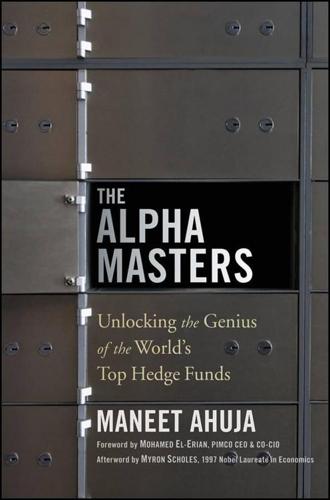
The Alpha Masters: Unlocking the Genius of the World's Top Hedge Funds
by
Maneet Ahuja
,
Myron Scholes
and
Mohamed El-Erian
Published 29 May 2012
That was my strategy.” He tactfully executed just that. When the dean of NYU suggested he apply to Harvard Business School, Paulson leapt at the opportunity, and John Whitehead, who was a member of the Harvard Board of Trustees, offered to write his recommendation. After gaining admission, he received the prestigious Sidney J. Weinberg/Goldman Sachs scholarship, an endowment started in 1950 for exceptional students. He was elated. It was at Harvard that Paulson really hit his stride. After graduating summa cum laude from NYU business school as valedictorian of his class, he felt that he had really earned his spot with the rest of the world’s brightest business-minded students.
…
He’d been in the business for over 15 years focusing on event-driven transactions, and the financial crisis of 2008 happened to be the biggest event-driven trade since the Great Depression. Paulson began his testimony with a synopsis of his background— graduating summa cum laude from New York University (NYU) in 1978, attending Harvard Business School as a Baker Scholar in 1980, and working as a managing director of mergers and acquisitions at Bear Stearns. He opened his hedge fund in 1994, and by 2008, it was the fourth-largest such fund in the world. He then explained how it happened that his firm managed to pull off a $15 billion trade.
…
He liked being successful, being independent, making money, and having employees, and this exposure gave him his first taste of what it would be like to run his own firm. Gradually, however, he realized that if he wanted to succeed in business, he would have to go back and finish college. He entered NYU. Two years behind his classmates, Paulson felt a certain pressure. This time, though, he was keenly focused on business and pushed himself to excel, getting straight A’s. As a senior, Paulson took a course that changed his life forever. It was called The Distinguished Adjunct Professor Seminar in Investment Banking, a semester-long course that was led by John Whitehead, who, at the time, was chairman of investment banking at Goldman Sachs.
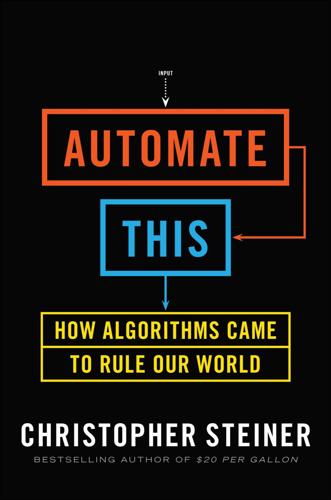
Automate This: How Algorithms Came to Rule Our World
by
Christopher Steiner
Published 29 Aug 2012
In spite of the protests, the AMEX agreed to allow Peterffy’s traders to bring small tablet computers into the pits. Peterffy now had a new problem: he had no tablet computer of any kind. Nor did anybody else, thirty years before the advent of the iPad. The devices would have to be built from scratch. With a vague idea of what he wanted, Peterffy brought in physics PhD candidates from NYU who helped him construct small rectangular boxes out of Mylar, a black plastic. The boxes measured roughly eight inches by twelve and were two inches deep. Inside were packed transistors and circuit boards that gave way to a top panel that included a series of gold wires. The wires detected when users pressed them with a finger, creating a touchscreen.
…
Andrew Montalenti didn’t need to be shoved out the door of Morgan Stanley. He just left in March of 2009 after spending three years as a hacker on Wall Street and thinking, “I never got the idea I was solving real problems.” Montalenti accepted a job at Morgan in 2006 halfway through his senior year at NYU, where he majored in computer science. The investment bank gave him a $10,000 signing bonus and a September start date, which Montalenti says made taking the job that much easier. All of the new recruits fall in love with the idea of spending the summer traveling through Europe or South America on Morgan’s money, without a care in the world.
…
“Everybody knew that Wall Street needed quantitative people—they recruited the math department at Harvard heavily,” he explains. Hammerbacher wasn’t keen on becoming some quant analyzing derivatives and writing the next great trading algorithm. So when he joined his girlfriend in the city that summer, he had plans to start a math PhD at NYU in the fall. To kill time and make some money, he took an internship at Bear Stearns for the summer. As happens so often on Wall Street, one little gold piece led to the promise of more, and Hammerbacher dropped his doctorate plans and signed on full-time with Bear. He found himself inside the churning heart of Bear’s quantitative mortgage machine that worked tirelessly on algorithms and data crunching to support their myriad positions in the housing market.
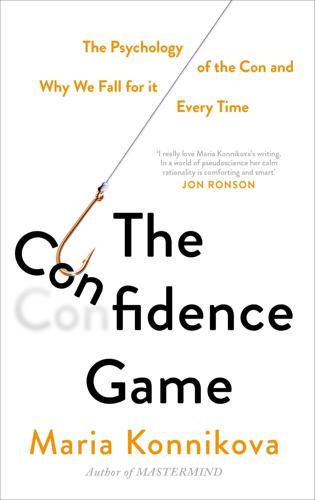
The Confidence Game: The Psychology of the Con and Why We Fall for It Every Time
by
Maria Konnikova
Published 28 Jan 2016
And so they make financial woes (or windfalls) front and center of their put-up—much as Sylvia Mitchell did with her victims, bringing up financial considerations right away: they had too great an attachment to money; they were in an emotional predicament because they had an unhealthy relationship with material possessions; and so on. While they were busy thinking through the implications, she was busy reading them. * * * Lee Choong was a businesswoman from Singapore who had earned a master’s degree in business from NYU. Her life, however, wasn’t going quite as planned. Professionally, her job seemed at a standstill. It was 2007. She was working between eighty and a hundred hours a week at a high-profile investment bank. It was a good job. It paid well. So many others were out of work; she should have been happy. But her countless hours seemed wasted somehow.
…
In his seminal 1950 paper “Self-Actualizing People: A Study of Psychological Health,” Abraham Maslow, a founder of the humanist school of psychology and famous for his eponymous hierarchy of needs, argued that the fully realized, or “self-actualized,” human being must perceive reality “efficiently” and accept herself, with all her quirks and ways, no matter how much that reality might deviate from her ideal vision of herself. Only then will she reach her fullest potential as a person. Eight years later, Marie Jahoda, one of the earliest pioneers of positive psychology and empirical research into the foundations of mental health—she was a founding director of NYU’s Research Center for Human Relations—defined the healthy psyche as one that could perceive the self as it is in reality, without skewing it to fit a particular image or desire. Accurate perception of reality was one of the six criteria she put forward for full mental health. And in 1967, Harold Kelley, a psychologist who was one of the originators of attribution theory, or the theory of how we ascribe causes to different events, agued that humans were like naïve scientists, striving for truth through unbiased, systematic research.
…
A Jew born in Vienna in the winter of 1907, she found herself in prison in 1936—not yet for her Jewishness (Austria was yet to be annexed by Hitler) but for her political views as a social democrat. She managed to escape and make her way to London. Her first book, however, which had expounded on her research to date, was rounded up and most of its copies summarily burned. This time, because its author was Jewish. When she made it to the United States and was teaching at NYU, she focused not only on mental health but also on social prejudice. And there she came to a very different conclusion from her earlier view that an accurate perception of reality was a prerequisite of solid mental health. “People with prejudices seldom like to admit it,” she wrote in one study of opinion researchers who had themselves used biased questions to detect bias in others.

Evil Geniuses: The Unmaking of America: A Recent History
by
Kurt Andersen
Published 14 Sep 2020
Charles Koch funded two libertarian nonprofits, a think tank that became the Mercatus Center and an academic networking outfit called the Institute for Humane Studies, and transplanted them to George Mason. They’ve both been influential, Mercatus particularly aggressive and effective in working to hold back federal environmental regulation. The founder of Mercatus was a libertarian economics Ph.D. student at NYU who first pitched himself to Charles Koch in the late 1970s. His actual name is Rich Fink. In 1980 Rich Fink was installed on the economics faculty of George Mason, and for most of the next four decades, he served as Koch’s chief ideological officer, helping to build and oversee his far-flung and constantly expanding propaganda and political enterprises, as well as managing Koch Industries’ Washington lobbying operation.
…
How much do executives, each being paid with stock and options worth millions and sometimes hundreds of millions, use buybacks simply to enrich themselves? The new SEC rule in 1982 didn’t define what might constitute unacceptable deception or fraud when it came to buybacks, so in the thirty-eight years since, no company has been prosecuted for abusing the practice. In 2018 an SEC commissioner who happens to be an NYU law professor specializing in this area did a study of this problem, and he makes a compelling case for systematic abuse. Right after a buyback becomes public, the average executive sells five times as many of his or her shares as usual. “When executives unload significant amounts of stock upon announcing a buyback, they often benefit from short-term price pops at the expense of long-term investors.”
…
But having built that permanent fiefdom inside an established institution, which is now Virginia’s largest public university, the Koch operation leveled up and went national. It endows and otherwise subsidizes libertarian economic and legal programs and classes and one-off conferences and a thousand professors at more than three hundred public and private colleges and universities, including every member of the Ivy League and MIT, NYU, Wesleyan, Amherst, Wellesley, Georgetown, Northwestern, Stanford, and most of the University of California system. In the early 2000s, the Kochs’ spending on U.S. academia increased to around $30 million a year, and since 2017 it has been $100 million a year. Most of the right-wing counter-Establishment that was dreamed up and built in the 1970s and ’80s is now simply the Establishment, none of its pieces more remarkably or importantly so than those in the law.

Navel Gazing: True Tales of Bodies, Mostly Mine (But Also My Mom's, Which I Know Sounds Weird)
by
Michael Ian Black
Published 5 Jan 2016
Once I factored in the possibility that a carload of football players might see me, panting along the road in short shorts, I became dissuaded. After all, a herd of zebras is majestic. A solitary zebra is prey. No, running would have to wait. Perhaps forever. Forever lasted until my freshman year of college at NYU, when my new roommate Dan suggested we take a run together. Dan was an amiable kid from upstate New York who had been on his high school track team, and who dreamed of becoming a foot doctor, which struck me as a bizarre career aspiration. What eighteen-year-old wants to be a podiatrist? Didn’t he know that feet are disgusting?
…
I like her. And, of course, I worry about losing her. Chapter Fourteen Fine, I will save a stupid human life! I tried to save somebody’s life once. I didn’t know her personally, and if I ever knew her name, I have long since forgotten it. All I knew was that, like me, she was a student at NYU but, unlike me, she needed a bone marrow transplant. The girl had a rare bone marrow type, and they needed to cast as wide a net as possible to find her a match. Volunteers had fanned out across the campus, taping flyers to dormitory bulletin boards, begging students to register with the bone marrow people.
…
There is no feeling quite so delicious as that of being virtuous without having had to do anything. So it was with some alarm that I found myself, a couple of weeks later, in my dorm room speaking on the phone with the bone marrow people about the opportunity to save a life. As suspected, I was not a match for the NYU girl. But it turned out I was a potential match for a sickly, middle-aged man somewhere else in the country. Would I like to come in for further testing? What kind of bullshit bait and switch was this? I’d signed on to save a fellow student, not some random dude. I had no idea that when I enrolled, the bone marrow people would then check my blood for all potential matches.

Futureproof: 9 Rules for Humans in the Age of Automation
by
Kevin Roose
Published 9 Mar 2021
Some schools are also experimenting with educating students about the value of resting themselves. At Harvard, incoming freshmen are now required to take an online course known as “Sleep 101,” adapted from a popular seminar taught by the leading sleep researcher Charles Czeisler, before ever setting foot on campus. Brown, Stanford, and NYU also offer their own, optional courses in sleep studies. But these kinds of courses can’t be reserved for elite college students. In the automated future, as more of our contributions come from big breakthroughs, inspired ideas, and emotional aptitude, being well-rested is going to become even more critical.
…
And Roots of Empathy, a program developed by the Canadian educator Mary Gordon to help students develop empathy and emotional literacy, is being used by schools in fourteen countries, including the United States, South Korea, and Germany. Older students, too, are experimenting with revisiting analog ethics. At Stanford, for example, students can take a seminar called “Becoming Kinder,” which teaches them about the psychology of altruistic behavior. At NYU, an undergraduate course called “The Real World” is teaching students a critical skill of the future—the ability to cope with change—by conducting simulated problem-solving drills. At Duke, Pittsburgh, and other top medical schools, oncology fellows can sign up for “Oncotalk,” a specialized communications course that teaches them how to have difficult conversations with their cancer patients.
…
Here are a few of the books that most informed my thinking on the subjects of AI, automation, and the contours of the future. If you’re looking to start your own robot-themed bookshelf, I’d recommend starting here. Artificial Unintelligence by Meredith Broussard (2018). Broussard, an experienced data journalist and NYU professor, is a savvy guide to the foibles and limitations of AI, and her book is a forceful argument against what she calls “technochauvinism.” The Second Machine Age by Erik Brynjolfsson and Andrew McAfee (2014). This book by two MIT professors was years ahead of its time. I find myself going back to it frequently.
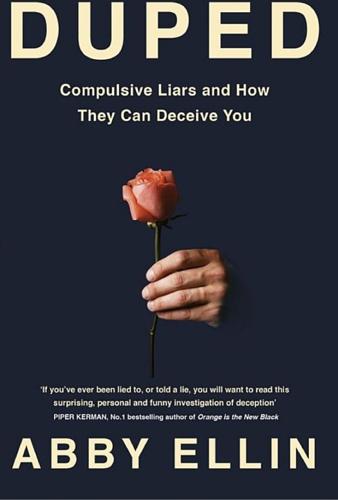
Duped: Double Lives, False Identities, and the Con Man I Almost Married
by
Abby Ellin
Published 15 Jan 2019
14 Short wants a universal law stating that “nonconsensual sex is sexual assault,” and that “consent is freely given, knowledgeable, and informed agreement.” This is personal for her. Short was in her twenties and a Wall Street bond trader when she met Brian, a thirty-two-year-old divorced Jewish man with an accounting degree from New York University (NYU). A Vietnam vet, he had been born in South America and had two sons, both of whom lived with their mother, Roxanne, in Brazil, who was dying of cancer. Short fell in love and they soon became inseparable. A year and a half into their relationship they began talking marriage and she became pregnant.
…
“A betrayal response, along with a moral code of commitment to a loved one, can confuse and deter the victim from simply walking away.” The truth finally unfolded courtesy of Roxanne. Brian was a Catholic, draft-dodging high school dropout, eight years younger than what he’d told Short. There had been no degree from NYU. There was no Jewish family. He hadn’t been to Vietnam. It was like someone took a sledgehammer to Short’s head. “I couldn’t wrap my head around the concept that he was a total stranger to me and the man I loved really didn’t exist,” she said. “He had been an actor. I was not his audience; he was his own audience.
…
She had just completed a master’s degree in religious education at Fordham University, and was teaching religion at a Catholic high school on the Upper East Side. She loved it, but what she enjoyed most was the counseling part, spending time with kids and talking to them. So she went back to school for another master’s, this one in counseling psychology at NYU. At the time, she was grappling with her sexual identity. It was a different world then—lots of shame and internalized homophobia. She “sort of” knew she was a lesbian, but she didn’t know how to deal with it. Diane met another female teacher and they became lovers. Her girlfriend exposed her to a world of female academics with doctoral degrees—professional, smart, fun women.
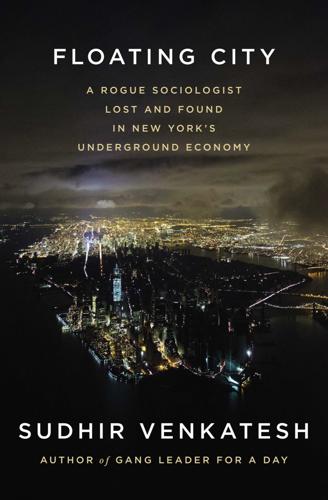
Floating City: A Rogue Sociologist Lost and Found in New York's Underground Economy
by
Sudhir Venkatesh
Published 11 Sep 2013
But that night in my apartment, the more she cried, the less I felt I had any standard to judge. I ventured a technical question. “What kind of investment?” “He said he needed to get some work done on some new projects.” This was J.B.’s weakness. He took pride in discovering new talent. He would find directors fresh out of NYU and tell them he’d finance their genius movie idea. They’d spend weeks drawing up elaborate plans for cast and crew and platform media releases. Alas, his trust fund never quite matched his needs. When his parents refused to offset the difference, J.B. concocted a scheme with his parents’ chauffeur to fake an injury and collect on the payment.
…
The university had a reputation for treating young faculty poorly. Rarely did they grant tenure, and when they did, junior professors were still thought of as expendable labor. Most of my friends and advisers urged me not to take the job. But I turned down the other offers that came my way—including one from the downtown competitor, NYU—because I was hungry and I felt I needed the stature and challenge of an Ivy League badge. The pressure cooker of the University of Chicago taught me that I needed a high-stakes environment to motivate me. The department was going through a period of transition. In a bitter struggle between two competing visions of sociology, Herbert Gans represented the discipline’s original aim.
…
“I’m not sure there is a good Chianti,” I answered. Betsy looked puzzled. “So you know each other?” We confessed that we did. Like a good host, she soon found an excuse to disappear and let us catch up on old times. “So how are you?” Analise asked. “Good, real good. I’m teaching here now.” “NYU?” “Columbia.” She congratulated me, and I asked what she was doing. “A bunch of different pointless jobs,” she said. “You know, trying to find my thing.” I told her I was thinking about going to France. I mentioned that my marriage wasn’t doing so well. Something about her seemed to invite those kinds of confessions.
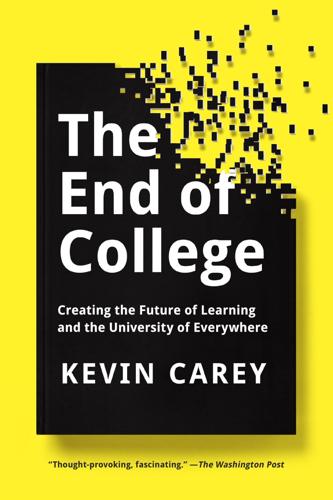
The End of College: Creating the Future of Learning and the University of Everywhere
by
Kevin Carey
Published 3 Mar 2015
New York City, with a population of more than eight million, contains only two first-tier research universities, Columbia and NYU. That’s the same number as the state of Iowa, population three million. Given that New York City is a global capital of finance and culture with an enviably low crime rate, it could easily house ten times the numbers of organizations that support high-level scholarship. The city is also a huge potential market for new educational organizations built from the ground up to serve undergraduates. Universities like NYU and George Washington shoved their way into the top tier of contemporary prestige by selling, first and foremost, their locations.
…
A luxury apartment building that opened near campus in 2011 quickly filled with students whose parents paid $3,900 a month in rent. On weekends they gathered in nearby nightclubs to pay $1,000 for reserved tables and bottles of premium vodka and champagne. GW was hardly alone in this. The empire builders prospered in reviving urban centers. In New York, John Sexton turned NYU into a global higher-education player by selling the dream of downtown living to students raised on Sex and the City. In Boston, Northeastern followed BU up the ladder, while Silber’s legacy continued to expand along the Charles. In Los Angeles, Steven Sample turned USC from the “University of Spoiled Children” into a U.S.
…
., 53, 123 Nebraska, University of, 26 Nelson, Ben, 133–35, 139, 181 Netflix, 131, 145 Netscape, 115, 126, 128, 129, 204–5 Newell, Albert, 79, 105 New Jersey, College of, 23 Newman, John Henry, 27–29, 47, 49, 244 Newman Report (1971), 56 Newton, Isaac, 190 New York, State University of, Binghamton, 183–84 New York City public schools, 1, 44 New York Times, 9, 44, 56–57, 107–8, 149, 170 New York University (NYU), 9, 64, 96, 250 Ng, Andrew, 153, 158 Nicomachean Ethics (Aristotle), 17 Nimitz, Admiral Chester W., 90 NLS/Augment, 125 Nobel Prize, 3, 45, 59, 78, 80, 176 Northeastern University, 64 Northern Arizona University, 229–30 Health and Learning Center, 230 Northern Iowa, University of, 55 Norvig, Peter, 149, 170, 227–28, 232 Notre Dame (Paris), cathedral school at, 18 Nurkiewicz, Tomasz, 218 Obama, Barack, 2 Oberlin College, 46 O’Brien, Conan, 166 Oklahoma, University of, 90 Omdurman Islamic University, 88 oNLine system, 125–26 Open Badges, 207 Open source materials and software, 177, 205–6, 215, 223, 232 Organisation for Economic Co-operation and Development, 9, 224 Overeducated American, The (Freeman), 56 Oxford University, 19, 21, 23, 24, 92, 135 Packard, David, 123 Parkinson’s disease, 70 Paris, University of, 18–19, 21, 137 Pauli, Wolfgang, 176 Pauling, Linus, 70 Pausch, Randy, 71–72 Peace Corps, 125 Pellar, Ronald (“Doctor Dante”), 208 Pell Grant Program, 56 Penguin Random House, 146 Pennsylvania, University of, 23, 24, 31 Wharton Business School, 155 Pennsylvania State University, 53 People magazine, 57 Pez dispensers, 146 Phaedrus (Socrates), 20, 98 PhDs, 7, 55, 117, 141, 193, 237, 250, 254 adjunct faculty replacing, 252 college rankings based on number of scholars with, 59 regional universities and community colleges and, 60, 64, 253 as requirement for teaching in hybrid universities, 31–33, 35, 50, 60, 224 Silicon Valley attitude toward, 66 Philadelphia, College of, 23 Philip of Macedon, 92 Phoenix, University of, 114 Piaget, Jean, 84, 227 Piazza, 132 Pittsburgh, University of, 73–76 Pixar, 146 Planck, Max, 45 Plato, 16, 17, 21, 31, 44, 250–51 Portman, Natalie, 165 Powell, Walter, 50, 117 Princeton University, 1–2, 23, 112, 134, 161, 245 Principia (Newton), 190 Protestantism, 24 Public universities, 7, 55, 177, 224, 253 Purdue University, 96, 208 Puritans, 22–24 Queens College, 23 Quizlet, 133 Rafter, 131–32 Raphael, 16, 17 Reader’s Guide to Periodical Literature, 87 Reagan, Ronald, 56 Regional universities, 55, 60, 64 Reid, Harry, 42 Renaissance, 19 Rhode Island, College of, 23 Rhodes Scholarships, 2 Rice University, 204 RNA, 3 Rockstar Games, 230 Roksa, Josipa, 9, 36, 85, 244 Romans, ancient, 16 Roosevelt, Theodore, 165 Ruby on Rails Web development framework, 144 Rutgers University, 23 Sample, Steven, 64 Samsung, 146 San Jose State University, 177 Sandel, Michael, 177 SAT scores, 63, 136–37, 171, 195, 213 Saylor, Michael, 186–93, 199, 201 Saylor.org, 191, 223, 231 Schelling, Friedrich Wilhelm Joseph, 45 School of Athens, The (Raphael), 16 Schopenhauer, Arthur, 45 Science: The Endless Frontier (Bush), 51 Scientific American, 92, 155 Scientific Research and Development, U.S.
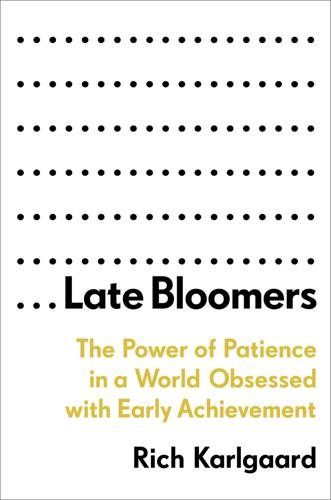
Late Bloomers: The Power of Patience in a World Obsessed With Early Achievement
by
Rich Karlgaard
Published 15 Apr 2019
He wanted to be an actor. But since he struggled with English diction, he turned his attention to directing, where he showed a spark of promise. After the University of Illinois, he followed his future wife, who was doing postdoc graduate work in molecular biology, to New York University. There he enrolled at NYU’s Tisch School of the Arts. His film directing talents began to be recognized, and he won awards for two of his short films, Shades of the Lake and Fine Line. Then the William Morris Agency signed him. The new film director seemed to be on his way. And then…nothing. Hollywood, it seemed, was not interested in the man from Taiwan, who was not young anymore.
…
But insight is more than a novel perception, arrived at in a moment of genius. In fact, our insights are the result of us drawing on our full mental library of experience, patterns, and context, yielding an idea of extraordinary value. For a fuller explanation, let’s turn to seventy-two-year-old Elkhonon Goldberg, the NYU neuroscientist and neuropsychologist. In his 2018 book Creativity, Goldberg debunked the popular notion that creativity resides in the brain’s right hemisphere (while the left hemisphere is a repository for reasoning). The real story is more complicated and interwoven. The right hemisphere matures in childhood; the development of the left is consistent with the development of the prefrontal cortex, which is not fully mature until the mid-twenties, by the estimates of some scientists, and “early to mid-thirties” in Goldberg’s experience.
…
It stands to reason that the more information we have stored in our brains, the more easily we can detect familiar patterns. Contrary to popular ideas about aging and creativity, many older adults discern patterns faster, determining what’s important and what’s trivial, then jumping to the logical solution. Elkhonon Goldberg, the NYU neuroscientist, has said that “cognitive templates” develop in older brains based on pattern recognition and form the basis for wise behavior and better decisions. As he observed in The Wisdom Paradox, Goldberg began to realize that as he aged, he was increasingly adept at a kind of “mental magic.”
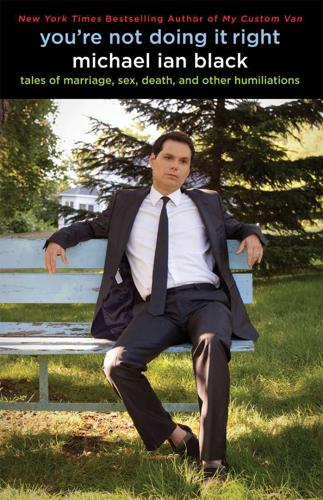
You're Not Doing It Right: Tales of Marriage, Sex, Death, and Other Humiliations
by
Michael Ian Black
Published 28 Feb 2012
My brother is at Carnegie Mellon in Pittsburgh, where he is studying to be an actuary, a career he chose after reading a survey in USA Today ranking it the best profession due to its high income and stability. Reading a chart in a newspaper seems like a random way to pick your career, but no more so than choosing one because a girl said she wanted to blow you when you were nine. (Or, for that matter, by taking an online personality test.) I apply to NYU early decision, and the day I am accepted is the happiest I have ever had. I am going to New York. And college doesn’t disappoint. I study acting and try to have sex with girls in my theater class. When we pick partners for scene study, I pair myself with an attractive classmate. Then we meet at her dorm room or mine to practice the scene.
…
Don’t go! I am screaming in my head. But she’s gone. I am such an idiot. Why didn’t I get her number? Why didn’t I ask her out? This is exactly why I can’t have nice things! When I get back home I call Ben and ask him if he knows the roommate she was talking about. He thinks so. She’s a freshman at NYU. A freshman? Which would mean the girl I met is only eighteen or nineteen years old. I’m not sure how I feel about that. Actually I am sure, but I am pretending not to be because it would be unseemly to admit how much the words “barely legal” turn me on. Can he call her and get the roommate’s name?
…
Not a huge age difference, but I have already been living a fully adult life for those four years. This girl just seems so young to me. Too young? Too innocent? Too boring? Ordinarily I would say yes except for one simple, yet important fact: She is so hot. After our meal, we wander back to her place and she invites me up. Her “place” is a dorm at NYU, the concrete warehouse where they store freshmen. I feel stupid signing in to a dorm. Does the security guard know that my interest in this girl is only prurient? That I am only interested in sullying this doe-eyed young creature? If so, he does not say anything. But I feel bad. I feel bad getting into the elevator and I feel bad listening to her chatter on about the wonders of Indiana.
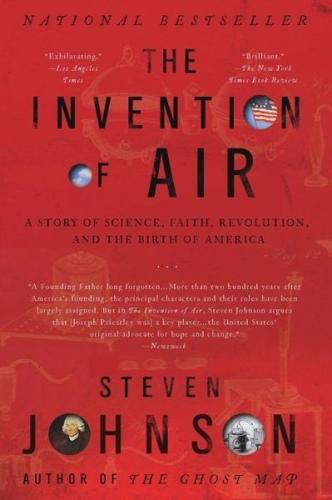
The Invention of Air: A Story of Science, Faith, Revolution, and the Birth of America
by
Steven Johnson
Published 26 Dec 2008
How can such a dramatically expanded vista not make us think that the world is still ripe for radical change, for new ways of sharing ideas or organizing human life? And how could it not also be cause for hope? ACKNOWLEDGMENTS I’m grateful to several institutions for their willingness to let me work through the major themes of this book in public. First, NYU’s School of Journalism, for letting me teach a graduate seminar on Cultural Ecosystems, and my students there who contributed so many helpful ideas (and who, I’m thankful to report, shot down more than a few of my less helpful ones). My friends at the Long Now Foundation—Stewart Brand, Kevin Kelly, Brian Eno, Danny Hillis, and Alexander Rose—were kind enough to invite me to discuss the “long zoom” approach to cultural history at one of their seminars in long-term thinking in 2007.
…
My research assistant, Jared Ranere, responded with aplomb to the most bizarre of my requests—“Giant dragonflies!”—and was an invaluable sounding board from start to finish. I’m grateful for the institutions that supported the research for this book: the University of Chicago Library; the New York Public Library; the NYU Library; the Jefferson Library at Monticello; the Papers of Benjamin Franklin, maintained by the American Philosophical Society and Yale; the Avalon Project at Yale Law Library; the Royal Society; the British Library; the Priestley collection at the University of Pennsylvania. I also greatly benefited from the many public-domain works by Priestley and his peers that are now available as full-text documents from Google Books.
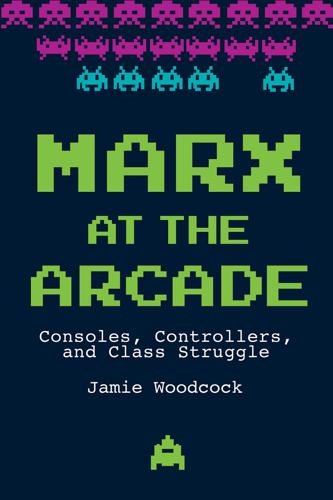
Marx at the Arcade: Consoles, Controllers, and Class Struggle
by
Jamie Woodcock
Published 17 Jun 2019
Payne, Joystick Soldiers: The Politics of Play in Military Video Games (London: Routledge, 2010); Gerald Voorhees, Joshua Call, and Katie Whitlock, Guns, Grenades, and Grunts: First-Person Shooter Games (New York: Bloomsbury, 2012); Corey Mead, War Play: Video Games and the Future of Armed Conflict (New York: Houghton Mifflin, 2013). 62Nick Hopkins, “Ministry of Defence Forced to Update Its War Games for Xbox Generation,” Guardian, December 28, 2011, www.theguardian.com/uk/2011/dec/28/ministry-defence-war-games-xbox. 63Hopkins, “Ministry of Defence Forced.” 64Stephen Kline, Nick Dyer-Witheford, and Greig de Peuter, Digital Play: The Interaction of Technology, Culture, and Marketing (Montreal and Kingston: McGill-Queen’s University Press, 2003), 99. 65Michael Brooks, “If You Can Play a Video Game, You Can Fly a Drone,” New Statesman, June 13, 2012, www.newstatesman.com/sci-tech/sci-tech/2012/06/play-video-game-fly-drone. 66Matthew T. Payne, Playing War: Military Video Games after 9/11 (New York: NYU Press, 2016), 6. 67Kline, Dyer-Witheford, and de Peuter, Digital Play, 244. 68Roger Stahl, Militainment, Inc.: War, Media, and Popular Culture (London: Routledge, 2010), 6. 69Payne, Playing War, 6. 70Quoted in Keith Stuart, “Call of Duty: Advanced Warfare: ‘We Worked with a Pentagon Adviser,’” Guardian, August 28, 2014, www.theguardian.com/technology/2014/aug/28/call-of-duty-advanced-warfare-pentagon-adviser. 71Stuart, “Call of Duty.” 72Strike Fighter Consulting, “About,” Strike Fighter Consulting, 2011, http://strikefighterconsultinginc.com/about/. 73Dabney B., “Did the DoD Forever Change the FPS Video Game Industry?
…
Johnson and Jamie Woodcock, “Fighting Games and Go: Exploring the Aesthetics of Play in Professional Gaming,” Thesis Eleven 138, no. 1 (2017): 32. 8Konnikova, “Why Gamers Can’t Stop Playing First-Person Shooters.” 9Michael Hitchens, “B.J.’s Family: A Survey of First Person Shooters and Their Avatars,” in Proceedings of the Sixth Australasian Conference on Interactive Entertainment, ACM, 2009, p. 4. 10Rune Klevjer, “Gladiator, Worker, Operative: The Hero of the First Person Shooter Adventure” (presentation, Level Up: Digital Games Research Conference, Utrecht University, Netherlands, 2003). 11Hitchens, “B.J.’s Family.” 12Edge Staff, “The Making Of…Medal of Honor,” GamesRadar, March 30, 2015, www.gamesradar.com/making-medal-honor/. 13Edge Staff, “The Making Of…Medal of Honour.” 14James Orry, “Battlefield 1’s Anthology Format Single Player Campaign Looks Amazing in First Trailer,” VideoGamer, September 28, 2016, www.videogamer.com/news/battlefield-1s-anthology-format-single-player-campaign-looks-amazing-in-first-trailer. 15Julie Muncy, “A First-Person Shooter Set in WWI Is Maaaybe Not the Best Idea,” Wired, May 10, 2016, www.wired.com/2016/05/battlefield-1-wwi. 16Wilfred Owen, The Poems of Wilfred Owen (Ware, UK: Wordsworth Editions, 1994), 60. 17Adam Chapman, “It’s Hard to Play in the Trenches: World War I, Collective Memory and Videogames,” Game Studies 16, no. 2 (2016). 18Quoted in “Call of Duty Q&A,” GameSpot, May 1, 2003, www.gamespot.com/articles/call-of-duty-qanda/1100-6026083. 19Owen Good, “Black Ops II Chooses Someone Who Failed the Call of Duty,” Kotaku, May 4, 2012, http://kotaku.com/5907854/black-ops-2-chooses-someone-who-failed-the-call-of-duty. 20Marianne Hirsch, The Generation of Postmemory: Writing and Visual Culture after the Holocaust (New York: Columbia University Press, 2008). 21Adam Chapman, Digital Games as History: How Videogames Represent the Past and Offer Access to Historical Practice (New York: Routledge, 2016). 22Kevin O’Neill and Bill Feenstra, “‘Honestly, I Would Stick with the Books”: Young Adults’ Ideas about a Videogame as a Source of Historical Knowledge,” Game Studies 16, no. 2 (2016). 23“Exclusive: Inside the Making of Call of Duty 4,” Gamasutra, March 11, 2008, www.gamasutra.com/view/news/108762/Exclusive_Inside_The_Making_Of_Call_Of_Duty_4.php. 24Steven Burns, “Death From Above: How COD4 Is the Most Realistic War Game Ever Made,” VideoGamer, January 18, 2014, www.videogamer.com/features/death-from-above-how-cod4-is-the-most-realistic-war-game-ever-made. 25Simon Parkin, “Call of Duty: Gaming’s Role in the Military-Entertainment Complex,” Guardian, October 22, 2014, www.theguardian.com/technology/2014/oct/22/call-of-duty-gaming-role-military-entertainment-complex. 26Good, “Black Ops II Chooses Someone Who Failed.” 27Stephen Totilo, “Call of Duty Creators Say Oliver North Helped Make Their Game More Authentic,” Kotaku, May 24, 2012, http://kotaku.com/5913092/call-of-duty-makers-say-controversial-oliver-north-helped-make-their-game-more-authentic. 28Benedict Anderson, Imagined Communities (London: Verso, 1983). 29Matthew T. Payne, Playing War: Military Video Games after 9/11 (New York: NYU Press, 2016), 7–8. 30Payne, Playing War, 5. 31Tom Bissell, “Thirteen Ways of Looking at a Shooter,” Grantland, July 12, 2012, http://grantland.com/features/line-explores-reasons-why-play-shooter-games. 32Kristine Jørgensen, “The Positive Discomfort of Spec Ops: The Line,” Game Studies 16, no. 2 (2016). 33Jørgensen, “The Positive Discomfort of Spec Ops.” 34Jørgensen, “The Positive Discomfort of Spec Ops.” 35Daniel Joseph, “A Line in a Cyclone,” First Person Scholar, December 21, 2016, www.firstpersonscholar.com/a-line-in-a-cyclone. 36Bissell, “Thirteen Ways of Looking at a Shooter.”
…
Political Videogames 1Woodcock, Working the Phones. 2Patricia Hernandez, “There’s No Such Thing as a Game without Politics or an Agenda,” Kotaku, August 30, 2012, https://kotaku.com/5939367/theres-no-such-thing-as-a-game-without-politics-or-an-agenda. 3Quoted in Chris Baraniuk, “Video Games Become Political as US Election Looms,” New Scientist, October 28, 2016, www.newscientist.com/article/2110736-video-games-become-political-as-us-election-looms. 4Bertell Ollman, “Ballbuster? True Confessions of a Marxist Businessman,” in Dialectical Marxism: The Writings of Bertell Ollman, www.nyu.edu/projects/ollman/docs/bb_ch01.php. 5Ollman, “Ballbuster?” 6Ollman, “Ballbuster?” 7Quoted in Ollman, “Ballbuster?” 8Quoted in Ollman, “Ballbuster?” 9Caillois, Man, Play and Games, 13. 10Ollman, “Ballbuster?” 11Keith Plocek, “Most Popular Marxist Board Game,” Mental Floss, August 12, 2014, http://mentalfloss.com/article/58318/story-class-struggle-americas-most-popular-marxist-board-game. 12Quoted in Plocek, “Most Popular Marxist Board Game.” 13Molleindustria, “Phone Story,” Phone Story, 2011, www.phonestory.org. 14Stuart Dredge, “Apple Bans Satirical iPhone Game Phone Story from Its App Store,” Guardian, September 14, 2011, www.theguardian.com/technology/appsblog/2011/sep/14/apple-phone-story-rejection. 15Molleindustria, “Phone Story.” 16Dredge, “Apple Bans Satirical iPhone Game.” 17Molleindustria, “To Build a Better Mousetrap,” 2014, http://www.molleindustria.org/to-build-a-better-mousetrap. 18Joseph Bernstein, “The New Marxism Comes to Computer Games,” BuzzFeed, May 5, 2014, www.buzzfeed.com/josephbernstein/the-new-marxism-comes-to-computer-games. 19David Leblanc, “Working at Play: Alienation, Refusal, and Every Day the Same Dream,” First Person Scholar, December 14, 2016, www.firstpersonscholar.com/working-at-play. 20Quoted in Leblanc, “Working at Play.” 21Leblanc, “Working at Play.” 22John Walker, “Wot I Think: Papers, Please,” Rock Paper Shotgun, August 12, 2013, www.rockpapershotgun.com/2013/08/12/wot-i-think-papers-please. 23Walker, “Wot I Think: Papers, Please.” 24Keith Stuart, “War Games – Developers Find New Ways to Explore Military Conflict,” Guardian, July 15, 2014, www.theguardian.com/technology/2014/jul/15/war-games-developers-military-conflict. 25Marijam Didžgalvytė, “The Uber Game Shows the Latent Power of Political Video Games,” Kotaku, February 8, 2018, www.kotaku.co.uk/2018/02/08/the-uber-game-shows-the-latent-power-of-political-video-games. 26Didžgalvytė, “The Uber Game Shows the Latent Power.” 27Marijam Didžgalvytė, “‘Corbyn Run’ Highlights the Stakes of This Week’s British Election,” Waypoint, June 6, 2017, https://waypoint.vice.com/en_us/article/a3zvpp/corbyn-run-highlights-the-stakes-of-this-weeks-british-election. 28Quoted in Didžgalvytė, “‘Corbyn Run’ Highlights the Stakes.” 29Didžgalvytė, “‘Corbyn Run’ Highlights the Stakes.” 30Didžgalvytė, “The Uber Game Shows the Latent Power.” 31The Supergamers, directed by Chris Boulding, London: BBC, 2016. 32Mark R.
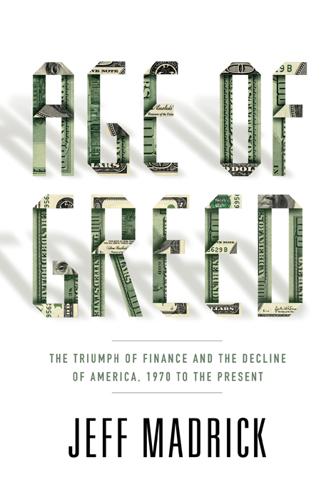
Age of Greed: The Triumph of Finance and the Decline of America, 1970 to the Present
by
Jeff Madrick
Published 11 Jun 2012
In 1997, he married NBC News correspondent Andrea Mitchell. He also finally got his Ph.D. from NYU. He had completed his course work years earlier, but did not write a thesis. Possibly because he was not comfortable with theory, nor is there any evidence he was conversant with new complex statistical techniques, Greenspan submitted as a thesis business analyses he had completed for clients or published mostly in business journals, and NYU accepted them as adequate. It is unlikely another established economics department would have done so, or that NYU would do so today. The Ph.D. was granted in 1977. In the 1980s, as he developed his business further, he gave informal advice to the Reagan administration on a variety of issues, and spoke regularly to Democratic politicians as well when asked.
…
He quit the demanding program, coming to grips with his limits as a musician, according to biographer Justin Martin, and joined a professional jazz band as saxophonist and clarinetist. He was exempted from service during the war for medical reasons. In 1945, he entered New York University at the age of twenty, graduating summa cum laude in 1948. After NYU, Greenspan attended Columbia in graduate economics, where he studied with Arthur Burns. The Columbia department, and especially Burns, was statistically oriented, which appealed to Greenspan. Moreover, Burns, one of the faculty’s political conservatives, was the first authoritative economist Greenspan met who was a critic of John Maynard Keynes.
…
Richard Fuld, the CEO, was also even more aloof than Cayne and showed little capacity to understand fully the crisis that threatened the firm’s survival. The son of a wealthy manufacturer, his father got him a job with a friend at Lehman in 1966 while he was at the University of Colorado. He later earned his MBA from NYU at night. Lehman was an investment banking legend and one of the largest firms on the Street. Fuld, a natural battler who had a couple of fistfights as an adult, became a commercial paper trader, and an intimate of the gruff man who eventually ran the firm, Lewis Glucksman. Glucksman won a power struggle against the investment banker Pete Peterson for control of the firm in the early 1980s and sold it (see Chapter 16) to Sandy Weill’s former protégé at American Express, Peter Cohen, who merged it with Shearson, Weill’s old firm.
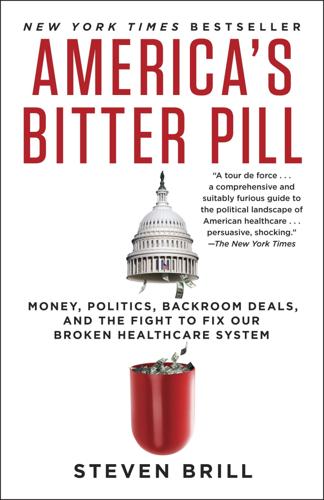
America's Bitter Pill: Money, Politics, Backroom Deals, and the Fight to Fix Our Broken Healthcare System
by
Steven Brill
Published 5 Jan 2015
Didn’t all that also drive their ability to negotiate hard with UnitedHealthcare? “Of course,” Corwin acknowledged. “But,” he reiterated, “that allows us to have the resources to continue to do more research and expand care.” “The other hospitals do it, too,” Kelly, the president and chief operating officer, added, noting that “we just lost the billboard to NYU”—the NYU Langone Medical Center. NYU, along with hospitals and clinics run by Mount Sinai Hospital and the North Shore–LIJ Health System, were three fast-growing hospital conglomerates that were Corwin and Kelly’s main competitors. In each case, they gave bigger discounts to insurers, because New York–Presbyterian was perceived to be the more indispensable brand.
…
If Corwin and his integrated system charged too much or didn’t do a good job, my employer or I (if I was in the individual market) could switch to another competitive New York brand like Mount Sinai or NYU Langone. And all of that competition would be fortified by advances in data transparency that would make each competitor’s quality ratings for various types of care readily available. Corwin’s high price for my open-heart surgery would truly be tested in the market, because he would be competing with other high-quality health systems, like Mount Sinai or NYU Langone, to capture all of my business or my employer’s business. He and his network of hospitals, clinics, and doctors would be insuring me not only against heart surgery, but for routine treatment and x-rays if I twist my ankle or get the flu.
…
Yet it is done in combination with private sector competition and innovation, as exemplified by these doctor-leaders. Let them act on their ambitions. Let them compete with other legitimate players in their markets, or even with one another if they want to expand. That kind of competition is already happening, as the fight over the billboard between New York–Presbyterian and NYU Langone illustrates. Only it is blurred by the insurance companies in the middle, which makes it competition by proxy, at best. As things stand now, an employer who wants to get healthcare for his workers, or an individual who is shopping on the Obamacare exchanges, has to figure out which insurance company has which hospitals and doctors in its network and what discounts it has negotiated.

The Hype Machine: How Social Media Disrupts Our Elections, Our Economy, and Our Health--And How We Must Adapt
by
Sinan Aral
Published 14 Sep 2020
—SETH GODIN, author of This Is Marketing “Brilliant! Aral’s masterful integration of science, business, law, and policy presents a powerful, accessible explanation of how social media affects all of us. Whether you simply want to understand the how and why, or need to make business or policy decisions, this is a must-read!” —FOSTER PROVOST, NYU Stern School of Business, author of Data Science for Business “Sinan Aral is a scientist and entrepreneur, and his unique perspective makes him the perfect guide to the world we live in today. From ads to fake news, The Hype Machine is the best critical foundation for understanding the connected world and how we might navigate through it to a better future.”
…
How we choose to consume and act on the information and recommendations the machine makes determines what the machine will recommend next. When the Sense and Suggest Loop encounters healthy communication, it responds in kind, creating a virtuous rather than a vicious Hype Loop. So when should we follow the Hype Machine’s recommendations, and when should we push back? My friend and former NYU colleague Vasant Dhar has asked that very question. Which decisions should we outsource to machine intelligence and which should we keep to ourselves? While his framework applies to the broader AI economy, I believe the insights it offers can help us understand how to design better Hype Machine code and suggest when we, as users, should follow or ignore its suggestions.
…
On MySpace, they could connect with, well, strangers. Facebook launched at Harvard in February 2004, then opened its doors to one college after another: Columbia, Yale, Dartmouth, Cornell. Within two months, seventy thousand students had joined from twenty major U.S. colleges, including Stanford, MIT, NYU, and Northeastern. Facebook wasn’t open to anyone outside these campuses. By May 2005 it had expanded to eight hundred college networks. In September of that year, it added high school networks. In October it expanded to international school networks. In May 2006 it added workplace networks. Each of these networks was a tight-knit group in which many people already knew each other, had friends in common, or could relate to each other’s experiences of having the same school or work culture.
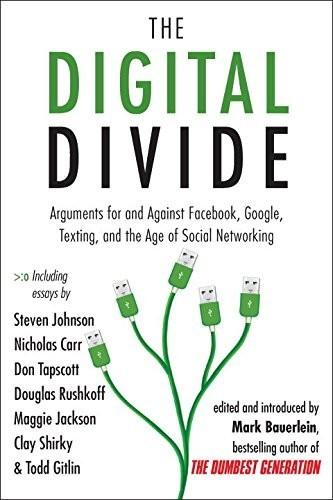
The Digital Divide: Arguments for and Against Facebook, Google, Texting, and the Age of Social Netwo Rking
by
Mark Bauerlein
Published 7 Sep 2011
But Thoreau understood that securing one’s self-possession was worth a few wounded feelings. He may have put his neighbors off, but at least he was sure of himself. Those who would find solitude must not be afraid to stand alone. < Clay Shirky> means Excerpted from Cognitive Surplus (pp. 42–64). CLAY SHIRKY is an adjunct professor in NYU’s graduate Interactive Telecommunications Program (ITP). Prior to his appointment at NYU, Shirky was a partner at the investment firm The Accelerator Group in 1999–2001. He has had regular columns in Business 2.0 and FEED, and his writings have appeared in the New York Times, The Wall Street Journal, Harvard Business Review, Wired, Release 1.0, Computerworld, and IEEE Computer.
…
This shift to post-Gutenberg economics, with its interchangeably perfect versions and conversational capabilities, with its symmetrical production and low costs, provides the means for much of the generous, social, and creative behavior we’re seeing.... >>> the shock of inclusion I teach in the Interactive Telecommunications Program, an interdisciplinary graduate program at NYU. In the decade I’ve been there, the average age of my students has stayed roughly the same, while my average age has grown at the alarming rate of one year per year; my students are now fifteen or twenty years younger than I am. Because I try to convey an understanding of the changing media landscape, I now have to teach the times of my own youth as ancient history.

The Coming of Neo-Feudalism: A Warning to the Global Middle Class
by
Joel Kotkin
Published 11 May 2020
Dobson, “The East Is Crimson,” Slate, May 23, 2012, http://www.slate.com/articles/news_and_politics/foreigners/2012/05/harvard_and_the_chinese_communist_party_top_chinese_officials_are_studying_at_elite_u_s_universities_in_large_numbers_.html; Jennifer Levitz, Steve Eder, and Jeremy Page, “Bo Xilai’s Son Appears to Have Left Home Near Harvard,” Wall Street Journal, April 16, 2012, https://www.wsj.com/articles/SB10001424052702304818404577345680438913376. 4 Ben Wildavsky, The Great Brain Race: How Global Universities Are Reshaping the World (Princeton: Princeton University Press, 2010), 169. 5 “NYU president on global universities, ‘idea capitals’ and ‘talent snowballs’,” Times Higher Education, May 22, 2013, https://www.timeshighereducation.com/comment/opinion/nyu-president-on-global-universities-idea-capitals-and-talent-snowballs/2004033.article. 6 Claudia Goldin and Lawrence F. Katz, “The Shaping of Higher Education: The Formative Years in the United States, 1890 to 1940,” National Bureau of Economic Research, April 1998, https://www.nber.org/papers/w6537.pdf. 7 Daniel Bell, The Coming of Post-Industrial Society (New York: Basic Books, 1973), 217–22; Erin Duffin, “U.S. college enrollment statistics for public and private colleges from 1965 to 2016 and projections up to 2028,” Statista, August 9, 2019, https://www.statista.com/statistics/183995/us-college-enrollment-and-projections-in-public-and-private-institutions/. 8 Robert Gordon, The Rise and Fall of American Growth (Princeton: Princeton University Press, 2016), 513, 521. 9 Max Roser and Esteban Ortiz-Ospina, “Tertiary Education,” Our World in Data, 2019, https://ourworldindata.org/tertiary-education; Angel Calderon, “The higher education landscape is changing fast,” University World News, June 22, 2018, http://www.universityworldnews.com/article.php?
…
Renn, “Population Transformation in Pittsburgh and Chicago,” New Geography, April 13, 2018, http://www.newgeography.com/content/005937-population-transformation-pittsburgh-and-chicago. 45 UCL Urban Laboratory, “How Ruth Glass shaped the way we approach our cities,” University College London, January 13, 2015, http://www.ucl.ac.uk/urbanlab/news/ruth-glass-seminar. 46 Karen J. Gibson, “Bleeding Albina: A History of Community Disinvestment,” Transforming Anthropology, vol. 15:1, (2007), 3–25, http://kingneighborhood.org/wp-content/uploads/2015/03/BLEEDING-ALBINA_-A-HISTORY-OF-COMMUNITY-DISINVESTMENT-1940%E2%80%932000.pdf; NYU Furman Center, “Focus on Gentrification” June 9, 2016, http://furmancenter.org/files/sotc/Part_1_Gentrification_SOCin2015_9JUNE2016.pdf; Jonathan Wynn and Andrew Deener, “Gentrification? Bring It,” The Conversation, October 11, 2017, https://theconversation.com/gentrification-bring-it-82107. 47 Kevin Baker, “The Death of a Once Great City,” Harper’s, July 2018, https://harpers.org/archive/2018/07/the-death-of-new-york-city-gentrification/; Theodore Dalrymple, “The Architect as Totalitarian,” City Journal, Autumn 2009, https://www.city-journal.org/html/architect-totalitarian-13246.html; Claire Berlinski, “The Architectural Sacking of Paris,” City Journal, Winter 2018, https://www.city-journal.org/html/architectural-sacking-paris-15655.html. 48 James Heartfield, “London’s Social Cleansing,” New Geography, May 13, 2012, http://www.newgeography.com/content/002824-london%E2%80%99s-social-cleansing. 49 Ibid.; Sara Malm, “Is buying a house just a pipe dream?
…
Civil Service College Singapore and Chapman University, 2012, https://www.chapman.edu/wilkinson/_files/the-rise-of-post-familialism.pdf; Ali Modarres and Joel Kotkin, “The Childless City,” City Journal, Summer 2013, https://www.city-journal.org/html/childless-city-13577.html. 18 Joel Kotkin and Wendell Cox, “America’s Future Depends on the Bedroom, Not the Border,” New Geography, April 22, 2019, http://www.newgeography.com/content/006282-america-s-future-depends-bedroom-not-border. 19 Derek Thompson, “The Future of the City Is Childless,” Atlantic, July 18, 2019, https://www.theatlantic.com/ideas/archive/2019/07/where-have-all-the-children-gone/594133/. 20 NYU Furman Center, “Report Analyzes New York City’s Gentrifying Neighborhoods and Finds Dramatic Demographic Shifts,” The Stoop, May 9, 2016,. http://furmancenter.org/thestoop/entry/new-report-analyzes-new-york-citys-gentrifying-neighborhoods-and-finds-dram; Joel Kotkin, “America’s Future Cities: Where the Youth Population Is Booming,” New Geography, February 6, 2014, http://www.newgeography.com/content/004169-americas-future-cities-where-the-youth-population-is-booming. 21 Steve LeVine, “1 Big Thing: the great family exodus,” Axios, January 25, 2019, https://www.axios.com/newsletters/axios-future-ddfc78e8-78ec-4285-87ab-f10565b42249.html. 22 Elizabeth Cheung, “Financial burdens, cramped living quarters and less sex: are these the reasons so many Hong Kong women are undecided about having children?”
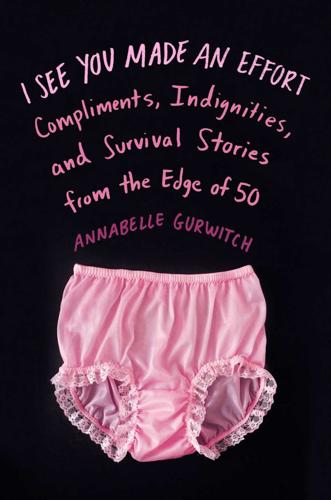
I See You Made an Effort: Compliments, Indignities, and Survival Stories From the Edge of 50
by
Annabelle Gurwitch
Published 6 Mar 2014
It was also unfathomable to me that anyone would have been content to live with sect leaders “Do” and “Ti” on a 3.4-acre property with a pool and tennis courts but be housed in dormitory-style rooms with bunk beds. Ridiculous! But snagging a seat on a spaceship? I was on board with that idea. How I ended up in a UFO cult is directly related to my moving to New York in the fall of 1980. I had fair to middling SAT scores and a grade point average good enough to make me a decent candidate for NYU acceptance, but I had other advantages working in my favor: desperation and good timing. I remain convinced I was accepted because I cried and begged to be admitted during my interview. I hear this doesn’t work anymore in the college application process, but as luck would have it, I had specifically requested placement in their Experimental Theatre Wing, a fledgling program that was actively soliciting students for enrollment.* The night before my audition I had attended a student production.
…
I never asked critical questions, like why our artsy band was chosen to usher in the new age and not the legions of religious adherents who have dedicated their entire lives to achieving enlightenment. On the face of it, there wasn’t much to recommend me, in particular, as a representative of our planet. I didn’t have any scientific knowledge that could be useful on a long journey across the universe. In fact, I had enrolled in an astronomy class at NYU so I could gain more understanding of my future voyage but never made it to more than a handful of the classes. The seminars had a narcoleptic effect on me—these were the dark ages before really good coffee could be found on every corner of the city, and I attended these lectures on nothing more potent than watery coffee-shop drip.
…
*In UFO lingo, a close encounter of the first kind is seeing the UFO, the second kind involves some sort of interaction, the third kind is getting on the ship/pod mode of transport. It’s beam-me-up-Scotty territory. *I had the opportunity to interview an admissions officer on NPR about current standards at NYU. She assured me that with my grades, scores, and crying I would have absolutely no chance whatsoever of being admitted to the school today. *That performer, the multitalented Gayle Tufts, is now a prominent chanteuse in Germany. *My immediate goal became to get listed in the New York phone book.

Move Fast and Break Things: How Facebook, Google, and Amazon Cornered Culture and Undermined Democracy
by
Jonathan Taplin
Published 17 Apr 2017
Released in early 1969, Easy Rider completely changed the industry. The film grossed more than $60 million, so the return on investment was extraordinary. Almost instantly, every broke studio began looking for first-time directors who could make films for less than $1 million. The obvious place to look was the film schools—NYU, USC, and UCLA. But the young men (and they were almost all men) who were training in these schools had a very different view of the role of the director from that of the old moguls who still ran the studios. The kids had been schooled on European New Wave directors such as François Truffaut, Jean-Luc Godard, Federico Fellini, and Ingmar Bergman.
…
Just because some techno-optimists continue to insist that old jobs will be replaced by new jobs we can’t imagine yet does not mean it is true. Google’s AlphaGo artificial intelligence system may have bested the world’s greatest Go player, but I’m not worried that it’s going to replace our greatest musicians, filmmakers, and authors, even though an NYU artificial intelligence laboratory has programmed a robot named Benjamin to be a screenwriter. And even if you believe that robots will be able to fill most jobs, MIT’s Andrew McAfee and Erik Brynjolfsson have pointed out that “understanding and addressing the societal challenges brought on by rapid technological progress remain tasks that no machine can do for us.”
…
John Seabrook, The Song Machine: Inside the Hit Factory (New York: W. W. Norton, 2016). This is a wonderful book on the modern pop-music business. Frans de Waal, “How Bad Biology is Killing the Economy,” Evonomics, March 2016, evonomics.com/how-bad-biology-is-killing-the-economy/. Henry Jenkins, Convergence Culture: Where Old and New Media Collide (New York: NYU Press, 2006). Jenkins and I don’t always agree, but he has been a constant source of inspiration and guidance for me at the Annenberg Innovation Lab. Neil Postman, Amusing Ourselves to Death (New York: Penguin, 1985). This was a pre-Internet look at the role of popular culture in pacifying the American public.
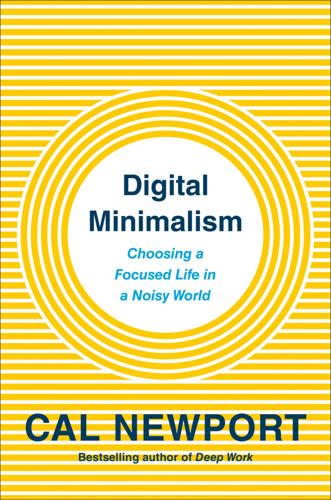
Digital Minimalism: Choosing a Focused Life in a Noisy World
by
Cal Newport
Published 5 Feb 2019
If we want to thwart their worst effects, however, we need to better understand how they’re so easily able to subvert our best intentions for our lives. Fortunately, when it comes to this goal, we have a good guide. As it turns out, during the same years when Harris was wrestling with the ethical impact of addictive technology, a young marketing professor at NYU turned his prodigious focus to figuring out how exactly this techno-addiction works. * * * ■ ■ ■ Before 2013, Adam Alter had little interest in technology as a research subject. A business professor with a PhD from Princeton in social psychology, Alter studied the broad question of how features in the world around us influence our thoughts and behavior.
…
He discovered that putting on NPR in the background while working on manual tasks kept him sufficiently up to speed and saved him from many of the worst features of internet news. Ramel also embraced an older technology: instead of checking social media feeds to stay up to date, he now has a newspaper delivered to his NYU dorm. Perhaps predictably, many of the participants in my mass declutter experiment ended up abandoning the social media services that used to take up so much of their time. These services have a way of entering your life through cultural pressure and vague value propositions, so they tend not to hold up well when subjected to the rigor of the screen described above.
…
* * * ■ ■ ■ Part of what complicates discussions of waning solitude in the smartphone age is that it’s easy to underestimate the severity of this phenomenon. While many people admit that they use their phones more than they probably should, they often don’t realize the full magnitude of this technology’s impact. The NYU professor Adam Alter, whom I introduced earlier in this book, details a typical story of such underestimation in Irresistible. While researching his book, Alter decided to measure his own smartphone use. To do so, he downloaded an app called Moment, which tracks how often and how long you look at your screen each day.
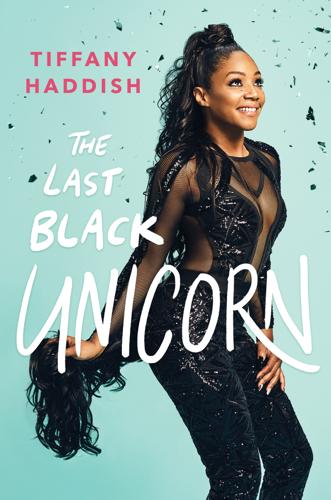
The Last Black Unicorn
by
Tiffany Haddish
Published 5 Dec 2017
I did that all through high school, till I was like eighteen. And then, I had to quit. I had to quit comedy, because I was homeless, and I was supposed to go to NYU, and I had no idea what to do. I know, it’s confusing. Here’s how it went: Once I turned eighteen, my grandma sat me down. Grandma: “Since I ain’t getting paid for you now, you need to go to school. You grown. Go on, get out there. You got friends. You’ll make it.” I had gotten accepted into NYU, but they weren’t paying my way. I didn’t have no money, and my grandma was still taking care of my brothers and sisters. I was like, What if something happens to her?
…
Even though I bombed, getting to the second round helped my career. I did some stand-up on a couple of late night TV shows, and then I ended up doing HBO’s Def Comedy Jam, and then Def Comedy Jam started getting me other shows. Then I got a movie with Mike Epps, and that started getting me to colleges. It’s kind of full circle, ’cause NYU wanted to charge me $30,000 a semester to attend, and now, I’m going to all these different colleges, and they’re paying me $2000 to tell jokes for like forty-five minutes. I felt like the dopest person in the world. I was getting paid to go to school. I wasn’t really learning anything, but still. Once I got divorced, it was like the floodgates opened.
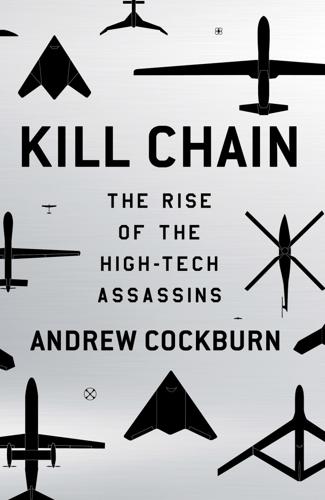
Kill Chain: The Rise of the High-Tech Assassins
by
Andrew Cockburn
Published 10 Mar 2015
After all, it was an established point of drone-strike doctrine: Jo Becker and Scott Shane, “Secret ‘Kill List’ Proves a Test of Obama’s Principles and Will,” New York Times, May 29, 2012. Finally, sometime after 10:00 a.m.: International Human Rights and Conflict Resolution Clinic at Stanford Law School and Global Justice Clinic at NYU School of Law, “Living Under Drones; Death, Injury and Trauma to Civilians from U.S. Drone Practices in Pakistan” (2012), p. 59. http://livingunderdrones.org/report/. “The smell was awful.”: Ben Emmerson, UNSRCT Drone Inquiry, “Interview with witness #3,” Case Study #1: Datta Khel, March 14, 2014. http://vimeo.com/79102292.
…
“in a manner consistent…”: Sebastian Abbott, “New Light on Drone War’s Death Toll,” AP Impact, February 26, 2012. “These guys were terrorists”: Tom Wright and Rehmat Mehsud, “Pakistan Slams U.S. Drone Strike,” Wall Street Journal, March 18, 2011. A separate probe by the Associated Press: Abbott, op. cit. Although the positions held by the dead men were now of course vacant: Stanford and NYU Law Schools, op. cit., p. 60. When presented with the tool of a Hellfire-armed Predator: Steve Simon and Dan Benjamin, Age of Sacred Terror (New York: Random House, 2002), p. 345. Soon, visiting dignitaries: Mazzetti, op. cit., p. 6. In 2004, when the CIA sought Pakistani permission to launch drone strikes: Mazzetti, op. cit., p. 103ff.
…
“We did nothing”: Columbia School of Law, Human Rights Clinic and Center for Civilians in Conflict, The Civilian Impact of Drones—Unexamined Costs, Unanswered Questions, p. 21. Afterward, when Hayden and Kappes explained the concept of a signature strike: Daniel Klaidman, “Drones: The Silent Killers,” Newsweek, May 28, 2012. According to a rare outside observer: David Rhode, “The Drone War,” Reuters magazine, January 26, 2012. “We do not come out of our villages”: NYU and Stanford Schools of Law, op. cit., p. 96. The sole survivor of Obama’s first strike: Ibid., p. 74ff. “We got played all the time”: Interview with former CIA official, Washington, DC, April 16, 2014. Naturally, the Pakistani government was happy: Ahmed, op. cit., p. 73. As related in Joby Warrick’s gripping account: Joby Warrick, The Triple Agent: The al-Qaeda Mole Who Infiltrated the CIA (New York: Doubleday, 2011).
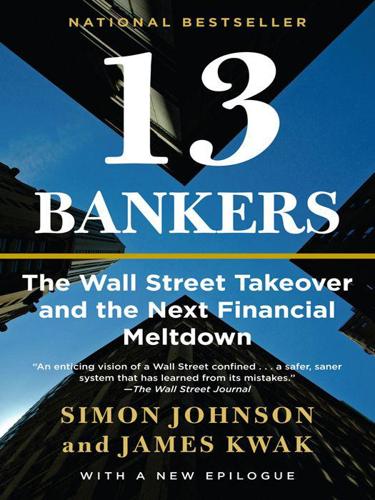
13 Bankers: The Wall Street Takeover and the Next Financial Meltdown
by
Simon Johnson
and
James Kwak
Published 29 Mar 2010
Bentson, The Separation of Commercial and Investment Banking (London: Macmillan, 1990); and Alexander Tabarrok, “The Separation of Commercial and Investment Banking: The Morgans vs. the Rockefellers,” The Quarterly Journal of Austrian Economics 1 (1998): 1–18. 106. Thomas Philippon, “The Evolution of the U.S. Financial Industry from 1860 to 2007: Theory and Evidence” (working paper, New York University, NBER, CEPR, November 2008), available at http://pages.stern.nyu.edu/~tphilipp/papers/finsize.pdf. CHAPTER 2: OTHER PEOPLE’S OLIGARCHS 1. Republic of Korea, “Korea Letter of Intent to the IMF,” December 3, 1997, available at http://www.imf.org/external/np/loi/120397.htm. 2. Time, February 15, 1999, available at http://www.time.com/time/covers/0,16641,19990215,00.html. 3.
…
Nicholas Brady (lecture, Institute of International Finance, Washington, D.C., April 25, 2009). 26. Federal Reserve Flow of Funds, supra note 13, at Table L.129. 27. Thomas Philippon and Ariell Reshef, “Wages and Human Capital in the U.S. Financial Industry: 1909–2006” (working paper, December 2008), Figure 3, available at http://pages.stern.nyu.edu/~tphilipp/research.htm. 28. On attempts to skirt regulation and government responses, see Richard Scott Carnell, Jonathan R. Macey, and Geoffrey P. Miller, The Law of Banking and Financial Institutions, fourth edition (Austin: Wolters Kluwer Law & Business, 2009), 20–23. 29. Bureau of Economic Analysis, supra note 8, at Table 1.1.6. 30.
…
We begin with the finance, insurance, and real estate sector and exclude insurance, real estate, and holding companies. Figures are converted to 2008 dollars using the GDP price index. 77. Thomas Philippon and Ariell Reshef, “Wages and Human Capital in the U.S. Financial Industry: 1909–2006” (working paper, December 2008), Sections 3.4 and 3.5, available at http://pages.stern.nyu.edu/~tphilipp/research.htm. Note that the relative wage in Figure 4-2, which exceeds 1.7 at its peak, is not corrected for differences in education. The excess relative wage—the difference between average finance wages and what one would predict based on educational differences—reaches a peak of around 40 percentage points in the 2000s.

King Icahn: The Biography of a Renegade Capitalist
by
Mark Stevens
Published 31 May 1993
“Well, I went over finally and I tapped the guy on the chest and he coughed all over me. I said, ‘Christ, I have TB. I’m getting out of here.’” Determined to escape, Icahn walked out of NYU, never to return. For Bella, a lifelong dream had come to an end. “When Carl finally left medical school,” she said, “we were distraught.” But for Carl, it was a liberating experience. For the first time he felt in control of his own destiny. Looking back on his medical school experience more than thirty years after he left NYU, Icahn told CNN: “One of the greatest things I did for the human race was not to become a doctor. MY SON, THE OPTIONS BROKER “If you can dream—and not make dreams your master; If you can think—and not make thoughts your aim; If you can meet with Triumph and Disaster And treat those two imposters just the same; If you can bear to hear the truth you’ve spoken Twisted by knaves to make a trap for fools, Or watch the things you gave your life to broken, And stoop and build ‘em up with worn out tools: If you can make one heap of all your winnings And risk it on one turn of pitch-and-toss, And lose, and start again at your beginnings And never breathe a word about your loss; If you can force your heart and nerve and sinew To serve your turn long after they are gone, And so hold on when there is nothing in you Except the Will which says to them “hold on!”
…
Whoever wanted to go out to a bar, I would go with them. Then medical school got so bad that I kept wanting to leave and I even did leave a few times, but I came back because I knew how badly my mother wanted me to get that MD degree.” Were medical school solely an intellectual exercise, Icahn would likely have muddled through NYU, driven by his compulsion to succeed. But once he was required to leave the classroom for hands-on experience in a clinical setting, Carl the loner found the experience intolerable. Sickened by the sight of blood and convinced that he had contracted every disease he came in contact with in the sprawling hospital wards, he was unable to complete his rounds.
…
Carl was a brilliant teacher and the overall experience was more rewarding than it was difficult.” Joining Icahn & Company in 1968 was another former Kingsley guy who was overweight, unkempt, poorly-dressed and financially brilliant. A Wharton School graduate, Kingsley had gone on to earn a Masters in tax at New York University. It was during his NYU days that he first started working part time for Gruntal. Immediately, Icahn was impressed with Kingsley’s ability to quickly decipher complex financial transactions and to bring extraordinary creativity to securities trading. By the time Kingsley joined him full-time, Icahn was thinking of expanding beyond his options brokerage to another area of securities trading.

Behave: The Biology of Humans at Our Best and Worst
by
Robert M. Sapolsky
Published 1 May 2017
First, in a widely replicated finding, the amygdala activates. Moreover, the more racist someone is in an implicit test of race bias (stay tuned), the more activation there is.8 Similarly, repeatedly show subjects a picture of a face accompanied by a shock; soon, seeing the face alone activates the amygdala.9 As shown by Elizabeth Phelps of NYU, such “fear conditioning” occurs faster for other-race than same-race faces. Amygdalae are prepared to learn to associate something bad with Them. Moreover, people judge neutral other-race faces as angrier than neutral same-race faces. So if whites see a black face shown at a subliminal speed, the amygdala activates.10 But if the face is shown long enough for conscious processing, the anterior cingulate and the “cognitive” dlPFC then activate and inhibit the amygdala.
…
The usual: Don’t take any stage model too seriously—there are exceptions, maturational transitions are not clean cut, and someone’s stage can be context dependent. The problem of tunnel vision and wrong emphases: Kohlberg initially studied the usual unrepresentative humans, namely Americans, and as we will see in later chapters, moral judgments differ cross-culturally. Moreover, subjects were male, something challenged in the 1980s by Carol Gilligan of NYU. The two agreed on the general sequence of stages. However, Gilligan and others showed that in making moral judgments, girls and women generally value care over justice, in contrast to boys and men. As a result, females tilt toward conventional thinking and its emphasis on relationships, while males tilt toward postconventional abstractions.18 The cognitive emphasis: Are moral judgments more the outcome of reasoning or of intuition and emotion?
…
But as will be seen in chapter 13, plenty of organisms with limited cognitive skills, including young kids and nonhuman primates, display rudimentary senses of fairness and justice. Such findings anchor “social intuitionist” views of moral decision making, associated with psychologists Martin Hoffman and Jonathan Haidt, both of NYU.19 Naturally, the question becomes how moral reasoning and moral intuitionism interact. As we’ll see, (a) rather than being solely about emotion, moral intuition is a different style of cognition from conscious reasoning; and (b) conversely, moral reasoning is often flagrantly illogical. Stay tuned.

The Future of the Internet: And How to Stop It
by
Jonathan Zittrain
Published 27 May 2009
Freedom Found., to Senators Fritz Hollings and Ted Stevens (Nov. 5, 2001), available at http://www.eff.org/IP/DMCA/20011105_eff_sssca_letter.html (discussing the proposed SSSCA). 47. See Yochai Benkler, Free as the Air to Common Use: First Amendment Constraints on Enclosure of the Public Domain, 74 N.Y.U. L. REV. 354 (1999) (asserting that expansive intellectual property rights constrain the availability of information); Yochai Benkler, Through the Looking Glass: Alice and the Constitutional Foundations of the Public Domain, 66 LAW& CONTEMP. PROBS. 173, 216—18 (2003) (criticizing the NET Act and DMCA for expanding copyright protection in such a way that will chill expression); Neil Weinstock Netanel, Locating Copyright Within the First Amendment Skein, 54 STAN.
…
Richard Posner cites whistleblowers as the reason not to worry about routine automated government data mining of citizen communications. See Richard A. Posner, Editorial, Our Domestic Intelligence Crisis, WASH. POST, Dec. 21, 2005, at A31. 82. See Lior Jacob Strahilevitz, “How’s My Driving?” for Everyone (and Everything?), 81 N.Y.U. L. REV. 1699 (2006). 83. For an elaboration of objections along these lines, including rights to engage in acts of conscience, see Burk & Gillespie, supra note 43. 84. See Tim Wu, Does YouTube Really Have Legal Problems?, SLATE, Oct. 26, 2006, http://www.slate.com/id/2152264; see also Cohen, supranote 28 (“Pervasively distributed copyright enforcement portends fundamental change in these processes.
…
., Worldwide Music Industry Coordinates Its Strategy Against Piracy (Oct. 28, 1999), available at http://riaa.com/news_room.php (follow “1999” hyperlink; then follow “Next” hyperlink; then select press release). 88. See, e.g., Yochai Benkler, Free as the Air to Common Use: First Amendment Constraints on Enclosure of the Public Domain, 74 N.Y.U. L. REV. 354, 414—29 (1999); Lawrence Lessig, The Internet Under Siege, 127 FOREIGN POL’Y 56 (2001), available at www.lessig.org/content/columns/foreignpolicy1.pdf; Note, The Criminalization of Copyright Infringement in the Digital Era, 112 HARV. L. REV. 1705 (1999). 89. The pages would then be available only when those PCs were turned on, and when not too many other people were viewing them.

Goddess of the Market: Ayn Rand and the American Right
by
Jennifer Burns
Published 18 Oct 2009
She reciprocated by elevating Nathan and Barbara above all others, letting them read early drafts of her work in progress. Ultimately it was Rand who was unwilling to let their connection go. In early summer 1951 Nathan and Barbara moved to New York. Barbara intended to pursue a master’s degree in philosophy at NYU, and Nathan transferred to be with her. After the couple left, Rand’s restlessness grew intense. She had always wanted to move back to New York, and with The Fountainhead movie completed she saw no reason to remain. By the fall of 1951 she had convinced Frank they must leave. She knew he was “chronically and permanently happy” in California, but his preferences meant little compared to hers.14 It had been more than twenty years since Frank supported himself.
…
One of the first libertarians Rand reached out to was Ludwig von Mises, whom she had met briefly during one of her trips east. While other academics interested in the free market had found a welcoming home at the University of Chicago, Mises was so far outside the economics mainstream that no respected academic department would hire him. Ultimately the Volker Fund was able to secure him a visiting professorship at NYU, where they paid his salary (as they did for Hayek at Chicago). Mises’s strongest connections were not to academia but to Leonard Read’s Foundation for Economic Education, where he gave regular lectures and was considered an employee.21 As his affiliation with FEE reminded her, Rand and Mises differed on important points, primarily concerning morality.
…
His Viennese family was similar to the Rosenbaums in many respects, secular yet conservative, cultured yet commercial. Mises had fled Austria in advance of the Nazis, an experience that profoundly shaped his views of the state. His style also suggested a model for Rand. He was famous for his Thursday evening Privatseminar, where curious NYU students mingled with libertarians of all ages, including the occasional famous visitor, such as the actor Adolph Menjou. Mises was formal and reserved toward his students, who in turn treated him reverently. Discussions were often so intense that the group typically reconvened at a nearby restaurant, with a number of students carrying on discussion without the professor until late in the night.
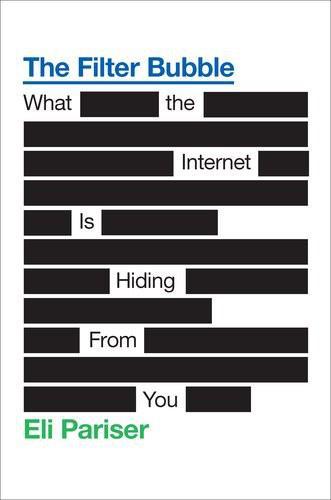
The Filter Bubble: What the Internet Is Hiding From You
by
Eli Pariser
Published 11 May 2011
For example, software that helps companies sift through résumés for talent might “learn” by looking at which of its recommended employees are actually hired. If nine white candidates in a row are chosen, it might determine that the company isn’t interested in hiring black people and exclude them from future searches. “In many ways,” writes NYU sociologist Dalton Conley, “such network-based categorizations are more insidious than the hackneyed groupings based on race, class, gender, religion, or any other demographic characteristic.” Among programmers, this kind of error has a name. It’s called overfitting. The online movie rental Web site Netflix is powered by an algorithm called CineMatch.
…
Coders sometimes harbor God impulses; they sometimes even have aspirations to revolutionize society. But they almost never aspire to be politicians. “While programming is considered a transparent, neutral, highly controllable realm ... where production results in immediate gratification and something useful,” writes NYU anthropologist Gabriella Coleman, “politics tends to be seen by programmers as buggy, mediated, tainted action clouded by ideology that is not productive of much of anything.” There’s some merit to that view, of course. But for programmers to shun politics completely is a problem—because increasingly, given the disputes that inevitably arise when people come together, the most powerful ones will be required to adjudicate and to govern.
…
Picker, Jim Harper, and Jeff Jarvis (New York, NY) Nov. 18, 2008, accessed Feb. 7, 2011, www.npr.org/templates/story/story.php?storyId=97216369. 60 the Latin for “middle layer”: Hat tip to Clay Shirky for introducing me to this fact in his conversation with Jay Rosen. Clay Shirky interview by Jay Rosen, video, chap. 5 “Why Study Media?” NYU Primary Sources (New York, NY), 2011, accessed Feb 9, 2011, http://nyuprimarysources.org/video-library/jay-rosen-and-clay-shirky/. 61 “many wresting power from the few”: Lev Grossman, “Time’s Person of the Year: You,” Time, Dec. 13, 2006, accessed Dec. 11, 2010, www.time.com/time/magazine/article/0,9171,1569514,00.html. 61 “did not eliminate intermediaries”: Jack Goldsmith and Tim Wu, Who Controls the Internet?
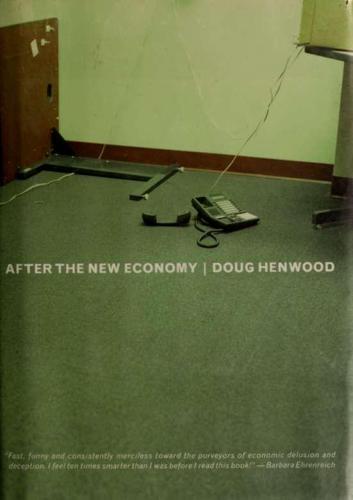
After the New Economy: The Binge . . . And the Hangover That Won't Go Away
by
Doug Henwood
Published 9 May 2005
"A Note on the Impact of Hedon-ics and Computers on Real GDP," Survey of Current Business, December, pp. 17—22 <www.bea.doc.gov/bea/articles/beawide/2000/1200hm.pdf^. Lev, Baruch (n.d.). "Communicating Knowledge Capabilities," unpublished paper <www.stern.nyu.edu/~blev/communicating.doc>. (2000). "Knowledge and Shareholder Value," unpublished paper <www.stern.nyu.edu/ -blev/knowledge&shareholdervalue. doc >. - (2001). Intangibles: Management, Measurement, and Reporting (Washington: Brookings Institution), forthcoming. Lewis, Peter H. (2000). "Wireless Valhalla: Hints of the Cellular Future," NewYork Times, jub/ 13,p.Gl.
…
And the studies that Greenspan reHes on for his optimistic view of tech-driven productivity all emphasize that high levels of capital spending—the rapid accumulation and deployment of things—are the underpinning of the reported productivity boom (Oliner and Sichel 2000a; Jorgenson and Stiroh 2000). Things that embody high concepts, for sure, but very much thingly things. Adventures in accounting It's not just stock touts, manic pundits, and revered central bankers who celebrated the New^ Paradigm, it was also academics at prestigious universities. One of the boldest is Baruch Lev, an NYU accounting professor who shed his fields reputation for caution, rudely violating Italo Svevo's dictum that there's no room for dreams in double entry. (No marginal figure, in August 2000 Lev won the aptly named Wildman Medal, given by the American Accounting Association, for making the year's greatest contribution to his profession.)

Food Trucks: Dispatches and Recipes From the Best Kitchens on Wheels
by
Shouse, Heather
Published 19 Apr 2011
His own personal eating habits and those of his friends inspired him to plaster “PURELY VEGETARIAN” along his tiny gril on wheels, and he set about bringing dosas to the masses. In Sri Lanka, a stone’s skip across the water from Southern Indian, these lacy lentil and rice crepes are common. But, as Thiru is quick to point out, “Ours are different. You won’t get the Jaffna dosa in India, and you won’t get my dosa, my grandmother’s recipe, anywhere else. Nowhere.” The NYU students he knows by name seem to agree; they’ve been forming lines that resemble concert queues since the day NY Dosas opened on the edge of Washington Square Park in 2002. Grinning through his thick moustache while cal ing out to regulars—“Kristen, Pondicherry dosa today, yeah? Michael, samosa, green chutney, and Jaffna dosa, yeah?”
…
He starts in on an order of uttapam, forming tiny white pancakes the size of silver dol ars, then turns his attention back to the dosa, gently transferring it to a Styrofoam cradle and crowning it with shavings of toasted coconut and a dol op of ginger-coconut chutney, faintly orange-red from chili powder. He hands the order over to the salivating customer, a fresh-faced Indian-American kid sporting an NYU backpack and gripping a Gatorade, then turns back to his orders sizzling away on the gril . He never needs to handle money, and he likes it that way. A guy in his early twenties wearing a “NY Dosa” T-shirt dips in and out of his fanny pack making transactions; his female counterpart sports a shirt that reads “Team Vegan,” and her primary task is keeping the line moving while checking in with Thiru to make sure the orders are on track.
…
He says this last part with a dramatic flourish, waving his arm to suggest “the world” before he goes on to explain that one of the four cameras mounted to the truck is a live webcam, inspired by a juice stand in Iran where people would line up to see themselves broadcast on the video screen mounted to the cart. Farhad is Iranian himself, but with a father who worked as a diplomat for the Iranian embassy, Farhad came about his wanderlust moving around from place to place before heading to Switzerland for boarding school. It was NYU for col ege, Wharton for business school, then two decades of investment banking that bounced him around to London, Kuwait, Geneva, Dubai, and Hong Kong while making him plenty of money doing it. He wound up back in D.C. when his mother became il , moving in to care for her, and it became clear “that the sexy life as an investment banker wasn’t going to work anymore,” he says.
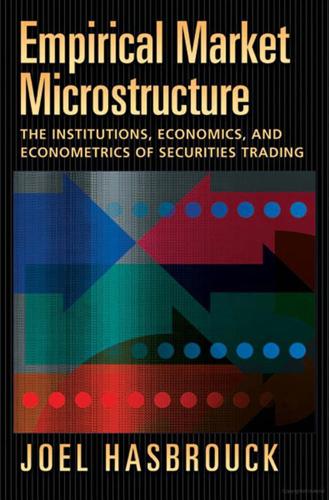
Empirical Market Microstructure: The Institutions, Economics and Econometrics of Securities Trading
by
Joel Hasbrouck
Published 4 Jan 2007
The practicalities of current trading on the New York Stock Exchange, for example, would be extremely difficult to deduce from the codified Constitution and Rules (New York Stock Exchange (2005)). Comerton-Forde and Rydge (2004) provide useful summaries of trading procedures in many securities markets and countries. 1.7 Supplements to the Book My Web site (http://www.stern.nyu.edu/∼jhasbrou) contains a number of links and programs that may help the reader follow, apply, emend, or extend the material in the book. Most of the mathematical derivations in the book were generated using Mathematica. The Mathematica notebooks are available on the site. Using Mathematica does not by any means guarantee the correctness of a derivation, but it does lessen the likelihood of a simple algebraic mistake.
…
Hodrick, and Robert A. Korajczyk, 2002, Predicting equity liquidity, Management Science 48, 470–83. Brunnermeier, Markus K., 2001, Asset Pricing under Asymmetric Information (Oxford University Press, Oxford). Brunnermeier, Markus K., and Lasse Heje Pedersen, 2005. Market liquidity and funding liquidity (Stern School, NYU). Caballe, Jordi, and Murugappa Krishnan, 1994, Imperfect competition in a multi-security market with risk neutrality, Econometrica 62, 695–704. Camerer, Colin, and Richard H. Thaler, 1995, Anomalies: Ultimatums, dictators and manners, Journal of Economic Perspectives 9, 209–19. Campbell, John Y., Sanford J.
…
., The Double Auction Market Institutions, Theories and Evidence, Proceedings Volume XIV, Santa Fe Institute (Addison-Wesley, Reading, MA). Saar, Gideon, 1998, Information and the pricing of assets when orders arrive one at a time (Johnson School, Cornell University). Saar, Gideon, and Lei Yu, 2002. Information asymmetry about the firm and the permanent price impact of trades: Is there a connection? (Finance Department, Stern School, NYU). Sandas, Patrik, 2001, Adverse selection and competitive market making: evidence from a pure limit order book, Review of Financial Studies 14, 705–34. Sargent, Thomas J., 1979, Macroeconomic Theory (Academic Press, New York). Seppi, Duane J., 1990, Equilibrium block trading and asymmetric information, Journal of Finance 45, 73–94.
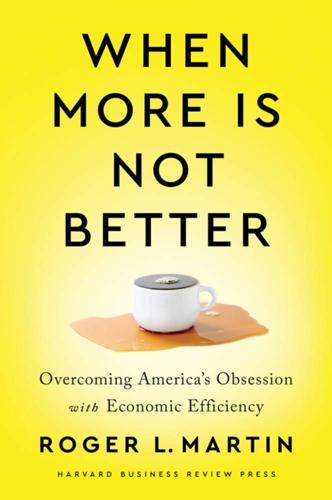
When More Is Not Better: Overcoming America's Obsession With Economic Efficiency
by
Roger L. Martin
Published 28 Sep 2020
Rotman (University of Toronto) was considered a leader when it started teaching design thinking in 2006.13 Schools such as Darden (University of Virginia) and Weatherhead (Case Western) were early adherents as well, and now many leading business schools feature design-thinking courses or programs, including MIT/Sloan, Harvard Business School, Columbia, and Cornell.14 However, very few of these courses or programs are taught by full-time tenure-stream faculty, so design thinking/ethnography/deep user understanding are still fringe subjects at business schools across the country. But at least the material is available to students. Regrettably, schools of public policy for the most part lag behind in this domain. A review of twelve top schools of public policy shows zero required courses featuring ethnography.15 Only two of the schools, Harvard’s Kennedy School and NYU’s Wagner School, feature an elective course on the subject, and in both cases it is a single course. Clearly, getting close to the user is not high on the agenda in this field. While progress is being made on teaching students the tools and techniques for getting closer to the real world in order to inform decisions, more needs to be done.
…
Stephen Gossett, “20 Design Thinking Courses You Should Know,” Built In, November 25, 2019, https://builtin.com/design-ux/design-thinking-courses. 15. The twelve schools are Berkeley (Goldman), Chicago (Harris), Georgia (SPIA), Harvard (Kennedy), Indiana (O’Neill), Michigan (Ford), Minnesota (Humphrey), NYU (Wagner), Princeton (Woodrow Wilson), Southern California (Price), Syracuse (Maxwell), Washington (Evans). 16. I learned about this distinction from collaborator Hilary Austen, who attributes her understanding to her PhD supervisors, Jim March and Elliot Eisner, the late Stanford business and education professors, respectively. 17.
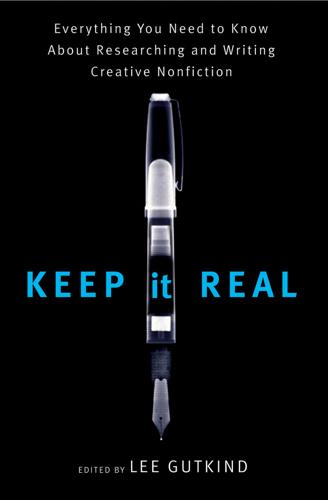
Keep It Real: Everything You Need to Know About Researching and Writing Creative Nonfiction
by
Lee Gutkind
Published 1 Jan 2008
Another common, morally defensible answer is that one person’s truth is better than no truth at all. Nonetheless, writers have an ethical responsibility to consider the ways in which their stories may continue to affect their subjects’ lives, even long after publication. About the Contributors Robert S. Boynton is the director of NYU’s Magazine Writing Program. He is the author of The New New Journalism (Vintage Books, 2005) and has been an editor at Manhattan, Inc. and Harper’s. He has written for the New Yorker, the New York Times Magazine, the Atlantic Monthly, the Nation, Lingua Franca, Bookforum, the New York Times Book Review, the Los Angeles Times Book Review, the Village Voice, Rolling Stone, and many other publications.
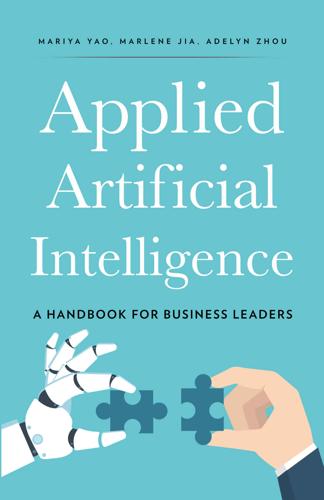
Applied Artificial Intelligence: A Handbook for Business Leaders
by
Mariya Yao
,
Adelyn Zhou
and
Marlene Jia
Published 1 Jun 2018
Director, Strategy & Business Development, Viacom International Media Networks “Recent progress in AI will dramatically impact all aspects of a business. This excellent book provides a practical examination of how to harness disruptive technologies to achieve scalable and sustainable business success.” Steven Kuyan Managing Director, NYU Tandon Future Labs Applied Artificial Intelligence A Handbook for Business Leaders Copyright © 2018 by TOPBOTS Inc. All rights reserved. No part of this publication may be reproduced, distributed, or transmitted in any form or by any means, including photocopying, recording, or other electronic or mechanical methods, without the prior written permission of the publisher, except in the case of brief quotations embodied in critical reviews and certain other noncommercial uses permitted by copyright law.
…
Adelyn Zhou Adelyn is recognized as a leader in marketing and artificial intelligence (AI) by publications including Forbes, Entrepreneur, Inc., Wired, and IBM Watson. She has led growth efforts at Amazon (Quidsi), Eventbrite, TOPBOTS, and Nextdoor. She is a marketing advisor to SignalFire’s portfolio of companies and a mentor to startups incubated at NYU Tandon Future Labs and IBM’s AI XPRIZE. She is an internationally acclaimed speaker at conferences such as SXSW, CES, Inbound, MarTech, DLD, and more. Adelyn graduated from Harvard College and received her MBA from Harvard Business School. Marlene Jia Marlene is the CEO of Metamaven and works with global customers such as L’Oreal, WPP, and PayPal on their enterprise automation initiatives.
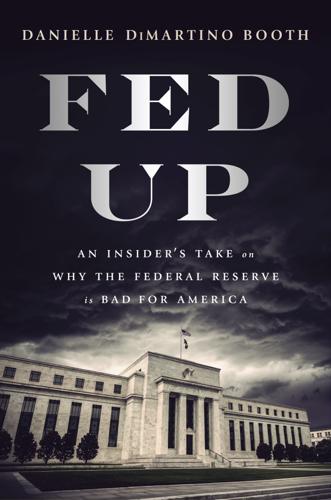
Fed Up: An Insider's Take on Why the Federal Reserve Is Bad for America
by
Danielle Dimartino Booth
Published 14 Feb 2017
As for the Maestro, Greenspan dropped out of the doctoral program at Columbia University in 1951, failing to complete his dissertation. After chairing the Council of Economic Advisers in the Nixon and Ford administrations, he obtained a PhD from New York University in 1977. But his paper went missing for years, removed from NYU’s Bobst Library at Greenspan’s request. The missing document gave rise to the suspicion that his doctorate was honorary, composed of recycled articles cut and pasted together. When one of two known copies was finally unearthed by Barron’s in 2008, it was revealed to be previously published work totaling about 180 pages.
…
Another blogger wrote: “While we working stiffs were enjoying our families and taking a break from the world’s cruel realities for the year end holidays, the Dallas Fed came out with a surprisingly refreshingly honest assessment of the housing market. . . . They even suggest that allowing it to crash and find its own level may ultimately be the least painful and correct thing to do.” That paper the Fed tried to bury is now suggested reading for economics courses at UCLA and NYU. CHAPTER 18 Insider Trading? FED STATEMENT WORD COUNT: 814 EFFECTIVE FED FUNDS RATE: 0.10% 10-YR TREASURY RATE: 2.60% FED BANKS TOTAL ASSETS: $4,368.35B DATE: 6/1/2014 One myth that’s out there is that what we’re doing is printing money. We’re not printing money. —BEN BERNANKE, DECEMBER 3, 2010 End the Fed!
…
And mix it up. One of Rosenblum’s students applied for a job at the New York Fed. He came from a blue-collar background, spent seven years in the military, and earned his MBA from SMU on the GI Bill. Smart guy. But he couldn’t get to first base at the New York Fed. They hire people from Yale and Harvard and NYU—people just like themselves. Others need not apply. Then the top Ivy Leaguers stay for two years and move on to bigger money at Citibank or Goldman Sachs. It’s a tribe that’s been bred over ninety years and slow to change. But if the culture of extreme deference at the New York Fed (which also exists in District Banks to a lesser degree) is not quashed, regulatory capture will continue with disastrous results.

Facebook: The Inside Story
by
Steven Levy
Published 25 Feb 2020
It would have to be a separate organization, with no ties to product groups. It would have to be completely open—no restrictions on publishing. The results they came up with would have to be open-source so they would benefit everyone. Oh, and LeCun would retain his NYU post, working there part-time, and base the new lab in New York City. No problem! said Zuckerberg, and the Facebook Artificial Intelligence Lab, or FAIR, now is centered in New York City, on the edge of NYU’s Greenwich Village campus. It is the horizon-exploring partner to the company’s Applied Machine Learning team, which directs its AI work to products. LeCun says that the integration worked superbly.
…
“I would have done something in math, left to my own devices,” he says now. “Absolutely. I loved math.” The Zuckerbergs lived in Dobbs Ferry, New York, twenty-five miles north of the big city. Both had grown up in working-class neighborhoods in the outer boroughs of that city. Their own parents were first-generation Americans. In 1977, while studying dentistry at NYU, Ed had gone on a blind date with a Brooklyn College coed, Karen Kempner, who hailed from Queens. He was twenty-four, she nineteen. Both had grandparents who emigrated from eastern Europe, and both were diligently studying to accomplish what was the career gold standard in each of their families: becoming a professional like a doctor or lawyer.
…
“There was recognition that when your motto is ‘Move Fast and Break Things,’ you can’t alienate your users too much,” says Ezra Callahan. The Customer Support team leader was a recent Stanford grad named Paul Janzer. He hadn’t envisioned a career in the tech world for himself—his plan had been law school, and in fact he had been accepted by NYU. But at the last minute he decided to defer, and stay in the Bay Area for kind of a gap year. He figured he’d work as a paralegal to pay his bills, but one day, he was using Facebook and saw an ad in the right-hand column soliciting someone to start a customer-support team. It was August 2005. He submitted his résumé, interviewed, and within a week was the first full-time hire working on customer support and content moderation.
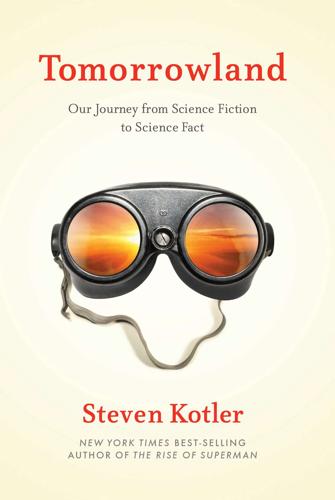
Tomorrowland: Our Journey From Science Fiction to Science Fact
by
Steven Kotler
Published 11 May 2015
In Russia, it’s ketamine (a tranquilizer known to produce dissociative states) for heroin addiction. Here at home, scientists at the Johns Hopkins University have concluded a long-term psilocybin study that examined the purported “mystical experiences” people have while hallucinating. At UCLA, they’ve already completed an end-of-life anxiety psilocybin study, while teams at NYU and Johns Hopkins are beginning ones of their own. At the University of Arizona, it’s psilocybin as a treatment for obsessive-compulsive disorder. At Harvard, having finished up neurotoxicity studies on both MDMA and peyote, researchers are about to get underway with LSD for cluster headaches and MDMA for end-of-life anxiety.
…
Around the same time, Humphry Osmond — the British psychiatrist who coined the term psychedelic — suggested LSD might be used to treat alcoholism. His idea was later backed up experimentally, with the most famous example being the 1962 Saskatchewan Study, wherein Canadian scientists found that 65 percent of their research group stopped drinking for a year and a half (the duration of the study) after one LSD experience. Says NYU’s Stephen Ross: “Addiction was the number one reason psychedelics were administered during this period. Thousands of people were involved. All the research showed the same thing: Afterward, addicts tended toward abstinence. Sometimes sobriety lasted weeks, sometimes months.” Addiction remains one of the top public health concerns in America, but despite such tantalizing potential, most of this research has been buried for forty years.
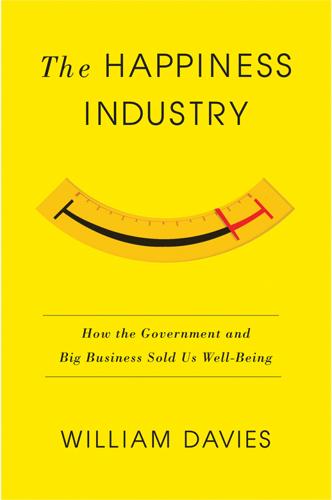
The Happiness Industry: How the Government and Big Business Sold Us Well-Being
by
William Davies
Published 11 May 2015
When completed, it will be home to sixteen new skyscrapers, containing office space, around 5,000 apartments, retail space and a school. And thanks to a collaboration between city authorities and New York University (NYU), initially brokered by former mayor Michael Bloomberg, it will also be one vast psychology lab. Hudson Yards will be one of the most ambitious examples of what the NYU research team term a ‘quantified community’, in which the entire fabric of the development will be used to mine data to be analysed by academics and businesses. The behaviourist project initiated by Watson, of treating humans like white rats to be stimulated in search of a response, is now becoming integrated into the principles of urban planning.
…
Quoted in Kurt Danziger, ‘The Social Origins of Modern Psychology: Positivist Sociology and the Sociology of Knowledge’, in Allen Buss, ed., Psychology in Social Context, New York: Irvington Publishers, 1979. 15Rieber, Wilhelm Wundt and the Making of a Scientific Psychology. 16See John Mills, Control: A History of Behaviorism, New York: NYU Press, 1998. 17See nudgeyourself.com. 18David Armstrong, ‘Origins of the Problem of Health-Related Behaviours: A Genealogical Study’, Social Studies of Science 39: 6, 2009. 19John B. Watson, Psychology from the Standpoint of a Behaviorist, Memphis, TN: General Books LLC. 20Kerry Buckley, Mechanical Man: John Broadus Watson and the Beginnings of Behaviorism, New York: The Guilford Press, 1989. 21Ibid., 130. 22Watson, Psychology from the Standpoint of a Behaviorist, 41-42. 23Emmanuel Didier, ‘Sampling and Democracy: Representativeness in the First United States Surveys’, Science in Context 15: 3, 2002. 24Sarah Igo, The Averaged American: Surveys, Citizens, and the Making of a Mass Public, Cambridge, MA: Harvard University Press, 2009. 25Quoted in Igo, The Averaged American. 26Stefan Schwarzkopf, ‘A Radical Past?
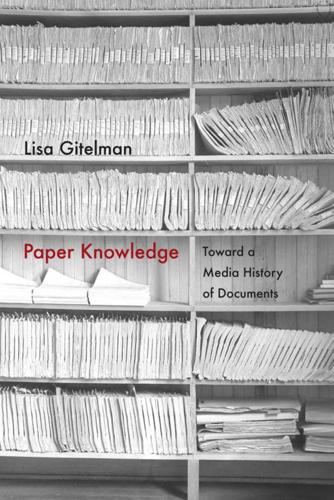
Paper Knowledge: Toward a Media History of Documents
by
Lisa Gitelman
Published 26 Mar 2014
Any overlap between those publications and this one appears by permission, and I have benefited gratefully in each case from editorial suggestions as I have more recently from the professional attentions of Ken Wissoker, Courtney Berger, and the staff at Duke University Press. Timely fellowship support aided in the preparation of this book, both when I was a Beaverbrook Media@McGill Visiting Scholar in 2012 and when I was an nyu Humanities Initiative Fellow in 2011–12. The Steinhardt School at nyu helped defray the cost of illustrations. The American Antiquarian Society supported me with a short-term fellowship in the summer of 2007 to research something different, but that’s when I first encountered a copy of Oscar Harpel’s wacky Typograph, so thank you as ever to the aas .
…
That paper was subsequently enlarged, revised, and presented at the Maryland Institute for Technology in the Humanities; the University of Uppsala, Sweden; and Harvard University’s Department of the History of Science, where my short exile in Cambridge was so significantly enriched by Stephanie Athey, Jimena Canales, and Craig Robertson, among others. Chapter 4 started as a job talk for the Department of English at New York University (nyu ) and a presentation at Texas a&m University’s Glasscock Center, where I was invited by Eric Rothenbuhler and hosted P R E FAC E xi by James Rosenheim. The talk subsequently benefited from additional airing at the John Hope Franklin Institute for the Humanities at Duke University, where I was invited by Ellen Garvey and her seminar mates and hosted by Srinivas Aravamudan, as well as a careful reading by Alex Csiszar and discussions with John Willinsky, Elena Razlogova, Carlin Wing, and others.
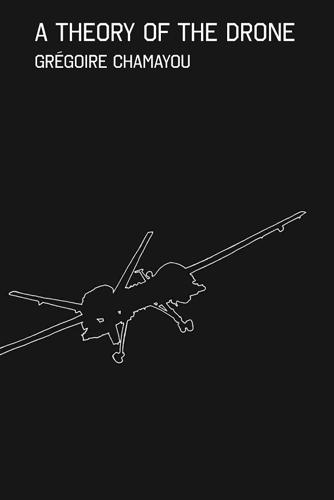
A Theory of the Drone
by
Gregoire Chamayou
Published 23 Apr 2013
Anna Mulrine, “Warheads on Foreheads,” Air Force Magazine 91, no. 10 (October 2008): 44–47. 7. See International Human Rights and Conflict Resolution Clinic, Stanford Law School, and Global Justice Clinic, NYU School of Law, Living Under Drones: Death, Injury and Trauma to Civilians from US Drone Practices in Pakistan, September 2012, 10, www.livingunderdrones.org/wp-content/uploads/2013/10/Stanford-NYU-LIVING-UNDER-DRONES.pdf. 8. “Transgenders Take to the Streets Against Drones,” Express Tribune, July 31, 2012. 9. John Brennan, “The Ethics and Efficacy of the President’s Counterterrorism Strategy,” Wilson Center, April 30, 2012, www.wilsoncenter.org/event/the-efficacy-and-ethics-us-counterterrorism-strategy. 10.
…
David Rohde, “Reuters Magazine: The Drone Wars,” Reuters, January 26, 2012, www.reuters.com/article/2012/01/26/us-david-rohde-drone-wars-idUSTRE80P11I20120126. 30. Stanford International Human Rights and Conflict Resolution Clinic, Living Under Drones: Death, Injury and Trauma to Civilians from US Drone Practices in Pakistan, September 2012, p.81ff, livingunderdrones.org/wp-content/uploads/2012/10/Stanford-NYU-LIVING-UNDER-DRONES.pdf. 31. Ibid. 32. Ibid., 83. 33. Ibid., 81. 34. Ibid., 87. 5. Pattern-of-Life Analysis 1. Jo Becker and Scott Shane, “Secret ‘Kill List’ Proves a Test of Obama’s Principles and Will,” New York Times, May 29, 2012. 2. Harold Koh, “The Obama Administration and International Law,” speech given at the American Society of International Law’s annual meeting, March 25, 2010, www.state.gov/s/l/releases/remarks/139119.htm. 3.
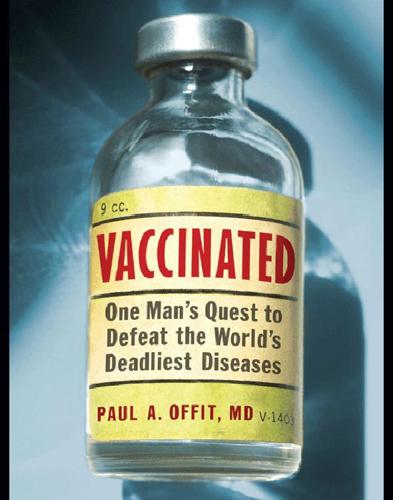
Vaccinated: One Man's Quest to Defeat the World's Deadliest Diseases
by
Paul A. Offit
Published 1 Jan 2007
A trim, well-spoken man of German Jewish ancestry, Austrian finished his internship and residency at Hopkins in 1945 and decided to pursue a career in infectious diseases. “I was told that if you wanted to learn classical bacteriology, go to Harvard or [the] Rockefeller [Institute]. But if you wanted to see the future of bacteriology, go to New York University.” At NYU Austrian met Colin MacLeod, the man who inspired his lifelong interest in pneumococcus. Austrian’s interest in a pneumococcal vaccine would soon be interrupted by a medical product first developed in Germany. IN 1908 A VIENNESE CHEMIST NAMED PAUL GELMO SYNTHESIZED A chemical that—because it was bright red—proved very useful in the German dye industry.
…
They found that the bacterium was surrounded by a capsule made of a complex sugar called polysaccharide, that the polysaccharide could be stripped from the bacteria, that polysaccharide injected into mice protected them against infection, and that people injected with different polysaccharides from various strains of pneumococcus developed antibodies against each of the different types. Colin MacLeod, Austrian’s mentor at NYU, made the first successful pneumococcal vaccine by taking four different types of pneumococci and stripping off their polysaccharide coats. During the Second World War, he injected either his vaccine or placebo into seventeen thousand military recruits and found that following an epidemic of pneumococcal pneumonia, his vaccine worked.
…
Blumberg, "Australia Antigen and the Biology of Hepatitis B: Nobel Lecture," December 13, 1976. 119 Prince hepatitis study: A. M. Prince, "An Antigen Detected in the Blood During the Incubation Period of Serum Hepatitis," Proceedings of the National Academy of Sciences 60 (1968): 814–21. Krugman background: Saul Krugman: Physician, scientist, teacher, 1911–1995, http://library.med.nyu.edu/library/eresources/featuredcollections/ krugman/html. Krugman Willowbrook studies: S. Krugman and R. Ward, "Clinical and Experimental Studies of Infectious Hepatitis," Pediatrics 22 (1958): 1016–22; S. Krugman, J. P. Giles, and J. Hammond, "Viral Hepatitis, Type B (MS–2 Strain): Studies on Active Immunization," Journal of the American Medical Association 217 (1971): 41–45; S.
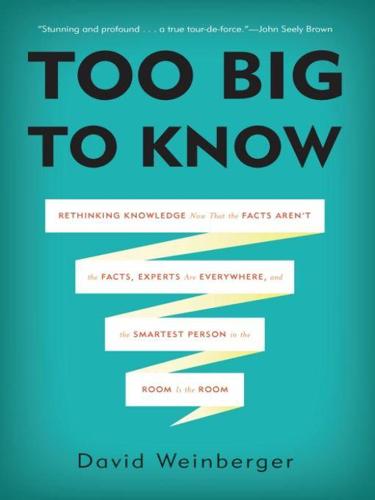
Too Big to Know: Rethinking Knowledge Now That the Facts Aren't the Facts, Experts Are Everywhere, and the Smartest Person in the Room Is the Room
by
David Weinberger
Published 14 Jul 2011
Ninth, it’s not just the author who is no longer alone in his wilderness cabin. The readers are also now connected. We can see some of the effects of the writer’s words rippling through the culture. We can see that journalists are weighing in on Rosen’s site, that other sites are linking back to Rosen, that jayrosen_nyu has 37,000 Twitter followers. We used to have to be told that ideas have effects. Now we can see ideas spreading, like watching on a monitor as dye injected into the bloodstream traces its path. But there are disadvantages: For some, the voices of readers may function as noise, as a distraction.
…
Carr’s idea that his neurons sprang “back to life,” by the way, seems to dispute his book’s claim that the ways the Net changes our physical brain cannot easily be undone. 13 See Lewis Hyde’s Common as Air: Revolution, Art, and Ownership (Macmillan, 2010) for an excellent history of cultural commons that makes this point, focusing on the American Revolutionary period. 14 See http://www.edge.org/discourse/carr_google.html. 15 Email from Jay Rosen, July 17, 2010. 16 See http://journalism.nyu.edu/pubzone/weblogs/pressthink/2010/07/07/obj_persuasion.html. 17 Ibid. 18 Email from Jay Rosen, July 17, 2010. 19 As Mark Federman pointed out on my blog post about this; see http://www.hyperorg.com/blogger/2010/07/18/jay-rosen-carpenter/. 20 David T. Z. Mindich, Just the Facts: How “Objectivity” Came to Define American Journalism (New York University Press, 1998), pp. 4–5. 21 I wrote about this on my blog: http://www.hyperorg.com/blogger/2004/07/28/objective-rhetoric/. 22 Glen Johnson, “Kennedy Leads the Attack,” Boston Globe, July 28, 2004, http://www.boston.com/news/politics/conventions/articles/2004/07/28/kennedy_leads_the_attack/. 23 David S.
…
id=mZ48 AAAAYAAJ), and cited by John Beatty in his review of “Fair and Balanced: A History of Journalistic Objectivity,” Journalism and Mass Communication Quarterly: Association for Education in Journalism and Mass Communications 83, no. 1 (April 2006), http://vlex.com/vid/fair-balanced-journalistic-objectivity-61539404.The historian Sheila McIntyre links the concern for fairness and accuracy back to the role of ministers in the seventeenth century as reporters and distributors of news; see Sheila McIntyre, “‘I Heare It So Variously Reported’: News-Letters, Newspapers, and the Ministerial Network in New England, 1670–1730,” New England Quarterly 71, no. 4 (December 1998), pp. 593–614, http://www.jstor.org/stable/366604. 27 The obvious source for the New Journalism is The New Journalism, edited by Tom Wolfe and Edward Warren Johnson (Harper & Row, 1973). 28 Jay Rosen, “Questions and Answers About PressThink,” http://journalism.nyu.edu/pubzone/weblogs/pressthink/2004/04/29/q_and_a.html. 29 Malcom Gladwell, “Small Change: Why the Revolution Will Not Be Tweeted,” New Yorker, October 4, 2010, http://www.newyorker.com/reporting/2010/10/04/101004fa_fact_gladwell. I replied in a blogpost: http://www.hyperorg.com/blogger/2010/10/02/gladwell-discovers-it-takes-more-than-140-characters-to-overturn-a-government/. 30 Malcolm Gladwell, “Does Egypt Need Twitter?”
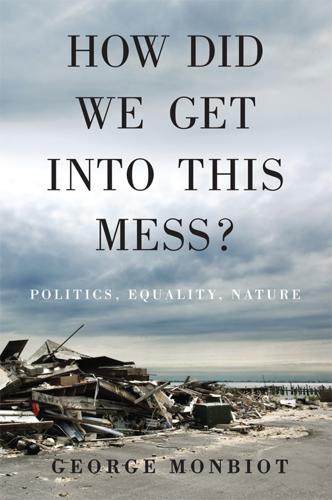
How Did We Get Into This Mess?: Politics, Equality, Nature
by
George Monbiot
Published 14 Apr 2016
Intent to Keep Adding Names to Kill Lists’, washingtonpost.com. 4International Human Rights and Conflict Resolution Clinic, Stanford Law School and Global Justice Clinic, NYU School of Law, September 2012, Living under Drones: Death, Injury and Trauma to Civilians from US Drone Practices in Pakistan, livingunderdrones.org. 5For example: Yousaf Ali, 5 November 2006, ‘Most Bajaur Victims Were under 20’, thenews.com.pk. 6International Human Rights and Conflict Resolution Clinic at Stanford Law School and Global Justice Clinic at NYU School of Law, ‘Living under Drones’. 7Jay Carney, 12 December 2012, ‘Press Briefing’, whitehouse.gov. 8John Brennan, 30 April 2012, ‘The Ethics and Efficacy of the President’s Counterterrorism Strategy’, wilsoncenter.org. 9Ibid. 10International Human Rights and Conflict Resolution Clinic, Living under Drones. 1118 March 2011, ‘Rare Condemnation by PN, Army Chief: 40 Killed in Drone Attack’, dawn.com. 12Ibid. 13Glenn Greenwald, 23 October 2012, ‘Joe Klein’s Sociopathic Defence of Drone Killings of Children’, theguardian.com 14Ibid. 15‘Obama’s Newton Speech’, theguardian.com. 11.
…
Suspect’. 7Barack Obama, 23 May 2013, ‘President Barack Obama’s Speech at National Defense University: Full Text’, theguardian.com. 8Eric Holder, 5 March 2012, ‘Attorney General Eric Holder Speaks at Northwestern University School of Law’, justice.gov. 9Obama, ‘President Barack Obama’s Speech at National Defense University: Full Text’. 10International Human Rights and Conflict Resolution Clinic at Stanford Law School and Global Justice Clinic at NYU School Of Law, September 2012, ‘Living under Drones: Death, Injury and Trauma to Civilians from US Drone Practices in Pakistan’, law.standford.edu; The Bureau of Investigative Journalism, ‘The Covert Drone War’, thebureauinvestigates.com. 46. The Paranoia Squad 1See saveradleylakes.org.uk. 2The High Court of Justice, order arising from Case HQ07X00505, para 6.4, netcu.org.uk. 3From lawson-cruttenden.co.uk, accessed 22 December 2008 and since become defunct. 4Sections 125–7, opsi.gov.uk/acts/acts2005/ukpga_20050015_en_12#pt4-pb1-l1g125. 5Timothy Lawson-Cruttenden, 2007, ‘Injunctive Relief against Harassment and Trespass’, Case Commentaries, Environmental Liability, p. 194, lawson-cruttenden.co.uk (no longer accessible). 6Ibid. 7See netcu.org.uk. 8NETCU, November 2007, ‘Policing Protest: Pocket Legislation Guide,’ p. 51.

Blitzscaling: The Lightning-Fast Path to Building Massively Valuable Companies
by
Reid Hoffman
and
Chris Yeh
Published 14 Apr 2018
As it turns out, Airbnb’s market was indeed closer to $30 billion. When evaluating market size, it’s also critical to try to account for how lower costs and product improvements can expand markets by appealing to new customers, in addition to seizing market share from existing players. In 2014, Aswath Damodaran, a professor of finance at NYU’s Stern School of Business, estimated that Uber was probably worth roughly $6 billion, based on its ability to ultimately win 10 percent of the global taxi market of $100 billion, or $10 billion. According to Uber’s own projections, in 2016 the company processed over $26 billion in payments. It’s safe to say that the $10 billion market was a serious underestimate, as the ease of use and lower cost of Uber and its competitors expanded the market for transportation-as-a-service.
…
‘Marketplaces have profiles,’ they reason, ‘so if I add profiles, I’ll be adding network effects.’ ” Yet the reality of building network effects is a bit more complicated. Rather than simply imitate specific features, the best blitzscalers study the different types of network effects and design them into their business models. Five Categories of Network Effects On his industrial organization of information technology website, the NYU professor Arun Sundararajan classifies network effects into five broad categories: Direct Network Effects: Increases in usage lead to direct increases in value. (Examples: Facebook, messaging apps like WeChat and WhatsApp) Indirect Network Effects: Increases in usage encourage consumption of complementary goods, which increases the value of the original product.
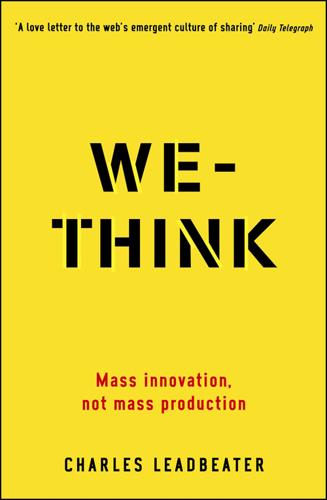
We-Think: Mass Innovation, Not Mass Production
by
Charles Leadbeater
Published 9 Dec 2010
., The Cathedral and the Bazaar (Cambridge, MA: O’Reilly, 2001) Rheingold, Howard, Smart Mobs (Perseus Books, 2002) Rivlin, Gary, ‘Leader of the Free World’, Wired, November 2003, pp. 153–54 Roberts, John, The Modern Firm (Oxford University Press, 2004) Rosen, Jay, ‘Journalism Is Itself a Religion’, Production Values, Demos, http://journalism.nyu.edu/pubzone/ weblogs/pressthink/2003/10/16/radical_ten.html (2006) Rosen, Jay, ‘What’s Radical About the Weblog Form in Journalism?’, Pressthink, http://journalism.nyu.edu/ pubzone/weblogs/pressthink/2003/10/16/radical_ten. html (2003) Rosen, Jay, ‘Bloggers vs. Journalists Is Over’, Pressthink, http://journalism.nyu.edu/pubzone/weblogs/ pressthink/2005/01/21/berk_essy.html (2005) Rosen, Jeffrey, The Unwanted Gaze: The Destruction of Privacy in America (New York: Vintage Books, 2001) Rushe, Dominic, ‘Fantasy Game Turns Internet into Goldmine’, The Sunday Times, September 2006 Schienstock, Gerd, and Timo Hämäläinen, Transformation of the Finnish Innovation System: A Network Approach (Helsinki: Sitra Reports Series 7, 2001) Schwartz, Barry, The Paradox of Choice: Why More Is Less (New York: HarperCollins, 2004) Sen, Amartya, The Unwanted Indian: Writings on Indian History, Culture and Identity (Penguin, 2006) Sennett, Richard, The Culture of the New Capitalism (New Haven/London: Yale University Press, 2006) Shaw, Patricia, Changing Conversations in Organizations (Routledge, 2002) Spufford, Frances, Backroom Boys (Faber & Faber, 2003) Stacey, Ralph D., Complex Responsive Processes in Organizations (Routledge, 2001) Stacey, Ralph D., Douglas Griffin and Patricia Shaw, Complexity and Management (Routledge, 2002) Stebbins, Robert A., Amateurs, Professionals, and Serious Leisure (Montreal/Kingston: McGill-Queen’s University Press, 1992) Steil, Ben, David G.

Great American Hypocrites: Toppling the Big Myths of Republican Politics
by
Glenn Greenwald
Published 14 Apr 2008
This is the dynamic that has shaped the media’s political coverage for years. Right-wing operatives feed the media shallow story lines, and they dutifully repeat it. Critically, the more this process works to manipulate media coverage, the more our media stars come to admire, and want to please and follow, these right-wing operatives. As NYU journalism professor Jay Rosen put it in his excellent 2007 essay on the relationship of Washington journalists to Rove’s GOP political machine: Savviness is what journalists admire in others. Savvy is what they themselves dearly wish to be. (And to be unsavvy is far worse than being wrong.) Savviness—that quality of being shrewd, practical, well-informed, perceptive, ironic, “with it,” and unsentimental in all things political—is, in a sense, their professional religion.
…
Constant exposure to new ideas, and having one’s old ideas subjected to rigorous and immediate scrutiny, are among the principal benefits of the medium. Numerous individuals provided invaluable assistance in the writing of this book. My agent, Dan Conaway, and my Crown editor, Sean Desmond, were both instrumental in shaping the theme of the book and helping to create its structure. Two students, Vincent Rossmeier of NYU’s School of Journalism and Matthew Berman of George Washington University, provided superb, comprehensive research assistance with regard to virtually every topic covered here. And Mona Holland once again wielded a merciless editing pen in order to eliminate verbosity and keep the arguments tight and focused.
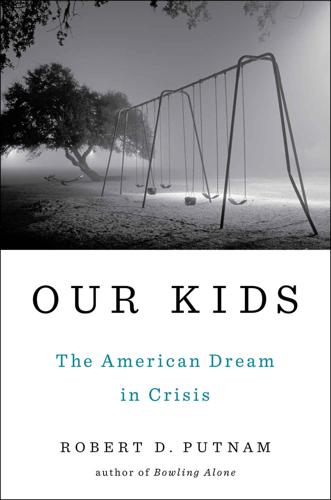
Our Kids: The American Dream in Crisis
by
Robert D. Putnam
Published 10 Mar 2015
(Desmond’s two siblings are not at home during our visit.) Simone grew up in an upwardly mobile, middle-class family in the New York City area. Her family started out in Harlem, moved through increasingly comfortable parts of the city, and finally crossed the river to a New Jersey suburb. Her father was recruited out of NYU to become a manager at Merrill Lynch; her mother was a medical secretary. “I don’t think I ever really had a want for anything,” Simone reflects. Her parents were happily married for more than 50 years and became what she describes as “amazing grandparents,” part of a strong extended family. (Even in his 20s Desmond talks to his grandfather weekly, and his younger brother does so virtually every day.)
…
The adjacent dining room provides a calm space for conversation and homework, an environment that served as a refuge from Troy High School, which all three children attended and where, Clara reports, you can feel quivers of anxiety, as kids compete for the highest SAT scores and spots at Harvard, Stanford, and NYU. Her kids have had a very different experience growing up here than Clara and Ricardo had growing up a generation ago in South Central LA. Clara and her twin brother, Francisco, were born and raised in a small Mexican village. Their father had come to California on his own as a bracero railway worker during World War II, and when Clara and Francisco were eight, he brought his entire family (the twins, their mother, and two older siblings) as legal immigrants to Los Angeles.
…
I’ve never really done well in math, and I’m doing really well now.” Despite struggling with advanced math at Troy, as a college sophomore she’s tutoring seven college freshmen in pre-calculus. When the time came, Clara and Ricardo actively helped their kids with their college applications. “Some of these essays from USC and Penn and NYU were difficult,” Clara says. “You have to be very mature to answer some of those questions. Ricardo is a very good writer, and he’s the one I give a lot of the credit to. I think he helped you [Isabella] and Michael maneuver the application process. And with Michael, I submitted his application to several friends of mine—they were professors and one was a university dean—just so I could get their feedback.

The Black Box Society: The Secret Algorithms That Control Money and Information
by
Frank Pasquale
Published 17 Nov 2014
Schools have begun to teach the basics of “cyberhygiene,” a kind of preventive care for the digital self.197 Not enough? The Electronic Frontier Foundation pushes for strong encryption. The Electronic Privacy Information Center wants web browsers to default to “do not track.” Professor Helen Nissenbaum at NYU looks to creative obfuscation: her browser extension TrackMeNot floods your search engine with so many random queries that companies like Google can’t compile an accurate psychological or marketing profile.198 Presumably the same technology could be applied to Gmail by sending dozens of fake e-mails to dummy accounts.
…
But how many apps never attract the attention of journalists? We don’t know. There’s no census of app developers to poll, and Apple’s not telling. Drones +. Eucalyptus seems to have been a victim of incompetent or arbitrary decision making.21 Other rejections look less benign. THE HIDDEN LOGICS OF SEARCH 63 NYU graduate student John Begley developed Drones+ as U.S. drone warfare expanded. It aggregates news stories on drone targets, maps them, and delivers a pop-up notification whenever a new strike is reported. Begley included the real-time alerts to help users keep track of an underreported military initiative.22 Apple rejected Drones+ twice.
…
Nick Wingfield, “Apple Rejects App Tracking Drone Strikes,” New York Times Bits Blog, August 30, 2012, http:// bits.blogs.nytimes.com /2012/08 /30/apple-rejects-app-tracking-drone-strikes/. 25. When he fi nally began listing out every drone strike via Twitter, his tweets sparked sobering conversations about U.S. actions; clearly, there is an appreciative and constructive audience out there for Begley’s work. Michael Kelly, “The NYU Student Tweeting Every Reported U.S. Drone Strike Has Revealed a Disturbing Trend,” Business Insider, December 12, 2012, http://www.businessinsider.com /us-drone -tweets-reveal-double -tap -plan-2012-12. 26. Bonnington and Ackerman, “Apple Rejects App That Tracks U.S. Drone Strikes.” 27. Lorenzo Franceschi-Bicchierai, “After 5 Rejections, Apple Accepts App That Tracks U.S.
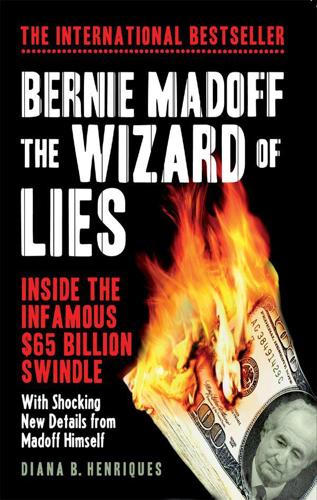
Bernie Madoff, the Wizard of Lies: Inside the Infamous $65 Billion Swindle
by
Diana B. Henriques
Published 1 Aug 2011
The thirty-three-storey building caters to hedge funds, and Merkin’s thirty-second-floor suite is prime property in that community. Maertens, the longtime head of Ford Motor Company’s pension fund, was wooed out of early retirement in 1997 by the NYU investment committee. By then, NYU was already an investor in Merkin’s Ariel fund, having bought its first $20 million stake in January 1994. Now its investment—which the committee assumes is being managed by Merkin—has supposedly grown to more than $85 million. At today’s routine meeting, Merkin recommends that NYU invest directly in a fund run by Bernie Madoff. True, Madoff clears his own trades—there is no third-party custodian holding the assets—but he has offered a good steady return year after year, Merkin says.
…
True, Madoff clears his own trades—there is no third-party custodian holding the assets—but he has offered a good steady return year after year, Merkin says. Maertens and his assistant are instantly dismissive. As an institutional investor, NYU would never invest with any fund that “self-clears”. Without equivocation, Maertens tells Merkin that an investment with Madoff would not be suitable. For some reason, Ezra Merkin does not say, “But you are already invested with Bernie Madoff through the Ariel fund.” Merkin has invested about a third of the Ariel fund’s assets, more than $300 million, with Madoff. It is part of roughly $2 billion that Merkin thinks his three hedge funds have in their accounts with Bernie.
…
It is part of roughly $2 billion that Merkin thinks his three hedge funds have in their accounts with Bernie. Indeed, Merkin’s trust is so solid that he has added another $10 million to his Madoff accounts this month. Maertens will later recall that they simply moved on to other topics. When their routine business is done, the NYU executives exchange handshakes with Merkin and leave. TUESDAY, OCTOBER 28, 2008 A senior JPMorgan Chase executive in London signs and dates a startling confidential report to the Serious Organised Crime Agency, a national law enforcement body for Britain. In the section of the form entitled “Reason for Suspicion”, the report describes the bank’s complex derivatives deals involving three funds that all invest with Bernard L.
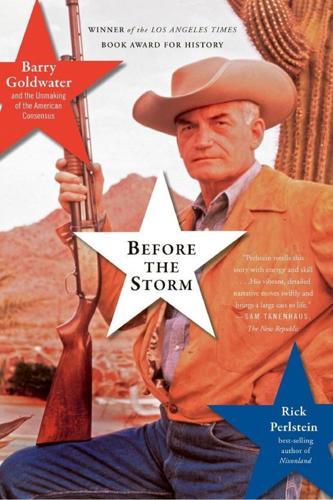
Before the Storm: Barry Goldwater and the Unmaking of the American Consensus
by
Rick Perlstein
Published 17 Mar 2009
On Sunday morning the insurgents trundled off to church. In the afternoon they elected officers. Caddy had appointed himself president. He urged a young Yale law student, Bob Schuchman, as chairman. Schuchman had been a member of a tiny weekend conservative study group at the prestigious Bronx High School of Science (their clubhouse was the NYU economics department, where the Austrian free-market absolutist Ludwig von Mises let them sit in on his weekly seminar). Schuchman was Jewish—an advantage, making it harder for opponents to smear the group as fascist. A board was chosen and vested with broad powers; regional chairs were named. The Sharon Conference adjourned, and Buckley could not believe what he had just seen.
…
Whitney Griswold, “ ‘Loyalty’: An Issue of Academic Freedom,” NYTM, December 20, 1959; John A. Andrew III, The Other Side of the Sixties: Young Americans for Freedom and the Rise of Conservative Politics (New Brunswick, N.J.: Rutgers University Press, 1997), 26-27; and Gregory Schneider, Cadres for Conservatism: Young Americans for Freedom and the Rise of the Contemporary Right (New York: NYU Press, 1999), 20-23 (193-94 quotes oath). 70 The Harvard chapter petition is noted in Rebecca E. Klatch, A Generation Divided: The New Left, the New Right, and the 1960s (Berkeley: University of California Press, 1999), 18. The figure of thirty campuses is from Dallek, “Young Americans for Freedom, 1960-1964” (master’s thesis, Columbia University, 1993), 4.
…
Freedman, The Inheritance: How Three Families and the American Political Majority Moved from Left to Right (New York: Touchstone, 1996), 188—89; and author interviews with Henry Geier and Patricia Geier. 106 Sharon Conference: Gregory Schneider, Cadres for Conservatism: Young Americans for Freedom and the Rise of the Contemporary Right (New York: NYU Press, 1999), 31-37; Andrew, Other Side of the Sixties, 55-60; Liebman, Coming Out Conservative, 151; Lee Edwards, “Rebels with a Cause,” in Lee and Anne Edwards, You Can Make the Difference (Westport, Conn.: Arlington House, 1980), 240-52; and author interviews with M. Stanton Evans, Lee Edwards, Howard Phillips, Scott Stanley, and Carol Dawson. 106 Sharon statement reprinted in Andrew, Other Side of the Sixties, 221-22.
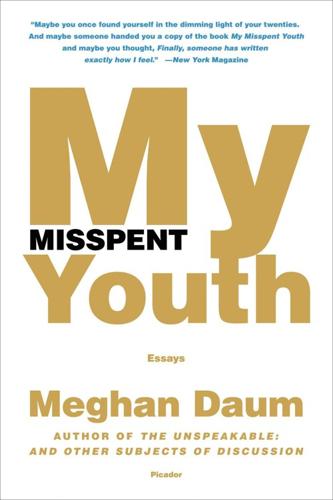
My Misspent Youth: Essays
by
Meghan Daum
Published 2 Mar 2001
I’d seen the music copyist’s apartment during the summer between my junior and senior years of high school and so applying to college that fall became a matter of picturing the apartment and wondering what kind of college an inhabitant of such an apartment would have attended. My logic, informed by a combination of college guidebooks and the alma maters of those featured in the New York Times wedding announcements, went something like this: Bryn Mawr rather than Gettysburg, Columbia rather than N.Y.U., Wisconsin rather than Texas, Yale rather than Harvard, Vassar rather than Smith. My ranking system had nothing to do with the academic merits of the schools. It was more a game of degrees of separation from Upper West Side house plants and intellectualism. Somehow, Vassar emerged as the most direct route.
…
And though I still had not hit the literary jackpot by producing the best-seller that would pay off my loans and buy me some permanent housing, I still felt I’d come out ahead in the deal. So it’s not that I was sold a complete bill of goods. Things were going well. In 1997 I was twenty-seven, teaching a writing course at N.Y.U., publishing in a variety of national magazines, and earning about $40,000 a year after taxes. (The teaching job, incidentally, paid a paltry $2,500 for an entire semester but I was too enamored with the idea of being a college teacher to wonder if I could afford to take it.) Neither clueless suburbanite nor corporate, subsidized yuppie, I could finally begin practicing the life I’d spent so long studying for.
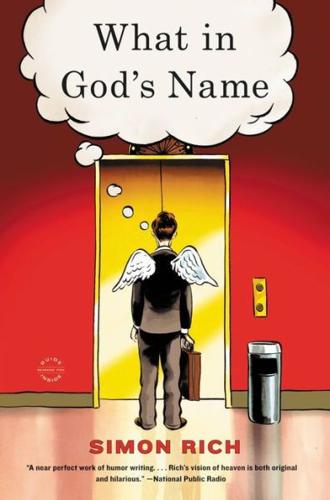
What in God's Name: A Novel
by
Simon Rich
Published 7 Aug 2012
He had been on his way to the library when an enraged girl thrust a flyer in his face. “Do you care whether children live or die?” Sam flinched. “I guess I’d rather they live?” “Then do something!” She muscled him into the center of the crowd, and the next thing he knew he was lying on the ground, surrounded by strangers and lonelier than ever. He’d been at NYU for a whole week, and this five-second exchange with the protester was the longest conversation he’d had yet. Near his face a loudspeaker blasted a Bangladeshi song. It was loud, atonal, and full of screaming. “Takana! Murti! Takana!” It was crazy music and Sam realized, with panic, that it was going to make him laugh.
…
When she turned ten, they bought her a monogrammed Bible, hoping she could at least become the “religious one.” But she never got around to reading it. One day, at the age of twelve, she took some Polaroids of a tree out of boredom. From this random occurrence, her parents concluded that she was the “artistic one.” They bought her an expensive camera, and she dutifully began to take pictures. She went to NYU, majored in visual studies, and completed a thesis of abstract nature studies. She worked extremely hard. And by the time she graduated from college, she had discovered two major truths about photography: one, she didn’t really like it; and two, she wasn’t very good at it. Now she was out of school and totally lost, barely surviving in a kitchenless apartment on the Lower East Side.
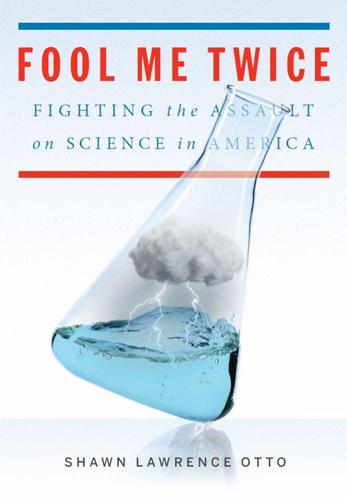
Fool Me Twice: Fighting the Assault on Science in America
by
Shawn Lawrence Otto
Published 10 Oct 2011
Higher Superstition: The Academic Left and Its Quarrels with Science. Baltimore: Johns Hopkins University Press, 1994. 33. Ross, A., ed. Science Wars. Durham, NC: Duke University Press, 1996. p. 152. 34. Sokal, A. Transgressing the Boundaries: Towards a Transformative Hermeneutics of Quantum Gravity. Social Text 1996;(46/47):217–252. www.physics.nyu.edu/sokal/transgress_v2/transgress_v2_singlefile.html. 35. Sokal, A. A Physicist Experiments with Cultural Studies. Lingua Franca, May/June 1996. http://linguafranca.mirror.theinfo.org/9605/sokal.html. 36. Limbaugh, R. Unofficial Summary of the Rush Limbaugh Show, May 22, 1996. Ed. J. Switzer. http://jwalsh.net/projects/sokal/articles/rlimbaugh.html. 37.
…
Switzer. http://jwalsh.net/projects/sokal/articles/rlimbaugh.html. 37. Scott, J. Postmodern Gravity Deconstructed, Slyly. New York Times, May 18, 1996. www.nytimes.com/1996/05/18/nyregion/postmodern-gravity-deconstructed-slyly.html. 38. Rosen, R. A Physics Prof Drops a Bomb on the Faux Left. Los Angeles Times, May 23, 1996. p. A11. www.physics.nyu.edu/faculty/sokal/rosen.html. 39. Bérubé, M. The Science Wars Redux. Democracy 2011(19). www.democracyjournal.org/19/6789.php. 40. Pollitt, K. Pomolotov Cocktail. Nation, June 10, 1996. 41. Krauss, L. Equal Time for Nonsense. New York Times, July 30, 1996. [opinion] 42. Schick, T., & Vaughn, L.
…
Whisenhunt. Lexington, KY: University Press of Kentucky, 2001. Roosevelt, F. D. President Roosevelt’s Letter to Vannevar Bush, November 17, 1944. www.nsf.gov/od/lpansf50/vbush1945.htm#letter. Rosen, R. A Physics Prof Drops a Bomb on the Faux Left. Los Angeles Times, May 23, 1996. p. A11. www.physics.nyu.edu/faculty/sokal/rosen.html. Ross, A., ed. Science Wars. Durham, NC: Duke University Press, 1996. p. 152. Ross, S. Scientist: The Story of a Word. Annals of Science 1962;18(2):65–85. www.scribd.com/doc/42338381/Ross-1964-Scientist-the-Story-of-a-Word. Roush, W. Putting a Price Tag on Nature’s Bounty.
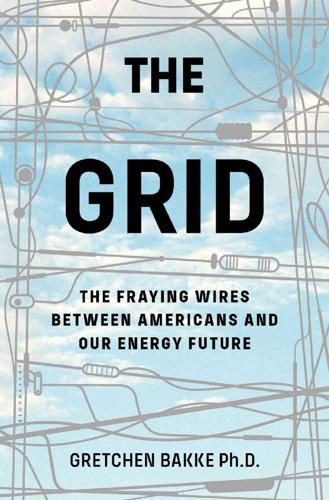
The Grid: The Fraying Wires Between Americans and Our Energy Future
by
Gretchen Bakke
Published 25 Jul 2016
Seven thousand students were housed in dorms in the main campus during the crisis, and many others were moved to the main campus from satellite campuses that had lost power. The campus police force and medical center were fully operational throughout the duration of the storm. Similarly, the South Oaks Hospital on Long Island stayed on and fully functional during and after the storm. South Oaks, like SUNY Stony Brook and NYU on Manhattan, has a microgrid fueled by a cogeneration plant—a technology for making heat and power that dates back to the 1880s. Farther from home, “the Sendai one megawatt microgrid at Tohoku Fukushi University operated for two days in island mode while the surrounding region was without power” after the magnitude 9.0 earthquake and subsequent tsunami devastated Japan in 2011.
…
Microgrids are sharing machines that are not debilitated by that capacity when sharing means being sucked dry. They are not mechanical martyrs but self-interested, social, individuated electrical systems. Though one can run a microgrid on 100 percent stock (nonrenewable) fuels, most also embrace a modest amount of renewable generation. NYU’s is powered by a natural-gas-fueled combined heat and power (cogeneration) plant. The University of California, San Diego has added 3 MW of solar and 3 MW from a natural-gas-powered fuel cell to their 30 MW combined heat and power plant (also natural-gas-powered). Together, these warm and cool 450 buildings and provide hot water to 45,000 people.
…
See also private grids NASDAQ power outages, here, here National Energy Act (1978), here, here National Energy Plan, here National Renewable Energy Laboratory (NREL), here, here, here national security, here natural gas, here natural gas plants, here natural gas turbines, here negawatts, here Neri, Joseph, here net metering, here, here Nevada Las Vegas smart meter radiation, here solar power in, here, here, here New Hampshire, here New Jersey Transit, here, here, here six-cent law in, here Superstorm Sandy, here, here, here, here New York City blackout of 1977, here, here, here peak demand reduction in, here Pearl Street Station grid, here, here, here, here, here private grid wires in, here, here New York University (NYU), here Niagara Falls power plant, here, here, here Norman, Donald, here nuclear fusion, here nuclear power plants, here Davis-Besse Nuclear Power Station, here deterioration of, here fall of Vermont nuclear plant, here protests of, here, here reliability of, here as stock resource, here Three Mile Island, here Vermont Yankee power plant, here vulnerabilities of, here Obama energy plan, here office towers, batteries that look like, here off-the-grid, here, here Ohio, East Coast blackout and, here oil-burning power plants, here Open Source Initiative, here Oregon, wind power in, here Ozarks blackout (1987), here Pacific Northwest hydroelectric infrastructure in, here power outages, here, here, here parallel circuits, here peak demand.
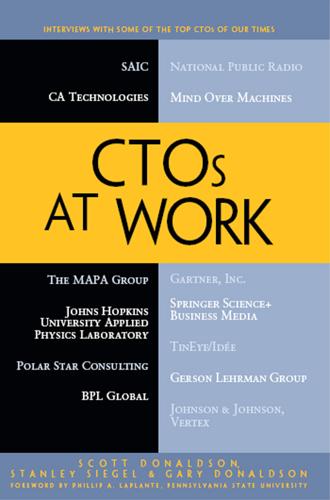
CTOs at Work
by
Scott Donaldson
,
Stanley Siegel
and
Gary Donaldson
Published 13 Jan 2012
I had a successful couple of semesters teaching, and I probably would have taught longer, but as my advisor, Bolek Szymanski said “You can teach longer and stay here longer or you can finish and graduate.” G. Donaldson: So that experience helped shape your interest in the influencing role and communication role of the CTO, and you saw how you could apply those skills as you grew your career. Where did you go to school? Kaplow: For my undergraduate, I went to NYU [New York University] and I majored in physics and in history. I realized that physics, although I enjoyed it quite a bit, was not necessarily the long-term path, but it did give me the opportunity to work in the High Energy physics department. I supported some experiments, mostly on the technology side for data acquisition and analysis.
…
It's probably a little bit better known for math, but it is a very, very good computer science department and had some great teachers. So I did a master's degree in computer science and started on my doctorate. At the same time, the whole “going to school forever” thing started to wear thin. I took a job over at Bell Laboratories in 1987. So I just got my master's degree in 1985, I started working on my doctoral requirements at NYU, and then once I started working, that was way too much of a workload to be successful. I sort of puttered around trying to complete my PhD, but that didn't really work. G. Donaldson: What did you do at Bell? Kaplow: I originally started as a member of the technical staff. They had a relatively flat staffing environment, and most people went in as Members of the Technical Staff and then worked there for their entire careers and came out Members of the Technical Staff.
…
The microprocessor activity eventually wound down and we started doing other performance analysis work related to transaction systems and those sorts of things, and that was interesting to a point. And then I got a call from Ed Hummel, whom I worked with and is still at Bell Laboratories. He was getting his PhD when I was in the physics department at NYU, and he called me up and said something like, “We have a project. We're going to build this fantastic supercomputer gizmo for an avionics application,” and he'd love to have me come and work on it. So from there, I transitioned from a performance analysis environment to systems engineering role with some development work associated with it.
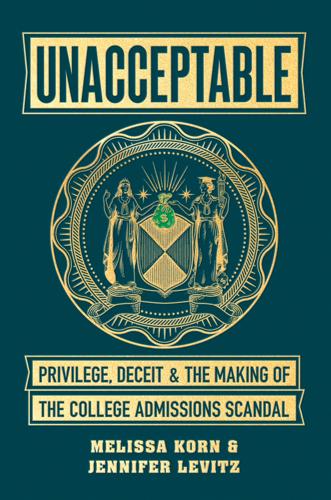
Unacceptable: Privilege, Deceit & the Making of the College Admissions Scandal
by
Melissa Korn
and
Jennifer Levitz
Published 20 Jul 2020
Dowling saw a disturbing rise of hubris among parents, but also a buildup of something even more striking: parents seemed to be losing trust in their own children. “When you have done everything for your kid their whole life, you have no faith in their ability to do anything on their own,” she says. It was ultimately a recipe for disaster. “Americans systematically weakened their children in the 1990s and the early 2000s,” says Jonathan Haidt, an NYU professor and coauthor of the book The Coddling of the American Mind: How Good Intentions and Bad Ideas Are Setting Up a Generation for Failure. “Children do not become strong if they are protected from setbacks, teasing, exclusion and conflicts.” His view may be a blunt generalization, but it touches on a real shift in Americans’ approach to parenting, particularly near the end of high school.
…
It’s not just community colleges and regional schools, like Eastern Illinois or Western Michigan. Virginia Tech’s acceptance rate, for example, topped 72 percent in 2014, and the University of Missouri’s flagship campus took nearly 78 percent of those who submitted files. Many hot private schools, like NYU and Baylor, opened the door pretty wide as well—35 percent and 55 percent of applicants got into those schools in 2014. If the mothers and fathers drawn to Singer had broadened their lenses, they would’ve found many strong schools with far greater admissions odds and plenty of opportunity for postgraduate success
…
“My parents have a hard time attending my soccer matches because our opponent[s’] parents are always making rude remarks about that number 8 player who plays without a care for her body or anyone else’s on the field. It is true that I can be a bit intense.” Madison was a senior at La Jolla Country Day School in San Diego in 2013. She was bright, her college list including schools like NYU, Boston University, and UC Santa Barbara. And she was best known at school not as a striker, midfielder, or defender, but as a particularly wealthy kid in an already affluent area, nice enough and popular enough and fairly stylish. She wasn’t the wild one or the funny one or the troublemaker. She played soccer, but she wasn’t good enough to be on a college team, let alone be recruited.
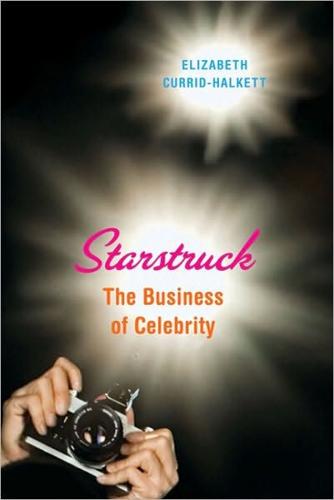
Starstruck: The Business of Celebrity
by
Currid
Published 9 Nov 2010
At Oxford, Ferguson felt that all professors were treated as, in his words, “equally brilliant,” but individual stardom was frowned upon. He greeted American academic celebrity with bemusement. The article went on to comment on rumors that Ferguson, having been lured from Oxford to New York University, was being poached from NYU by Harvard. Sure enough, within a year, Ferguson was a chaired professor at Harvard. On his trajectory from Oxford to Harvard, Ferguson achieved a major multibook contract from Penguin and his own TV series. After reading the article, one might initially think that the reporter was making much of a random anomaly.
…
And thus we get to a final facet of relative celebrity: All relative celebrity has an exchange rate between relative and mainstream. Like any currency, the rate changes continually, and some relative celebrity has a stronger exchange value than others. Consider it like this: Ferguson was a star within academia for quite a while. His rapid moves from Oxford to NYU to Harvard would have made his star power fodder for gossip in the halls of universities. But when mainstream publications like Gawker started covering Ferguson as they might Angelina Jolie, his star power ceased to be merely relative and constrained within the context of the university. By virtue of being written about by popular media, Ferguson was now known by people who read Gawker, the New York Times, the New York Observer, and so forth, people not necessarily affiliated with academic politics or gossip.
…
Doom,” for his dark economic forecasts, unfortunately turned out to have been remarkably accurate in his predictions.25 Consequently, Roubini has attained a worldwide following, giving speeches and interviews around the world and penning opinion pieces. Roubini is also a regular subject of Gawker’s gossipy posts. Gawker, however, is not interested in Roubini’s economic analysis as much as his celebrity lifestyle. The site has devoted several postings to the NYU professor’s “very hard partying,”26 including an uploaded photo album of the economist with young ladies (and fashion designer Marc Jacobs) at Russian oligarch Roman Abramovich’s 2010 New Year’s bash in St. Barts.27 Back in March 2009, in a posting titled “Nouriel Roubini Copters His Way Back Home,” Gawker dissected both the photos the economist uploaded on his Facebook profile documenting him alongside good-looking women, and his status updates, including one stating “Nouriel is taking a coptor to the airport as São Paulo car traffic is THE worst in the world.”
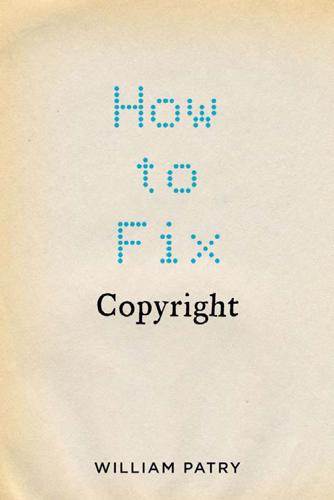
How to Fix Copyright
by
William Patry
Published 3 Jan 2012
Professor Ruth Okediji has argued that the indeterminacy and breadth of fair use are inconsistent with the Berne Convention and the TRIPS Agreement, Ruth Okediji, Toward an International Fair Use Doctrine (2000) 39 Columbia Journal of Transnational Law 75, 117 (2000), but I do not share this view nor does the great Berne scholar Professor Sam Ricketson. 21. This is an example H.L.A. Hart often used and was the subject of a debate between Hart and Lon Fuller. See Frederick Schauer,A Critical Guide to Vehicles in the Park, 83 New York University Law Review, 1109 (2008), available at: http://www.law.nyu.edu/ecm_dlv/groups/ public/@nyu_law_website_journals_law_review/documents/ web_copytext/ecm_pro_059778.pdf. Their debate was not of course about vehicles in parks, but rather about the meaning of meaning. NOTES TO PAGES 221–244 313 22. Irish Minister for Jobs, Enterprise and Innovation Richard Burton made similar comments in May 2011, in connection with a similar Irish inquiry. 23.
…
I went and found some songs of mine that belonged to my own recording company and I decided on “Oslodum,” whose lyrics celebrate and encourage the appropriation of Brazilian culture by all the world’s peoples. . . . If I have fed so much on the cultures of others and it has been so important for my art, why shouldn’t others also propose new uses for what we create in Brazil? Available at: http://www.nyu.edu/fas/NewsEvents/ Events/Minister_Gil_speech.pdf. See David Owen, Copies in Seconds: Chester Carlson and the Birth of the Xerox Machine 1 (2004, Simon & Schuster). 284 NOTES TO PAGES 94–96 56. See this BBC story about a father who bought his sixteen-year-old son a clarinet formerly owned and played by Artie Shaw: https:// mail.google.com/mail/u/0/?
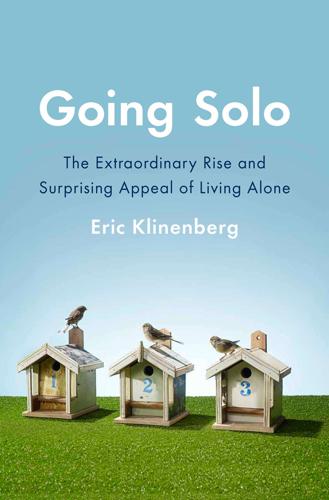
Going Solo: The Extraordinary Rise and Surprising Appeal of Living Alone
by
Eric Klinenberg
Published 1 Jan 2012
It had established partnerships with organizations in Los Angeles, New Orleans, and Washington, D.C., and branched out into larger projects, including a neighborhood-level initiative to prevent homelessness in Bedford-Stuyvesant. “It’s been totally consuming,” says Haggerty, who’s now working on a doctorate in sociology at NYU (where I teach) in whatever spare time she can find. “But obviously we haven’t even scratched the surface of this problem, because there are just so many people on their own who can’t afford to live in our cities. The housing option we’re trying to create is going to become more and more necessary.
…
The authors, researchers at the University of Washington, conclude that the savings from these changes—specifically, the reduction in overnight visits to hospitals, mental health and substance abuse clinics, jails, and shelters—more than offset the costs of the housing program: “At twelve months, the ninety-five housed individuals had reduced their total medical costs by more than $4 million, compared with the year prior to enrollment, or $42,964 per person per year, as compared with a cost of $13,440 per person per year to administer the housing program.”7 Surprisingly, these facilities can also contribute to local economic development. A study of supportive housing in New York City by NYU’s Furman Center for the Study of Real Estate and Urban Policy reports that properties within five hundred feet of a facility “show steady growth relative to other properties in the neighborhood in the years after supportive housing opens,” while those between five hundred and a thousand feet away decline initially “but then increase steadily, perhaps as the market realizes that fears about the supportive housing turned out to be wrong.”8 Supportive housing for solidly middle-class people produces a different set of benefits.
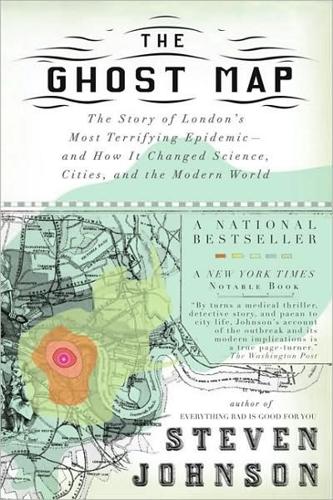
The Ghost Map: A Street, an Epidemic and the Hidden Power of Urban Networks.
by
Steven Johnson
Published 18 Oct 2006
PENGUIN BOOKS THE GHOST MAP Steven Johnson is the author of the acclaimed books Everything Bad is Good for You (described as a ‘must read’ by Mark Thompson, head of the BBC), Mind Wide Open, Emergence and Interface Culture. His writing has appeared in the Guardian, the New Yorker, Nation and Harper’s, as well as the op-ed pages of The New York Times and the Wall Street Journal. He is a Distinguished Writer in Residence at NYU’s School of Journalism, and a Contributing Editor to Wired. He is also the co-creator of several influential websites: FEED, Plastic and Outside in. He has degrees in Semiotics and English Literature from Brown and Columbia Universities. He lives in Brooklyn with his wife and three sons. Steven Johnson hosts a web log at www.stevenberlinjohnson.com ALSO BY STEVEN JOHNSON INTERFACE CULTURE: How New Technology Transforms the Way We Create and Communicate EMERGENCE: The Connected Lives of Ants, Brains, Cities, and Software MIND WIDE OPEN: Your Brain and the Neuroscience of Everyday Life EVERYTHING BAD IS GOOD FOR YOU: How Today’s Popular Culture Is Actually Making Us Smarter The GHOST MAP A street, an epidemic and the hidden power of urban networks STEVEN JOHNSON PENGUIN BOOKS PENGUIN BOOKS Published by the Penguin Group Penguin Books Ltd, 80 Strand, London WC2R 0RL, England Penguin Group (USA) Inc., 375 Hudson Street, New York, New York 10014, USA Penguin Group (Canada), 90 Eglinton Avenue East, Suite 700, Toronto, Ontario, Canada M4P 2Y3 (a division of Pearson Penguin Canada Inc.)
…
My research assistant, Ivan Askwith, was once again an invaluable collaborator, as was Russell Davies, who came through with some last-minute additions from the streets (and libraries) of London. Whatever errors remain are mine alone. I’m grateful to the many libraries whose resources I drew on in my research: those of Harvard, MIT, and NYU, and the New York Public Library. I am particularly indebted to two London institutions: the Wellcome Library for the History and Understanding of Medicine and, of course, the peerless British Library—even the remote newspaper reading rooms in Colindale. My editors at Wired and Discover—Steve Petranek, Dave Grogan, Chris Anderson, Ted Greenwald, Chris Baker, Mark Robinson, and Rob Levine—helped me explore, over the past few years, a number of the themes addressed in the closing chapters here.

Rigged: The True Story of an Ivy League Kid Who Changed the World of Oil, From Wall Street to Dubai
by
Ben Mezrich
Published 11 Aug 2008
He knew what the older man was thinking: that Khaled’s father was there, in Khaled’s high caramel cheeks and striking dark eyes. Khaled took a step back, bowing slightly. Though the attention embarrassed him, he would never have complained. He owed the sheik so much. Geneva, Cambridge, before that a year at NYU—he would never have been able to make such a journey without the sheik’s money and influence. And now, he knew, he would have to begin to repay that debt. The sheik had brought him to this yacht for a reason—and though Khaled did not yet know the sheik’s plan for him, he would follow that plan to the ends of the earth.
…
The place was called the Roadhouse, but it may have well been a raucous extension of the trading floor. The only real difference David could see from his perch near the back of the bar were the massive pitchers of cheap beer. And the waitresses of course—cute girls in jeans shorts and tied-off tank tops, probably NYU students from the looks of them, who had been lured to this armpit on the southern tip of the city by the promise of huge tips in the middle of the afternoon. It was either this or a strip club, and even Scores didn’t do business like this at three in the afternoon. The party had already been in full swing when David arrived.
…
“I don’t know,” David finally said, trying to sugarcoat his response. “There are many members of the board who would definitely be against it.” Khaled nodded. “I do know what you’re thinking, Mr. Russo. I understand that there are a lot of misconceptions—on both sides. I know how the West views the Islamic world. I spent time at NYU, then finished my schooling in Cambridge and Geneva. I know what you see on TV.” David shrugged. Was that what was holding him back from taking this idea more seriously? Stereotyping? Racism? Unintentionally, David thought back to his father, unable to step inside an elevator or to take a one-hour flight to watch his only son graduate from business school.
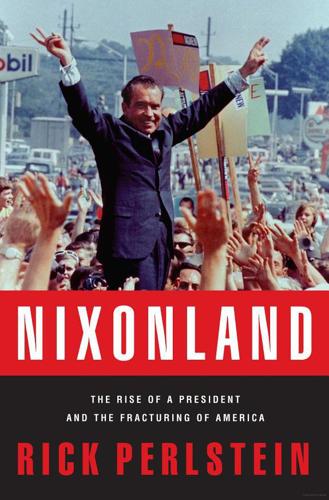
Nixonland: The Rise of a President and the Fracturing of America
by
Rick Perlstein
Published 1 Jan 2008
Sargent Shriver, at Illinois Wesleyan, said Vietnam might be liberalism’s front line, but “our slums, ghettos, and economically depressed areas are the rear,” and we “must not win the war in Vietnam and lose the battle we are fighting in Watts, Harlem.” That only pointed up the impossible contradiction dividing the liberal movement, as evinced at the graduations at Amherst and NYU—where, protesting speaker Robert McNamara, architect of this “liberal” war, liberal students walked out. Arthur Schlesinger, speaking at Smith, said the acrimony between pro-and antiwar forces would force upon us a new dawn of McCarthyism: “The situation is worse, because fifteen years ago, liberals were determined to maintain rational discussion.”
…
The second section was headed “Supplies, Ordnance, and Logistics” and taught how to turn a cherry bomb into an antipersonnel weapon. On April 21 four hundred students at Queensborough Community College overpowered security guards to occupy the administration building. On April 23, one hundred students seized NYU’s Hall of Languages after a popular English instructor was fired; City College was shuttered after black and Puerto Rican students locked themselves inside the gates of the South Campus; Fordham students sat in outside the president’s office against ROTC; twelve hundred students at Yeshiva University sat in to demand school be closed for Israeli Independence Day.
…
Quinnipiac College in Connecticut did them one better, urging “colleges and universities across the country to join with them in a boycott of ALL consumer goods (except necessary foods) the week of May 25–31.” Five thousand students at Northwestern did them one better by voting unanimously to secede from the United States. NYU students demanded $100,000 in protection money not to smash an Atomic Energy Commission supercomputer so they could bail out a jailed Black Panther. The National Republican Governors’ Conference was canceled. But once more mass protest brought forth a paradox: the real radicalness was the extent to which demonstrations were mundane and mainstream.
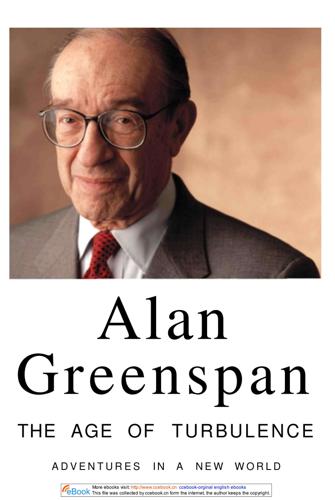
The Age of Turbulence: Adventures in a New World (Hardback) - Common
by
Alan Greenspan
Published 14 Jun 2007
So that summer, I got the textbooks for all my freshman courses and read them before I took my first class. It surprised me that I got two Bs and the rest As in my first semester, and then all As after that. I was a far better student in college than I had been at George Washington High. The School of Commerce was the largest and possibly the least prestigious part of NYU—it had ten thousand students, and people thought of it more as a trade school than as a real college. (A dean once described it proudly as "a huge educational factory") But to my mind that was unfair; I got a very good education. I was exposed to an interesting curriculum of liberal arts and, of course, accounting, basic economics, business management, and banking and finance.
…
He argued that free markets, left to themselves, do not always deliver the optimal good to society, and that when employment stagnated, as it did disastrously in the Great Depression, government has to step in. It would be hard to invent a figure better suited to fire youthful imaginations. A School of Commerce classmate of mine was Robert Kavesh, now a professor emeritus of economics at NYU, who not long ago told the BBC that economics students in the late 1940s were on a mission: "What really bound us together was the sense that economics was undergoing a transition and we were there at the frontier. Anyone who was studying economics at that time was determined that there would never be another major depression.
…
Banks was very pleased with the result, and I 31 More ebooks visit: http://www.ccebook.cn ccebook-orginal english ebooks This file was collected by ccebook.cn form the internet, the author keeps the copyright. T H E AGE OF T U R B U L E N C E learned a great deal, not only about how seasonal adjustments are supposed to work, but also about how to organize data to come to a conclusion. Graduating the following spring was a formality. I'd already decided to stay at NYU and accepted a scholarship to study for a master's degree at night. But I still had to find a job to make ends meet. I had two offers: one from an ad agency and one from the National Industrial Conference Board, where one of my professors was chief economist. Even though the advertising job paid a lot better—$60 a week versus $45 a week—I opted for the Conference Board, figuring I'd learn more.
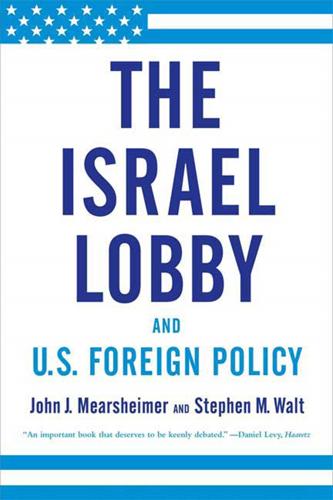
The Israel Lobby and U.S. Foreign Policy
by
John J. Mearsheimer
and
Stephen M. Walt
Published 3 Sep 2007
To further counter a perceived anti-Israel bias in academia, a number of philanthropists have established Israel studies programs at U.S. universities (in addition to the roughly 130 Jewish studies programs that already exist), so as to increase the number of “Israel-friendly” scholars on campus.45 NYU announced the establishment of the Taub Center for Israel Studies on May 1, 2003, and similar programs have been established at other schools, including Berkeley, Brandeis, and Emory. Academic administrators emphasize the pedagogical value of these programs, but they are also intended to promote Israel’s image on campus. Fred Lafer, the head of the Taub Foundation, makes clear that his foundation funded the NYU center to help counter the “Arabic [sic] point of view” that he thinks is prevalent in NYU’s Middle East programs.46 Similar motives reportedly lay behind gambling mogul Sheldon Adelson’s proposed multimillion-dollar gift to expand the existing Program for Jewish Civilization at Georgetown University so as to create a center focusing on the “Jewish theme as a paradigm of international relations.”
…
Bard, “Tenured or Tenuous: Defining the Role of Faculty in Supporting Israel on Campus,” report published by the Israel on Campus Coalition and the American-Israeli Cooperative Enterprise, May 2004, 11. Also see Nacha Cattan, “NYU Center: New Addition to Growing Academic Field,” Forward, May 2, 2003; Samuel G. Freedman, “Separating the Political Myths from the Facts in Israel Studies,” New York Times, February 16, 2005; Jennifer Jacobson, “The Politics of Israel Studies,” Chronicle of Higher Education, June 24, 2005, 10–12; Michael C. Kotzin, “The Jewish Community and the Ivory Tower: An Urgent Need for Israel Studies,” Forward, January 30, 2004; and Nathaniel Popper, “Israel Studies Gain on Campus as Disputes Grow,” Forward, March 25, 2005. 46. Quoted in Cattan, “NYU Center.” 47. Shmuel Rosner, “Donor May Fund Georgetown Jewish Center to Give U.S.

The End of Ownership: Personal Property in the Digital Economy
by
Aaron Perzanowski
and
Jason Schultz
Published 4 Nov 2016
Yannis Bakos, Florencia Marotta-Wurgler, and David R. Trossen, “Does Anyone Read the Fine Print? Consumer Attention to Standard Form Contracts,” New York University Law and Economics Working Papers, Paper 195, New York University School of Law, New York, 2014, 22, http://lsr.nellco.org/cgi/viewcontent.cgi?article=1199&context=nyu_lewp, accessed July 7, 2015. 7. Mike Masnick, “Supreme Court Chief Justice Admits He Doesn’t Read Online EULAs or Other ‘Fine Print,’” Techdirt, October 22, 2010, https://www.techdirt.com/articles/20101021/02145811519.shtml, accessed July 7, 2015. 8. Mike Masnick, “Proof That (Almost) No One Reads End User License Agreements,” Techdirt, February 23, 2005, https://www.techdirt.com/articles/20050223/1745244.shtml, accessed July 7, 2015. 9.
…
Yannis Bakos, Florencia Marotta-Wurgler, and David R. Trossen, “Does Anyone Read the Fine Print? Consumer Attention to Standard Form Contracts,” New York University Law and Economics Working Papers, Paper 195, New York University School of Law, New York, 2014, 22, http://lsr.nellco.org/cgi/viewcontent.cgi?article=1199&context=nyu_lewp, accessed July 7, 2015 (finding that only one or two out of every thousand retail software shoppers access license agreements). 38. Ben Sheffner of the Motion Picture Association of America has claimed, “If you ask people when you go to a site to buy a movie or a book or a song, I think they pretty much understand that you’re not actually buying the copyright.
…
., “Disagreeable Privacy Policies: Mismatches Between Meaning and Users’ Understanding,” Berkeley Technology Law Journal 30 (2015): 39–87, at 48; Lorrie Faith Cranor, “Necessary but Not Sufficient: Standardized Mechanisms for Privacy Notice and Choice,” Journal of Telecommunications & High Technology Law 10, (2012): 273–307, at 293; Marie C. Pollio, “The Inadequacy of HIPAA’s Privacy Rule: The Plain Language Notice of Privacy Practices and Patient Understanding,” N.Y.U. Annual Survey of American Law 60, (2004): 579–620, at 615; Katy K. Liu, “Fair and Accurate Credit Transactions Act Regulations: Disclosure, Opt-Out Rights, Medical Information Usage, and Consumer Information Disposal,” I/S: A Journal of Law and Policy 2, (2006): 715–735, at 720. 6 The Promise and Perils of Digital Libraries In 1731, Benjamin Franklin and a group of his colleagues founded the Library Company of Philadelphia, what many believe to be the first public library in America and perhaps even the world.1 Any member of the public could join the Company by buying “shares” that allowed one to use the library space and borrow any library book as often as it was available.
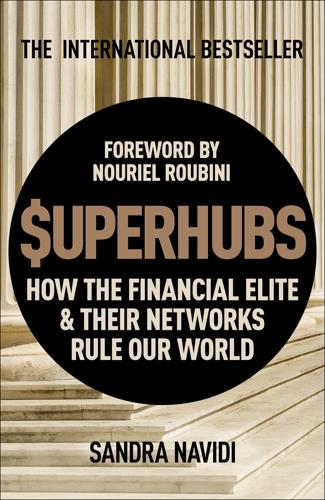
SUPERHUBS: How the Financial Elite and Their Networks Rule Our World
by
Sandra Navidi
Published 24 Jan 2017
Ray Dalio, Principles (self-published, 2011), http://www.bwater.com/Uploads/FileManager/Principles/Bridgewater-Associates-Ray-Dalio-Principles.pdf. 18. Kathleen Morris, “The Reincarnation ofMike Milken,” Bloomberg, May10, 1999, http://www.bloomberg.com/news/articles/1999-05-09/the-reincarnation-of-mike-milken. 19. Dionne Searcey, “Yellen Tells N.Y.U. Graduates to Expect Failure and Learn From It,” New York Times, May 21, 2014, www.nytimes.com/2014/05/22/business/economy/at-nyu-yellen-praises-her-fed-predecessor.xhtml. 20. Kaufman, Soros, Kindle locations 6284-87. 21. Rachel Feintzeig, “Are You Vain Enough to Get Ahead?” Wall Street Journal, January 13, 2014, http://blogs.wsj.com/atwork/2014/01/13/are-you-vain-enough-to-get-ahead. 22.
…
For many superhubs, having their own intellectual creation is also a matter of prestige and a way to distinguish themselves. THE CULT OF FAILURE Financial executives almost without exception abide by the “cult of failure” and stress the formative nature of failures, setbacks, and disappointments, because in their opinion we learn the most from them. At a graduation speech at NYU, Fed Chair Janet Yellen pointed out the importance of grit, commitment, and perseverance.19 Indeed, many of the most successful people on Wall Street have experienced significant failures on their journey to the top, and they would likely not be where they are today if it had not been for their perseverance.
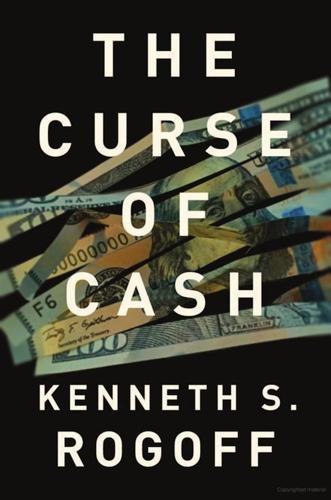
The Curse of Cash
by
Kenneth S Rogoff
Published 29 Aug 2016
Warwick (2015) also highlights this concern. 60. Robert Lee Hotz, “You Shouldn’t Put Your Money Where Your Mouth Is,” Wall Street Journal, April 18, 2014, available at http://www.wsj.com/articles/SB10001424052702303456104579489510784385696. “NYU’s Jane Carlton on Sequencing Money,” Genomeweb, September 3, 2016, available at https://www.genomeweb.com/sequencing/nyus-jane-carlton-sequencing-money-sewage-new-york-city-and-malaria-india. 61. See, for example, Orji et al. (2012) on parasitic infestations of both paper and polymer plastic currency in Anamber State of Nigeria. CHAPTER 6: SEIGNIORAGE 1. Federal Reserve Board FAQs, “How much does it cost to produce currency and coin,” available at http://www.federalreserve.gov/faqs/currency_12771.htm.
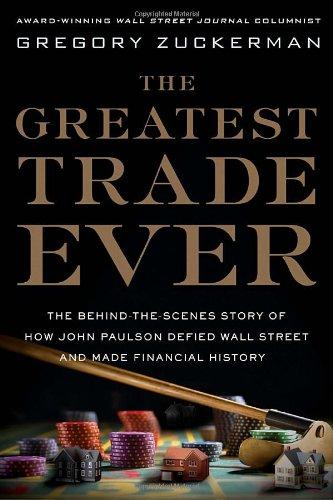
The greatest trade ever: the behind-the-scenes story of how John Paulson defied Wall Street and made financial history
by
Gregory Zuckerman
Published 3 Nov 2009
Paulson lived in the penthouse apartment of one of his uncle’'s buildings, the tallest in Ecuador, with a cook, a gardener, and a housekeeper. He found the women beautiful, the weather warm, and the beach close by. He grew to admire his uncle, a charismatic bon vivant who thoroughly enjoyed himself and his money. It was as if Paulson had been reborn into an affluent side of the family; he put off his return to NYU to extend his time in Ecuador. “"It brought me back to liking money again,”" Paulson remembers. There was only one drawback: His family was conservative and proved too confining for a young man just beginning to enjoy his independence. Paulson wasn’'t allowed to date without a chaperone and could choose only young women from the right families, as designated and approved by his uncle.
…
The two spoke by phone or wrote daily while John was in Ecuador, bringing them closer together. It was John Paulson’'s first big trade, and it excited him to want to do more. “"I found it a lot of fun, and I loved having cash in my pocket,”" Paulson recalls. Paulson realized that a college education was the best way to ensure ample cash flow, so he returned to NYU in 1976, newly focused and energized. By then, his friends were entering their senior year, two years ahead of Paulson, and he felt pressure to catch up. His competitive juices flowing, Paulson spent the next nineteen months accumulating the necessary credits to graduate, taking extra courses and attending summer school, receiving all As.
…
Morgan, the legendary turn-of-the-century banker. The nickname, which stuck for the rest of his life, spoke to Paulson’'s obvious abilities, his growing ambition, and his blue-blood aspirations. Paulson smiled when he heard the new nickname, appreciating the compliment and the double entendre. Paulson graduated first in his class from NYU with a degree in finance. As the valedictorian of the College of Business and Public Administration, he delivered a speech about corporate responsibility. A dean at the school suggested that he apply to Harvard Business School. Although Paulson was only twenty-two and didn’'t have much business experience, he cited the lessons of his business in Ecuador in his application; he not only gained acceptance but won the Sidney J.
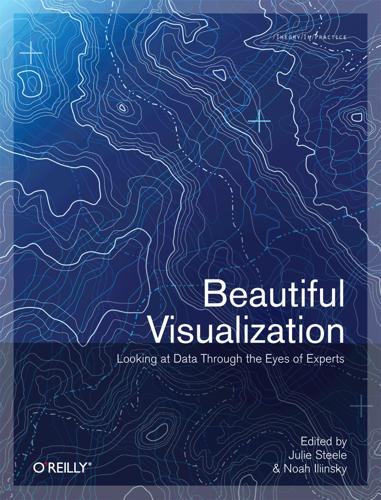
Beautiful Visualization
by
Julie Steele
Published 20 Apr 2010
He has a background in design, user interfaces, journalism, hardware hacking, documentary film, and programming. He previously worked as a researcher in the Times Research & Development Labs, looking at the media landscape 2–10 years out. In addition to working at the Times, Nick helped co-found NYCResistor, a hardware hacker space in Brooklyn, New York. He is also an adjunct professor at NYU in the Interactive Telecommunications program. Michael Driscoll fell in love with with data visualization over a decade ago as a software engineer for the Human Genome Project. He is the founder and principal data scientist at Dataspora, an analytics consultancy in San Francisco. Jonathan Feinberg is a computer programmer who lives in Medford, Massachusetts, with his wife and two sons.
…
She serves as director of the Allosphere Research Facility. Andrew Odewahn is the director of business development at O’Reilly Media, where he helps companies engage with O’Reilly’s passionate audience of alpha geeks. He is author of two books on database development, founder of tagcaster.com, graduate of NYU’s Stern School of Business, and Appalachian Trail thru-hiker. Anders Persson MD, PhD, is an associate professor and director for the Center for Medical Image Science and Visualization (CMIV; http://www.cmiv.liu.se) at Linköping University in Sweden. The center conducts focused front-line research within multidisciplinary projects providing solutions to tomorrow’s clinical issues.
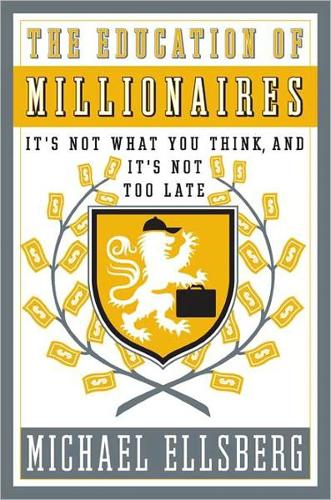
The Education of Millionaires: It's Not What You Think and It's Not Too Late
by
Michael Ellsberg
Published 15 Jan 2011
We were obsessed with college—which college we would get into, how high on the pecking order it would be. Of course, Harvard, Yale, Princeton, Columbia, Brown, Stanford, MIT, Penn, and Duke were at the top, or Williams, Dartmouth, Middlebury, or Amherst for those who wanted a smaller school. Other namebrand schools such as Georgetown, Cornell, Johns Hopkins, Tufts, and NYU would also do. The terrible fear was not getting into any brand-name school, and being relegated to some middling noname college. That night, I decided to push the line of questioning a little further. I wouldn’t normally have asked these questions, as the answers were so taken-for-granted at Deerfield.
…
This is the thing that eats away at me, the naïveté on my part.” Cathryn Munna is a grown woman and rightly takes responsibility for her own decisions. Yet, where did she get this idea that “all we needed to do was get this education and get the good job”? Where did she get the idea that getting a liberal arts degree from NYU would be a good reason for her daughter to go $100,000 into debt? Did these ideas just occur randomly to Cathryn Munna? Were they bizarre, out-ofline, wacky beliefs relative to the culture around her? Where did she get the idea that this was the only way for her daughter to pursue a successful and happy life?
…
As I spoke with Max, overlooking the sea, a friend of Max’s spotted him and walked up to us. Max introduced us: “Hey Michael, this is Trevor. He’s also an entrepreneur who’s leaving school.” “Leaving school?” Trevor cut in as if to correct an insulting slight. “I’ve already left school!” Trevor Owens had left NYU during his senior year to help build The Lean Startup Machine (http://theleanstartupmachine.com), a series of intensive boot camps designed to promote entrepreneurialism and train entrepreneurs in the business principles of “lean thinking.” I had never been on a cruise before. The series was originally the brainchild of Elliott Bisnow, who had left Wisconsin to pursue his dreams.
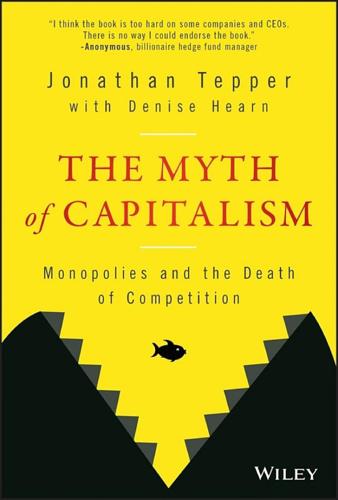
The Myth of Capitalism: Monopolies and the Death of Competition
by
Jonathan Tepper
Published 20 Nov 2018
The consequences extend to rising inequality, slowing productivity growth, and shifts in the pattern of regulation in favor of corporations. Pieces of these growth patterns have been described before. But this book uniquely pulls it altogether. One hopes that it will have the impact that it clearly deserves.” —Michael Spence, Economics professor at Stern School of Business NYU, Nobel Prize in Economics (2001) “What’s wrong with American capitalism today? Why is it so good for the elite, and so bad for everyone else? Is inequality the problem? Tepper and Hearn make the case that inequality is the symptom, not the disease. The problem is too little competition, not too much.
…
It is a strong form of regressive taxation where the poor send money to the rich. If you're wondering why income and wealth inequality is so high, it is because the wealthy own almost all the shares in the toll roads of American life. The top 10% of American households now own 84% of all stocks, according to a recent paper by NYU economist Edward N. Wolff. Today, while the average wealth of Americans has surpassed its previous peak in 2007, median wealth was still down by 34%. There is a reason for the disparity. While almost 95% of the very rich reported having significant stock holdings only 27% of the middle class did. The poor have none and in fact have a negative net worth with significant debts.88 The wealthy own the toll roads, while the rest pay to use them.
…
They even resigned as directors from over 30 companies, including banks, hoping they could still keep their shares. Congress banned horizontal shareholdings, anyway. For years, the Clayton Act limited the emergence of a new J.P. Morgan. Yet the influence of the Act is waning. Today, horizontal shareholding has both increased ownership and concentrated power. In the words of Edward Rock, an antitrust expert at NYU School of Law, “The last time we had this degree of concentrated financial power was in the Morgan days.”26 If Morgan were alive now, he would be happy to see that not much has really changed. Key Thoughts from the Chapter Almost half of Americans don't own stock, and less than 14 percent of households own corporate stock directly.
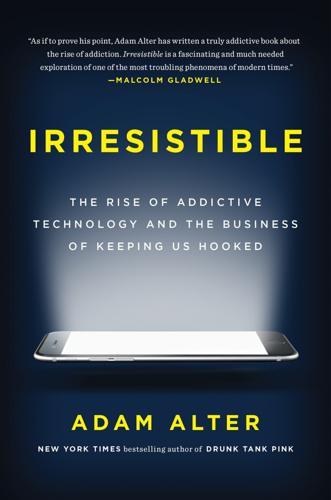
Irresistible: The Rise of Addictive Technology and the Business of Keeping Us Hooked
by
Adam L. Alter
Published 15 Feb 2017
American Express once coined the slogan, “Don’t leave home without it,” but Prelec and Simester cleverly turned that slogan on its head when they titled their paper “Always Leave Home Without It.” I heard a similar story time and again from game designers, who described a growing movement of ethical game design. NYU Game Center director Frank Lantz told me that FarmVille and other Facebook games were successful in part because once you were hooked they never let you go. “Facebook games run twenty-four hours a day—they’re persistent games. They aren’t games where you have to start a session, and then play, and then save your results, and then come back later and begin the session again.
…
The Sparkly proved so endearing that kids couldn’t get enough of the toothbrush. In an interview, a veteran at the company said, “Because kids love the game and they interacted so much with the app they didn’t go to bed right away.” The app had to be altered so the updated Sparkly falls over with exhaustion after brushing ends. As NYU Game Center director Frank Lantz told me, designing games is tough. For every game that hooks the masses, thousands go largely unplayed. Philips had the opposite problem, deliberately tweaking the Sparkly app to make it less addictive. These tweaks are a common feature of gamified platforms, because it’s difficult to predict which elements will drive behavior.
…
If you understand: On binge-watching and overcoming the hook of the cliffhanger: Patrick Allan, “Overcome TV Show Binge-Watching with a Lesson in Plot,” Lifehacker, September, 29, 2014, lifehacker.com/overcome-tv-show-binge-watching-with-a-lesson-in-plot-1640472646; see also: Michael Hsu, “How to Overcome a Binge-Watching Addiction,” Wall Street Journal, September 26, 2014, www.wsj.com/articles/how-to-overcome-a-binge-watching-addiction-1411748602; this cliffhanger short-circuiting idea was originally inspired by Tom Meyvis, a colleague of mine at NYU, and Uri Simonsohn, a professor at the University of Pennsylvania’s Wharton School of Business. For each show: Jacob Kastrenakes, “Netflix Knows the Exact Episode of a TV Show That Gets You Hooked,” The Verge, September 23, 2015, www.theverge.com/2015/9/23/9381509/netflix-hooked-tv-episode-analysis.
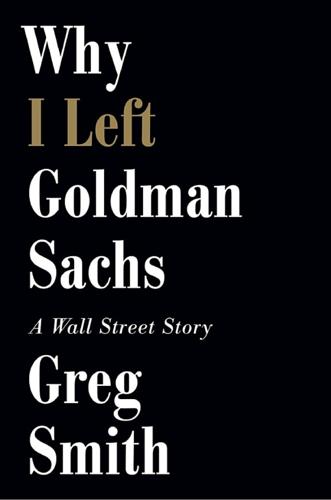
Why I Left Goldman Sachs: A Wall Street Story
by
Greg Smith
Published 21 Oct 2012
If I were lucky, someday I’d get to do it, too. ——— Four other Stanford people besides me made it through the multiple Super Days and into the internship program. Since Stanford was on the quarter rather than the semester system, we all arrived in New York one week late. Most of the non-Stanford interns stayed in NYU housing for the summer, but because I was arriving when I was, I wasn’t able to get a dorm room. Instead, I rented (online, sight unseen) a room from a family I’d never met, on the third floor of a brownstone on Ninety-Sixth between Columbus and Amsterdam. The rent was $1,000 a month, meals not included.
…
The point was to intimidate and provoke the analysts taking the test. To put them under pressure. To say, “You don’t want to screw this one up.” I felt as if I was on the verge of doing just that. The night before the Series 7, I took a break from studying at the massive and ominous-looking Bobst Library at NYU in the Village—my old Stanford student ID card got me access—to phone a friend and fellow analyst, a Swedish guy named Kris Ekelund: “Dude, I’m only getting seventies and seventy-twos on these practice tests—what’s going to happen here?” It was too close for comfort for me. “Don’t worry about it,” Kris said.
…
Druckenmiller later started Duquesne Capital, where he became one of the most successful hedge fund managers of all time, generating average annual returns of 30 percent and never having a losing year until he voluntarily shut down the fund in 2010. He once tried to buy the Pittsburgh Steelers and has been a major philanthropist, giving hundreds of millions of dollars to foundations that support medical research and education and fight poverty—among them, Harlem Children’s Zone and NYU School of Medicine. Fortress Investment Group is a hybrid investment management firm with both a private equity arm and hedge funds. Michael Novogratz, a former Princeton University wrestler and U.S. Army helicopter pilot, was Daffey’s guy here. Novogratz (or “Novo,” as he was called) was a pre-IPO Goldman partner.

Is Everyone Hanging Out Without Me? (And Other Concerns)
by
Mindy Kaling
Published 1 Nov 2011
We had a captive audience with low standards, which was a recipe for smashing success and the reason for the inflated sense of self I have to this very day. If you’re a kid who was not especially a star in your high school, I recommend going to a college in the middle of nowhere. I got all the attention I could ever have wanted. If I had gone to NYU, right now I’d be the funniest paralegal in a law firm in Boston. I got even more confidence from having a steadfast companion in my best friend, Brenda. A few words about Brenda. Bren is the shit. In college, she was the star of every play at Dartmouth from her freshman fall on. She looked the way a Manhattan socialite should look: perfect posture, gazelle-like, with a sheet of dark blond hair.
…
Gail was forty, single, and loved the world created by Sex and the City more passionately than any other person I knew; I think she would’ve disappeared into the show if she could have. (Let me take a moment here to stress again just how pervasive the Sex and the City culture was in New York in 2002. You could be an NYU freshman, a Metropolitan Transit Authority worker, or an Orthodox Jewish woman living in a yeshiva: you watched Sex and the City.) Without knowing me at all, Gail nicknamed me Minz. I respond very well to people being overly familiar with me a little too soon. It shows effort and kindness. I try to do this all the time.
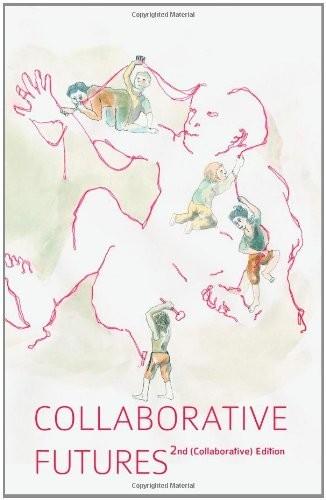
Collaborative Futures
by
Mike Linksvayer
,
Michael Mandiberg
and
Mushon Zer-Aviv
Published 24 Aug 2010
He is the co-founder of Shual.com—a foxy design studio; Shi Space.org—an open source layer above any website; YouAreNotHere.org—a dislocative tourism agency; Kriegspiel—a computer game based on Guy Debord’s Game of War; and the Tel Aviv node of the Upgrade international network. Mushon is an honorary resident at Eyebeam—an art and technology center in New York. He teaches new media research at NYU and open source design at Parsons the New School of Design. He can be found at Mushon.com Mike Linksvayer is Vice President at Creative Commons, where he started as CTO in 2003. Previously he co-founded Bitzi, an early open data/open content/mass collaboration service, and worked as a web developer and so ware engineer.
…
Marta has given numerous lectures and workshops on free culture, digital publishing tools and journalism at festivals and universities. She recently published “El Rival de Prometeo”, a book about Automatas and the engineering of the Enlightenment. She currently lives in Berlin and is working on a second book. Alan Toner was born in Dublin and studied law in Trinity College Dublin and NYU Law School, where he was later a fellow in the Information Law Institute and the Engelberg Center on Law and Innovation. His research is focused on the countervailing impact of peer processes and information enclosure on cultural production and social life. In 2003 he worked on the grassroots campaign ‘We Seize!’

Track Changes
by
Matthew G. Kirschenbaum
Published 1 May 2016
Hauppauge was part of Islip, a suburban bedroom community for New York City, a one-hour and thirty-minute train ride away.36 It may have seemed an unlikely place for what we would today describe as a tech start-up, but in fact the Hauppauge Industrial Park was the largest such complex in the nation at the time, part of the postwar development of Long Island that also included planned communities such as nearby Levittown and Robert Moses’s highway system. The company’s name was the Redactron Corporation, it had $750,000 in operating capital, and its founder was Evelyn Berezin. Born in the Bronx in 1925, Berezin had grown up reading Astounding Stories magazine in her bedroom under the El.37 World War II allowed her to attend NYU on scholarship as a physics major; she graduated in 1945 and subsequently did graduate work there under the aegis of the Atomic Energy Commission.38 But her career path quickly took her instead into the emerging world of computers, where she started out in 1951 at the Brooklyn-based Electronic Computer Corporation.
…
To look at Brathwaite’s work now is to encounter a visual aesthetic that appears conspicuously “retro,” as though fonts continue to be designed on 16-bit systems and printed from 360 dpi printers without the benefit of anti-aliasing. The effect is especially pronounced when reading his work on contemporary subjects, such as “Hawk,” which he wrote in the aftermath of September 11 (Brathwaite had been in New York City, teaching at NYU, at the time): but some day certain in the future of New York. his magic enigmatic majesty now flower- ing the room . his body glow- ing the only word we have for what is now this glow- erring around these future towers of his solo masterpiece rising himself again in sound towards the silver cross of an approaching jet. dissecting in the blue the full white mosque and omen of the moon just afternoons ago . high over Berkeley Square.
…
When his Musgrave Medal (Jamaica’s preeminent cultural award) disappeared in 2010, it made international news. According to lists Brathwaite has provided, thousands of items are missing in all.63 While the circumstances behind these events remain murky, what is undeniable is that they served as a source of extreme personal trauma to the couple. By 2011 Brathwaite (his health also suffering) had departed NYU and returned to the property known as Cow Pastor in his native Barbados. About cultural lynching, he would write: “w /out protection … of yr boundaries and for yr possessions & soul … all yr gains & discoveries & reclamations & dreams of freedom / independence will come to naught; and w/out allies, whatever you may have evolved as yr culture will be filtered fall tered [sic] infiltrated stolen from poison spat upon & destroyed w/out even the vestige of record or qual or eQual or quail to mark that you tried that you xisted that you made a contribution.”64 Understandably, Brathwaite had long feared that his computer or printer would break down, and indeed one trustworthy source reports that the Mac stopped working in 2006 or 2007; and that Brathwaite has subsequently been unable to reconstitute the fonts he initially created with it.65 If so, then it is not too much of an exaggeration to say that this would be a kind of second living death for the poet, a development in the midst of his second Time of Salt that mirrors the indelible moment in 1990 when—a gun at his head having miraculously failed to fire—he virtually died for the first time.
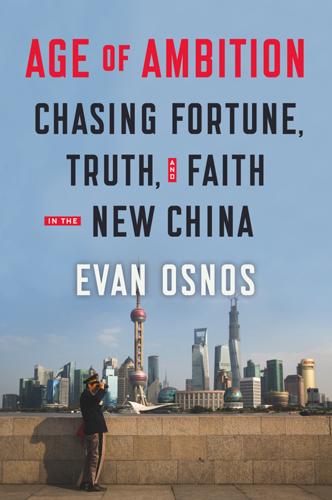
Age of Ambition: Chasing Fortune, Truth, and Faith in the New China
by
Evan Osnos
Published 12 May 2014
They rode to NYU, where a crowd was waiting. Chen stepped to the microphone and thanked Chinese officials for “dealing with the situation with restraint and calm.” In China, the Central Propaganda Department forbade coverage of his arrival; it expanded the online blacklist to include the new search words people were using to discuss Chen’s situation: Blind Man Shawshank Redemption Light + Truth Sunglasses Brother * * * About six months later, on a mild morning in New York, I crossed Washington Square Park and turned south on MacDougal Street. At the US-Asia Law Institute at NYU Law School, Chen was standing in the door of his office when I arrived.
…
Four months after I met him, he waded into American partisan politics: he allied himself with opponents of abortion, including Bob Fu of ChinaAid and a PR consultant named Mark Corallo, a former spokesman for Attorney General John Ashcroft, who “had a hand in almost every newsworthy piece of Republican crisis management in Washington over the past decade,” according to his website. Christopher Smith, a conservative congressman from New Jersey, accused NYU of trying to prevent Chen from meeting with him, and Chen accused the university of refusing to extend his fellowship because it wanted to please the Chinese government. (The school denied both counts.) Chen released a statement that read, “The work of the Chinese Communists within academic circles in the United States is far greater than what people imagine,” though he declined to explain what he meant. Chen’s falling-out with NYU dismayed many of his supporters, including Jerome Cohen, who said glumly, “I have failed as a teacher.”
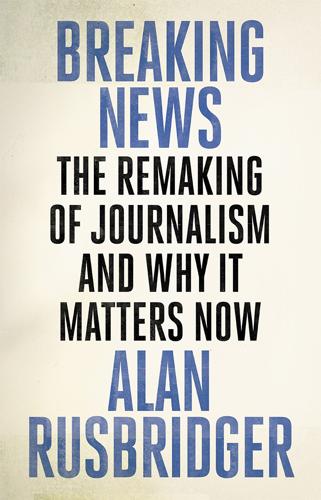
Breaking News: The Remaking of Journalism and Why It Matters Now
by
Alan Rusbridger
Published 14 Oct 2018
And then came Facebook. 13 Bee Information Facebook had started life in 2004 while some of us we were deeply mired in rethinking print: it was opened up to general users on 26 September 2006. At that point it had about 10 million regular users – a seventh the size of the more successful MySpace. The launch made a few hundred words in the Guardian. Looking back now I hear the words of Clay Shirky, the NYU academic and economist who has consistently and incisively blogged about the disruption of news. ‘That is what real revolutions are like. The old stuff gets broken faster than the new stuff is put in its place. The importance of any given experiment isn’t apparent at the moment it appears; big changes stall, small changes spread.
…
A lot of academics watching the industry from the outside placed the open v. closed debates in a longer historical context. Quite a few who knew their press history were doubtful if the media industry could ever adapt to openness because its history had been predicated on being closed. Jay Rosen, a thoughtful sociology professor at NYU in New York who later became involved in a new journalism start-up,17 put it like this when I dropped in on him in 2011 – for 200 years there had been two different ways of profiting from news, the newsletter model or news for the public: The oldest way [of news information] was a private good for rich people.
…
They sometimes share their first drafts with readers, encouraging them to comment and suggest edits before a text is published. ‘There are business advantages because we turn those readers into more loyal readers,’ says Pfauth. ‘When they participate that leads to a stronger bond between the journalist and the reader.’9 For Jay Rosen, the NYU professor advising De Correspondent on its move into the US market, it is all about ‘optimizing for trust’. For him the key elements are transparency about data, sources, and ‘what motivates the reporters’ journalism’. He added a list of other qualities: ‘getting better at listening to the internet, even as you publish on the internet . . . adding my knowledge to yours to make for a better product . . . when responding to criticism, and sorting the valid criticism from the invalid, is considered a vital newsroom skill’.10 Without any revenue from advertising, De Correspondent may yet struggle to make the sums add up.

Radical Uncertainty: Decision-Making for an Unknowable Future
by
Mervyn King
and
John Kay
Published 5 Mar 2020
Our immediate thanks are to those with whom we have discussed the ideas in this book during its writing: Rachel Barkow, Tim Besley, Amar Bhidé, David Bodanis, Alan Budd, Paul Collier, Samuel Issacharoff, Peter Kellner, Richard Pildes, Stuart Proffitt, Adam Ridley, Paul Seabright, Robert Skidelsky, Ed Smith, David Tuckett, and colleagues at NYU Stern School of Business and NYU Law School, as well as at the London School of Economics and the Bank of England. Some of the ideas were presented over several years to seminar participants at a number of places including All Souls College, Oxford, the Norwegian School of Economics in Bergen, NYU Law School and Yale Law School. Others have made this venture feasible. Our personal assistants, Rachel Lawrence in England and Gail Thomas in New York, organised our lives to make it possible to work on the book.
…
., ‘False-Positive Psychology: Undisclosed Flexibility in Data Collection and Analysis Allows Presenting Anything as Significant’, Psychological Science , Vol. 22, No. 11 (2011), 1359–66 NEST, ‘Investment Approach’ < https://www.nestpensions.org.uk/schemeweb/nest/aboutnest/investment-approach.html > (accessed 10 Jan 2019) Newhouse, J., ‘A reporter at large: A sporty game – I betting the company’, New Yorker (14 June 1982) Noble, S. U., Algorithms of Oppression: How Search Engines Reinforce Racism (New York: NYU Press, 2018) Norman, J., Adam Smith: What He Thought, and Why it Matters (London: Penguin, 2018) Nunn, G. A., ‘The Incompatibility of Due Process and Naked Statistical Evidence’, Vanderbilt Law Review , Vol. 68, No. 5 (2015), 1407–33 Nwauwa, N., ‘Improving Care and Response in Nigeria’, Journal of Emergency Medical Services , Vol. 42, No. 6 (2017) Obama, B.
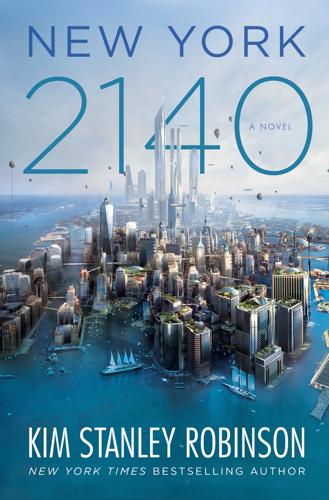
New York 2140
by
Kim Stanley Robinson
Published 14 Mar 2017
He runs his own fund now, Alban Albany. But he was the CEO of Adirondack at the time of the Senate investigation. But why do you ask about Larry Jackman?” Charlotte rolled her eyes. “Because Jackman was the CFO at Adirondack. Also he’s my ex.” “Ex-husband?” “Yes.” Charlotte shrugged. “It was a long time ago. We were going to NYU at the time. We got married to see if that would help keep us together.” “Good idea,” Gen said, and was relieved when Charlotte laughed. “Yes,” Charlotte admitted, “always a good idea. Anyway, the marriage only lasted a couple of years, and after we broke up I didn’t see him for a long time. Then we crossed paths a few times, and now we’ve got each other’s contacts, and we get together for coffee every once in a while.”
…
She hoofed over to the vapo dock next to the Flatiron and took the Fifth south down to the Washington Square bacino, where she knew that the Lower Manhattan Mutual Aid Society was having its monthly. Lots of building supers would be there, and various obliged and interested parties from the buildings and organizations that altogether made Lame Ass a lively place. They met on a big roof terrace that NYU provided for the meetings, a kind of cocktail hour before the evening meetings. Gen was a well-known figure and lots of friends and acquaintances came up to greet her; it had been a while since she had made one of the monthlies. She was friendly to all but kept an eye out for her particular friends, the supers and security experts she called her Bacino Irregulars.
…
“The nearest hospital is Bellevue,” he shouted to Idelba with unnecessary volume. “What about up to Central Park?” “No! It won’t be possible to land people there, the street docks will be wrecked.” “Where to then?” “Bellevue hospital is at Twenty-sixth and First,” Vlade said. “Bellevue? Isn’t that a mental hospital?” “Well, NYU hospital is at Thirty-second and Park.” “Let’s go there.” “For people who aren’t hurt, we can just take them back to the Met, or any solid building that will take them. We can do a rectangle like a vapo.” “Okay.” Vlade leaped back out into the onslaught. In only ten blocks of going east on Houston they had picked up a couple hundred people, now filling the deck of the tug, seated and huddled together.
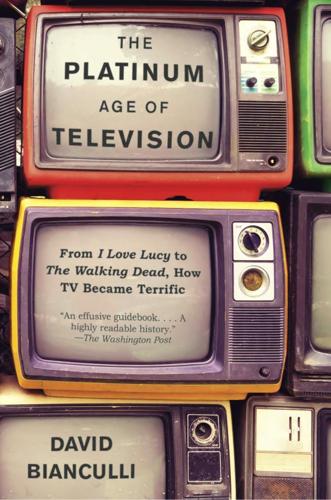
The Platinum Age of Television: From I Love Lucy to the Walking Dead, How TV Became Terrific
by
David Bianculli
Published 15 Nov 2016
With that kind of discerning taste and untiring enthusiasm as a youngster, and with a Spielbergian habit of borrowing a friend’s Super 8 camera to film his own imaginative movies, it’s no surprise that Gilligan, who was born in 1967 in Richmond, Virginia, ended up attending, and graduating from, film school at NYU. What’s more surprising is how he got his first big break and his second one. His first break came shortly after graduation, when he entered a screenwriting competition in 1989 at the Virginia Film Festival and won. One of the judges was the producer Mark Johnson, whose credits included The Natural and Good Morning, Vietnam and who had just won an Oscar for Rain Man.
…
In the latter years of The X-Files, Gilligan and Carter joined forces as two of the co-creators of an official spin-off called The Lone Gunmen, but it both came and went in 2001. Gilligan left The X-Files in 2002, and for a while nothing much followed. “The jobs were not coming quickly enough,” Gilligan says of that period, and he remembers complaining on the phone to Tom Schnauz, his old NYU film school buddy who, like Gilligan, had worked on both The X-Files and The Lone Gunmen. “What should we do next?” they wondered, if no more Hollywood offers ever materialized. “We were just goofing and decided that we should go off and cook crystal meth or be a greeter at Walmart, joking that that was our Plan B.
…
Odenkirk played him, too, and once again Better Call Saul was presented as a story about transformation, but this time one that could end up encompassing past, present, and future. The credits for Better Call Saul include many, many members of the Breaking Bad crew and staff, including two collaborators Gilligan has known for decades: his NYU classmate Tom Schnauz (who inspired the original Breaking Bad meth-lab idea) and the producer Mark Johnson, who made Gilligan’s first movie. Clearly, Gilligan is the loyal sort and makes sure to stress that when it came time to consider a spin-off of Breaking Bad, there were a “great many actors and actresses on Breaking Bad who could capably carry their own spin-off, starting with Aaron Paul.”
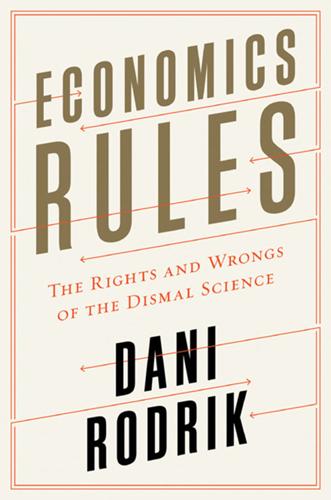
Economics Rules: The Rights and Wrongs of the Dismal Science
by
Dani Rodrik
Published 12 Oct 2015
The article, which parodied the convoluted style of argument in the fashionable academic world of cultural studies, was promptly published by the editors. Sokal announced that his intention was to test the intellectual standards of the discipline by checking whether the journal would publish a piece “liberally salted with nonsense.” Sokal, “A Physicist Experiments with Cultural Studies,” April 15, 1996, http://www.physics.nyu.edu/sokal/lingua_franca_v4.pdf. *** My take on economics is, in fact, much closer to the pragmatist tradition in epistemology than to the positivist one. CHAPTER 3 Navigating among Models What makes economics a science is models. It becomes a useful science when those models are deployed to enhance our understanding of how the world works and how it can be improved.
…
Lawrence Mishel, John Schmitt, and Heidi Shierholz, “Assessing the Job Polarization Explanation of Growing Wage Inequality,” Economic Policy Institute, January 11, 2013, http://www.epi.org/publication/wp295-assessing-job-polarization-explanation-wage-inequality. 22. Albert O. Hirschman, “The Search for Paradigms as a Hindrance to Understanding,” World Politics 22, no. 3 (April 1970): 329–43. CHAPTER 5: When Economists Go Wrong 1. Thomas J. Sargent, “University of California at Berkeley Graduation Speech,” May 16, 2007, https://files.nyu.edu/ts43/public/personal/UC_graduation.pdf. 2. Noah Smith, “Not a Summary of Economics,” Noahpinion (blog), April 19, 2014, http://noahpinionblog.blogspot.com/2014/04/not-summary-of-economics.html; Paul Krugman, “No Time for Sargent,” New York Times Opinion Pages, April 21, 2014, http://krugman.blogs.nytimes.com/2014/04/21/no-time-for-sargent/?

Capital Ideas Evolving
by
Peter L. Bernstein
Published 3 May 2007
Samuelson, “Lord Keynes and the General Theory,” Economica 14 (1946), pp. 187–199 We make models to abstract reality. But there is a meta-model beyond the model that assures us that the model will eventually fail. Models fail because they fail to incorporate the inter-relationships that exist in the real world. Myron Scholes, speech at NYU/IXIS conference on hedge funds, New York, September 2005 he revolution in the theory and practice of investing that swept over Wall Street during the last three decades of the twentieth century had been carried out by scholars toiling in the ivory towers, far away from the heart of the financial world in New York City.
…
Most of Leibowitz’s colleagues at this firm held Ph.D.s in math, which Leibowitz had never bothered to pursue. Math seemed so easy to him there was no point spending time taking courses in it (Leibowitz now characterizes himself at that time as “an arrogant stupid kid”). But later he thought better of that snap decision. He began by taking evening courses at NYU and pretty soon found himself going through the grind of earning a Ph.D. at night. One day it was time to start earning a proper living. With hindsight, we can say the first steps in that direction were in quite the opposite direction of where Leibowitz has ended up, but in fact the linkages would turn out to be closer than he had any idea at the time.
…
With the senior partners fighting with each other to be at the head of the line, I became discovered! I had gained a little footing at Salomon Brothers.” He even received a title, Director of Investment Systems. At that point, Leibowitz was also Adjunct Assistant Professor in Quantitative Analysis at the NYU Graduate School of Business Administration. The turmoil in the financial markets persuaded Sidney Homer to pick up the threads of his book, and soon he and Leibowitz were writing it together. The manuscript turned into Inside the Yield Book: New Tools for Bond Market Strategy, published in 1972 by PrenticeHall and the New York Institute of Finance.2 The very notion of a bond market strategy was revolutionary in a field where, as I mentioned earlier, bonds had been traditionally bought on a buy-and-hold basis.
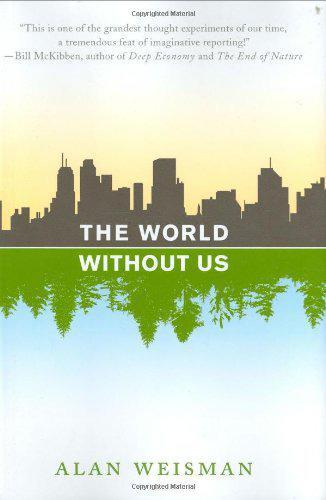
The World Without Us
by
Alan Weisman
Published 5 Aug 2008
Across the parkway at the Bronx Zoo, Eric Sanderson and his Mannahatta Project gave me continual inspiration. Charles Seaton of New York Transit arranged my trek through the subways, which Paul Schuber and Peter Briffa ably and affably guided. I spent yet more hours with Cooper Union’s civil engineering chairman Jameel Ahmad, and with NYU’s poly-talented scientist Tyler Volk and physicist Marty Hoffert. And, courtesy of Jerry Del Tufo, I now appreciate that a bridge is so much more than simply a means to the other side. Outer space is as far a stretch from home as we can make; it’s my good fortune, however, to have had a genuine rocket scientist for a neighbor.
…
In Tanzania, I thank Joseph Bifa at Olduvai Gorge and Browny Mtaki, who showed me key locales in Serengeti. At Lake Tanganyika, Karen Zwick and Michael Wilson at the Jane Goodall Institute in Kigoma and Gombe were immeasurably knowledgeable and hospitable, and worth traveling days to talk to. Late one evening, NYU doctoral candidate Kate Detwiler expounded on a theory I’d long puzzled over. I especially thank limnologist Andy Cohen of the University of Arizona for suggestions that led me to all of them, and for sharing his deep experience in the region. My permission to visit the Korean Demilitarized Zone was kindly and swiftly processed by the U.S.

The Human City: Urbanism for the Rest of Us
by
Joel Kotkin
Published 11 Apr 2016
“Southern California—This Just In,” Los Angeles Times http://latimesblogs.latimes.com/lanow/2012/06/irvine-safest-city.html. APPLEBAUM, Anne. (2012). Iron Curtain: The Crushing of Eastern Europe 1944–1956, New York: Anchor Books. APPLESEED. (2011, May). “The Economy of Greenwich Village: A Profile,” New York University, http://www.gvshp.org/_gvshp/preservation/nyu/doc/nyu-report-05-2011.pdf. ARENDT, Randall G. (1996). Conservation Design for Subdivisions, Washington, DC: Island Press. ARIEFF, Allison. (2009, January 11). “What Will Save the Suburbs?,” New York Times, http://opinionator.blogs.nytimes.com/2009/01/11/what-will-save-the-suburbs/. ARIES, Phillippe. (1962).
…
A generation reared largely in the comparative spaciousness of suburbia may yearn for city life but find its ability to buy or even rent a family residence along Flatbush’s tree-lined streets all but prohibited. In a city where space is often at a premium, choosing to raise a family can pose difficult, even impossible choices. “The cost of space is the biggest issue in Brooklyn,” notes local resident Michael Milch, whose wife attends dental school at NYU. “The issue becomes, can you get some personal green space and a place for the kids to wander?” Of course, people living and settling in areas such as Ditmas Park or nearby Kensington, where many homes are large but often prohibitively expensive, willingly pay a premium for the pleasure of living in New York.
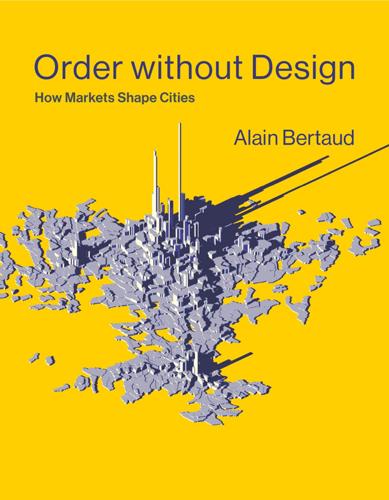
Order Without Design: How Markets Shape Cities
by
Alain Bertaud
Published 9 Nov 2018
In addition, Jonathan played a particularly important role in reviewing the early chapters of the book and providing his insights as an economist. Eventually, when the writing of this book was sufficiently advanced, I was asked to teach a course to New York University students. The course, called “Markets, Design, and the City,” followed the sequence of the book’s chapters. It was a good way to test its content on the critical minds of NYU graduate students. It became an occasion for further exchanges of ideas and perspectives, as the students came from many different countries. We still meet regularly with some of them, who by now are pursuing careers in urban planning: Eduard Cabré-Romans, Javier Garciadiego Ruiz, Hannah Kates, Simon Lim, Jwanah Qudsi, and Amalia Toro Restrepo.
…
I was glad that Laura was not affected by this bias and did not hesitate to spend a large amount of time reviewing the quality of the maps and the graphs contained in this book. Finally, I must thank MIT Press for having agreed to publish this book with no hesitations and no red tape. Jane Macdonald established the first contact at a conference at NYU and reviewed the first three chapters. As the writing progressed, Emily Taber took over from Jane and finalized the agreement to publish with MIT Press. Emily provided further guidance on putting the manuscript in its final phase. I thank Emily for giving friendly, quick, and clear answers to all the questions, possibly naive, coming from an author publishing his first book.
…
The standard urban model, described in chapter 4, suggests that cities with increasing incomes and a low rate of urbanized population would need large areas to expand as the quantity of urbanized land per capita is bound to increase. In chapter 4, we have seen the example of Tianjin, China, where over 12 years the consumption of land per person had increased by 34 percent, the population increased by 22 percent, while the built-up area increased by 63 percent. The recent work conducted by my NYU colleague Solly Angel with the Urban Expansion Project24 at the Marron Institute confirms the predictions of the standard urban model in most of the world’s cities. As part of this work, Angel and his team have published an Atlas of Urban Expansion showing how the populations and built-up areas of a sample of cities of 100,000 people or more have grown during the past 25 years (1990–2014).
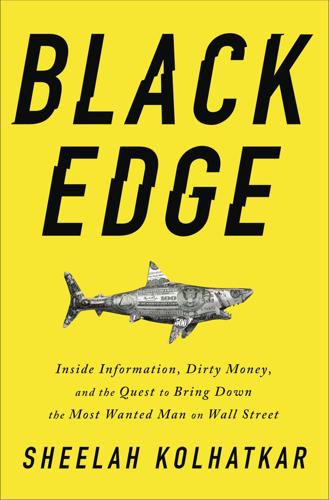
Black Edge: Inside Information, Dirty Money, and the Quest to Bring Down the Most Wanted Man on Wall Street
by
Sheelah Kolhatkar
Published 7 Feb 2017
All three were startled to see the Wyeth shares appear in SAC’s account, and they started to ask around. “Why is the firm making a billion-dollar bet on Wyeth?” Karp asked Cohen. “It’s Wayne’s position,” Cohen told him. That was supposed to be the end of it. The name aroused awe on SAC’s trading floor. Wayne Holman was a former SAC portfolio manager, a graduate of Yale and the NYU School of Medicine who had worked as a pharmaceutical analyst at Merrill Lynch before coming to work at SAC. Cohen had tried to hire him multiple times before the compensation finally won him over; once at SAC, he quickly started to make more money than almost anyone else. Martoma referred to Holman as a “healthcare god.”
…
Because of the country’s restrictions on expatriation of personal assets, the family lost everything when they moved. Wadhwa’s father had to take a job at a Rite Aid, and Wadhwa joined him there to help sustain the family. After graduating from a Texas law school that most people had never heard of and getting a master’s degree from NYU, he passed a few unhappy years as an associate at Skadden, Arps, Slate, Meagher & Flom, a powerhouse law firm closely allied with Wall Street. In 2003 Wadhwa applied for a job at the SEC. As soon as he joined, he started focusing on insider trading cases. He had spent the summer of 2009 working closely with the FBI on the Rajaratnam investigation and the other hedge fund cases that grew out of it; he and the FBI agents involved in the insider trading cases sometimes spoke multiple times a day.
…
— That same night, Samir Barai, Longueuil’s friend and the founder of Barai Capital, had read the same Wall Street Journal article and had a similar panic attack. At thirty-nine, Barai had succeeded on Wall Street through sheer exertion. He had a severe hearing impediment, and when he was young, nobody thought he would ever amount to much. He got through NYU and then Harvard Business School by sitting in the front row and reading his professors’ lips. He had been trading extensively on inside information at his small hedge fund, something that anyone who worked for him quickly discovered as he demanded that they get inside information, too. Barai and Longueuil had developed a close, if nasty, friendship, making wisecracks about Freeman behind his back, laughing at the thought of him having sex with their various sources, even jokingly referring to him as “the Jew.”
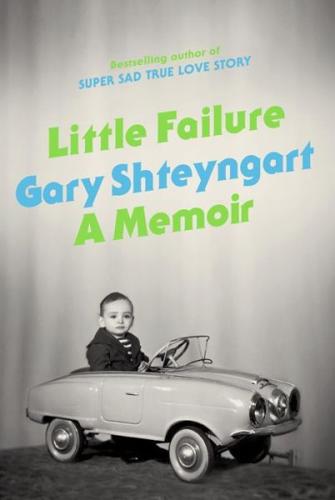
Little Failure: A Memoir
by
Gary Shteyngart
Published 7 Jan 2014
Whereas in Stuyvesant I was at the bottom of my class, at Oberlin I can maintain a nearly perfect average while being drunk and stoned all day long. I get on the phone as soon as the first report card is issued. “Mama, Papa, I have a 3.70!” “What does it mean, 3.70?” “An A average. I can get into Fordham Law easy. Maybe if I graduate summa cum laude, NYU or the University of Pennsylvania.” “Semyon, did you hear what Little Igor has said?” “Very good, very good,” my father says across the telephone line. “Tak derzhat’!” Keep it up! Intense stoner feelings of love wash over me. Tak derzhat’! He hasn’t used that kind of language with me in half a decade.
…
The other thing I’m excited about is going back to New York, the place I know will be my home for the rest of my life. With J.Z. no longer my girlfriend, going home means mainly one thing: going back to my new best friend. Allow me to backtrack to sophomore year. My college roommate C-cup Irv and his parents live in Washington Square Village, two pieces of colorful NYU Warsaw Pact architecture set around a pleasant private park. Across the hall from Irv lives a sound editor who is friends with the former head writer of the soap opera As the World Turns. I want to say this soap opera writer, John, is x years old, but in the two decades I’ve known him he has never revealed his age.
…
I cannot wait any lon-ger. Talk to me, Haimosaurus!” (John is not tall, but there is something colossal yet haimish about his presence and gait, reminding me of a powerful Hebraic dinosaur.) Within a few months, I think seriously of transferring to Columbia or, more in tune with academic reality, NYU, to be closer to my new role model. Only my budding relationship with J.Z. will keep me at Oberlin. Within a few months, John will take me, J.Z., and roommate Irv out to the River Café for my twenty-first birthday, and I will run off with my girlfriend to the parking lot to kiss her in front of the world’s most important skyline for at least as long as it takes a medium-rare filet mignon to grow cold.

The Future Is Faster Than You Think: How Converging Technologies Are Transforming Business, Industries, and Our Lives
by
Peter H. Diamandis
and
Steven Kotler
Published 28 Jan 2020
For instance, experiencing what it would be like to be an elderly, homeless, African-American woman living on the streets of Baltimore produces lasting change in users: a significant shift in empathy and understanding. “Virtual reality is not a media experience,” explained Bailenson in a 2010 speech at NYU law school. “When it’s done well, it’s an actual experience. In general our findings show that VR causes more behavior changes, causes more engagement, causes more influence than other types of traditional media.” And as much development as there is in virtual reality, a larger amount is taking place in augmented reality.
…
The development of belief systems and technologies, the spread of crops and production methods, have often arisen out of the experiences of, or encounters with, migrants. Migration, as Golding and Cameron recount, isn’t just people on the march, it’s ideas on the move. It is, as it has always been, a major driver of progress. Migration is an innovation accelerant. A few years back, a Stanford economist named Petra Moser (now at NYU) decided to try to quantify the impact of this acceleration. It was something of a personal inquiry. “More than half of my colleagues at Stanford are immigrants,” she once told reporters. “I [wanted] to find out how policies that alter the flow of such highly skilled immigrants affect science and innovation.”
…
VR market around $35 billion or so: “Profiles in Innovation: Virtual and Augmented Reality,” January 13, 2016.GoldmanSachs.com, See: https://www.goldmansachs.com/insights/pages/technology-driving-innovation-folder/virtual-and-augmented-reality/report.pdf. He’s developed first-person VR experiences: Author interview with Bailenson. See also: Jeremy Bailenson, Experience on Demand: What Virtual Reality Is, How It Works, and What It Can Do (W. W. Norton & Company, 2018). 2010 speech at NYU law school: “The Virtues of Virtual Reality: How Immersive Technology Can Reduce Bias,” April 26, 2019 (video). See: https://www.youtube.com/watch?v=vXxfkkINq8M. In 2016, when Nintendo’s Pokemon GO was downloaded almost a billion times: Lauren Musni, “Pokémon GO Surpasses the 1 Billion Downloads Milestone,” Nintendo Wire, July 31, 2019.
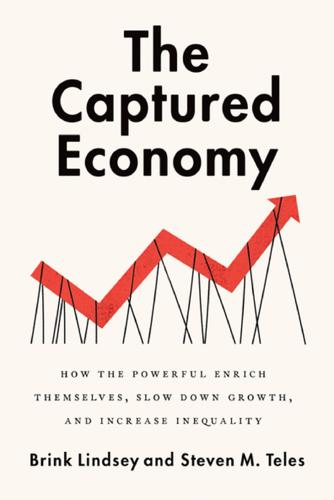
The Captured Economy: How the Powerful Enrich Themselves, Slow Down Growth, and Increase Inequality
by
Brink Lindsey
Published 12 Oct 2017
Journal of Macroeconomics 12, no. 1 (2012), http://www2.gsu.edu/~ecofkr/papers/published_version_BEJM.pdf. 37.See Tullio Jappelli and Marco Pagano, “Savings, Growth, and Liquidity Constraints,” Quarterly Journal of Economics 109, no. 1, (1994): 83–109. 38.See Cecchetti and Kharroubi, “Why Does Financial Sector Growth Crowd Out Real Economic Growth?” 39.See Greenwood and Scharfstein, “The Growth of Finance,” p. 5. 40.Thomas Phillippon and Ariell Reshef, “Wages and Human Capital in the U.S. Financial Industry: 1909–2006,” Quarterly Journal of Economics 127, no. 4 (November 2012): 1551–609, http://pages.stern.nyu.edu/~tphilipp/papers/pr_qje2012.pdf. 41.Amy Binder, “Career Funnelling: How Elite Students Learn to Define and Desire ‘Prestigious’ Jobs,” Sociology of Education 89, no. 1 (2016): 20–39. 42.See Admati and Hellwig, The Bankers’ New Clothes, pp. 122–27. Chapter 4 1.“U.S. Patent Activity: Calendar Years 1790 to the Present,” U.S.
…
Lee, “Save the Orphan (Works),” Cato Institute TechKnowledge no. 117, June 30, 2008. 19.Peter Baldwin, The Copyright Wars: Three Centuries of Trans-Atlantic Battle (Princeton, NJ: Princeton University Press, 2014), p. 366. 20.See Kevin Waddell, “The Research Pirates of the Dark Web,” Atlantic, February 9, 2016, http://www.theatlantic.com/technology/archive/2016/02/the-research-pirates-of-the-dark-web/461829/; Nikhil Sonnad, “The Website That Offered 47 Million Pirated Academic Papers Is Back,” Quartz, February 14, 2016, http://qz.com/616677/the-website-that-offered-47-million-pirated-academic-papers-is-back/. 21.See Edward Felten, “The Chilling Effects of the DMCA,” Slate, March 29, 2013, http://www.slate.com/articles/technology/future_tense/2013/03/dmca_chilling_effects_how_copyright_law_hurts_security_research.html. 22.See James Bessen and Michael J. Meurer, Patent Failure: How Judges, Bureaucrats, and Lawyers Put Innovators at Risk (Princeton, NJ: Princeton University Press, 2008), Figure 6.5, p. 139. 23.Timothy B. Lee and Christina Mulligan, “Scaling the Patent System,” NYU Annual Survey of American Law 68, no. 289 (2012), http://digitalcommons.law.uga.edu/cgi/viewcontent.cgi?article= 1911&context=fac_artchop/913. 24.Executive Office of the President, “Patent Assertion and U.S. Innovation,” Council of Economic Advisers, National Economic Council and Office of Science and Technology Policy, June 2013, http://www.whitehouse.gov/sites/default/files/docs/patent_report.pdf. 25.James Bessen and Michael Meurer, “The Direct Costs from NPE Disputes,” Boston University School of Law Working Paper 12-34, June 25, 2012, https://www.bu.edu/law/faculty/scholarship/workingpapers/documents/BessenJ_MeurerM062512rev062812.pdf. 26.See Amy Kapczynksi, “Four Hypotheses on Intellectual Property and Inequality,” Working Paper Prepared for the SELA conference, June 11–14, 2015, https://www.law.yale.edu/system/files/documents/pdf/SELA15_Kapczynski_CV_Eng.pdf. 27.Glenn Peeples, “Adele’s ‘25’ Is 42 Percent of Total Music Sales This Week,” Billboard.com, November 24, 2015, http://www.billboard.com/articles/business/6776984/adele-25-42-percent-record-sales-7-5-million-200. 28.Patricia M.
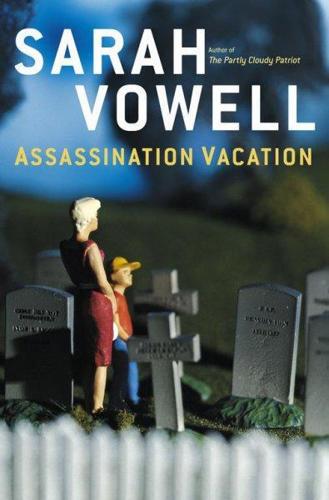
Assassination Vacation
by
Sarah Vowell
Published 28 Mar 2005
I read a history book describing how McKinley’s secretary of war Elihu Root finally — after press uproar sparked Senate hearings — got around to ordering courts-martial for U.S. officers accused of committing the “water cure” in the Philippines, and, closing the book, turned on a televised Senate Armed Services Committee hearing in which Secretary of Defense Donald Rumsfeld was grilled about photographs of giddy U.S. soldiers proudly pointing at Iraqi prisoners of war they had just tortured at the Abu Ghraib prison. I went to NYU to hear former vice president Al Gore deliver a speech calling for Rumsfeld’s resignation; Gore asked of the administration’s imploding Iraq policy in general and the Abu Ghraib torture photos in particular, “How dare they drag the good name of the United States of America through the mud of Saddam Hussein’s torture prison?”
…
As well as: Kevin Baker, Alex Blumberg, Eric Bogosian, Shelley Dick, Daniel Ferguson, John Flansburgh, Barrett Golding, Jonathan Goldstein, Robin Goldwasser, Jack Hitt, John Hodgman, Nick Hornby, Ben Karlin, Jon Langford, Lisa Leingang, Ben Lloyd, John Ma, Jim Nelson, Conan O’Brien, Kate Porterfield, David Sedaris, John-Mario Sevilla, Jeff Singer, Julie Snyder, the Family Sontheimer, Wendy Weil, and Ren Weschler. A welcome distraction from assassination conspiracies were these conspiracies I’m thrilled to be part of: This American Life, McSweeney’s, Pixar, Eating It, Late Night, the New York Institute for the Humanities at NYU, and 826NYC. A special Shotgun! to my fellow travelers: my sister Amy Vowell; my nephew Owen Brooker; Fran and Quenton Barker; Nicole Francis; Brent Hoff; Matt Klam; Matt Roberts; and particularly the Lincoln-loving Bennett Miller, who is either a really good listener or a really good actor — he’s been this book’s best friend.

Electronic and Algorithmic Trading Technology: The Complete Guide
by
Kendall Kim
Published 31 May 2007
In a contrarian strategy, investors are investing against the prevailing tide; the cost of waiting is likely to be smaller because of this behavior. The cost of waiting in a ‘‘momentum’’ strategy is likely to be higher since the investor is buying when other investors are selling 3 Aswath Damodaran, ‘‘Trading Cost and Taxes,’’ pp. 17–20, http://pages.stern.nyu.edu/ adamodar/pdfiles/invphiloh/tradingcosts.pdf. 98 Electronic and Algorithmic Trading Technology and vice versa. Traders with superior information earn abnormal returns that just offset their opportunity and implementation costs. This implies that the portfolio return should on average offset the fees and trading costs imposed by the investment manager. 9.5 Explicit Costs—Commissions, Fees, and Taxes Commissions, fees, and taxes are unavoidable costs and can significantly alter a fund or stock’s portfolio.
…
An accurate measure of an investment strategy is observing after-tax returns and not pre-tax returns. 16.00% 14.00% 12.00% 10.00% 8.00% 6.00% 4.00% 2.00% 0.00% Large Value Large Large Midcap Midcap Midcap Small Blend Growth Value Blend Growth Value Fund Style Pre-tax Return Small Small Blend Growth After-tax Return Exhibit 9.5 Pre-tax and after-tax returns at U.S. equity mutual funds 1999–2001. Source: Aswath Damodaran, ‘‘Trading Cost and Taxes,’’ p. 30, http://pages.stern. nyu.edu/adamodar/pdfiles/invphiloh/tradingcosts.pdf. Minimizing Execution Costs 99 The Evolution of Trading Strategies to Minimize Transaction Costs The development of sophisticated technology has changed the way we access markets and trade stocks. New order-routing technologies, algorithm strategies, and alternative trading venues are shifting the responsibility for best execution from traditional brokers to money managers themselves.
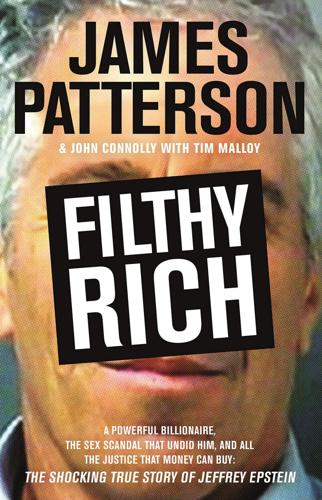
Filthy Rich: A Powerful Billionaire, the Sex Scandal That Undid Him, and All the Justice That Money Can Buy: The Shocking True Story of Jeffrey Epstein
by
James Patterson
,
John Connolly
and
Tim Malloy
Published 10 Oct 2016
But anyway…his explanation was, “It’s my job to know how people’s brains work.” And I said, “Whatever the fuck that means. Whatever. You’re like some old guy who [unintelligible….]” You know what he promised me? Here’s the reason I held on so long is, he promised me that I would get into NYU. That I would get into NYU and he would pay for it. And I waited, and I waited, and I scored great on my SATs, I would get 4.0—like, I did great in school. I filled out my application and he told me that it wasn’t good enough. So I filled it out again, and it was like three times. So I’m pretty sure he wasn’t checking into it, he was just telling me that he was.

A Wealth of Common Sense: Why Simplicity Trumps Complexity in Any Investment Plan
by
Ben Carlson
Published 14 May 2015
Intelligent investors view volatility as an opportunity, to both profit and keep their cool under pressure by following their process. Notes 1. Potter Stewart, Jacobellis v. Ohio 378 U.S. 184 (1964), https://supreme.justia.com/cases/federal/us/378/184/case.html. 2. Stock, bond, and cash returns courtesy of NYU and A. Damadoran, http://pages.stern.nyu.edu/∼adamodar/New_Home_Page/datafile/ histretSP.html. 3. Dan Gardner, The Science of Fear: How the Culture of Fear Manipulates Your Brain (New York: Plume, 2009). 4. William N. Goetzmann, Dasol Kim, Alok Kumar, and Qin “Emma” Wang, “Weather-Induced Mood, Institutional Investors, and Stock Returns,” Social Science Research Network, September 8, 2014, http://papers.ssrn.com/sol3/papers.cfm?
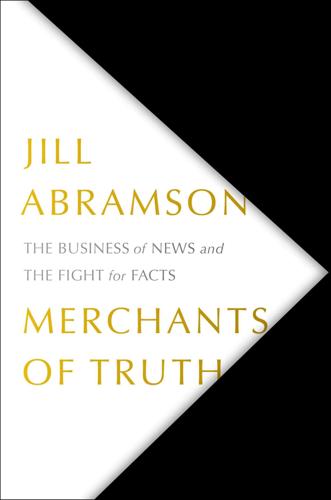
Merchants of Truth: The Business of News and the Fight for Facts
by
Jill Abramson
Published 5 Feb 2019
While Peretti and his engineers tinkered with the algorithm, Wang drafted five posts for BuzzFeed to publish each day—the sum of its original content. One day, when all she could muster was three, Peretti marched up to her desk and requested she pick up the pace. She’d gotten food poisoning, she explained politely. To help Wang handle the growing workload, Peretti hired a shaggy-haired, jean-shorts-wearing NYU student, Matt Stopera, as BuzzFeed’s first summer intern. If there was ever an archetypal Bored at Work member, Stopera was it. He came to BuzzFeed from a “nightmare” internship at a relative’s insurance company, where he was supposed to be digitizing files, but, he said, “I just kind of gave up because the people there had no idea what I was doing anyway.”
…
Shirky advocated the social sharing of articles, linking to a story and sending it on to friends to create communities of interest. At this point, the Times knew nothing of Peretti’s discoveries about virality. Shirky, who did, was part of a group of journalism school professors who were called “the Future of News Group.” Its members included Jay Rosen, another NYU professor, and Jeff Jarvis, who taught at the City University of New York. Rosen and Jarvis shared their ruminations about journalism on their blogs, which were beginning to get attention. The Times invited Jarvis to speak to its senior leadership team at a restaurant in Manhattan. Jarvis was bombastic, declaring that the Times was “the canary in the coal mine,” as newspapers stumbled their way into the digital world.
…
HBO wanted to lower the risk factor and buff up Vice’s journalism cred, so the well-connected Plepler asked Fareed Zakaria, the foreign affairs columnist and pundit who had his own Sunday public affairs show on CNN, to be an executive producer of the show. Zakaria was exactly the kind of stentorian television “authority” whom Morton had reviled when he was studying journalism at NYU. Now Morton was one of the stars of the HBO show Zakaria was helping to oversee. Soon, however, Zakaria, who was hired to lend Vice legitimacy, was tarred in a plagiarism scandal; HBO kept him on nonetheless. For the first season, most of the producers of the show worked on a short leash in HBO’s Manhattan offices.

The Meritocracy Trap: How America's Foundational Myth Feeds Inequality, Dismantles the Middle Class, and Devours the Elite
by
Daniel Markovits
Published 14 Sep 2019
Massey and Margarita Mooney, “The Effects of America’s Three Affirmative Action Programs on Academic Performance,” Social Problems 54, no. 1 (2007): 99–117, 100 (“The only comprehensive study of all [preferential admissions] that has sought to control for variation in qualifications is that of Espenshade and associates (2004).”) the entire bottom half: See Chapter 5. was betting against them: Goldman Sachs’s ABACUS Flipbook is available on the webpage of the director of financial mathematics at NYU’s Courant Institute of Mathematical Sciences. See ACA Management, LLC, ABACUS 2007-AC1, February 26, 2007, accessed June 19, 2018, www.math.nyu.edu/faculty/avellane/ABACUS.pdf. For more on the ABACUS deal, see Louise Story and Gretchen Morgenson, “S.E.C. Accuses Goldman of Fraud in Housing Deal,” New York Times, April 16, 2010, accessed June 19, 2018, www.nytimes.com/2010/04/17/business/17goldman.html; Dan Wilchins, Karen Brettell, and Richard Change, “Factbox: How Goldman’s ABACUS Deal Worked,” Reuters, April 16, 2010, accessed January 27, 2019, www.reuters.com/article/us-goldmansachs-abacus-factbox/factbox-how-goldmans-abacus-deal-worked-idUSTRE63F5CZ20100416; Securities and Exchange Commission, “Goldman Sachs to Pay Record $550 Million to Settle SEC Charges Related to Subprime Mortgage CDO,” July 15, 2010, accessed January 27, 2019, www.sec.gov/news/press/2010/2010-123.htm; and Michael A.
…
Rogers College of Law at the University of Arizona; the University of Arizona Center for Law and Philosophy; the Yale College Income Tax Assistance Project; the International University College of Turin; the Yale University Institution for Social and Policy Studies and Washington Center for Equitable Growth Conference on Inequality, Politics, and Prosperity; the Yale Law School Faculty Workshop; the Yale Law School commencement; the University of Toronto School of Law; the University of Texas School of Law; the American Constitution Society Conference on Law and Inequality; the Yale Law School alumni weekend; the Georgetown University Law Center; the Cegla Center; UCLA School of Law; Columbia Law School; the University of Texas Inequality and Human Rights Conference; Dartmouth College; Cornell Law School; the Yale College reunion; the Seminario en Latinoamérica de Teoría Constitucional y Política; the Comenius Programme; the Fondazione Cariplo; the New York Institute for the Humanities; the NYU School of Law; Vanderbilt University Law School; the Conseil d’État; the Universidad de Buenos Aires Faculty of Law; the Federalist Society; the University of North Carolina School of Law; the Law and Political Economy Project; ETH Zurich and IAST Toulouse; the Humboldt-Universität Institut für Sozialwissenschaften; the Baldy Center at the University at Buffalo; the Northwestern University Pritzker School of Law; Brooklyn Law School; the Yale Law School First Generation Professionals; and the Italian Society of Law and Economics.
…
the “top ten” . . . “top five”: These are the fourteen and six schools that, on account of ties and yearly fluctuations, are conventionally understood to constitute the “top five” and “top ten” schools in the U.S. News & World Report rankings. They are: Yale, Harvard, Stanford, Chicago, Columbia, and NYU (the “top five”), and Pennsylvania, Michigan, Virginia, Duke, Northwestern, Berkeley, Cornell, and Georgetown (to round out the “top ten”). Law firm profits are conventionally calculated in three ways: total profits, profits per lawyer, and profits per partner. The third—profits per partner—is the most commonly used and also, because partners are the highest-paid workers in the firms, the most relevant for present purposes.
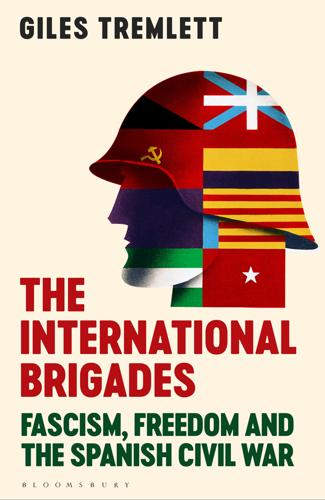
The International Brigades: Fascism, Freedom and the Spanish Civil War
by
Giles Tremlett
Published 14 Oct 2020
Much later, a Brigade firing squad executed Harris. 15https://www.newyorker.com/magazine/2016/04/18/the-americans-soldiers-of-the-spanish-civil-war. 16Carroll, Odyssey, p. 96. 17Ibid., p. 97. 18Carroll, ‘Spanish Civil War in the 21st Century’, p. 651. 19Carroll, Odyssey, p. 93. 20Robert Hale Merriman, ed. Raymond Hoff, Merriman’s Diaries, Exegesis, self-published, 2018; copyright Tamiment Library, NYU, New York, http://digitaltamiment.hosting.nyu.edu/files/original/5434ae298184e90c2b45d6139c10f81d072d5c41.pdf, p. 76; Carroll, Odyssey, p. 93. 21RGASPI 545.3.471, A Documentary History of the XV Brigade, p. 19; Arthur H. Landis, The Abraham Lincoln Brigade, New York, 1967, pp. 40–1. 22Carroll, Odyssey, p. 98. 23Eby, Commissars, p. 52. 24Carroll, Odyssey, p. 99. 25http://www.albavolunteer.org/2016/02/Jarama-series/. 26Eby, Commissars, p. 54. 27http://www.albavolunteer.org/2016/02/Jarama-series/. 28Carroll, Odyssey, pp. 97, 99; The Volunteer, http://www.albavolunteer.org/2016/02/Jarama-series/#ednref4. 29RGASPI 545.3.471, A Documentary History of the XV Brigade, pp. 26-8; Various authors, Book of XV Brigade, pp. 72–82; Carroll, Odyssey, pp. 99–100. 30Ibid. 31Ibid.; http://www.albavolunteer.org/2016/02/Jarama-series/; RGASPI 545.3.471, A Documentary History of the XV Brigade, p. 26–8. 32Carroll, Odyssey, pp. 100–3; http://www.albavolunteer.org/2016/03/Jarama-series-pingarron/; Landis, Lincoln Brigade, p. 77. 33http://www.albavolunteer.org/2016/03/Jarama-series-pingarron/ 34Landis, Lincoln Brigade, p. 40. 35RGASPI 545.3.471, A Documentary History of the XV Brigade, p. 32. 36http://www.albavolunteer.org/2016/03/Jarama-series-pingarron/; http://www.albavolunteer.org/2016/03/Jarama-series-the-aftermath/. 37Carroll, Odyssey, p. 101; RGASPI 545.3.471, A Documentary History of the XV Brigade. 38http://www.albavolunteer.org/2016/03/Jarama-series-pingarron/. 39Puppini, Garibaldini, p. 200; RGASPI 545.3.471, A Documentary History of the XV Brigade, pp. 32–3. 40RGASPI 545.3.471, A Documentary History of the XV Brigade, p. 33. 41Le Maitron Dictionnaire Biographique, http://maitron-en-ligne.univ-paris1.fr/spip.php?
…
Res, 282, Vol. 13, p. 7827, US Government Printing Office, Washington 1940 Official Records of the Second Session of the General Assembly, Supplement No. 11, A/364, 3 September 1947, UN General Assembly, https://unispal.un.org/DPA/DPR/unispal.nsf/0/07175DE9FA2DE563852568D3006E10F3 UNPUBLISHED PRIMARY SOURCES, MEMOIRS AND DIARIES Esteve Torres, María Isabel, ‘Recuerdos de Brigadistas Alemanes’, five volumes of translations into Spanish of individual memoirs, with translator’s commentary from the Bundesarchiv, Berlin, online: Academia.edu —————‘Los primeros voluntarios alemanes en la guerra de España’ (July–November 1936), Grupo Thälmann y Centuria Thälmann —————‘Recuerdos de brigadistas alemanes sobre la Guerra de España’ (1936–1939), Partes 1/1, 1/2, 2/1, 2/2, Anexo a la primera colección, Anexo de la segunda colección, Índice de nombres de la primera colección, Índice de la segunda colección —————‘España 1936–1939’, Recuerdos de brigadistas alemanes residentes en la República Federal Alemana Hoff, Raymond, ‘Merriman’s Diaries, Exegesis’, self-published, 2018; copyright to this annotated version of Robert Hale Merriman’s diary has been transferred to the Tamiment Library, NYU, New York: http://digitaltamiment.hosting.nyu.edu/files/original/5434ae298184e90c2b45d6139c10f81d072d5c41.pdf Kurzke, Jan and Mangan, Kate, ‘The Good Comrade’, manuscript at International Institute of Social History, Amsterdam Merriman, Robert Hale, ‘Diary’, transcript: http://merrimandiary.com/ Moreno, Joaquín, unpublished memoir from copy held by Eduardo del Campo, part published at https://www.elmundo.es/cronica/2014/03/30/5336b1beca47418d308b456d.html Passaporte, Antonio Pedro, ‘Memórias Da Guerra Civil Espanhola’, edited by Rodolfo Leão Passaporte Villar Esteban, Fausto, ‘A Little Valencian in the Lincoln Brigade: an anti-war and anti-heroic symphony’, trans.
…
., Legions of Babel: The International Brigades in the Spanish Civil War, Pennsylvania State University Press, London, 1967 Juárez, Javier, Comandante Durán: Leyenda y tragedia de un intelectual en armas, Debate, Madrid, 2016 Juliá, Santos et al., Victimas de la Geurra Civil, Temas de Hoy, Madrid, 1999 Katz, Daniel, All Together Different: Yiddish socialists, garment workers, and the labor roots of multiculturalism, NYU Press, New York, 2011 Kirschenbaum, Lisa, International Communism and the Spanish Civil War: Solidarity and suspicion, CUP, New York, 2015 Kostash, Myrna, Bloodlines: A journey into Eastern Europe, Douglas & McIntyre, Vancouver, 1993 Landauer, Hans, Diccionario de los voluntarios austriacos en la España republicana 1936–1939, Asociación de Amigos de las Brigadas Internacionales, Madrid, 2005 Landis, Arthur H., The Abraham Lincoln Brigade, Citadel, New York, 1967 Laureau, Patrick, Condor: The Luftwaffe in Spain, 1936–39, Stackpole, Lanham, 2010 Lefebvre, Michel and Skoutelsky, Remi, Las Brigadas Internacionales, Imágenes Recuperadas, Lunwerg, Barcelona, 2003 Lethbridge, David, Bethune in Spain, Cañada Blanch/Sussex Academic, Eastbourne, 2013 Levinger, Laurie E., Love and Revolutionary Greetings: An Ohio boy in the Spanish Civil War, Wipf and Stock, Eugene, 2012 Lines, Lisa, Milicianas: Women in combat in the Spanish Civil War, Lexington Books, Lanham, 2012 Little, Douglas, Malevolent neutrality: The United States, Great Britain, and the origins of the Spanish Civil War, Cornell University Press, Ithaca and London, 1985 López, Alvaro, La Centuria Gaston Sozzi, Quaderno 4, Aicvas, Roma, 1964 ————— Dalla Spagna alla Resistenza in Europa in Italia ai campi di sterminio, Quaderno 3, Aicvas, Rome, 1983 —————La Colonna Italiana, Quaderno 5, Aicvas, Rome, 1985 —————Il Battaglione Garibaldi cronologia, Quaderno, 7, Aicvas, Rome, 1990 López Borgoñoz, Alfonso, Las Brigadas Internacionales en Castelldefels, Vol.

Digital Disconnect: How Capitalism Is Turning the Internet Against Democracy
by
Robert W. McChesney
Published 5 Mar 2013
For every seven dollars of print advertising lost there is only one new dollar of Internet ad revenues; the executives said it “remains an uphill and existential struggle.”59 The newspaper industry’s percentage of overall Internet advertising fell to 10 percent in 2011, an all-time low; it had been 17 percent in 2003.60 “There’s no doubt we’re going out of business right now,” one executive said.61 By all accounts, the “clock continues to tick” for old media to find a way to survive online in the inexorable transition to the Internet.62 It is both tragic and pathetic to see dedicated journalists obsessing over how to keep their newsrooms alive. “We have to find a business model that works—we have to,” Christian Science Monitor editor Marshall Ingwerson told NYU media scholar Rodney Benson. “This is the word I hated but in the last five years has become universal—we have to monetize. How do we monetize what we do? Same as everybody else.”63 Journalists have been inundated with lectures that they “require an embrace of new technologies and a ruthless but necessary shedding of the old ways of doing business.
…
He found its traffic is highly concentrated in a handful of sites, operated by people with astonishingly elite pedigrees.117 There is one exciting new hope for digital journalism that has emerged in the past few years: online nonprofit news media. A number of outlets have been created that are dedicated to doing journalism in the public interest. What we have done “was out of seeing where the business model is headed, off a cliff,” the editor of the Voice of San Diego told NYU’s Benson, “and if we want to keep this public service alive we needed to fund it in a different way.” “I say good riddance” to having to rely on advertising and generating profits, the editor of the SF Public Press told Benson. “It was a bad marriage to begin with and it skewed coverage. And it foreclosed discussion of people and communities who were not targets of advertising.”118 Founders of these organizations see the gaping void in American journalism and wish to fill it.
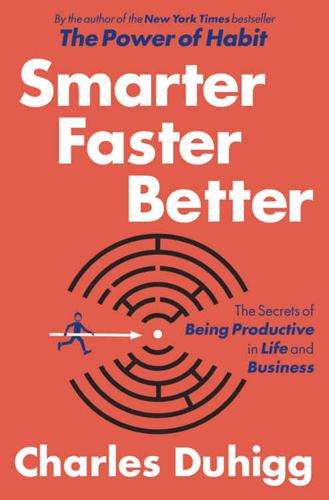
Smarter Faster Better: The Secrets of Being Productive in Life and Business
by
Charles Duhigg
Published 8 Mar 2016
She waited an hour, drank a glass of water, and threw up again. She couldn’t turn off her anxiety. She couldn’t stop thinking that she was making a mistake, that she didn’t want to be a professor, that she was only doing all this because it had seemed like the safest, most predictable path. She called NYU to postpone her talk. Her fiancé flew to Manhattan and took her back to Philadelphia, where she checked into a hospital. She was discharged weeks later, but even then her anxiety was like a hot stone in her stomach. She went straight from the hospital to a classroom at Penn where she was supposed to teach and somehow made it through the lecture, so nauseous and jumpy she almost fainted.
…
The process of creating disfluency can be as minor as forcing ourselves to compare a few pages on a menu, or as big as building a spreadsheet to calculate 401(k) payouts. But regardless of the intensity of the effort, the underlying cognitive activity is the same: We are taking a mass of information and forcing it through a procedure that makes it easier to digest. “The important step seems to be performing some kind of operation,” said Adam Alter, a professor at NYU who has studied disfluency. “If you make people use a new word in a sentence, they’ll remember it longer. If you make them write down a sentence with the word, they’ll start using it in conversations.” When Alter conducts experiments, he sometimes gives people instructions in a hard-to-read font because, as they struggle to make out the words, they read the text more carefully.
…
Vaughan, “Fortune Favors the Bold (and the Italicized): Effects of Disfluency on Educational Outcomes,” Cognition 118, no. 1 (2011): 111–15; Hyunjin Song and Norbert Schwarz, “Fluency and the Detection of Misleading Questions: Low Processing Fluency Attenuates the Moses Illusion,” Social Cognition 26, no. 6 (2008): 791–99; Anuj K. Shah and Daniel M. Oppenheimer, “Easy Does It: The Role of Fluency in Cue Weighting,” Judgment and Decision Making 2, no. 6 (2007): 371–79. In an email sent in response to fact-checking questions, Adam Alter, a professor at NYU who has studied disfluency, explained disfluency as “the sense of mental difficulty that people experience when they try to process (make sense of) certain pieces of information—complex words; text printed in ornate fonts; text printed against background of a similar color; drawing dimly remembered ideas from memory; struggling to remember a phone number; etc.
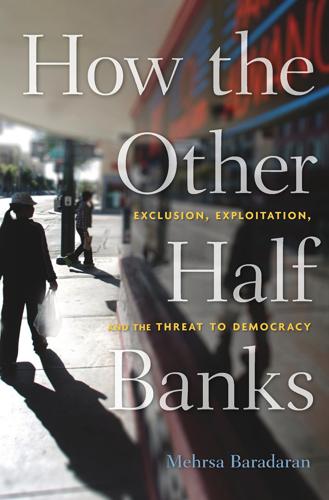
How the Other Half Banks: Exclusion, Exploitation, and the Threat to Democracy
by
Mehrsa Baradaran
Published 5 Oct 2015
Avery, “Payday Loans versus Pawnshops: The Effects of Loan Fee Limits on Household Use,” Board of Governors of the Federal Reserve System, May 13, 2011, accessed March 18, 2015, www.frbsf.org/community-development/files/2-avery-paper.pdf. 135. Ibid. See also Aaron Gold, “Payday Lending: Grounding the Policy Debate through Economic Analysis” (thesis, NYU Stern School of Business, 2009), 12–15, accessed March 18, 2015, www.stern.nyu.edu/sites/default/files/assets/documents/con_043130.pdf. 136. Ben S. Bernanke, “Nonmonetary Effects of the Financial Crisis in the Propagation of the Great Depression,” American Economic Review 73, no. 3 (1983): 263, accessed March 18, 2015, www.jstor.org/stable/1808111. 5.
…
Michael Bordo et al., “Is the Crisis Problem Growing More Severe?,” Economic Policy 32 (2001): 53–82. 133. See, e.g., Richard A. Posner, A Failure of Capitalism: The Crisis of ’08 and the Descent into Depression 45–46 (2009); Brian J. M. Quinn, The Failure of Private Ordering and the Financial Crisis of 2008, 5 N.Y.U. J.L. and Bus. (2009) 549, 555 (arguing that a root cause of the financial crisis of 2008 was “financial innovation and the corresponding long-term move towards liberalization and self-regulation”). 134. Johnson and Kwak, 13 Bankers, 162. 135. Ibid., 168. 136. Ibid., 164. 3. BANKS WITH A SOUL 1.
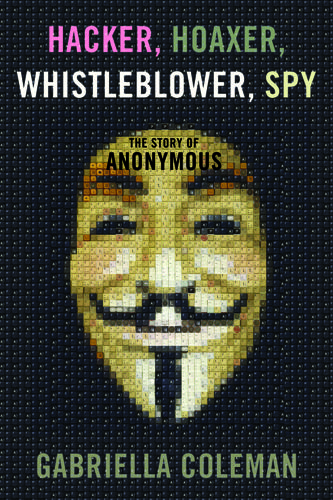
Hacker, Hoaxer, Whistleblower, Spy: The Story of Anonymous
by
Gabriella Coleman
Published 4 Nov 2014
You might get “zlined” or “qlined,” actions that operators can take to permanently ban your IP address from the entire server, which would mean that I would get removed from all channels at once. Thankfully, that is not what they had in mind. It turns out that they didn’t ban me from reentering the channel. And so ten minutes later, racked by anxiety, I logged back on: biella: hello q Topiary biella: sorry about that i was away cooking biella: this is me biella: http://steinhardt.nyu.edu/faculty_bios/view/Gabriella_Coleman biella: i have referred many reporters here biella: and am writing/presenting on Anonymous They responded immediately: Topiary: Hi biella, apologies for the kick. biella: no it is ok biella: you gave fair warning :-) and i have been too too idle biella: more than i would like Topiary: We’re just usually very strict and sometimes a little paranoid of unidentified users in here. […] Topiary: I liked what I read in your link.
…
I spoke with the founding partner of a venture capitalist firm in New York City, the head of European security for Vodaphone, and a senior vice president from TTI/Vanguard (self-described as “a unique forum for senior-level executives that links strategic technology planning to business success.”) I gave two talks (one virtual) for an NYU global risk and security group that included chief security officers (CSOs) and other executives from major corporations, and I also gave a talk at an event run by “World 50,” an organization that convenes events for senior-most executives from mostly Fortune 500 companies. The list would be incomplete without mentioning my 2012 talk at TED Global in Edinburgh, Scotland.
…
Informant Is Tied to Cyberattacks Abroad,” nytimes, April 23, 2014. 30. Daniel Stuckey and Andrew Blake, “Exclusive: How FBI Informant Sabu Helped Anonymous Hack Brazil,” motherboard.vice.com, June 5, 2014. 31. Alexandra Natapoff, Snitching: Criminal Informants and the Erosion of American Justice (New York: NYU Press, 2011), 44. 32. Lee Romney, “Pressured to Name Names,” latimes.com, Aug. 7, 2006. 33. Adam Goldman, “Lawsuit alleges FBI is using no-fly list to force Muslims to become informants,” washingtonpost.com, April 22, 2014. 34. “Notes on Sabu arrest,” Errata Security, March 6, 2013, last accessed July 1, 2014, available at http://blog.erratasec.com/2012/03/notes-on-sabu-arrest.html#.U64Kjx_7Gb8. 35.
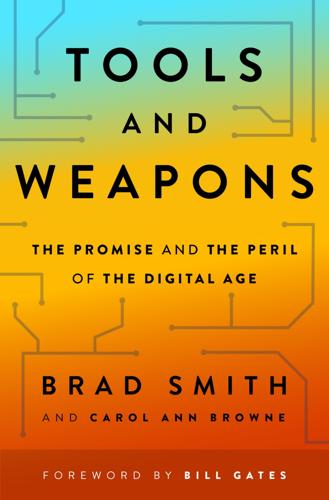
Tools and Weapons: The Promise and the Peril of the Digital Age
by
Brad Smith
and
Carol Ann Browne
Published 9 Sep 2019
Led by Michael Posner, one of the most respected human rights lawyers globally, the center focuses on the intersection of business and human rights, often by advancing pragmatic steps for companies to better address these challenges in their core operations. NYU Stern, “The NYU Stern Center for Business and Human Rights,” https://www.stern.nyu.edu/experience-stern/about/departments-centers-initiatives/centers-of-research/business-and-human-rights. Back to note reference 16. He Huaihong, Social Ethics in a Changing China: Moral Decay or Ethical Awakening? (Washington, DC: Brookings Institution Press, 2015).
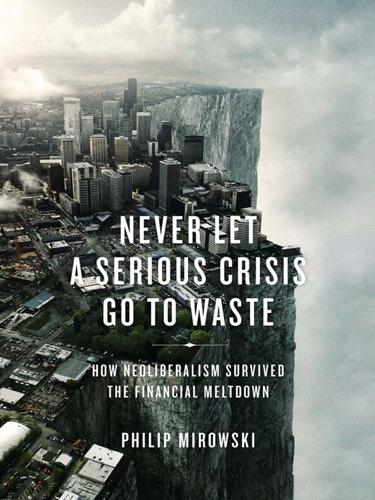
Never Let a Serious Crisis Go to Waste: How Neoliberalism Survived the Financial Meltdown
by
Philip Mirowski
Published 24 Jun 2013
See Mont Pèlerin Society (MPS) Mulligan, Casey Mundell, Robert Murdoch, Rupert Murketing MySpace Myth of the Rational Market (Fox) N NAFTA (North American Free Trade Agreement) Nassirian, Barmak National Academy National Bureau of Economic Research (NBER) National Economic Council National Health Service National Income and Product Accounts National Institutes of Health National Public Radio (NPR) National Science Foundation (NSF) National Transportation and Safety Board NBER (National Bureau of Economic Research) Neoclassical econimics as empty Neoclassical economists Neoliberal Ascendancy Neoliberal Follies Neoliberal Thought Collective (NTC) about on agency bolstering of connection between economics profession and “conservatism,” “constructivism” in core insight of on crime current topography of defense mechanisms of doctrines for on economic crisis emergency executive committee meeting on equality exercising hostility toward federal government and Federal Reserve on Fannie Mae and Freddie Mac Foucault on on freedom Friedman on function of geoengineering and “good society,” major ambition of membership of on neuroenhancers normalization of everyday sadism orthodox macroeconomics and parallels between Seekers and persistence of on personhood political mobilizations of Radin on on “risk,” Russian doll structure of sociological structure of success stories think tanks affiliated with Thirteen Commandments writings of members of Neoliberalism Alternatives to Crisis response Defined Distinguished from neoclassical econimics Left epithet Premature obituaries for Netflix New Age New Deal New Disrespect New Economic Thinking New Industrial State (Galbraith) “New Keynesianism,” New Keynesians model New Knowledge Economy New Labour New Orthodox Seer New Right New Statesman New York Federal Reserve Bank New York Review of Books New York Times New York University (NYU) New Yorker Newbery, David on “investments,” News Corporation Newshour Newsnight Newsweek Nietzsche, Friedrich “The Night they Re-read Minsky,” Nik-Khah, Edward Nine Lives of Neoliberalism Nobel Prize Nobelists Nocera, Joe Nolan, Christopher A Non-Random Walk Down Wall Street (Lo and MacKinley) Northern Rock Nostradamus Codex Notre Dame, University of NPR (National Public Radio) NSF (National Science Foundation) NTC. See Neoliberal Thought Collective (NTC) Nugent, Ted NYU (New York University) O Obama, Barack Occam’s Razor Occupiers Occupy Handbook Occupy London Occupy Movement Occupy Wall Street (OWS) Odyssey (Homer) Old Thinking Oldham, Taki, Turf Wars Open questions Open Society The Open Society and Its Enemies (Popper) Oracle at Delphi Ordoliberalism Oreskes, Naomi Original Sin O’Rourke, Kevin Orszag, Peter Orwell, George Osborne, George Outsourced Self (Hochschild) OWS (Occupy Wall Street) P Page, Scott Palin, Sarah Pareto, Vilfredo Patterson, Scott, Dark Pools Paul, Ron Paulson, Hank Payday loans Payne, Christopher PBS Peck, Jamie Pecora, Ferdinand Perry, Rick Pesaran, Hashem Pew Economic Policy Group Financial Reform Project Philip Morris Phillips Curve Philosopher’s Stone Pimco Pinochet, Augusto Pinto, Edward Pissarides, Christopher Pity the Billionaire (Frank) Plant, Raymond Plato Plehwe, Dieter Ponzi scheme Poon, Martha Popper, Karl Portes, Richard Posner, Richard Power Auctions Predator Nation (Ferguson) Prediction as red herring Prescott, Edward C.
…
Elsewhere, the Stanford economist Gregory Rosston was quoted as saying, “I don’t think (recent events are) necessarily a repudiation of the Chicago School of economics as personified by Alan Greenspan, but it definitely shows there is some role for regulation in society.” Actually, all that was revealed was the unabashed ignorance of history on the part of Rosston, since Alan Greenspan was never a member in good standing of the Chicago School, but rather an acolyte of the Ayn Rand cult, who had been awarded a belated PhD by NYU in 1977 after serving as chairman of the Council of Economic Advisors under Gerald Ford, and who subsequently parlayed numerous right-wing political connections into elevation to his position as chairman of the Federal Reserve from 1987 to 2006. The fact that such an extreme outsider and ersatz economist could have risen to such a pinnacle of prominence was itself testimony to the hold of neoliberals on power, a fact that could never quite sink in for the American news media.15 Everyone likes a good catfight, and if that’s all there had been to it, then this entire episode could be left to some future cultural historian.
…
There are, of course, still economists—probably fewer than before—who believe in that world. But it is an extreme position and not one likely to be held by those who understand the papers we’re talking about.24 Of course, the unstated lesson was that no one possessing a gold-plated Ivy union card (Greenspan was awarded a belated PhD by NYU in 1977) who acknowledged the “best journals” as revealed doctrine was caught unawares by the crisis. This whole quest to identify the predictive elect among the economists was therefore very rapidly driven to Bedlam, partly because it was so mendacious, but also because it twisted the meaning of predictive success beyond all recognition.
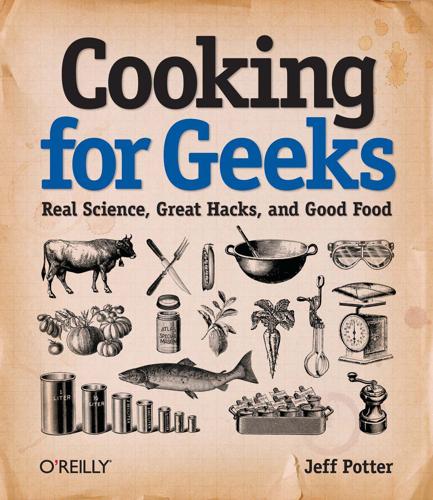
Cooking for Geeks
by
Jeff Potter
Published 2 Aug 2010
In addition to the following two recipes, consider revisiting the Salmon Gravlax recipe from earlier in this chapter (see Salmon Gravlax) and adding liquid smoke to give it a cold-smoked flavor. S’mores Ice Cream This recipe uses liquid smoke to impart the toasted flavor of campfire-roasted marshmallows. The concept was inspired by a demo by Kent Kirshenbaum of NYU’s Experimental Cuisine Collective. You’ll need a standard ice cream mixer, or you can go all-out geek and either make your own (see DIY Lego Ice Cream Maker in Chapter 3) or use liquid nitrogen or dry ice. For the latter options, see the instructions in Making ice cream in Chapter 7. To create the base, combine in a mixing bowl: 2 cups (475g) whole milk 1 cup (238g) heavy cream ⅓ cup (75g) sugar ¼ cup (75g) chocolate syrup ¾ cup (25g) medium-sized marshmallows 15 drops (0.75g) liquid smoke Proceed with the directions for your chosen method of making ice cream.
…
Making your own liquid smoke can be a little tricky because of the high heat required to properly burn the lignins and the difficulty in correctly capturing the resulting lignin-based compounds, not to mention the need for proper chemistry lab equipment for creating a closed system and heating it safely. Kent Kirshenbaum demonstrates making liquid smoke during a talk at NYU’s Experimental Cuisine Collective (see http://www.experimentalcuisine.org). Here, he burns hickory chips using a propane blowtorch. The smoke is then piped through a water flask (on right), which traps the water-soluble particulate in suspension. Start by placing wood chips—either hickory or cedar—into a vessel that can be sealed (to create a closed system) and heated with a burner or blow torch.

Architects of Intelligence
by
Martin Ford
Published 16 Nov 2018
YANN LECUN A human can learn to drive a car in 15 hours of training without crashing into anything. If you want to use the current reinforcement learning methods to train a car to drive itself, the machine will have to drive off cliffs 10,000 times before it figures out how not to do that. VP & CHIEF AI SCIENTIST, FACEBOOK PROFESSOR OF COMPUTER SCIENCE, NYU Yann LeCun has been involved in the academic and industry side of AI and Machine Learning for over 30 years. Prior to joining Facebook, Yann worked at AT&T’s Bell Labs, where he is credited with developing convolutional neural networks—a machine learning architecture inspired by the brain’s visual cortex.
…
GARY MARCUS It’s not clear to me that you get to the accuracy levels you need for driving in Manhattan simply by adding more data to these big data-driven systems. You might get to 99.99% accuracy, but if you do the numbers on that, that’s much worse than humans. FOUNDER AND CEO, GEOMETRIC INTELLIGENCE (ACQUIRED BY UBER) PROFESSOR OF PSYCHOLOGY AND NEURAL SCIENCE, NYU Gary Marcus was Founder and CEO of Geometric Intelligence, a machine learning company acquired by Uber, and is a professor of psychology and neural science at New York University, as well as the author and editor of several books, including The Future of the Brain and the bestseller Guitar Zero. Much of Gary’s research has focused on understanding how children learn and assimilate language.
…
I finished my undergraduate degree and got married in 1960. I came to the US with the idea of doing graduate work, getting my PhD, and going back. MARTIN FORD: You mean you planned to go back to Israel? JUDEA PEARL: Yes, my plan was to get a degree and come back to Israel. I first registered at the Brooklyn Polytechnic Institute (now part of NYU), which was one of the top schools in microwave communication at the time. However, I couldn’t afford the tuition, I ended up employed at the David Sarnoff Research Center at the RCA laboratory in Princeton, New Jersey. There, I was a member of the computer memory group under Dr. Jan Rajchman, which was a hardware-oriented group.
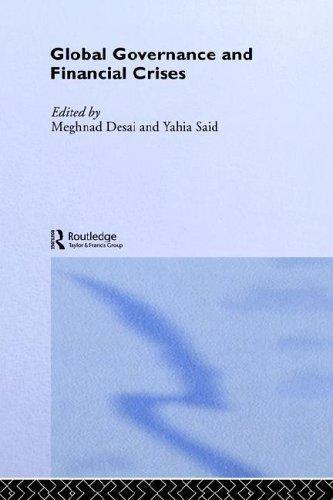
Global Governance and Financial Crises
by
Meghnad Desai
and
Yahia Said
Published 12 Nov 2003
Pasuk P. (2000) ‘Beyond crisis: changes, fears, futures’, Processed, Faculty of Economics, Chulalongkorn University, Bangkok. Radelet, S. and Sachs, J. (1998) ‘The onset of the East Asian financial crisis’, paper prepared for the NBER Currency Crisis Conference, February 6–7. NBER Working Paper Series, No. 6680, Cambridge. [www.stern.nyu.edu/~nroubini/asia/]. Raghavan, C. (1998) ‘BIS banks kept shovelling funds to Asia, despite warnings’, Third World Economics, 16–31 January. Rasiah, R. (1998) ‘The Malaysian financial crisis: capital expansion, cronyism and contraction’, Journal of Asia Pacific Economy, 3(3): 358–378. Restall, H. (2000) ‘Bombard the boardrooms’, Asian Wall Street Journal, 27 September.
…
Of the three paths to financial crisis discussed in this chapter, the Argentinean one is closer to that of Mexico. 2 Among the large literature on the role of ‘moral hazards’ in financial crises, probably the best exposition is that of McKinnon and Pill (1997). Literature related to most of these issues can be found at http://www.stern.nyu.edu/~nroubini/asia/ AsiaHomepage.html 3 For the Colombian experience, see especially Ocampo and Tovar (1999), and Ocampo (2000). 4 Of course, one has to remember that it is not really all ‘foreign’; in some cases domestic capital leaves only to return again as ‘foreign’, to enjoy benefits! 5 A related problem is that the LDC-exposure of these institutional investors was proportionally so small, that often they (wrongly) believed that it did not pay to invest properly in information about these LDCs; so, normal problems of ‘asymmetric’ information were exacerbated. 6 For the extraordinary case of the LTCM, described by the Washington Post as ‘the biggest financial misstep ever to hit Wall Street’, or by the Financial Times as ‘the fund that thought it was too smart to fail’, see especially Dunbar (2000).

Frommer's New York City Day by Day
by
Hilary Davidson
Published 6 Jan 2006
In its original location at 24 University Place (it moved up the street in 1963), this bar was frequented by Edna St. Vincent Millay, Theodore Dreiser, and Jack Kerouac and immortalized by satirist Dawn Powell in her novel The Golden Spur. Poke your head in to admire the dark, woody bar and the pressed tin ceiling. NYU students and locals outnumber literati these days. The Washington Square Arch. Along 41st Street between Park and Fifth, you’ll see bronze plaques embedded in the sidewalk. There are 96 in total, and all feature quotations from literature or poetry. Walking west along this street leads you to the New York Public Library. 41st St.
…
DENTISTS If you have dental problems, a nationwide referral service known as 1-800-DENTIST (y 800/ 336-8478) will provide the name of a nearby dentist or clinic. DINING With a few exceptions at the high-end of the scale, dining attire is fairly casual. It’s a good idea to make reservations in advance if you plan on eating between 7 and 9pm. DOCTORS The NYU Downtown Hospital offers physician referrals at y 888/698-3362. ELECTRICITY Like Canada, the United States uses 110 to 120 volts AC (60 cycles), compared to 220 to 240 volts AC (50 cycles) in most of Europe, Australia, and New Zealand. 14_579312 savvy.qxd 10/11/05 6:35 PM Page 166 The Savvy Traveler 166 The International Gay & Lesbian Travel Association (IGLTA) (y 800/4488550 or 954/776-2626; www.iglta. org) is the trade association for the gay and lesbian travel industry, and offers an online directory of gayand lesbian-friendly travel businesses.
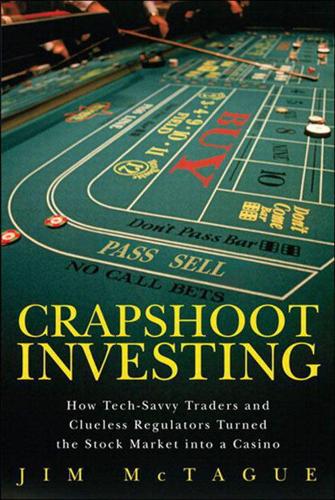
Crapshoot Investing: How Tech-Savvy Traders and Clueless Regulators Turned the Stock Market Into a Casino
by
Jim McTague
Published 1 Mar 2011
Arnuk, who grew up in Brooklyn’s Bay Ridge section, had a BA in finance from SUNY Binghamton University; and Saluzzi, who hailed from the Sheepshead Bay neighborhood, had a BA in finance from NYU. After a few years at the prestigious firm, they both concluded independently that to advance in the world of finance, they’d have to obtain graduate degrees. So they both left Morgan Stanley to enroll in MBA programs. Arnuk started attending the Stern School of Business at NYU part time; and Saluzzi resigned a few months later to attend the Kenan-Flagler Business School of the University of North Carolina. Arnuk graduated in 1991, and Saluzzi in 1993.
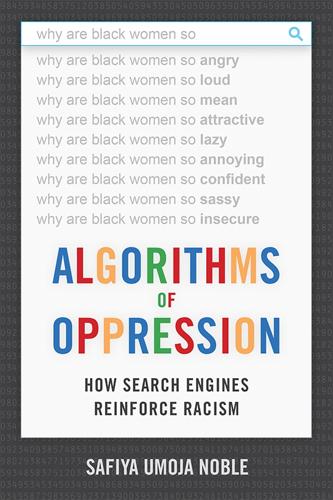
Algorithms of Oppression: How Search Engines Reinforce Racism
by
Safiya Umoja Noble
Published 8 Jan 2018
Influence of Television Commercials on Women’s Self-Confidence and Independent Judgment. Journal of Personality and Social Psychology, 38(2), 203–210. doi:10.1037/0022–3514.38.2.203. Jensen, R. (2005). The Heart of Whiteness: Confronting Race, Racism, and White Privilege. San Francisco: City Lights. Jones, M. L. (2016). Ctrl+Z: The Right to Be Forgotten. New York: NYU Press. Kang, J. (2000). Cyber-race. Harvard Law Review, 113, 1130–1208. Kappeler, S. (1986). The Pornography of Representation. Minneapolis: University of Minnesota Press. Kellner, D. (1995). Intellectuals and New Technologies. Media, Culture and Society, 17, 427–448. Kendall, L. (2002). Hanging Out in the Virtual Pub: Masculinities and Relationships Online.
…
Falling through the Net: Defining the Digital Divide. Retrieved from www.ntia.doc.gov/report/1999/falling-through-net-defining-digital-divide. National Urban League. (2010). State of Black America Report. Retrieved from www.nul.org. Nelson, A., Tu, T. L. N., and Hines, A. H. (2001). Technicolor: Race, Technology, and Everyday Life. New York: NYU Press. Neville, H., Coleman, N., Falconer, J. W., and Holmes, D. (2005). Color-Blind Racial Ideology and Psychological False Consciousness among African Americans. Journal of Black Psychology, 31(1), 27–45. doi:10.1177/0095798404268287. Newport, F. (2007, September 28). Black or African American?
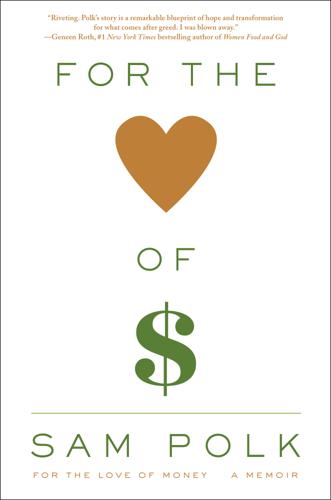
For the Love of Money: A Memoir
by
Sam Polk
Published 18 Jul 2016
CHAPTER 16 The Fulcrum ¤ Four weeks into my internship, Jared and I had become close, some of the traders—Greco, Jory, Hinton—seemed to like me, and I’d received several compliments on my work ethic. Sloane had gotten a waitressing job at the trendy Soho House and was taking a summer class at NYU. That Friday, after work, I was so exhausted that I went home and climbed straight into bed. I spent all of Saturday on my couch, watching TV and smoking weed. The next day, Sunday, July 22, 2002, my high school friend Nate Robertson was in town, and he invited me to play in a softball game in Central Park.
…
Bruce Springsteen had released The Rising that summer, and I turned it up on the stereo. I stayed up all night, sitting on the couch, smoking cigarettes, staring into nothing. By sunrise I was dizzy. The heartache throbbed. I had to be at work in a few hours, but that seemed impossible. The only thing that could make the pain stop was getting Sloane back. I walked over to the NYU building where she had rented a room. I took a seat on the curb and hunched forward with my arms wrapped around myself. A woman walking by asked if I was okay. I nodded, turned away. I waited for over an hour. Finally Sloane came out, wearing a black dress for her waitressing job at Soho House.
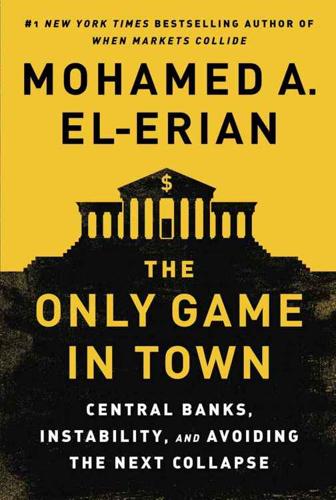
The Only Game in Town: Central Banks, Instability, and Avoiding the Next Collapse
by
Mohamed A. El-Erian
Published 26 Jan 2016
A masterful account of how central banks became the only game in town after the global financial crisis but also how other structural and fiscal policies are necessary to resolve key global economic issues. El-Erian is the best thinker on the key global issues of our times.” —Nouriel Roubini, chairman, Roubini Global Economics and professor of economics, Stern School of Business, NYU “Mohamed El-Erian knows the global economy as an investor, a public servant, and an analyst with a rare ability to grasp its essentials. He has an urgent message to convey here: Central banks cannot [continue to] carry the global economy on their backs for much longer without a high risk of a very bad global outcome.
…
And fourth, he argues persuasively that this is a journey we cannot continue; that we will break either right to a much superior level and quality of growth, or left to declining performance and rising instability. He then suggests mind-sets that will help everyone—policymakers, and the rest of us—navigate this complex and uncharted territory. It is a tour de force.” —Michael Spence, Nobel Laureate and professor of economics, Stern School of Business, NYU Copyright © 2016 by Mohamed A. El-Erian All rights reserved. Published in the United States by Random House, an imprint and division of Penguin Random House LLC, New York. RANDOM HOUSE and the HOUSE colophon are registered trademarks of Penguin Random House LLC. ISBN 9780812997620 eBook ISBN 9780812997637 randomhousebooks.com Book design by Christopher M.
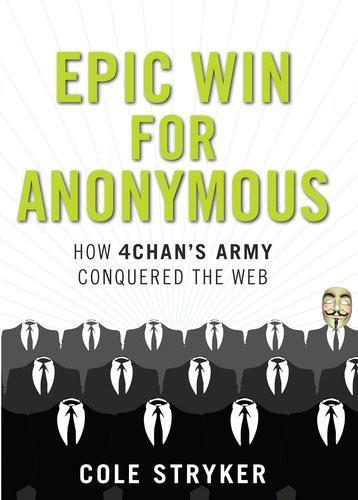
Epic Win for Anonymous: How 4chan's Army Conquered the Web
by
Cole Stryker
Published 14 Jun 2011
You can’t last ten minutes on /b/ without coming across a thread devoted to gay porn or cute boys or even friendly, accommodating discussion about the homosexual lifestyle. Whereas, the US seems to have gotten over its fear of racial minorities to a much larger degree than its fear of gays. I believe, along with writer and NYU professor Clay Shirky, that this is because gays are members of every community. There is no explicit gay-straight segregation, at least not in the Western world, yet there are still miles and miles of geography that contain people of only one race. When the people from these areas come face to face with people of other races on places like 4chan, it can get ugly.
…
Gawker. Last modified September 12, 2010. http://gawker.com/5636011/stupid-california-police-warn-parents-of-pedobear-the-pedophile-mascot. Coleman, Gabriella. “Phreaks, Hackers, and Trolls and the Politics of Transgression and Spectacle.” In The Social Media Reader, ed. Michael Mandiberg. New York: NYU Press, forthcoming. Coleman, Gabriella. Interview with the author. May 14, 2011. Curtis, Drew. Interview with the author. May 4, 2011. Dawkins, Richard. The Selfish Gene. Oxford: Oxford University Press, 1976. Dawkins, Richard. Interview with the National Public Radio. August 30, 2010. http://www.npr.org/templates/transcript/transcript.php?
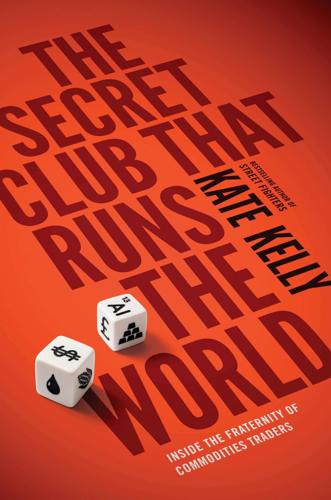
The Secret Club That Runs the World: Inside the Fraternity of Commodity Traders
by
Kate Kelly
Published 2 Jun 2014
“I am not the smart one in my family,” Fan says matter-of-factly. Her sister later worked at Amazon.com devising algorithms to predict how people would shop, a complex equation that had similarities to trading. She spent her free time rock-climbing. By the time she moved to New York for college, where she received an undergraduate degree from NYU’s Stern School of Business, Fan had not yet gotten a driver’s license, but as a young commodity trader in Purchase, she had to learn to drive in order to get from Tribeca, the trendy downtown Manhattan neighborhood where she lived, to Westchester County. In a rare occurrence for the star student, she failed the first driving test by sitting too long at a four-way intersection.
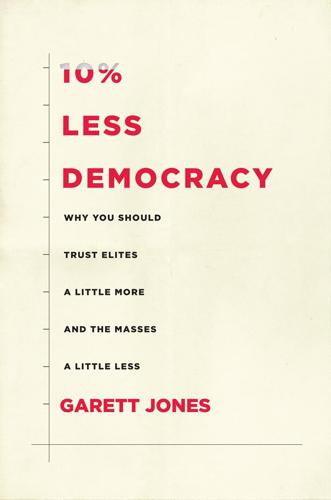
10% Less Democracy: Why You Should Trust Elites a Little More and the Masses a Little Less
by
Garett Jones
Published 4 Feb 2020
When Barro himself checked—in an influential working paper originally published in the mid-1990s—to see if high inflation hurt long-run economic performance, using the same kind of cross-country comparisons widely used in the democracy-and-growth literature, he couldn’t find any robust evidence that inflation hurt economic performance unless inflation was 15% or higher per year.²¹ Below 15%, Barro couldn’t rule out the possibility that inflation was hurting a nation’s economic prospects, but the evidence was—that word again—a muddle. In the Handbook of Economic Growth, NYU’s Easterly concluded in 2005, “The empirical literature on inflation has found that inflation only has a negative effect above some threshold level, although there are disagreements as to where that threshold is.”²² What should a serious, candid, evidence-based thinker conclude? Does inflation hurt only when a nation is given a high, long-run dose of it?
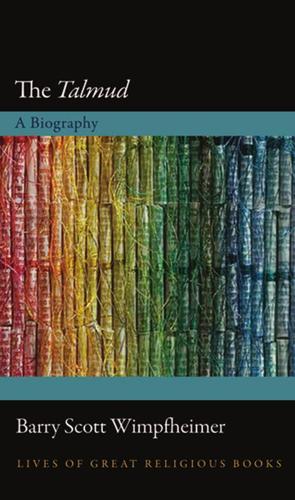
The "Talmud"
by
Wimpfheimer, Barry Scott.
Published 22 Jan 2018
Wilensky, “Hasidic-Mitnaggedic Polemics in the Jewish Communities of Eastern Europe: The Hostile Phase,” in Essential Papers on Hasidism, ed. Gershon David Hundert (New York: NYU Press, 1991), 262. 61. There were groups, such as the Hasidim of Przysucha, who were extremely devoted to the Talmud and halakhah. See Raphael Mahler, “Hasidism and the Jewish Enlightenment,” in Essential Papers in Hasidism, ed. Gershon David Hundert (New York: NYU, 1991), 454. One should distinguish between early and late Hasidism in this regard. By Notes to Chapter 4 275 62. 63. 64. 65. 66. 67. 68. 69. 70. 71. 72. 73. 74. 75. 276 the mid-nineteenth century (ibid., 428) there was a change of heart within Hasidism regarding the Talmud and its study.
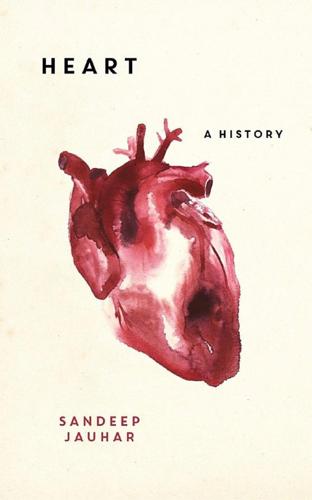
Heart: A History
by
Sandeep Jauhar
Published 17 Sep 2018
But in the months after 9/11, I learned a remarkable corollary to Lown’s observations: not only are arrhythmias triggered by psychological trauma but they (or at least their treatment) can cause it as well. Such stress can then feed back onto the heart, creating a malignantly vicious cycle. The mind-heart link, in other words, goes both ways. One night in November, two months after the attacks, I got to see this up close. • I met Lorraine Flood on a rainy evening in the faculty dining room at NYU Medical Center, where about twenty patients with implantable cardiac defibrillators had assembled for a support-group meeting. In June 1998, eight years after her first heart attack on the eve of her son’s wedding, Flood underwent an hour-long operation to implant a pager-sized defibrillator under the skin of her left chest.
…
Wayne, 68 mind-body interactions, 205 Mines, George, 153, 153–59, 161, 166 Minneapolis, 73, 80, 84, 171 Minneapolis Tribune, 78 Minnesota, 88, 168; University of, 74, 77, 80, 94, 168, 187 Minnesota Medicine, 95 minority groups, 62, 64, 122, 124, 157, 234 Mirowski, Michel, 173–77, 211, 239 misdiagnosis, 94 mitral valve, 69, 88, 193 Montgomery (Alabama), 68 Montreal, 153 morbidity, 138, 168 Morgagni, Giovanni Battista, 58 morphine drip, 197 Morristown (New Jersey), 232, 235–38 mortality rates, 90, 93, 113, 138, 168, 211; for cardiac wounds, 63, 68; reduction in, 96, 130, 157, 238–39 Mountin, Joseph, 117, 118 Mount Zion Hospital (San Francisco), 126 Mower, Morton, 174–75 Müller, Heinrich, 19 multi-organ failure, 193 multivariate analysis, 120 Munch, Edvard, 16 Muslims, 28–29 Mustard, William, 93 myocardial infarctions, see heart attacks/myocardial infarctions myocardial wire, 168–69 myopericarditis, 132–33 Nafis, Ibn al-, 41 National Guard, 202 National Heart Act (1948), 115 National Heart Institute (NHI), 115, 119–20, 123 National Institutes of Health, 87, 115, 117, 123n National Society of Professional Engineers, 171 natural catastrophes, 25–26, 28, 145 natural healers, 147, 165 Nature, 159 nausea, 150, 184, 192 negative affectivity, 127; see also anxiety; depression neuroscience, 53, 124, 231, 240 New Delhi (India), 9, 243 New England Journal of Medicine, 176, 232, 239 New York City, 51, 63, 64, 161, 234–35; hospitals in, 109, 207 (see also Bellevue Hospital); 9/11 terrorist attack on, 3, 201–205, 207, 210, 216–17 New York Times, 78, 84, 194 nightmares, 210, 219–21, 223–24 Niigata Prefecture (Japan), 25–26 9/11 terrorist attack, 3, 201–205, 207, 210, 216–17 nitroglycerin, 4 Nixon, Richard M., 121 Nobel Prize, 76, 205; in Physiology and Medicine, 109–10, 134 Normandy, landing of Allied troops in, 114 North Dakota, 69, 88, 97, 221 Northwestern University Medical School, 62 Null, Gary, 147, 149, 165 nutraceuticals, 148, 163, 181 Nyström, Gunnar, 90 NYU Medical Center (New York City), 207 obesity, 237, 238 O’Connor, Flannery, 69 “On Dynamic Equilibrium in the Heart” (Mines), 158 “On the Nature of Turbulence” (Ruelle and Takens), 160n open-heart surgery, 34, 61, 65, 76, 85, 136, 187; alternatives to, 142, 242; with cross-circulation, 80, 168; with heart-lung machines, 94–96 Oregon, University of, 138 organ harvesting, 187–88 organ rejection, 186, 188 Ornish, Dean, 231–32, 235–38 “Oroya fever,” 105 Oscar Mayer Company, 121 oscilloscopes, 17, 19, 139 Osler, William, 70, 84, 98, 131, 133; Harveian Oration of, 46 oxygenation, 73–74, 86, 91, 93–94 pacemakers, 34, 53, 130, 167–71, 173, 176, 230; external, 167, 190; natural, 151–52, 152 Padua, University of, 42, 43 Pagenstecher, Sanitatsrath, 67–68 pain, 9, 22, 113, 139, 141, 147, 196–97, 227; absence of response to, 188; chest, 24–25, 54, 114, 131–33, 164, 204, 224; of implanted defibrillator shocks, 208, 210, 212, 214 Pakistan, 28 palpitations, 210; see also arrhythmias; ventricular fibrillation parasympathetic nervous system, 30–31, 59, 106 Parkinson’s disease, 221–23 Pavlovian response, 209 Pearl Harbor, Japanese bombing of, 114 Pearson, Karl, 23 Pennsylvania, 94; University of, 124 pericarditis, 132–33 pericardium, 56, 60, 62–65, 72, 242 Persia, 41 Peru, 105 Peter Bent Brigham Hospital (Boston), 90n “phantom shock,” 208 Philadelphia, 73, 86, 163 physical activity, see exercise placebo effect, 148 Plainview Hospital (Plainview, New York), 224 plaque, 110, 133, 177, 231–33, 236, 242; atherosclerotic, 37, 42, 118, 129, 134, 221; visualization of, 4–5, 113, 121, 137, 142 platelets, 37 Plato, 38 pneumonia, 77, 84, 193 Poland, 173–74 Popper, Karl, 148 post-traumatic stress disorder, 207, 210, 213 potassium, 72–73, 97 Prague, 138 precordial thumps, 138 premature ventricular contractions (PVCs), 206, 233, 241 pressure-volume loops, 129 Prévost, Jean Louis, 171 Princeton University, 89 “Probing the Right Ventricle of the Heart” (Forssmann), 107 Proceedings of the National Academy of Sciences, 160 processed foods, 123 Provident Hospital (Chicago), 61–62 Prussian State Library, 41 psychosocial risk factors, 24, 119–20, 123–25, 129, 231, 236, 240 Public Broadcasting System (PBS), 10 Public Health Service, U.S., 115, 117, 118 pulmonary embolectomy, 89–90 pulmonary function tests, 3 pulse deficit, 55 “pump head,” 96 Punjab (India), 9, 28, 34, 129 quality-of-life issues, 125, 237 radio-frequency ablative procedure, 52, 211, 217 Radio Shack, 147 rapamycin, 144 rapid eye movement (REM) sleep, 221 Reconstruction, 62 “reentry,” 154, 154–59, 161 reflex arc, 53 refractory period, 151–55, 159 Rehn, Ludwig, 65–68, 77 REM sleep, see rapid eye movement (REM) sleep Renaissance, 20, 41 respiratory failure, 193 restitution, 160 resuscitation, see cardiopulmonary resuscitation Richards, Dickinson, 99, 109 Richter, Curt, 30–31, 59, 214 Richter scale, 25 risk factors, 4, 54, 132, 232, 233, 240; epidemiology of, see Framingham study; ethnic differences in, 122–24, 233–234; psychosocial, 24, 119, 123, 124, 127–30, 206; of heart attack survivors, 176, 211–12, 237, 239 Roberts, John Bingham, 63 Rohman, Michael, 97 Roman Catholic Church, 22 Roman Empire, 40 romantic love, heart as locus of, 21 Rome, 42 Romeis, Peter, 105, 107 Roosevelt, Franklin Delano, 114–15, 117, 120 Rosenman, Ray, 126–27 Ross, Donald, 85 Royal Infirmary (Edinburgh), 137 Ruelle, David, 160n Russia, 118 Sacred Heart of Jesus, 22 St.
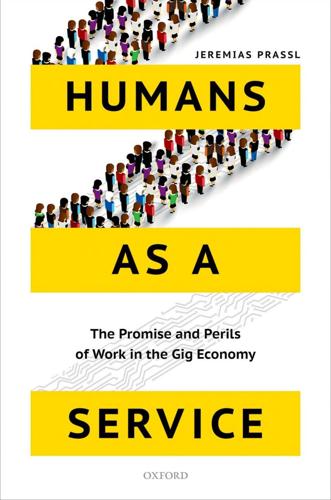
Humans as a Service: The Promise and Perils of Work in the Gig Economy
by
Jeremias Prassl
Published 7 May 2018
For this to occur in the UK in 2016 is a serious indictment of the management at Sports Direct.33 Contrast this with the announcement, just over a year earlier, that US Repre- sentatives Eric Swalwell (Democrat) and Darrell Issa (Republican) had launched a ‘bipartisan Sharing Economy Caucus, which will bring attention to this booming sector and its impact on our society and economy’.34 The Californian Representatives were joined at the launch event by a range of industry lobbyists and experts, including Arun Sundararajan of NYU’s Stern School of Business, and David Estrada, Lyft’s Vice President for Government Relations. Their conclusions? This Caucus will explore the opportunities made possible by the sharing model, and how Congress can foster innovation and address challenges posed by this emerging sector . . . Americans increasingly rely on the sorts of innova- tive services the internet has made possible—services that bring Americans together while providing a new measure of convenience by providing oppor- tunities to conduct business in more efficient ways . . .
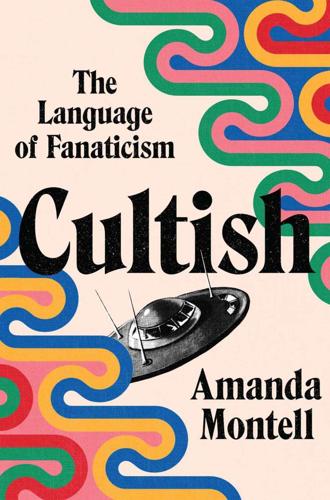
Cultish: The Language of Fanaticism
by
Amanda Montell
Published 14 Jun 2021
My favorite story to tell is the one about how I got kidnapped by the Scientologists. I was nineteen years old, spending a lonely summer in Los Angeles with a crappy part-time job, a mild depression, and not much I could bring myself to do except pal around with the one person I knew in town: an aspiring young actress named Mani. We’d met freshman year at NYU. Mani was living in the Valley while on break from school, sharing an apartment with her mom and kid sister, auditioning for commercials and starring in USC student films. Mani was spellbinding: She had long blond hair and catlike Ukrainian features, wore baggy T-shirts with fishnets, and owned a pet snake.
…
She is the author of the critically acclaimed Wordslut: A Feminist Guide to Taking Back the English Language, which she is developing for television with FX. Her writing has appeared in Marie Claire, Cosmopolitan, Glamour, The Rumpus, Nylon, Byrdie, and Who What Wear, where she formerly served as the features and beauty editor. Amanda holds a degree in linguistics from NYU and lives in Los Angeles’ Silver Lake neighborhood with her partner, plants, and pets. Discover great authors, exclusive offers, and more at hc.com. Also by Amanda Montell Wordslut: A Feminist Guide to Taking Back the English Language Copyright CULTISH. Copyright © 2021 by Amanda Montell.

Advertisers at Work
by
Tracy Tuten
Published 28 May 2012
You know, it’s about knowing your craft, knowing the history in a way that’s important to what we do today because it does matter, and then understanding that there’s always going to be a new challenge. We can learn a lot from Martin Scorsese. Here’s a man at nearly the age of seventy who tackled his first children’s film, his first 3D feature [Hugo], and a lot of other new creative work with the same passion and intensity that he tackled his student work at NYU. In some ways, meeting and getting to know Scorsese represents another one of those series of connected points in my journey. A lot of my personal attraction to New York and my love of the city first started with his films. From that story I told you about the Staten Island ferry to right now, meeting him connects more points on my path.
…
His curiosities then pulled him into advertising, where he worked as a full-time and freelance creative for award-winning traditional and digital agencies like McKinney, R/GA, Wieden+Kennedy, and BBDO. He has worked on global brands such as Nike, Audi, Starbucks, HBO, Smirnoff, and Heineken. O’Hara Theisen then attended Duke University’s Center for Documentary Studies and eventually moved on to a directing program at New York University (NYU), where he met his sidekick Jonathan Rosen. O’Hara Theisen’s work has garnered him awards from the Cannes International Advertising Festival, the One Show, the One Show Interactive, the International Andys, and the London International Advertising Awards. He’s also been profiled in Communication Arts, Contagious Magazine, the New York Times, CNN, and NPR’s The State of Things.
…
Ryan and I both came from traditional creative shops. Most of my career has been overseas, and Ryan’s been mostly in North Carolina and New York. We met in film school. We both started film school for the same reason—because we were both kind of burned out from traditional advertising. We did the summer directors program at NYU and probably worked harder than we’ve ever worked in the industry before. And that’s saying a lot considering how much we had worked in the industry. But the work was so fulfilling because film school was helping us to realize our passion. Film school was amazing. During that time, we made some great films, and I went back to Australia.
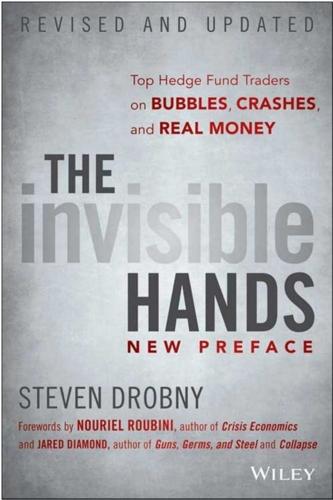
The Invisible Hands: Top Hedge Fund Traders on Bubbles, Crashes, and Real Money
by
Steven Drobny
Published 18 Mar 2010
The largest U.S. pension fund, the California Public Employees’ Retirement System (CalPERS), for example, had a maximum allocation to equities of 25 percent, which was eventually lifted in 1984. Figure 1.3 U.S. Stocks and Bonds, 1970s SOURCE: Bloomberg; U.S. Bureau of Labor Statistics, http://www.bls.gov/CPI/; and Damodaran Online, http://pages.stern.nyu.edu/~adamodar/. The 60-40 Model and the Great Moderation Through the 1980s and 1990s, pensions continued to shift their assets out of bonds and into stocks, ultimately moving toward the now ubiquitous 60-40 policy portfolio (60 percent in stocks and 40 percent in bonds, often domestic only).
…
Further, from 1900-2000, equities and bonds in the United States have generated almost identical nominal returns on a risk-adjusted basis, with bonds slightly outperforming. Table 1.3 U.S. Equities and U.S. Government Bonds, Annualized Returns and Volatility through October 2009 SOURCE: Bloomberg; and Damodaran Online, http://pages.stern.nyu.edu/~adamodar/. Second, 2008 was a reminder that valuation matters. Part of the success of Yale and Harvard could be attributed to their recognition two decades ago that illiquid assets were cheap. As early entrants, they were able to benefit from the increased valuations of illiquids as followers drove up prices.
…
Commodity Research Bureau—CRB. Retrieved data from CRB Indexes, www.crbtrader.com, 2009. Crippen, Alex. “CNBC Transcript: Warren Buffett & Bill Gates—Keeping America Great.” CNBC Inc., November 13, 2009. Damodaran, Aswath. “Historical Returns on Stocks, Bonds and Bills—United States.” Data Sets, pages.stern.nyu.edu/~adamodar, 2008. Dear, Joseph. Meeting with Steven Drobny. September 17, 2009. Denmark, Frances, and Julie Segal. “Lessons Learned: Colleges Lose Billions in Endowments.” Institutional Investor, November 2009. Dimson, Elroy, Paul Marsh, and Mike Staunton. Triumph of the Optimists: 101 Years of Global Investment Returns.
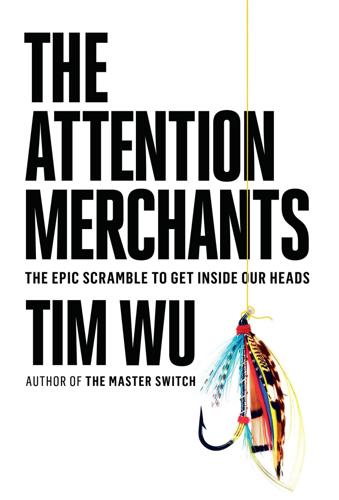
The Attention Merchants: The Epic Scramble to Get Inside Our Heads
by
Tim Wu
Published 14 May 2016
Joey Green, Weird and Wonderful Christmas: Curious and Crazy Customs and Coincidences from Around the World (New York: Black Dog & Leventhal Publishers, 2005). 22. Mander, Four Arguments for the Elimination of Television, 31. 23. Laurie Ouellette, Viewers Like You: How Public TV Failed the People (New York: Columbia University Press, 2012); Janet Staiger, Blockbuster TV: Must-See Sitcoms in the Network Era (New York: NYU Press, 2000); Robert W. Morrow, Sesame Street and the Reform of Children’s Television (Baltimore: Johns Hopkins University Press, 2011); Thomas Thompson, “In the Life-or-Death Ratings Game,” Life, September 10, 1971; Kevin M. Kelleghan, “Image Battle Shapes in Mexico as Firms Gear for ‘Tomorrow,’ ” Billboard, July 22, 1967. 24.
…
The show that sparked this trend was Queer Eye for the Straight Guy, in which five gay men would make over a heterosexual male in order to transform him into a “better straight man.” See Katherine Sender, “Dualcasting: Bravo’s Gay Programming and the Quest for Women Audiences,” in Cable Visions: Television Beyond Broadcasting, eds. Sarah Banet-Weiser, Cynthia Chris, and Anthony Freitas (New York: NYU Press, 2007). 15. Sandra Salmans, “Playboy’s Hopes in Cable TV,” New York Times, March 15, 1983, http://www.nytimes.com/1983/03/15/business/playboy-s-hopes-in-cable-tv.html. 16. Murdoch held conservative political opinions, leading to speculation that the news broadcast would offer a “conservative alternative to what he views as liberal bias among traditional news.”
…
O’Connor, “ ‘The Real World,’ According to MTV.” 17. Meredith Blake, “The Real World: ‘This Is the True Story…,’ ” A.V. Club, June 6, 2011, http://www.avclub.com/tvclub/the-real-world-this-is-the-true-story-57041. 18. Jonathan Gray et al., Satire TV: Politics and Comedy in the Post-Network Era (New York: NYU Press, 2009), 250; Samantha Murphy Kelly, “The Real World’s Big Bullying Problem,” Mashable, February 10, 2015, http://mashable.com/2015/02/10/real-world-skeletons-bullying-problem/#kJ_YeAQ5zZqa. 19. Andrew Corbus and Bill Guertin, Reality Sells: How to Bring Customers Back Again and Again by Marketing Your Genuine Story (El Monte, CA: WBusiness Books, 2007), 1. 20.
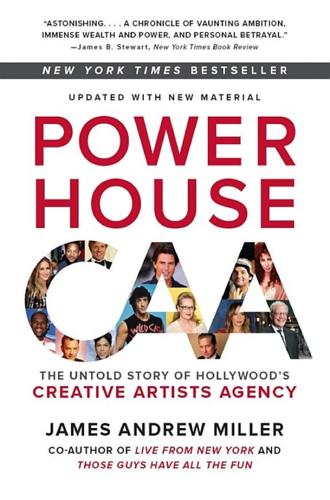
Powerhouse: The Untold Story of Hollywood's Creative Artists Agency
by
James Andrew Miller
Published 8 Aug 2016
I went out to California with hopes of joining the union for cameramen, but the business manager of Local 52 told me to forget about it. It would be very difficult to get in. One of my friends from NYU who was living with Lauren Shuler, later to become Lauren Shuler Donner, said to me, “Jack, why are you pursuing this cameraman thing? You’re great with people, you’re good with business, have you ever thought about being an agent?” Another friend from NYU was actually in the mailroom at William Morris at the time, so I got an interview and they told me I could start in the mailroom on Monday. This was two months after the five guys left to start CAA.
…
My roots aren’t exactly Dickensian, but they are humble. I was pre-med at Emory University when the Vietnam War was raging, but I didn’t really want to be a doctor. I wanted to make propaganda films against the war in Vietnam and realized I first had to learn how to make films. So I transferred to NYU film school and was surrounded day and night by people who shared real enthusiasm for film. It was there that I realized my passion was more about films themselves rather than vehicles for propaganda. To my great surprise, it turned out that I was a very gifted cinematographer. People wanted me to shoot their films and I was getting recognized and honored.
…
His art collection at the time was unparalleled for someone his age, and he made friends with key artists before they were huge like Schnabel, Dine, Chuck Close, and others. MICHAEL OVITZ: Jay was really amazing, the best trainee we ever had without a doubt. TOM LASSALLY, Producer: Jay and I met when I was at NYU film school and out here in L.A. for a summer. Jay was at CAA, working as a third assistant to Ovitz. Mutual friends introduced us, and we just had some weird friend chemistry with each other and quickly became great friends. To me, the fact that he was delivering groceries to Sean Connery’s condominium was pure Hollywood, the coolest thing in the world.

The Crisis of Crowding: Quant Copycats, Ugly Models, and the New Crash Normal
by
Ludwig B. Chincarini
Published 29 Jul 2012
Chairman, the economy and the financial markets are strong. With no particular problems on the horizon, this is an ideal time to review the supervision and regulation of the GSEs.” In 2002, Lawrence White of NYU was interviewed.81 This means if housing prices crash or either company stumbles, the taxpayers could be on the hook for hundreds of billions. It’s as if the public had cosigned Fannie and Freddie’s debt…” —Lawrence White, NYU professor, August 2002 Alan Greenspan, who had promoted the low interest rates that helped cause the housing boom, may have offered the most direct discussion of the threats posed by Freddie and Fannie.
…
If we had had a different philosophy, we would never have had the success that preceded the failure. In general, one can try and address known problems; it’s the risks that are not known that are dangerous. —Hans Hufschmid interview, September 30, 2010 William Krasker became a finance professor at NYU's Stern School of Business. In 2002, David Mullins formed Azimuth Trust, a fund-of-funds firm, along with Steven Gluckstern, David Modest, and Wesley Williams. Mullins served as executive director and chief economist. In 2004, he also assumed part-time responsibilities as the chief economist at Vega Asset Management, a global macro and fixed-income relative-value hedge fund group that managed approximately $12 billion in assets when he joined in 2004.
…
Regulating Wall Street: The Dodd-Frank Act and the New Architecture of Global Finance. John Wiley & Sons, November 2010. Acharya, Viral V. and Matthew Richardson. Restoring Financial Stability: How to Repair a Failed System. John Wiley & Sons, Inc., 2009. Acharya, Viral V., Lasse H. Pedersen, Thomas Philippon, and Matthew Richardson. “Measuring Systemic Risk.” NYU Working Paper, May 2010. AIG. “Annual Report.” AIG Annual Report, September 30, 2008. Alpert, Bill. “Shorting Cramer.” Barron's, August 20, 2007. Anderson, Jenny. “Survivor.” New York Times, October 28, 2007. Angel, James. “Examining the Efficiency, Stability, and Integrity of the U.S. Capital Markets.”
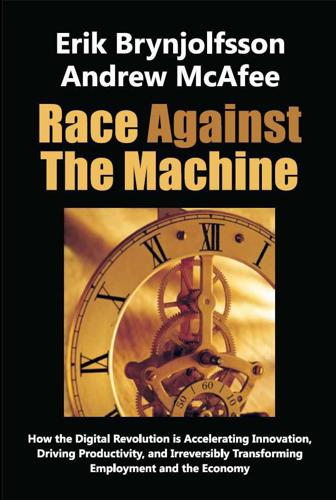
Race Against the Machine: How the Digital Revolution Is Accelerating Innovation, Driving Productivity, and Irreversibly Transforming Employment and the Economy
by
Erik Brynjolfsson
Published 23 Jan 2012
We also benefited greatly from talking with people in industry who are making and using incredible technologies, including Rod Brooks, Paul Hofmann Ray Kurzweil, Ike Nassi, and Hal Varian. We presented some of the ideas contained here to seminar audiences at MIT, Harvard Business School, Northwestern, NYU, UC/Irvine, USC’s Annenberg School, SAP, McKinsey, and the Information Technology and Innovation Foundation. We also presented related work at conferences including WISE, ICIS, Techonomy, and the Aspen Ideas Festival. We received invaluable feedback at each of these sessions. The most important thing we learned was that the topic of technology’s influence on employment immediately engages people’s interest, so we shaped our research and writing accordingly.
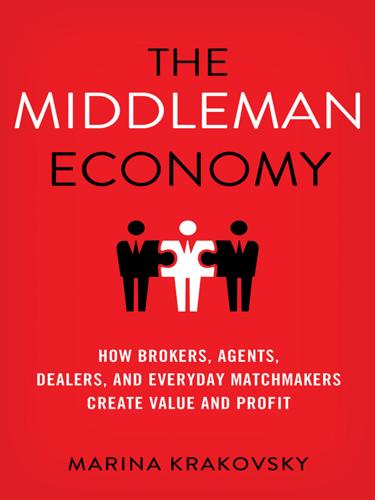
The Middleman Economy: How Brokers, Agents, Dealers, and Everyday Matchmakers Create Value and Profit
by
Marina Krakovsky
Published 14 Sep 2015
You’re not merely a lawyer, the butt of countless jokes; you’re an attorney, an advocate and champion of your clients’ interests. Robert Boland, the lawyer who teaches sports management at NYU, makes a point along the same lines. “We’re always a better advocate for other people than for ourselves,” he says, adding the adage that the lawyer who represents himself has a fool for a client. Boland says that when he took his job at NYU, he not only didn’t negotiate, he didn’t even ask how much he was going to make. He surely wouldn’t neglect asking these questions if he were working on behalf of a client. Why? For the same reason Willman mentioned.
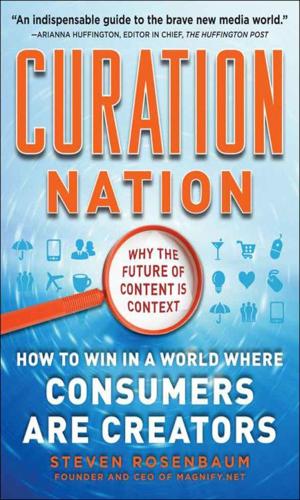
Curation Nation
by
Rosenbaum, Steven
Published 27 Jan 2011
Journalists who see themselves as victims of technology have the currently dominant media outlets to broadcast kvetching. Clay Shirky is the ideal observer of all this noisy change. An actual adult who’s almost preter-naturally youthful, he teaches at New York University’s interactive telecommunications program (ITP). “I’m a hybrid,” says the writer, thinker, and professor. Sitting in a chaotic classroom at NYU’s IPT program, he explains the dichotomy of his world this way: “From nine to five, I can act like I’m 22. After five o’clock I have to go back to being middle-aged.” Shirky spends his days with people who he says don’t have to unlearn anything. They didn’t learn that newspapers come from newspaper stands and plane tickets come from travel agents and books come from bookstores.
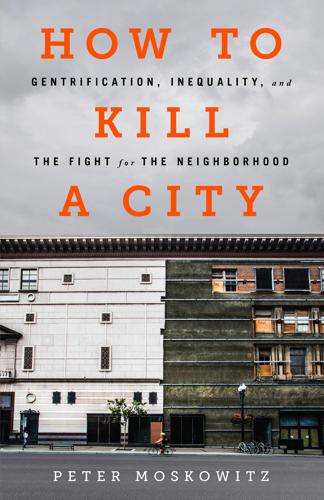
How to Kill a City: The Real Story of Gentrification
by
Peter Moskowitz
Published 7 Mar 2017
The mediocre restaurant is still on the corner. There’s a Chase Bank, but that’s been there for decades. Right below it, though, is 8th Street, which farther east turns into St. Marks Place—the locus of much of New York’s punk scene in the 1980s. St. Marks is now mostly chain stores and restaurants that cater to NYU students. CBGB, the famous concert hall where a lot of big punk acts first made a name for themselves, is now a John Varvatos shoe store. Farther to the south are Washington Square Park and New York University, which has been involved in its own gentrification battle for the last decade as the school has tried to expand its already ample real estate holdings into historic parts of the West Village.
…
extraordinary amounts of money, forethought, and policy: Ibid., 7. “We’re constantly trying to attract a specific demographic”: Sharon Zukin, Naked City: The Death and Life of Authentic Urban Places (Oxford: Oxford University Press, 2011). New York University, which has been involved: John Surico, “De Blasio, ’84, Eyes NYU 2013,” Gotham Gazette, May 12, 2014. In her study of lofts in SoHo in the 1980s: Sharon Zukin, Loft Living: Culture and Capital in Urban Change (Baltimore: Johns Hopkins University Press, 1982), 36. some 33,000 workers and small-business owners were displaced: Robert Fitch, The Assassination of New York (New York: Verso Books, 1993).
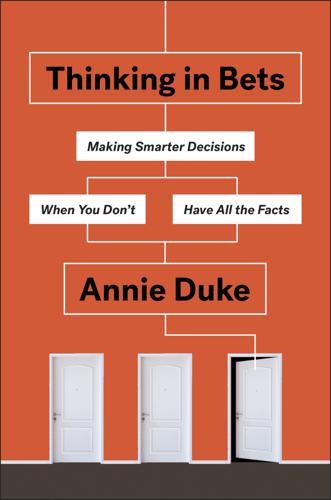
Thinking in Bets
by
Annie Duke
Published 6 Feb 2018
Because that’s such a common element in self-help strategies, conducting a premortem (with its negative visualization) may seem like a counterproductive way to succeed. Despite the popular wisdom that we achieve success through positive visualization, it turns out that incorporating negative visualization makes us more likely to achieve our goals. Gabriele Oettingen, professor of psychology at NYU and author of Rethinking Positive Thinking: Inside the New Science of Motivation, has conducted over twenty years of research, consistently finding that people who imagine obstacles in the way of reaching their goals are more likely to achieve success, a process she has called “mental contrasting.” Her first study, of women enrolled in a weight-loss program, found that subjects “who had strong positive fantasies about slimming down . . . lost twenty-four pounds less than those who pictured themselves more negatively.
…
I first met Gary when we were in grad school, when I was a student of Lila’s and he was a student of Steven Pinker’s. We reconnected years later after I started working on this book, and the conversations I have been lucky to have with him about memory and time were invaluable. Gabriele Oettingen and her husband Peter Gollwitzer, psychology professors at NYU, who were kind enough to have a very long lunch with me to talk about mental contrasting. That conversation was invaluable to this book. Gerry Ohrstrom, for reintroducing me to Gary Marcus, who in turn introduced me to Gabriele Oettingen and Peter Gollwitzer. Joseph Sweeney, whose love of learning and devouring of material in this space led to many long lunch conversations that informed this book and made it better in so many ways.
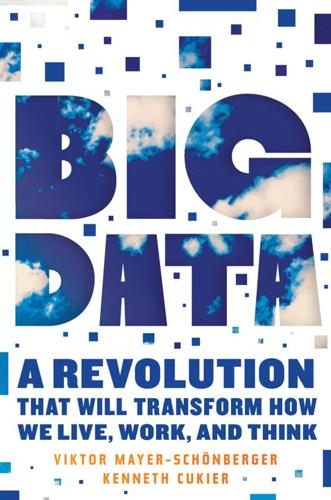
Big Data: A Revolution That Will Transform How We Live, Work, and Think
by
Viktor Mayer-Schonberger
and
Kenneth Cukier
Published 5 Mar 2013
Surveillance cameras near Orwell’s home—“George Orwell, Big Brother Is Watching Your House,” The Evening Standard, March 31, 2007 (http://www.thisislondon.co.uk/news/george-orwell-big-brother-is-watching-your-house-7086271.html). On Equifax and Experian—Daniel J. Solove, The Digital Person: Technology and Privacy in the Information Age (NYU Press, 2004), pp. 20–21. [>] On block addresses of Japanese in Washington handed over to U.S. authorities—J. R. Minkel, “The U.S. Census Bureau Gave Up Names of Japanese-Americans in WW II,” Scientific American, March 30, 2007 (http://www.scientificamerican.com/article.cfm?id=confirmed-the-us-census-b).
…
Wired, December 17, 2009 (http://www.wired.com/threatlevel/2009/12/netflix-privacy-lawsuit/). Smith, Adam. The Wealth of Nations (1776). Reprinted Bantam Classics, 2003. A free electronic version is available (http://www2.hn.psu.edu/faculty/jmanis/adam-smith/Wealth-Nations.pdf). Solove, Daniel J. The Digital Person: Technology and Privacy in the Information Age. NYU Press, 2004. Surowiecki, James. “A Billion Prices Now.” New Yorker, May 30, 2011 (http://www.newyorker.com/talk/financial/2011/05/30/110530ta_talk_surowiecki). Taleb, Nassim Nicholas. Fooled by Randomness: The Hidden Role of Chance in Life and in the Markets. Random House, 2008. ———. The Black Swan: The Impact of the Highly Improbable. 2nd ed., Random House, 2010.
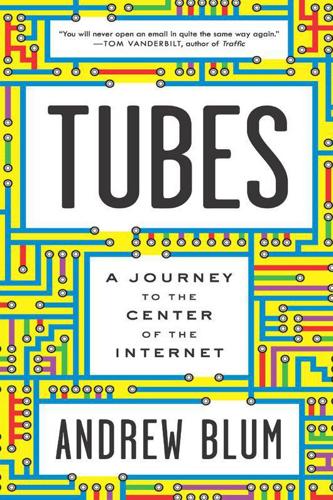
Tubes: A Journey to the Center of the Internet
by
Andrew Blum
Published 28 May 2012
By September 1973, the ARPANET went international, with the establishment of a satellite link to University College London. By the end of the decade, the network’s geography was fully entrenched around four regions: Silicon Valley, Los Angeles, Boston, and Washington. New York City hardly appeared at all, with only NYU winning a colony. Only a few scattered nodes dotted the middle of the United States. True to its philosophical roots as a doomsday-era communications system, the ARPANET was strikingly deurbanized and decentralized. It had no special places, no monuments. Physically speaking, there were IMPs like the one down the hall from Kleinrock’s office, linked by always-on phone connections provided under special terms by AT&T.
…
See also Tata Communications New York City data storage in, 230 Equinix in, 164 and Europe-US telephone connection, 175 fiber highways in, 163–71, 172, 265–66 fiber-optic connections to, 26 Fitzgerald story about, 3 Google headquarters in, 163–64, 172 history of Internet and, 50 hubs in, 171–80, 181 as important network meeting point, 164 and Internet as series of tubes, 5 London traffic with, 180, 202, 208 111 Eighth Avenue (New York City), 163–64, 171, 266 peering and, 128 60 Hudson Street in, 171–74, 176 structure of Internet and, 27 32 Avenue of the Americas in, 171–80 as undersea cables port, 194, 199 New York University (NYU), 50 Newby, Hunter, 174 Ninth Avenue fiber highway (New York City), 164 Nipper, Arnold, 137–38, 140–43, 144–45, 239 North American Network Operators’ Group (NANOG), 58, 66, 157 Austin meeting of, 119–23, 127, 128–35, 157 Northrop Grumman, 62, 123 NorthWestNet, 53 NSFNET, 59, 138 NTT, 125 O’Kane, Victoria, 165 One Wilshire (Los Angeles, California), 200–201 111 Eighth Avenue (New York City), 163–64, 171, 266 online videos, 119 Open Compute project (Facebook), 258 optical modules, 160 Orlowski, Frank, 133–34, 135, 145, 157 Osés, Mara Vanina, 7 Pacific Bell, 64, 84 Pacific DC Intertie, 228 Page, Larry, 69–70 PAIX, undersea cables, PAIX and, 78 Pakistan Telecom, 30 Paling, Jol, 208, 209, 210–15, 216, 267 Palo Alto, California Adelson-Troyer-Blum meeting in, 71–72, 73 See also Palo Alto Internet Exchange (PAIX) Palo Alto Internet Exchange (PAIX) Adelson and, 72, 76–77, 88 Blum visit to, 71–72, 76–85 cable management at, 81–82 carriers and, 89 DEC and, 76, 87, 88 definition of Internet exchange and, 109 diversity at, 79 Equinix and, 76–77, 87 expansion of, 78, 86–87 importance of, 78 location of, 76 “network effect” at, 80–81 openness of Internet and, 117 peering and, 122, 127, 128 problems of, 85–86 Qatar Telecom and, 139 quantity of information passing through, 82–83 and rerouting traffic, 200–201 routers at, 79–80, 82–83, 266 security at, 95 Paris, France, structure of Internet and, 27 Passaic, New Jersey, Smithson tour of, 150–51, 152, 154 Patchett, Ken, 255–56, 257, 258–59, 260–62, 267 Pedro, John, 82 “peering” de-peering and, 123–24, 151 definition of, 118–19 division of groups for, 121–22 globalization of, 125–26 Internet exchanges and, 121–22, 126, 127, 129, 130 NANOG meeting and, 118–23, 128–30, 131–32 and “open peering policy,” 127 Qatar Telecom and, 140 Tier-1 domination of, 124–25 Witteman-Orloski meeting and, 133–35 PeeringDB (website), 126 Peter Faber (cable ship), 219, 221–22 Petrie, Anne, 83 Pipex, 184, 185, 186 “point of entry,” 178, 179 POP (point of presence), 59, 78, 84 Porthcurno (Cornwall, England), 202–16, 253, 267 Portugal, 191–92, 194, 217–26, 267 Postel, Jon, 31, 45 Prineville, Oregon: Facebook data center in, 250–62, 267 privacy issues, 258 Provo, Joe, 122 Provo, Ren, 122, 123 PSI, 56, 59, 60 Qatar, 197 Qatar Telecom, 79, 139–40 Quality Life Broadband (Q-Life), 236, 237, 238, 242, 246 Quincy, Washington, data centers in, 234–35, 250 RAND Corporation, 42 Reid, Brian, 74, 75, 76 Renesys, 123, 124–25, 151 Renton, Alan, 205–6 Research in Motion (RIM), 121 Resolute (cable ship), 218 Reyes, Felix, 77, 81 Roberts, Larry, 42–43, 51 routes/routers in Ashburn, 99–100 as basic building blocks of Internet, 158 Brocade, 157–58, 159–63, 188 dead-end, 31, 32 expansion of Internet and, 55 function of, 160 Internet as self-healing and, 200 IP addresses and, 29–30 at large Internet exchanges, 111 at MAE-East, 65–66, 75–76, 80 in New York City, 164–71 at PAIX, 79–80, 82–83, 266 peering and, 124–25, 127 and rerouting traffic, 200–201 “routing table” and, 30 Traceroute program and, 31–34 trust and, 30–31 “routing table,” 30, 125 Rudin Management, 174–75, 176 Rwanda, 110 Sabey, 235 Sacca, Chris, 237–38, 239 San Jose, California: peering and, 128 SAT-3 (undersea communications cables), 191–92, 197 satellites: Internet exchanges and, 110 Saudi Arabia, 197 Schoffstall, Marty, 60 SEACOM (undersea communications cables), 192, 197 Seales, Brian, 166–71 security/secrecy for cable landing stations, 202, 203 for data centers/storage, 93, 141, 237–40, 242–43, 254, 257 at DE-CIX, 140–41 at Dutch data centers, 152 at Equinix, 93, 141 at Google data center, 242–50, 254, 257 at Internet exchanges, 113–16 at LINX, 185–86 Sensitive Compartmented Information Facilities (“skiffs”), 62 Seoul, Korea: structure of Internet and, 27 service providers: peering and, 119 SESQUINET, 53 The Shadow Factory (Bamford), 63 Shorto, Russell, 146 Siemens Brothers, 206 Sigma-7 computer, 43 Silcock, Colin, 186, 187–89 Silicon Valley belief in limitless potential of technology in, 70 connection of networks in, 67 expansion of Internet and, 50 structure of Internet and, 27 wealth in, 70 See also Palo Alto, California; specific person or corporation Singapore, 128, 139, 194, 196, 199, 201 Singapore Telecommunications, 79 SIX (Seattle, Washington), 111 60 Hudson Street (New York City), 171–74, 176, 202, 215, 266 Smallwood, Christine, 107 Smithson, Robert, 150–51, 154 South Africa, 191–93, 197, 204, 219 South Asia, 196, 200 South Park (TV show), 107–8 Spain, 113 SPAN, 52 speed.
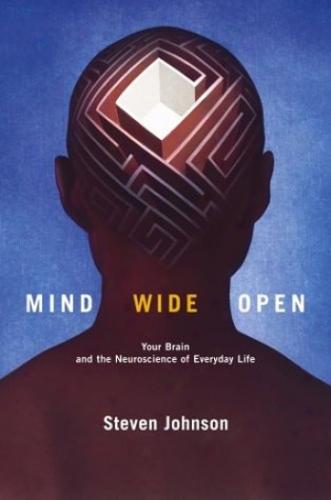
Mind Wide Open: Your Brain and the Neuroscience of Everyday Life
by
Steven Johnson
Published 2 Jan 1999
How the rat’s brain actually processed that fear response and how that fear response felt subjectively to the rat-these questions were off-limits to the behaviorists, sequestered away in the “black box” of the unknowable brain. But over the past few decades, science has opened up that black box, and charted the actual pathways of conditioned fear in the brain. The leading figure in the field is a soft-spoken, if controversial, NYU professor named Joseph LeDoux. When I visited him at his office near Washington Square, he told me the story of his intellectual quest. It has the classic rogue-science beginning. “My first grant request on this topic in the early 1980s,” he explained with a smile, “was turned down because emotions can’t be studied scientifically.”
…
Broca’s area of frontal lobes of prefrontal lobes of Wernicke’s area of nervous system neuroanatomy neurochemicals neuroendocrinology neurofeedback technology brain wave measurement and graphic display and high-speed processing of history of interactive process of mind expansion and mode switching and popular acceptance of recreational uses of sports and therapeutic uses of training in neurology neuromap fallacy neuroprofiles neurons atrophy of communication of mirror synapses and neuropsychoanalysis neuroscience see also brain science neurotrainers neurotransmitters New Age New England Journal of Medicine New York University (NYU) nicotine Nietzsche, Friedrich nonsense norepinephrine Norretranders, Tor Notes from the Underground (Dostoyevsky) nucleus accumbens numbers, memory of nurturing instinct occipital lobe Ochsner, Kevin Oedipal complex opium poppy optical illusions optic nerve orbicularis oculi organs Othmer, Sigfried Othmer, Susan Othmer Institute overeaters Oxford Dictionary of Quotations oxycontin oxygen oxytocin bonding and stress and Pac-Man pain memories of relief of panic Panksepp, Jaak paralysis parapsychology parietal lobe Parkinson’s disease pattern recognition Pavlov, Ivan Peak Achievement Trainer peptides periaqueductal gray (PAG) personal appearance personality competing brain systems and split true two sides of unified bisocial theory of PET scans PGA tournaments pharmacology phenylethylamine philosophy phobias phonological loop photography phrenology physics physiology Pink Floyd planning play PlayStation pleasure brain circuitry for chemical fixes for drive for shivers and chills of see also drugs, recreational pleasure principle post-traumatic stress disorder prairie voles pregnancy primal scream therapy protein synthesis Proust, Marcel Provine, Robert Prozac psyche competing forces of psychiatry psychic economy psychoanalysis psychology evolutionary pop psychopharmacology psychotherapy public speaking Quake qualia quantum behavior racism radioactive material Raiders of the Lost Ark Rain Man Rand, Ayn rats Ravel, Maurice reading skills “Reading the Mind in the Eyes” test Reagan, Ronald reasoning skills reconsolidation process reductionism reflexes rejection sensitivity relaxation deep repetition compulsion repression of memories reproduction reptiles reptilian brain, see brain stem response: autonomia conditioned knee-jerk startle see also fight-or-flight response Ritalin rivalry Robbins, Jim Rodenbough, John Rosenblum, Hal rumination Sacks, Oliver sadness Sagan, Carl Salpêtrière Hospital SATs schadenfreude schizophrenics Schopenhauer, Arthur science Science Seagal, Steven Seiden, Leslie self-awareness brain science and unified widening and changing of self-doubt self-exploration self-help self-improvement self-knowledge September 11 attacks serotonin sex climactic evolution and hormones and instincts of love and in men vs. women monogamous reproduction and Shakespeare, William Sime, Wes simulation theory sincerity skin sleep deprivation smallpox smiles fake genuine love and muscular underpinnings of Smith, Patti snakes social Darwinism social skills impairment of see also mind reading Solms, Mark sound electric shock combined with fear memories of sound waves spacial skills spandrels speech intonation and listening to public spinal column spinning sports: accidents in neurofeedback and startle response Stern, Daniel stomach, nervous storms stress brain activity and hormones and job-related male vs. female responses to memory and oxytocin and physical damage of relief of triggers of stroke left-hemisphere long-term deficits of Stroop Interference Test sugar superego superstition supervisory attention control support groups surprise sweating Symons, Donald sympathy faking of Symphony in the Brain, A (Robbins) synapses neurons and strengthening of talking cure see also psychoanalysis taste Taylor, Shelley telepathy temporal lobe “Tending Instinct, The” (Taylor) testosterone thalamus auditory cortex link to visual theory of other minds therapies see also specific therapies thermodynamics thought: assessment of other people’s controlling of feeling separated from shutting off 3-D space tickling transendental meditation (TM) transference triune brain “Uncanny, The” (Freud) unconscious consciousness vs.
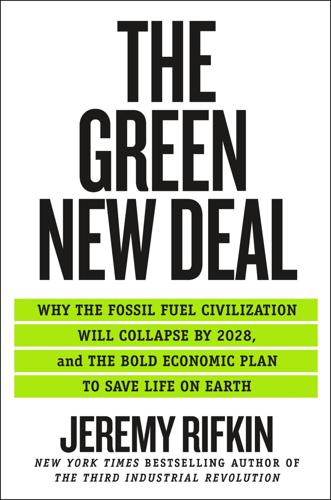
The Green New Deal: Why the Fossil Fuel Civilization Will Collapse by 2028, and the Bold Economic Plan to Save Life on Earth
by
Jeremy Rifkin
Published 9 Sep 2019
Pension fever is already in the air in the United States and on the lips of politicians in both political parties. In February 2019, The Hill, the publication that keeps elected officials, the federal bureaucracy, and lobbies abreast of happenings across the government, published an opinion piece by Ingo Walter, professor emeritus of finance at NYU’s Stern School of Business, and Clive Lipshitz, managing partner of Tradewind Interstate Advisors, titled “Public Pensions and Infrastructure: A Match Made in Heaven,” suggesting that the giant national pool of workers’ public pension funds is sparking a romance with government that will help finance an upgraded twenty-first-century infrastructure.32 Some of this financial pool is going to come onboard and invest in the rollout of the national power grid and in the greening of federal government–owned physical assets.
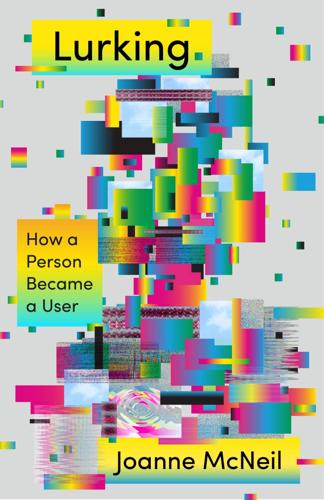
Lurking: How a Person Became a User
by
Joanne McNeil
Published 25 Feb 2020
An interview with Guillaume Chaslot, one of the engineers who worked on the recommendation system, in The Guardian (“‘Fiction is outperforming reality’: how YouTube’s algorithm distorts truth,” February 2, 2018) provides more information on how hateful content and misinformation spreads on the platform. Safiya Umoja Noble’s book Algorithms of Oppression (NYU Press, 2018) is a definitive look at Google’s bias. Jack Nicas reported on Fiskhorn’s Google-instigated transition into “Fishkorn” (“As Google Maps Renames Neighborhoods, Residents Fume,” The New York Times, August 2, 2018). Ellen Ullman has commented on how Google has shifted the meaning of the word “search.”
…
Alice Marwick created a useful list of texts called the LiveJournal Academic Research Bibliography (https://archive.fo/kEr7T), and has written extensively about the platform as a transition from old internet habits to emerging blog culture and social media. My source for the information on Indymedia was C. W. Anderson’s paper “From Indymedia to Demand Media: Journalism’s Visions of Its Audience and the Horizons of Democracy” (in The Social Media Reader, edited by Michael Mandiberg, NYU Press, 2012, 77–96) and a CNN report on the Seattle Indymedia Center and WTO Protests (Don Knapp, “Seattle Protests Seen Through Other Eyes,” December 2, 1999). Danyl Strype wrote a more recent consideration of Indymedia’s influence and decline, including its unique software (“What we would now call a CMS didn’t exist in 1999.

Flash Crash: A Trading Savant, a Global Manhunt, and the Most Mysterious Market Crash in History
by
Liam Vaughan
Published 11 May 2020
even in 2018, only an estimated one in eight traders were women: Anna Irrera, “Wall Street Wants More Female Traders, but Old Perceptions Die Hard,” Reuters, June 14, 2018. Most historians of financial markets: Allan Grody and Hughes Levecq, “Past, Present and Future: The Evolution and Development of Electronic Financial Markets,” NYU Stern School of Business, November 1993. The postmortem revealed: Mark Carlson, “A Brief History of the 1987 Stock Market Crash with a Discussion of the Federal Reserve Response,” Finance and Economics Discussion Series, Federal Reserve Board, Washington, DC, November 2006. The industry’s reputation: Eric Berg, “46 Commodities Traders Indicted After a 2-Year F.B.I.
…
“A temporary $1 trillion drop in market value”: Mark R. Warner, senator from Virginia, “Investigating the Wall Street Freefall,” May 7, 2010, https://warner.senate.gov. It was an illustrious group: The committee’s members were Brooksley Born, ex-CFTC chair; Jack Brennan, ex-CEO of investment company the Vanguard Group; NYU Stern professor Robert Engle; Richard Ketchum, former director of market regulation at the SEC; Cornell professor Maureen O’Hara; ex–Federal Reserve board member Susan Phillips; ex–SEC chair David Ruder; and Joseph Stiglitz from Columbia Business School. At fifty-five, Brennan was the youngest. One article in the Wall Street Journal: Scott Patterson and Tom Lauricella, “Did a Big Bet Help Trigger ‘Black Swan’ Stock Swoon?
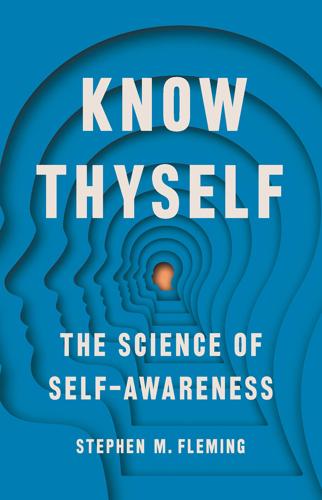
Know Thyself
by
Stephen M Fleming
Published 27 Apr 2021
I had just moved to New York to start my postdoctoral fellowship under the guidance of Nathaniel Daw, an expert on computational models of the brain. I had two main goals for this postdoc: the first was to teach myself some more mathematics (having dropped the subject much too early, at the age of sixteen), and the second was to think about ways of building computational models of self-awareness. I initially intended to visit NYU for a year or two, but New York is a difficult city to leave and I kept extending my stay. This was lucky for two reasons: it gave Nathaniel and me the chance to figure out our model of metacognition (which, like most science worth doing, took much longer than expected), and it gave me a chance to meet my wife, who was working as a diplomat at the United Nations.
…
Because our sample contained almost one thousand individuals, it is likely that if a systematic relationship between IQ and metacognition had existed, then we would have detected it. Another piece of evidence for a difference between intelligence and self-awareness comes from a study I carried out in collaboration with neuropsychologist Karen Blackmon in New York, while I was a postdoctoral researcher at NYU. We found that patients who had recently had surgery to remove tumors from their anterior PFC had similar IQ to a control group but showed substantial impairments in metacognitive sensitivity. It is intriguing to consider that while both self-awareness and intelligence may depend on the PFC, the brain circuits that support flexible thinking may be distinct from those supporting thinking about thinking.12 Constructing Confidence The abstract nature of metacognition makes sense when we consider that the uppermost levels of the prefrontal hierarchy have access to a broad array of inputs from elsewhere in the brain.
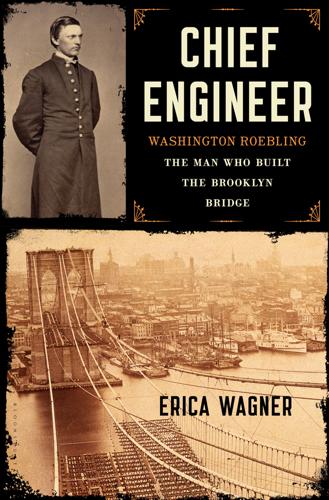
Chief Engineer
by
Erica Wagner
A women’s law class was started under the tutelage of Emily Kempin—a doctor of law who had gained her degree at a university in her native Switzerland, but who had been barred from practicing there. But the NYU course wasn’t designed to produce working lawyers, either. The class did not “aim to prepare students for the practice of law,” as one of its attendees later recalled, “but to give to women who are likely to have responsibility for the care of property or who … desire to have fuller knowledge of the laws … the opportunity to study the fundamentals of Modern American law.” The fundamentals were covered in a semester—not the full two years of the men’s degree. All the same, she studied contracts, property, domestic relations; NYU’s professor of law Isaac Franklin Russell wrote that “the most wifely and motherly of women meet here with the most advanced and aggressive of those who assert woman’s demand for rights is still denied.”

Connectography: Mapping the Future of Global Civilization
by
Parag Khanna
Published 18 Apr 2016
Decades from now, we will all still live within the nominal borders of states, but more important, almost the entire world population will also live along infrastructure corridors and supply chains, physical and virtual. — URBANIZATION IS ALSO EVIDENCE of the shift toward a supply chain world. As Harvard’s Neil Brenner and NYU’s Solly Angel have documented, urban land area is expected to triple over the course of this century. Most of the world’s population already lives in cities, and approximately 150,000 people per day—or the equivalent of one Los Angeles per month—are moving in, especially in developing countries where at least two billion more people are expected to shift to cities by 2030.
…
This has made it a hub for Chinese trading companies, Thai businessmen, and other investors who are working with the locally elected mayor—who is pushing hard for SEZ status—to make the creaking city an efficient business transit center. SEZs are also attractive to countries that want to preserve what functionality they have left and avoid becoming failed states. The NYU economist Paul Romer, a champion of adapting the Hong Kong or Singapore model to the third world, has promoted “Charter Cities” in Latin America and Africa in an attempt to leapfrog their governance and economic planning. Honduras, the most violent country in the Western Hemisphere, has recruited foreign engineers, lawyers, urban planners, and investors to run numerous politically autonomous Zones for Economic Development and Employment, each with an industry-specific master plan.
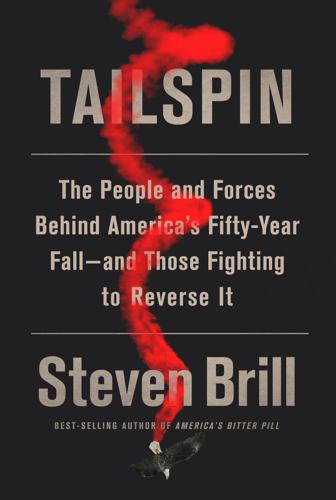
Tailspin: The People and Forces Behind America's Fifty-Year Fall--And Those Fighting to Reverse It
by
Steven Brill
Published 28 May 2018
More often than not, Martin Lipton became that man. Lipton’s life story began seven years after Flom’s, and mimics it. He had immigrant Jewish parents. He finished at the top of his class at New York University Law School, but was not hired by any establishment firm when he graduated in 1955. He started his own firm with three NYU classmates with the same backgrounds. Although Lipton and Flom often switched sides, Flom was typically on offense while Lipton played defense. I met Flom and Lipton in 1976, when I was writing for New York magazine. I’d been told about a trend that might make a great story: Two relative unknowns at two equally un-prominent law firms were dominating a new area of law that was bringing them and their partners millions in fees.
…
Valeo, the Supreme Court ruled that individual contributions made directly to candidates could, indeed, be limited, because of the possibility of corruption posed by such a direct connection between a donor and a candidate. However, the justices declared that the First Amendment prohibited any limits on what the candidate himself could spend, or on the total amount the campaign could spend, or on how much independent groups could spend to support a candidate. Redish’s NYU article was cited by the Court in its opinion. The Buckley decision did not overturn long-standing prohibitions on corporate contributions made directly to candidates, nor did it strike down a $5,000 limit on how much a corporation could contribute to an independent group. (The latter is the limit that would be overturned in Citizens United).
…
the federal commission investigating: These are discussed at length in a September 15, 2016, letter from Senator Elizabeth Warren to the Department of Justice: https://www.warren.senate.gov/files/documents/2016-9-15_Referral_DOJ_IG_letter.pdf. “If they ever sent a referral”: Interview with Rubin. “In some instances”: Delivered at New York University on September 17: https://www.justice.gov/opa/speech/attorney-general-holder-remarks-financial-fraud-prosecutions-nyu-school-law. Angelo Mozilo: See quotes included in Chapter 3, which come from the SEC complaint cited below as well as the FCIC report: https://www.gpo.gov/fdsys/pkg/GPO-FCIC/pdf/GPO-FCIC.pdf. the SEC sued Mozilo: https://www.sec.gov/litigation/complaints/2009/comp21068.pdf. $16.6 billion civil settlement: https://www.justice.gov/opa/pr/bank-america-pay-1665-billion-historic-justice-department-settlement-financial-fraud-leading.
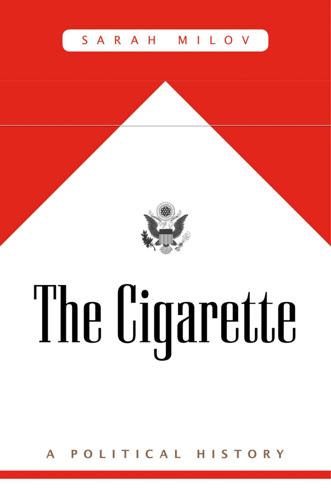
The Cigarette: A Political History
by
Sarah Milov
Published 1 Oct 2019
For many, the phrase “administrative agencies” conjured up images of staid men in suits talking in federal code. But for Banzhaf, administrative agencies presented an opportunity for creative legal action. He was just one of many legal academics who used their positions to test theories of social change. Indeed, he was part of the academy’s inauguration of “legal clinics” into legal education. At NYU Law School, for example, clinical education became a standing part of the curriculum in 1969, and by 1970 there were ten clinical courses offered by the school. Students worked with New York–area economic development programs, provided services in the juvenile court system, defended indigents “charged with minor crimes,” and worked alongside lawyers in providing services to the poor.10 When he began teaching at George Washington University’s law school in 1968, Banzhaf called his approach “Anti-Establishment law.”11 His Legal Activism course, known among students as “Sue the Bastards,” described “law as a weapon against major social problems.”
…
(Durham: Duke University Press, 2002), 421. 52. Brandt, “Blow Some My Way.” For a provocative exploration of the way in which modern notions of health are tools of censure that serve economic and political interests, see Jonathan Metzl and Anna Kirkland, eds., Against Health: How Health Became the New Morality (New York: NYU Press, 2010). 53. J. J. Prochaska, A. K. Michalek, and C. Brown-Johnson, “Likelihood of Unemployed Smokers vs Nonsmokers Attaining Reemployment in a One-Year Observational Study,” JAMA Internal Medicine 176, No. 5 (2016): 662–670. 54. Frank Newport, “Impact of Smoking, Being Overweight on a Person’s Image,” Gallup Poll Briefing, 2008, 1; Business Source Complete, EBSCOhost, accessed October 12, 2017, https://www.ebsco.com/products/research-databases/business-source-complete. 55.
…
Brian Balogh has argued that interests expressed at the state level opposed nuclear reactor projects developed by the federal Atomic Energy Commission on public-health grounds in the late 1950s. See Brian Balogh, Chain Reaction: Expert Debate and Public Participation in American Commercial Nuclear Power, 1945–1975 (New York: Cambridge University Press, 1991), 159–170. 9. Geismer, Don’t Blame Us. 10. Steven H. Leleiko, “The Clinic and NYU,” Journal of Legal Education 24, No. 4 (1972): 429–461. 11. “Faculty Profile—John Banzhaf,” Amicus Curiae (George Washington Law School), October 14, 1968. 12. Paul Sabin, “Environmental Law and the End of the New Deal Order,” Law and History Review 33, No. 4 (November 2015): 965–1003. 13. Joseph Sax, Defending the Environment: A Handbook for Citizen Action (Vancouver, WA: Vintage, 1970), xviii. 14.
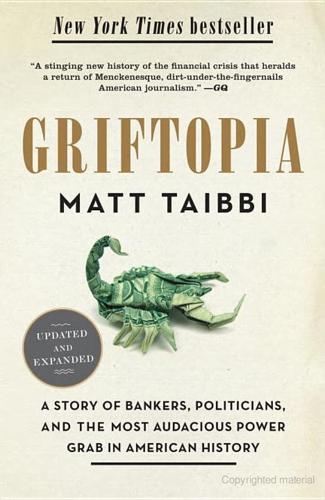
Griftopia: Bubble Machines, Vampire Squids, and the Long Con That Is Breaking America
by
Matt Taibbi
Published 15 Feb 2010
Greenspan was born in 1926, just before the Depression, and boasts a background that reads a little like a generational prequel to the life of Woody Allen—a middle-class Jewish New Yorker from the outer rings of the city, a gaggle-eyed clarinet player who worshipped the big bands, used radio as an escape, obsessed over baseball heroes, and attended NYU (the latter with more success than Woody), eventually entering society in a state of semipanicked indecision over what career to pursue. In his writings Greenspan unapologetically recalls being overwhelmed as a young man by the impression left by his first glimpses of the upper classes and the physical trappings of their wealth.
…
The firm was literally on Wall Street near the stock exchange and the morning I went to see Mr. Banks was the first time I’d ever set foot in such a place. Walking into these offices, with their gilded ceilings and rolltop desks and thick carpets, was like entering a sanctum of venerable wealth—it was an awesome feeling for a kid from Washington Heights. Greenspan left NYU to pursue a doctorate in economics at Columbia University, where one of his professors was economist Arthur Burns, a fixture in Republican administrations after World War II who in 1970 became chief of the Federal Reserve. Burns would be Greenspan’s entrée into several professional arenas, most notably among the Beltway elite.
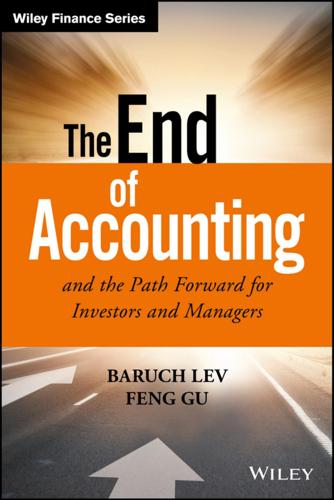
The End of Accounting and the Path Forward for Investors and Managers (Wiley Finance)
by
Feng Gu
Published 26 Jun 2016
Our trusted assistant, Shevon Estwick, highly professional and dedicated, provided invaluable administrative support in handling the manuscript. Nancy Kleinrock, not only edited the book very skillfully, but offered numerous constructive comments and suggestions. Jessica Neville, Executive Director of Communications at NYU’s Stern School of Business, provided valuable marketing advice, and Wiley Finance Editor, William Falloon, accepted the book almost at face value and guided it smoothly and efficiently through the long production process, providing important advice. He was ably assisted by his Wiley editorial and production team.
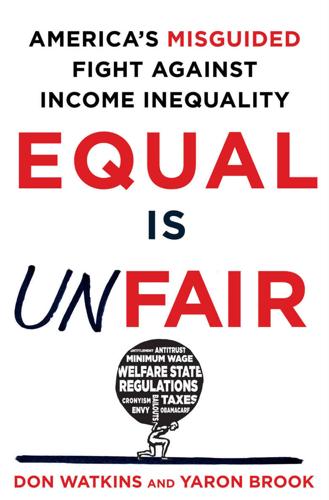
Equal Is Unfair: America's Misguided Fight Against Income Inequality
by
Don Watkins
and
Yaron Brook
Published 28 Mar 2016
(According to journalist Jason Riley, “A 1995 study concluded that mothers in states that raised the minimum wage remained on public assistance an average of 44 percent longer than their peers in states where the minimum did not rise.”59) But there are reasons—starting with the testimony of poor people themselves—to think a lack of jobs is not the major force driving this decline. NYU’s Mead notes, “In 2009, only 12 percent of poor adults who did not work blamed this on their inability to find work. In 2007, before the recession, the figure was only 5 percent. In both years, this was the least common reason cited for not working. Much more often, respondents claimed illness, retirement, family responsibilities, or going to school as reasons.”60 There are strong reasons to think that the decline in work among poor Americans has not happened despite the efforts of anti-poverty programs, but in significant part because of them.
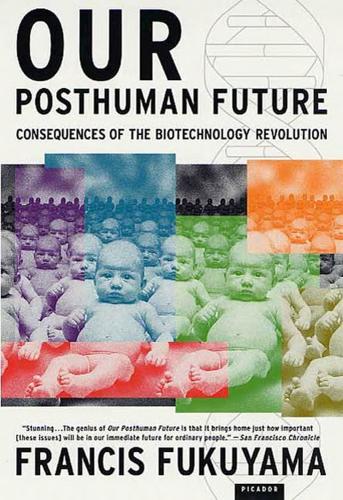
Our Posthuman Future: Consequences of the Biotechnology Revolution
by
Francis Fukuyama
Published 1 Jan 2002
If none of the other member states objects, then the product can be marketed throughout the EU. In 1997, Austria and Luxemburg initiated bans on the import and cultivation of insect-resistant corn, which the commission required they rescind. See Ruth MacKenzie and Silvia Francescon, “The Regulation of Genetically Modified Foods in the European Union: An Overview,” N.Y.U. Environmental Law Journal 8 (2000): 530–554. 8 Margaret R. Grossman and A. Bryan, “Regulation of Genetically Modified Organisms in the European Union,” American Behavioral Scientist 44 (2000): 378–434; and Marsha Echols, “Food Safety Regulation in the EU and the US: Different Cultures, Different Laws,” Columbia Journal of European Law 23 (1998): 525–543. 9 The 1990 directives do not mention the precautionary principle, but their language is not inconsistent with it.
…
Machan, Dyan, and Luisa Kroll. “An Agreeable Affliction.” Forbes, August 12, 1996, 148. MacIntyre, Alasdair. “Hume on ‘Is’ and ‘Ought.’” Philosophical Review 68 (1959): 451–468. MacKenzie, Ruth, and Silvia Francescon. “The Regulation of Genetically Modified Foods in the European Union: An Overview.” N.Y.U. Environmental Law Journal 8 (2000): 530–554. Mann, David M.A. “Molecular Biology’s Impact on Our Understanding of Aging.” British Medical Journal 315 (1997): 1078–1082. Masters, Roger D. Beyond Relativism: Science and Human Values. Hanover, N.H.: University Press of New England, 1993. ———.
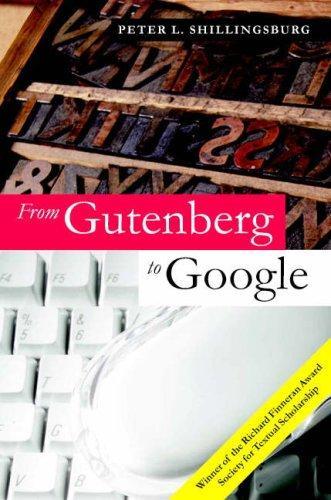
From Gutenberg to Google: electronic representations of literary texts
by
Peter L. Shillingsburg
Published 15 Jan 2006
This alter-reading was told to me by Price Caldwell as an illustration of one aspect of molecular sememics, described below. The term ‘‘junk criticism’’ is posited in relation to ‘‘junk linguistics’’ and ‘‘junk science’’ pilloried entertainingly by Paul M. Postal in Skeptical Linguistic Essays posted on the Internet at www.nyu.edu/gsas/dept/lingu/people/faculty/postal/papers/skeptical.pdf downloaded 4 July 2003. 76 From Gutenberg to Google meaning and how readers generate meaning actually identifies the kinds of information that electronic representations of print texts can provide for readers interested in historical meanings.
…
‘‘Ion,’’ Translated by. Trevor J. Saunders. in Plato: Early Socratic Dialogues. London: Penguin, 1987. Phaedras. Translated by R. Hackforth. Cambridge: Cambridge University Press, 1952. Republic. Translated by Robin Waterfield. Oxford: Oxford University Press, 1993. Postal, Paul M. Skeptical Linguistic Essays. www.nyu.edu/gsas/dept/lingu/people/ faculty/postal/papers/skeptical.pdf (downloaded 4 July 2003). Purdy, R. L. Thomas Hardy: A Bibliographical Study. London: Oxford University Press, 1954. Ray, Gordon N. Bibliographical Resources for the Study of Nineteenth Century Fiction. Los Angeles: Clark Library, 1964. ed.
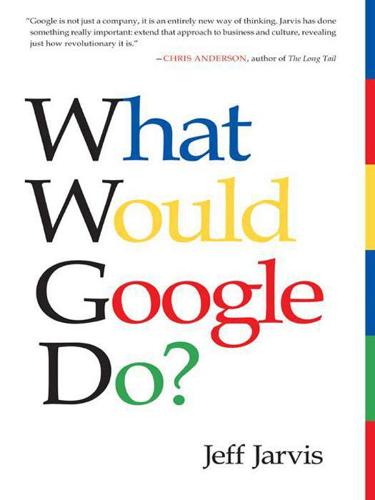
What Would Google Do?
by
Jeff Jarvis
Published 15 Feb 2009
They contribute out of generosity and ego and because they believe they own it. Note that to make the gift economy work, a project doesn’t need its entire community to contribute. Only about 1 percent of those who use Wikipedia create Wikipedia—that is Wikipedia’s 1 percent rule. Indeed, if that were doubled, it probably would create chaos. In Here Comes Everybody, NYU professor Clay Shirky, who studies social software, calculated the output of the authors of one article: “[O]f the 129 contributors on the subject of asphalt, a hundred of them contributed only one edit each, while the half-dozen most active editors contributed nearly fifty edits among them, almost a quarter of the total.”
…
Thinking differently is the key product and skill of the Google age. It has been said that young people today may take on new behavioral norms and mores and political outlooks from games and social software—and I don’t mean sex and violence, but subtler worldviews. “Social software is political science in executable form,” NYU professor Clay Shirky said in one essay. “Social norms in game worlds have the effect of governance,” he said in another. Stanford law professor Lawrence Lessig famously declared that code is law: “This code, or architecture, sets the terms on which life in cyberspace is experienced. It determines how easy it is to protect privacy, or how easy it is to censor speech.
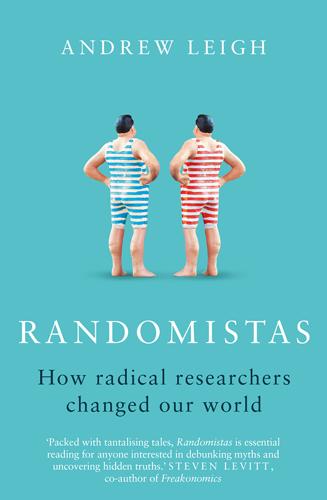
Randomistas: How Radical Researchers Changed Our World
by
Andrew Leigh
Published 14 Sep 2018
The disappointing replication study of HOPE was conducted in Arkansas, Massachusetts, Oregon and Texas, and is reported in Pamela Lattimore, Doris Layton MacKenzie, Gary Zajac, et al., ‘Outcome findings from the HOPE demonstration field experiment’, Criminology & Public Policy, vol. 15, no. 4, 2016, pp. 1103–41. 50Adam Gamoran, ‘Measuring impact in science education: Challenges and possibilities of experimental design’, NYU Abu Dhabi Conference, January 2009. 51Doris L. MacKenzie & David P. Farrington, ‘Preventing future offending of delinquents and offenders: What have we learned from experiments and meta-analyses?’ Journal of Experimental Criminology, vol. 11, no. 4, 2015, pp. 565–95. 52Australian incarceration rates were higher in the colonial era than they are today, but the 2016 rate was higher than at any time since 1901: Andrew Leigh, ‘Locking someone up costs around $300 a day or about $110,000 a year’, Canberra Times, 14 November 2016. 53National Research Council, The Growth of Incarceration. 54Mark A.R.
…
See George Kelling & James Wilson, ‘Broken windows: The police and neighborhood safety’, Atlantic, vol. 249, no. 3, 1982, pp. 29–38. 31See USAID, ‘Frequently Asked Questions about Development Innovation Ventures’, Washington, DC: USAID, 6 February 2017; USAID, ‘FY2015 & FY2016 Development Innovation Ventures Annual Program Statement’, Washington, DC: USAID, 20 October 2015. 32These examples are drawn from the Coalition for Evidence-Based Policy (now incorporated into the Laura and John Arnold Foundation), and a presentation by Adam Gamoran, titled ‘Measuring impact in science education: Challenges and possibilities of experimental design’, NYU Abu Dhabi Conference, January 2009. 33‘In praise of human guinea pigs’, The Economist, 12 December 2015, p. 14. 34Education Endowment Foundation, ‘Classification of the security of findings from EEF evaluations’, 21 May 2014. 35‘David Olds speaks on value of randomized controlled trials’, Children’s Health Policy Centre, Faculty of Health Sciences, Simon Fraser University, 26 May 2014. 36Dean Karlan & Daniel H.
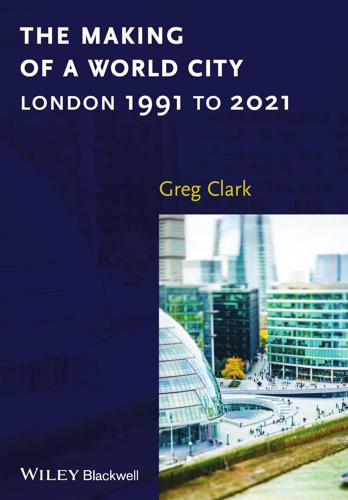
The Making of a World City: London 1991 to 2021
by
Greg Clark
Published 31 Dec 2014
For these reasons, Bruce Katz of the Brookings Institution and Professor Susan Fainstein at Harvard University’s Graduate School of Design are not alone in observing that New York City has developed a broader economic development perspective than London. It has approved a new applied sciences campus on Roosevelt Island for Cornell University and, more recently, a major public–private agreement involving IBM and Cisco has been signed to create the NYU Center For Urban Science and Progress in Brooklyn, focusing on infrastructure, technology integration, energy efficiency, congestion, public safety and health. Katz therefore notes New York’s stronger “focus on exports: science, higher education, SMEs, and low carbon industries” in addition to the established strengths in finance and business services (personal communication, 13 November 2011), while Fainstein observes New York’s superior support for entrepreneurs and small businesses (personal communication, 17 November 2011).
…
The current arrangements provide no scope for a Greater South East approach to be adopted for London’s city-region. There remains a governance deficit whereby the lack of regional coordination hinders the organisational and institutional capacity to deliver suitably strategised urban renewal. From her vantage point in New York, Rosemary Scanlon, Professor at the NYU Schack Institute of Real Estate, argues that: “A new phase of London governance reform is required, one that will bring in bond and other debt financing, tax flexibilities, increments and tax raising powers that will generate investment capacity, and the ability to more effectively manage land and capital assets in order to leverage investment.
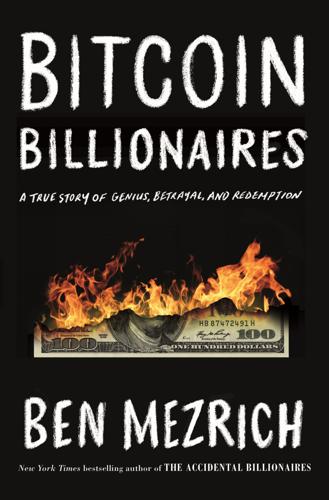
Bitcoin Billionaires: A True Story of Genius, Betrayal, and Redemption
by
Ben Mezrich
Published 20 May 2019
But as Cameron watched him walk away down Lexington Avenue, Charlie’s little form was engaged in what could only be described as a strut. 18 BRIGHT LIGHTS Almost two weeks later, the travesty of the Abercrom meeting fading into a bad memory, Tyler sat in a Starbucks, watching the crowds of tourists and Manhattanites moving along Eighth Street through the window. It was unusual for him to choose such a visible table where he’d be on display, but the place was crowded for 11:00 A.M. on a Tuesday; then again, it was Astor Place, one of the liveliest spots in the city, smack in the middle of the East Village and a stone’s throw away from NYU. Tyler had chosen the table, but not the Starbucks itself. He searched the crowd outside for any sign of their quarry. “There he is,” Cameron said, pointing in the direction of a dapper man moving toward them through the traffic jam of coffee addicts. Tall, hair flecked with silver, chiseled facial structure above a criminally square jaw, wearing what appeared to be a Savile Row suit and an ascot tied around his neck: the guy looked like he’d just stepped out of an F.
…
“Apparently he tried to hire two hit men who turned out to be undercover FBI agents. Assassins for hire …” “That’s so dark.” Cameron leaned back from the computer, then looked out over the bustling office that was now Winklevoss Capital. So many people, and almost all of them under the age of thirty, recent grads from Harvard, Yale, Columbia, NYU, Berkeley, Stanford, and so on. All of them eager to be there, gravitating toward the twins as they worked to turn Bitcoin into something respectable. And up until today, fighting that fight had meant Silk Road was hanging around their neck every day like a drug-addled albatross. And now suddenly, just like that, it was gone: cooked, just like Ross Ulbricht, the twenty-nine-year-old who had been IDed as the mogul behind the biggest illegal drug bazaar in history.

Driverless: Intelligent Cars and the Road Ahead
by
Hod Lipson
and
Melba Kurman
Published 22 Sep 2016
Manyika, Chui, Bughin, Dobbs, Bisson, and Marrs, “Disruptive Technologies.” 14. Donald Shoup, “Cruising for Parking,” Transport Policy 13 (2006): 479–486. 15. Alain Bertaud, “Self-Driving Cars in the Evolving Urban Landscape,” Marron Institute Conference on Self-Driving Vehicles, August 25, 2015, http://marroninstitute.nyu.edu/uploads/content/Self_Driving_Vehicles_in_the_Evolving_Urban_Landscape_(Marron).pdf 16. Paul Barter, “Cars Are Parked 95% of the Time; Let’s check!” Reinventing Parking, February 22, 2013, http://www.reinventingparking.org/2013/02/cars-are-parked-95-of-time-lets-check.html 17. John R. Meyer, John F.
…
SuperVision was a type of neural network called a convolutional network. Many of the convolutional network’s features were based on techniques laid out more than thirty years earlier by Dr. Fukushima for the Neocognitron. Additional refinements stemmed from work conducted by the research groups of Yann LeCun at NYU, Andrew Ng at Stanford, and Yoshua Bengio at the University of Montreal. SuperVision was a gargantuan neural network made up of thirty layers of racks of arrays of artificial neurons. In a bold move, the Toronto group proceeded to open-source their code so anyone else could use and modify it, creating a sensation in the computer-vision world.
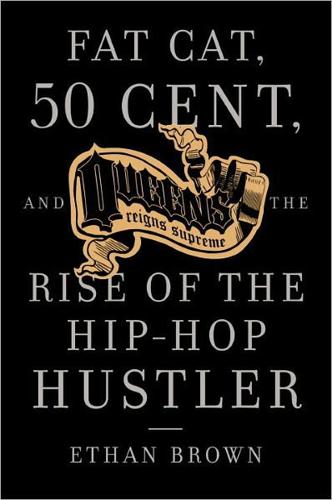
Queens Reigns Supreme: Fat Cat, 50 Cent, and the Rise of the Hip Hop Hustler
by
Ethan Brown
Published 22 Nov 2005
“They thought they could go on without us,” McDaniels says of Fresh Fest, “and they got their asses kicked.” Business couldn’t have been better for RUN-DMC and Rush Management in early 1985, but Russell Simmons still did not have a label of his own, forcing him into mediocre deals with independent labels. A Long Island–born NYU student and aspiring hip-hop producer named Rick Rubin shared Simmons’s frustrations with the music business. Rubin had produced rapper T-La Rock’s “It’s Yours,” which, with its minimalist beats programmed by Rubin on a Roland 808 drum machine and jagged, almost tactile cutting and scratching from Jazzy Jay of Afrika Bambaataa’s Soulsonic Force, was one of hip-hop’s most outré singles.
…
When Michael Holman, host of a hip-hop TV show called “Graffiti Rock,” introduced Rubin to Simmons at a party, the pair discovered that they’d been experiencing nearly identical struggles in the business. Simmons also confessed that “It’s Yours” was not just his favorite hip-hop song of the moment but also one of the “blackest” rap records he’d ever heard. As Rubin’s NYU dorm room had become something of a hip-hop hangout—he’d put his address on the record sleeve of “It’s Yours,” bringing visits from the likes of Jeff Fludd and Adam Horowitz of the Beastie Boys—Simmons surmised that Rubin would be the ideal person with whom to start a record label. For the imprint’s first release, the pair turned to James Todd Smith, aka LL Cool J, a teenage MC from Queens who had inundated Rubin’s mailbox with demo tapes.
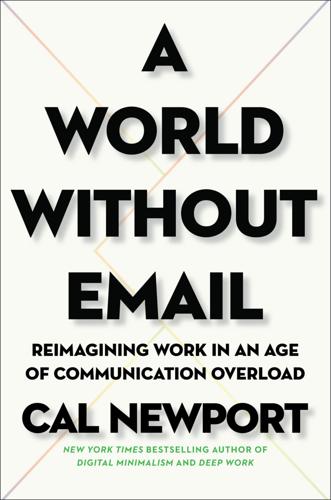
A World Without Email: Reimagining Work in an Age of Communication Overload
by
Cal Newport
Published 2 Mar 2021
The title of the paper presents a blunt question that captures much of what had started going wrong with the hyperactive hive mind approach to collaboration: Why is it so hard to do my work?16 * * * — As with Gloria Mark, Leroy’s interest in the psychology of knowledge work was inspired by personal experience. When she began her doctoral studies at NYU in 2001, she had just left a multi-year stint as a New York–based brand consultant, where she had witnessed firsthand the increasingly fragmented nature of the knowledge sector. “We had so much work,” she told me, “people were constantly switching between targets [of their attention].” At the time, the academic specialty of organizational behavior hadn’t yet considered the psychological impacts of all these interruptions.
…
In reality, fewer than 3 percent succeeded in naming the rhythmic tune.30 As Newton argued, when the tapper is knocking on the table, they hear in their head all the accompaniment for the song—the singing, the instruments—and have a hard time putting themselves into the mental state of the listener, who has access to none of that information and is instead left grappling with a puzzling jumble of sporadic knocks. Social psychologists call this effect egocentrism, and as a research team led by Justin Kruger of NYU set out to demonstrate in a surprisingly entertaining 2005 paper, appearing in The Journal of Personality and Social Psychology, it plays a big role in explaining why email drives us crazy.31 Kruger and his collaborators started by studying sarcasm. In their first experiment, they gave a group of participants a list of topics.
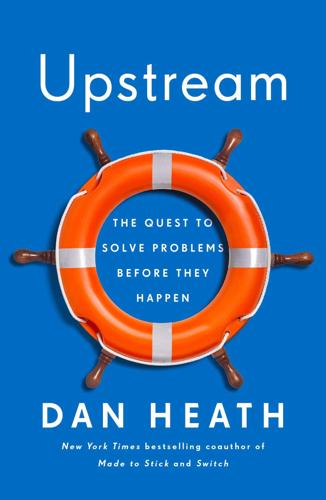
Upstream: The Quest to Solve Problems Before They Happen
by
Dan Heath
Published 3 Mar 2020
Many of them will stay in New Jersey and practice at Hackensack Meridian Health, and Rocchetti believes they will transform the health system from the inside: “Our students are going to grow up and be the force that changes the culture.” The school is betting that by drawing future doctors closer to the sources of disease and despair, they will be quicker to identify the leverage points that lead to health. Bryan Stevenson, a law professor at NYU, author, and the founder of the Equal Justice Initiative, calls this the “power of proximity.” “I believe that to make a difference in creating a healthier community, a healthier society, a healthier nation, and thus a healthier economy, we’ve got to find ways to get proximate to the poor and the vulnerable,” said Stevenson in a speech to Fortune’s CEO Initiative conference in 2018.
…
., 227 Hawken, Paul, 40, 48, 51 Hazleton Middle School, 149, 150 health, health care, 10–14, 89, 113, 127–33, 189–92, 201–4 Accountable Care Organization, 201–2, 204 ambulances, 137–40, 142, 162 Building Healthy Communities, 110–13 cancer and, see cancer capitation payment model in, 203 C-sections, 33–38 doctor training and, 130 diabetes and, 192, 201–4, 240–41 domestic violence and, 83–86, 88 Emergency Medical Services, 137–40 emergency rooms, 126–37, 161–62 fee-for-service model in, 129, 192 hospital deaths, 124 infectious diseases, 191–92 intensive care, 145–46 life expectancy, 98–102, 113–14, 190–91 mastectomies, 180–81 Medicaid, 180, 196, 240 Medicare, 113, 180, 201, 240 MRI scans, 192, 203 Nurse-Family Partnership, 194–99, 237–38 nursing homes, see nursing homes prevention in, 189–92 and saving money, 127 social determinants of health, 128 social side of medicine, 132 vaccines, see vaccines Health Initiative, The, 11 heart attacks, 138–40, 142 Hendrix, Daniel, 48, 50 hepatitis, 187 Here & Now, 124–25 Herndon, Sally, 234–35 heroism, 62–63, 182, 243–44 Hockley, Dylan, 151 Hockley, Jake, 150–51 Hockley, Nicole, 146–47, 150–51 Hodel, Donald, 69–70 Holmes, Nick, 176–77 HomeAdvisor, 200–201 homelessness, 10, 16, 90–96, 108, 128, 208, 234, 236, 239 coordinated entry and, 92–93 evictions and, 96, 108, 234 functional zero and, 95 housing first and, 92 home service industry, 200–201 homicide, 83–85, 87, 88, 116–17, 121, 126, 162, 236 Homonoff, Tatiana, 187 Hood, Christopher, 161 horses, 32–33 hospitals, 201 deaths at, 124 Emergency Medical Services, 137–40 emergency rooms, 126–37, 161–62 intensive care units, 145–46 see also health, health care “hot tub” conversations, 233 household repairs, 199–200 HUD (Department of Housing and Urban Development), 91–93 Hug-a-Hero Dolls, 229–31, 233 Human Dimension, 130 humility, 185 hurricanes, 9–10, 223 Hurricane Ivan, 218–19 Hurricane Katrina, 213–20 Hurricane Pam simulation, 214–20 Hynd, Noel, 100 IBM, 140–42 Iceland, 75–81, 125, 231, 239 ICUs (intensive care units), 145–46 “If You See Something, Say Something” campaign, 142 Imber, Amantha, 177–79 immigrants, 112 impulsivity, and violence, 117, 120–21, 123 inattentional blindness, 30 India, 177 injuries: athletic, 21–23, 29 from falling branches, 175–76 from lifting and transferring patients in nursing homes, 193–94 playground, 175 Innovative Emergency Management (IEM), 213–14, 220 Institute for Healthcare Improvement, 37, 234 insulin, 192 Intel, 168 Interface, 39–40, 48–53 internet, see computers and internet Internet of Things, 142 invasive species, 171–74, 176–77, 180 Inventium, 177–78 Inventology (Kennedy), 232 Island Conservation, 176, 184 Iton, Anthony, 97–102, 110 Jaeger, Jennifer, 91–96 Japan, 211 earthquakes in, 140 Jeanne Geiger Crisis Center, 83, 84n, 85 Jordan, Michael, 183 Kahneman, Daniel, 158–59 Kaiser Permanente (KP), 203 Kay, Allen, 142 Kennedy, Pagan, 232 Kenwood Academy High School, 24 Khosrowshahi, Dara, 3 Kirby, Elizabeth, 23–24 Kleffman, Sandy, 98 Koskinen, John, 208–11 laptop power cord, 58, 231–32 Las Vegas, 127n lawsuit data patterns, 175, 184 lazy bureaucrats, 166, 169 Lederberg, Joshua, 227, 231 legitimacy, 43 Less Medicine, More Health (Welch), 143 leverage, 115–33 life expectancy, 98–102, 113–14, 190–91 life preservers, 6–7 light switch, 57–58 Lilly, Jonathan, 202 LinkedIn, 135–37 Loblaw, David Robert, 212 Los Angeles Dodgers, 100–101 Los Angeles Times, 64 Lowlevel Windshear Alert Systems (LLWAS), 211 Luca, Michael, 159–60 Ludwig, Jens, 116, 154, 250 Maalin, Ali Maow, 15 Macleod, John, 141–42 Macquarie Island, 171–74, 176, 177n macro and micro, 236–37 macro trends, 154, 161, 162, 167 Marisa, Rich, 57–58 mastectomies, 180–81 Mayor’s Challenge, 90 McCannon, Joe, 89, 163, 238 McCutchen, Aamirah, 130–31 Meadows, Donella, 174–76, 179, 187, 188 Medicaid, 180, 196, 240 Medicare, 113, 180, 201, 240 medicine, see health, health care meetings, 183–84 Mehrotra, Vikas, 177 Meltzer, Michael, 227 Mexico City, 15 mice and rats, on Macquarie Island, 171–74, 176 Milkman, Harvey, 79 Miller, Dale, 42–43 misalignment, 161, 68–69 Molina, Mario, 65–67 Montreal Protocol, 66, 69 Moodey, Tucker, 2–3 Moon landing, 226–28 Morrissey, Larry, 90–91, 94 Mostashari, Farzad, 202 mothers: Nurse-Family Partnership and, 194–99, 237–38 parental leave for, 13 “move fast and break things” ethos, 185 “move your chair” moments, 41, 49, 53 MRI scans, 192, 203 Mullainathan, Sendhil, 59–60 NASA, 226–28 National Highway Traffic Safety Administration, 47 National Oceanic and Atmospheric Administration (NOAA), 70 National Office Management Association, 31 natural disasters, see disasters and disaster preparedness Nature, 8, 66, 68 Nautilus, 227 navigation analogy, 179–80 negative unintended consequences, 169, 171–88, 204 neighborhoods, 97–102, 106, 110–13 Network for College Success, 25 New England Patriots, 21–22 New Orleans, La.: Hurricane Ivan and, 218–19 Hurricane Katrina and, 213–20 New York, N.Y.: crime in, 162–66 falling branches in, 175–76 lawsuit data patterns in, 175, 184 New York City Police Department (NYPD), 162–66, 168 New Yorker, 83, 84n New York Times, 32, 48, 142 New York University (NYU), 133 Nike, 204 Nimoy, Leonard, 207–8, 225–26 9/11 attacks, 142, 213 911 calls, 83, 137–40 normalization, 30–31, 32 Northwell Health, 137–40 Norway, 13–14 nuclear weapons, 225, 227 Nurse-Family Partnership (NFP), 194–99, 237–38 nurses, 60–62, 63 nursing homes, 138, 139 lifting and transferring patients in, 193–94 Okerstrom, Mark, 4–5, 63 Olds, David, 194–95 O’Neill, Ryan, 1–3 Onie, Rebecca, 11 On the Media, 31 open-office plans, 177–80, 185 ownership, 38, 39–55, 70 Ozone Hole: How We Saved the Planet, 66 ozone layer, 65–70 P3, 22 paired metrics, 168, 203 parental leave, 13 Parker, Janet, 16n parking place, 232, 233 parks, 110–11, 112 tree pruning in, 175–76 Parto do Princípio, 35–36 patience and impatience, 234–35 Pavlin, Julie, 191–92 pediatricians, and automobile safety, 44–47 Pediatrics, 44, 46, 47, 48 peripheral vision, 30 Perla, Rocco, 11 Permanente Medical Group, 124 pest control, household, 199 phishing emails, 220–22 phobias, 30–31, 32 Pickering, Roscoe, 46–47 Pill Model, 237–39 Pina, Frank, 156 plastic bags, 185–88 police, 5–6, 8, 122n, 154 car accidents and, 6, 16 data and, 122n, 162–63 domestic violence and, 83, 86–88 New York City Police Department, 162–66, 168 Nurse-Family Partnership and, 196 polio vaccine, 45 Pollack Harold, 116, 117, 121, 123 Ponder, Paige, 25, 27–28, 88 Poppy + Rose, 193 poverty, 59, 97, 106 see also food assistance; homelessness Pratt, Lisa, 228 pre-gaming, 168–69 prevention, see upstream actions Princeton University, 43–44 proactive efforts, see upstream actions problem(s): addressing the wrong ones, 32–33 bandwidth and, 58–60 big and little, 58–59 blindness to, 21–38, 42, 70, 76, 128, 147, 232 designating something as, 32 early warning of, 135–51 longevity of, 233 ownership of, 38, 39–55, 70 slack and, 63, 67 Project ASSIST, 234 Project Parto Adequado, 37 prophet’s dilemma, 226 proximity, 133, 236 psychological standing, 43–44 quantity—and quality-based measures, 168 rabbits, on Macquarie Island, 171–74 Rad, Bex, 104 radiologists, 29–30 Ramirez-Di Vittorio, Anthony (Tony D), 117–20, 122, 249 RAND Corporation, 12, 180 randomized control trial (RCT), 121, 237 rape, 164–66 date rape on campus, 42–43 Ratner, Rebecca, 43 rats and mice, on Macquarie Island, 171–74, 176 reaction, see downstream actions Reagan, Ronald, 70 Reply All, 163–64 restoration, 10, 153 Reyes, Sarah, 112 Reykjavík, Iceland, 75–81, 125, 231, 239 Ridenour, Brandon, 200–201 Ringelestein, Don, 221–23 ripple effects, 169, 174, 197 a rising tide lifts all boats, 154, 161, 162, 168 Rocchetti, Carmela, 128–33 Rockford, Ill., 90–96, 108, 236, 239 ROI (return on investment), 127 Romania, 81 ROSC (return of spontaneous circulation), 139 Rowland, F.
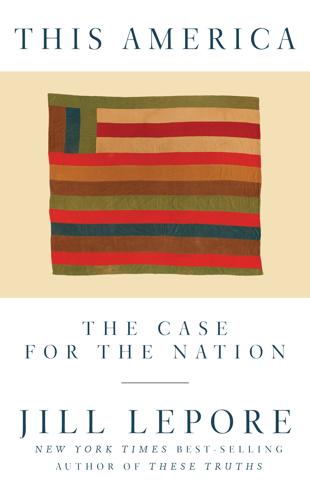
This America: The Case for the Nation
by
Jill Lepore
Published 27 May 2019
The political scientist Judith Shklar, who had fled Riga in Latvia as a child before the German invasion, is among many learned commentators who, although she acknowledged the virtue of what she described as “restrained patriotism,” deemed liberal nationalism to be an oxymoron. The philosopher Martha Nussbaum described patriotism as “morally dangerous.” Tony Judt, an English-born NYU historian who had once been a Zionist, admired the idea of a liberal nationalism but believed that it was essentially nothing more than a thought experiment. A well-meaning person could imagine such a thing, he allowed, but no one could point to anyplace on the map where it actually existed. And, as a thought experiment, he found it silly.

Coders at Work
by
Peter Seibel
Published 22 Jun 2009
There are many, many models of parallelism, which is one of the difficulties. I think that that can be greatly simplified. But multicore is one of the things that really are particularly interesting, for me at least. But there are many models of parallelism. We actually built it from existing work, particularly Dave Kuck's. Some work from NYU. We hired a group of newly minted PhDs from these places that already had built up a lot of expertise. We had a quite a lot of significant results, both on the practical and on the theoretical side—we worked on both at the same time. I'm a very strong believer that one wants to be able to take the practice into identifiable algorithms, and theory, and ways of thinking about how to solve the problems and also to take the algorithms into practice to see how really valuable they are, and how they apply.
…
Part of it would be to statistically get a handle on the quality of the code. How many bugs showed up this week, yeah. I liked the environment of a product lab because it's sort of where things get real. Seibel: When you were hiring programmers what did you look for? Allen: Well, I had a lot of connections in the universities. NYU had some fabulous compiler-writer faculty—that group was really well-trained to write compiler code. Seibel: So you could hire people recommended by the professors you knew and trusted. How about when you have to interview someone who doesn't come with a recommendation from someone you trust—how do you figure out in the course of a couple of hours whether they are going to be a good programmer?
…
A lot of women were attracted to the group, partly because there were other women there already. But it also made the group a very congenial group. And it was because of the mix—it wasn't because there were women there, but because of the mix. These people came from other organizations here, but also other educational backgrounds. I had people that came in from NYU—the Courant Institute—who had their own way of thinking about doing things because they'd come through the same graduate school. And then I had a couple people from MIT. One in particular—a woman—was on the very theoretical side and a very wonderful thinker in a different way. The Illinois people had some different characteristics.
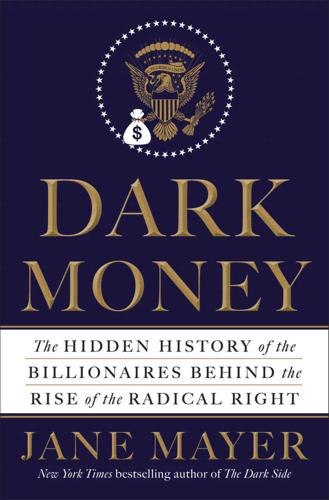
Dark Money: The Hidden History of the Billionaires Behind the Rise of the Radical Right
by
Jane Mayer
Published 19 Jan 2016
After growing up in Maplewood, New Jersey, in a family that he joked made The Sopranos look like a home movie, Fink had become a devotee of Austrian free-market theory. He hoped Charles would fund a program in it at Rutgers in New Jersey, where he was teaching part-time while pursuing a graduate degree at NYU. Courses in Austrian economics were as rare as Viennese waltzes in most colleges at that time. But soon after Fink made the pitch, Charles pledged $150,000 for the program. When Fink later asked Charles why he’d thrown so much money at a long-haired, bearded graduate student in a shiny disco suit, Charles had supposedly quipped, “I like polyester.
…
But one statistic, he said, explained why conservatives had lost: only a third of the public agreed with the statement that Republicans “care about people like you.” Further, only 38 percent believed they cared about the poor. Conservatives had an empathy problem. This mattered, Brooks explained, because, as a recent study by Jonathan Haidt, a psychologist at NYU’s Stern School of Business, had shown, Americans universally agreed with the statement that “fairness matters.” In a nod to his conservative audience, Brooks repeated, “I know it makes you sick to think of that word ‘fairness.’ ” But Americans, he said, also universally believed that “it’s right to help the vulnerable.”
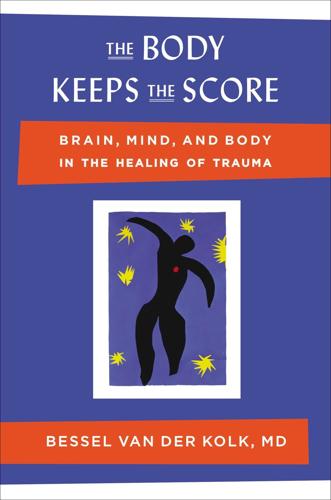
The Body Keeps the Score: Brain, Mind, and Body in the Healing of Trauma
by
Bessel van Der Kolk M. D.
Published 7 Sep 2015
My former student Glenn Saxe, now chairman of the Department of Child and Adolescent Psychiatry at NYU, showed that when children were hospitalized for treatment of severe burns, the development of PTSD could be predicted by how safe they felt with their mothers.31 The security of their attachment to their mothers predicted the amount of morphine that was required to control their pain—the more secure the attachment, the less painkiller was needed. Another colleague, Claude Chemtob, who directs the Family Trauma Research Program at NYU Langone Medical Center, studied 112 New York City children who had directly witnessed the terrorist attacks on 9/11.32 Children whose mothers were diagnosed with PTSD or depression during follow-up were six times more likely to have significant emotional problems and eleven times more likely to be hyperaggressive in response to their experience.
…
It is a rare book that integrates cutting edge neuroscience with wisdom and understanding about the experience and meaning of trauma, for people who have suffered from it. Like its author, this book is wise and compassionate, occasionally quite provocative, and always interesting.” —Glenn N. Saxe, MD, Arnold Simon Professor and chairman, Department of Child and Adolescent Psychiatry; director, NYU Child Study Center, New York University School of Medicine. “A fascinating exploration of a wide range of therapeutic treatments shows readers how to take charge of the healing process, gain a sense of safety, and find their way out of the morass of suffering.” —Francine Shapiro, PhD, originator of EMDR therapy; senior research fellow, Emeritus Mental Research Institute; author of Getting Past Your Past “As an attachment researcher I know that infants are psychobiological beings.

Scale: The Universal Laws of Growth, Innovation, Sustainability, and the Pace of Life in Organisms, Cities, Economies, and Companies
by
Geoffrey West
Published 15 May 2017
Although this was carried out in many areas of the city, it went by the wayside in Greenwich Village though it did result in the development of Washington Square Village, a project owned by New York University, which was ultimately used for faculty housing. I have actually had the pleasure of staying there for short periods during extended visits to NYU. I thoroughly enjoyed it—not because I particularly enjoyed living in a typical modern high-rise apartment complex but because it gave me immediate access to the wonderfully exciting life of Greenwich Village, SoHo, and Little Italy. These are populated with all those crazy people who contribute to the urban buzz and proliferation of galleries, restaurants, and diverse cultural activities that help make New York such a great city—all of which the prophet Moses might well have unwittingly destroyed had it not been for Saint Jane the savior.
…
In the United States it is a testament to the rallying call of Jane Jacobs that the massive highways built fifty years ago that ran through the downtown areas of major cities such as Boston, Seattle, and San Francisco have now been torn down. It is not so easy, however, to resurrect old neighborhoods and community structures that had evolved over many decades, but cities are very resilient and adaptive and will no doubt evolve something new and unexpected. As a footnote to this piece of urban history, it is ironic that NYU’s long-term strategic plans include a proposal to redevelop the Washington Square Village complex by demolishing those very same high-rise apartment buildings and restore the area to its original structure—plus ça change, plus c’est la même chose. In an interview4 in 2001 Jane Jacobs was asked: What do you think you’ll be remembered for most?

Turing's Cathedral
by
George Dyson
Published 6 Mar 2012
“There really was a caste system,” Morris Rubinoff remembers. “You could separate out different types of members and different types of full members on the basis of their willingness to engage in conversation or even associate socially with the engineers.”32 Bigelow received job offers from UCLA, RAND, NYU, RCA, the University of Michigan, Hughes Aircraft, the Defense Mapping Agency, and even the Albert Einstein College of Medicine—all of which he refused. “Julian was a man who would take his soldering iron in there and just do it,” says Martin Davis. “He would have been much better off if he had never got that tenure [at IAS].
…
“Rather than the way the Institute in Princeton worked, where Johnny had to get the money and scramble for it, at Los Alamos Nick had everything he needed,” says Harris Mayer, “and also he had Johnny von Neumann still.”50 After von Neumann’s death, it was Los Alamos, more than anywhere else, that kept his unfinished agenda alive until its importance was recognized by other institutions in later years. Robert Richtmyer, who died in 2002, moved from Los Alamos to the Courant Institute at NYU in 1953, and to Boulder, Colorado, in 1964. “I get the impression that machines are now mostly being designed not by problem-solving people but by people who regard machines as an end in themselves,” he complained to Nicholas Metropolis in 1956. “John von Neumann’s idea to put numbers and instructions in the same kind of memory was a wonderful advance, but it doesn’t follow that numbers and instructions have to be interconfusible.”51 Richtmyer, like Bigelow, was surprised that computing remained largely stuck where von Neumann had left off, with machines and codes growing in power and complexity but not in the fundamental way the systems worked.
…
“problem” (ENIAC, 1947) binary, ack.1, 1.1, 5.1, 5.2, 6.1, 6.2, 8.1, 13.1, 18.1 digital vs. analog, 12.1, 14.1 error catastrophe and error-correcting, 1.1, 12.1, 15.1 genetic, 1.1, 4.1, 11.1, 12.1, 12.2, 12.3, 14.1, 15.1, 15.2, 16.1, 17.1, 17.2 Gödel’s theorems and, 6.1, 6.2 IFF (Identification Friend or Foe), 7.1, 8.1 interstellar propagation of metazoan, 11.1, 12.1, 14.1, 16.1, 17.1 non-linear proliferation of, 1.1, 1.2, 15.1, 18.1 statistical vs. digital universal (Leibniz), 1.1, 6.1, 6.2, 6.3, 18.1 unpredictability of, prf.1, 18.1 see also cryptography (and cryptanalysis); language(s); “On Computable Numbers”; order codes; pulse-frequency coding; self-reproducing automata; software Cold War, 4.1, 4.2, 11.1, 15.1 Collected Works (von Neumann) collector societies, 12.1, 18.1 College of New Jersey, 2.1, 3.1 Colossus (cryptanalytical machine), 13.1, 16.1, 18.1, 18.2 Columbia University, 7.1, 7.2, 9.1, 16.1 command line, origins of, ack.1, ack.2, 17.1 communication, mathematical theory of (Shannon), 5.1, 7.1 Computer and the Brain, The (von Neumann, 1958) computer science, 14.1, 14.2, 14.3, 18.1 Computron Conant, James (1893–1978), 5.1, 11.1, 11.2, 11.3 continuum hypothesis Courant Institute (NYU) Crane, Hewitt (1927–2008), 8.1, 18.1 Crawford, Anne (Flexner) creationism Crick, Francis (1916–2004), 1.1, 12.1, 15.1 crossing (of gene sequences), 12.1, 12.2, 12.3, 12.4, 18.1 Crossroads Nursery School (IAS), 6.1, 7.1, 18.1 cryptography (and cryptanalysis), 1.1, 13.1 crystallography, X-ray, 8.1, 18.1 Cybernetics movement, origins of cyclogenesis Dán, Charles, 10.1, 10.2 Darwin, Sir Charles (1887–1962) DASK (Dansk Algoritmisk Sekvens Kalkulator) Davis, John H.
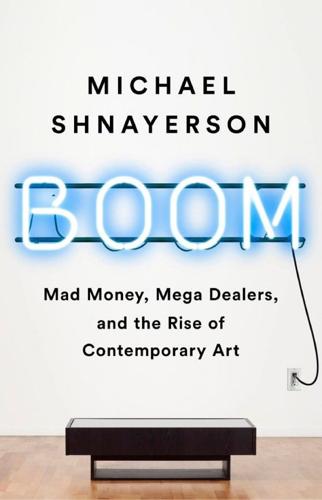
Boom: Mad Money, Mega Dealers, and the Rise of Contemporary Art
by
Michael Shnayerson
Published 20 May 2019
One of the few major dealers who did have a graduate degree was Arne Glimcher, who had graduated first from the Massachusetts College of Art and Design and then pursed an MFA at Boston University. Of the women, Mary Boone had earned degrees from the Rhode Island School of Design and Hunter College in art. Paula Cooper had studied art at the Sorbonne, Goucher College, and the Institute of Fine Arts at NYU. Barbara Gladstone had degrees from C. W. Post College and Hofstra in art history. Milly Glimcher majored in art history at Wellesley and had an MFA from NYU. Marian Goodman had studied art history at Columbia. Why the disparity? Given the workplace limitations at the time for women—both in and out of art—more women than men may have earned graduate degrees with the thought of becoming art historians or curators.
…
At 16, he moved back to Germany, where his father set him up with a car and an apartment.7 If Rudolf hoped these perks might ease David into the family business, he was wrong. Cologne was too staid and small. David pined for SoHo; not as a future art dealer, but as a jazz drummer. For an audition tape to New York University, he played along with Charlie Parker’s “Ornithology” and got in. While studying at NYU, David took a part-time job at Brooke Alexander, a dealer known for museum-quality prints, and found he loved the art he was shepherding about town.8 He was 28 in 1993 when he opened his SoHo gallery at 43 Greene Street. His father had given up trying to coax him back to Germany. Instead, Rudolf had retired, an exercise in grace.

The Survival of the City: Human Flourishing in an Age of Isolation
by
Edward Glaeser
and
David Cutler
Published 14 Sep 2021
“Straight Up Conversation: Common Core Guru Jason Zimba.” Education Next, February 28, 2013. http://www.educationnext.org/straight-up-conversation-common-core-guru-jason-zimba. Zimring, Franklin E. “The City That Became Safe: New York and the Future of Crime Control.” Straus Working Paper 09/11, Straus Institute, NYU School of Law, New York, NY, September 2011. www.law.nyu.edu/sites/default/files/siwp/WP9Zimring.pdf. Zwilling, Andrew. “Poor Leadership during Times of Disease: Malta and the Plague of 1813.” War on the Rocks, March 27, 2020. https://warontherocks.com/2020/03/poor-leadership-during-times-of-disease-malta-and-the-plague-of-1813.
…
The scientific literature generally agrees that targeting police resources toward high-crime areas reduces crime. A recent meta-analysis concludes that “hot spots policing is an effective crime prevention strategy.” A study conducted by John MacDonald of the University of Pennsylvania, Jeffrey Fagan of Columbia, and Amanda Geller of NYU finds that “impact zones were significantly associated with reductions in total reported crimes, assaults, burglaries, drug violations, misdemeanor crimes, felony property crimes, robberies, and felony violent crimes,” as well as “increases in total reported arrests, arrests for burglary, arrests for weapons, arrests for misdemeanor crimes, and arrests for property felony crimes.”
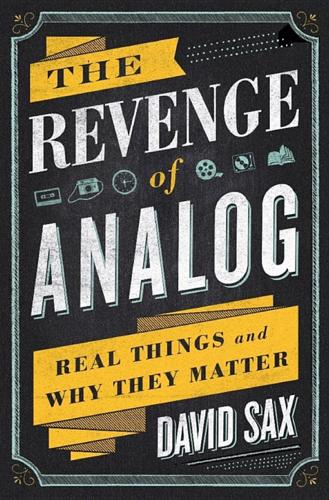
The Revenge of Analog: Real Things and Why They Matter
by
David Sax
Published 8 Nov 2016
Choosing from every book ever published seems like a dream, until you’re forced to sift through hundreds of thousands of titles on your Kindle, and all the reviews attached to them, hoping to find something good. “It’s the distinction between browsing and searching,” said Adam Alter, an associate professor of marketing at NYU Stern School of Business, who studies consumer behavior. I met Alter at a party in New York, and told him about a book I had stumbled upon at Book Culture earlier that day. It was called The Lonely Typewriter, and I only found it because it was displayed on a shelf next to where I had placed my coat.
…
Amazon’s net shipping costs have increased by more than 25 percent a year since it launched Prime in 2005 (a premium service that includes free shipping), and those costs continue increasing exponentially. During the Christmas season of 2014, two thirds of Amazon packages were shipped for free. That number used to be one third. Again, remember that “free” basically means shipping paid for by Amazon’s shareholders. According to Scott Galloway, a professor of brand strategy and digital marketing at NYU, Amazon is playing a game of Last Man Standing. Galloway, who also has experience running online retailers, made his point in jargon-y terms. “I would argue that the total universe of profitable pure-play e-commerce retailers over the medium term have been zero,” Galloway told me. In other words, simply being an e-commerce site doesn’t make money.

Only Humans Need Apply: Winners and Losers in the Age of Smart Machines
by
Thomas H. Davenport
and
Julia Kirby
Published 23 May 2016
The diagnostic tool gives her comfort in assessing lesions that are not clearly cancerous, and not clearly benign, either—those that she has some level of suspicion about. As a result far fewer biopsies are necessary. A classification of low likelihood of cancer is also comforting to patients. Dr. Day uses the tool in her daily practice with patients, but also conducted a clinical trial of the device in her work with NYU Langone Medical Center.5 What Value Do Step-In People Provide? At the simplest level, people who step in make automated systems work. They may help to configure a system during initial implementation. They will observe its initial decisions and see if they are good ones. They will develop ways to measure the ongoing performance of the system to see if it continues to decide wisely and well.
…
See health care and medicine Memorial Sloan Kettering Cancer Center, 46, 209, 215, 217 Mendez, Ray, 170 Mendonca, George, 170 Mercedes, 213 Microsoft “Bob,” 196 Mindell, David, 67 mining automation, 201–3 Mitler, Lesley, 150 Mohr, Catherine, 40 Momentum Machines, 205 Moody, Paul, 132–33 Morris, Errol, 170 Mukhamedshina, Irina, 162 Munich Re and Swiss Re, 83 Murnane, Richard, 27, 63 music, 24, 126 Musk, Elon, 225, 246, 248 MYCIN expert system, 46 Myers, Justin, 98, 222 Nadel, Edward, 132, 146 Narain, Niven, 60 Narrative Science, 22 National Trust for Historic Preservation, 240 Nature of Expertise, The (Glaser and Chi, eds.), 163 Nayar, Vineet, 204 NBA, 116–17 New Division of Labor, The (Levy and Murnane), 27 Newton, Isaac, 165 New York Federal Reserve Bank, 90 New York Stock Exchange, 11–12, 18 Nicita, Camille, 62–63 Nokia, 239 Nordfors, David, 248 Northeastern University, 232 NYU Langone Medical Center, 138 Obama, Barack, 95 Office, The (TV show), 109–10 office workers, 3, 157, 187, 217, 239 Off the Grid News, 110, 111 Oracle, 133 Orellana, Marco, 202 Oremus, Will, 127 Organisation for Economic Co-operation and Development (OECD), 27 Osindero, Simon, 126 Oxford study, U.S. jobs at risk, 2, 30 Painting Fool, 125 Palmer, Shelly, 234 Parikh, Jay, 206–7, 211 Partners HealthCare, 66 Patil, D.

Garbage Land: On the Secret Trail of Trash
by
Elizabeth Royte
Published 1 Jan 2005
She had been working unofficially at the Manhattan 7 garage, in her Upper West Side neighborhood, for the last half a year. She woke before dawn and pulled on the green uniform, then spent the next several hours dragging garbage cans from curb to truck and tipping them inside. After “getting it up” with her two male partners—ten tons or so—she took the subway downtown to her paying job. The director of NYU’s Draper Interdisciplinary Master’s Program, Nagle investigated the social meanings of trash in her graduate-level “Garbage in Gotham” class and conducted ongoing ethnographic research on sanitation workers, about whom she planned to write a book. The following spring she’d take the citywide DSNY test, answer seventy-three out of seventy-five questions correctly, and go on to ace the physical.
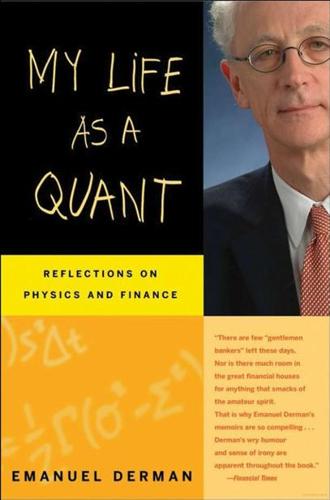
My Life as a Quant: Reflections on Physics and Finance
by
Emanuel Derman
Published 1 Jan 2004
Written by perhaps the leading practitioner of his generation, this insightful narrative explores the disparate cultures of physics, finance, and their powerful fusion known as phynance. This book is a mustread for aspiring quants, financial historians, and armchair sociologists interested in the machinations of both academia and industry." -Peter Carr, Head of Quantitative Research, Bloomberg, and Director, Masters in Math Finance, NYU Emanuel Derman To the Memory of My Parents Ambition is a state of permanent dissatisfaction with the present. PROLOGUE THE TWO CULTURES 1 Physics and finance ■ What quants do ■ The Black-Scholes model ■ Quants and traders Pure thought and beautiful mathematics can divine the laws of physics ■ Can they do the same for finance?
…
Though Mark, Bruno, and Iraj and I were among the first theorists to use local volatility to tackle the smile, various other people had similar ideas. In particular, I came across a closely connected paper by Avi Bick, an Israeli finance professor at Simon Fraser University in Canada. In November 1994, speaking at an NYU conference Derivatives: The State of the Art, I was buoyed to hear Gary Gastineau, himself the author of an options text, comment that our model would make markets more liquid by making options pricing more accurate. Although we did live to see local volatility become a household word and a textbook topic, I discovered that it was much more difficult than I had imagined to create a truly successful financial model.
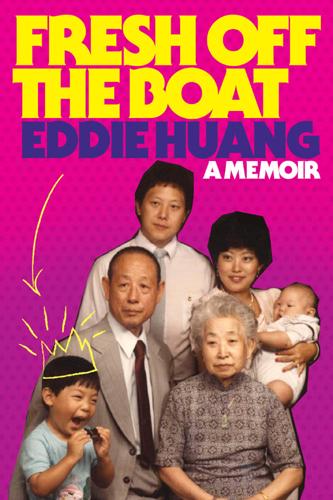
Fresh Off the Boat
by
Eddie Huang
Published 29 Jan 2013
Every single one of the motherfuckers is voting Obama! Think about it. You’re preaching to the choir.” In March of 2007, I got a call from the biggest supporter Hoodman would ever have: Nima Nabavi. At the time, Nima was the godfather of online streetwear. Before all the other Internet retailers, Nima was doing it right. He went to grad school at NYU and he started Digital Gravel to sell street art, streetwear, music, and basically anything related to hip-hop or street culture in general. He was the only other person I met in streetwear who understood its power beyond a five-year blip on the fashion radar and wanted to use it to promote the things he believed in.
…
Kid came in with fucked-up Adidas high-tops, random Japanese baseball jerseys from thrift shops, and a Phillies cap. We hired him on the spot. The second hire, and to this day my favorite Baohaus employee of all time, was Kate Francis. This was her cover letter: Hello, I am writing in response to your Craigslist ad posted on February 4th. My name is Kate and I’m a recent art history graduate from NYU. I also have a degree in Shaolin shadow-boxing aka I can go back and forth on the Wu and Killa Cam in his best years (IMO the pink-fur wearing image I saw on your blog ~ the time of Purple Haze). I live nearby on the LES and although I don’t have experience in food service, I do love food in a very genuine, this tastes good and I like it way.
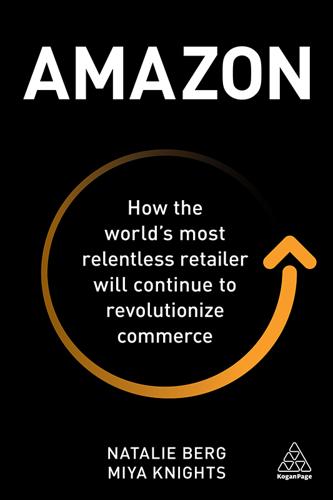
Amazon: How the World’s Most Relentless Retailer Will Continue to Revolutionize Commerce
by
Natalie Berg
and
Miya Knights
Published 28 Jan 2019
Speaking at a logistics conference in 2018, Sir Ian Cheshire, Chairman of Debenhams, noted that the average retailer reinvests 1–2 per cent of its revenues into systems. Amazon reinvests 6 per cent. ‘That’s a factor of 5:1 which is going back into a better toolkit, testing and infrastructure’, he said.23 NYU professor Scott Galloway takes this one step further with this assertion that Amazon is ‘playing unfair and winning’. He explains: ‘They have access to cheaper capital than any company in modern history. Amazon can now borrow money for less than the cost of what China can borrow money [for]. As a result, they’re able to throw up more stuff against the wall than any other firm.’24 As a competitor, how can you possibly keep up with a company that has zero obligation to report a profit?
…
(and) 242–45 basic principles for retailers’ co-existence with Amazon 244 regulation and legislation 243 Connected Home 46 Connell, B (CEO, Target) 226 Co-op 209 see also Italy and Deliveroo delivery service 102 Costco 46, 181, 217 Cummins, M (CEO, Pointy) 172 Darvall, M (director of marketing and communications,Whistl) 215–16 Debenhams 81, 193, 194 definition(s) of showrooming 174 webrooming 168 Dhaliwal, T (MD, Iceland) 116 Diewald, G (head of Ikea US food operations) 189 digital automation and customer experience 165–85 see also ROBO and ZMOT the digital customer experience 176–83 see also subject entry location as a proxy for relevance 170–73, 173 research online, buy offline 167–70 the store as a showroom 174–76 see also definition(s) the digital customer experience (and) 176–83 see also robots digital points of purchase 179–80 the human touch, importance of 180–81 intelligent space 177–79 from self-checkout to no checkout 182–83 Dixons Carphone (Currys PC World) 188 membership scheme for use of washing machines, etc 201 drones 238 see also JD.com Prime Air 151 Dunn, A (CEO, Bonobos, 2016) 75 East, M (former M&S executive) 116 eBay 36, 216–17 and Shutl 217 e-commerce, growth of 48 Edison, T: quoted on failure 11 end of pure-play e-commerce: Amazon’s transition to bricks and mortar retailing 62–86 Amazon makes it move 77, 80–82, 78–79, 80 clicks chasing bricks – the end of online shopping 71–77 O2O: incentives for getting physical 72–75 cost of customer acquisition 74–75 shipping costs 73–74 O2O: who and how 75–77 key drivers of convergence of physical and digital retail (and) 66–71 click, collect and return 69–70 pervasive computing: shopping without stores or screens 70–71 role of mobile: frictionless, personalized experience 67–69 role of mobile: knowledge is power 66–67 next-generation retail: quest for omnichannel 63–66 electronic shelf labels (ESLs) 177–79 The Everything Store 6, 29 see also Stone, B Facebook 45, 76 Marketplace 213 Messenger purchasing bot 179 Payments 213 Fear of Missing Out (FOMO) 55 FedEx 224–25, 229 figures Amazon operating margin by segment 19 Amazon opened first checkout-free store, Amazon Go (2018) 109 Amazon’s first-ever bricks and mortar retail concept, Amazon Books, 2015 80 the flywheel: the key to Amazon’s success 7 growing complexity of fulfilling e-commerce customer orders 211 growing importance of services: Amazon net sales by business segment 18 Market Capitalization: Select US Retailers (7 June 2018) 6 new fulfilment options driving heightened complexity in retail supply chains 210 online-only is no longer enough: Amazon acquired Whole Foods Market (2017) 108 playing the long games: Amazon sales vs profits 12 top reasons why US consumers begin their product searches on Amazon 173 France (and) 2, 113 see also Auchan and Carrefour Amazon and Fauchon and Monoprix 103 ‘click and drive’ 208 Monoprix 236 frugality 9, 122 at Amazon, Mercadona and Walmart 9 Furphy, T 94 Galloway, S (NYU professor) 14 Generation Z 54 Germany (and) 2, 35, 209, 232 Amazon and Feneberg 103 H&M ‘Take Care’ service 49 Metro 191 retailer HIT Sütterlin 180 Rossman drugstore chain 236 unions call for strikes over Amazon workers’ pay rates (2013) 229 Gilboa, D (co-founder Warby Parker) 75 Gimeno, D (Chairman, El Corte Ingles) 52 Glass, D (CEO, Walmart) 50 global shipping market, worth of 230 Goldman Sachs 13 and independent factors correlating to online grocery adoption & profitability 88 Google 1, 14, 19, 45, 66, 76, 115, 154, 179 Assistant 157, 160 Checkout 213 DeepMind 159 Express 157, 160, 217 Home 153, 157 Knowledge Panel 171, 172 Maps 172, 177 Nest heating thermostat controller 155 Play 213 Search 157 See What’s In Store (SWIS) 171–72 Shopping Actions 157 What Amazon Can’t Do (WACD) 171 and ‘zero moment of truth’ (ZMOT) 171, 172 Great Recession 48, 122 Gurr, D (Amazon UK Country Manager UK, (2018) 21, 29, 44, 64 Ham, P 94 Hamleys: Moscow store mini-theme park 196 Han, L (General Manager of International Supply Chain, JD Logistics) 235 Harkaway, N 222 Herbrich, R (Amazon, director of machine learning) 150 Herrington, D 94 Home Depot 2, 157, 172 online returns instore 70 Huang, C (founder and CEO of Boxed, 2018) 71 Ikea (and) 71 acquires TaskRabbit (2018) 202 mobile AR 175 Place app 175 India 31, 116 see also Prime Video and Walmart Amazon Stella Flex service tested in 232 Instacart 89, 112–13, 119, 157, 216, 219, 224, 236 Sprouts teamed with 103 Intel and RealSense technology for ESLs (2018) 178 intelligence software: trialled by The Hershey Company, Pepsi and Walmart 178 Internet of Things (IoT) 70, 96 Italy 16, 209 see also Carrefour Co-op’s ‘store of the future’ in 191 James, S (Boots CEO) 55 Japan (and) 2, 35 Prime Video 31 Tokyo 102 Uniqlo 175–76 JD.com (and) 182–83, 230 7fresh 112, 183 BingoBox 182 Europe–China freight train (2018) 235 Logistics 235 online retail: opening 1000 stores a day in China 63 use of drones 238 John Lewis (and) see also Nickolds, P co-working space 193 customers staying overnight 187 ‘discovery room’ 200 Jones, G (CEO, Borders) 47 Kaness, M (CEO, Modcloth) 76 Kenney, M 190 Khan, L 242, 243 Kiva Systems 94, 151, 223 see also robots Kohl’s 2, 70, 81, 193, 233 Kopalle, Professor P 151 Kroger 2, 19, 46, 114–15, 208 see also case studies HomeChef 116 ‘Scan, Bag, Go’ 214–15 smart shelf solution 178 Kwon, E (former executive Amazon fashion) 127 Ladd, B 13, 115, 219 see also case studies Landry, S (VP, Amazon Prime Now) 218 the last-mile infrastructure 222–41 see also Amazon Amazon as a carrier 231–32 fulfilment by Amazon 232–33 growing IT infrastructure 226–29 last-mile labour 223–26 race for the last mile 233–36 real estate demand 229–31 remote innovation 236–38 Leahy, Sir T 62 Lebow, V 54, 122 see also articles/papers legislation (US) and calls for legislation to be rewritten and regulation of tech giants 243 Tax Act (2017) 16 Lego 195 allows building in-store 196–97 AR kiosks in stores (2010) and X app 175 Leung, L (Prime Director) 29 Levy, H P 147 Lidl 33, 51, 122, 209 Limp, D (Amazon Digital Devices SVP) 153 Liu, R (JD.com founder/chief executive) 182 lockers/collection lockers 74, 90, 112, 209–10, 233 emmasbox (Germany) 209 Lore, M (co-founder of Quidsi; CEO Walmart domestic e-commerce operations) 76–77, 97, 224, 235, 236 loyalty schemes 32–33 Ma, J (founder, Alibaba) 63 McAllister, I (Director of Alexa International) 10, 19 McBride, B (ASOS Chairman, former Amazon UK boss) 9 Mackey, J (Whole Foods Market CEO and Co-Founder) 107, 110 McDonalds McDelivery 218 in Walmart stores 189 McMillon, D (CEO, Walmart, 2017) 87, 89, 107 Macy’s 52, 69, 71, 172, 177, 193 New York store as ‘World’s Largest Store’ 50 Mahaney, M (RBC Capital Managing Director/analyst) 14, 111 Mansell, K (Chairman, President and CEO of Kohl) 233 Marks & Spencer (M&S) 49, 81, 193, 196 delivery service partnership with Gophr 102 Marseglia, M (Director, Amazon Prime) 101 Mastandrea, M 94 Mathrani, S (CEO of GGP) 49 Mehta, A (CEO, Instacart) 113 MercadoLibre as Latin America’s answer to eBay 36 Metrick, M (president, Saks Fifth Avenue) 190 Microsoft 19, 115 Bing 173 checkout-less store concept 182 Millennials 122, 144, 157 Miller, B (Miller Value Partners) 13 Millerberg, S (managing partner, One Click Retail) 158 Misener, P (Amazon VP for Global Innovation) 10 Mochet, J P (CEO of convenience banners, Casino Group, 2018) 192 Morrisons 102, 209, 217, 236 Mothercare 195, 196 Motley Fool 15 see also Bowman, J Mountz, M 94 Mulligan, J (chief operating officer, Target) 225–26 Musk, E 194 near-field communications (NFC) technology 178–79 Newemann, A (CEO WeWork) 192 Next 188 and pizza and prosecco bars instore 190 Nickolds, P (MD, John Lewis, 2017) 64 Nike 103 selling on Amazon 127 Nordstrom, E (Co-President, Nordstrom, 2017) 45 Nordstrom 135, 193 Local (launched 2017) 199 Ocado 19, 112–15, 135 see also Clarke, P and Steiner, T and Alexa 157 deal with Casino Groupe (2017) 113 Smart Platform 113 Olsavsky, B (Amazon CFO, 2018) 124 One Click Retail 90, 123, 129, 155, 158 online to offline (O2O) 63 capabilities 216 incentives for getting physical 72–75 who and how 75–77 Ovide, S (Bloomberg) 47, 119, 154 Park, D (co-founder, Tuft & Needle) 81 PayPal 45, 137, 213–14 Peapod 87 see also Bienkowski, C and ‘Ask Peapod’ skill for Alexa 156–58 Penner, G (Walmart Chairman, 2017) 77 Perrine, A (Amazon General Manager, 2018) 29 polls see reports Price, Lord M (former Waitrose MD) 51 Prime (and) 11, 14, 20, 92, 112, 121, 137, 153, 174, 210, 215, 217, 218, 222, 227 see also Prime 2.0; Prime Air; Prime ecosystem and Prime Now AmazonFresh 34 AmazonFresh Pickup 37 Day 32, 136, 147 Fresh Add-on 237 members 2 Pantry 34, 100–101, 226, 227 Video 30–31 Wardrobe 128, 226 Prime 2.0 (and) 38–40 ‘Invent and Simplify’ Leadership Principle 143 looking to new demographics for growth 39 more bells and whistles 38 more fee hikes 40 Prime Wardrobe (2017) 38–39 Prime Air 151 development centres U~S, Austria, France, Israel 238 first autonomous drone delivery 238 Prime ecosystem: redefining loyalty for today’s modern shopper (and) 28–40 advantages for Amazon 33–35 going global 35–36, 35–36 integrating Prime at point of sale 38 Prime 2.0 38–40 see also subject entry Prime as loyalty programme?
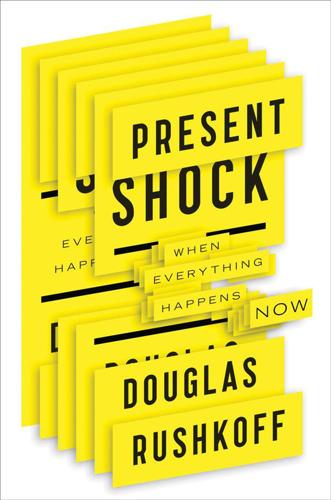
Present Shock: When Everything Happens Now
by
Douglas Rushkoff
Published 21 Mar 2013
Silicon Valley needed artistic visionaries to bring the code to life, and so they tapped the fringes of arts culture for them. Now that more than twenty years have passed, it is the artists who are trying to keep up with the technologists. At digital arts organizations such as Rhizome and Eyebeam, as well as digital arts schools from NYU’s Interactive Telecommunications Program and Parsons Design and Technology program, it is the technologists who are leading the way. Self-taught, long-haired programmers create new routines and interfaces, while well-dressed and well-read MFAs struggle to put this work into historical context. The artists are the geeks, and the programmers are the performers.
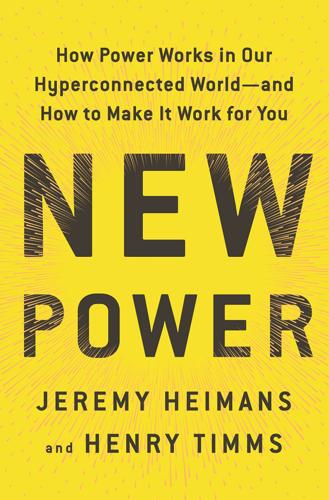
New Power: How Power Works in Our Hyperconnected World--And How to Make It Work for You
by
Jeremy Heimans
and
Henry Timms
Published 2 Apr 2018
Open innovation is the concept of enlisting the crowd to help solve your problem. Unlike the old power method, where a small number of experts have exclusive access to tools, data, and machines, the goal of open innovation is to invite everyone to engage. The story of NASA’s efforts to open up comes from the research and insights of NYU professor Hila Lifshitz-Assaf. She spent three years deep inside the agency; a fly on the wall for a period of dramatic—and tense—change. The Johnson Space Center’s effort was led by its Space Life Sciences Directorate (SLSD), under doctor and flight surgeon Jeffrey Davis. The directorate picked out fourteen strategic research and development challenges and laid them out on open innovation platforms for the world to take on.
…
Platform owners: The entity that controls who is allowed to participate in the platform and its governance, deciding how value is distributed and even whether the platform lives or dies. Where there is no owner, platform stewards play sometimes informal leadership roles. Platform strongman: A Co-opter who deploys new power tools and methods in order to advance authoritarian values. Problem solvers and solution seekers: Terms surfaced by NYU professor Hila Lifshitz-Assaf to describe, respectively, those within an organization who resist efforts to open up to the participation of the wider community and those who more easily make the shift. Problem solvers find their identity in the old power value of expertise while solution seekers expand the boundaries of their professional world to invite outsiders in.
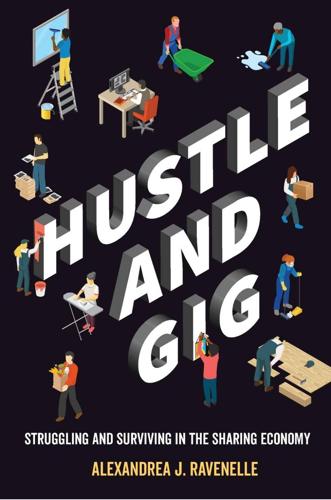
Hustle and Gig: Struggling and Surviving in the Sharing Economy
by
Alexandrea J. Ravenelle
Published 12 Mar 2019
“Seek Ways to Lessen Factory Dangers.” March 26. ———. 1994. “Proctor and Gamble Company Reports.” January 28. Norén, Laura. 2010. “Only Dogs Are Free to Pee: New York Cabbies’ Search for Civility.” In Toilet: Public Restrooms and the Politics of Sharing. Ed. Harvey Molotch and Laura Norén. NYU Series in Social and Cultural Analysis. New York: NYU Press. Kindle edition. Occupational Safety and Health Administration. 2010. OSHA FactSheet: Preventing Violence against Taxi and For-Hire Drivers. Washington, DC: U.S. Department of Labor. O’Donovan, Caroline. 2017. “A Senator Just Introduced the First-Ever National Gig Economy Bill.”

Ghost Road: Beyond the Driverless Car
by
Anthony M. Townsend
Published 15 Jun 2020
Morley, “Building Boom Not Likely to Ease NY-NJ Warehouse Rate Pressure,” JOC.com, April 25, 2018. https://www.joc.com/port-news/us-ports/port-new-york-and-new-jersey/building-boom-not-likely-ease-ny-nj-warehouse-rate-pressure_20180425.html. 197eating out less than ever: Sarah Kaufman, “Online Consumption and Mobility Practices: Crossing Views from Paris and Manhattan,” NYU Wagner, November 26, 2018, https://wagner. nyu.edu/impact/research/publications/online-consumption-and-mobility-practices-crossing-views-paris-and. 197China’s fastest-growing sectors today: Mara Hvistendahl, “China’s Tech Giants Want to Go Global. Just One Thing Might Stand in Their Way,” MIT Technology Review, December 19, 2018, https://www.technologyreview.com/s/612598/chinas-tech-giants-want-to-go-global-just-one-thing-might-stand-in-their-way/. 199“sheds with beds”: Citi GPS and Oxford Martin Programme on Technology and Employment, Technology at Work v. 3.0: Automating E-commerce from Click to Pick to Door, Global Perspectives and Solutions (Citigroup, 2017), 83. 202synergy of software trains and compact neighborhoods: John Markoff, “Urban Planning Guru Says Driverless Cars Won’t Fix Congestion,” New York Times, October 27, 2018, https://www.nytimes.com/2018/10/27/technology/driverless-cars-congestion.html. 202Switzerland’s Les Vergers Ecoquartier: “Venir aux Verges,” Les Vergers Ecoquartier, accessed May 23, 2019, https://www.lesvergers-meyrin. ch/ecoquartier/venir-aux-vergers. 202Micromobility, as this emerging sector is called: Joe Cortright, “What Drives Ride-Hailing: Parking, Drinking, Flying, Peaking, Pricing,” City Commentary, February 19, 2018, http://cityobservatory.org/what-drives-ride-hailing-parking-drinking-flying-peaking-pricing/; under-five-mile journeys: “Disrupting the Car: How Shared Cars, Bikes, Scooters, Are Reshaping Transportation and Cannibalizing Car Ownership,” CB Insights Research Briefs, September 5, 2018, https://www.cbinsights.com/research/disrupting-cars-car-sharing-scooters-ebikes/. 202more rides via its Jump bike-share: Tony Bizjack, “What’s More Popular Than Uber?

After Europe
by
Ivan Krastev
Published 7 May 2017
Pew Research Center, July 2016, “Europeans Fear Wave of Refugees Will Mean More Terrorism, Fewer Jobs,” Global Attitude Survey, Spring 2016. http://assets.pewresearch.org/wp-content/uploads/sites/2/2016/07/Pew-Research-Center-EU-Refugees-and-National-Identity-Report-FINAL-July-11-2016.pdf. 32. Henry Foy, “Poland’s New Majoritarians,” The American Interest 12 (June 7, 2016). http://www.the-american-interest.com/2016/06/07/polands-new-majoritarians/. 33. Tony Judt, A Grand Illusion?: An Essay on Europe (New York: NYU Press, 2011), 57. Chapter 2 1. Timothy Garton Ash, “Is Europe Disintegrating?,” The New York Review of Books, January 19, 2017. 2. Special Eurobarometer 379, 2012, http://ec.europa.eu/public_opinion/archives/ebs/ebs_379_en.pdf. 3. Roberto Stefan Foa and Yascha Mounk, “The Democratic Disconnect,” Journal of Democracy 27, no. 3 (July 2016): 5–17, 7. 4.
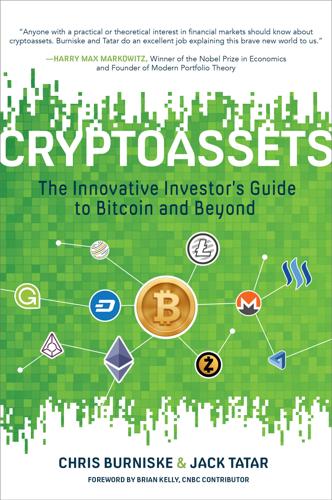
Cryptoassets: The Innovative Investor's Guide to Bitcoin and Beyond: The Innovative Investor's Guide to Bitcoin and Beyond
by
Chris Burniske
and
Jack Tatar
Published 19 Oct 2017
We’ll describe wallets in detail in Chapter 14. 11. http://www.bankofengland.co.uk/publications/Documents/quarterlybulletin/2014/qb14q3digitalcurrenciesbitcoin1.pdf. 12. http://insidebitcoins.com/new-york/2015. 13. https://www.bloomberg.com/news/features/2015-09-01/blythe-masters-tells-banks-the-blockchain-changes-everything. 14. http://www.economist.com/news/leaders/21677198-technology-behind-bitcoin-could-transform-how-economy-works-trust-machine. 15. The computers are not technically miners because they are not minting any new assets and they are not paid directly for their work. 16. http://www.nyu.edu/econ/user/jovanovi/JovRousseauGPT.pdf. 17. http://www.gartner.com/newsroom/id/3412017. 18. http://www.gartner.com/technology/research/methodologies/hype-cycle.jsp. Chapter 4 1. Network value = (units of the asset outstanding) × ($ value per asset). This is often referred to as the market capitalization of an asset on many current resources, but the authors prefer this term as more accurately conveying the total value of a cryptoasset. 2. https://coinmarketcap.com/. 3. http://cryptome.org/jya/digicrash.htm. 4.
…
Market indices were used, as opposed to ETFs, because these indices do not have management fees, similar to how the price of bitcoin does not incorporate management fees. If one wanted to invest in bitcoin or ETFs that represent these broad market indices there would be a diversity of fees among the instruments. 5. http://pages.stern.nyu.edu/~adamodar/New_Home_Page/datafile/histretSP.html. 6. This time period was used as it was the closest to a 5-year cut that the authors could derive given Facebook’s recent IPO. 7. To represent U.S. bonds, U.S. real estate, gold, and oil, we used the Bloomberg Barclays US Aggregate Bond Index, the Morgan Stanley Capital International US Real Estate Investment Trust Index, the gold index underlying the SPDR Gold Shares ETF, and crude oil futures, respectively. 8.
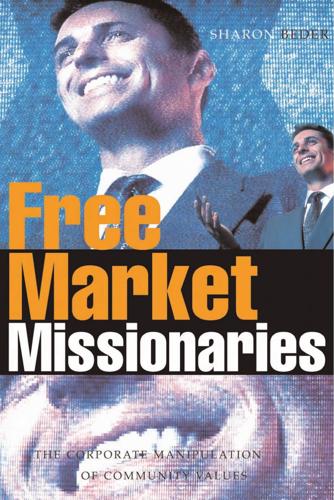
Free Market Missionaries: The Corporate Manipulation of Community Values
by
Sharon Beder
Published 30 Sep 2006
Keating, ‘A Walk on the Supply Side’, The Freeman, vol 45, no 5, 1995. 32 Krugman, Peddling Prosperity, pp83–6; Blumenthal, The Rise of the CounterEstablishment, pp8, 179. 33 Paul Krugman, ‘The Dismal Science’, Slate Magazine, 15 August 1996, http://slate. msn.com/code/story/actions. 34 Blumenthal, The Rise of the Counter-Establishment, pp169–70. 35 Ibid., pp169–70. 36 Ibid., p203. 37 Nouriel Roubini, ‘Supply Side Economics: Do Tax Rate Cuts Increase Growth and Revenues Reduce Budget Deficits?’ Nouriel Roubini, 1997, http://equity.stern.nyu. edu/~nroubini/SUPPLY.HTM; Krugman, Peddling Prosperity, pp83–6; Blumenthal, The Rise of the Counter-Establishment, pp8, 179. 38 Galbraith, The Culture of Contentment, p108. 39 Douglas F. Greer, ‘Contestability in Competition Policy: Replacement, Supplement, or Impediment?’ in Alan Bollard (ed) The Influence of United States Economics on 108 40 41 42 43 44 45 46 47 48 49 50 51 52 53 54 55 FREE MARKET MISSIONARIES New Zealand, Wellington, NZ-US Educational Foundation and the New Zealand Institute of Economic Research, 1988, pp40–41.
…
E. (2005) ‘Bush to Return to “Ownership Society” Theme in Push for Social Security Changes’, New York Times, 16 January, p20 Rothman, R. (1989) ‘High-School Students “Fail” Test of Basic Economics’, Education Week, vol 8, no 16, p8 Roubini, N. (1997) ‘Supply Side Economics: Do Tax Rate Cuts Increase Growth and Revenues Reduce Budget Deficits?’, http://equity.stern.nyu.edu/~nroubini/SUPPLY. HTM Rowell, A. (1996) Green Backlash: Global Subversion of the Environment Movement, Routledge, London and New York Rusbridger, A. (1987) ‘A Thought for Tomorrow’, The Guardian, 22 December, http:// politics.guardian.co.uk/thinktanks/comment/0,,527214,00.html Sale, K. (1993) The Green Revolution: The American Environmental Movement, 1962– 1992, Hill and Wang, New York Saloma, J.

This Will Make You Smarter: 150 New Scientific Concepts to Improve Your Thinking
by
John Brockman
Published 14 Feb 2012
Having the term “contingent superorganism” in our cognitive toolkit may help people to overcome forty years of biological reductionism and gain a more accurate view of human nature, human altruism, and human potential. It can explain our otherwise freakish love of melding ourselves (temporarily, contingently) into something larger than ourselves. The Pareto Principle Clay Shirky Social and technology network topology researcher; adjunct professor, NYU Graduate School of Interactive Telecommunications Program; author, Cognitive Surplus: Creativity and Generosity in a Connected Age You see the pattern everywhere: The top 1 percent of the population controls 35 percent of the wealth. On Twitter, the top 2 percent of users sends 60 percent of the messages.
…
Apparently our intuitive psychiatry has similar limits. The sooner we learn those limits, the better we’ll be able to help people with serious mental illnesses, and the more humble we’ll be about our own mental health. ARISE Joel Gold Psychiatrist; clinical assistant professor of psychiatry, NYU Langone Medical Center ARISE, or Adaptive Regression In the Service of the Ego, is a psychoanalytic concept recognized for decades but little appreciated today. It is one of the ego functions, which, depending on whom you ask, may number anywhere from a handful to several dozen. They include reality testing, stimulus regulation, defensive function, and synthetic integration.
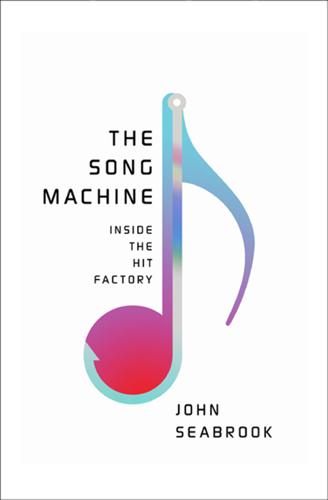
The Song Machine: Inside the Hit Factory
by
John Seabrook
Published 4 Oct 2015
They also had no idea how Fenty would respond to the pressure of an audition. “I mean it’s one thing to be in front of Clive Davis, who she’s never heard of,” Rogers says. “It’s another thing to be in front of her idol, Jay-Z. She could go all to pieces.” DEF JAM WAS STARTED by Rick Rubin in his dorm room at NYU in 1983, after Rubin produced Jazzy Jay’s album It’s Yours. Thanks mainly to the A&R work of Russell Simmons, with whom Rubin soon joined forces, and some deft MTV dealings, Def Jam brought hip-hop into the commercial mainstream. They broke seminal acts like LL Cool J and the Beastie Boys, and signed Run–D.M.C.
…
., 9, 251–53, 269, 276 National Guitar Summer Workshop, 241–42, 244 National Public Radio (NPR), 193 Natural, 102 Nebraska, 144 Nelson, Ozzie, 112 Nelson, Willie, 129 Neptunes, 123, 188, 203, 210 Netflix, 285 “Never Ever,” 206 “Never Gonna Give You Up,” 73 Nevermind, 41 New Edition, 48–49, 54, 141 New Jack Swing, 46, 75, 172 New Kids on the Block, 48–52, 54–56, 89, 96, 121, 173 financial success of, 49 hits of, 49 merchandise marketing of, 49–50 personality types in, 50, 52 News Corporation, 125 Newtown massacre, 277 New Wave, 59, 79 New York, N.Y., 31, 46, 59, 60, 70, 79–80, 84–86, 88, 91, 135, 136, 208, 211 Battery Park City, 48 Brooklyn, 111, 181 Central Park, 50 Manhattan, 42, 47, 48 Queens, 47 Times Square, 63, 97 Washington Square Park, 241 New Yorker, 144 New York Public Library, 62 New York University (NYU), 179 New Zealand, 124 Ne-Yo, 204, 208–9, 211–12, 226 recordings of, 208, 215 songwriting of, 186, 208, 212, 214–16 Nielsen SoundScan, 104 9/11 terrorist attacks, 122, 124, 125, 134 1989, 299, 306 “1999,” 97 Nineties, The (film), 64–65 Nirvana, 5, 41, 80 Nitzsche, Jack, 70 Nobles, Vada, 178 “Nobody,” 156 Nobrow (Seabrook), 125 “No Coke,” 34 noise sounds, 30 Northeastern University, 114 Norway, 27, 209–10 No Strings Attached, 104, 106, 299 ’N Sync, 16, 95–96, 99–100, 119 creation of, 83–84 hits of, 138 members of, 83 Pearlman and, 83–84, 101–3 recordings of, 101, 104, 106, 117, 173, 299 “Numbers,” 32 Oakey, Philip, 24 “O’Brien Is Tryin’ to Learn to Talk Hawaiian,” 112 Observer (New York), 183 Ocean, Billy, 59 “Oh Helen!
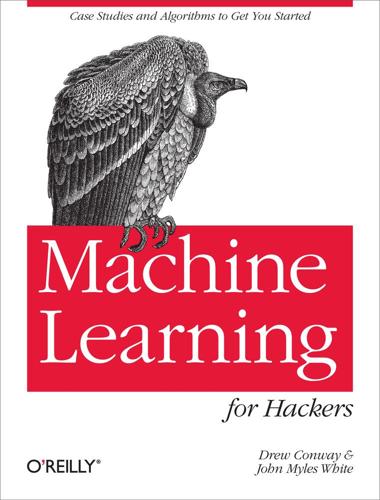
Machine Learning for Hackers
by
Drew Conway
and
John Myles White
Published 10 Feb 2012
Social graph Twitter user# of friends following% of friends following cshirky 80 0.3053435 bigdata 57 0.2175573 fredwilson 57 0.2175573 dangerroom 56 0.2137405 shitmydadsays 55 0.2099237 al3x 53 0.2022901 fivethirtyeight 52 0.1984733 theeconomist 52 0.1984733 zephoria 52 0.1984733 cdixon 51 0.1946565 If you know Drew, these names will make a lot of sense. Drew’s best recommendation is to follow Clay Shirky (cshirky), a professor at NYU who studies and writes on the role of technology and the Internet in society. Given what we have already learned about Drew’s bifurcated brain, this seems like a good match. Keeping this in mind, the rest of the recommendations fit one or both of Drew’s general interests. There is Danger Room (dangerroom); Wired’s National Security blog; Big Data (bigdata); and 538 (fivethirtyeight), the New York Times’ election forecasting blog by Nate Silver.
…
SpamAssassin public corpus, This or That: Binary Classification, Priority Features of Email Twitter API, Hacking Twitter Social Graph Data which function, Converting date strings and dealing with malformed data Windows, installing R language on, Windows write.graph function, Local Community Structure X xlab function, Analyzing the data XML package, for R, Loading and Installing R Packages XML-based file formats, Local Community Structure (see GraphML files) Y ylab function, Analyzing the data ymd function, Unsupervised Learning About the Authors Drew Conway is a PhD candidate in Politics at NYU. He studies international relations, conflict, and terrorism using the tools of mathematics, statistics, and computer science in an attempt to gain a deeper understanding of these phenomena. His academic curiosity is informed by his years as an analyst in the U.S. intelligence and defense communities.
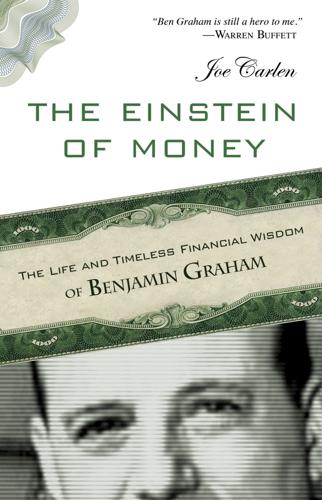
The Einstein of Money: The Life and Timeless Financial Wisdom of Benjamin Graham
by
Joe Carlen
Published 14 Apr 2012
Brandes, May 19, 2011, San Diego, CA. 9. Live interview with Dr. Bernard Sarnat and Rhoda Gerard Sarnat, July 18, 2011, Los Angeles, CA. 10. William L. Silber, “What Happened to Liquidity When World War I Shut the NYSE?” Journal of Financial Economics (2001), Asset Management Research Group: NYU Stern School of Business, March 2007, http://people.stern.nyu.edu/wsilber/Article%20What%20Happened%20When%20%20JFE%205%2020%2005%20FINAL%20PAPER.pdf. 11. Graham, Memoirs of the Dean of Wall Street, p. 136. 12. Simon Doolittle, “A Lifetime of Perspective on Wall Street's Hard Times,” New York Times, April 4, 2009. 13. Ibid. 14.
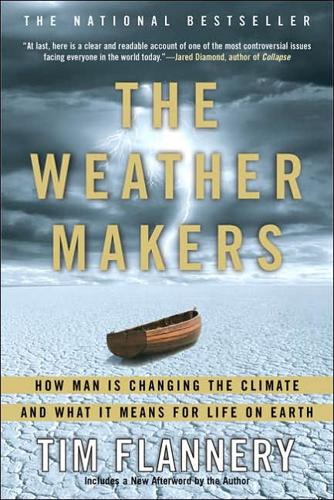
The Weather Makers: How Man Is Changing the Climate and What It Means for Life on Earth
by
Tim Flannery
Published 10 Jan 2001
Eric Strong, “Gaia and Selfish Genes: Differing Perspectives on Life,” New York Times on line, http://endeavor.med.nyu.edu/~strone01/gaia. html (November 1997). 4. A. H. Knoll, Life on a Young Planet (Princeton: Princeton University Press, 2004). 5. A. J. Ridgwell, M. J. Kennedy and K. Caldiera, “Carbonate Deposition, Climate Stability, and Neoproterozoic Ice Ages,” Science 302 (2003): 859-62. 6. W. J. Bond, F. I. Woodward and G. F. Midgeley, “The Global Distribution of Ecosystems in a World without Fire,” New Phytologist 165 (2004): 525-38. 7. Strong, “Gaia and Selfish Genes,” http://endeavor.med.nyu.edu/ ~strone01/gaia.html. CHAPTER 2: THE GREAT AERIAL OCEAN 1.
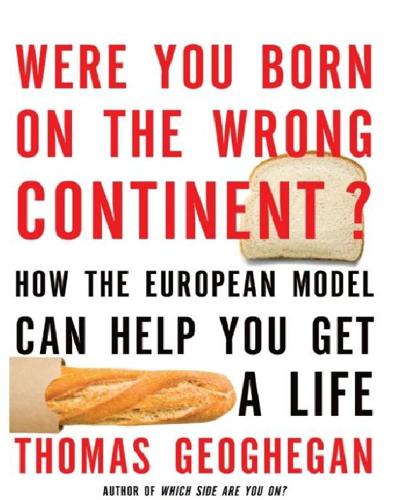
Were You Born on the Wrong Continent?
by
Thomas Geoghegan
Published 20 Sep 2011
She could have her child go beyond this regimen, so by the end of it all, the kid could have a PhD from Milan for a song. The above example shows why a social democracy can have more cash value for people at the top like Barbara than it does for an assistant pastry chef in Lyon or a cleaning lady in Chicago. That is, a social democracy with “Free Georgetown” or “Free NYU” is worth more in a material sense to people at the top than it is to the assistant pastry chef who just gets a nicer pension in the end. 4. Child Care Ask a European couple the big cost in coming to Chicago. “It’s the nanny!” Here’s a report from S., a journalist in Berlin. “We are now paying for full-time child care that is as good as anything I have seen in Chicago.”
…
But now I think that the rich travel so much outside Germany—Italy is down the street—that maybe the reason they are not in the stores every day of the year is that they are out of town instead. Still, it’s true, the savings rate of the better-off people is very high: so why is that? I can think of many reasons. They need not pay big tuitions—like $50,000 per year now at NYU—to send their kids to first-rate schools. That’s the first thing that could explain it: the rich can’t blow the same amount of money as our rich do on what they get back as public goods. That’s the whole point of the chapter about Barbara and Isabel. The second big reason is the chilling effect that even an unequal social democracy has on “flaunting it,” because at least people pay lip service to equality.
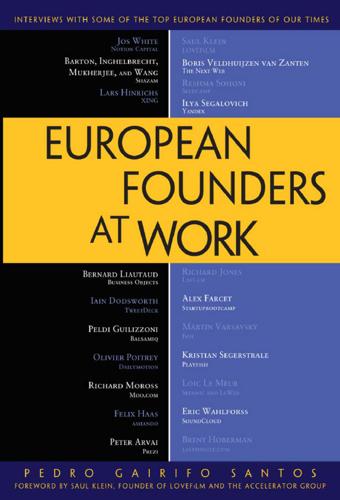
European Founders at Work
by
Pedro Gairifo Santos
Published 7 Nov 2011
Martin Varsavsky: I was born in Argentina. I grew up there until the military coup [in 1976], when my family was forced to emigrate. When I was in high school, we were given refugee visas by Senator [Daniel Patrick] Moynihan [D-NY] and immigrated to the United States. I started college in the States. I went to NYU. I did philosophy and economics in my undergrad and then I went to Columbia University, where I did two master's degrees, one in international relations and international affairs and the other one in business. When I was at school I had to pay for my schooling. I started doing menial jobs such as being a bike messenger, but I soon realized that I had an opportunity to build businesses.
…
I started doing menial jobs such as being a bike messenger, but I soon realized that I had an opportunity to build businesses. My very first business, while I was at the university, was like a search engine. A search engine in the late seventies meant that I would get requests over fax from countries outside of the United States about information that was at the NYU library in books that would cost $20,000 or more. There was a lot of information that was held in books that most people, even businesses, couldn't afford. So I started a company in which I would get requests over fax. I would just walk over to the library, find the answers in these guides that were too costly for most businesses to have, and I would sell the answers.
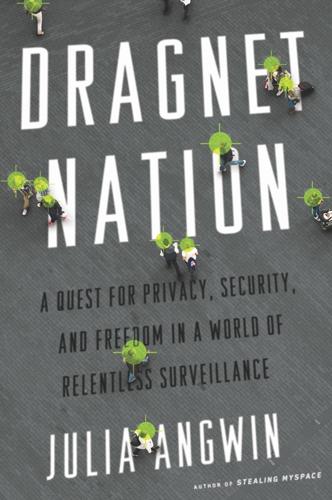
Dragnet Nation: A Quest for Privacy, Security, and Freedom in a World of Relentless Surveillance
by
Julia Angwin
Published 25 Feb 2014
I sat down, ordered a cappuccino, opened up my laptop, and launched Tor, the anonymizing software that masks the Internet address of your computer by routing traffic around the world. This time, I appeared to be in Germany. Browsing on Tor is slow. As a test, I typed New York University’s Web address, www.nyu.edu, into the Tor browser and into the regular Firefox Web browser and clocked each of them. It took twenty seconds to launch in Tor and three seconds to launch in Firefox. At least I had plenty of time to sip my coffee as I browsed on Tor. I started by signing up for a free e-mail account for Ida from Microsoft’s Outlook.com.
…
She told me, “He’s”: Yasir Afifi and Angelina Asfour, in discussion with author, June 8, 2013. The Iranians are obsessed: Farnaz Fassihi, “Iranian Crackdown Goes Global,” Wall Street Journal, December 3, 2009, http://online.wsj.com/article/SB125978649644673331.html. The Chinese are obsessed: Jenny W. Hsu and Eva Dou, “Chinese Dissident Skirts Talk of NYU,” Wall Street Journal, June 23, 2013, http://online.wsj.com/article/SB10001424127887323998604578565310545277192.html. That’s why freedom of association: Article 17, The Universal Declaration of Human Rights, adopted December 10, 1948, https://www.un.org/en/documents/udhr/index.shtml#atop. In 1958, the Supreme Court: National Association for the Advancement of Colored People v.
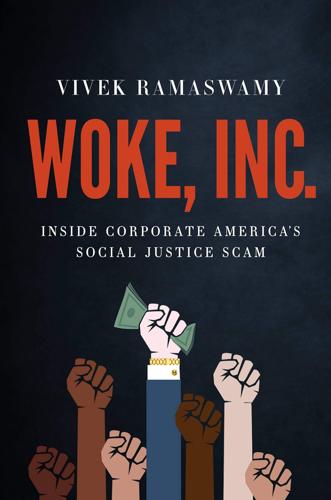
Woke, Inc: Inside Corporate America's Social Justice Scam
by
Vivek Ramaswamy
Published 16 Aug 2021
Mountain States Telephone & Telegraph Co., 827 F.2d 1291 (9th Cir. 1987). casetext.com/case/carlin-comm-v-mountain-st-tel-tel. 46. Barrett, Paul M., and J. Grant Sims. False Accusation: The Unfounded Claim That Social Media Companies Censor Conservatives. NYU Stern Center for Business and Human Rights, Feb. 2021, static1.squarespace.com/static/5b6df958f8370af3217d4178/t/60187b5f45762e708708c8e9/1612217185240/NYU%20False%20Accusation_2.pdf. 47. Roose, Kevin. “How the Biden Administration Can Help Solve Our Reality Crisis.” The New York Times, 2 Feb. 2021, www.nytimes.com/2021/02/02/technology/biden-reality-crisis-misinformation.html.
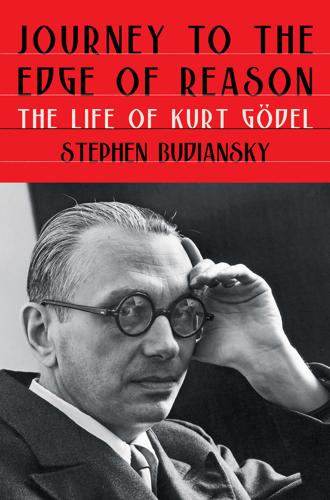
Journey to the Edge of Reason: The Life of Kurt Gödel
by
Stephen Budiansky
Published 10 May 2021
CHAPTER 6: THE SCHOLAR’S PARADISE 1.Taussky-Todd, “Remembrances of Gödel,” 32; Manifest of Alien Passengers for the United States Immigration Officer at Port of Arrival, SS Beregaria, Passengers sailing from Cherbourg, 23 September 1933. 2.Manifest of Alien Passengers for the United States Immigration Officer at Port of Arrival, SS Aquitania, Passengers sailing from Cherbourg, 30 September 1933, Arriving Port of New York, 6 October 1933; Abraham Flexner to Edgar Bamberger, 26 September 1933, IAS, Faculty Files, Pre-1953. 3.Dyson, Turing’s Cathedral, 24; Stern, “History of Institute,” 1:24–25. 4.Klári von Neumann quoted in Dyson, Turing’s Cathedral, 24. 5.Stern, “History of Institute,” 1:26, 47–48. 6.Stern, “History of Institute,” 1:48–49. 7.Stern, “History of Institute,” 1:56. 8.Stern, “History of Institute,” 1:2–3, 8. 9.Dyson, Turing’s Cathedral, 28; Stern, “History of Institute,” 1:15–17. 10.Stern, “History of Institute,” 1:1–3. 11.Stern, “History of Institute,” 1:4. 12.Flexner, “Useless Knowledge”; Stern, “History of Institute,” 1:77–82, 134. 13.Oswald Veblen quoted in Dyson, Turing’s Cathedral, 31–32. 14.Dyson, Turing’s Cathedral, 32. 15.Dyson, Turing’s Cathedral, 18–19, 21; Goldstine, OH, 4. 16.Oswald Veblen quoted in Dyson, Turing’s Cathedral, 26; “A Memorial to a Scholar-Teacher,” Princeton Alumni Weekly, 30 October 1931; Tucker, OH, 16. 17.Tucker, OH, 7–8. 18.Stern, “History of Institute,” 1:73 n. 7, 139, 189 n. 19, 193 nn. 63 and 65, 194 n. 85. 19.Stern, “History of Institute,” 1:195–96 n. 111. 20.Stern, “History of Institute,” 1:219. 21.KG to MG, 29 September 1950; he mentions having written to her back in 1933 about “the local beauties of nature” in KG to MG, 28 May 1961. 22.Fitzgerald, This Side of Paradise, 40, 47. 23.Maynard, “Princeton in Confederacy’s Service”; Watterson, I Hear My People, 79. 24.Albert Einstein to Elisabeth of Belgium, 20 November 1933, Einstein, Archives, 32-369. 25.Carl Ludwig Siegel to Richard Courant, 18 September 1935, quoted in Siegmund-Schultze, Mathematicians Fleeing Nazi Germany, 247. 26.Kreisel, “Kurt Gödel,” 154. 27.Dawson, Logical Dilemmas, 97–98; KG to MG, 3 October 1948. 28.Albert Einstein to Hans Reichenbach, 2 May 1936, quoted in Siegmund-Schultze, Mathematicians Fleeing Nazi Germany, 226 (I have slightly adjusted the translation from the original German); Blaschke, “History of American Mathematical Society”; Segal, “Mathematics and German Politics,” 131–32. 29.Albert Einstein quoted in Siegmund-Schultze, Mathematicians Fleeing Nazi Germany, 225; Birkhoff, “American Mathematics,” 2:277; Abraham Flexner to George Birkhoff, 30 September 1938, quoted in Institute for Advanced Study, Refuge for Scholars, 8, and Siegmund-Schultze, Mathematicians Fleeing Nazi Germany, 226. 30.Halperin, OH, 14; Klári von Neumann quoted in Dyson, Turing’s Cathedral, 54; Graham, “Adventures in Fine Hall.” 31.Whitman, Martian’s Daughter, 16–17. 32.Dyson, Turing’s Cathedral, 54; Churchill Eisenhart quoted in Graham, “Adventures in Fine Hall.” 33.Graham, “Adventures in Fine Hall.” 34.KG to Oswald Veblen, 31 March 1933, Veblen, Papers, 6/5. 35.KG, “Foundation of Mathematics,” CW, 3:45. 36.KG, “On Undecidable Propositions,” CW, 1:346–71 (lectures at IAS); KG, “Existence of Undecidable Propositions” (NYU talk); Engelen, ed., Notizbücher, 394 (depressed afterward); John Kemeny quoted in Graham, “Adventures in Fine Hall.” No notes of his Washington talk survive. 37.Siegmund-Schultze, Mathematicians Fleeing Nazi Germany, 244. 38.Abraham Flexner to KG, 7 March 1934, IAS, Faculty Files, Pre-1953. 39.GA, 51. 40.Sigmund, Exact Thinking, 291–92, 296; Menger, Reminiscences, 214. 41.Menger, Reminiscences, 211, 213. 42.Menger, Reminiscences, 211–12; Feferman and Feferman, Tarski, 81–82. 43.Feferman and Feferman, Tarski, 12, 19, 37–39, 53. 44.Feferman and Feferman, Tarski, 5, 84–85, 144–45. 45.Karl Menger quoted in Sigmund, Exact Thinking, 230; Morgenstern, “Abraham Wald,” 361–62; OMD, 6 June 1936. 46.Menger, Reminiscences, 212–13; Morgenstern, “Abraham Wald,” 363. 47.Menger, Reminiscences, 214. 48.Menger, Reminiscences, 216. 49.Kreisel, “Kurt Gödel,” 154. 50.KG to Oswald Veblen, 1 January 1935, Veblen, Papers, 6/5. 51.Topp, “Hoffmann’s Purkersdorf.” 52.KG to MG, 28 July 1946. 53.Kreisel, “Kurt Gödel,” 154; Dr.
…
., 158–60; disastrous 1935 U.S. visit, 170–72; treatment in sanatoriums, 165–68, 173, 177–78, 184, 259; in Zilsel circle, 187, 192; marries Adele, 190, 198, 199; 1939–40 visit to IAS and Notre Dame, 185, 189–90, 198–200; troubles with Nazi authorities, 196, 200–204, 222–23; emigration, 201–6, 205, 206; friendship with Einstein, 3–5, 4, 216–18, 217, 231, 255, 257–58; 1941 mental crisis, 223–25; exempted from U.S. draft, 225; becomes U.S. citizen, 232–35; permanent appointment to IAS, 234–35; 1951 ulcer hospitalization, 236–37; Einstein Award, 238–39, 238; Yale and Harvard honorary degrees, 239, 247; appointed professor at IAS, 248–49 purchases Princeton house, 252–53, 252, 254; mother dies, 267; public fame, 269–70; 1970 psychological crisis, 271–72; National Medal of Science, 273; final illnesses and death, 6–7, 272–76; will and estate, 276; mathematical and philosophical legacy, 277–80 CHARACTER AND PERSONALITY: attitudes and tastes America, feelings toward, 153, 207, 235 artistic and literary tastes, 230, 254–55 childhood, nostalgia for, 48, 49, 76, 230 conspiratorial ideas, 232–33, 243–45, 246, 274 ethnic prejudice, absence of, 28, 57, 240 food and drink, 155, 168, 257, 275–76 ghosts and evil spirits, belief in, 3, 5, 176, 227, 275 kitsch, fondness for, 230, 253–54, 254 pacifism, 246–47, 271 politics, 85, 95, 164–65, 192, 202, 204, 246–48 religion, view of, 3, 49–50, 243, 267–69, 278 Vienna, ambivalence toward, 235, 259, 261 health appendectomy, 55 digestive upsets, 168, 231, 256 hallucinations, 177–78, 271 hypochondria, 55, 146, 230–31, 237, 255–56, 271, 272, 273, 274 insomnia, 165, 172, 256, 268 paranoia, 1–3, 5–7, 174–75, 177–78, 184, 220–22, 268, 271, 272, 274–76 prostate trouble, 6, 272–73 self-medication, 256, 273 ulcer, 168, 236–37, 255, 257 weight loss, 3, 6–7, 165, 168, 184, 257 personal traits appearance and dress, xiv, 2–3, 5, 71, 252, 253, 273 conscientiousness and perfectionism, 6, 60, 71–72, 75, 102, 168–70, 248–49 fear of failure, 1–2, 6, 168–69 humility, 104, 231, 232 indecisiveness, 103, 169–70, 187–90 kindness and generosity, 104, 170, 220, 231, 264, 270 language ability, 57, 60, 139, 158–59, 199, 207 optimism, 242, 255, 266, 279–80 self-criticism, 1–2, 71, 103–4, 119, 169 sense of humor, 104–6, 206, 237 social wariness and anxiety, 102–3, 139, 159, 168–69, 214–15 theatricality, 274 voice, 3, 103, 105 work habits, 6, 71–72, 124, 139, 169–70, 246, 255 private life amusements and diversions, 6, 139, 253–55 family relations, 44–45, 119, 139, 230–31, 262, 275 financial situation, 6, 120, 139, 171, 187–88, 203, 204, 222, 234, 250, 251 friendships, 3–5, 28, 58–60, 68–69, 91, 104–5, 106, 163–64, 214–20 married life, 3, 6, 175–76, 230–32, 251–52, 272 pets, 48, 253 sexuality, 60, 106, 155, 175, 230–31 MATHEMATICAL AND PHILOSOPHICAL IDEAS: anti-materialism, 241, 243, 265 axiomatic method, 116, 242, 266–67 complexity of calculation, 258 continuum problem, 177, 189–90, 210–14, 268 Hilbert’s program and, 127, 137, 192, 267 human intuition, 266–67 inexhaustibility of mathematics, 79, 122, 137, 266–67, 279–80 Leibniz and, 105–6, 242, 243, 244–45, 268 mathematical realism and Platonism, 93, 100–101, 239–42, 266, 296 n 33 mind vs. machine, 116, 241, 265, 279–80 non-constructive proofs, 114 philosophical postulates, 241–43 relativity and time travel, 75–76, 225–27, 278 religion, 49–50, 243, 267–69, 278 set theory, 211–14 Vienna Circle and, 75, 88, 90, 91, 92–93, 98, 100–101, 265 see also Incompleteness Theorem PUBLICATIONS, LECTURES, AND OTHER WORKS: “Completeness of Functional Calculus of Logic” (1929–30), 117–18, 121 “On Formally Undecidable Propositions” (1931), 123, 126, 132–33 “Present Situation in the Foundation of Mathematics” (1933), 158–59 “The Existence of Undecidable Propositions in any Formal Mathematical System Containing Arithmetic,” NYU Philosophical Society lecture (1934), 125, 159 “Can Mathematics Be Proved Consistent?” (1934), 159 “The Consistency of the Axiom of Choice and of the Generalized Continuum Hypothesis” (1938–40), 210 “Russell’s Mathematical Logic” (1944), 240 “What is Cantor’s Continuum Problem?” (1947), 214, 266 “A Remark about the Relationship between Relativity Theory and Idealistic Philosophy” (1949), 225–27 “An Example of a New Type of Cosmological Solutions of Einstein’s Field Equations of Gravitation” (1949), 225 “Rotating Universes in General Relativity Theory” (1950), 225 “Some Basic Theorems on the Foundations of Mathematic and their Implications,” Gibbs Lecture (1951), 236, 239–41 “Is Mathematics Syntax of Language?”

Men Without Work
by
Nicholas Eberstadt
Published 4 Sep 2016
., “Felony Sentences in State Courts, 2006—Statistical Tables,” tables 1.1 and 1.2, Bureau of Justice Statistics, last modified November 22, 2010, http://www.bjs.gov/content/pub/pdf/fssc06st.pdf. 4.Christopher Uggen, Jeff Manza, and Melissa Thompson, “Citizenship, Democracy, and the Civic Reintegration of Criminal Offenders,” Annals of the American Academy of Political and Social Science 605 (May 2006): 281–310, http://sociology.fas.nyu.edu/docs/IO/3858/Citizenship,_Democracy,_and_the_Civic_Reintegration_of_Criminal_Offenders.pdf; see also Sarah K.S. Shannon, et. al., “The Growth, Scope and Spatial Distribution of America’s Criminal Class, 1948–2010,” unpublished paper, January 2015. 5.I cited Henry Olsen earlier in this study to the effect that welfare and social disability programs may be contributing to the increasing state-level disparities in prime-age male LFPRs by in effect “tying” men to a locality and discouraging their efforts to move in search of opportunity.
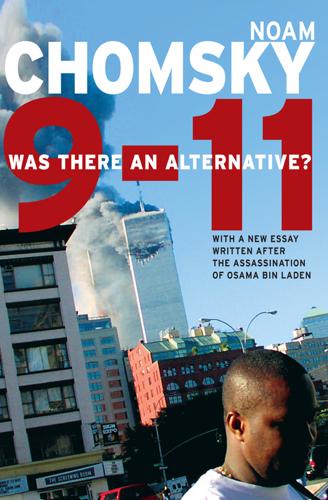
9-11
by
Noam Chomsky
Published 29 Aug 2011
, 1987). Michael McClintock, Instruments of Statecraft (Pantheon, 1992). Project Censored et al., Censored 2011 (Seven Stories Press, 2010). Nir Rosen, Aftermath: Following the Bloodshed of America’s Wars in the Muslim World (Nation Books, 2010) Paul Wilkinson, Terrorism and the Liberal State (NYU Press, 1986). ABOUT THE AUTHOR NOAM CHOMSKY was born in Philadelphia, Pennsylvania, on December 7, 1928. He studied linguistics, mathematics, and philosophy at the University of Pennsylvania. In 1955, he received his Ph.D. from the University of Pennsylvania and began teaching at the Massachusetts Institute of Technology, where he is Institute Professor Emeritus in the Department of Linguistics and Philosophy.

Smart and Gets Things Done: Joel Spolsky's Concise Guide to Finding the Best Technical Talent
by
Joel Spolsky
Published 1 Jun 2007
Indeed, you may be more likely to scare away the best programmers, who have the most alternatives, and get left with a pool of fairly desperate candidates who are willing to do extra work to apply simply because they don’t have any alternatives. Don’t Look for Experience with Particular Technologies Once I was on a panel at NYU giving students advice on careers in IT. My advice was that before graduating you should make sure to learn how to write well, maybe by taking a creative writing course, and take a class in Econ so that the business side of the business isn’t a mystery.2 I also recommended at least one low-level programming course in C or Assembler just to help you understand how computers work at a lower level. 2.
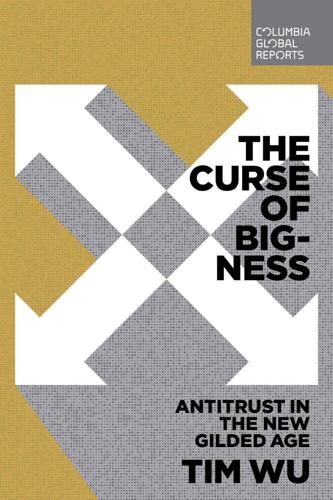
The Curse of Bigness: Antitrust in the New Gilded Age
by
Tim Wu
Published 14 Jun 2018
Morgan was roughly handled), Daniel Markovitz, and to Franklin Foer who also helped steer this book. I presented an early version of the book as Stanford’s Wesson Lecture and benefited greatly from the comments of readers Joshua Cohen, Lina Khan, and Reid Hoffman. I also presented it at Yale, to my Columbia colleagues, as a talk at NYU law school, and at the Roosevelt Institute. The antitrust history conference associated with the Tobin Project at the University of Michigan organized by Daniel Crane and Bill Novak provided important ideas. I am grateful to Columbia law school and dean Gillian Lester for the summer funding to complete this book.

Uneasy Street: The Anxieties of Affluence
by
Rachel Sherman
Published 21 Aug 2017
I also want to thank the friends, colleagues, and acquaintances who helped me find the interviewees. For reasons of confidentiality I prefer not to name them here, but they were essential to this research. Generous institutional and individual support made this project possible. The New School offered research funds and research assistance. Eric Klinenberg and the staff of NYU’s Institute for Public Knowledge offered me the physical and mental space to begin writing this book in 2013–14, and a faculty fellowship at the New School’s Graduate Institute for Design, Ethnography and Social Thought (GIDEST) allowed me to continue writing the following year. Lisa Keister generously responded to an out-of-the-blue request for data.

In Our Own Image: Savior or Destroyer? The History and Future of Artificial Intelligence
by
George Zarkadakis
Published 7 Mar 2016
All the signs point in that direction. Within the past two years Google, one of the biggest companies in the computer industry,2 acquired a number of companies in Artificial Intelligence and advanced robotics. Facebook also announced that one of the most prominent AI researchers in the world, Professor Yann LeCun of NYU’s Center for Data Science, would be joining the company to direct a massive new AI effort. These global companies move towards smarter machine technologies because they understand the challenges and opportunities entailed in owning big data. They also understand that it is not enough to own the data.
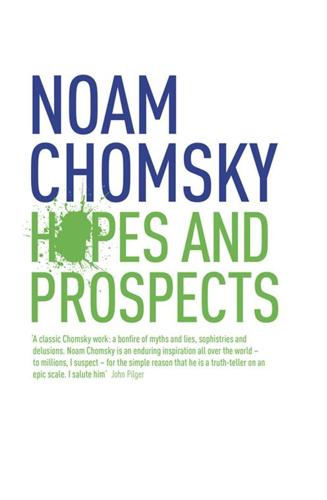
Hopes and Prospects
by
Noam Chomsky
Published 1 Jan 2009
When first argued, the case “seemed an oddity [but] it has turned into a juggernaut with the potential to shatter a century-long understanding about the government’s ability to bar corporations from spending money to support political candidates.” 46. Citizens United v. FEC, January 21, 2009. Adam Liptak, “Justices Overturn Key Campaign Limits,” New York Times, January 21, 2010. Waldman, blog on New York Times online, cited by editors, same day; Waldman is executive director of the Brennan Center for Justice at the NYU School of Law. Technically the decision also applies to unions, facts constantly brought up in commentary. But that is insignificant in comparison with corporate power, quite apart from very different character of unions representing workers and private tyrannies dedicated to wealth maximization, primarily for the very narrow sector of extreme wealth in whose hands ownership is concentrated. 47.
…
On the expansion of the “drug war” by Obama, along the conventional lines, see Suzanna Reiss, “Beyond Supply and Demand: Obama’s Drug Wars in Latin America,” NACLA Report on the Americas, January–February 2010. 41. See Jerry Kuzmarov, The Myth of the Addicted Army (Amherst, MA: University of Massachusetts Press, 2009), from which much of what follows on Nixon’s “drug war” is drawn. 42. M. J. Crozier, S. P. Huntington, and J. Watanuki, The Crisis of Democracy (New York: NYU Press, 1975), report to the Trilateral Commission. The general tenor of the commission is illustrated by the fact that the Carter administration was heavily drawn from its ranks. 43. Carter, news conference, March 24, 1977. Bush cited by Barbara Crossette, New York Times, October 24, 1992. 44.
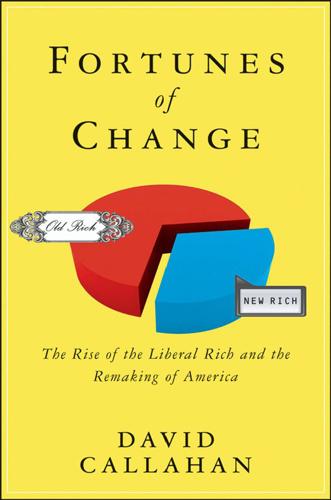
Fortunes of Change: The Rise of the Liberal Rich and the Remaking of America
by
David Callahan
Published 9 Aug 2010
the 1960s, the son of a small business owner. His parents were nominally Democratic but conservative. They didn’t like unions or taxes. Schulman went to New York University, where he hung around with libertarians, reading and discussing the novels of Ayn Rand. Schulman got excited enough about these ideas to serve as president of NYU’s Objectivist Club, which was dedicated to spreading Rand’s philosophy. By his early thirties, after getting an MBA, Schulman was in the finance sector, climbing the corporate ladder at large brokerage firms. Activist movements were roiling the United States, but Schulman didn’t pay much attention. “I didn’t have social views,” he said.
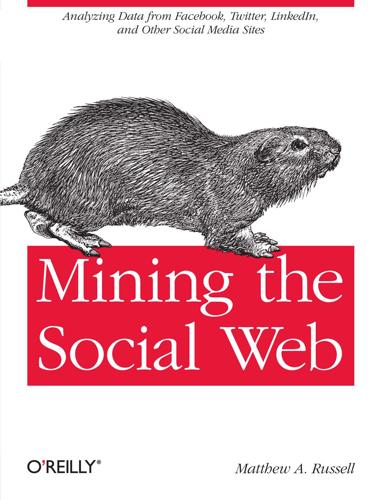
Mining the Social Web: Finding Needles in the Social Haystack
by
Matthew A. Russell
Published 15 Jan 2011
Sample output from Example 4-11, illustrating common members of maximum cliques Num cliques: 762573 Avg clique size: 14 Max clique size: 26 Num max cliques: 6 People in all max cliques: [ "kwerb", "johnbattelle", "dsearls", "JPBarlow", "cshirky", "leolaporte", "MParekh", "mkapor", "steverubel", "stevenbjohnson", "LindaStone", "godsdog", "Joi", "jayrosen_nyu", "dweinberger", "timoreilly", "ev", "jason_pontin", "kevinmarks", "Mlsif" ] Max cliques: [ [ "timoreilly", "anildash", "cshirky", "ev", "pierre", "mkapor", "johnbattelle", "kevinmarks", "MParekh", "dsearls", "kwerb", "Joi", "LindaStone", "dweinberger", "SteveCase", "leolaporte", "steverubel", "Borthwick", "godsdog", "edyson", "dangillmor", "Mlsif", "JPBarlow", "stevenbjohnson", "jayrosen_nyu", "jason_pontin" ], ... ] Clearly, there’s much more we could do than just detect the cliques. Plotting the locations of people involved in cliques on a map to see whether there’s any correlation between tightly connected networks of people and geographic locale, and analyzing information in their profile data and/or tweet content are among the possibilities.
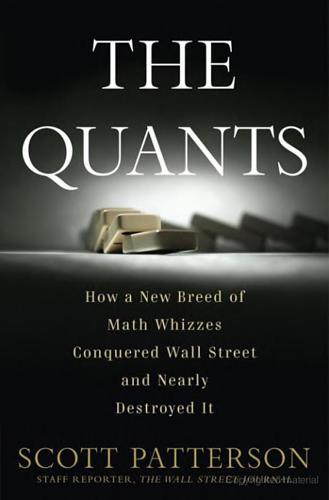
The Quants
by
Scott Patterson
Published 2 Feb 2010
In 1999, he started teaching graduate courses in finance at NYU, at the same time launching a hedge fund called Empirica for its focus on empirical knowledge. By the time of Chriss’s wedding, Taleb had gained a reputation as a gadfly of the quants, constantly questioning their ability to beat the market. Taleb didn’t believe in the Truth. He certainly didn’t believe it could be quantified. Due in part to his experience on Black Monday, Taleb believed that markets tended to make moves that were much more extreme than had been factored into quantitative models. As a teacher of financial engineering at NYU, he was well aware of the proliferation of models that attempted to take account of extreme moves—the “jump diffusion” model that allowed for sudden leaps in price; the tongue-twisting “generalized autoregressive conditional heteroscedasticity model,” or GARCH, which doesn’t look at prices as a coin flip but rather takes into account the immediate past, and allows for feedback processes that can result in sudden jumps that create fat tails (Brownian motion with a kick); and a number of others.
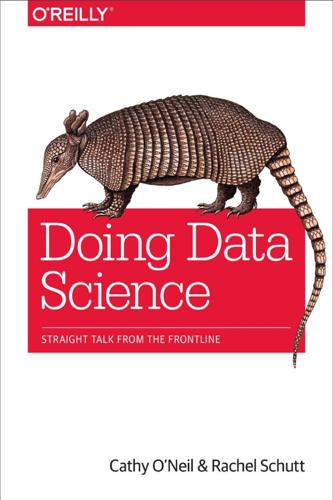
Doing Data Science: Straight Talk From the Frontline
by
Cathy O'Neil
and
Rachel Schutt
Published 8 Oct 2013
Claudia has been the Chief Scientist at Media 6 Degrees (M6D) for the past few years. Before that she was in the data analytics group at the IBM center that developed Watson, the computer that won Jeopardy! (although she didn’t work on that project). Claudia holds a master’s in computer science, and got her PhD in information systems at NYU. She now teaches a class to business students on data science, where she addresses how to assess data science work and how to manage data scientists. Claudia is also a famously successful data mining competition winner. She won the KDD Cup in 2003, 2007, 2008, and 2009, the ILP Challenge in 2005, the INFORMS Challenge in 2008, and the Kaggle HIV competition in 2010.
…
She is an adjunct professor in Columbia’s Department of Statistics and a founding member of the Education Committee for the Institute for Data Sciences and Engineering at Columbia. She holds several pending patents based on her work at Google, where she helped build user-facing products by prototyping algorithms and building models to understand user behavior. She has a master's degree in mathematics from NYU, and a master's degree in Engineering-Economic Systems and Operations Research from Stanford University. Her undergraduate degree is in Honors Mathematics from the University of Michigan. Cathy O’Neil earned a Ph.D. in math from Harvard, was postdoc at the MIT math department, and a professor at Barnard College where she published a number of research papers in arithmetic algebraic geometry.

Future Crimes: Everything Is Connected, Everyone Is Vulnerable and What We Can Do About It
by
Marc Goodman
Published 24 Feb 2015
Ekso’s designs can also be used by those who are not physically impaired, providing tremendous support and strength by lightening the workload on functioning muscles, allowing soldiers, for example, to carry hundreds of pounds of weight over extended distances without tiring. Graduate students at NYU’s Interactive Telecommunications Program have even developed “an open-source API that allows you to move someone else’s arm remotely using a keyboard, a joystick or even an iPhone,” in order to help those with paralysis or limited control of their own limbs function normally. The result is nonautonomous body control, allowing others to control your own arm or leg via the Net.
…
There are pockets of innovation in government everywhere, but we need to get these gems of creativity to replicate and scale in a way that simply is not happening today. One such model is Code for America, a nonprofit organizing citizen volunteers with computer coding skills to make government services much more simple, effective, and easy to use. Another is the well-regarded GovLab at NYU, an innovation laboratory dedicated to using technology to redesign the problem-solving capabilities of government institutions. Backed by both the MacArthur and the Knight Foundations, GovLab is working to use networked technologies to move beyond the centralized top-down control paradigms of yesteryear in favor of more transformational platforms of self-governance, innovation, and citizen engagement.

The Fourth Industrial Revolution
by
Klaus Schwab
Published 11 Jan 2016
Professional activities are dissected into precise assignments and discrete projects and then thrown into a virtual cloud of aspiring workers located anywhere in the world. This is the new on-demand economy, where providers of labour are no longer employees in the traditional sense but rather independent workers who perform specific tasks. As Arun Sundararajan, professor at the Stern School of Business at New York University (NYU), put it in a New York Times column by journalist Farhad Manjoo: “We may end up with a future in which a fraction of the workforce will do a portfolio of things to generate an income – you could be an Uber driver, an Instacart shopper, an Airbnb host and a Taskrabbit”.27 The advantages for companies and particularly fast-growing start-ups in the digital economy are clear.
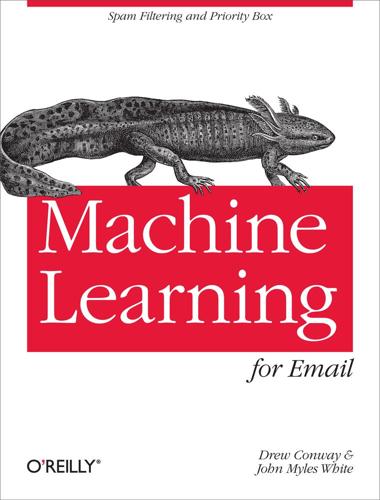
Machine Learning for Email
by
Drew Conway
and
John Myles White
Published 25 Oct 2011
R help desk: How can I avoid this loop or make it faster?. http://www.r-project.org/doc/Rnews/Rnews_2008-1.pdf. May 2008. [SR08] Randall Stross. What Has Driven Women Out of Computer Science?. The New York Times. November 15, 2008. About the Authors Drew Conway is a PhD candidate in Politics at NYU. He studies international relations, conflict, and terrorism using the tools of mathematics, statistics, and computer science in an attempt to gain a deeper understanding of these phenomena. His academic curiosity is informed by his years as an analyst in the U.S. intelligence and defense communities.

The Cosmopolites: The Coming of the Global Citizen
by
Atossa Araxia Abrahamian
Published 14 Jul 2015
The Birthright Lottery frames the acquisition of citizenship as a problem of distribution, not unlike the inheritance of wealth, and discusses the responsibilities of citizens in wealthy nations to help their less fortunate peers. Peter Spiro, Beyond Citizenship: American Identity After Globalization (Oxford, 2008) and At Home in Two Countries: The Past and Future of Dual Citizenship (NYU, 2016). Because Peter Spiro writes regularly on citizenship in a post-national context, he’s frequently invited by leaders in the passport industry to speak at events. He’s also one of the first scholars I spoke to about the business of selling citizenship, back in 2011. In Beyond Citizenship, Spiro’s main thesis is that twentieth-century ideas about American citizenship don’t hold up anymore, and that bonds between Americans, which once largely rested on their common American-ness, are being replaced by other commonalities: politics, sexuality, gender, shared interests, race, and business.
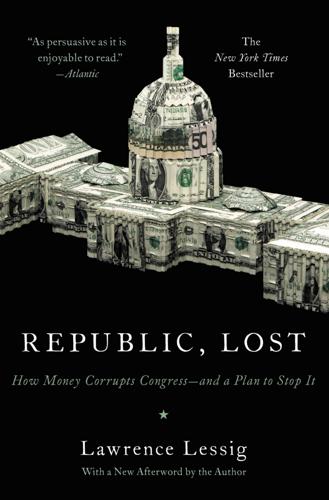
Republic, Lost: How Money Corrupts Congress--And a Plan to Stop It
by
Lawrence Lessig
Published 4 Oct 2011
., The Legislative Branch (Oxford University Press, 2005), 118. 14. Federal Election Campaign Act of 1971, as amended in 1974, 2 U.S.C. § 431 (1974). 15. James J. Sample, “Democracy at the Corner of First and Fourteenth: Judicial Campaign Spending and Equality” (Aug. 20, 2010), 10 (forthcoming in NYU Annual Survey of American Law); Hofstra Univ. Legal Studies Research Paper No. 10-29, available at link #89. 16. Samuel Issacharoff, “On Political Corruption,” Harvard Law Review 124 (2010): 119–20. 17. Sample, “Democracy at the Corner of First and Fourteenth,” 10; Hofstra University Legal Studies Research Paper No. 10-29, available at link #89. 18.
…
Justice Sandra Day O’Connor, “How to Save Our Courts,” Parade, Feb. 24, 2008, available at link #200. 7. Ibid. (emphasis added). 8. Sample, Justice for Sale,” A24. 9. James J. Sample, “Democracy at the Corner of First and Fourteenth: Judicial Campaign Spending and Equality” (Aug. 20, 2010), 23 (forthcoming in NYU Annual Survey of American Law); Hofstra Univ. Legal Studies Research Paper No. 10-29, available at link #89. 10. David Pozen, James Sample, and Michael Young, “Fair Courts: Setting Recusal Standards,” 11, available at link #201. 11. Sample, “Democracy at the Corner,” 20; Hofstra Univ. Legal Studies Research Paper No. 10-29, available at link #89. 12.
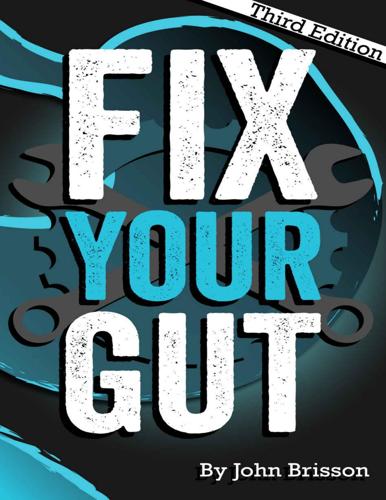
Fix Your Gut: The Definitive Guide to Digestive Disorders
by
John Brisson
Published 12 Apr 2014
World J Hepatol. 2010;2(11):410-5. http://www.ncbi.nlm.nih.gov/pmc/articles/PMC3004035/ Websites http://link.springer.com/article/10.1007%2Fs12602-013-9136-0, Accessed April 25, 2014. http://web.mst.edu/~microbio/BIO221_2009/B_subtilis.html, Accessed April 25, 2014. http://www.cdc.gov/anthrax/, Accessed April 25, 2014. http://www.avianbiotech.com/diseases/clostridium.htm, Accessed April 25, 2014. http://sporegen.com/uploads/publications/Hong2009.pdf, Accessed April 25, 2014. http://informahealthcare.com/doi/abs/10.1080/089106000435491, Accessed April 25, 2014. http://micro.cornell.edu/research/epulopiscium/bacterial-endospores, Accessed April 25, 2014. http://www.protexin.com/attachments/Probiotic%20News%20Issue%201.pdf Accessed April 25, 2014. http://www.fda.gov/ohrms/dockets/dockets/95s0316/95s-0316- rpt0277-Attachment-F-Sonenshein-vol214.pdf, Accessed April 25, 2014. http://www.epa.gov/oppt/biotech/pubs/fra/fra009.htm, Accessed April 25, 2014. http://www.bulletproofexec.com/the-red-meat-scapegoat-the-newyork-times-carnitine-heart-disease-and-science/, Accessed April 25, 2014. http://chriskresser.com/treating-sibo-cold-thermogenisis-and-whento-take-probiotics, Accessed April 25, 2014. http://www.marksdailyapple.com/eating-earth-exploring-themysterious-world-of-geophagy/#axzz2kgVmG8lD, Accessed April 25, 2014. https://files.nyu.edu/jmm257/public/querencias/natto.html, Accessed April 25, 2014. http://sporegen.com/uploads/publications/Hong2009.pdf, Accessed April 25, 2014. http://blog.listentoyourgut.com/bacterial-soil-organisms-hsos-sossbos-etc/, Accessed April 25, 2014. http://www.bulletproofexec.com/the-red-meat-scapegoat-the-newyork-times-carnitine-heart-disease-and-science/, Accessed April 25, 2014.
…
Gastroenterology. 1990;99(4):973-8. http://www.ncbi.nlm.nih.gov/pubmed/2394351 H. pylori and Gastritis H. pylori General Info http://chriskresser.com/more-evidence-to-support-the-theory-thatgerd-is-caused-by-bacterial-overgrowth, Accessed April 28, 2014. http://digestive.niddk.nih.gov/ddiseases/pubs/hpylori/, Accessed April 28, 2014. http://www.cancer.gov/cancertopics/factsheet/Risk/h-pylori-cancer, Accessed April 28, 2014. http://www.mayoclinic.com/health/hpylori/DS00958/DSECTION=symptoms, Accessed April 28, 2014. http://www.med.nyu.edu/medicine/labs/blaserlab/, Accessed April 28, 2014. http://www.nytimes.com/2011/11/01/health/scientist-examinespossible-link-between-antibiotics-and-obesity.html?_r=0, Accessed April 28, 2014. http://www.sciencedaily.com/releases/2008/10/081006092511.htm, Accessed April 28, 2014. Blaser MJ. Helicobacter pylori and gastric diseases.
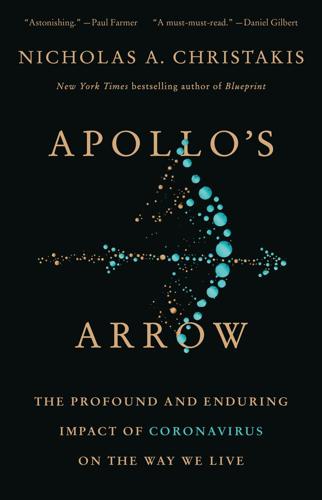
Apollo's Arrow: The Profound and Enduring Impact of Coronavirus on the Way We Live
by
Nicholas A. Christakis
Published 27 Oct 2020
Salcedo, “New York City Deploys 45 Mobile Morgues as Virus Strains Funeral Homes,” New York Times, April 2, 2020. 120 “Research, Statistics, Data & Systems: National Health Expenditure Data; Historical,” Centers for Medicare & Medicaid Services, December 17, 2019. 121 A. Correal and A. Jacobs, “‘A Tragedy Is Unfolding’: Inside New York’s Virus Epicenter,” New York Times, April 9, 2020. 122 J. Coven and A. Gupta, “Disparities in Mobility Responses to COVID-19,” NYU working paper, May 15, 2020. 123 Ibid. 124 J.D. Goodman, “How Delays and Unheeded Warnings Hindered New York’s Virus Fight,” New York Times, April 8, 2020. 125 “New York Coronavirus Cases,” Worldometer, March 31, 2020. 126 Anonymous, “‘No Time to Be Lax’: Cuomo Extends New York Shutdown, NJ Deaths Top 1,000,” NBC New York, April 7, 2020. 127 J.D.
…
Gallegos, “Hospitals Muzzle Doctors and Nurses on PPE, COVID-19 Cases,” Medscape, March 25, 2020. 40 E. Kincaid, “COVID-19 Daily: Physician Gag Orders,” Medscape, March 25, 2020. 41 O. Carville et al., “Hospitals Tell Doctors They’ll Be Fired If They Speak Out about Lack of Gear,” Bloomberg, March 31, 2020. 42 S. Ramachandran and J. Palazzolo, “NYU Langone Tells ER Doctors to ‘Think More Critically’ about Who Gets Ventilators,” Wall Street Journal, March 31, 2020. 43 M. Richtel, “Frightened Doctors Face Off with Hospitals over Rules on Protective Gear,” New York Times, March 31, 2020. 44 L.H. Sun and J. Dawsey, “CDC Feels Pressure from Trump as Rift Grows over Coronavirus Response,” Washington Post, July 9, 2020. 45 R.
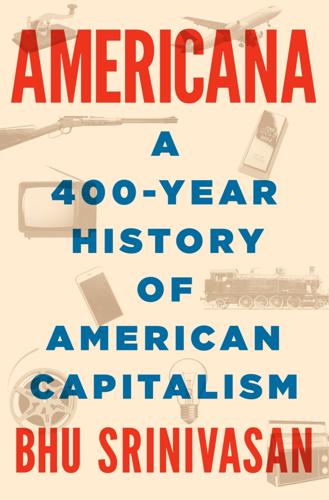
Americana: A 400-Year History of American Capitalism
by
Bhu Srinivasan
Published 25 Sep 2017
The best and the brightest among them looked west to Beverly Hills, where Michael Milken could raise billions of dollars when the need arose, junk bonds becoming the pirate ship on which the corporate raiders sailed. • • • IF THERE WAS A COMPETITION to find a real-life equivalent to Larry the Liquidator, who relished the persona of financial agitator in the 1980s, the award would have gone to Carl Icahn. Raised in a middle-class home in Queens, Icahn went to Princeton and then enrolled at NYU School of Medicine for two years. He dropped out and joined the army, where his main contribution seems to have been playing poker. After these detours, he found himself on Wall Street through his uncle. He thrived in short order in the abstract world of options trading, where his primary activity consisted of arbitrage, finding mathematical discrepancies in pricing that allowed risk-free profits.
…
Boulder, CO: Johnson Books, 1997. Bigelow, John. Memoir of the Life and Public Services of John Charles Frémont. New York: Derby & Jackson, 1856. Binkley, Christina. Winner Takes All. New York: Hyperion, 2008. Birdwell, Michael E. Celluloid Soldiers: The Warner Bros. Campaign Against Nazism. New York: NYU Press, 1999. Birmingham, Stephen. “The Rest of Us”: The Rise of America’s Eastern European Jews. Syracuse, NY: Syracuse University Press, 1999. Blassingame, John W. The Slave Community: Plantation Life in the Antebellum South. New York: Oxford University Press, 1979. Bloomberg, Michael R.
…
Philadelphia: University of Pennsylvania Press, 2002. Wilgus, Horace La Fayette. A Study of the United States Steel Corporation in Its Industrial and Legal Aspects. Chicago: Callaghan, 1901. Wilkerson, Isabel. The Warmth of Other Suns. New York: Vintage Books, 2011. Williams, Robert C. Horace Greeley: Champion of American Freedom. New York: NYU Press, 2006. Willis, Carol. Form Follows Finance: Skyscrapers and Skylines in New York and Chicago. New York: Princeton Architectural Press, 1995. Winthrop, John. Winthrop’s Journal, “History of New England.” Vol. 1. New York: Charles Scribner’s Sons, 1908. Wolff, Michael. The Man Who Owns the News.

Americana
by
Bhu Srinivasan
The best and the brightest among them looked west to Beverly Hills, where Michael Milken could raise billions of dollars when the need arose, junk bonds becoming the pirate ship on which the corporate raiders sailed. • • • IF THERE WAS A COMPETITION to find a real-life equivalent to Larry the Liquidator, who relished the persona of financial agitator in the 1980s, the award would have gone to Carl Icahn. Raised in a middle-class home in Queens, Icahn went to Princeton and then enrolled at NYU School of Medicine for two years. He dropped out and joined the army, where his main contribution seems to have been playing poker. After these detours, he found himself on Wall Street through his uncle. He thrived in short order in the abstract world of options trading, where his primary activity consisted of arbitrage, finding mathematical discrepancies in pricing that allowed risk-free profits.
…
Boulder, CO: Johnson Books, 1997. Bigelow, John. Memoir of the Life and Public Services of John Charles Frémont. New York: Derby & Jackson, 1856. Binkley, Christina. Winner Takes All. New York: Hyperion, 2008. Birdwell, Michael E. Celluloid Soldiers: The Warner Bros. Campaign Against Nazism. New York: NYU Press, 1999. Birmingham, Stephen. “The Rest of Us”: The Rise of America’s Eastern European Jews. Syracuse, NY: Syracuse University Press, 1999. Blassingame, John W. The Slave Community: Plantation Life in the Antebellum South. New York: Oxford University Press, 1979. Bloomberg, Michael R.
…
Philadelphia: University of Pennsylvania Press, 2002. Wilgus, Horace La Fayette. A Study of the United States Steel Corporation in Its Industrial and Legal Aspects. Chicago: Callaghan, 1901. Wilkerson, Isabel. The Warmth of Other Suns. New York: Vintage Books, 2011. Williams, Robert C. Horace Greeley: Champion of American Freedom. New York: NYU Press, 2006. Willis, Carol. Form Follows Finance: Skyscrapers and Skylines in New York and Chicago. New York: Princeton Architectural Press, 1995. Winthrop, John. Winthrop’s Journal, “History of New England.” Vol. 1. New York: Charles Scribner’s Sons, 1908. Wolff, Michael. The Man Who Owns the News.
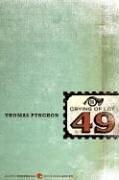
The Crying of Lot 49
by
Thomas Pynchon
Published 1 Jan 1966
Whenever the girl showed up, the one who'd been at the wakes, Oedipa found excuses to leave the gathering. She felt she was betraying Driblette and herself. But left it alone, anxious that her revelation not expand beyond a certain point. Lest, possibly, it grow larger than she and assume her to itself. When Bortz asked her one evening if he could bring in D'Amico, who was at NYU, Oedipa told him no, too fast, too nervous. He didn't mention it again and neither, of course, did she. She did go back to The Scope, though, one night, restless, alone, leery of what she might find. She found Mike Fallopian, a couple weeks into raising a beard, wearing button-down olive shirt, creased fatigue pants minus cuffs and belt loops, two-button fatigue jacket, no hat.
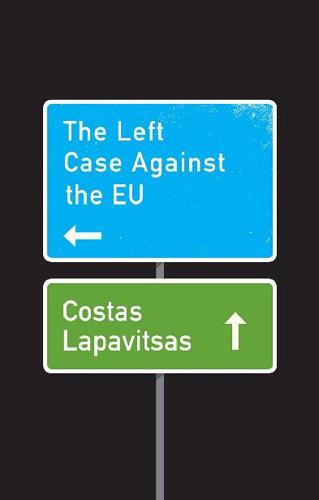
The Left Case Against the EU
by
Costas Lapavitsas
Published 17 Dec 2018
‘Monetary Union, Fiscal Crisis and the Preemption of Democracy’, MPIfG Discussion Paper 16/15, available at: http://www.mpifg.de/pu/mpifg_dp/dp11-11.pdf Scharpf, F. 2016. ‘Forced Structural Convergence in the Eurozone – Or a Differentiated European Monetary Community’, MPIfG Discussion Paper 16/15, available at: http://www.mpifg.de/pu/mpifg_dp/dp16-15.pdf Sheehan, H. 2017. The Syriza Wave: Surging and Crashing with the Greek Left, New York: NYU Press. Sinn, H.W. 2014. ‘Austerity, Growth and Inflation: Remarks on the Eurozone’s Unresolved Competitiveness Problem’, The World Economy, 37(1): 1–13. Skaperdas, S. 2011. ‘Seven Myths about the Greek Debt Crisis’, UC Irvine Working Paper, October, available at: http://www.socsci.uci.edu/~sskaperd/SkaperdasMythsWP1011.pdf Smits, R. 1996.
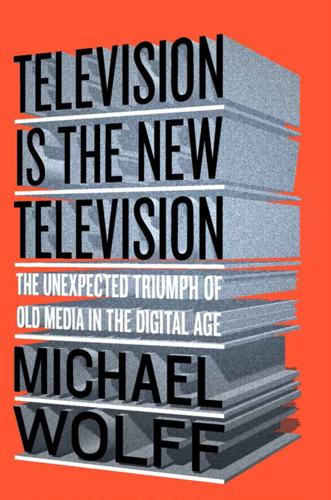
Television Is the New Television: The Unexpected Triumph of Old Media in the Digital Age
by
Michael Wolff
Published 22 Jun 2015
First, almost the entirety of digital media is advertising supported (ads that are far easier to skip and to ignore than those on television), save only for Netflix and other streaming services that charge for television content. Second, television, once wholly advertising driven, now derives 50 percent of its revenue from other sources—not that it has lost 50 percent of its advertising revenue, but rather that it has effectively doubled its revenue from non-ad sources. (NYU Stern School professor Scott Galloway argues that the healthiest media companies will have a revenue base that is evenly split between advertising and other licensing and subscription revenue streams.) What’s more, the Martin Sorrell point means virtually the opposite of what Auletta suggests: the overwhelming amount of advertising dollars that have moved into digital have not come from television budgets; in addition, this money has been parceled out in low-value increments that have hobbled rather than fueled the digital revolution.
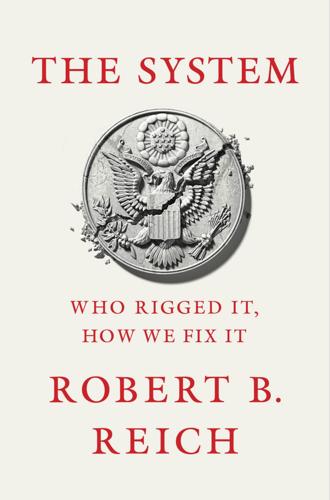
The System: Who Rigged It, How We Fix It
by
Robert B. Reich
Published 24 Mar 2020
The American economic pie continues to grow, but most workers are getting only crumbs. Most of the increasing value of the stock market has come directly out of the pockets of American workers. Three researchers—Daniel Greenwald at MIT’s Sloan School of Business, Martin Lettau at Berkeley, and Sydney Ludvigson at NYU—found that “from 1952 to 1988, economic growth accounted for 92 percent of the rise in equity values,” but that from 1989 to 2017, economic growth was responsible for just 24 percent of the rise. Most of the increase in share values has come from “reallocated rents to shareholders and away from labor compensation.”
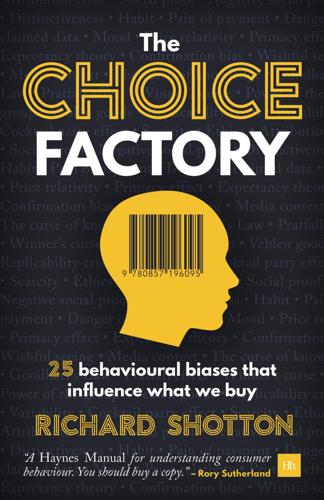
The Choice Factory: 25 Behavioural Biases That Influence What We Buy
by
Richard Shotton
Published 12 Feb 2018
The fact they still bid more when paying by card on such easily affordable items suggests that access to funds wasn’t a key factor. Some other reason was at play. The psychologists’ hypothesis was that paying by card dulls the pain of payment. When consumers pay with cash the cost of the good is far more salient, paying by card masks that sensation. In the words of NYU Stern School of Business researchers, Priya Raghubir and Joydeep Srivastava, this leads to credit cards being treated like “monopoly money”. In a rare flash of academic humour the authors titled their paper ‘Always Leave Home Without It’, a dig at the AMEX strapline that warned ‘Don’t Leave Home Without It’.
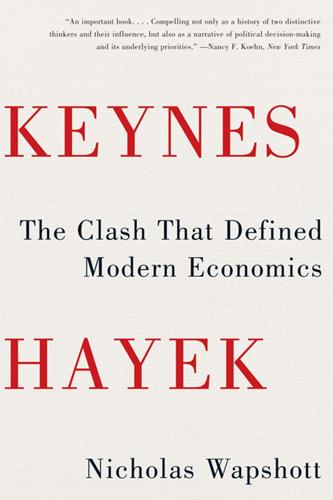
Keynes Hayek: The Clash That Defined Modern Economics
by
Nicholas Wapshott
Published 10 Oct 2011
Money was so tight that Hayek set off across the Atlantic with a one-way fare as he could not afford a round-trip. To save the price of a telegram, Hayek did not inform Jenks of his arrival date. Hayek disembarked at the passenger liner quay on Manhattan’s West Side in March 1923 with just twenty-five dollars in his pocket and presented himself at Jenks’s NYU office only to be told the professor could not be contacted. Hayek found himself in a strange land, penniless, without a friend. He decided to take a job until Jenks returned, and was offered one washing dishes in a Sixth Avenue restaurant. An hour before he was due to plunge his hands into the suds, he received a call from Jenks’s office saying that the economist had returned.
…
An hour before he was due to plunge his hands into the suds, he received a call from Jenks’s office saying that the economist had returned. This was the nearest Hayek came to performing manual labor. Indeed, in all his ninety-two years, he never worked for the private sector. Hayek set about his new American life with gusto. He began work on a Ph.D. at NYU under the supervision of J. D. Magee, a professor of economics; gate-crashed lectures by Wesley Clair Mitchell, an established authority of business cycles,42 the phenomenon whereby economic booms (periods of fast economic growth) were followed by slumps (periods of contracting economic activity); and attended seminars by the German socialist J.
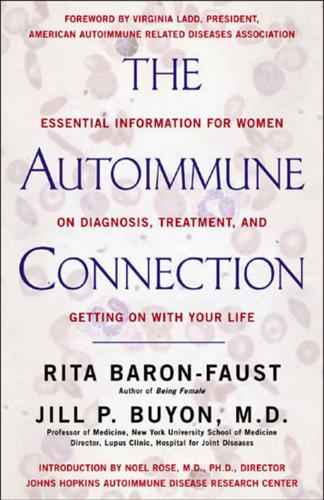
The Autoimmune Connection
by
Rita Baron-Faust
and
Jill Buyon
Published 21 Apr 2003
Estrogen replacement therapy (ERT) is considered safe for women with RA, and there have been some hints over the years that estrogen can even make RA a little better. “Women with rheumatoid arthritis do much better with estrogen; sometimes they even go into remission,” observes Lila E. Nachtigall, MD, a reproductive endocrinologist and professor of obstetrics and gynecology at the NYU School of Medicine who has studied estrogen for almost thirty-five years. “However, you need to do a complete evaluation, including blood tests to see if women have any autoantibodies that make them prone to clotting. If the tests come back positive, those women should not be given any form of estrogen, since it does have a risk of clotting such as deep vein thrombosis.”
…
Information may not be offered, or your questions about hormones may (again) be answered with “We don’t know” or “That’s a question you need to take up with your gynecologist.” “Rheumatologists aren’t discussing it, and the gynecologist may not know anything about autoimmune disease,” remarks Lila E. Nachtigall, MD, of the NYU School of Medicine, who has been researching estrogen for more than thirty years. “The question of hormones, be it birth control pills or hormone replacement, is part of the whole patient picture. So a woman needs to get answers somewhere. For our part, we find it extremely helpful when a woman keeps track of her symptoms, because it can help us individualize care.”
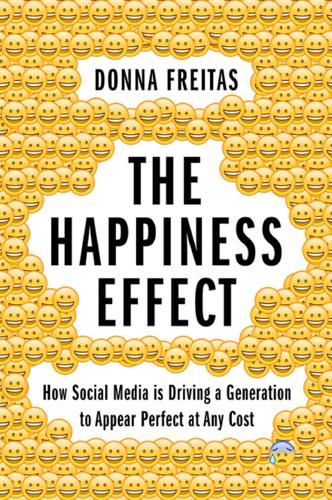
The Happiness Effect: How Social Media Is Driving a Generation to Appear Perfect at Any Cost
by
Donna Freitas
Published 13 Jan 2017
Noor Al-Deen and John Allen Hendricks provide a comprehensive and scholarly analysis of social media, with contributions that examine the implementation and effect of social media in various environments, including educational settings, strategic communication, advertising, public relations, politics, and legal and ethical issues. In the edited collection The Social Media Reader (New York: NYU Press, 2012), Michael Mandiberg presents pieces on peer production, copyright politics, and other aspects of contemporary (Web 2.0) Internet culture, including collaboration and sharing and the politics of social media and social networking. In The Culture of Connectivity: A Critical History of Social Media (New York: Oxford University Press, 2013), Jose van Dijck describes the rise of social media in the first decade of the twenty-first century up until 2012, providing both a historical and a critical analysis of the emergence of major platforms in the context of a rapidly changing ecosystem of connective media.
…
Conclusion 1.The idea that the Facebooks and Instagrams of today are like the grand new boulevards of still nascent modern cities came from a serendipitously timed reading of Marshall Berman’s All That Is Solid Melts Into Air: The Experience of Modernity (New York: Penguin, 1982), and in particular, his chapter “Baudelaire: Modernism in the Streets,” pp. 131–171. Appendix 1.See Deborah L. Tolman and Mary Brydon-Miller, eds., From Subjects to Subjectivities: A Handbook of Interpretive and Participatory Methods (New York: NYU Press, 2001). 2.For more on this, see Christian Smith, What Is a Person? Rethinking Humanity, Social Life, and the Moral Good from the Person Up (Chicago: University of Chicago Press, 2011), 277–314. Index accepting fake friends, 32–3, 65–6 alienation, 10, 23 Alone Together: Why We Expect More from Technology and Less from Each Other (Turkle), 305n2 anonymity, 124–42.
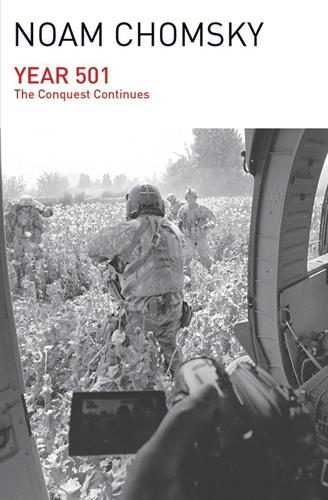
Year 501
by
Noam Chomsky
Published 19 Jan 2016
The Birth Symbol in Traditional Women’s Art (Museum of Textiles, Toronto, 1981) Americas Watch. The ‘Drug War’ in Colombia (October 1990) —The Struggle for Land in Brazil (Human Rights Watch, 1992) Amsden, Alice. Asia’s Next Giant: South Korea and Late Industrialization (Oxford, 1989) Anti-Slavery Society. West Papua (London, 1990) Appleby, Joyce. Capitalism and a New Social Order (NYU, 1984) Asia Watch. Human Rights in Korea (Jan. 1986) Aston, T.H., and C.H.E. Philpin. The Brenner Debate: Agrarian Class Structure and Economic Development in Pre-Industrial Europe (Cambridge, 1985) Axtell, James. The Invasion Within (Oxford, 1985) Bailey, Thomas. A Diplomatic History of the American People (New York, 1969) Ball, George.
…
The Nicaraguan Economic Experience, 1950-1984: Development and exhaustion of an agroindustrial model (PhD dissertation, Yale, 1986) McAfee, Kathy. Storm Signals (South End, 1991) McClintock, Michael. Instruments of Statecraft (Pantheon, 1992) McCoy, Alfred. The Politics of Heroin (Lawrence Hill, 1991; revision of 1972 edition) Merkl, Peter, ed. The Federal Republic of Germany at Forty (NYU press, 1989) Miller; Nathan. The Founding Finaglers (McKay, 1976) Milton, David. The Politics of U.S. Labor (Monthly Review, 1982) Minnear, Richard. Victor’s Justice. (Princeton, 1971) Monbiot, George. Poisoned Arrows (Abacus, London, 1989) Moody, Kim. An Injury to All (Verso, 1988) Moore, Joe.
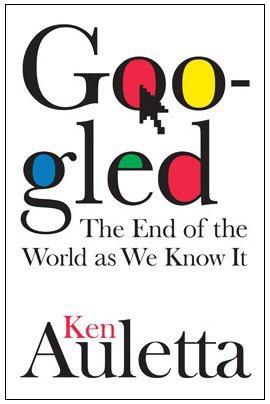
Googled: The End of the World as We Know It
by
Ken Auletta
Published 1 Jan 2009
Alternatively, if the public is truly less concerned with privacy questions and more interested in trading data for, say, a subsidized service, or is more interested in the trivial, as the late scholar Neil Postman believed, then privacy will be the least of our issues. A former student of Marshall McLuhan‘s, Postman taught at NYU for more than four decades and authored a variety of important books, the best-known of which was Amusing Ourselves to Death. In that book he argued that the real threat was not the one described in 1984 but one contained in an earlier book, Aldous Huxley’s Brave New World. Contrary to common belief even among the educated, Huxley and Orwell did not prophesy the same thing.
…
As Larry Page lamented, “The kinds of stories that generate page views”—a Britney Spears meltdown or a Jessica Simpon weight gain—“are not the kinds of stories reporters want to write,” or that he personally wants to read, “and that kind of makes it worse.” We are racing through a revolution comparable to the one ushered in by Herr Gutenberg’s printing press in the fifteenth Century. The outcome is as unclear today as it was then. “During the wrenching transition to print, experiments were only revealed in retrospect to be turning points,” NYU professor Clay Shirky wrote on his blog. He continued:The old stuff gets broken faster than the new stuff is put in its place. The importance of any given experiment isn’t apparent at the moment.... When someone demands to know how we are going to replace newspapers, they are really demanding to be told that we are not living through a revolution....
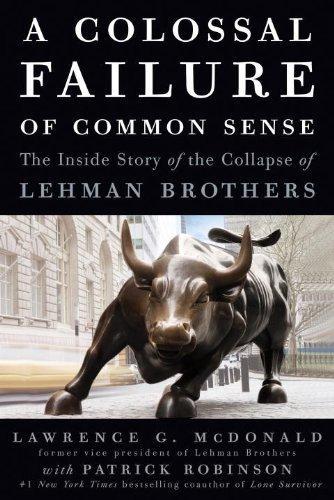
A Colossal Failure of Common Sense: The Inside Story of the Collapse of Lehman Brothers
by
Lawrence G. Mcdonald
and
Patrick Robinson
Published 21 Jul 2009
There was something of the night about this guy, and it all dated back to the early part of the 1980s, when he and his chief cohort had not quite covered themselves in glory. In fact, he had been instrumental in one of the biggest screwups in Lehman’s long history, and not surprisingly, there was a touch of Prince Machiavelli about the whole episode. Richard S. Fuld, New York born and bred, graduated from the University of Colorado and earned his MBA at NYU’s Stern School of Business. He joined Lehman in 1969, which was, with terrifying irony, the year Bobbie Lehman, the last of the family partners, died. Some say the grand old Wall Street firm died with him. In any event, Fuld, who began his career fresh out of college as a commercial paper trader, moved steadily up the organization.
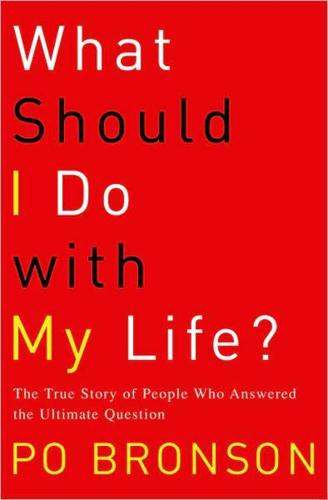
What Should I Do With My Life?
by
Po Bronson
Published 2 Jan 2001
For example, in high school, rather than turning in a term paper, he’d turn in a term movie on eight-millimeter film. Not for film class; for every class. He studied physics and chemistry at the University of Colorado, and, of course, lost interest. He dropped out, took a year off to travel, remembered his passion, and went back to school at NYU to get a degree in film. Loved it. So did he then make films? Nope. Didn’t have the courage. So he got into the business of film, using his science to break into special effects. Back then, special effects were created by what is called “motion control”—shooting one frame at a time from a camera mounted on a robotic vehicle.
…
Was that going to be the full sum of his contribution to the world—eradicating market inefficiencies by taking advantage of them? His was a very narrow life. He hadn’t learned anything new in several years. Joe started thinking about what he really wanted to do with his life. His girlfriend was in med school, and he found what she was learning very interesting. He enrolled in premed night classes at Hunter College and NYU, showing up in pinstripes. He took four semesters of science and the MCATs while holding down his day job—hoping this wasn’t a mistake, a mirage. The doctors he talked to were down on their profession, frustrated by reductions in their compensation inflicted by HMOs. But those concerns never seemed to matter when they were in a room with a patient.
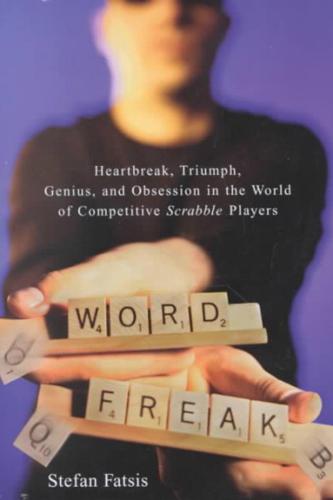
Word Freak: Heartbreak, Triumph, Genius, and Obsession in the World of Competitive ScrabblePlayers
by
Stefan Fatsis
Published 27 Jul 2001
And look at the answer if you can’t find it in a short time. And just go back over them.” “A lot of the people who play this game seem to have this predisposed anagramming ability,” I say, “or have the mental alacrity where they are drawn to creating a study program.” I mention a postdoctoral researcher at NYU named Mark DiBattista, who showed me a computer program he wrote that generates all of the seven-letter bingos containing single-point tiles only and all of the bingos containing six single-point tiles and one two-point tile. “I don’t have that bug.” “You don’t have the interest in studying that way?”
…
Mark’s wife, Verna Richards Berg, is a nurse from Jamaica with a singsongy Caribbean lilt. They met playing Scrabble. There’s a bookie named Josh Silber and a piano teacher named Laney Berel. Judy Kass has written biographies; Jack Eichenbaum is a geographer who also guides tours of Queens neighborhoods; Mark DiBattista, the NYU post-doc, studies geophysical fluid dynamics; and Woody Chen is a mailroom clerk in a bank who screams his high scores excitedly. There’s George Warnock, a buff guy with tattoos who serves as a guinea pig for drug company tests. There’s Diane Firstman, whom I’d played in the park so long ago, a budget director for a city government agency who turns out to be smart, caring, and witty, not at all the gloating clock-whacker I’d first imagined.
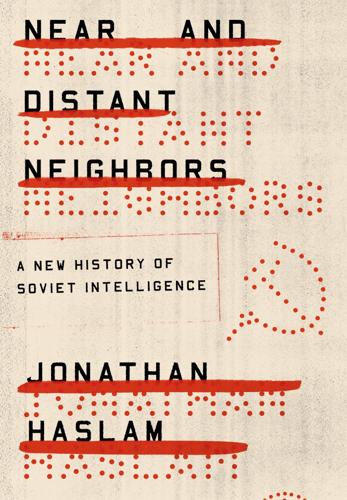
Near and Distant Neighbors: A New History of Soviet Intelligence
by
Jonathan Haslam
Published 21 Sep 2015
Rybalkin, Operatsiya, p. 36. 123. Haslam, The Soviet Union and the Struggle for Collective Security in Europe, 1933–39, chap. 7. 124. Haslam, “Political Opposition to Stalin and the Origins of the Terror in Russia, 1932–1936,” Historical Journal 29, no. 2 (1986): 395–418. 125. T. Gladkov, Nash chelovek v Nyu-Iork. Sud’ba rezidenta (Moscow: Eksmo, 2007), p. 105; Shvaryov, Razvedchiki-Nelegaly, p. 14; Vladimirov, “Naum Eitingon”; testimony of the defector Leon Helfand, July 1952, in KV/2/2681. 126. “In Franco’s Spain … A War-Weary Land,” The Times (Seville), May 24, 1936. 127. Quoted in Ocherki istorii Rossiiskoi vneshnei razvedki, vol. 3, p. 38; also I.
…
Gasparyan, Armen. Operatsiya “Trest”: Sovetskaya razvedka protiv russkoi emigratsii 1921–1937. Moscow: Veche, 2008. Gladkov, Teodor. Lift v Razvedku: “Korol” nelegalov Aleksandr Korotkov. Moscow: Olma Press, 2002. ______. Nagrada na vernost’—Kazn’. Moscow: Tsentrpoligraf, 2000. ______. Nash chelovek v Nyu-Iork: Sud’ba rezidenta. Moscow: Eksmo, 2007. Gladkov, Teodor, and Nikolai Zaitsev. I ya emu ne mogu ne verit’ … Moscow: Politizdat, 1983. Gorchakov, Ovidii. Skhvatka s chernym drakonom: Tainaya voina na Dal’nem Vostoke. Moscow: Veche, 2002. ______. Stalin i GRU. Moscow: Eksmo, 2010. ______. Yan Berzin—komandarm GRU.

A Line in the Tar Sands: Struggles for Environmental Justice
by
Tony Weis
and
Joshua Kahn Russell
Published 14 Oct 2014
Oil Change International, Exporting Energy Security: Keystone XL Exposed, September 2011, priceofoil.org/content/uploads/2011/09/OCIkeystoneXL_2011R.pdf. 5. Thomas Berry, The Great Work: Our Way into the Future (New York: Broadway Books, 2000). 22. Thomas-Muller, The Rise of the Native Rights-Based Strategic Framework 1. Winona LaDuke, 20th Annual Sheinberg Lecture on “Predator Economics, Human Rights, and Indigenous Peoples” at NYU, November 13, 2013, www.law.nyu.edu/news/winona-laduke-delivers-the-20th-annual-sheinberg-lecture. 2. Naomi Klein, The Shock Doctrine: The Rise of Disaster Capitalism (Toronto: Knopf Canada, 2007). 3. James Cameron, Tar Sands Press Conference, September 29, 2010, www.youtube.com/channel/UCV2gfWXslNkA0Odtgibts5g. 4.

The Ones We've Been Waiting For: How a New Generation of Leaders Will Transform America
by
Charlotte Alter
Published 18 Feb 2020
Experienced Democrats worried—with good reason—that embracing socialism would alienate moderate and conservative boomers in swing districts who bristled at the idea of a socialist revolution that might take away more of their money. Medicare for All sounded good, those Democrats noted, but 150,000,000 Americans got employer-based health insurance and many millions of them wanted to keep it. (Those Democrats preferred a public option, which Pete would eventually refer to as “Medicare for All Who Want It.”) When an NYU student asked Nancy Pelosi in 2017 whether there was room for Democrats to move left on economic issues, she replied curtly, “We’re capitalists.” Two years later, she sharpened her criticism. “I do reject socialism,” she told 60 Minutes. “That is not the view of the Democratic Party.” Republicans, of course, had a field day.
…
lowest rungs on the political ladder: Chris Cillizza, “Republicans Have Gained More Than 900 State Legislative Seats Since 2010,” The Washington Post, January 14, 2015, washingtonpost.com/news/the-fix/wp/2015/01/14/republicans-have-gained-more-than-900-state-legislative-seats-since-2010/. considering running for office: Shauna L. Shames, Out of the Running (New York: NYU Press, 2017), 5. political office in the mid-1980s: “The Cost of Winning an Election, 1986–2016,” Brookings Institution, n.d., brookings.edu/wp-content/uploads/2017/01/vitalstats_ch3_tbl1.pdf. seat cost $88,000: Shames, Out of the Running, 36. he was actually elected: Charlotte Alter, “‘We Can Do It Better.’
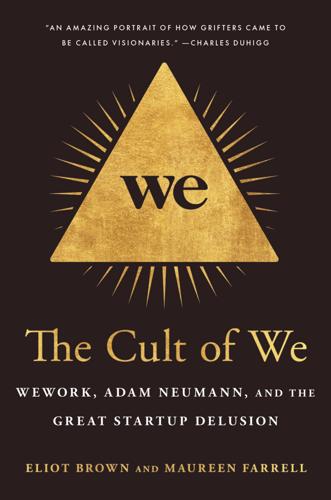
The Cult of We: WeWork, Adam Neumann, and the Great Startup Delusion
by
Eliot Brown
and
Maureen Farrell
Published 19 Jul 2021
For most corporations, such transportation is hardly a rational choice. The cost difference between flying private and commercial is simply extraordinary, making it extremely hard to justify economically. (VistaJet’s list rates on the Bombardier Global Express started at $16,000 an hour, so a trip from New York to Tokyo would cost more than $200,000.) An NYU economist even found that the stock performances of public companies with jets underperformed those without. One theory is that the decision to buy a jet is indicative of broader bad financial decision making, suggesting that a CEO is a poor steward of investors’ money. Neumann insisted to colleagues that buying a jet made more sense than renting, though few were convinced.
…
The following Monday morning, he wrote in his email that the “We” trademark news was “the news item that caused me to absolutely lose my mind—the item that, if I were a slightly more dedicated financial columnist, would have had me on the next helicopter back to the office.” Then there was Scott Galloway, an NYU marketing professor, entrepreneur, and best-selling author and a well-known, acerbic voice in Silicon Valley circles. On August 16, he penned a piece on WeWork titled “WeWTF.” It was brutal. Galloway ticked off the litany of governance concerns debated by the bankers weeks earlier, giving emphasis to Neumann’s profiting off the word “We.”
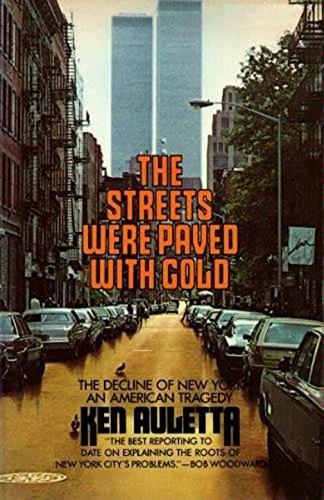
The Streets Were Paved With Gold
by
Ken Auletta
Published 14 Jul 1980
Underlying that defense is the unspoken assumption that no one is responsible. We are all victims. Leaders are not supposed to lead. Telling the truth can be harmful. The political system won’t allow it. A variation of the no one-is-responsible thesis was expounded by Lindsay’s former corporation counsel, Norman Redlich, now dean of NYU’s School of Law. “The fiscal crisis was not created by Robert Wagner, John Lindsay or Abe Beame, either individually or collectively,” he wrote on the Op-Ed page of the Times, “and it is grossly unfair to our former Mayors to make them the villains of our urban tragedy.” The “tragedy” was caused, he said, not by city officials but by such historical forces as the movement of poor people into New York and the exodus of middleincome residents; other levels of government were to blame for not picking up more city costs.
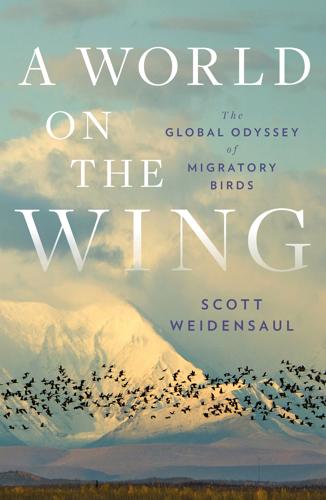
A World on the Wing: The Global Odyssey of Migratory Birds
by
Scott Weidensaul
Published 29 Mar 2021
There’s no other technology that can do what acoustics can do, on the scale of a continent, to tell us what species are migrating.” Three years later, I checked in with Farnsworth to see how things were progressing on what was now known as the BirdVox project, and found that his excitement, while tempered by some of the technical challenges, was largely undiminished. BirdVox is a collaboration between the Cornell Lab and NYU’s Music and Audio Research Laboratory, and Farnsworth is the only birder in the bunch. “They’re all music people, people who are interested in, ‘How do I classify the chords in the Beatles’ “Let it Be,” and how do I properly identify it when a band covers it versus the original, versus the version that was alternate take 12 on the unmastered, unreleased version?’

Melting Pot or Civil War?: A Son of Immigrants Makes the Case Against Open Borders
by
Reihan Salam
Published 24 Sep 2018
Other sectors will presumably have seen large productivity gains, which would create new wealth that could then flow to workers in the nonsubstitutable jobs that remain. And we shouldn’t neglect the possibility that the automation of high-skill jobs might expand the labor pool available to take on non-routine manual tasks that, for now, only humans can perform. As John Horton, a labor economist at NYU, has argued,26 most low-skill jobs in the United States and other rich market democracies are high-touch jobs in the service sector that, in their current form, require a degree of emotional intelligence that machines can’t match. This is one of the stronger arguments for the proposition that low-skill jobs will always be with us, and there’s some evidence for it.
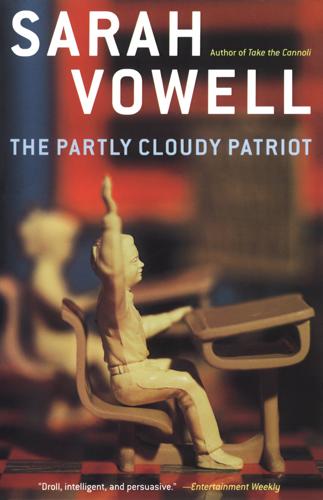
The Partly Cloudy Patriot
by
Sarah Vowell
Published 26 Aug 2002
At the time, that didn’t stop me from enjoying a good chuckle at his expense. But once I returned home, I felt guilty. I called my friend Kate, asking her if she could figure out why I do the things I do. Kate is a psychologist who counsels people with actual historical problems, like Kosovar refugees, at the Bellevue-NYU Program for Survivors of Torture. (If you really want to dampen your excitement about seeing the new Tom Hanks movie, just call Kate at her office to pick a show time and hear the receptionist answer the phone, “Program for Survivors of Torture.”) Kate asked what was wrong, and I told her that I’d just gotten back from Salem and I had a really good time.
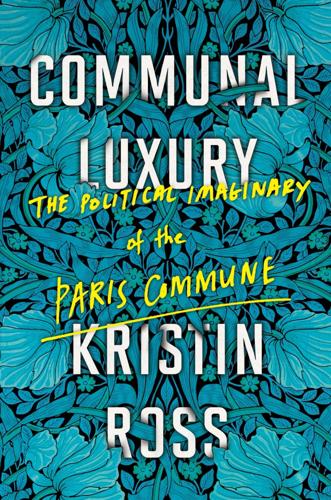
Communal Luxury: The Political Imaginary of the Paris Commune
by
Kristin Ross
Published 6 Apr 2015
I am grateful to Neil Brenner and Manu Goswami; the graduate students in Comparative Literature at New York University, at the University of Minnesota, at Princeton, and at Cornell; the Experimental Critical Theory seminar at UCLA; Jason Smith, Karen Pinkus, Gary Wilder, Carla Freccero, and Asad Haider; Marco Abel and Roland Végsó; François Richard, Nicolas Vieillescazes, and Razmig Keucheyan; and Alberto Toscano for creating lively spaces and memorable occasions for discussion of the book as it was progressing. Encouragement from Joan Scott, from my editor in France, Eric Hazan, as well as Dana Polan’s timely reading of the entire manuscript, helped bring it to completion. Thanks also to Jacques Lezra for making the department at NYU a good working environment, to Stella Maglani-Belkacem at La Fabrique for her attentive support, and to my editor in the UK, Sebastian Budgen, for comradely assistance of various and sundry kinds. This book is for Harry and Adrian, who each in his own way helped make it possible in every which way.
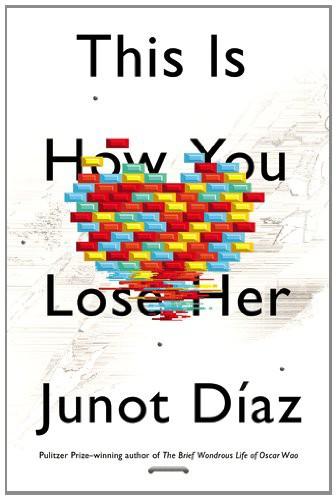
This Is How You Lose Her
by
Junot Diaz
Published 10 Sep 2012
Alma is a Mason Gross student, one of those Sonic Youth, comic-book-reading alternatinas without whom you might never have lost your virginity. Grew up in Hoboken, part of the Latino community that got its heart burned out in the eighties, tenements turning to flame. Spent nearly every teenage day on the Lower East Side, thought it would always be home, but then NYU and Columbia both said nyet, and she ended up even farther from the city than before. Alma is in a painting phase, and the people she paints are all the color of mold, look like they’ve just been dredged from the bottom of a lake. Her last painting was of you, slouching against the front door: only your frowning I-had-a-lousy-Third-World-childhood-and-all-I-got-was-this-attitude eyes recognizable.
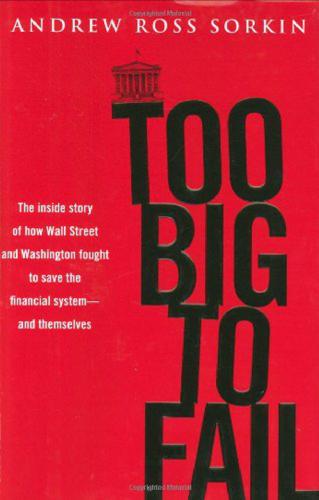
Too big to fail: the inside story of how Wall Street and Washington fought to save the financial system from crisis--and themselves
by
Andrew Ross Sorkin
Published 15 Oct 2009
“People need broad experience”: Ibid. Callan history, early career: Susanne Craig, “Lehman’s Straight Shooter,” Wall Street Journal, May 17, 2008. “Would it be weird for someone like to me to work on Wall Street?”: From a profile of Callan in NYU Law School’s alumni newsletter, “Erin Callan, ’90: Chief Financial Officer, Lehman Brothers Holdings Inc.,” April 2008. See http://www.law.nyu.edu/alumni/almo/ pastalmos/20072008almos/erincallanapril/index.htm Citadel Investment Group, she orchestrated the sale of $500 million worth of five-year bonds: Pierre Paulden, “Rainmakers—Alpha Female,” Institutional Investor, June 2007.
…
Another woman at the firm, Ros Stephenson—perhaps the only Lehman banker besides Fuld who could get Kohlberg Kravis Roberts kingpin Henry Kravis on the phone—was furious about the appointment and took her complaint directly to Dick Fuld, who, as always, backed Gregory. Callan yearned to prove to her colleagues that she was a seasoned street fighter, just like Fuld. If anything, her path to the very top of the financial industry had been even more improbable than his. One of three daughters of a New York City police officer, she graduated from NYU Law School in 1990 and took a job working for the big Wall Street firm of Simpson Thacher & Bartlett as an associate in its tax department. Lehman Brothers was a major client. After five years at Simpson, she took a chance one day and phoned her contact at Lehman: “Would it be weird for someone like me to work on Wall Street?”
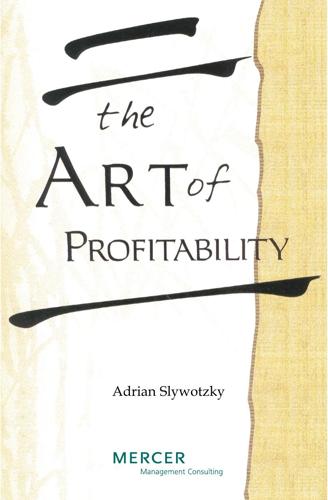
The Art of Profitability
by
Adrian Slywotzky
Published 31 Aug 2002
Second, every lesson will last exactly one hour. And I’ll expect you to spend time between lessons reading and otherwise preparing. Is that acceptable?” Steve bowed his head slightly. “Yes, it is.” “Are you doing anything other than working at Delmore? Moonlighting, or taking classes somewhere?” “I am taking a night class this fall at NYU—financial management. I thought I’d take one or two courses a semester to help me decide whether to go on for an MBA. That’s okay, right?” It had suddenly occurred to Steve that Zhao might consider him over-booked. “It’s fine,” Zhao reassured him. “Your preparation time for me will be about four hours per week.
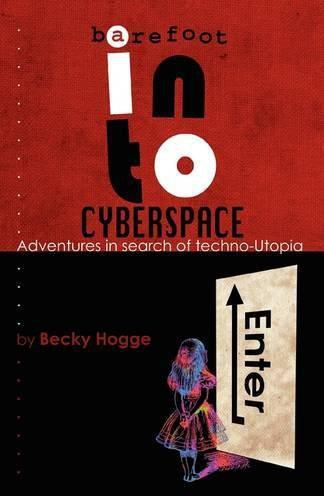
Barefoot Into Cyberspace: Adventures in Search of Techno-Utopia
by
Becky Hogge
,
Damien Morris
and
Christopher Scally
Published 26 Jul 2011
We Come In Peace presented at the 27th Chaos Communication Congress, December 27, Berlin. http://www.youtube.com/watch?v=7ZmtCUrx9t0. Gonggrijp, Rop, and Frank Rieger. 2005. We Lost The War presented at the 22nd Chaos Communication Congress, December 27, Berlin. http://video.google.com/videoplay?docid=-3755503618571546547#. Grossman, Wendy M. 1997. net.wars. United States: NYU Press. Hopper, Dennis. 1969. Easy Rider. Horvath, Michael D. 2008. Wikileaks.org—An Online Reference to Foreign Intelligence Services, Insurgents, or Terrorist Groups? Counterintelligence Analysis Report. US Department of Defense Intelligence Analysis Program (DIAP), March 18. http://wikileaks.org/le/us-intel-wikileaks.pdf.

Lifestyle Entrepreneur: Live Your Dreams, Ignite Your Passions and Run Your Business From Anywhere in the World
by
Jesse Krieger
Published 2 Jun 2014
At a time when his culture and family encouraged him to follow the traditional path of working hard as a life-long employee at a respectable company, Akira knew from a young age that he wanted something different, something more, but he didn’t yet know what that extra something was. So when he got a chance to study in New York he jumped at the chance, even though he barely spoke enough English to take a taxi from the airport to NYU. After studying double time for months, going to classes by day and then learning what all the new vocabulary meant at night, Akira started to grasp English enough to see how ineffective many English programs are for Japanese speakers. Deciding this could be a good business idea, Akira offered a seminar called “How to Learn English Effectively for Japanese People” and got 40 sign-ups for $300 each after taking out a small ad in a Japanese-American publication.
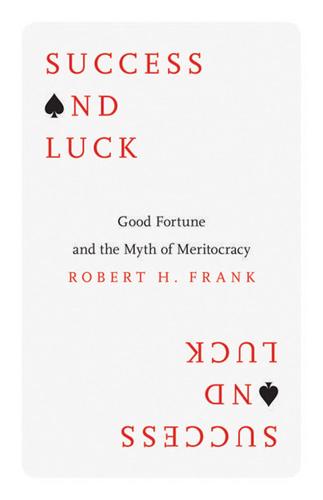
Success and Luck: Good Fortune and the Myth of Meritocracy
by
Robert H. Frank
Published 31 Mar 2016
With apologies to those I neglect to mention explicitly, I’d like to express my sincere gratitude to Peter Bloom, Summer Brown, Bruce Buchanan, CAU seminar participants, Philip Cook, Richard Dawkins, David DeSteno, Nick Epley, Alissa Fishbane, Chris Frank, David Frank, Hayden Frank, Jason Frank, Srinagesh Gavernini, Tom Gilovich, Piper Goodeve, Janet Greenfield, Jon Haidt, Ori Heffetz, Yuezhou Hou, Graham Kerslick, Kathi Mestayer, Dave Nussbaum, NYU Paduano Seminar participants, Sam Pizzigati, Dennis Regan, Russell Sage Foundation seminar participants, Kirsten Saracini, Eric Schoenberg, Barry Schwartz, Larry Seidman, Amit Singh, Rory Sutherland, David Sloan Wilson, Andrew Wylie, and Caitlin Zaloom for their advice and encouragement. They of course bear no responsibility for any remaining errors.
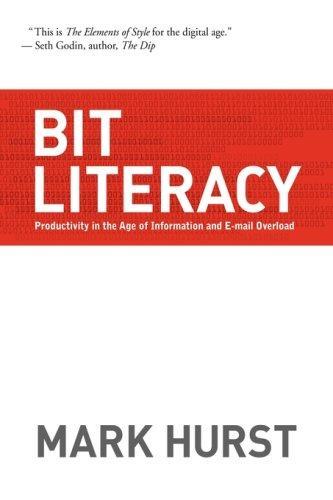
Bit Literacy: Productivity in the Age of Information and E-mail Overload
by
Mark Hurst
Published 15 Jun 2007
(“Breaking the Myth of Megapixels,” the New York Times, February 8, 2007.) 49 “The phone of the future,” The Economist, December 2, 2006. 50 One organization that fights corporate abuse of copyright law is the EFF, or Electronic Frontier Foundation, at eff.org. 51 In the December 3, 2006 New York Times Magazine article “Open Source Spying,” by Clive Thompson, NYU professor Clay Shirky put it best: “The normal case for social software is failure.” 52 The “paperless office” may also be within reach, at last, for some companies. As employees become more effective with bits, they will have less need to print out e-mails, documents, and other files. Paper will always be useful in some situations, but bit-literate users will avoid it when possible. 53 “Open Source Spying,” by Clive Thompson, the New York Times Magazine, December 3, 2006. 54 Popup text from Microsoft Word 2004 for Mac, version 11.0. 55 The SANS Internet Storm Center monitors the average "survival time" of a Windows PC at http://isc.sans.org/survivaltime.html. 56 The name was coined by Helen Moriarty, mother of my business partner Phil Terry, back in 1999. 57 Here's most of what we add: QuicKeys for one-touch access to applications and the team contacts file; Default Folder for one-touch folder access; Typinator or TypeIt4Me as the bit lever; TextWrangler as the text editor; AppleWorks as the word processor and wireframing tool; FileMaker for databases; Now Up-to-Date for the calendar; Firefox or Safari as the Web browser; a Gootodo.com account for the todo list; Mailsmith for the e-mail program; Microsoft Office for compatibility to client files; and for really dedicated learners, the Dvorak keymap for the keyboard.

Sleepwalk With Me: And Other Painfully True Stories
by
Mike Birbiglia
Published 11 Oct 2010
I did Penn College, Penn State, UPenn, Penn State Behrend, and Alvernia College, which is in Pennsylvania but doesn’t have a catchy name. I’ve played St. Rose, St. Mary’s, College of the Assumption, Salve Regina, Notre Dame . . . I played Michigan, Michigan State, Central Michigan, Northern Michigan. I did shows at West Virginia Tech, Texas Tech, Illinois Tech. I did BU, CU, NYU. I played Johnson & Wales (twice) where some people major in “pastry.” The food in the cafeteria was terrible. I did shows at Harvard, Princeton, Yale, and Columbia. Middlebury, Monmouth, Rider, Ripon, Case Western, Northwestern, and Norwich University, which is a private military college in Vermont.
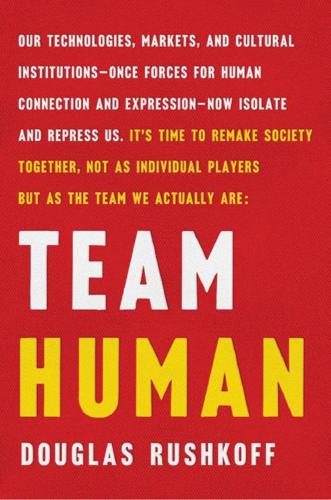
Team Human
by
Douglas Rushkoff
Published 22 Jan 2019
The easiest way to break free of simulation is to recognize the charade Johan Huizinga, Homo Ludens: A Study of the Play-Element in Culture (Eastford, CT: Martino Fine Books, 2016). Stage magic confounds our logical sensibilities Kembrew McLeod, Pranksters: Making Mischief in the Modern World (New York: NYU Press, 2014). 65. The psychologist answered, “Find the others.” Timothy Leary, “You Aren’t Like Them,” lecture at UC Berkeley, 1968. Crosstalk breeds solidarity, and solidarity breeds discontent Trebor Scholz, Uberworked and Underpaid: How Workers Are Disrupting the Digital Economy (Cambridge, UK: Polity, 2016).
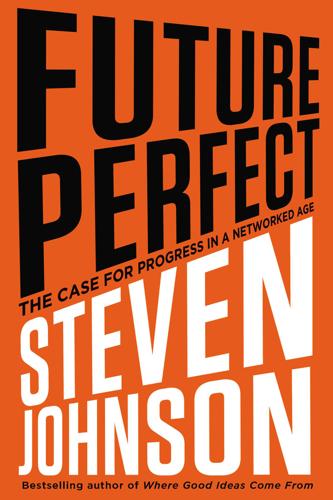
Future Perfect: The Case for Progress in a Networked Age
by
Steven Johnson
Published 14 Jul 2012
For the peer progressive, one way around that bottleneck is to create reward systems that make patents unnecessary, as in the premiums of the RSA. But where patents turn out to be indispensable, it is also possible to use peer networks to extend and diversify the minds working on the patent review problem. Several years ago, a visionary NYU law professor named Beth Noveck began developing a program that she called peer to patent, which was, in effect, a software platform that allowed outside experts and informed amateurs to contribute to the prior art discovery phase, both through tracking down earlier inventions that might be relevant and explaining those inventions to the overwhelmed examiner in the patent office.
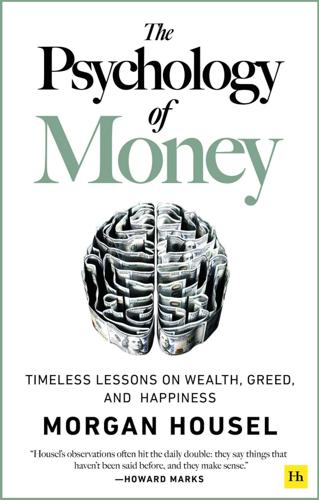
The Psychology of Money: Timeless Lessons on Wealth, Greed, and Happiness
by
Morgan Housel
Published 7 Sep 2020
But no one is crazy—we all make decisions based on our own unique experiences that seem to make sense to us in a given moment. Now let me tell you a story about how Bill Gates got rich. Luck and risk are siblings. They are both the reality that every outcome in life is guided by forces other than individual effort. NYU professor Scott Galloway has a related idea that is so important to remember when judging success—both your own and others’: “Nothing is as good or as bad as it seems.” Bill Gates went to one of the only high schools in the world that had a computer. The story of how Lakeside School, just outside Seattle, even got a computer is remarkable.
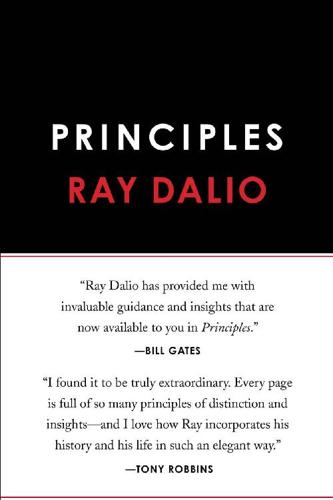
Principles: Life and Work
by
Ray Dalio
Published 18 Sep 2017
I should also explain that my personal circumstances at the time also drew me to psychology and neurology. While for the most part I am keeping my family members’ lives out of this book to protect their privacy, I will tell you this one story about my son Paul as it is relevant and he is open about it. After graduating from NYU’s Tisch film school, Paul headed out to Los Angeles to take a job. One day he went to the front desk of the hotel where he was staying while he looked for an apartment and smashed their computer. He was arrested and thrown in jail, where he was beaten up by guards. Ultimately, he was diagnosed with bipolar disorder, released into my custody, and admitted to the psychiatric ward of a hospital.
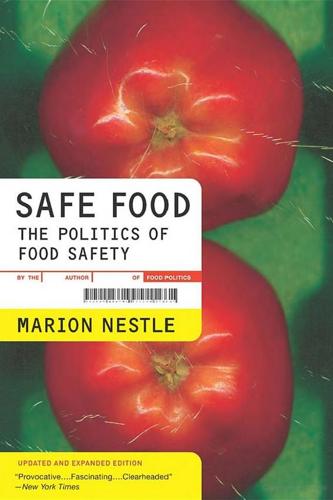
Safe Food: The Politics of Food Safety
by
Marion Nestle
Published 1 Jan 2010
For encouragement throughout I am grateful to my agent, Lydia Wills; to Wendel Brunner, Loma Flowers, Ruth Rosen, JoAnn Silverstein, and Sam Silverstein; to my Moss cousins, and to my children and their partners: Rebecca Nestle and Michael Suenkel, and Charles Nestle and Lidia Lustig. I owe special thanks to my extraordinary colleagues in the Department of Nutrition and Food Studies at NYU for their forbearance and assistance and review of the manuscript at every stage of preparation, particularly to Alyce Conrad for designing several of the more complicated illustrations, Fred Tripp for his daily clipping service to the Wall Street Journal, Ellen Fried for expert research assistance and review of the manuscript at every stage of preparation, and Jessica Fischetti and Kelli Ranieri for office life support.
…
If they want to sell us Frankenfood, perhaps it’s time to gather the villagers, light some torches, and head to the castle” (NYT, June 16, 1992:A24). 3. Gaull GE, Goldberg RA, eds. New Technologies and the Future of Food and Nutrition. New York: John Wiley & Sons, 1991. 4. Fraley R. Sustaining the food supply. Bio/Technology 1992;10:40–43. 5. I am indebted to my NYU colleague Dorothy Nelkin for her discussion of these ideas. See: Nelkin D. Selling Science: How the Press Covers Science and Technology. San Francisco: W.H. Freeman, 1995. CHAPTER 5. PEDDLING DREAMS: PROMISES VERSUS REALITY 1. GAO. Genetically Modified Foods: Experts View Regimen of Safety Tests as Adequate, but FDA’s Evaluation Process Could Be Enhanced.
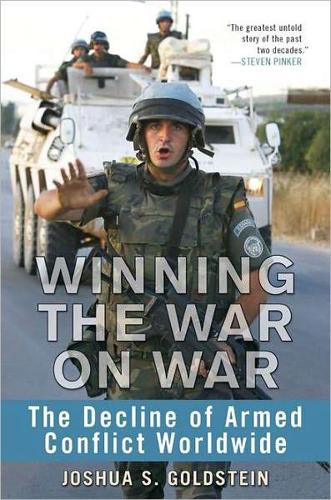
Winning the War on War: The Decline of Armed Conflict Worldwide
by
Joshua S. Goldstein
Published 15 Sep 2011
In the post–Cold War era, “the United Nations remained the preeminent international actor in the pursuit of peace, but its efforts were part of an extraordinary growth in conflict prevention, mediation, peacekeeping, and peace-building undertaken by other multilateral institutions, regional and subregional organizations, individual states, nongovernmental organizations (NGOs), and private peacemakers,” writes NYU conflict researcher Teresa Whitfield. As other researchers have noted, conflict resolution began making a difference in the 1980s in places such as South Africa, and the new kinds of conflicts that predominated in the post–Cold War era were “exactly the type of conflict that had preoccupied the conflict resolution thinkers for many years.”
…
Rumors and theories swirled about who killed him and why, but the only sure truth is that Fred Cuny was never seen again, and the world is poorer for it. Cuny’s fate is becoming more common. In 2008, 122 humanitarian aid workers were killed and 138 more “kidnapped or seriously injured in violent attacks. This toll is the highest of the twelve years that our study has tracked these incidents,” wrote researchers at NYU. Not only have numbers risen steadily since around 2001, but even relative to the number of aid workers active in the world the number has risen. However, the chances of a given aid worker in the field experiencing one of these crimes in a given year is still below one in a thousand. The most dangerous countries were Sudan, Afghanistan, and Somalia, and they accounted for all the increase in recent years.

The Shifts and the Shocks: What We've Learned--And Have Still to Learn--From the Financial Crisis
by
Martin Wolf
Published 24 Nov 2015
But in a depression, the slump in activity is exceptionally deep and prolonged. Recessions are frequent events. Depressions (or slumps) are relatively rare. 1. From Crisis to Austerity 1. Robert E. Lucas, ‘ “Macroeconomic Priorities”, Presidential Address to the American Economic Association’, 4 January 2003, http://pages.stern.nyu.edu/~dbackus/Taxes/Lucas%20priorities%20AER%2003.pdf. 2. Hank Paulson, On the Brink: Inside the Race to Stop the Collapse of the Global Financial System (New York and London: Business Plus and Headline, 2010), pp. 435–6. 3. Anatole Kaletsky, Capitalism 4.0: The Birth of a New Economy (London: Bloomsbury, 2010), pp. 147–8. 4.
…
Against the Consensus: Reflections on the Great Recession (Cambridge: Cambridge University Press, 2013). Lipton, David. ‘Emerging Markets in Transition’, 8 October 2013 http://www.imf.org/external/np/msc/2013/am/lipton.pdf. Lucas, Robert E. ‘Macroeconomic Priorities’, Presidential Address to the American Economic Association’, 4 January 2003. http://pages.stern.nyu.edu/~dbackus/Taxes/Lucas%20priorities%20AER%2003.pdf. McKinsey Global Institute. Mapping Global Capital Markets 2011, August 2011. http://www.mckinsey.com/insights/global_capital_markets/mapping_global_capital_markets_2011 McKinsey Global Institute. Debt and Deleveraging: Uneven Progress on the Road to Growth.

Gonzo: The Life of Hunter S. Thompson
by
Corey Seymour
,
Johnny Depp
and
Jann S. Wenner
Published 31 Oct 2007
He said, “Yeah, you went in the tank; you went in the tank.” He never forgave me for that. COREY SEYMOUR Most of my time with Hunter was spent in hotel rooms, just the two of us, or with a few of his friends over. But in 1994, I was with him at the Beat Generation Conference that Doug Brinkley had organized at NYU. The conference was my first real experience of seeing what kind of an insane following he had. We were late, of course—I had my usual ordeal trying to get Hunter up. That day’s random time-stop was Hunter’s obsessive attention to a fax he was making to send Jack Nicholson, who had been in the news for bashing somebody’s car in with a golf club on a highway in California.
…
When we finally got to the conference, Hunter was sitting up on the stage as part of a panel, and as soon as he sat down, he called up some student in the first row and gave him some cash and had him run out to buy him some beer. Hunter and I had a plan to watch a basketball play-off game afterward—we wouldn’t have time to get up to his hotel room, because we were all the way downtown—and we ran into some poor young NYU student who eagerly offered up the only set of keys to her apartment, which was a block away, for us to watch the game. We were all set to head over after Hunter’s talk, and then he got mobbed—really mobbed—by a couple hundred people. It didn’t get really ugly, but it was on the way to that. We had to rush him into a car, and people were jumping on top of the car and sticking their hands in through the windows to try to get him to sign things.

More: The 10,000-Year Rise of the World Economy
by
Philip Coggan
Published 6 Feb 2020
Cutts, “Power from the ground up: Japan’s land bubble”, Harvard Business Review, May–June 1990 36. Coggan, Paper Promises, op. cit. 37. Thomas Philippon, “Has the US finance industry become less efficient? On the theory and measurement of financial intermediation”, September 2014, http://pages.stern.nyu.edu/~tphilipp/papers/Finance_Efficiency.pdf 38. Barry Eichengreen and Charles Wyplosz, “The unstable EMS”, https://www.Brookings.Edu/Wp-Content/Uploads/1993/01/1993a_Bpea_Eichengreen_Wyplosz_Branson_Dornbusch.Pdf 39. Source: https://www.nber.org/cycles.html 40. The day was dubbed Black Wednesday although, in fact, it allowed Britain to slash interest rates and let the economy recover.
…
A People’s History of Modern Europe, Pluto Press, 2016 Pethokoukis, James “What the story of ATMs and bank tellers reveals about the ‘rise of the robots’ and jobs”, American Enterprise Institute, June 6th 2016, http://www.aei.org/publication/what-atms-bank-tellers-rise-robots-and-jobs Petzinger, Thomas Hard Landing: The Epic Contest for Power and Profits That Plunged the Airlines into Chaos, Random House, 1995 Pfeffer, Jeffrey Dying for a Paycheck: How Modern Management Harms Employee Health and Company Performance – And What We Can Do About It, HarperBusiness, 2018 Philippon, Thomas “Has the US finance industry become less efficient? On the theory and measurement of financial intermediation”, September 2014, http://pages.stern.nyu.edu/~tphilipp/papers/Finance_Efficiency.pdf Philipsen, Dirk The Little Big Number: How GDP Came to Rule the World and What to Do about It, Princeton University Press, 2015 Piketty, Thomas Capital in the 21st Century, Harvard University Press, 2014 Pilling, David Bending Adversity: Japan and the Art of Survival, Penguin, 2014 —— The Growth Delusion: The Wealth and Well-Being of Nations, Bloomsbury, 2018 Pinker, Steven The Better Angels of Our Nature: A History of Violence and Humanity, Penguin, 2011 —— Enlightenment Now: The Case for Reason, Science, Humanism and Progress, Viking, 2018 Pollard, Sidney Peaceful Conquest: The Industrialization of Europe, 1760–1970, Oxford University Press, 1981 Pomeranz, Kenneth The Great Divergence: China, Europe, and the Making of the Modern World, Princeton University Press, 2000 Portes, Jonathan “How small is small?
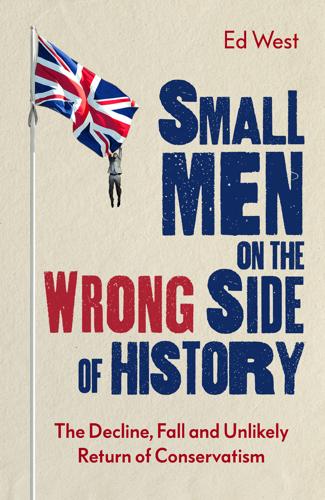
Small Men on the Wrong Side of History: The Decline, Fall and Unlikely Return of Conservatism
by
Ed West
Published 19 Mar 2020
Alice Dreger, Galileo’s Little Finger: Heretics, Activists and the Search for Justice in Science (New York: Penguin, 2015). 4 https://twitter.com/CarlWRitter/status/1047724327234416641. 5 Stephen Hilgartner, ‘The Sokal Affair in context’, Science, Technology, & Human Values, vol. 22, no. 4 (Autumn 1997), https://www.jstor.org/stable/689833?seq=1#page_scan_tab_contents. 6 https://datausa.io/profile/cip/05/. 7 Richard Dawkins, ‘Postmodernism disrobed’, Nature (9 July 1998), https://physics.nyu.edu/sokal/dawkins.html. 8 https://www.city-journal.org/html/how-criminologists-foster-crime-12272.html. 9 https://static1.squarespace.com/static/56eddde762cd9413e151ac92/t/58b5a7cd-03596ec6631d8b8a/1488299985267/Left+Wing+Bias+Paper.pdf. 10 Noah Carl, ‘Cognitive ability and socio-political beliefs and attitudes’, https://ora.ox.ac.uk/objects/uuid:856fc58a-120f-4a51-a569-422e201e9f61/download_file?
…
Tinker Bell and the Globalist Plot to Impose Open Borders 1 Michael Morpurgo and Emma Chichester Clark (illustrator), The Pied Piper of Hamelin (London: Walker Books, 2013). 2 https://www.telegraph.co.uk/culture/books/6866648/Bestselling-authors-of-the-decade.html. 3 https://www.spectator.co.uk/2014/01/agitprop-for-toddlers-the-oddly-strident-politics-of-cbeebies/. 4 http://www.spectator.co.uk/features/9121001/agitprop-for-toddlers-the-oddly-strident-politics-of-cbeebies/. 5 http://people.stern.nyu.edu/jhaidt/articles/LoBue.nishida.2010.when-getting-something-good-is-bad.pub075.pdf. 6 https://www.theguardian.com/commentisfree/2018/dec/19/reverse-working-week-six-year-olds-vote-political-demands. 7 https://www.tes.com/news/school-news/breaking-news/exclusive-teachers-vote-shifting-dramatically-towards-labour. 8 https://www.telegraph.co.uk/education/secondaryeducation/10216388/Its-no-wonder-none-of-my-friends-are-teenage-Tories.html.
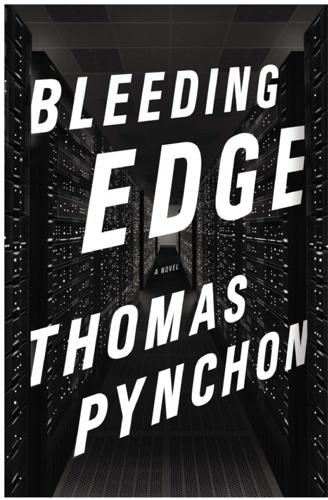
Bleeding Edge: A Novel
by
Thomas Pynchon
Published 16 Sep 2013
When Reg discovered the zoom feature on his camcorder, there was a lot of zooming in and out for what you’d have to call its own sake, details of human anatomy, extras in crowd scenes, hip-looking cars in the background traffic, so forth. One fateful day in Washington Square, Reg happened to sell one of his cassettes to a professor at NYU who taught film, who next day came running down the street after Reg to ask, out of breath, if Reg knew how far ahead of the leading edge of this post-postmodern art form he was working, “with your neo-Brechtian subversion of the diegesis.” Because this somehow sounded like a pitch for a Christian weight-loss program, Reg’s attention began to drift, but the eager academic persisted, and soon Reg was showing his tapes to doctoral seminars, from which it was only a step to shooting his own pictures.
…
“And . . . this is nothing to do with Jagdeep’s sister. With the several years’ premature, uh . . .” “Rack,” Otis suggests, being then obliged to dodge a brotherly krav maga sucker punch. “You won’t see her anyway, Zig, she’ll be partying,” running off, Ziggy in pursuit, “down in the Village, she only dates NYU guys—” Horst with a straight face not unmodulated by a shit-eating grin, “Series’ll be on tonight, El Duque’s starting, maybe against Curt Schilling, we could stay in and watch the game . . .” “Buy me some peanuts and Cracker Jack?” Otis has decided he’ll go as Vegeta, his hair radically gelled up tonight into spikes, his silver-and-blue outfit obtained from some strange Asian site, fulfilled and delivered almost before he clicked “Add to Cart.”
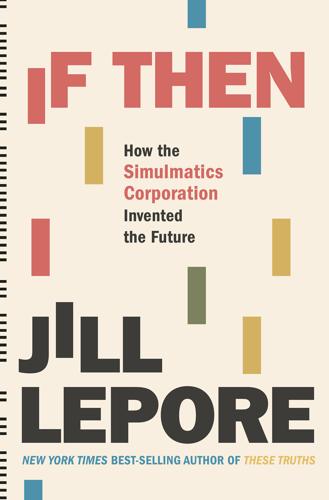
If Then: How Simulmatics Corporation Invented the Future
by
Jill Lepore
Published 14 Sep 2020
Searching for someone “to direct the establishment of a psychological warfare center in Vietnam,” he asked the political scientist Al de Grazia if he’d be willing to go to Saigon. Pool and de Grazia had been friends since they were undergraduates and then graduate students together at the University of Chicago. They’d been at Stanford together, too. But after de Grazia was denied tenure at Stanford, he’d become something of an academic exile. He was still teaching, at NYU and Princeton, but he was best known as the most prominent American defender of the psychiatrist Immanuel Velikovsky, who believed that ancient Egypt and other ancient civilizations had been influenced by collisions between the earth and other planets. Pool, by that point, had grown desperate. A lot of people at ARPA had had it with Simulmatics, for all kinds of administrative mismanagement, including leaks to the press, a near “mutiny” among those employed in Saigon, a failure to submit required reports, and a general lack of appreciation for chain of command.
…
Coleman understood the report as an argument for increasing efforts to desegregate American public schools—the report would undergird arguments for busing—but critics on the left dismissed the report as racist, especially after Coleman publicly argued against busing, predicting, correctly, that it would lead to white flight.14 In 1967, around the same time Greenfield convinced Al de Grazia to run Simulmatics’ operations in Saigon, he hired Sol Chaneles to run Simulmatics’ Urban Studies Division, which sought contracts from federal, state, and municipal governments to conduct simulations, making models of things like crime, unemployment, and traffic. Chaneles had a PhD in sociology from NYU, with a specialty in criminal justice, and had worked for the New York Department of Corrections.15 But the real impetus for Simulmatics’ Urban Studies Division came from Daniel Patrick Moynihan. In 1964, Pool had participated in a conference on “computer methods in the analysis of large-scale social systems” held at the Harvard-MIT Joint Center for Urban Studies, where Moynihan would shortly become the director.16 Shortly afterward, Pool and Alex Bernstein submitted a Simulmatics proposal involving the simulation of labor markets to Moynihan, who was then assistant secretary of labor.
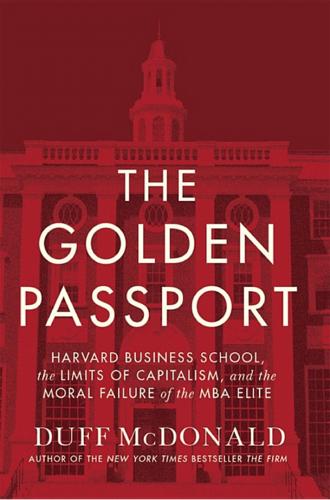
The Golden Passport: Harvard Business School, the Limits of Capitalism, and the Moral Failure of the MBA Elite
by
Duff McDonald
Published 24 Apr 2017
Thinking it might be time to take his journeyman talents elsewhere, Lynton reportedly had two conversations with Time Warner CEO Jeff Bewkes about running Warner Bros. in early 2013 as well as preliminary discussions with a headhunter about the presidency of Tulane University later that year. In January 2014, he met with the board of the Smithsonian Institution about its top job. He also spent over a year angling for the job of president of New York University, and used the HBS network there as well: NYU board member John Paulson (’80) helped facilitate the candidacy. But the network calls upon its members in return. In December 2013, HBS’s senior development officer, Lisa Hunt Batter, emailed Lynton to thank him on behalf of Dean Nohria, who was “able to count on [Lynton’s] wise counsel and support.”
…
Changing social norms regarding inequality and the acceptability of very high wages might partly explain the rise in U.S. top wage shares observed since the 1970s.”5 In other words, executives have seen their compensation rise not because of their contribution to corporate performance, but because of a surprising cultural acceptance of exploding executive compensation regardless of whether it was deserved or not. What Piketty is saying, observes Liam Murphy, a philosophy professor at NYU, is that “the real reason for the explosion in supermanagers’ pay . . . is that supermanagers set supermanagers’ pay.”6 Among the responses from the executive suite to accusations of excessive pay: We’re not the ones making crazy money—take a look at hedge fund managers! There is some truth to the point: “While CEO salaries in the U.S. appear unconstrained by any sense of modesty,” writes Michigan’s Jerry Davis, “the more extreme sources of inequality come from outside of the corporate ambit.
…
Cruikshank, A Delicate Experiment: The Harvard Business School 1908–1945 (Boston: Harvard Business Review Press, 1987), p. 141. 4Ibid. 5Ragnhild J. Roberts, “A Short History of the Harvard-Radcliffe Program in Business Administration: 1937–1963,” Harvard-Radcliffe Program in Business Administration Records, p. 2. 6https://www.stern.nyu.edu/experience-stern/about/history/timeline. 7http://c250.columbia.edu/c250_events/symposia/history_women_timeline.html. 8Roberts, “A Short History of the Harvard-Radcliffe Program in Business Administration,” p. 4. 9Dean Stanley F. Teele, letter to the president of Harvard, 1955–56, Report of the President of Harvard College and reports of departments, p. 465. 10Ibid., pp. 465–66. 11Dean Stanley F.
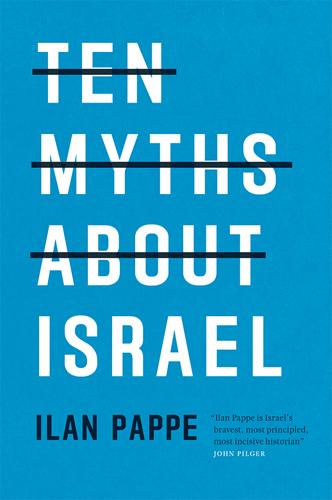
Ten Myths About Israel
by
Ilan Pappe
Published 1 May 2017
.), Chaim Weizmann: A Biography by Several Hands, New York: Oxford University Press, 1963. 6.Elie Kedourie, Nationalism, Oxford: Blackwell, 1993, p. 70. 7.Shlomo Avineri, The Making of Modern Zionism: Intellectual Origins of the Jewish State, New York: Basic Books, 1981, pp. 187–209. 8.You can now download the book for free at jewishvirtuallibrary.org. 9.See Eliezer Shweid, Homeland and the Promised Land, Tel Aviv: Am Oved, 1979, p. 218 (Hebrew). 10.Micha Yosef Berdichevsky, “On Both Sides,” quoted in Asaf Sagiv, “The Fathers of Zionism and the Myth of the Birth of the Nation,” Techelt, 5 (1998), p. 93 (Hebrew). 11.A good discussion on these options can be found in Adam Rovner, In the Shadow of Zion: Promised Lands Before Israel, New York: NYU Press, 2014. 12.An excellent summary of this point with adequate references can be found in Stephen Sizer’s article “The Road to Balfour: The History of Christian Zionism,” at balfourproject.org. 13.Ingrid Hjelm and Thomas Thompson (eds.), History, Archaeology and the Bible, Forty Years after “Historicity,” London and New York: Routledge, 2016. 14.Ilan Pappe, “Shtetl Colonialism: First and Last Impressions of Indigeneity by Colonised Colonisers,” Settler Colonial Studies, 2:1 (2012), pp. 39–58. 15.Moshe Bellinson, “Rebelling Against Reality,” in The Book of the Second Aliya, Tel Aviv: Am Oved, 1947 (Hebrew), p. 48.
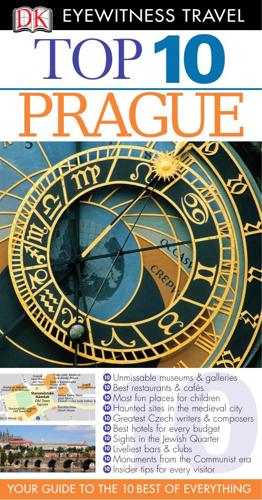
Top 10 Prague
by
Schwinke, Theodore.
Short-term courses are taught over the summer months. d Univerzita Karlova v Praze: Albertov 7/32 • Map B6 • 224 918775 • www.ujop.cuni.cz York ^ New University New York University offers study-abroad programmes for students enrolled at its US campuses and at affiliated universities elsewhere. Students enrolled in Czech universities may audit classes. d New York University in Prague: Malé náměstí 2 • Map L4 • 224 226658 • www.nyu.cz Centre for & Prague Further Education Established in 1995, the Prague Centre organizes courses on a wide range of subjects such as information technology, Czech history, and fashion design. Six-week courses cost Kč4,000 (with discounts for students, teachers and groups) and are offered frequently throughout the year. d Prague Centre for Further Education: Karmelitská 18 • Map C3 • 257 534013 • www.prague-center.cz Streetsmart Left Goethe Institute Right Charles University * International TEFL Certificate This private firm has been training its students all over the world for six years to teach English to foreigners.
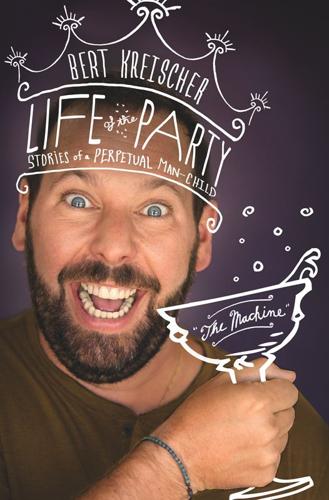
Life of the Party: Stories of a Perpetual Man-Child
by
Bert Kreischer
Published 26 May 2014
“Barking” meant that I stood in front of the club and tried to pull any living, breathing person into the club. I basically harassed anyone who dared to walk down West Third Street between Thompson and Sullivan. If I brought in more than twenty people over the course of a night, I got stage time. So, taking into consideration that the club was one block away from NYU, I decided to let any college kid that looked 21-ish into the club for free, often explaining that our drinking-age policy was somewhat lenient. What college kid wasn’t going to appreciate the performance of the guy who got him in to see the likes of Dave Chappelle, Dave Attell, Jim Breuer, Jim Norton, Greg Giraldo, Tracy Morgan, Dane Cook, and Jay Mohr for free, and who, with a wink, told him it was a “mandatory” two-drink minimum?
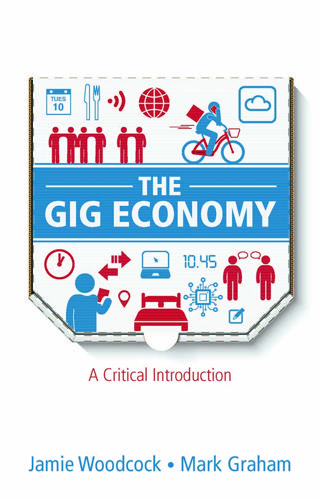
The Gig Economy: A Critical Introduction
by
Jamie Woodcock
and
Mark Graham
Published 17 Jan 2020
Nedelkoska, L. and Quintini, G. (2018) Automation, skills use and training. OECD Social, Employment and Migration Working Papers No. 202. Available at: https://www.oecd-ilibrary.org/employment/automation-skills-use-and-training_2e2f4eea-en Noble, S.U. (2018) Algorithms of Oppression: How Search Engines Reinforce Racism. New York: NYU Press. OECD (2019) Measuring platform mediated workers. OECD Digital Economy Papers No. 282. Ojanperä, S., O’Clery, N. and Graham, M. (2018) Data science, artificial intelligence and the futures of work. Alan Turing Institute Report, 24 October. Available at: http://doi.org/10.5281/zenodo.1470609 O’Neil, C. (2017) Weapons of Math Destruction: How Big Data Increases Inequality and Threatens Democracy.
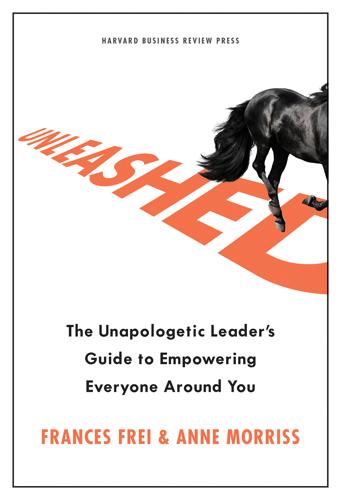
Unleashed
by
Anne Morriss
and
Frances Frei
Published 1 Jun 2020
Over time, she thrived and ultimately graduated at the top of her class. She chose to apply to the best schools in the world for college, applying to institutions that could put her on a path to becoming a world-class neuroscientist. In April 2019, she became the first ever Innova Schools graduate to be admitted to Dartmouth, NYU, Swarthmore, Georgetown, Tufts, Emory, Oxford, and Stanford. Innova has offered her a full scholarship to pursue her studies. No strings attached. CRP’s ultimate dream is to empower Peru. He believes that if the people around him, like the path-breaking Innova graduate, become strong leaders in their own right, they will invest their talent back into the country, spurring a virtuous cycle that will unleash the potential of an entire nation.
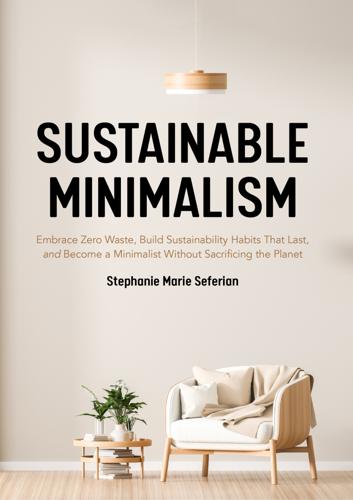
Sustainable Minimalism: Embrace Zero Waste, Build Sustainability Habits That Last, and Become a Minimalist Without Sacrificing the Planet (Green Housecleaning, Zero Waste Living)
by
Stephanie Marie Seferian
Published 19 Jan 2021
Iain Bamforth, PN Review 138 vol. 27, no. 4 (March/April 2001): 5–7. 11 Brianna Wiest, “The ‘Diderot Effect’ Explains Why It’s so Easy to Feel like YouNever Have, or Do, Enough,” Forbes, July 10, 2018, https://www.forbes.com/sites/briannawiest/2018/07/10/the-diderot-effect-explains-why-its-so-easy-to-feel-like-you-never-have-or-do-enough/. 12 Grolier Encyclopedia, “History of Television,” by Mitchell Stephens, accessed2020, https://stephens.hosting.nyu.edu/History%20of%20Television%20page.html. 13 Louise Story, “Anywhere the Eye Can See, It’s Likely to See an Ad,” The NewYork Times, January 15, 2007, https://www.nytimes.com/2007/01/15/business/media/15everywhere.html. 14 Sander van der Linden, “The Psychology of Competition,” Psychology Today, June 24, 2015, https://www.psychologytoday.com/us/blog/socially-relevant/201506/the-psychology-competition. 15 Francesca Donner, “The Household Work Men and Women Do, and Why,” TheNew York Times, February 12, 2020, https://www.nytimes.com/2020/02/12/us/the-household-work-men-and-women-do-and-why.html. 16 Lucia Ciciolla and Suniya S.
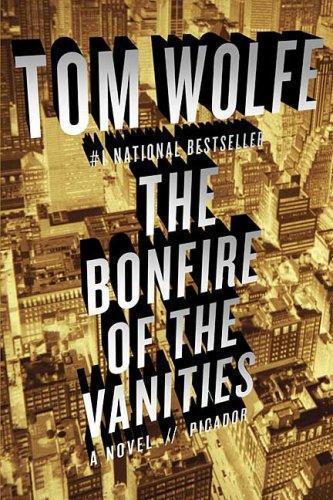
The Bonfire of the Vanities
by
Tom Wolfe
Published 4 Mar 2008
A wavy red beard as big as the King of Hearts’s hiding his receding chin…a blackish-green tweed jacket with enormous shoulders and lapels with notches down around his ribs…a black T-shirt with the logo of the Pus Casserole, the band, across the chest…black pegged pants…the Greasy Black look that was so…so Post-Punk, so Downtown, so…of the moment…And in fact he was a nice little Jewish boy from Riverdale, which was the Short Hills of the New York City limits, and his parents had a nice big Colonial house, or Tudor, or whatever it was…A middle-class twerp…a writer for The Village Voice, a know-it-all, possessor of Mary Lou Downy Shanks…Greg had started living with Mary Lou when she enrolled in the Investigative Journalism seminar he was teaching at N.Y.U. two years ago. She had a fantastic body, outstanding breasts, and classic Wasp looks. She stood out on the N.Y.U. campus like somebody from another planet. Kramer called her Mary Lou Love-Greg, which was a way of saying she had given up her actual identity to live with Greg. She bothered them. She bothered Kramer most of all. He found her dense, distant—intensely desirable.
…
He’s a hustler who tries to cover himself with this religious mantle, and he just goes on being childish, egocentric, irresponsible, shiftless—” Suddenly it dawned on Kramer that they were all looking at him in a funny way, all of them. Rhoda…Mary Lou…They were giving him the look you give someone who turns out to be a covert reactionary. He was too far gone in this criminal-justice scam…He was humming with the System’s reactionary overtones…This was like one of the bull sessions the gang used to have when they were all back at N.Y.U., except that now they were in their early thirties and they were looking at him as if he had become something awful. And he knew in an instant there was no way he could explain to them what he had seen over the past six years. They wouldn’t understand, least of all Greg, who was taking his triumph over Herbert 92X and stuffing it down his throat.
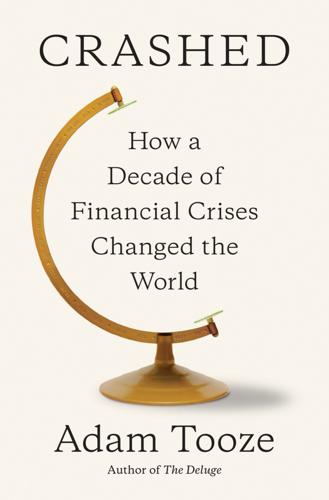
Crashed: How a Decade of Financial Crises Changed the World
by
Adam Tooze
Published 31 Jul 2018
I have been fortunate to try the arguments of the book at workshops, conferences and seminars hosted in Berlin courtesy of the Hamburg Stiftung für Sozialgeschichte, at the Heidelberg Center for American Studies, the American Academy Berlin, Brown University, Stanford, the Eisenberg Institute University of Michigan, the European University Institute, NYU Florence, the New School, UCLA, the MaxPo conference, the German Historical Institute Paris, the FPLH workshop in London, as part of the Science Po public debt project and at the NYU Kandersteg workshop. I am grateful both to my hosts and other participants at all these events. A memorial conference for Francesca Carnevali in Birmingham heard a version of the argument about Europe’s banks.
…
Truman, “Sovereign Wealth Funds: The Need for Greater Transparency and Accountability,” Peterson Institute for International Economics, August 2007, https://piie.com/publications/pb/pb07-6.pdf. 30. P. G. Peterson, “Riding for a Fall,” Foreign Affairs (September/October 2004), https://www.foreignaffairs.com/articles/united-states/2004-09-01/riding-fall. 31. N. Roubini, “The US as a Net Debtor: The Sustainability of the US External Imbalances,” November 2004, http://people.stern.nyu.edu/nroubini/papers/Roubini-Setser-US-External-Imbalances.pdf. 32. S. Edwards, “Is the US Current Account Deficit Sustainable? And If Not, How Costly Is Adjustment Likely to Be?” (NBER Working Paper 11541, August 2005). 33. N. Ferguson and M. Schularick, “‘Chimerica’ and the Global Asset Market Boom,” International Finance 10 (2007), 215–239, http://onlinelibrary.wiley.com/doi/10.1111/j.1468-2362.2007.00210.x/abstract. 34.
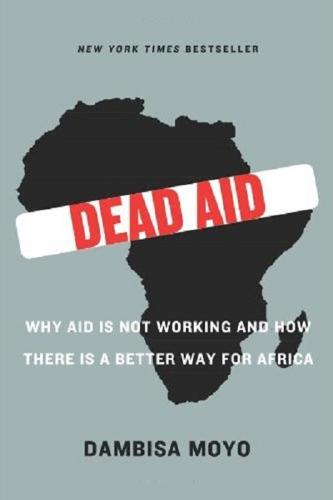
Dead Aid: Why Aid Is Not Working and How There Is a Better Way for Africa
by
Dambisa Moyo
Published 17 Mar 2009
, Journal of Economic Perspectives, 17 (2003), 3, pp. 23–48 Easterly, William and Ross Levine, ‘Africa’s Growth Tragedy: Policies and Ethnic Divisions’, Quarterly Journal of Economics, 112 (1997), 4 Easterly, William, Ross Levine and David Roodman, ‘New Data, New Doubts: A Comment on Burnside and Dollar’s “Aid, Policies, and Growth (2000)”’, 2003, at http://www.nyu.edu/fas/institute/dri/DRIWP/DRIWP04.pdf Economides, G., S. Kalyvitis, and A. Philippopoulos, ‘Does Foreign Aid Distort Incentives and Hurt Growth? Theory and Evidence from 75 Aid-Recipient Countries’, Public Choice, 134 (2008), 3–4, pp. 463–88 Economist, ‘Aid For Africa’, 22 May 2002 —, ‘Britain’s Aid Policy’, 31 October 2002 —, ‘Dealing with Default’, 8 May 2003 —, ‘Argentina: IMF Default’, Global Agenda, 10 September 2003 —, ‘Poverty’s Chains’, 9 October 2003 —, ‘An Emerging Crisis’, Global Agenda, 3 February 2004 —, ‘Free Trade’s Best Friend’, 20 January 2005 —, ‘Recasting the Case for Aid’, 20 January 2005 —, ‘Corruption in Kenya: Feet of Clay’, 10 February 2005 —, ‘The Mystery of Capital Deepens’, 24 August 2006 —, ‘China in Africa’, 26 October 2006 Economist Intelligence Unit and The Columbia Program on International Investment (CPII), ‘World Investment Prospects to 2010: Boom or Backlash’, 6 September 2006 Edwards, Sebastian, ‘Trade Orientation, Distortions and Growth in Developing Countries’, Journal of Development Economics, Elsevier, 39 (1992), 1, pp. 31–57 EMTA, the Brady Plan, at http://emta.org/emarkets/brady.html England, A., ‘Trouble looms for Kenya as trade deal starts to unravel’, Financial Times, 14 January 2005 England, Roger, ‘Development goals perpetuate a failing system’, Financial Times, 27 January 2005 European Union, ‘Everything But Arms’, at http://stats.oecd.org/glossary/detail.asp?
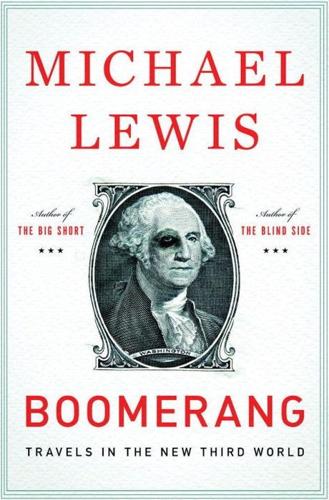
Boomerang: Travels in the New Third World
by
Michael Lewis
Published 2 Oct 2011
They seem frantic and harried and overworked . . . and yet he still runs late. The place generally seems as if even its better days weren’t so great. The furniture is worn, the floor linoleum. The most striking thing about it is how many people it employs. Minister Papaconstantinou (“It’s okay to just call me George”) attended NYU and the London School of Economics in the 1980s, then spent ten years working in Paris for the OECD (Organisation for Economic Co-operation and Development). He’s open, friendly, fresh-faced, and clean-shaven, and like many people at the top of the new Greek government, he comes across less as Greek than as Anglo—indeed, almost American.
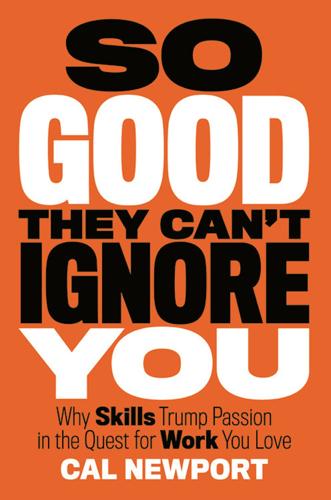
So Good They Can't Ignore You: Why Skills Trump Passion in the Quest for Work You Love
by
Cal Newport
Published 17 Sep 2012
During our senior year of high school we worked with six or seven clients, including a local architecture firm, a local technical college, and an ill-conceived—but oddly well-funded—Web portal targeting the elderly. Most of these contracts paid between $5,000 and $10,000, a healthy chunk of which we passed on to a team of Indian subcontractors, who did most of the actual programming work. When Michael and I left for college—he to NYU and I to Dartmouth—I decided I was done with website design and moved on to more pressing interests, such as girls. For many in my generation, the rejection of “follow your passion” as career advice is heretical. I never felt this same attraction to the cult of passion, and for this I give credit to my experience with Princeton Web Solutions.

The Wordy Shipmates
by
Sarah Vowell
Published 30 Sep 2008
Everyone in the cathedral, everyone watching on television, hearing O’Connor’s voice, had seen the appalling photos—naked prisoners made to pile themselves into a human pyramid as their American captors stood behind them, smiling at the camera and making the “thumbs-up” sign; prisoners made to line up for snapshots of their genitalia; prisoners bleeding because they had been bitten by dogs. In his NYU speech, Gore asked of Rumsfeld and the president he serves (who would of course also be there amongst them at Reagan’s funeral), “How dare they drag the good name of the United States of America through the mud of Saddam Hussein’s torture prison?” Like Winthrop, like Reagan, like Danforth at Reagan’s funeral, Gore cited the Sermon on the Mount.
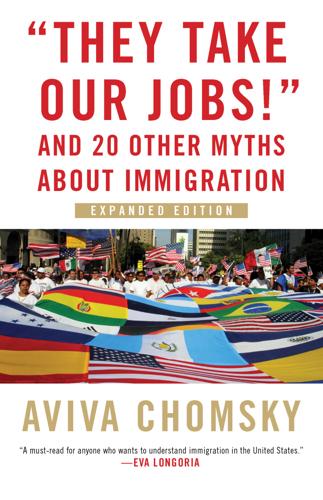
"They Take Our Jobs!": And 20 Other Myths About Immigration
by
Aviva Chomsky
Published 23 Apr 2018
“Back in the Day: Indiana’s African-American History,” The Indianapolis Star, February 2002, www2.indystar.com/library/factfiles/history/black_history/. 4. Zolberg, Nation by Design, 120–24 [quote from p. 124]. 5. Scott v. Sandford, 60 U.S. 393, 407, www.law.cornell.edu/supct/html/historics/USSC_CR_0060_0393_ZO.html. 6. Scott v. Sandford, 410. 7. Ian F. Haney López, White by Law: The Legal Construction of Race. (New York: NYU Press, 1996), 39. 8. Zolberg, Nation by Design, 192. 9. Marian L. Smith, “ ‘Any woman who is now, or who may hereafter be married’ . . . Women and Naturalization, ca. 1802–1940,” Prologue Magazine [published by The National Archives] 30, no. 2 (Summer 1998), www.archives.gov/publications/prologue/1998/summer/women-and-naturalization-1.html; Haney López, White by Law, 128. 10.
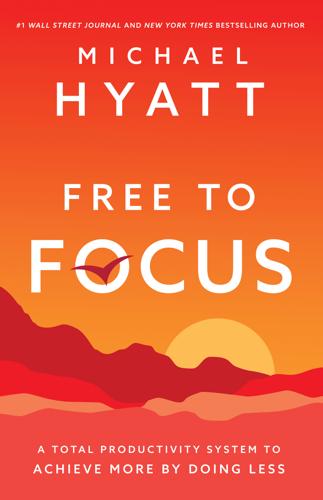
Free to Focus: A Total Productivity System to Achieve More by Doing Less
by
Michael Hyatt
Published 8 Apr 2019
One study cited by journalist John Naish found that students were 40 percent slower solving complicated problems when they tried jumping between tasks. Of course, multitasking doesn’t feel slow. It actually feels fast, like we’re flying. That’s part of why we keep doing it, but the feeling of speed is deceptive. Naish cites research that shows multitaskers indeed work faster—but they also produce less.10 According to NYU professor Clay Shirky, multitasking “provides emotional gratification” because it “moves the pleasure of procrastination inside the period of work.”11 We feel like we’re getting things done when we’re really dragging them out. If we’re drafting an email but then pause to check Twitter, then pull up a newsfeed, then go refill our coffee, and then return to our desk to finish, we’ve interrupted the thinking necessary to finish the email.
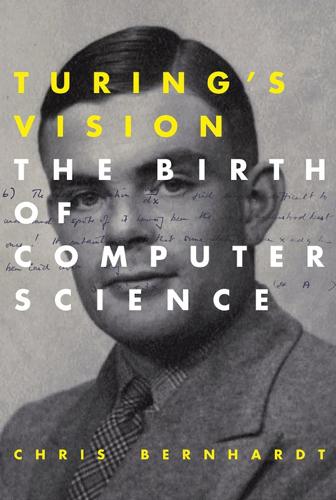
Turing's Vision: The Birth of Computer Science
by
Chris Bernhardt
Published 12 May 2016
[32] Minsky, Marvin. Computation: Finite and Infinite Machines, Prentice-Hall, 1967. [33] Minsky, Marvin; Papert, Seymour. Perceptrons: An Introduction to Computational Geometry, Expanded Edition, Cambridge, MA: MIT Press, 1988. [34] Nagel, Ernest; Newman, James; Hofstadter, Douglas R. Gödel’s Proof, NYU Press, Revised Edition, 2001. [35] Neary, Turlogh; Woods, Damien. “P-completeness of Cellular Automaton Rule 110,” Automata, Languages and Programming, Lecture Notes in Computer Science Volume 4051, 2006, pp 132–143. [36] Petzold, Charles. The Annotated Turing, Wiley, 2008. [37] Poundstone, William.
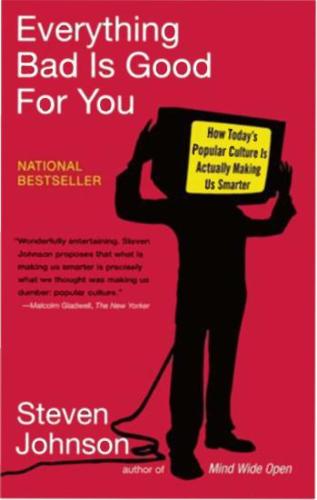
Everything Bad Is Good for You: How Popular Culture Is Making Us Smarter
by
Steven Johnson
Published 5 Apr 2006
I had a handful of non-imagined readers as well who of fered very helpful and supportive comments on the text: Alex Ross, Kurt Andersen, Jeff Jarvis, Henry Jenkins, Doug las Rushkoff, Esther Dyson, Christina Koukkos, Alex Star, and Alexa Robinson. My father managed to find a way to j ustify all those hours watching The Sopranos by making some timely suggestions near the end of the editing process. I a m also grateful to Red Burns and George Agudow at NYU's Interactive Telecommunications Program for allow ing me to teach a graduate seminar on video games, some thing no grown adult should rightfully be allowed to do. My students in that seminar were a tremendous help to me in understanding the power and i ntelligence of the gam ing culture. My editors at Discover and Wired-Stephen Petranek, D ave Groga n , Chris Anderson , Ted Greenwald, Mark Robinson-let me ruminate on technology and culture in ways that shaped m a ny of the ideas here; E sther Dyson kindly gave me an entire issue of her Release 1 .0 to think about the way software i nteracts with the brain.

War Is a Force That Gives Us Meaning
by
Chris Hedges
Published 31 Aug 2002
Also, my colleagues at New York University, especially William and Judy Serrin, Carol Sternhell, Michael and Beth Norman and Cathleen Dullahan, all keep alive great journalism traditions. Eva Sanchez, Puja Vaswani, and Caroline Bingham worked tirelessly as researchers. They, and the staff at the New York University library, were vital. My NYU library privileges are among my most precious possessions. Coleman Brown, Peter Meineck, Kim Parham, Jack Wheeler, who lent his considerable intellect as well as his experience as a professional soldier, Linda McNell, and Claudia Wassmann worked on the manuscript and made many important changes and corrections.
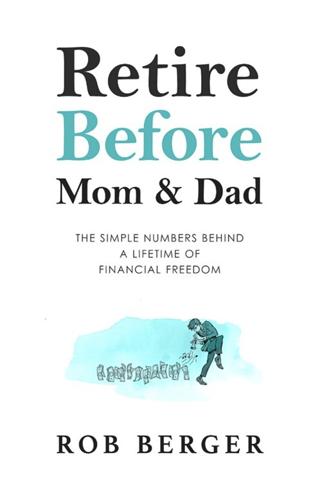
Retire Before Mom and Dad
by
Rob Berger
Published 10 Aug 2019
Regardless of which question you ask, you likely have an additional question. How do I decide which stocks and bonds to invest in? Great questions. We need some more foundational information before we begin to answer these questions. We’ll start by looking at mutual funds. * * * 28 http://pages.stern.nyu.edu/~adamodar/New_Home_Page/datafile/histretSP.html 3 Key Concepts Stocks represent ownership in a company, while bonds are debt issued by government, municipalities and corporations. In the long run, stocks perform better than bonds. In the short term, stocks are more volatile than bonds.
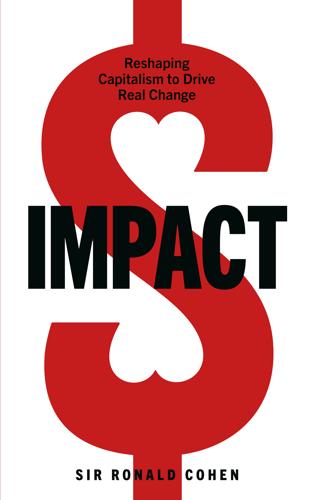
Impact: Reshaping Capitalism to Drive Real Change
by
Ronald Cohen
Published 1 Jul 2020
_r=0 73 https://www.washingtonpost.com/news/parenting/wp/2017/03/09/reading-writing-and-hunger-more-than-13-million-kids-in-this-country-go-to-school-hungry/ 74 https://www.cdc.gov/features/school-lunch-week/index.html 75 https://www.nytimes.com/2012/09/30/jobs/revolution-foods-chief-on-healthier-school-meals.html 76 https://www.bostonglobe.com/metro/2017/07/23/fresh-start-for-boston-school-lunches/zt6N1DO2yFC5UwH2 x0H1lM/story.html 77 https://www.fastcompany.com/3039619/revolution-foods 78 https://www.nytimes.com/2012/09/30/jobs/revolution-foods-chief-on-healthier-school-meals.html 79 http://time.com/2822774/revolution-foods-steve-case/ 80 https://medium.com/kid-tech-by-collab-sesame/how-revolution-foods-is-democratizing-healthy-living-to-set-kids-up-for-success-b5184973e3e4 81 http://time.com/2822774/revolution-foods-steve-case/ 82 Ibid. 83 https://www.fastcompany.com/3039619/revolution-foods 84 https://www.crunchbase.com/organization/revolution-foods 85 https://www.bizjournals.com/sanfrancisco/news/2019/01/10/can-healthy-school-lunches-be-a-1-billion-idea.html 86 https://www.revolutionfoods.com/blog/being-a-b-corp-qa-with-co-founder-kirsten-tobey/ 87 https://medium.com/kid-tech-by-collab-sesame/how-revolution-foods-is-democratizing-healthy-living-to-set-kids-up-for-success-b5184973e3e4 88 https://medium.com/kid-tech-by-collab-sesame/how-revolution-foods-is-democratizing-healthy-living-to-set-kids-up-for-success-b5184973e3e4 89 https://bridgesisrael.com/nazid-impact-food/ 90 https://www.marketwatch.com/story/this-startup-seeks-to-identify-water-problems-before-they-become-crises-2019-03-22 91 Ibid. 92 https://www.environmentalleader.com/2019/03/179490/ 93 https://bombas.com/pages/about-us 94 https://www.elvisandkresse.com/pages/about-us-2 95 https://www.businessinsider.com/london-handbag-fire-hoses-recycled-fashion-accessories-sustainability-2019-5 96 Ibid. 97 Ibid. 98 https://www.bloomberg.com/news/articles/2019–04-17/tesla-s-first-impact-report-puts-hard-number-on-co2-emissions 99 https://thenextweb.com/cars/2018/06/05/this-indian-startup-is-taking-a-shot-at-becoming-the-tesla-of-electric-two-wheelers/ 100 https://www.wsj.com/articles/the-fast-and-the-financed-chinas-well-funded-auto-startups-race-to-overtake-tesla-1513498338 101 https://www.bcorporation.net/what-are-b-corps 102 See more examples listed at http://benefitcorp.net/faq 103 https://www.triplepundit.com/2014/03/emerging-legal-forms-allow-social-entrepreneurs-blend-mission-profits/ 104 http://benefitcorp.net/policymakers/state-by-state-status 105 https://assets.publishing.service.gov.uk/government/uploads/system/uploads/attachment_data/file/727053/cic-18-6-community-interest-companies-annual-report-2017-2018.pdf and https://www.gov.uk/government/publications/cic-regulator-annual-report-2017-to-2018 106 https://www.ashoka.org/en-IL/about-ashoka 107 http://www.echoinggreen.org/about/ 108 https://endeavor.org/global-board/linda-rottenberg/ Chapter 3: Impact Investing Sets the New Normal 1 http://www.gsi-alliance.org/wp-content/uploads/2019/03/GSIR_Review2018.3.28.pdf 2 https://www.climatebonds.net/2019/10/green-bond-issuance-tops-200bn-milestone-new-global-record-green-finance-latest-climate 3 https://www.climatebonds.net/files/reports/2019_annual_highlights-final.pdf 4 https://thegiin.org/assets/Sizing%20the%20Impact%20Investing%20Market_webfile.pdf 5 https://www.investopedia.com/advisor-network/articles/social-returns-just-important-millennial-investors/ and https://onwallstreet.financial-planning.com/news/millennials-want-their-investing-to-make-a-difference.Study from 2016 6 http://www.businessinsider.com/meet-blackrocks-impact-investing-team-2016–6 7 https://www.theatlantic.com/business/archive/2017/11/resource-generation-philanthropy/546350/ 8 https://www.theguardian.com/business/2019/dec/02/directors-climate-disclosures-tci-hedge-fund 9 http://people.stern.nyu.edu/adamodar/pdfiles/valrisk/ch4.pdf (p.8–12) 10 https://www.ifc.org/wps/wcm/connect/76e6607a-11a4-4ae8-a36c-7116b3d9dab3/Impactprinciples_booklet_FINAL_ web_4-12-19.pdf?MOD=AJPERES 11 https://www.impactprinciples.org/signatories-reporting as of November 2019 12 https://www.forbes.com/sites/bhaktimirchandani/2019/04/12/what-you-need-to-know-about-the-ifcs-operating-principles-for-impact-management/#7da3fd3126b7 13 https://www.ubs.com/global/en/wealth-management/uhnw/philanthropy/shaping-philanthropy.html and https://cpl.hks.harvard.edu/global-philanthropy-report-perspectives-global-financial-sector 14 https://www.willistowerswatson.com/en-CA/insights/2019/02/global-pension-assets-study-2019 15 https://bigsocietycapital.fra1.cdn.digitaloceanspaces.com/media/documents/Pensions_with_Purpose_Final.pdf and https://bigsocietycapital.com/latest/pensions-purpose/ 16 https://www.top1000funds.com/analysis/2017/02/01/pggm-apg-lead-dutch-sustainability-push/ 17 https://www.apg.nl/en/who-is-apg (as of April 2019) 18 https://www.sdgi-nl.org 19 https://news.impactalpha.com/dutch-pension-fund-moves-from-impact-alignment-to-impact-management-da2cab1c91c5 20 https://www.top1000funds.com/analysis/2017/02/01/pggm-apg-lead-dutch-sustainability-push/ and https://www.top1000funds.com/analysis/2017/08/17/dutch-pension-funds-embrace-un-goals/ 21 https://news.impactalpha.com/dutch-pension-fund-moves-from-impact-alignment-to-impact-management-da2cab1c91c5 22 https://www.ipe.com/countries/netherlands/engineering-scheme-introduces-real-assets-portfolio-targeting-25bn 10031069.fullarticle 23 http://impactalpha.com/global-goals-european-pension-funds/ 24 https://www.ipe.com/countries/netherlands/europes-biggest-pension-fund-to-cut-33bn-of-tobacco-nuclear-assets/10022647.article and https://www.ipe.com/countries/netherlands/pgb-to-ditch-tobacco-from-its-investment-universe/10021218.article 25 https://www.ipe.com/news/esg/uks-nest-adopts-climate-aware-fund-for-default-strategy/10017699.article 26 https://www.top1000funds.com/2016/12/hsbc-pensions-innovative-dc-offering/ 27 https://www.ipe.com/pensions/investors/how-we-run-our-money-hsbc-uk-pension-scheme/10020454.article 28 https://pressroom.vanguard.com/nonindexed/HAS18_062018.pdf 29 https://evpa.eu.com/uploads/documents/FR-Nugget-90-10-Funds.pdf 30 https://thephilanthropist.ca/2018/07/more-than-a-million-french-using-their-savings-for-social-good-a-novel-approach-to-impact-investing-in-france/ 31 http://www.smf.co.uk/wp-content/uploads/2015/09/Social-Market-FoundationSMF-BSC-030915-Good-Pensions-Introducing-social-pension-funds-to-the-UK-FINAL.pdf 32 https://www.calpers.ca.gov/docs/forms-publications/facts-about.pdf 33 https://www.calpers.ca.gov/page/investments 34 https://www.prnewswire.com/news-releases/assets-of-the-1000-largest-us-retirement-plans-hit-record-level-300402401.html 35 https://www.businessinsider.co.za/climate-action-100-gets-energy-giants-to-commit-to-sustainbility-2019-5 36 https://www.calstrs.com/investments-overview 37 https://www.calstrs.com/sites/main/files/file-attachments/calstrs_21_risk_factors.pdf 38 https://hbr.org/2018/01/why-an-activist-hedge-fund-cares-whether-apples-devices-are-bad-for-kids 39 https://www.ai-cio.com/news/japans-government-pension-fund-returns-4-61--fiscal-q3 40 https://www.youtube.com/watch?
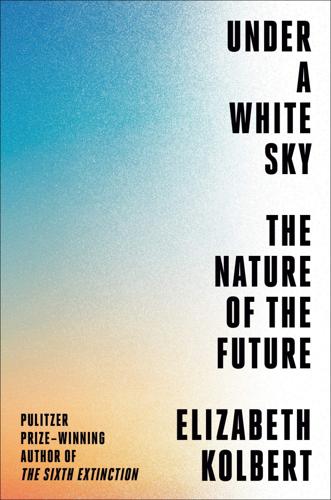
Under a White Sky: The Nature of the Future
by
Elizabeth Kolbert
Published 15 Mar 2021
Again, this is nothing to sneeze at, but the world now spends more than three hundred times that amount every year on fossil-fuel subsidies. “Dozens of countries would have both the expertise and the money to launch such a program,” the researchers—Wake Smith, a lecturer at Yale, and Gernot Wagner, a professor at NYU—observed. Solar geoengineering would not just be cheap, relatively speaking; it would also be speedy. Pretty much as soon as the fleet of SAILs went into operation, cooling would begin. (A year and a half after Tambora erupted, the cucumbers in New England were frozen.) As Keutsch told me, it’s the only way to “do something fast” about climate change.
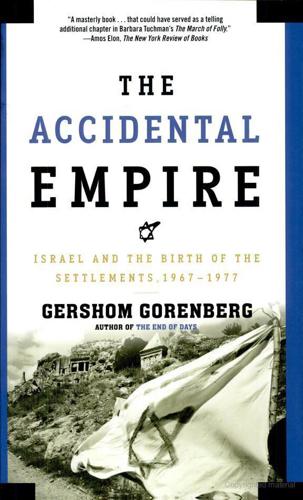
The Accidental Empire: Israel and the Birth of the Settlements, 1967-1977
by
Gershom Gorenberg
Published 1 Jan 2006
“Statement by Secretary of State Rogers—9 December 1969.” Israel Ministry of Foreign Affairs, www.mfa.gov.il/MFA/Foreign%20Relations/Israels%20Foreign%20Relations%20since%201947/1947-1974/9%20Statement%20by%20Secretary%20of%20State%20Rogers-%209%20Decemb. “Theodor Meron.” Faculty profiles, New York University School of Law, www.law.nyu.edu/faculty/profiles/bios/meront_bio.html. Tolstoy, Lev Nikolayevich. “How Much Land Does a Man Need?” www.ccel.org/t/tolstoy/23_tales/htm/vii.iii.htm. “United Nations Security Council Resolution 242.” The Avalon Project at Yale Law School, www.yale.edu/lawweb/avalon/un/un242.htm. Yehudah Halevi.
…
Yehudah Harel, interview. 69. Kalinov, 26–31. 70. Pedatzur, 180; ISA 153.8/1/7920/7A, document 288. 71. MGA, Rafael Ben-Yehudah diary. 4. Settling In 1. ISA 153.8/7921/3A. Legal opinion numbered as document 289–291, with unnumbered cover notes. 2. “Faculty Profile—Professor Theodor Meron,” www.law.nyu.edu/faculty/profiles/bios/meront_bio.html; Marlise Simons, “Weaving the Threads of Law, War and Shakespeare,” New York Times, January 3, 2004. 3. YLE 5/31. 4. Full text: “Convention (IV) relative to the Protection of Civilian Persons in Time of War. Geneva, 12 August 1949,” www.icrc.org/ihl.nsf/0/6756482d86146898c125641e004aa3c5?

The Rise and Fall of Nations: Forces of Change in the Post-Crisis World
by
Ruchir Sharma
Published 5 Jun 2016
Currency Wars: The Making of the Next Global Crisis (New York: Portfolio/Penguin, 2012). 2 Antonia Ax:son Johnson and Stefan Persson, “Do Not Fight Free Trade—It Makes Countries Richer,” Financial Times, July 23, 2015. 3 Daron Acemoglu, Simon Johnson, and James Robinson, “The Rise of Europe: Atlantic Trade, Institutional Change, and Economic Growth,” American Economic Review 95, no. 3 (2005): 546–79. 4 John Boudreau, “The Biggest Winner from TPP Trade Deal May Be Vietnam,” Bloomberg News, October 8, 2015; Eurasia, July 2015. 5 Victor Essien, “Regional Trade Agreements in Africa: A Historical and Bibliographic Account of ECOWAS and CEMAC,” NYU Global, 2006. 6 Moisés Naím, “The Most Important Alliance You’ve Never Heard Of,” Atlantic, February 17, 2014. 7 Ibid. 8 Peter Zeihan, The Accidental Superpower: The Next Generation of American Preeminence and the Coming Global Disorder (New York: Twelve, 2014). 9 Sumana Manohar, Hugo Scott-Gall, and Megha Chaturvedi, “Small Dots, Big Picture: Is Trade Set to Fade?
…
Financial Times, September 17, 2014. Davis, Bob. “The U.S–China Disconnect on Trade Deals.” Wall Street Journal, May 3, 2015. “End of an Era for Oil and the Middle East.” BCA Research, April 9, 2015. Essien, Victor. “Regional Trade Agreements in Africa: A Historical and Bibliographic Account of ECOWAS and CEMAC.” NYU Global, 2006. “Fortnightly Thoughts: Brighter Lights, Bigger Cities.” Goldman Sachs Global Investment Research, November 21, 2013. Fujita, Masahisa, and Paul Krugman. “The New Economic Geography: Past, Present, and the Future.” Papers in Regional Science 83 (2004): 139–64. Glaeser, Edward L., and Albert Saiz.
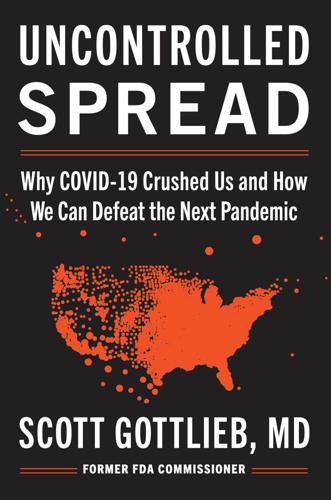
Uncontrolled Spread: Why COVID-19 Crushed Us and How We Can Defeat the Next Pandemic
by
Scott Gottlieb
Published 20 Sep 2021
And along with them, undiminished by my effort to provide a comprehensive accounting of what went wrong, is a sense of awe at America’s capacity to rise to a challenge, our innovation and ability to quickly develop highly effective drugs and vaccines, and the willingness of men and women in all walks of life in our society to take on terrible burdens for the sake of helping others. Those NYU medical students pressed into emergency service, and in whose shoes I walked two decades ago, were certainly scared in the early days of pandemic. But they showed up. Like the doctors and nurses around them, like their fellow Americans who kept lines of shipping and logistics moving, or who took awful risks to go to work, or who set up online schooling on the fly, guarding their children from fear through an unprecedented crisis, or who made other painful sacrifices so that others might be safer, answering a call most never imagined or expected.
…
See also Pfizer vaccine Mukherjee, Siddhartha, 307, 456n Munster Community Hospital, 280 Murray, Christopher, 235–36 N1 component, 107, 110, 114–16, 119–20, 122, 152 N2 component, 107, 110, 114–16, 152 N3 component, 107–16, 119–20, 122, 152 N95 respirators, 85, 158–59, 162–63, 201, 252 Nasopharyngeal swabs, 153–57, 164, 173 National Academy of Medicine, 386–87 National Academy of Science’s Institute of Medicine, 342–43 National Aeronautics and Space Administration (NASA), 8 “National Coronavirus Response: A Road Map to Reopening” (AEI report), 250–52 National Human Genome Research Institute, 373 National Institute of Allergy and Infectious Diseases (NIAID), 21, 131, 152, 283, 419–20n Vaccine Research Center, 327, 328 National Institute of Health (NIH), 152, 359, 367–68, 378 clinical trials, 287, 289 convalescent plasma, 298 flu research, 182 testing, 94, 134, 136 National reference labs, 272–73 National Review, 244 National security, 8, 52–55, 57, 285 disease surveillance, 377–80 intelligence community, 346–49, 366–70 lab leak theory, 354–65, 379, 461n new doctrine for, 341–80 sequencing data, 371–77 National Security Agency (NSA), 368 National Security Council (NSC), 16, 59, 348–49 Medical Preparedness Policy, 175–76 National Strategy for Pandemic Influenza (2005 plan), 176–82, 186–87, 199–200, 206, 214–15, 218–19, 225, 283, 318, 373 National testing plan, 164–72 National Wastewater Surveillance System (NWSS), 374–75 National Weather Service, 248 Natural immunity, 456n Nature (journal), 223, 282, 322, 355, 356, 364 Neupogen, 268–71, 454n Neuraminidase (N), 177 New England Journal of Medicine, 178 New Orleans, 208, 210 Newsom, Gavin, 150 Newsweek, 305 New York EMS directive, 1–2 stay-at-home order, 150, 202, 208–11 testing, 116–17, 130–31 ventilator shortage in, 1–2, 159, 208 New York City community spread, 71, 89–90, 116–17, 204–5 as epicenter of pandemic, 1–2 first cases, 74 infection estimates, 12 NYU medical students emergency service in, 12–13 sequencing data, 247 “snow day” concept, 199–200 subway system, 210–11 testing, 116–17, 128–31 New York City Metro Transit Authority, 210–11 NewYork-Presbyterian Hospital, 1–2 New York Times, 12, 38, 159, 213, 236, 346, 352, 384–86 New York University Grossman School of Medicine, 1, 12–13 New Zealand, 220, 222 NIAID.

Hit Refresh: The Quest to Rediscover Microsoft's Soul and Imagine a Better Future for Everyone
by
Satya Nadella
,
Greg Shaw
and
Jill Tracie Nichols
Published 25 Sep 2017
Virginia Commonwealth University School of Mass Communications Multimedia Journalism. Last modified December 20, 2013. http://mmj.vcu.edu/2013/12/20/methodology-gini-index-sidebar/. “Maxima and minima.” Wikipedia. Last modified October 9, 2016. https://en.wikipedia.org/wiki/Maxima_and_minima. Immelt, Jeffrey. “NYU Stern Graduate Convocation 2016: Jeffrey Immelt.” Filmed May 20, 2016. YouTube video, 18:27. Posted June 2, 2016. https://www.youtube.com/watch?v=hLMiuN8uSsk. Erlanger, Steven. “‘Brexit’: Explaining Britain’s Vote on European Union Membership.” New York Times, October 27, 2016. http://www.nytimes.com/interactive/2016/world/europe/britain-european-union-brexit.html?
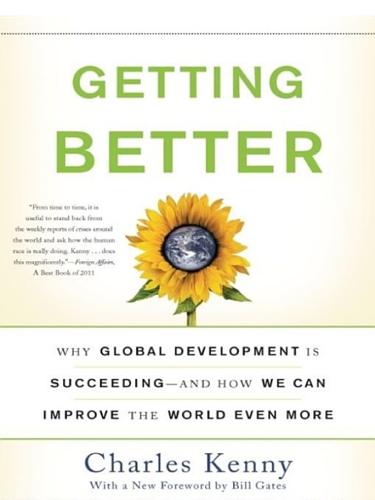
Getting Better: Why Global Development Is Succeeding--And How We Can Improve the World Even More
by
Charles Kenny
Published 31 Jan 2011
In the midst of negativity, Charles Kenny’s Getting Better provides a bold and refreshing vision for how we can build on existing substantial progress.” —Zambian Economist “Everyone knows that bad news is news, while the story line that things are spinning along just as they should is generally met with a resounding yawn. . . . Kenny’s new book, Getting Better, . . . will provide an attitude adjustment.” —Laura Freschi, Associate Director, NYU Development Research Institute / AidWatch Blog “Getting Better is one excellent antidote to development pessimism. At the centre of Kenny’s argument is the claim that . . . dramatic progress has still taken place almost everywhere on Earth.” —Development Policy Blog (Australian National University) “A nice contrast. . . .
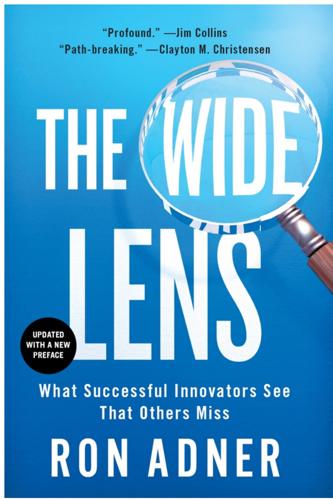
The Wide Lens: What Successful Innovators See That Others Miss
by
Ron Adner
Published 1 Mar 2012
This is a question that haunts every business strategist—reflecting the fear that our analysis of the landscape has missed the larger threats or opportunities in front of us. Based on years of research and teaching, The Wide Lens gives a brilliant answer. Ron Adner describes the landscape of innovation in the most complete terms ever achieved. The arrival of this book is a major event for leaders everywhere.” —Adam Brandenburger, J.P. Valles Professor, NYU Stern School of Business; coauthor of Co-opetition “Essential reading for innovators.” —Kirkus Reviews “The Wide Lens opens the readers’ eyes to the bigger picture and expands the mind to the possible pitfalls that have come to stand in the way of the success of many innovative products and services. . . .
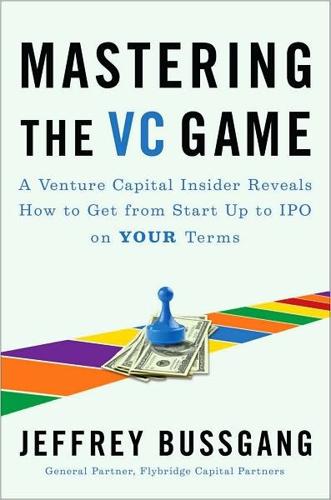
Mastering the VC Game: A Venture Capital Insider Reveals How to Get From Start-Up to IPO on Your Terms
by
Jeffrey Bussgang
Published 31 Mar 2010
“I got in contact with the chairman, Greg Kidd, the guy who had built the company and taken it public. I said, ‘I’m writing some dispatch software, and I’d really love to come to New York and work with you all.’ ” Jack pursued Greg hard, and within a couple of weeks, he moved to New York, transferred to NYU, and started writing dispatch software for DMSC. At DMSC, Jack delved deeper into his fascination with dispatch and couriers. “There was an essence of communication there,” he described to me. “An abstraction. You have all these entities roaming about, and they’re all reporting what they’re doing in real time over a variety of different devices.
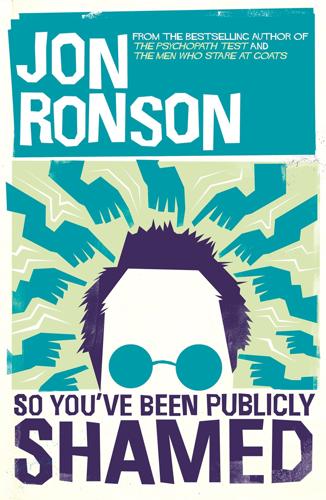
So You've Been Publicly Shamed
by
Jon Ronson
Published 9 Mar 2015
One psychology experiment more than any other has kept his idea alive. It’s the one created in a basement at Stanford University in 1971 by the psychologist Philip Zimbardo. * Zimbardo was a working-class New York City boy, the son of Sicilian immigrants. After graduating from Brooklyn College in 1954 he taught psychology at Yale and NYU and Columbia before ending up at Stanford in 1971. Crowd theory - or ‘deindividuation’ as it was by then known - preoccupied Zimbardo so deeply that in 1969 he wrote a kind of prose poem to it: ‘The ageless life force, the cycle of nature, the blood ties, the tribe, the female principle, the irrational, the impulsive, the anonymous chorus, the vengeful furies.’
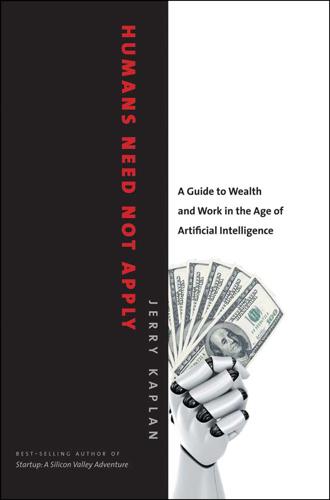
Humans Need Not Apply: A Guide to Wealth and Work in the Age of Artificial Intelligence
by
Jerry Kaplan
Published 3 Aug 2015
“A Summary of the 2014 Annual Reports,” Social Security Administration, accessed November 29, 2014, http://www.ssa.gov/oact/trsum/. This is the sum of the OASI, DI, HI, and SMI trust funds at the end of year 2013: $3.045 trillion. 34. “Annual Returns on Stock, T. Bonds and T. Bills: 1928–Current,” last modified January 5, 2014, http://pages.stern.nyu.edu/~adamodar/New_Home_Page/datafile/histretSP.html. 35. “World Capital Markets—Size of Global Stock and Bond Markets,” QVM Group LLC, April 2, 2012, http://qvmgroup.com/invest/2012/04/02/world-capital-markets-size-of-global-stock-and-bond-markets/. 36. http://finance.townhall.com/columnists/politicalcalculations/2013/01/21/who-really-owns-the-us-national-debt-n1493555/page/full, last modified January 21, 2013. 37.
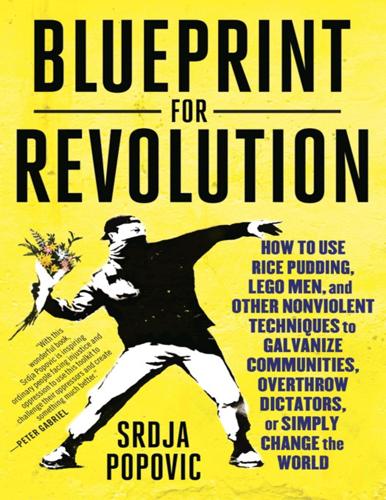
Blueprint for Revolution: How to Use Rice Pudding, Lego Men, and Other Nonviolent Techniques to Galvanize Communities, Overthrow Dictators, or Simply Change the World
by
Srdja Popovic
and
Matthew Miller
Published 3 Feb 2015
About the Authors SRDJA POPOVIC is a Serbian political activist and executive director of the Centre for Applied Nonviolent Action and Strategies (CANVAS). He was a leader of the student movement Otpor! that helped topple Serbian president Slobodan Milošević. He has taught at the Harvard Kennedy School, NYU, and the University of Colorado, among others. He lives in Belgrade. MATTHEW MILLER’S collaborations include Lili Marlene: The Soldiers’ Song of World War II and Fortunate Sons: The 120 Chinese Boys Who Came to America, Went to School, and Revolutionized an Ancient Civilization.
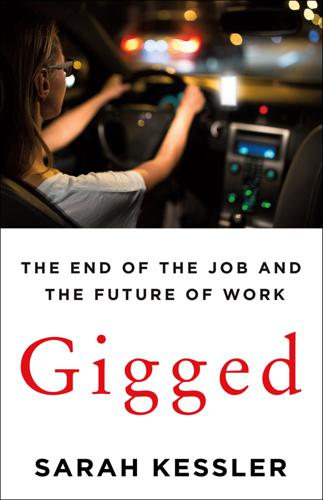
Gigged: The End of the Job and the Future of Work
by
Sarah Kessler
Published 11 Jun 2018
But the Silicon Valley idea that the internet would be an equal opportunity employer, that anyone could turn on employment as though it were a water faucet, didn’t really work out for people living in Dumas. Rather, it had the opposite effect: It created international competition for jobs, even some local ones that the people of Dumas would have had to themselves without the internet. Dumas wasn’t unique in this regard. In a preliminary study, NYU Stern School of Business professor Arun Sundararajan plotted the hourly wages of workers in the San Francisco Bay Area who found jobs through the odd jobs website TaskRabbit against the Bureau of Labor Statistics’s average wage rates for the same area. He found that workers who won gigs online actually earned more than their offline peers when the job required a physical presence, such as electrical work or carpentry.
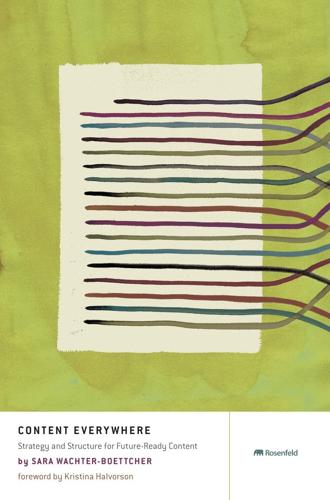
Content Everywhere: Strategy and Structure for Future-Ready Content
by
Sara Wachter-Boettcher
Published 28 Nov 2012
With this, you can move on from how your content is entered and, in Chapters 6, “Understanding Markup,” and 7, “Making Sense of Content APIs,” understand how it will be stored and transported wherever and whenever you need it. CHAPTER 5 Designing Content Systems What Are Rules? 77 Why Rules Matter 79 A Framework for Rule-Making 88 Metadata is the new art direction. —Ethan Resnick1 Quipped over dinner and immediately Tweeted by Karen McGrane, this gem from Resnick, an NYU student and general Internet smarty-pants, sums up so much in its six little words. As you work to publish in more places more often, designing each page manually becomes less and less viable. But instead of giving up editorial and artistic control altogether, there’s another way: using your content’s structure and meaning—its metadata, as Resnick puts it—to build rules that dictate how, when, and where it appears.
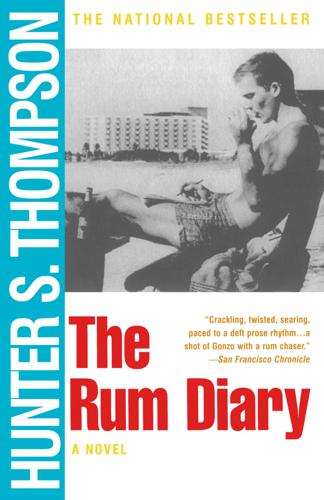
The Rum Diary
by
Hunter S. Thompson
Published 1 Jan 1998
He told me that he'd spent the first twenty years of his life in Sweden, and often I tried to picture him against a crisp Scandinavian landscape. I tried to see him on skis, or living peacefully with his family in some cold mountain village. From the little he said of Sweden I gathered he'd lived in a small town and his parents had been comfortable people with enough money to send him to college in America. He spent two years at NYU, living in the Village at one of those residence hotels that cater to foreigners. This apparently unhinged him. Once he was arrested on Sixth Avenue, he said, for pissing on a fireplug like a dog. It cost him ten days in the Tombs, and when he got out he left immediately for New Orleans. He floundered there for a while, then got a job on a freighter headed for the Orient.
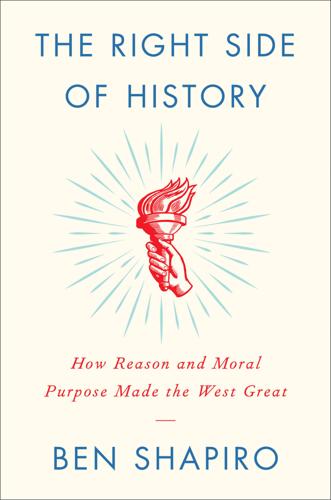
The Right Side of History
by
Ben Shapiro
Published 11 Feb 2019
Lombardo, Three Generations, No Imbeciles (Baltimore: Johns Hopkins University Press, 2008), 239. 70. Jennifer Latson, “What Margaret Sanger Really Said about Eugenics and Race,” Time.com, October 14, 2016, http://time.com/4081760/margaret-sanger-history-eugenics/. 71. Margaret Sanger, “My Way to Peace,” January 17, 1932, https://www.nyu.edu/projects/sanger/webedition/app/documents/show.php?sangerDoc=129037.xml. 72. “Eugenics and Birth Control,” PBS.org, http://www.pbs.org/wgbh/americanexperience/features/pill-eugenics-and-birth-control/. 73. “Nomination Database: Margaret Sanger,” NobelPrize.org, https://www.nobelprize.org/nomination/archive/show_people.php?
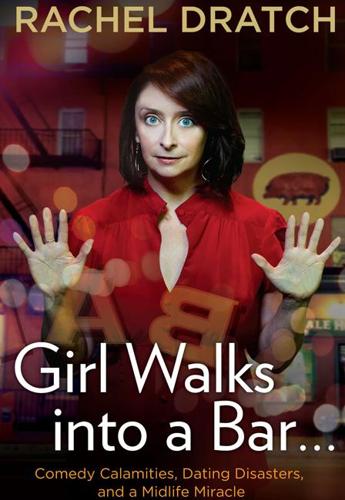
Girl Walks Into a Bar . . .: Comedy Calamities, Dating Disasters, and a Midlife Miracle
by
Rachel Dratch
Published 29 Mar 2012
“C’mon, Michigan, you must miss it—the trees, the quiet, comin’ and goin’ as you please. Not answerin’ to nobody…” “Aww, get some shut-eye, New York…” “Well?” “Yeah, sometimes I miss it. I wonder what I’m doin’ here on the front lines—changing diapers, livin’ on Third Avenue with the loud traffic and the NYU students and the whatnot, but maybe this is where I’m s’posed to be…. Life’s funny, ain’t it?” “Sure is, Michigan.” Sound of a garbage truck outside. A horn honks for forty seconds. “What about you, New York?” “Huh?” “You miss your old life?” “Ahh. Not really.” “Aw, go on, New York—you don’t miss it?
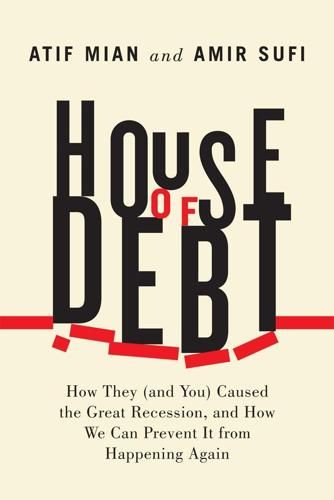
House of Debt: How They (And You) Caused the Great Recession, and How We Can Prevent It From Happening Again
by
Atif Mian
and
Amir Sufi
Published 11 May 2014
In addition to our own work, four studies have influenced our thinking on these issues a great deal: Gauti Eggertsson and Paul Krugman, “Debt, Deleveraging, and the Liquidity Trap,” Quarterly Journal of Economics 127, no. 3 (2012): 1469–513; Veronica Guerrieri and Guido Lorenzoni, “Credit Crises, Precautionary Savings, and the Liquidity Trap” (working paper, University of Chicago Booth School of Business, July 2011); Robert E. Hall, “The Long Slump,” American Economic Review 101 (2011): 431–69; and Virgiliu Midrigan and Thomas Philippon, “Household Leverage and the Recession” (working paper, NYU Stern School of Business, April 2011). 5. A closely related reason for a pullback in spending after a wealth shock is precautionary savings, as in Christopher Carroll and Miles Kimball, “On the Concavity of the Consumption Function,” Econometrica 64 (1996): 981–92. Christopher Carroll has done a large amount of work exploring how wealth distribution matters for the pullback in spending during recessions.
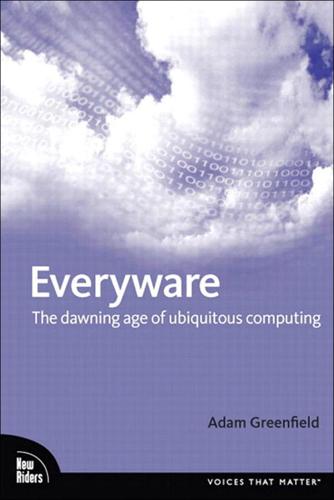
Everyware: The Dawning Age of Ubiquitous Computing
by
Adam Greenfield
Published 14 Sep 2006
But as anyone who has spent even a little time with them knows, none of them is entirely satisfactory. At most, they are suggestive of the full range of interventions everyware will require. One set of possibilities is suggested by the field known as "tangible media" at the MIT Media Lab, and "physical computing" to those researching it at NyU's Interactive Telecommunications Program. The field contemplates bridging the worlds of things and information, atoms and bits: Physical interface elements are manipulated to perform operations on associated data. Such haptic interfaces invoke the senses of both touch and proprioception—what you feel through the skin, that is, and the sensorimotor awareness you maintain of the position and movement of your body.

Not That Kind of Girl: A Young Woman Tells You What She's "Learned"
by
Lena Dunham
Published 28 Sep 2014
He’ll take the train in, and we’ll find each other on the corner. I go, in a tank top, cargo pants, and a shrunken denim jacket, even though it’s freezing. I’m so nervous, I arrive twenty minutes early. He isn’t there yet. I wait another half hour, but he never comes. I try and look relaxed as pierced NYU kids and pink-haired Asian girls stream past me. I go home and log on, but he isn’t there either. The next day, he messages me: Pyro0001: Sorry. Grounded. May-B sum other time. Gradually, Igor stops messaging me. When he does make contact, it’s only to respond. He never initiates. Every time that ping sounds, signaling a message, I run to the computer, hoping it’s him.
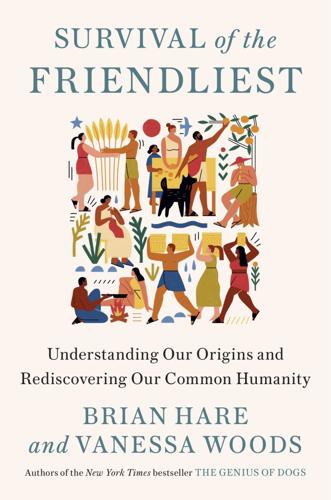
Survival of the Friendliest: Understanding Our Origins and Rediscovering Our Common Humanity
by
Brian Hare
and
Vanessa Woods
Published 13 Jul 2020
Vol. 6. Dulau, 1913. Plate BB; Creative Commons 3Photographer unknown, Ota Benga. 1905–1906, Library of Congress; Creative Commons 4Left: King Kong movie poster, RKO Radio Pictures, 1933; Creative Commons 5Right: Khan, Lin Shi, and Tony Perez, Scottsboro, Alabama: A Story in Linoleum Cuts, NYU Press, 2003; Creative Commons 6Kimball, Linda, porch monkey rant, Facebook, http://41af3k34gprx4f6bg12df75i.wpengine.netdna-cdn.com/wp-content/uploads/sites/19/2017/10/ORIG-POST-ALONE.jpeg; Facebook 7Unknown, Eisenhower at Ordurf, 1945; National Archives and Records Administration, College Park 8Pakhrin, S., Women’s March, 2017; Wiki Commons BY BRIAN HARE AND VANESSA WOODS The Genius of Dogs Survival of the Friendliest BY VANESSA WOODS Bonobo Handshake EDITED BY BRIAN HARE (WITH SHINYA YAMAMOTO) Bonobos: Unique in Mind, Brain, and Behavior About the Authors BRIAN HARE is a core member of the Center of Cognitive Neuroscience and a professor in evolutionary anthropology, psychology, and neuroscience at Duke University.
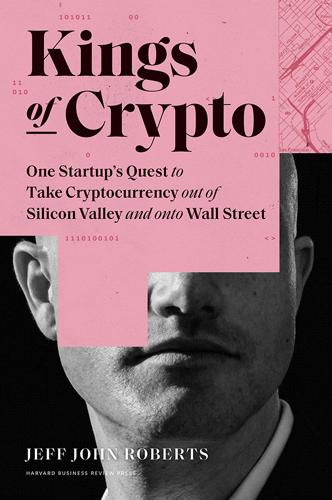
Kings of Crypto: One Startup's Quest to Take Cryptocurrency Out of Silicon Valley and Onto Wall Street
by
Jeff John Roberts
Published 15 Dec 2020
It was only in 2016 that Katie Haun, the former prosecutor and Coinbase board member, began teaching one of the only crypto classes in the country at Stanford. By 2019, 56 percent of the world’s top fifty universities offered at least one such class, and some schools now offer many: Cornell’s curriculum includes fourteen blockchain-related courses, while Columbia, NYU, and MIT offer at least half a dozen. Also striking is that these classes aren’t confined to computer science. Instead, departments as diverse as law, management, humanities, and engineering are teaching crypto courses too. All of this represents not just a proliferation of knowledge, but a signal that a young generation is aspiring to careers in crypto.
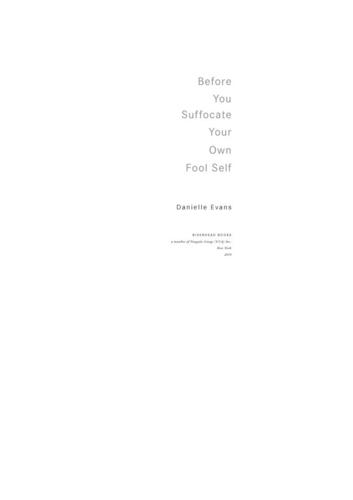
Before You Suffocate Your Own Fool Self
by
Danielle Evans
Published 22 Sep 2010
Turning sideways and inhaling bits of dust off Courtney’s carpet, I understood that my dislike of the pill was irrational, but it was too late for all that. Of course I had a boyfriend. We all did, they were like accessories; we kept them stored at colleges up and down the East Coast and pulled them out on formal occasions or in the event of extreme boredom or loneliness. Mine I kept at NYU, where he was lonely more than I was. I had spent a good number of nights downtown, curled up in his blue flannel sheets, listening to him breathe. He was good at hand-holding and being subtly witty and distracting me when I was on the verge of tears, brilliant in that completely useless way where he could tell you off the top of his head the architect of any office building downtown and the historic relationship between the toothbrush and cultural imperialism, but not what day of the week it was or what train to take to where.
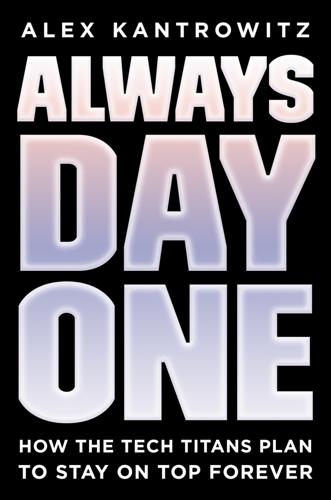
Always Day One: How the Tech Titans Plan to Stay on Top Forever
by
Alex Kantrowitz
Published 6 Apr 2020
In spring 2013, Zuckerberg came to LeCun with a proposal. Join Facebook, he said, and the company will build you an AI research lab where you’d be free to pursue any AI research your heart desires, as long as you help Facebook apply it from time to time. LeCun, who lived in New York, said he’d sign on if he could remain in place and keep teaching at NYU. Zuckerberg agreed, LeCun accepted the deal, and Facebook went from AI novice to a world leader in corporate AI research almost overnight. “There’re three or four people who have done the seminal work in the last couple of decades in AI,” Facebook chief technology officer Mike Schroepfer, who was in on the pitch, told me.

My Year of Rest and Relaxation: A Novel
by
Ottessa Moshfegh
Published 9 Jul 2018
Natasha took his arm, gushing to him that she was ready for outrage from PETA, a protest or two, an Op-Ed in the New York Times that would be publicity gold. Ping Xi nodded blankly. I called in sick the day of the opening. Natasha didn’t seem to care. She had Angelika fill in at the front desk. She was an anorexic Goth, a senior at NYU. The show was a “brutal success,” one critic called it. “Cruelly funny.” Another said Ping Xi “marked the end of the sacred in art. Here is a spoiled brat taking the piss out of the establishment. Some are hailing him as the next Marcel Duchamp. But is he worth the stink?” I don’t know why I didn’t just quit.
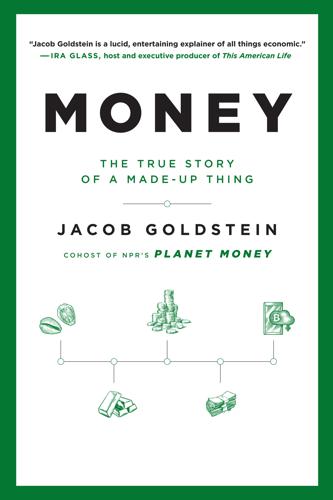
Money: The True Story of a Made-Up Thing
by
Jacob Goldstein
Published 14 Aug 2020
Chapter 11 Thomas Govan’s Nicholas Biddle is the standard biography of Biddle and the source for details on his early life. In describing Biddle’s work running the Bank of the United States, I relied largely on Jane Knodell’s The Second Bank of the United States and on an interview I did with Knodell. Richard Sylla, of NYU, called Biddle the “world’s first self-conscious central banker” in an interview with the Minneapolis Fed. Details about Andrew Jackson’s life come from Arthur Schlesinger Jr.’s The Age of Jackson, Jon Meacham’s American Lion, and Andrew Jackson, by H. W. Brands. Taney’s complaints about Biddle are from Taney’s “Bank War Manuscript.”

Mining Social Media: Finding Stories in Internet Data
by
Lam Thuy Vo
Published 21 Nov 2019
This kind of processing isn’t necessarily complicated and difficult; often it just means that we have to go through some tedious yet fairly simple tasks. There are a few primary methods involved in the process of analyzing data. The ones we’ll see in this chapter were adapted from Amanda Cox and Kevin Quealy’s New York University data journalism class, available at http://kpq.github.io/nyu-data-journalism-2014/classes/sort-filter-aggregate-merge/. Modifying and formatting Data is almost never organized consistently or in the format we need. By modifying and formatting it, we can more easily compare values. Aggregating We can query our formatted data by applying simple math to it, known as aggregation.

The Creative Curve: How to Develop the Right Idea, at the Right Time
by
Allen Gannett
Published 11 Jun 2018
“By not losing touch with the periphery, they can access fresh new inputs that are more likely to blossom on the fringe of the network while escaping the conformity pressures that are typical of a more socially entrenched field.” Being in the middle, between the establishment and the fringe, helps a person create content that is familiar and credible, but also novel. Now what if you’re successful already, and a member of the establishment? Alternatively, what if you’re a true up-and-comer? The NYU team produced a second conclusion: Teams containing both established and up-and-coming people gain the same advantage as a person who leans to the middle. This is because the people on the fringe give the establishment figures fresh ideas, and the establishment figures provide the necessary reputation and credibility.
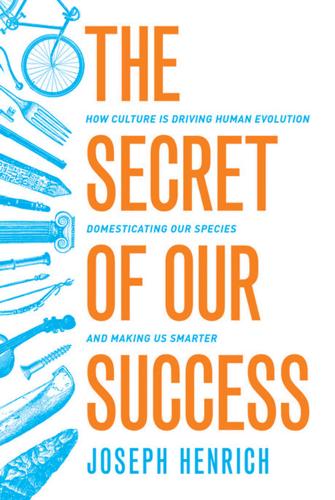
The Secret of Our Success: How Culture Is Driving Human Evolution, Domesticating Our Species, and Making Us Smarter
by
Joseph Henrich
Published 27 Oct 2015
See Bandura and Kupers 1964. 4. See Henrich and Broesch 2011. 5. For these hunting examples, see Henrich and Gil-White 2001. 6. At the University of British Columbia, I was a faculty member in the Department of Economics and the Vancouver School of Economics for nearly a decade. I’ve also taught MBAs in NYU’s Stern School of Business and been a visiting professor at the Business School at the University of Michigan. Consequently, I’m familiar with both MBAs and economists. 7. See Kroll and Levy 1992. 8. See Henrich and Gil-White 2001, Rogers 1995b, Henrich and Broesch 2011, and N. Henrich and Henrich 2007: chapter 2. 9.
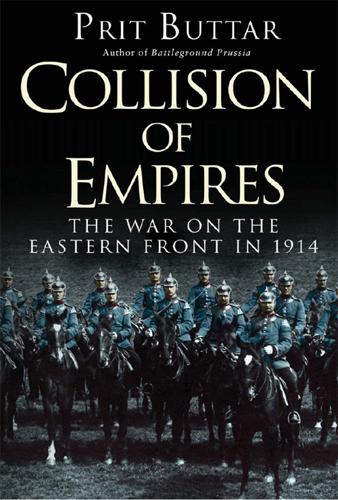
Collision of Empires: The War on the Eastern Front in 1914
by
Prit Buttar
Published 19 Jun 2014
., America’s War for Humanity: Pictorial History of the World War for Liberty (Walter, New York, 1919) – 2004 Kessinger edition, p. 248 28. Quoted in Auffenberg (1921), p. 357 29. Brusilov’s A Soldier’s Notebook (1930), included in Neiberg, M. (ed.), The World War 1 Reader: Primary and Secondary Sources (NYU Press, New York, 2007), pp. 110–11 30. Palmer, S. and S. Wallis, A War in Words (Simon & Schuster, London, 2003), pp. 71–72 31. See New York Times, 29 November 1914 32. Korolkov, G., Varshavsko-Ivangorodskaia Operatsiia (Voenizdat, Moscow, 1923), p. 55 33. Auffenberg (1921), p. 388 34. ibid., p. 389 35.
…
., Helmuth von Moltke and the Origins of the First World War (Cambridge University Press, Cambridge, 2005) Morgen, C., Meiner Truppen Heldenkämpfe (E.S. Mittler & Sohn, Berlin, 1920) Morsey, A., ‘Konopischt und Sarajewo’, Berlin Monatshefte, XII (1934), p. 492 Neiberg, M. (ed.), The World War 1 Reader: Primary and Secondary Sources (NYU Press, New York, 2007) Nipperdey, T., Deutsche Geschichte 1866–1918, 2 vols. (Beck, Munich, 1990–92) Notz, F. and F. Scholtz, General von Scholtz: Ein Deutsches Soldatenleben in Grosser Zeit (Siegismund, Berlin, 1937) Novikov, N., Russkaya armiya v Velikoy voyne: 6-ya Sibirskaya diviziya v boyakh pod Lodz’yu s 18(5) po 24(11) noyabrya 1914 (Voenizdat, Moscow, 1925) Novitsky, F., Lodzinskaya Operatsiya v Noyabre 1914 (Voina I Revolutsiya, Moscow, 1930) Österreich-Ungarns Letzter Krieg 1914–1918 (15 vols.), vol. 1: Das Kriegsjahr 1914 (Verlag der Militärwissenschaftlichen Mitteilungen, Vienna, 1931) Pahalyuk, K., Romanoyi v Spazheneyakh v Vostochnoe v Prussii 1914 (Reitar, Kaliningrad, 2009) Paléologue, M., trans.
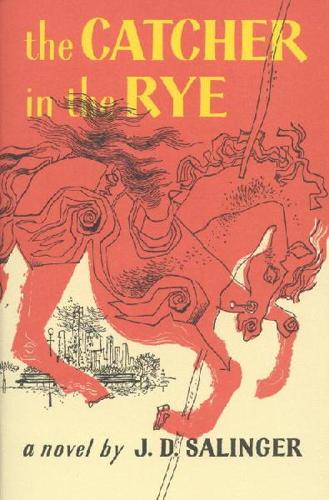
The Catcher in the Rye
by
J. D. Salinger
Published 16 Jul 1951
Then, when she said something, all she said was, "Daddy's going to kill you." "I don't give a damn if he does," I said. I got up from the bed then, because what I wanted to do, I wanted to phone up this guy that was my English teacher at Elkton Hills, Mr. Antolini. He lived in New York now. He quit Elkton Hills. He took this job teaching English at N.Y.U. "I have to make a phone call," I told Phoebe. "I'll be right back. Don't go to sleep." I didn't want her to go to sleep while I was in the living room. I knew she wouldn't but I said it anyway, just to make sure. While I was walking toward the door, old Phoebe said, "Holden!" and I turned around.

The Sociopath Next Door
by
Martha Stout
Published 8 Feb 2005
Luke had put up an expensive struggle, not because he loved Jonathan, but because he was enraged with Sydney for making him move out of her house. The house in South Florida had a swimming pool. Luke loved the pool. “Luke was living in this shabby little apartment when I met him,” Sydney told me. “That should've raised a red flag for me right there, a thirty-five-year-old man who'd gone to graduate school at NYU—city planning, actually—living in that awful little place. But I ignored it. He said he really liked the big pool his apartment complex had. So when he saw I had my own pool, he got all happy. What can I tell you? My husband married me for my pool. Well, that's not entirely true, but in retrospect, it was definitely part of it.”
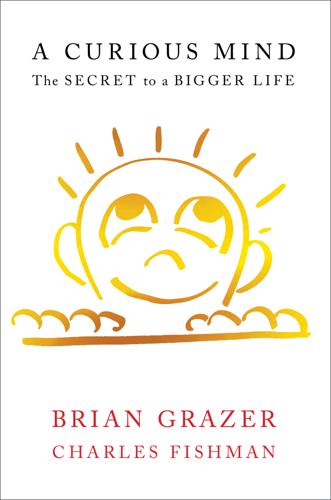
A Curious Mind: The Secret to a Bigger Life
by
Brian Grazer
and
Charles Fishman
Published 6 Apr 2014
He was writing books faster than most people can read them—including me.2 Asimov was a polymath, an autodidact, and a genius. And he was an instinctive storyteller. Who wouldn’t want to sit down with him for an hour? Isaac Asimov met me at the Ritz-Carlton with his second wife, Janet Jeppson Asimov, a psychiatrist with degrees from Stanford and NYU. I found her more intimidating than I found him—Isaac was relaxed, his wife was more on guard. She was clearly the boss, or at least his protector. Both Isaac and Janet ordered ginger ale. We started to chat. Apparently, it wasn’t going that well, although I didn’t quite realize how poorly it was going.

Delete: The Virtue of Forgetting in the Digital Age
by
Viktor Mayer-Schönberger
Published 1 Jan 2009
Playing media on personal computers can be restricted through Microsoft’s Media Player (in combination with the protected WMA format) and through RealNetwork’s RealPlayer (together with RealPlayer’s Helix format). Unsurprisingly, therefore some have suggested utilizing the concept of DRM to ensure and enforce individuals’ control over other types of information. NYU information systems professor Kenneth Laudon proposed creating a technical and organizational infrastructure through which individuals could “sell” the use of their personal information to vendors, and which would ensure enforcement of these contractual arrangements.21 Cyberlaw visionary Lawrence Lessig echoed Laudon’s ideas in his book Code, but suggested more specifically to use a DRM infrastructure developed for intellectual property rights to manage and enforce information privacy claims.22 As such approaches tackle the challenge of an individual’s control over her information, they may offer a suitable response to digital remembering as well.
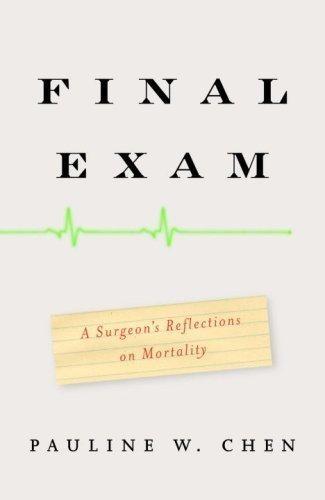
Final Exam: A Surgeon's Reflections on Mortality
by
Pauline W. Chen
Published 1 Jan 2006
Journal of Palliative Medicine 2003;6(1):37–44. Selzer, R. Raising the Dead: A Doctor’s Encounter with His Own Mortality. New York: Penguin, 1993. Shafer, A. “Art Annotations: Fildes, Sir Luke—The Doctor.” Literature, Arts, and Medicine Database 2000 (revised 2002) [cited May 5, 2006]; available from: http://endeavor.med.nyu.edu/lit-med/lit-med-db/web docs/webart/fildes50-art-.htm. Sharkey, F. A Parting Gift. New York: Bantam, 1982. Solomon, M. Z., O’Donnell, L., Jennings, B., et al. “Decisions Near the End of Life: Professional Views on Life-Sustaining Treatments.” American Journal of Public Health 1993;83(1):14–23. Spiro, H.
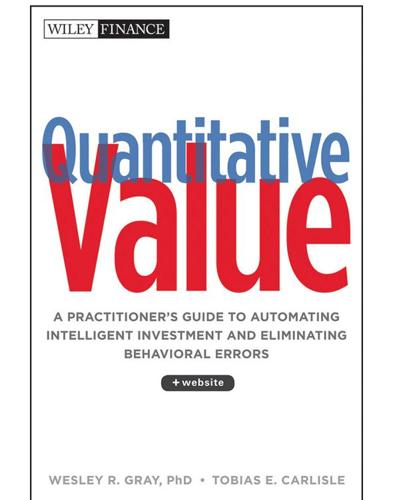
Quantitative Value: A Practitioner's Guide to Automating Intelligent Investment and Eliminating Behavioral Errors
by
Wesley R. Gray
and
Tobias E. Carlisle
Published 29 Nov 2012
Warren Buffett, “Chairman's Letter,” Berkshire Hathaway, Inc. Annual Report, 1989. 5. Warren Buffett, “Shareholder Letter,” Berkshire Hathaway, Inc. Annual Report, 1977 6. Aswath Damodaran, “Return on Capital, Return on Invested Capital (ROIC), and Return on Equity (ROE): Measurement and Implications.” Accessed July 2007, from http://pages.stern.nyu.edu/~adamodar/pdfiles/papers/returnmeasures.pdf. 7. Unless we explicitly state otherwise, the simulation assumptions and methodology we use to conduct all the studies in this book, including our examination of the Magic Formula and Graham's Simple Value Strategy in Chapter 1, are described in detail in Chapter 11. 8.
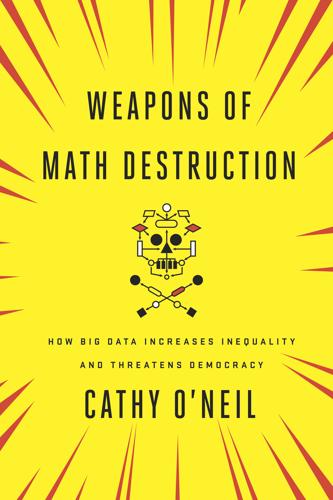
Weapons of Math Destruction: How Big Data Increases Inequality and Threatens Democracy
by
Cathy O'Neil
Published 5 Sep 2016
He told Bloomberg BusinessWeek, for example, that an American-born senior with a 3.8 GPA, an SAT score of 2000, and eight hundred hours of extracurricular activities had a 20.4 percent shot of getting into New York University, and a 28.1 percent chance at the University of Southern California. ThinkTank then offers guaranteed consulting packages. If that hypothetical student follows the consultancy’s coaching and gets into NYU, it will cost $25,931, or $18,826 for USC. If he’s rejected, it costs nothing. Each college’s admissions model is derived, at least in part, from the U.S. News model, and each one is a mini-WMD. These models lead students and their parents to run in frantic circles and spend obscene amounts of money.
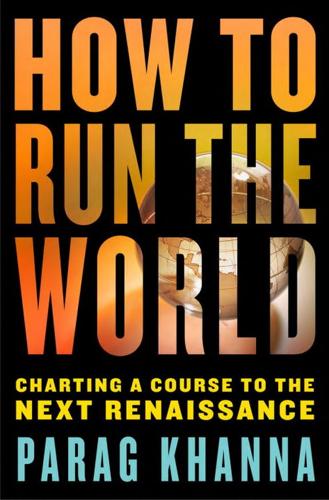
How to Run the World: Charting a Course to the Next Renaissance
by
Parag Khanna
Published 11 Jan 2011
In the other direction, Saudi prince Alwaleed is the largest single private investor in the United States. Together Alcoa and Alwaleed are the new Army and Aramco. America’s universities can also “drain the swamp” better than any invasion. From the outskirts of Cairo to glitzy new quadrangles in Qatar, top-tier schools—including Georgetown, Cornell, Texas A&M, NYU, and Carnegie Mellon—are now the best face of American foreign policy in the Middle East, educating the next generation of Arab entrepreneurs and politicians in making business plans and managing ministries. Business for Diplomatic Action, a private group of executives alarmed by America’s diminished global brand, has also taken matters into its own hands.
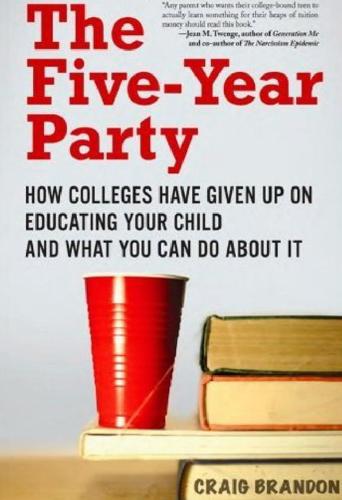
The Five-Year Party: How Colleges Have Given Up on Educating Your Child and What You Can Do About It
by
Craig Brandon
Published 17 Aug 2010
See also Katie Zezima, “7 Students Pledging a Fraternity Are Burned.” New York Times, November 22, 2008. 133 Jenna Russell. “Student’s Death Sharpens Focus on Hazing.” Boston Globe, October 26, 2003. 134 Peggy Reeves Sanday. Fraternity Gang Rape: Sex, Brotherhood, and Privilege on Campus (New York, NYU Press, 1992), 33. 135 Larry Brown. “Baseball Not Bombs.” The Equinox, November 7, 2007. 136 “Game Day = Binge Day,” Indianapolis Star, October 26, 2008. 137 Santiago Esparza and Christina Stolarz. “52 Arrested at E. Lansing Riot.” Detroit News, April 7, 2008. 138 Ibid. 139 Paula Schleis. “Kent’s College Fest Turns Rowdy.”
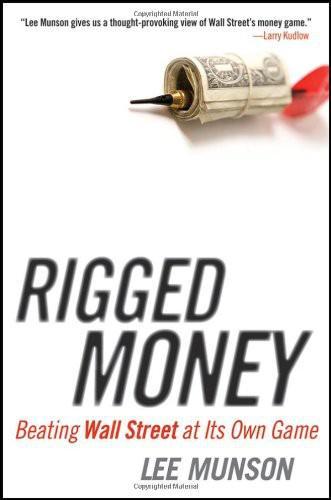
Rigged Money: Beating Wall Street at Its Own Game
by
Lee Munson
Published 6 Dec 2011
Asset allocation in only the first step in figuring out how much of different types of securities make a portfolio that suits your risk budget. The alchemy must be constantly reviewed, not set in stone via a pie chart. Just remember, you have a limited amount of calories, so keep counting. Notes 1. Reider, Rob. “Volatility Forecasting I: GARCH Models.” New York University. http://cims.nyu.edu/~almgren/timeseries/Vol_Forecast1.pdf. PART II WALL STREET: THE SET UP CHAPTER 3 Mayday Regulatory changes were made in the 1970s in the interest of increasing market fairness. One of the unintended consequences of making markets more accessible was lower profit margins for brokerage firms.
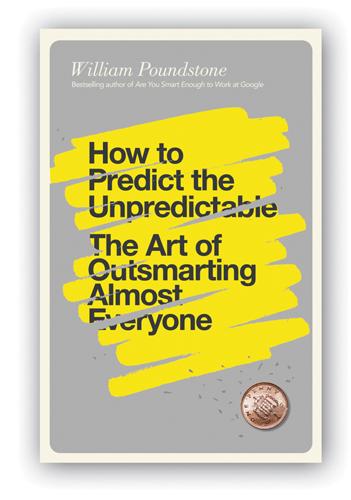
How to Predict the Unpredictable
by
William Poundstone
“Betting on Football Pools.” math.ucsd.edu/~ebender/87/pools.ps. Benford, Frank (1938). “The Law of Anomalous Numbers.” Proceedings of the American Philosophical Society 78, 551–572. Berber, Bernd, and Alexandra Scacco (2012). “What the Numbers Say: A Digit-Based Test for Election Fraud.” Political Analysis 20, 211–234. files.nyu.edu/bb89/public/files/Beber_Scacco_ElectionFraud.pdf. Berger, Arno, and Theodore P. Hill (n.d.). “Benford’s Law Strikes Back: No Simple Explanation in Sight for Mathematical Gem.” digitalcommons.calpoly.edu/cgi/viewcontent.cgi?article=1074&context=rgp_rsr. Bernard, Carole, and Phelim Boyle (2009).
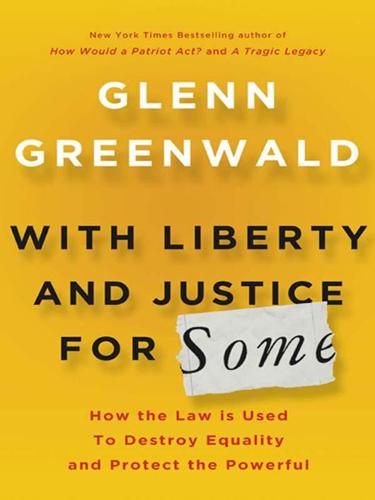
With Liberty and Justice for Some: How the Law Is Used to Destroy Equality and Protect the Powerful
by
Glenn Greenwald
Published 11 Nov 2011
Sara’s unyielding commitment to create the best possible book—no matter the time or work required—and her unique ability to achieve that is the perfect editorial combination for any author. Sara’s colleague at Metropolitan Books, Grigory Tovbis, was just as rigorous in finding ways to make the manuscript better, on matters both large and small, and his contributions substantially improved the final outcome. Two law students provided invaluable research and ideas: Daniel Novack of NYU and Ariel Schneller of Harvard. Both were able to find needed evidence with astonishing ease. Prior to my submitting the manuscript, Mona Holland wielded a merciless editorial scalpel to make the prose more focused and succinct. My literary agent, Daniel Conaway of Writers House, did his typically superb job of shepherding the book proposal and finding the ideal place to publish it.
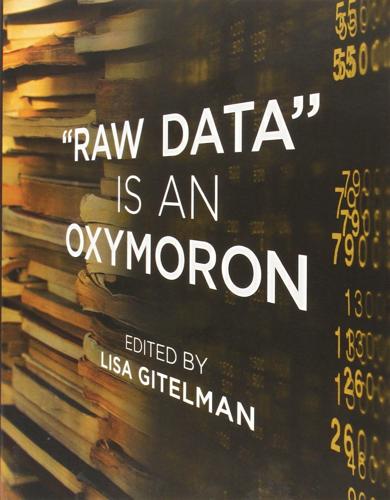
Raw Data Is an Oxymoron
by
Lisa Gitelman
Published 25 Jan 2013
Rubinstein, Lee, and Schwartz, “Data Mining and Internet Profiling,” 277. It is not uncommon to hear this argument made with respect to social media; in other words, if everyone’s intimate details are available, we are essentially hidden in plain sight. 143 144 Rita Raley 45. TrackMeNot FAQ, http://cs.nyu.edu/trackmenot/faq.html (accessed August 25, 2010). 46. The detailed counsel about risk management online offered by the Electronic Frontier Foundation’s Surveillance-Self Defense Project is paradigmatic. See https://ssd.eff.org (accessed October 14, 2011). 47. Anthony Giddens, The Nation-State and Violence (Berkeley: University of California Press, 1985), 186. 48.
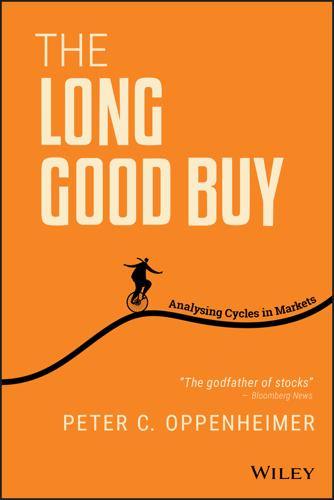
The Long Good Buy: Analysing Cycles in Markets
by
Peter Oppenheimer
Published 3 May 2020
The impact of the Federal Reserve's large-scale asset purchase programmes on corporate credit risk. NBER Working Paper No. 19337 [online]. Available at https://www.nber.org/papers/w19337 3 See Christensen, J. H. E., and Speigel, M. M. (2019). Negative interest rates and inflation expectations in Japan. FEBSF Economic Letter, 22. 4 See, for example, http://pages.stern.nyu.edu/~adamodar/pdfiles/eqnotes/webcasts/ERP/ImpliedERP.ppt 5 See Molyneux, P., Reghezza, A., Thornton, J., and Xie, R. (2019). Did negative interest rates improve bank lending? Journal of Financial Services Research, July 2019. 6 See Gozluklu, A. (n.d.). How do demographics affect interest rates? The University of Warwick [online].
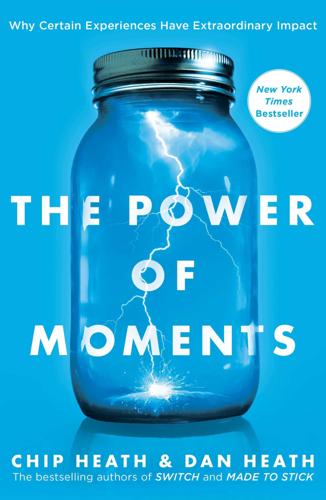
The Power of Moments: Why Certain Experiences Have Extraordinary Impact
by
Chip Heath
and
Dan Heath
Published 2 Oct 2017
Pim Cuijpers’s review (2002) is “Effective Ingredients of School-Based Drug Prevention Programs: A Systematic Review,” Addictive Behaviors 27: 1012. Plant a tough question. A response to an author survey on November 2016. 85% of workers felt unable to raise issue. Frances J. Milliken (2003). “An Exploratory Study of Employee Silence: Issues That Employees Don’t Communicate Upward and Why,” http://w4.stern.nyu.edu/emplibrary/Milliken.Frances.pdf. Brave but Wrong Guy study. Charlan Nemeth and Cynthia Chiles (1988). “Modelling Courage: The Role of Dissent in Fostering Independence,” European Journal of Social Psychology 18: 275–80. Clinic 4: Goldsmith meeting procedure. Larissa McFarquhar (2009, November 21).
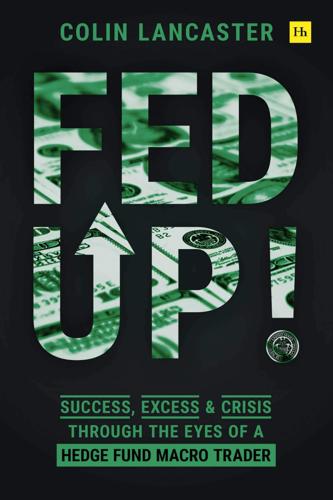
Fed Up!: Success, Excess and Crisis Through the Eyes of a Hedge Fund Macro Trader
by
Colin Lancaster
Published 3 May 2021
Makes you think you’re going crazy ‘cause it’s all so out of line with the fundamentals. But you gotta play the game.” They called Alan Greenspan the maestro. He was chair of the Fed from ’87 to 2006. He had a cool background. Born to Hungarian and Romanian Jews, he went to Juilliard to study music and then to NYU for economics. He wrote his dissertation on a housing bubble. He changed the narrative. He didn’t want any more recessions. Who can blame him? Recessions suck. Back in the early ‘80s, when the farmers drove their tractors to Washington, they felt real pain. They were hurting. Lower for Longer seemed like a good plan, a way to keep the juice flowing.

Cogs and Monsters: What Economics Is, and What It Should Be
by
Diane Coyle
Published 11 Oct 2021
., 2017, ‘The Google Bus’, The Point (14), July, https://thepointmag.com/examined-life/the-google-bus/, accessed 10 August 2020. Chen, M. K., V. Lakshminarayanan, and L. Santos, 2005, ‘The Evolution of Our Preferences: Evidence from Capuchin Monkey Trading Behaviour’, http://www.its.caltech.edu/~camerer/NYU/02-ChenLakshminarayananSantos.pdf. Christophers, B., 2013, Banking Across Boundaries, Hoboken, NJ: Wiley/Blackwell. Clark, Andrew E., Sarah Flèche, Richard Layard, and Nattavudh Powdthavee, 2018, The Origins of Happiness: The Science of Well-Being over the Life Course, Princeton, NJ: Princeton University Press.
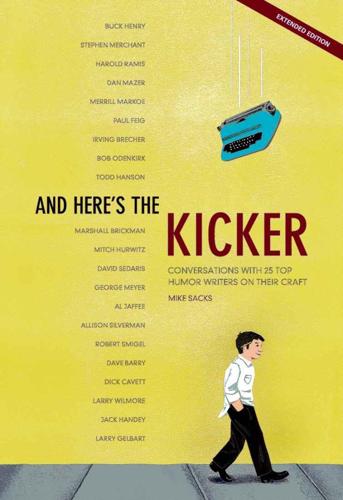
And Here's the Kicker: Conversations with 21 Top Humor Writers on Their Craft
by
Mike Sacks
Published 8 Jul 2009
He has a very thriving practice, and it seemed ridiculous for me not to consider becoming a part of that business. I was funny to my classmates as a kid, but I never assumed I could make strangers laugh. It wasn't really until I was at the end of my rope with pre-dental in college that I just — as a lark more than anything else — entered a stand-up contest that was being held at NYU, where I was attending, in 1981. I wrote a routine for the contest just to see what would happen, and I ended up being one of the winners. Do you remember any of the jokes? I was a big fan of Andy Kaufman's. So, I was into testing the audience with anti-performance stuff. I would come onstage in full Orthodox Jewish garb.
…
How did your parents react when you made it clear that there wasn't going to be another dentist in the family? My father was understanding. He had sort of been led into dentistry — his father was a dentist — and he never enjoyed it until he made it interesting for himself with dental aesthetics. My mother was somewhat horrified, but still supportive. I sort of crawled to the finish line at N.Y.U. I even tried to finish pre-dental, but then I flunked organic chemistry. A few weeks later, during the summer of 1982, I left for Chicago and joined a Second City offshoot I'd heard about called the Players Workshop of Second City. I also joined an improv group called All You Can Eat. I didn't name it, by the way.
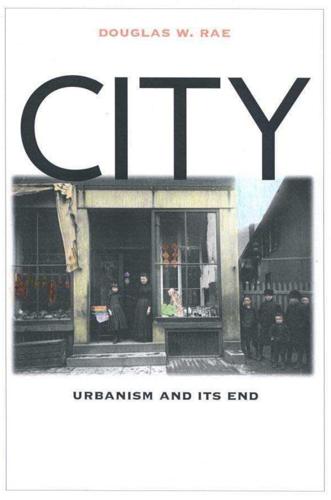
City: Urbanism and Its End
by
Douglas W. Rae
Published 15 Jan 2003
The earliest use of the term in its present sense appears to be contained in a remarkable 1916 article: Lyda Judson Hanifan, “The Rural Community Center,” Annals of the American Academy of Political and Social Science 67 (1916). A useful compilation of critical perspectives is offered by Scott McLean, David Schultz, and Manfred Steger, eds., Robert Putnam and Social Capital (New York: NYU Press, 2001). 71. Sennett, Uses of Disorder. See also Frug, City Making, 115 –42. See also Peter Dreier, John Mollenkopf, and Todd Swanstrom, Place Matters (Lawrence: University of Kansas Press, 2001). Also of interest is Myron Orfield, Metropolitics (Washington, D.C.: Brookings Institution Press, 1996).
…
Parish Boundaries: The Catholic Encounter with Race in the Twentieth-Century Urban North. Chicago: University of Chicago Press, 1996. McLean, Scott, David Schultz, and Manfred Steger, eds. Robert Putnam and Social Capital: Critical Perspectives on American Democracy and Social Engagement. New York: NYU Press, 2001. Malaspina, Mark. “Demanding the Best: How to Restructure the Section 8 HouseholdBased Rental Assistance Program.” Unpublished paper, Yale Law School, 1995. Mandelbaum, Seymour. Boss Tweed’s New York. New York: Wiley, 1965. Marchand, Roland. Creating the Corporate Soul: The Rise of Public Relations and Corporate Imagery in American Big Business.

The Innovators: How a Group of Inventors, Hackers, Geniuses and Geeks Created the Digital Revolution
by
Walter Isaacson
Published 6 Oct 2014
See also Paul Spinrad, “The Prophet of Menlo Park,” http://coe.berkeley.edu/news-center/publications/forefront/archive/copy_of_forefront-fall-2008/features/the-prophet-of-menlo-park-douglas-engelbart-carries-on-his-vision. After reading an early draft of this section, Kay clarified some of what he had said in earlier talks and interviews, and I modified a few of his quotes based on his suggestions. 46. Cathy Lazere, “Alan C. Kay: A Clear Romantic Vision,” 1994, http://www.cs.nyu.edu/courses/fall04/G22.2110-001/kaymini.pdf. 47. Author’s interview with Alan Kay. See also Alan Kay, “The Center of Why,” Kyoto Prize lecture, Nov. 11, 2004. 48. Author’s interview with Alan Kay; Ivan Sutherland, “Sketchpad,” PhD dissertation, MIT, 1963; Howard Rheingold, “Inventing the Future with Alan Kay,” The WELL, http://www.well.com/user/hlr/texts/Alan%20Kay. 49.
…
Steve Case oral history, “How the Web Was Won,” Vanity Fair, July 2008. 36. Author’s interview with Jim Kimsey. 37. Steve Case speech, Stanford, May 25, 2010. 38. Dave Fischer post, newsgroup: alt.folklore.computers, Jan. 25, 1994, https://groups.google.com/forum/#!original/alt.folklore.computers/wF4CpYbWuuA/jS6ZOyJd10sJ. 39. Wendy Grossman, Net.Wars (NYU, 1977), 33. 40. Author’s interview with Al Gore. 41. Al Gore interview with Wolf Blitzer, “Late Edition,” CNN, Mar. 9, 1999, http://www.cnn.com/ALLPOLITICS/stories/1999/03/09/president.2000/transcript.gore/. 42. Robert Kahn and Vinton Cerf, “Al Gore and the Internet,” an email to Declan McCullaugh and others, Sept. 28, 2000, http://www.politechbot.com/p-01394.html. 43.
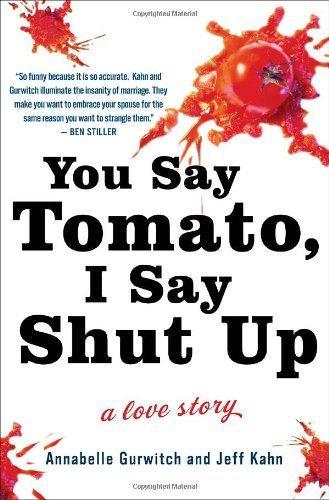
You Say Tomato, I Say Shut Up
by
Annabelle Gurwitch
Published 31 Aug 2010
When I was five, my father’s Rolls-Royce with the luxurious mahogany pull-down dinner trays was suddenly replaced by a Ford station wagon into which everything we owned had been crammed, and we found ourselves moving across the country to stay with relatives until we got on our feet again. Since that time I have stubbornly clung to locations as magical talismans. After being evicted from my NYU dorm room for a series of infractions that included not being enrolled in the school anymore, I moved exactly one block over and lived in three different buildings within a two-block radius over the next six years. Once in Los Angeles, I settled into a studio apartment and I subsequently resided in four other units all in that same actors’ shtetl building.

Frequently Asked Questions in Quantitative Finance
by
Paul Wilmott
Published 3 Jan 2007
Applied Mathematical Finance 1 165-194 Avellaneda, M & Parás, A 1996 Managing the volatility risk of derivative securities: the Lagrangian volatility model. Applied Mathematical Finance 3 21-53 Avellaneda, M & Buff, R 1997 Combinatorial implications of nonlinear uncertain volatility models: the case of barrier options. Courant Institute, NYU Bachelier, L 1995 Théorie de la Spéculation. Jacques Gabay Barrett, JW, Moore, G & Wilmott, P 1992 Inelegant efficiency. Risk magazine 5 (9) 82-84 Black, F & Scholes, M 1973 The pricing of options and corporate liabilities. Journal of Political Economy 81 637-59 Boyle, P 1977 Options: a Monte Carlo approach.

The People's Platform: Taking Back Power and Culture in the Digital Age
by
Astra Taylor
Published 4 Mar 2014
The old closed, hierarchical, institutional model is being replaced by a decentralized, networked system open to all. Barriers to entry have been removed, gatekeepers have been demolished, and the costs of creating and distributing culture have plummeted. New tools not only have made cultural production more efficient but have equalized opportunity. NYU professor Clay Shirky, perhaps the leading proponent of this view, calls this process “social production.” Harvard’s Yochai Benkler uses the term “peer production,” business writer Jeff Howe calls it “crowdsourcing,” and Don Tapscott and his coauthor Anthony D. Williams say “wikinomics.” Whatever term they use, the commentators agree that a revolution is unfolding, with the potential to transform not just culture but also politics and the economy.
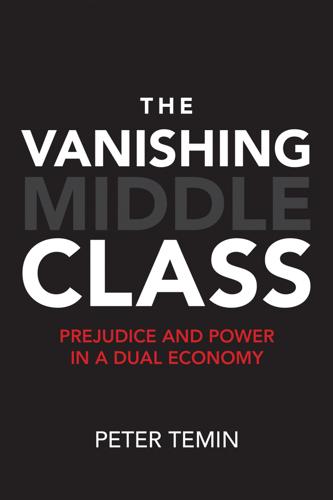
The Vanishing Middle Class: Prejudice and Power in a Dual Economy
by
Peter Temin
Published 17 Mar 2017
“A List of All of the Boston Schools with Recent Lead Concerns.” Boston Globe, August 17. Robertson, Campbell. 2016. “In Louisiana, the Poor Lack Legal Defense.” New York Times, March 19. Roeder, Oliver, Lauren-Brooke Eisen, and Julia Bowling. 2015. What Caused the Crime Decline? New York: Brennan Center for Justice at NYU. Ross, Carne. 2016. “Chilcot Report: How Tony Blair Sold the War.” New York Times, July 6. Rubin, Robert E. 2016. “How to Help Former Inmates Thrive.” New York Times, June 3. Russakoff, Dale. 2015. The Prize: Who’s in Charge of America’s Schools. Boston: Houghton Mifflin Harcourt. Rutenberg, Jim. 2015.
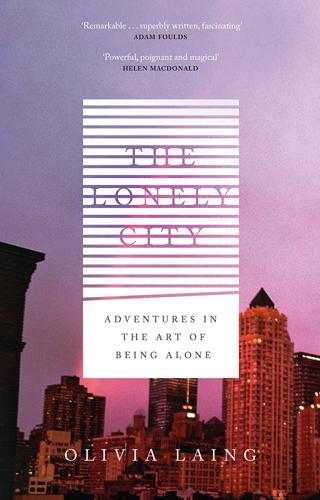
The Lonely City: Adventures in the Art of Being Alone
by
Olivia Laing
Published 1 Mar 2016
NYC 1993, it says at the bottom of the page, which is to say at least six months after David died up there, on 22 July 1992, in the company of his lover, his family and friends, one of the 194,476 people killed by AIDS-related infections in America that year. * I’d been haunting the Wojnarowicz archive at NYU ever since I first saw the Rimbaud photograph. Some weeks I went in every day to look through his diaries or listen to his audio journals. Everything David made was touching, but those tapes articulated feelings of such rawness that it was devastating to hear them. And yet, as with Nomi’s singing, I found the act of listening somehow alleviated my own sense of loneliness, simply because I could hear someone voicing their pain, giving space to their difficult and humiliating feelings.
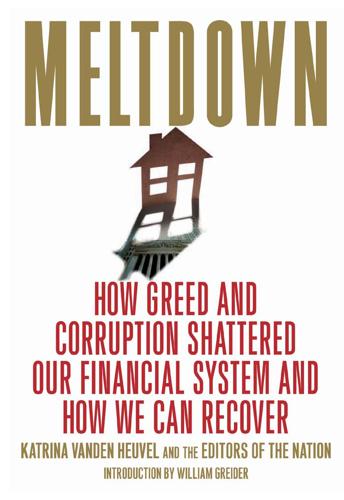
Meltdown: How Greed and Corruption Shattered Our Financial System and How We Can Recover
by
Katrina Vanden Heuvel
and
William Greider
Published 9 Jan 2009
But Kennedy and other Democrats have failed to introduce a detailed, comprehensive plan for what that support to “weather the storm” entails. Surely, it must be more than the $600 rebate check Bush is planning to mail to taxpayers. Waiting for Solutions The government needs to do more than issuing frivolous rebates to reverse what NYU professor Noureil Roubini calls “the worst housing bust ever.” A good start would be to pass legislation that protects bankrupt tenants, even during foreclosure. I’m not talking about irresponsible borrowers. I’m talking about people that were deliberately misled by predatory lenders who offered wildly excessive ARMs, ones that low-income families have no chance of repaying.

What's Mine Is Yours: How Collaborative Consumption Is Changing the Way We Live
by
Rachel Botsman
and
Roo Rogers
Published 2 Jan 2010
In early April the following year, Kalin was sitting in a big orange chair facing his apartment window. He started to sketch the initial ideas for his vision—a vibrant community of people across the globe connecting with and helping one another, and ultimately buying and selling unique handmade goods direct, with no big middleman. Working with three friends and fellow NYU graduates—Chris Maguire, Haim Schoppik, and Jared Tarbell—Kalin transformed his initial scribbles into a live Web site in just two months. Etsy was born. In just three years, Etsy has attracted 200,000 sellers, a million registered users, and more than $27 million in funding.18 Etsy connects buyers with independent creators of all things handmade, the result being that you pay less and the seller makes more.

The Greed Merchants: How the Investment Banks Exploited the System
by
Philip Augar
Published 20 Apr 2005
Hintz, Brad, Large Investment Bank Margin and ROE Trends, Securities Industry Association Research Reports, vol. 3, no. 2 (11 March 2002), p. 23. 20. Freeman & Co., 2002 and Beyond, p. 12 (www.freeman-co.com). 21. The American Lawyer (July 2003). 22. Financial Times (21 May 2004). 23. Research by NYU Salomon Center; ‘Per ardua ad astra’, The Economist (15 April 1999). 24. Author interview, 2003. Chapter 4 1. John Cleese as the City Gent, ‘The Merchant Banker’s sketch’ (1972). 2. Hintz, Brad, ‘Large Investment Bank Margin and ROE Trends’, Securities Industry Association Research Reports, vol. 3, no. 2 (11 March 2002), p. 10. 3.
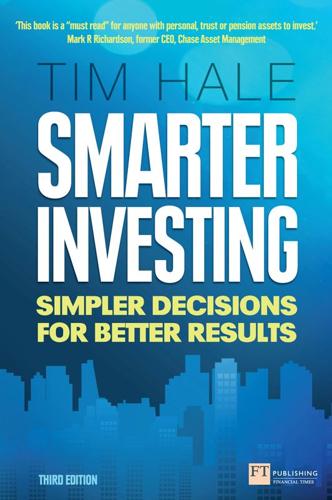
Smarter Investing
by
Tim Hale
Published 2 Sep 2014
This introduces both counterparty risk (if the swap provider fails) along with a number of conflicts of interest inherent in the structure. The FSA and other regulators are not entirely happy with these ‘synthetic’ products. Perhaps place them on your ‘watch list’. References Acharya, V. V., Hahn, M. and Kehoe, C. (2011), ‘Corporate governance and value creation: evidence from private equity’ (http://pages.stern.nyu.edu). Asset Alternatives (2001) ‘Single investor private equity fund of funds: why compromise?’ quoted in: D. Söhnholz, FERI Private Equity (www.altassets.net). Buffett, W. (2012) ‘Why stocks beat gold and bonds’, Fortune, 9 February. Buyuksahin, B., Haigh, M. and Robe, M. (2007) ‘Commodities and equities: “a market of one”?’
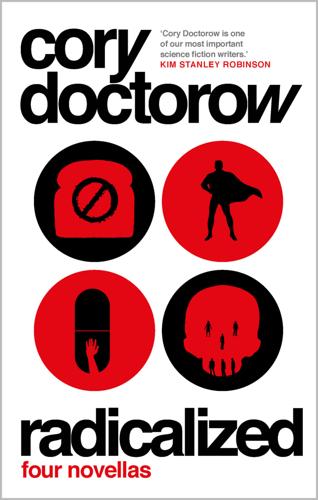
Radicalized
by
Cory Doctorow
Published 19 Mar 2019
Lois always listened with a professional ear, providing back-of-house gossip about the other reporters, the personalities they interviewed. Despite his long life, the American Eagle didn’t have her perspective, so what he heard just filled him with a kind of melancholy. Hadn’t there been a time when things were better? Now they were talking about him. A criminologist at NYU, a West Point war historian, and a national cop reporter, on a panel show. “—the rule of law, not the rule of men. It’s always the risk when you let someone operate outside of the normal legal framework, that he’ll become a vigilante rather than a volunteer. In this case, he’s not even human, so who can say what he’s thinking, where his allegiances lie?

Brave New Work: Are You Ready to Reinvent Your Organization?
by
Aaron Dignan
Published 1 Feb 2019
Sias, “Where Mergers Go Wrong,” McKinsey Quarterly, May 2004, www.mckinsey.com/business-functions/strategy-and-corporate-finance/our-insights/where-mergers-go-wrong. 83 percent of the deals had actually failed: John Kelly, Colin Cook, and Don Spitzer, “Unlocking Shareholder Value: The Keys to Success,” KPMG, 1999, http://people.stern.nyu.edu/adamodar/pdfiles/eqnotes/KPMGM&A.pdf. 34 has been declining since 1990: “Frequently Asked Questions About Small Business,” U.S. Small Business Administration, Office of Advocacy, August 2017, www.sba.gov/sites/default/files/advocacy/SB-FAQ-2017-WEB.pdf. researchers started tracking this data: J.
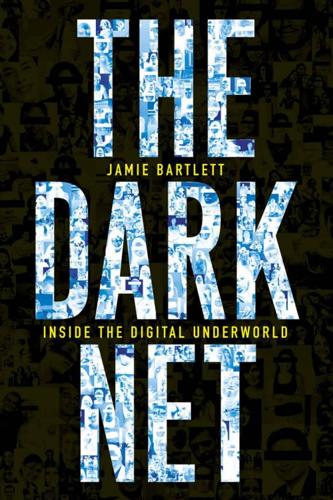
The Dark Net
by
Jamie Bartlett
Published 20 Aug 2014
There is an excellent resource which documents 1990s predictions about the future of the internet, here: http://www.elon.edu/e-web/predictions/early90s/ p.221 ‘“We’re talking about Total Possibilities” . . .’ Mondo 2000, no.1, 1989. p.221 ‘Nicholas Negroponte – former Director . . .’ http://motspluriels.arts.uwa.edu.au/MP1801ak.html. p.221 ‘“They gaze on technology as” . . .’ http://www.nyu.edu/projects/nissenbaum/papers/The-Next-Digital-Decade-Essays-on-the-Future-of-the-Internet.pdf. p.222 ‘Others were concerned that we . . .’ Furness, T. and Lanier, J., Are New Realities More or Less Real?; Heim, M., Scholars Try to Measure the Impact; Celente, G., Online, All the Time; Today’s Technology Makes the Office Omnipresent, but is That Any Way to Live?
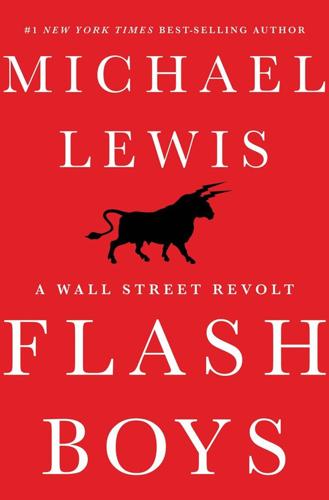
Flash Boys: A Wall Street Revolt
by
Michael Lewis
Published 30 Mar 2014
“That one caught in my throat,” he said. He added quickly, “Actually, I feel like a bit of a pussy, that it got to me that way.” The attack, and the ensuing market convulsions, killed off the new electronic stock exchange that employed him. Don, who had thought that the business was probably going to die anyway, went back to NYU to finish his college degree, and then on to a career at the Nasdaq stock exchange. Seven years in, his job was to deal with everything that happened after a trade occurred, but his specific role was less important than his general understanding—both Ronan and Schwall thought that Don Bollerman knew breathtakingly more about the inner workings of the stock exchanges than anyone they had ever met.
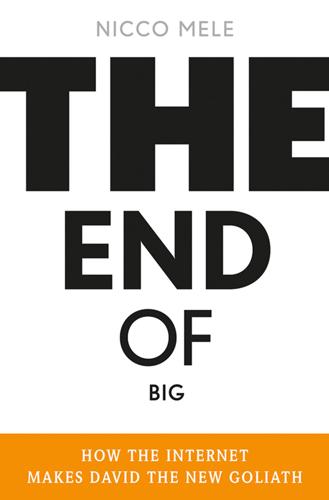
The End of Big: How the Internet Makes David the New Goliath
by
Nicco Mele
Published 14 Apr 2013
The newspaper has a print circulation of about 280,000, far from the largest in Britain, but it stands as the fifth most visited news site globally, even though it maintains a fraction of the staff and budget of other competitors. Yet Another Intriguing Model: Pro-Am Journalism I first met Amanda Michel on the Dean campaign, where she worked as an online organizer. In 2007 and 2008, Amanda designed (with Jay Rosen of NYU) and ran the Huffington Post’s “Off the Bus” initiative. The program recruited 12,000 people to cover the 2008 presidential campaign, training many of them to act as journalists. “Off the Bus” developed the idea of “pro-am journalism,” bridging the gap between amateur journalists and professionals.
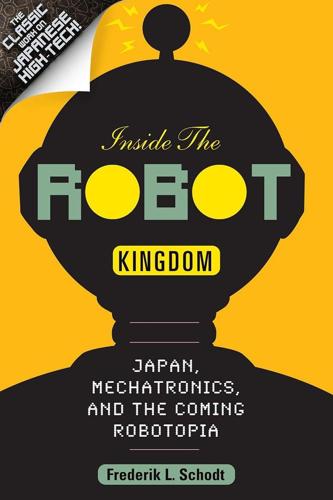
Inside the Robot Kingdom: Japan, Mechatronics and the Coming Robotopia
by
Frederik L. Schodt
Published 31 Mar 1988
"Holonic Innovation: mito kakushin gijutsu e no chosen 139—kyokugen sagyo robotto, ido gijutsu ni kakukai ga chumoku" [Holonic Innovation: The Challenge of New, Innovative Technologies, no. 139—All Sectors Interested in Locomotion Technologies for ART Robots], Nikkan kogyo shinbun, 22 May 1986, p. 32; also no. 138, "Kyokugen sangyo robotto, kenkyu kaihatsu wa juncho ni susumu" [Research and Development Proceeding Smoothly for ART Project Robots], Nikkan kogyo shinbun, 21 May 1986, p. 24; interview with Yoshiaki Shirai, March 14,1986. Interview with Yoji Umetani, 27 April 1987. JIRA, Sangyoyo robotto ni kansuru daigaku. Interview with Shigeo Hirose, 3 March 1986. Interview with Yutaka Kanayama, 20 December 1985. Ibid. Interview with Hiroaki Ando, 26 March 1986. Eiji Nakano, "Kagaku gijutsu no nyu furontia to naruka? Ugokidasu HFSF keikaku" [The HFSF Project Starts to Move: Will It Become the New Frontier for Science and Technology?], Robotist, Fall 1986, p. 2. Interview with Shinnichi Yuta, 4 March 1986. Interview with Hirose. Takashi Ota, "Nihonsha dezain shinjidai: tomaranai 'shiro' ninki" [New Age of Japanese Car Designs: Relentless Popularity of 'White,'" Nihon keizai shinbun, 26 June 1986, p. 17.
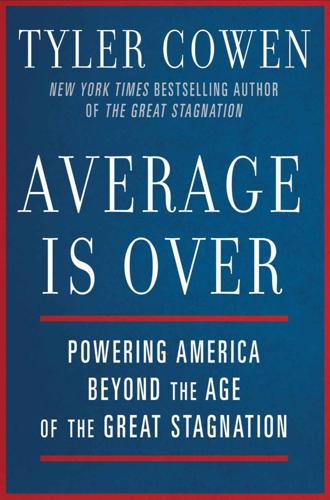
Average Is Over: Powering America Beyond the Age of the Great Stagnation
by
Tyler Cowen
Published 11 Sep 2013
It’s not the most prestigious school but it still has a lot of talent and a very good name. Maybe such a school will offer three credits for its online course well before Harvard does. In that world, which service will the people in Bangladesh prefer? A course with Harvard and a pat on the back? Or a course with, say, three credits from NYU? I suspect for the majority of the school-age market it will be the latter. Face-to-face Instruction I mentioned at the beginning of this chapter that learning with machines would modify rather than replace face-to-face instruction, so what will the new world of face-to-face teaching look like?
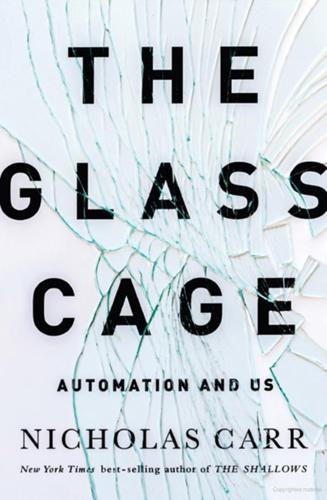
The Glass Cage: Automation and Us
by
Nicholas Carr
Published 28 Sep 2014
What if that vehicle was a school bus? Isaac Asimov’s first law of robot ethics—“a robot may not injure a human being, or, through inaction, allow a human being to come to harm”1—sounds reasonable and reassuring, but it assumes a world far simpler than our own. The arrival of autonomous vehicles, says Gary Marcus, the NYU psychology professor, would do more than “signal the end of one more human niche.” It would mark the start of a new era in which machines will have to have “ethical systems.”2 Some would argue that we’re already there. In small but ominous ways, we have started handing off moral decisions to computers.
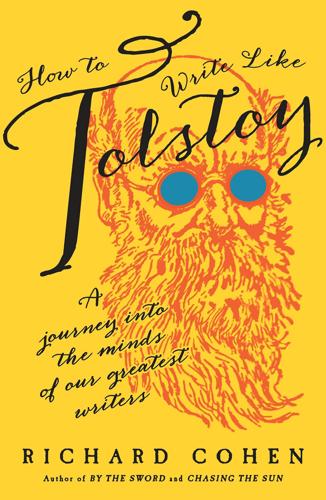
How to Write Like Tolstoy: A Journey Into the Minds of Our Greatest Writers
by
Richard Cohen
Published 16 May 2016
Among others who read the entire manuscript and made valuable comments were Valerie Grove, a stickler for good (and unboring) English, and three novelists: my Italian fencing friend Andrea Bocconi (who told me to keep my long stories short), Betsy Carter, and Dave King (who also teaches writers at NYU). John and Nina Darnton (also novelists) and their ex–Penguin Press editor daughter, Liza, were invaluable readers, while my son Toby and daughter Mary made useful comments on several chapters, although my younger son Guy’s command that I should go off and write a novel did not accelerate matters. Others I would like to thank are Bill Albers, Nicola Bennett, Lucinda Blumenfeld, David Bodanis, Catrine Clay, Julian Cotton, Sebastian Faulks, Victoria Glendenning, Joel Glucksman, Richard Holmes, Virginia Ironside, Annette Kobak, Rebecca Mead, Nicholas Partridge, Zina Rohan, Mary Sandys, Elisabeth Sifton, Linden Stafford, Anne Marie Stoddard, Catherine Talese, Rose Tremain, Ilya Wachs, Sam Wesson, and Melissa Ximena.
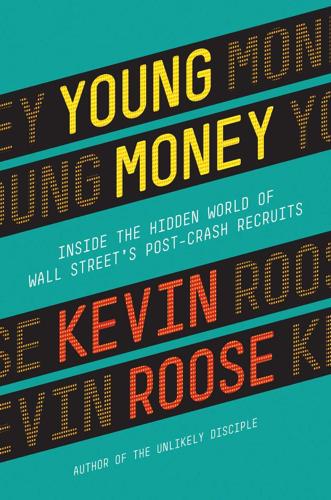
Young Money: Inside the Hidden World of Wall Street's Post-Crash Recruits
by
Kevin Roose
Published 18 Feb 2014
Apple had become the biggest consumer-facing company in the world, and venture capitalists were throwing money wantonly at brand-new tech start-ups, in a manner reminiscent of the dot-com boom of 1999 and 2000. The tech industry was also riding a wave of popular interest that had climaxed the year before with the release of The Social Network, the Aaron Sorkin–written film about the creation of Facebook. “I’ve heard people say The Social Network is the Wall Street of this generation,” Evan Korth, an NYU computer science professor, told the Wall Street Journal. Meanwhile, Wall Street banks were the opposite of sexy. They were laying off thousands of people, cutting back on salaries and bonuses, and nixing recruiting events for college students. And they were still unpopular as a result of the crisis.
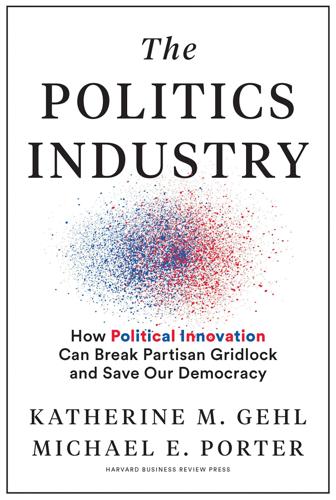
The Politics Industry: How Political Innovation Can Break Partisan Gridlock and Save Our Democracy
by
Katherine M. Gehl
and
Michael E. Porter
Published 14 Sep 2020
After early progress with the Common School Movement before the Civil War, it wasn’t until the Progressive Era that we saw a renewed push for anti-child labor laws and mandatory public education. This would eventually culminate in the High School Movement. See Claudia Goldin and Lawrence Katz, The Race between Education and Technology (Cambridge, MA: Harvard University Press, 2008); James Marten, Children and Youth during the Gilded Age and Progressive Era: Volume Two (New York: NYU Press, 2014). 50. At the time, these conditions were exposed in the work of Jacob Riis. See Jacob Riis, How the Other Half Lives (New York: C. Scribners Sons, 1890). For a more recent assessment, see Sean Dennis Cashman, America in the Gilded Age, 3rd Edition (New York: New York University Press, 1993), 146-150.
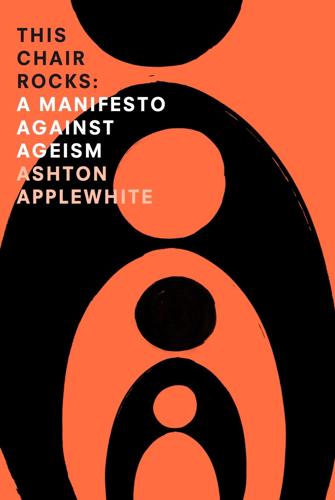
This Chair Rocks: A Manifiesto Against Ageism
by
Ashton Applewhite
Published 10 Feb 2016
Tarcher/Penguin, 2011), 125. 14 “Gerotranscendence: A Possible Path Toward Wisdom in Old Age,” pamphlet, Uppsala University, Sweden. 15 Molly Andrews, “The Seductiveness of Agelessness,” Aging and Society, Volume 19, Issue 03 (1999), 301–318. 16 Alex Morris, “The Prettiest Boy in the World,” New York, August 14, 2011. 17 “Local Stops: Internet Teenagers, Jesus, Flume, And AMERICA,”NYU Local blog, April 21, 2014. 18 Elaine Showalter, introduction to Out of Time: The Pleasures and the Perils of Aging, by Lynne Segal (London: Verso Books, 2013), Kindle edition. 19 Personal e-mail to author, via Paula Span, May 8, 2013. 20 Naomi Wolf, “Madonna: The Director’s Cut,” Harper’s Bazaar, Nov 9, 2011. 21 “Alabama Mayor, 91, Admits Stealing $201K from Town,” AP, October 12, 2012. 22 Harry R.
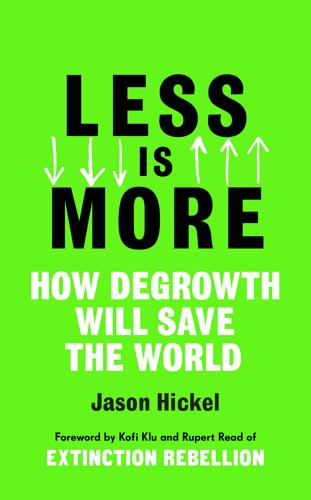
Less Is More: How Degrowth Will Save the World
by
Jason Hickel
Published 12 Aug 2020
Tomlinson, ‘Economics: The Periphery,’ In The Oxford History of the British Empire (1990), p. 69. 23 Ellen Meiksins Wood, The Origin of Capitalism: A Longer View (Verso, 2003). 24 Karl Polanyi, The Great Transformation (Boston: Beacon Press, 1944). 25 John Locke, The Second Treatise of Government, 1689. 26 For more on this history of scarcity, see Nicholas Xenos, Scarcity and Modernity (Routledge, 2017). 27 I derive these quotes from Michael Perelman, The Invention of Capitalism: Classical Political Economy and the Secret History of Primitive Accumulation (Duke University Press, 2000). 28 Mike Davis, Late Victorian Holocausts: El Niño Famines and the Making of the Third World (Verso Books, 2002). 29 Maitland explored this paradox in a book titled Inquiry into the Nature and Origin of Public Wealth and into the Means and Causes of its Increase. For more on this, see John Bellamy Foster, Brett Clark and Richard York, The Ecological Rift: Capitalism’s War on the Earth (NYU Press, 2011). 30 This history is charted in Merchant, Death of Nature. 31 Stephen Gaukroger, The Emergence of a Scientific Culture: Science and the Shaping of Modernity 1210–1685 (Clarendon Press, 2008). 32 Brian Easle, Witch-Hunting, Magic and the New Philosophy (The Harvester Press, 1980), cited in Federici p. 149. 33 Merchant, Death of Nature, p. 3. 34 Gaukroger, p. 325. 35 Juliet Schor, The Overworked American: The Unexpected Decline of Leisure (Basic Books, 2008). 36 E.P.
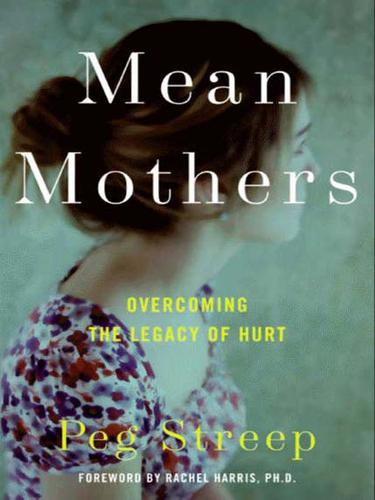
Mean Mothers: Overcoming the Legacy of Hurt
by
Peg Streep
Published 12 Oct 2009
This more relaxed societal tolerance: Ibid., 6. no less an expert than Bruno Bettelheim: Bruno Bettelheim, The Empty Fortress: Infantile Autism and the Birth of the Self (New York: Free Press, 1972). The question itself: “All about Fathers,” Child Study Center Letter 4, no. 2 (November/December 1999), NYU Child Study Center, http://www.aboutourkids.org. a list of common beliefs: Linda Nielsen, Embracing Your Father: How to Build the Relationship You’ve Always Wanted with Your Dad (New York: McGraw-Hill, 2004), 1. scientific evidence shows: Janet Shibley Hyde, “The Gender Similarities Hypothesis,” American Psychologist 60, no. 6 (September 2005): 581–92.

Power
by
Shahida Arabi
Published 11 Jan 2017
She is the #1 Amazon bestselling author ofThe Smart Girl’s Guide to Self-Care and Becoming the Narcissist’s Nightmare: How to Devalue and Discard the Narcissist While Supplying Yourself, featured as a #1 Bestseller in three categories and as a #1 Amazon bestseller in personality disorders for eight consecutive months after its release. She studied Psychology and English Literature as an undergraduate at NYU, where she graduated summa cum laude. Her interests include psychology, sociology, education, gender studies and mental health advocacy. Her writing has been featured on The Huffington Post, MOGUL, Thought Catalog and Harvard-trained psychologist Dr. Monica O’Neal’s website. Her blog, Self-Care Haven, has had millions of views from all over the world and her work has been shared by numerous mental health professionals, award-winning bloggers and bestselling authors.

The Authoritarian Moment: How the Left Weaponized America's Institutions Against Dissent
by
Ben Shapiro
Published 26 Jul 2021
Erick Trickey, “When America’s Most Prominent Socialist Was Jailed for Speaking Out Against World War I,” Smithsonianmag.com, June 15, 2018, https://www.smithsonianmag.com/history/fiery-socialist-challenged-nations-role-wwi-180969386/. 7. Buck v. Bell (1927), 274 US 200. 8. Margaret Sanger, “My Way to Peace,” January 17, 1932, https://www.nyu.edu/projects/sanger/webedition/app/documents/show.php?sangerDoc=12 9037.xml. 9. Calvin Coolidge, “Speech on the 150th Anniversary of the Declaration of Independence,” July 5, 1926, https://teachingamericanhistory.org/library/document/speech-on-the-occasion-of-the-one-hundred-and-fiftieth-anniversary-of-the-declaration-of-independence/. 10.

Tools of Titans: The Tactics, Routines, and Habits of Billionaires, Icons, and World-Class Performers
by
Timothy Ferriss
Published 6 Dec 2016
So many people, when they have a big experience, want to go share it, and sometimes the response they get isn’t always supportive. That alters the healing that they just received.” Resources Heffter Research Institute (heffter.org): I’ve interacted most with this organization. Founded and run primarily by PhDs and MDs, Heffter facilitates cutting-edge research at universities like Johns Hopkins, NYU, University of Zurich, and others. MAPS (maps.org): Founded in 1986, the Multidisciplinary Association for Psychedelic Studies (MAPS) is a 501(c)(3) non-profit research and educational organization that develops medical, legal, and cultural contexts for people to benefit from the careful uses of psychedelics and marijuana.
…
He has completely physically remodeled himself, can kick my ass in paddleboarding, and credits Dr. Phil Maffetone with many critical changes, including improving his circadian rhythm. Rick now typically wakes between 7:30 and 8:30 a.m., reversing a lifetime of nocturnal living. What did it? “When I was in college [at NYU], I never took a class before 3 p.m., because I knew I wouldn’t go. . . . [Before meeting Dr. Maffetone] I slept with blackout blinds, and I usually didn’t leave the house until the sun was setting. He said, ‘From now on, when you wake up, I want you to go outside. As soon as you wake up, open the blinds, and go outside, naked if possible, and be in the sun for 20 minutes.’”
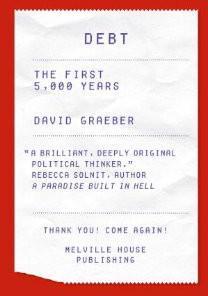
Debt: The First 5,000 Years
by
David Graeber
Published 1 Jan 2010
Hacksilber to Coinage: New Insights into the Monetary History of the Near East and Greece. Numismatic Studies No. 24. New York: American Numismatic Society, Banaji, Jairus. 2001. Agrarian change in late antiquity: gold, labour, and aristocratic dominance. Oxford: Oxford University Press. Barasch, Moshe. 1993. Icon: studies in the history of an idea. New York: NYU Press. Barber, Malcolm. 1978. The Trial of the Templars. Cambridge: Cambridge University Press. Barendse, Rene J. 2002. The Arabian Seas: The Indian Ocean World of the Seventeenth Century. Armonk: M. E. Sharpe. Barnes, Robert Harrison and Ruth Barnes. 1989. “Barter and Money in an Indonesian Village Economy.”
…
Dordrecht: Kluwer Academic Publishers. Heinsohn, Gunnar and Otto Steiger. 1989. “The Veil of Barter: The Solution to ‘The Task of Obtaining Representations of an Economy in which Money is Essential.” In Inflation and Income Distribution in Capitalist Crisis: Essays in Memory of Sidney Weintraub. Edited by J. A. Kregel. New York: NYU Press, pp. 175-202. Helmholz, Richard H. 1986. “Usury and the Medieval English Church Courts.” Speculum 56: 364-80 Herbert, Eugenia W. 2003. Red Gold of Africa: Copper in Precolonial History and Culture. Madison: University of Wisconsin Press. Herlihy, David. 1985. Medieval Households. Cambridge: Harvard University Press.
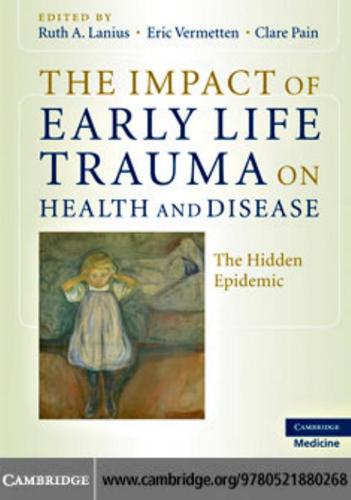
The Impact of Early Life Trauma on Health and Disease
by
Lanius, Ruth A.; Vermetten, Eric; Pain, Clare
Published 11 Jan 2011
Buckley, Phd PTSD and Anxiety Disorders Division Cincinnati VA Medical Center Cincinnati, OH, USA Jean-Francois Bureau, PhD School of Psychology University of Ottawa Ottawa, ON, Canada Kathleen M. Chard PTSD and Anxiety Disorders Division Cincinnati VA Medical Center Cincinnati, OH, USA Dennis Charney, MD Mount Sinai School of Medicine Department of Psychiatry New York, NY, USA vii List of contributors Anthony Charuvastra, MD NYU Child Study Center Trauma and Resilience Research Program Nathan S. Kline Institute for Psychiatric Research NYU Child Study Center New York, NY, USA Jeewook Choi, MD, PhD Department of Psychiatry The Catholic University of Korea Daejeon St. Mary’s Hospital Jung-gu, Daejeon, Korea Marylene Cloitre, PhD Trauma and Resilience Research Program, Child Study Center Department of Psychiatry New York University School of Medicine NY, USA Melody D.
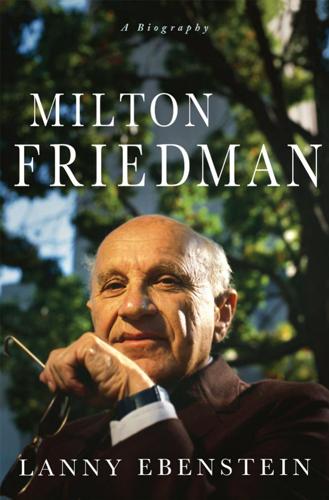
Milton Friedman: A Biography
by
Lanny Ebenstein
Published 23 Jan 2007
Caldwell correctly comments: “Though many parts of Friedman’s essay [‘The Methodology of Positive Economics’] are consistent with the logical empiricism of his time, his preoccupation with prediction and his insistence that the ‘realism of assumptions’ is immaterial are not” (pp. 173 and 184). For an exchange between Caldwell and this writer featuring considerable discussion of Friedman’s methodological views, see the January 2005 inaugural edition of the NYU Journal of Law & Liberty. This writer’s Friedrich Hayek: A Biography (New York: Palgrave, 2001) and Hayek’s Journey: The Mind of Friedrich Hayek (New York: Palgrave, 2003) contain chapters on Friedman and the Chicago school of economics. The August 2005 edition of Liberty has an article by this writer, “Milton Friedman’s Legacy.”

Street Smart: The Rise of Cities and the Fall of Cars
by
Samuel I. Schwartz
Published 17 Aug 2015
Schwartz), 62 (illustration), 63 NYC Metropolitan Transit Authority, 153–154, 246, 247, 248 NYC Parking Violations Bureau, 54 NYC Planning Department, 31 NYC Police Department, 247 NYC Traffic Department, 45, 53 and justification for reopening Central Park to traffic, 49–51 and reduction of traffic and pollution, plan for, 50–52 and transportation and traffic problems, plans for, 48–63 NYC Transportation Department, 247, 248 NYU, Rudin Center for Transportation Policy and Management, 230–231 Obama, Barack, 225 Oil, 227–228 Oil crisis (1973), 79–80 Oklahoma City, 142, 227, 242 walkability in, 139–141 Oklahoma City Crosstown Expressway, 141 O’Malley, Walter, 20, 125, 131, 231, 244–245, 248, 249 OneBusAway system, 191 OnStar system, 184 OPEC.

Capitalism Without Capital: The Rise of the Intangible Economy
by
Jonathan Haskel
and
Stian Westlake
Published 7 Nov 2017
“Intangible Assets: How the Interaction of Computers and Organizational Structure Affects Stock Market Valuations.” Brookings Papers on Economic Activity 33 (1): 137–98. Brynjolfsson, Erik, and Andrew McAffee. 2014. The Second Machine Age. W. W. Norton and Co. Chen, Ester, Ilanit Gavious, and Baruch Lev. 2015. “The Positive Externalities of IFRS R&D Rule: Enhanced Voluntary Disclosure.” http://people.stern.nyu.edu/blev/files/Positive-Externalities-of-IFRS_March_30_2015_k4gn98s2.pdf. Chesson, Adrian. 2001. “Estimation of Software in the UK National Accounts—Recent Developments.” OECD STD/NA(2001)23. http://www.oecd.org/std/na/1908892.doc. Colecchia, Alessandra, and Paul Schreyer. 2002. “ICT Investment and Economic Growth in the 1990s: Is the United States a Unique Case?”
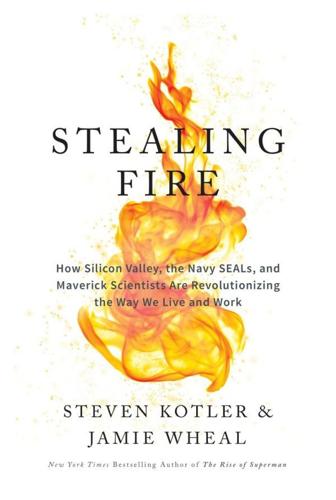
Stealing Fire: How Silicon Valley, the Navy SEALs, and Maverick Scientists Are Revolutionizing the Way We Live and Work
by
Steven Kotler
and
Jamie Wheal
Published 21 Feb 2017
Set in the year 2054, Huxley described a hypercommercialized world in which people were conditioned with brainwashing, sexual diversions (in the forms of group “orgy-porgies”), and soma—a psychedelic antidepressant offering “all the advantages of Christianity and alcohol; none of their defects.”46 “In [George Orwell’s] 1984 . . . people are controlled by inflicting pain,” wrote NYU professor Neil Postman. “In Brave New World, they are controlled by inflicting47 pleasure. In short, Orwell feared that our fears will ruin us. Huxley feared that our desire will ruin us.” And while the possibility of a nation deliberately invading our minds to shape and control behavior may feel like a relic of Cold War paranoia, the prospect of multinational corporations deliberately tweaking our subconscious desires to sell us more stuff is already here.
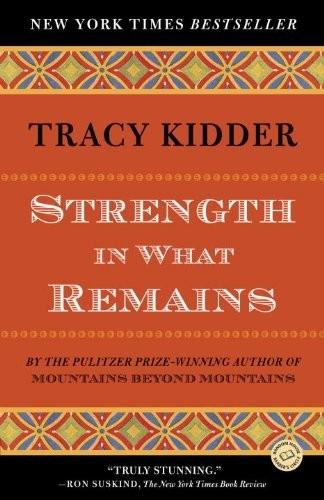
Strength in What Remains
by
Tracy Kidder
Published 29 Feb 2000
She said maybe it was the remark he’d made about being “very interested” when she had told him that, yes, this was a church. This had made him seem like “someone who could see beyond his own nose.” But beyond that, she didn’t have an explanation. Her description of Deo back then was in itself more convincing. She remembered that he was very skinny and that he had buck teeth (later straightened at the NYU dental school). Also that his breath smelled dreadful—so she wasn’t surprised when she received his letter asking for help in finding a doctor. She had been in New York for several years when Deo arrived in her life. In the places where she’d lived before, up in Vermont and in the convent, one gathered asparagus and picked cherries early, but one had to wait for potatoes.
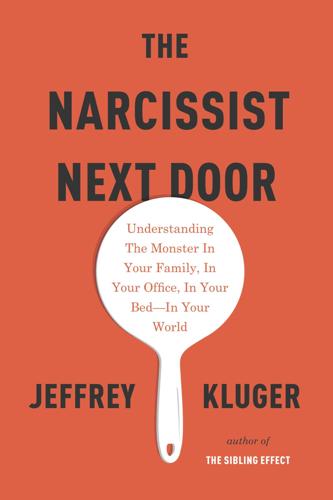
The Narcissist Next Door
by
Jeffrey Kluger
Published 25 Aug 2014
African Americans, like whites, often do less well on the IAT than they want to—a legacy of cultural bias that, in a paradoxically evenhanded way, afflicts all races equally. None of this means that anyone gets a pass for embracing the ugly, for celebrating the our-group-is-great-and-yours-is-vile ethos because that’s the way your brain wants to work. The fact is, these biases, while terrible, are also malleable, or at least more malleable than they seem. Phelps, of NYU, has conducted studies in which she scans white and black subjects’ brains with functional magnetic resonance imaging (fMRI), while she flashes them pictures of white and black faces. Both races have higher activation of the fear and rage centers in the amygdala when they see the opposite race than when they see their own.

Blink: The Power of Thinking Without Thinking
by
Malcolm Gladwell
Published 1 Jan 2005
Bargh wanted to learn whether the people who were primed with the polite words would take longer to interrupt the conversation between the experimenter and the confederate than those primed with the rude words. He knew enough about the strange power of unconscious influence to feel that it would make a difference, but he thought the effect would be slight. Earlier, when Bargh had gone to the committee at NYU that approves human experiments, they had made him promise that he would cut off the conversation in the hall at ten minutes. “We looked at them when they said that and thought, You’ve got to be kidding,” Bargh remembered. “The joke was that we would be measuring the difference in milliseconds. I mean, these are New Yorkers.
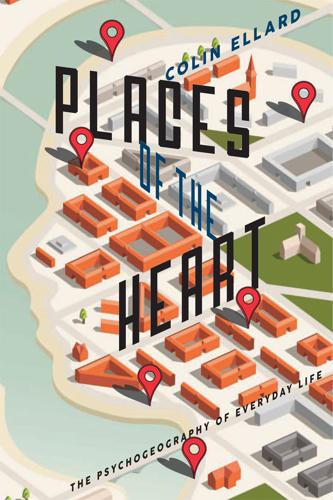
Places of the Heart: The Psychogeography of Everyday Life
by
Colin Ellard
Published 14 May 2015
—Michael Brooks, author of 13 Things that Don’t Make Sense: The Most Baffling Scientific Mysteries of Our Time “[Ellard] took me on a journey to places I’d never even considered before.” —Sarah Susanka, author of The Not So Big House First published in the United States in 2015 by Bellevue Literary Press, New York For information, contact: Bellevue Literary Press NYU School of Medicine 550 First Avenue OBV A612 New York, NY 10016 © 2015 by Colin Ellard Library of Congress Cataloging-in-Publication Data is available from the publisher upon request All rights reserved. No part of this publication may be reproduced or transmitted in any form or by any means, electronic or mechanical, including photocopy, recording, or any information storage and retrieval system now known or to be invented, without permission in writing from the publisher, except by a reviewer who wishes to quote brief passages in connection with a print, online, or broadcast review.
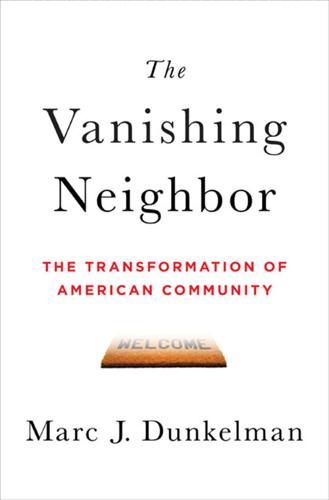
The Vanishing Neighbor: The Transformation of American Community
by
Marc J. Dunkelman
Published 3 Aug 2014
And so, given the winnowing of the American township, the sort of mutual ignorance on display at Mary Mac’s now exists, in many circumstances, among those who live next door to one another. For as long as scholars have written about community, they’ve kvetched that things are headed down the tubes. It was that perpetual hand-wringing that caught NYU historian Thomas Bender’s eye during the 1970s. In a little book published in 1978 that’s become a classic among those investigating how Americans get along, he noted how generation upon generation of social scientists had taken turns predicting that the end of community was near. There was frequently a different reason—and often a reasonable rationale.
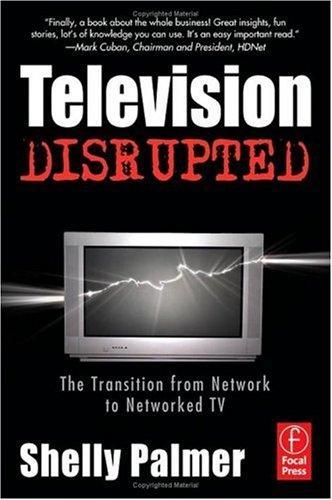
Television disrupted: the transition from network to networked TV
by
Shelly Palmer
Published 14 Apr 2006
Palmer is a popular speaker and moderator at technology and media conferences hosted by industry organizations and top tier colleges and universities, like: The Consumer Electronics Show (CES), The National Association of Broadcasters Convention (NAB), The National Show presented by the National Cable Television Association (NCTA), Telecom presented by the United States Telecom Association, Digital Hollywood, iHollywood, DV Expo and ITV Europe. He is a guest lecturer at Stern Graduate Business School at NYU, The Columbia Institute for Tele-Information (CITI) at Columbia University, The Graziadio School of Business Management at Pepperdine University, The Digital Content Lab at the American Film Institute and other top tier colleges and universities. Over the last two decades, Palmer has enjoyed a highly distinguished career as a composer and producer.
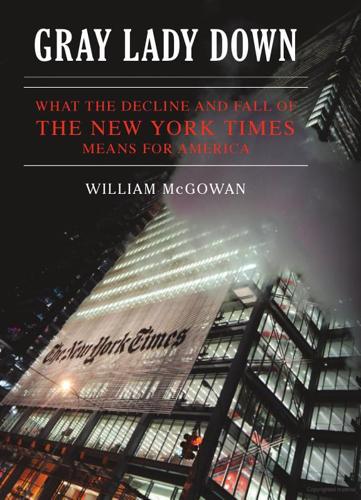
Gray Lady Down: What the Decline and Fall of the New York Times Means for America
by
William McGowan
Published 16 Nov 2010
The story was newsworthy: in a gentrifying neighborhood, gangs of black teens (“wolf packs,” as the New York Post called them) were on the loose, systematically preying on people who appeared well-to-do, overwhelmingly white. Indeed, a similar case involving a black man chased into traffic by a white gang in the Howard Beach neighborhood of Queens in the late 1980s was given wall-to-wall coverage by the Times and eventually brought down Mayor Ed Koch. The death of the NYU student was covered by other New York papers. “Harlem Thugs Yuppie Hunting,” read the New York Post headline. The Times mentioned the case in a one-paragraph “Metro Briefing.” Black crime in general causes skittishness at the Times, leading to classic liberal avoidance and denial. The perpetrators of these crimes are often portrayed as society’s victims, with the high rates of black crime and incarceration blamed on institutional racism and “racial profiling” in the criminal justice system.
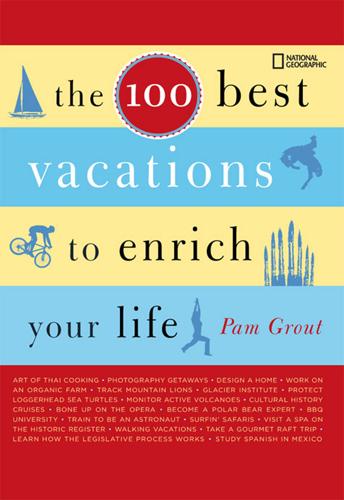
The 100 Best Vacations to Enrich Your Life
by
Pam Grout
Published 14 May 2007
John’s College in Santa Fe, New Mexico, which conducts three weeks of summer classics (see pp. 165–166), or Skidmore College in Saratoga Springs, New York (815 North Broadway, Saratoga Springs, NY, 12866, 518-580-5590, www.skidmore.edu), which offers a four-week adult writing institute. New York University (Office of Summer Sessions, 7 E. 12th Street, 6th Floor, New York, NY 10003, 212-998-2292, www.nyu.edu/summer) offers summer adult workshops in filmmaking, and Moravian College in Bethlehem, Pennsylvania (Music Department, 1200 Main Street, Bethlehem, PA 18018, 610-861-1650, www.julyjazzgetaway.org), offers a weeklong jazz workshop every July. Still others utilize their professors to lead off-site educational and cultural tours.
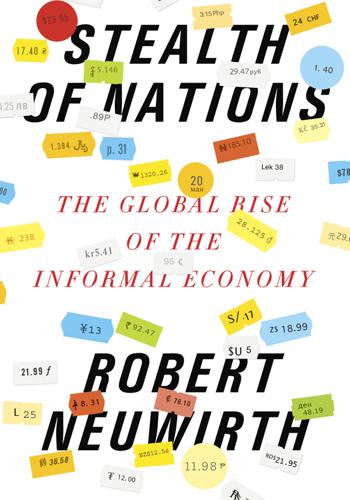
Stealth of Nations
by
Robert Neuwirth
Published 18 Oct 2011
Ayala, Edgardo. “Street Vendors Warn of Fight Against Urban Removal,” Inter Press Service, Dec. 22, 2010. Ayittey, George B. N. http://twitter.com/ayittey/status/26949643735 ———. “The Failure of Development Planning in Africa,” in The Collapse of Development Planning, ed. Peter J. Boettke. New York: NYU Press, 1994. Azam, Jean-Paul. Trade, Exchange Rate, and Growth in Sub-Saharan Africa. Cambridge, UK: Cambridge University Press, 2007. Bang, Peter F. The Roman Bazaar: A Comparative Study of Trade and Markets in a Tributary Empire. Cambridge, UK: Cambridge University Press, 2008. Bauer, Peter. The Development Frontier.
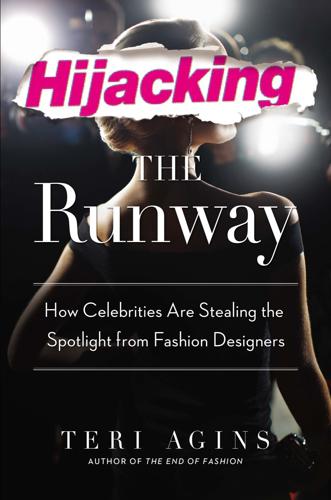
Hijacking the Runway: How Celebrities Are Stealing the Spotlight From Fashion Designers
by
Teri Agins
Published 8 Oct 2014
They took some acting classes, and Mary-Kate did a few TV and movie roles as they both explored other interests, tapping into the experts to whom celebrities like them would always have access. Mary-Kate became an intern for Annie Leibovitz, the celebrity photographer for Vanity Fair, while Ashley landed a fashion internship with women’s designer Zac Posen. Simply by being themselves at NYU, Mary-Kate and Ashley unwittingly carved out new personas—as fashion role models around Manhattan. Young women began to copy their edgy way of dressing, an unkempt, downtown look known as “Dumpster chic.” The waifish, pint-size (just around five feet tall) Olsens wore messy, long blonde hair with dark roots and smoky eye makeup.

The Fourth Age: Smart Robots, Conscious Computers, and the Future of Humanity
by
Byron Reese
Published 23 Apr 2018
It would have access to all sorts of Internet discussions about how to build a “kill switch” for an AGI. It may conclude that we are afraid of it, and a brief scan of our history will give it a vivid picture of what we do to things we fear. It may also conclude it is in competition with us for resources. Gary Marcus, a professor of cognitive science at NYU, sums up this concern: Once computers can effectively reprogram themselves, and successively improve themselves, leading to a so-called “technological singularity” or “intelligence explosion,” the risks of machines outwitting humans in battles for resources and self-preservation cannot simply be dismissed.
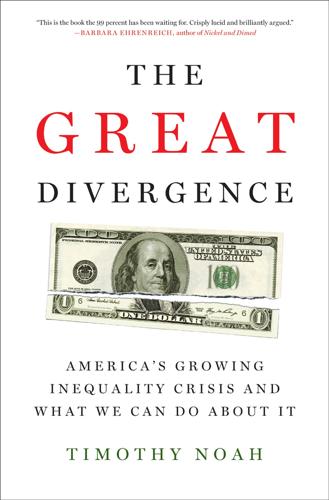
The Great Divergence: America's Growing Inequality Crisis and What We Can Do About It
by
Timothy Noah
Published 23 Apr 2012
“If the W.P.A. and the labor [unions] remain strong enough to keep control of the Government,” King confided in private correspondence in 1939, “I suspect that we may just as well reconcile ourselves to the advent of a fascist dictatorship in due course of time.” King railed against top income tax rates (too high); the capital gains tax and corporate income tax (shouldn’t exist); and the minimum wage (“dangerous”). Upon retiring from NYU in 1945, King became chairman of the Committee for Constitutional Government, an anti–New Deal organization originally founded to oppose Roosevelt’s 1937 court-packing scheme, which outraged King. Well before he died in 1962 at age eighty-two, King saw his legacy eclipsed by the work of a Russian émigré who in 1927 had succeeded King at the NBER and in 1971 would win the Nobel Prize in economics.
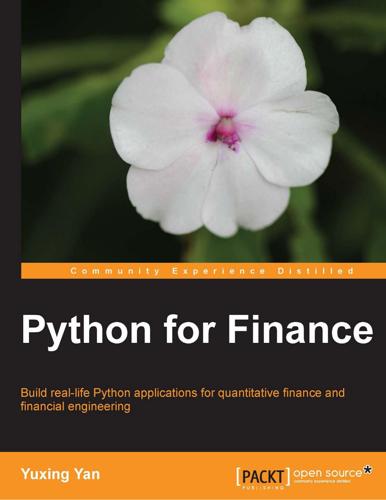
Python for Finance
by
Yuxing Yan
Published 24 Apr 2014
q=ttt&i=60&p=5d&f=d,o,h,l,c ,v' x=np.array(pd.read_csv(path.replace('ttt',ticker),skiprows=7,header=No ne)) date=[] for i in arange(0,len(x)): if x2[i][0][0]=='a': t= datetime.datetime.fromtimestamp(int(x2[i][0].replace('a',''))) print ticker, t, x[i][1:] date.append(t) else: date.append(t+datetime.timedelta(minutes =int(x[i][0]))) final=pd.DataFrame(x,index=date) final.columns=['a','Open','High','Low','Close','Vol'] del final['a'] final.to_csv('c:/temp/abc.csv'.replace('abc',ticker)) After running the program, we can observe the following output: [ 224 ] Chapter 8 To view the first and last several lines, we could use the head() and tail()functions as follows: >>>final.head() Open High Low Close Vol 2013-11-18 09:30:00 524.87 525.2402 524.762 524.99 80590 2013-11-18 09:31:00 525.08 525.5 524.76 524.82 79311 2013-11-18 09:32:00 525.75 525.8 525.01 525.03 43164 2013-11-18 09:33:00 526.445 526.58 525.65 525.75 81967 2013-11-18 09:34:00 526.48 526.5899 526.05 526.5899 40671 >>>final.tail() Open High Low Close Vol 2013-11-22 15:57:00 519.53 519.56 519.39 519.39 35530 2013-11-22 15:58:00 519.43 519.56 519.4 519.53 36581 2013-11-22 15:59:00 519.52 519.54 519.41 519.43 50983 2013-11-22 16:00:00 519.8 519.85 519.49 519.52 482044 2013-11-22 16:01:00 519.8 519.8 519.8 519.8 0 Since the TAQ database is quite expensive, most of the potential readers could not access the data. Fortunately, we have a database called TORQ (Trade, Order, Report, and Quotation). Thanks to Prof. Hasbrouck, the database could be downloaded from http://people.stern.nyu.edu/jhasbrou/Research/ WorkingPaperIndex.htm. From the same web page, we could download the TORQ manual as well. Based on Prof. Hasbrouck's binary datasets, we generate a few corresponding datasets in the pickle format of Pandas. The Consolidated Trade (CT) dataset can be downloaded from http://canisius.edu/~yany/TORQct.pickle.
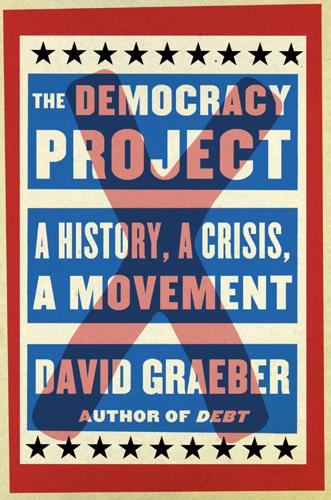
The Democracy Project: A History, a Crisis, a Movement
by
David Graeber
Published 13 Aug 2012
When the president of Columbia University invited police onto campus to retake student-occupied buildings in 1968, this was considered a shocking breach of the tacit understanding that universities do not call in military-style force against their own students. When, as I described earlier, a handful of students attempted occupations at the New School and NYU in 2009, they were almost immediately overwhelmed by special police antiterrorism squads with high-tech weapons and equipment. Even more important, there was no outcry on the part of the media. In fact, the national media made no mention of the events at all. They weren’t even newsworthy. The use of overwhelming military force against nonviolent students inside their own university had, by that time, come to be considered perfectly normal.
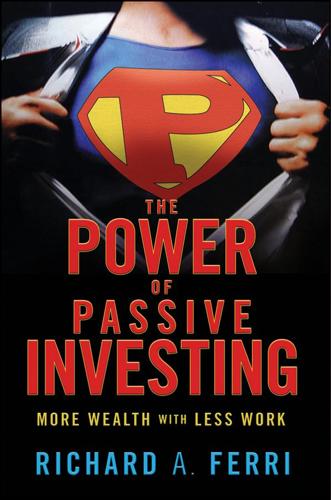
The Power of Passive Investing: More Wealth With Less Work
by
Richard A. Ferri
Published 4 Nov 2010
Larry Martin, “The Evolution of Passive versus Active Equity Management,” The Journal of Investing (Spring 1993): 17–20. 3. Allan S. Roth, How a Second Grader Beats Wall Street: Golden Rules Any Investor Can Learn (Hoboken, NJ: John Wiley & Sons, 2009). 4. Mark M. Carhart, Jennifer N. Carpenter, Anthony W. Lynch, and David K. Musto, “Mutual Fund Survivorship,” (working paper, NYU Department of Finance, September 12, 2000), 16. 5. William F. Sharpe, “The Arithmetic of Active Management,” Financial Analysts Journal 47, no. 1 (January–February 1991): 7–9. Chapter 7: The Futility of Seeking Alpha 1. Paul A. Samuelson, “The Long-Term Case for Equities,” Journal of Portfolio Management 21, no. 1 (Fall 1994): 15–24. 2.

Possible Minds: Twenty-Five Ways of Looking at AI
by
John Brockman
Published 19 Feb 2019
But these advantages are offset by other problems. The Bayesian techniques can help you choose which of two hypotheses is more likely, but there are almost always an enormous number of possible hypotheses, and no system can efficiently consider them all. How do you decide which hypotheses are worth testing in the first place? Brenden Lake at NYU and colleagues have used these kinds of top-down methods to solve another problem that’s easy for people but extremely difficult for computers: recognizing unfamiliar handwritten characters. Look at a character on a Japanese scroll. Even if you’ve never seen it before, you can probably tell if it’s similar to or different from a character on another Japanese scroll.
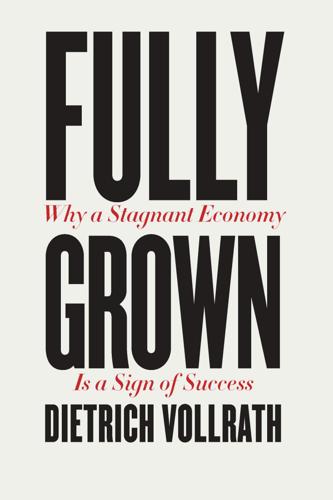
Fully Grown: Why a Stagnant Economy Is a Sign of Success
by
Dietrich Vollrath
Published 6 Jan 2020
“Engines of Liberation.” Review of Economic Studies 72 (1): 109–33. https://doi.org/10.1111/0034-6527.00326. Grossman, G. M., and E. Helpman. 1991. “Quality Ladders in the Theory of Growth.” Review of Economic Studies 58 (1): 43–61. Gutiérrez, G. 2017. “Investigating Global Labor and Profit Shares.” Working paper, NYU Stern School of Business. Gutiérrez, G., and T. Philippon. 2017. “Investmentless Growth: An Empirical Investigation.” Brookings Papers on Economic Activity 48 (2): 89–190. Gyourko, J., A. Saiz, and A. Summers. 2008. “A New Measure of the Local Regulatory Environment for Housing Markets: The Wharton Residential Land Use Regulatory Index.”
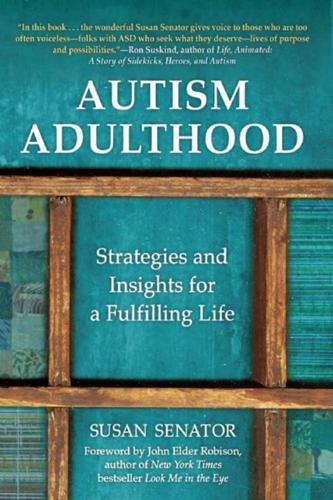
Autism Adulthood: Strategies and Insights for a Fulfilling Life
by
Susan Senator
Published 4 Apr 2016
He should be able to have the kind of activities he has in the community now: walk to an ice cream store, a Starbucks, the YMCA, or to be able to take public transportation. These opportunities would give Nat a sense of familiarity and as we know with autism—or at least with Nat—familiarity breeds comfort breeds happiness.” I had this picture of adult Nat living in the hip big city (just like my middle son Max, at NYU), and for once in Nat’s life I felt like I was going to be able to brag. Of course, my attitude wasn’t quite what it should have been, because Nat’s adult life was not about my pride, my ability to crow to my friends. But these uglier emotions are part of reality, too. My love for Nat is complicated, knotted, and old, like an ancient tree.

No Such Thing as a Free Gift: The Gates Foundation and the Price of Philanthropy
by
Linsey McGoey
Published 14 Apr 2015
., ‘Commentary: UN High Level Meeting on Non-communicable Diseases’, 2. 35Robert Reich, Supercapitalism: The Battle for Democracy in an Age of Big Business (London: Icon Books, 2007), 191. 36Margaret Chan, ‘The Rise of Chronic Noncommunicable Diseases: An Impending Disaster,’ Opening remarks at the WHO Global Forum, 27 April 2011, who.int. 37Duff Wilson and Adam Kerlin, ‘Special Report: Food, Beverage Industry Pays for Seat at Health-Policy Table’, Reuters, 20 October 2012. 38Wilson and Kerlin, ‘Special Report’. 39The description of the Moscow meeting is taken from Wilson and Kerlin, ‘Special Report’. 40Elizabeth Woyke, ‘How NYU chose Colombia over Coke’. BusinessWeek, 23 January 2006. 41TechnoServe press release, ‘The Coca-Cola Company, Technoserve and the Gates Foundation Partner to Boost Incomes of 50,000 Small-Scale Farmers in East Africa’, 20 January 2010, at technoserve.org. 42See Stuckler et al., ‘Global Health Philanthropy and Institutional Relationships’. 43Bridget Mugambe, an AFSA policy advocate, confirmed to me in March 2015 that they never received a response from the foundation. 44Tony Leys, ‘Iowa Trial of GMO Bananas is Delayed’, Des Moines Register, 12 January 2015. 45The foundation’s non-accountability has been strongly criticized in India.
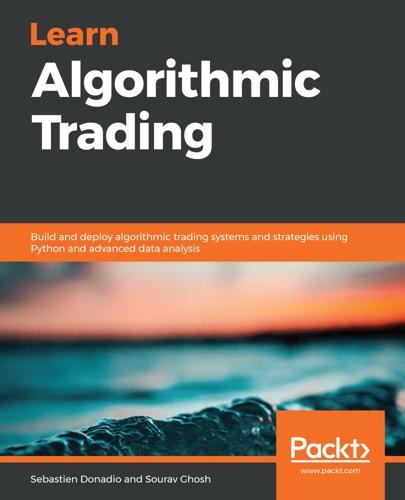
Learn Algorithmic Trading
by
Sebastien Donadio
Published 7 Nov 2019
He has a wide variety of professional experience, including being head of software engineering at HC Technologies, partner and technical director of a high-frequency FX firm, a quantitative trading strategy software developer at Sun Trading, working as project lead for the Department of Defense. He also has research experience with Bull SAS, and an IT Credit Risk Manager with Société Générale while in France. He has taught various computer science courses for the past ten years in the University of Chicago, NYU and Columbia University. His main passion is technology but he is also a scuba diving instructor and an experienced rock-climber. Sourav Ghosh has worked in several proprietary high-frequency algorithmic trading firms over the last decade. He has built and deployed extremely low latency, high throughput automated trading systems for trading exchanges around the world, across multiple asset classes.

War for Eternity: Inside Bannon's Far-Right Circle of Global Power Brokers
by
Benjamin R. Teitelbaum
Published 14 May 2020
could live on while bodies die: This point was made by Evola admirer and white nationalist Tomislav Sunic in “Julius Evola on Race,” Occidental Observer, May 1, 2010, https://www.theoccidentalobserver.net/2010/05/01/sunic-evola-on-race/. mysticism into their sense of race: For more on mysticism, Evola, and conceptions of race in the Third Reich, see Nicholas Goodrick-Clarke, Black Sun: Aryan Cults, Esoteric Nazism, and the Politics of Identity (New York: NYU Press, 2003). recommended he be marginalized: H. T. Hansen, “A Short Introduction to Julius Evola,” in Revolt Against the Modern World: Politics, Religion, and Social Order in the Kali Yuga (Rochester, VT: Inner Traditions, 1995). Chapter 9: The Man Against Time “destroy all of today’s establishment”: “Steve Bannon, Trump’s Top Guy, Told Me He Was ‘A Leninist,’” Daily Beast, https://www.thedailybeast.com/steve-bannon-trumps-top-guy-told-me-he-was-a-leninist?

Data Action: Using Data for Public Good
by
Sarah Williams
Published 14 Sep 2020
The lack of transparency in the creation of the data index often resulted in government officials having to explain to reporters what the index numbers meant.30 Measuring the air quality independently allowed the press to discuss the topic with verifiable numbers and provide a fact-based counter-opinion to the smog-as-fog argument. Yet measuring the data alone did not change the conversation; creating compelling graphics for a large, captivated Olympic audience allowed us to bring the story of air quality in Beijing to people all over the world (see figure 2.8, for images shown at NYU). 2.8 This visualization presented at New York University's Global Design Exposition shows pollution at the Bird's Nest Stadium in Beijing using photos and a graph of particulate matter data. Source: Images by Sarah Williams. The Beijing Air Tracks project illustrates that collecting your own data can set the record straight.
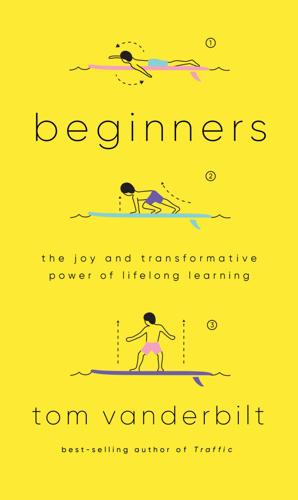
Beginners: The Joy and Transformative Power of Lifelong Learning
by
Tom Vanderbilt
Published 5 Jan 2021
From her website, which bore the magic words “Beginners Welcome,” I learned she lived just down the street. A week later, we met at a nearby café. Amedeo, thirty-eight, with her first child due in a few months (she warned me her maternity leave would interrupt our lessons), studied theater and sang at NYU and, following a nine-year stint in the corporate world, began teaching full-time. Half her students were musical theater students, Broadway hopefuls. The other half were all sorts of people: actors looking to improve their vocal delivery, aspiring singers trying to refine their craft, novices like me.
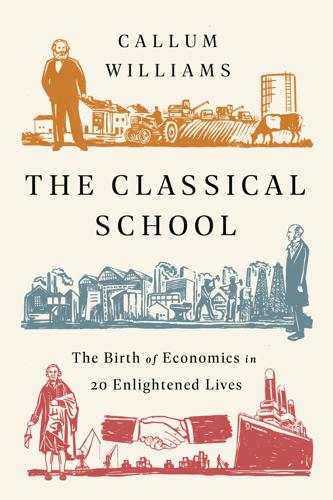
The Classical School
by
Callum Williams
Published 19 May 2020
History of Economics Review 65, no. 1 (2016): 15–26. Forget, Evelyn L. “J.-B. Say and Adam Smith: An Essay in the Transmission of Ideas”. Canadian Journal of Economics 26, no. 1 (1993): 121–133. Formaini, Robert L. “Economic Insight”. Federal Reserve Bank of Dallas 10, no. 1 (2002). Foster, John Bellamy. Ecology against capitalism. NYU Press, 2002. Foucault, Michel, Arnold I. Davidson, and Graham Burchell. 2008. The Birth of Biopolitics: Lectures at the Collège de France, 1978–1979. Springer. Foucault, Michel. 2007. Security, Territory, Population: Lectures at the Collège de France, 1977–1978. Springer. Fox, Adam. “Sir William Petty, Ireland, and the Making of a Political Economist, 1653–87 1”.
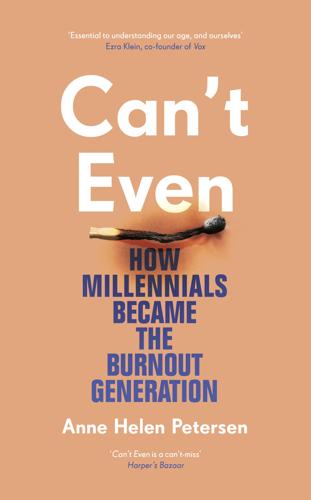
Can't Even: How Millennials Became the Burnout Generation
by
Anne Helen Petersen
Published 14 Jan 2021
Her sister, who was two years older, had been accepted into a college-prep track, and Liz followed her. But her parents “did not believe in college as a reality,” Liz told me. “They never even finished high school in Mexico. It was this amorphous blob of an ambition, something to strive for without a map.” Liz wanted to get out of California, preferably to NYU or somewhere “intellectually interesting,” and started building toward that goal during her freshman year in high school. “I made sure I was in clubs that emphasized how smart I was, and that would look good to colleges,” she said. She was stressed all the time, but not, as she recalls, from school so much as her home life, which was “awful and cagey.”
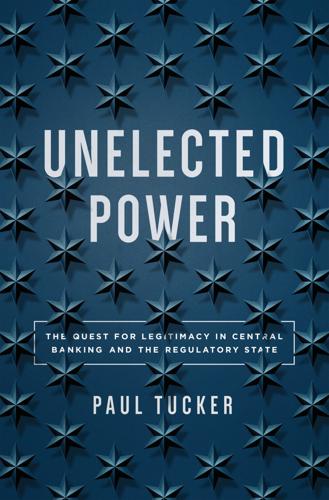
Unelected Power: The Quest for Legitimacy in Central Banking and the Regulatory State
by
Paul Tucker
Published 21 Apr 2018
At Brown: Mark Blyth, David Estlund, and Mark Suchman. At Columbia: Charlie Calomiris, Kate Judge, Perry Mehrling, Gillian Metzger, Sharyn O’Halloran, and Peter Strauss. At Georgetown: Kathleen McNamara and Henry Richardson. At Michigan: Elizabeth Anderson, Michael Barr, Daniel Crane, Scott Hershovitz, Bill Novak, and Charles Shipan. At NYU: Tony Bertelli, Ricky Revesz, Kim Schoenholz, Daniel Viehoff (when visiting at Yale), and Jeremy Waldron. At Philadelphia/Wharton: Cristina Bicchieri, Cary Coglianese, Peter Conti-Brown (who, as a recent first-time author, kindly helped with questions about the publishing process), and David Zaring.
…
Cambridge: Cambridge University Press, 1999. Epstein, Gerald. “Central Banks as Agents of Economic Development.” Political Economy Research Institute Working Paper, no. 104, University of Massachusetts Amherst, September 2005. Epstein, Richard A. “Why the Modern Administrative State Is Inconsistent with the Rule of Law.” NYU Journal of Law and Liberty 3 (2008): 491–515. Ernst, Daniel. Toqueville’s Nightmare: The Administrative State Emerges in America, 1900–1940. New York: Oxford University Press, 2014. Eskridge, William N., and John Ferejohn. “Super-Statutes.” Duke Law Journal 50 (2001): 1215–76. Estlund, David. Democratic Authority.
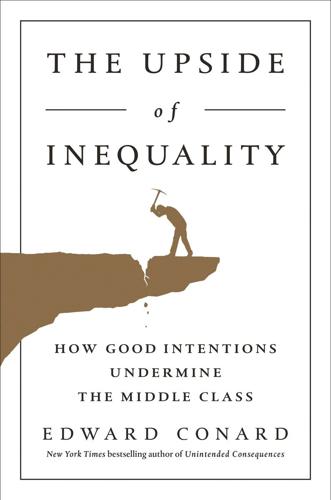
The Upside of Inequality
by
Edward Conard
Published 1 Sep 2016
Anna Merritt, Daniel Effron, and Benoit Monin, “Moral Self-Licensing: When Being Good Frees Us to Be Bad,” Social and Personality Psychological Compass, 2010, http://www-psych.stanford.edu/~monin/papers/Merritt,%20Effron%20%26%20Monin%202010%20Compass%20on%20Moral%20Licensing.pdf. 13. Dalton Conley, “Poverty and Life Chances: The Conceptualization and Study of the Poor,” The Handbook of Sociology (U.K.: Sage Limited, 2005), 329, edited by Craig Calhoun, Chris Rojek, and Bryan Turner. https://wagner.nyu.edu/files/faculty/publications/poverty_chapter.pdf. 14. Rajendra Pachauri et al., “Climate Change 2014: Synthesis Report,” Contribution of Working Groups I, II and III to the Fifth Assessment Report of the Intergovernmental Panel on Climate Change, IPCC, Geneva, Switzerland, 2014, 151 pp., http://ipcc.ch/pdf/assessment-report/ar5/syr/SYR_AR5_FINAL_full_wcover.pdf. 15.
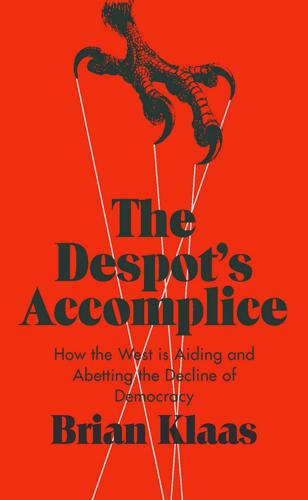
The Despot's Accomplice: How the West Is Aiding and Abetting the Decline of Democracy
by
Brian Klaas
Published 15 Mar 2017
In Paradise Lost, New York: Palgrave Macmillan, 110– 27. 9.╇Girard, Philippe (2002). The Eagle and the Rooster: The 1994 US Invasion of Haiti, PhD dissertation, Ohio University, https://etd.ohiolink.edu/ rws_etd/document/get/ohiou1035828999/inline, last accessed 21 JanÂ� uÂ�ary 2016. 10.╇Sprague, Jeb (2012). Paramilitarism and the Assault on Democracy in Haiti, New York: NYU Press. 11.╇Ibid., 67. 12.╇Girard, Philippe (2004). Clinton in Haiti: the 1994 US invasion of Haiti. New York: Palgrave Macmillan, 2. 13.╇Ibid. 14.╇Dowd, Maureen (1994). ‘Unimpeded, Intruder Crashes Plane Into White House’, The New York Times, 12 September 1994, http://www. nytimes.com/1994/09/13/us/crash-white-house-overview-unimpeded-intruder-crashes-plane-into-white-house.html?
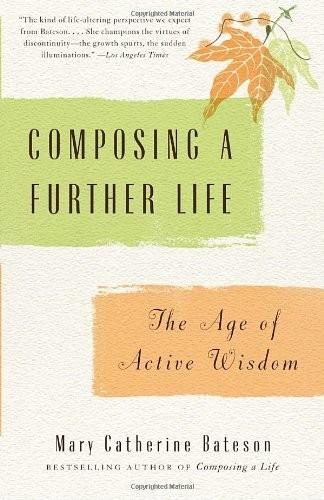
Composing a Further Life: The Age of Active Wisdom
by
Mary Catherine Bateson
Published 13 Sep 2010
Ruth was working out of an integrated office where they didn’t specialize her with black seniors, so she simply went where she was needed, becoming aware of different patterns of kinship and family structure and of the cultural differences in how people deal with pain or misfortune or even whether they grieve out loud. “That was during the day,” she said. “And during the evening there were jazz clubs and the theater and new friends, and all of that. So I became, in my own eyes, fairly sophisticated, fairly quickly.” Ruth took some courses at NYU and a class or two at Columbia, not so much social work as what she called “just soap and little bit of suds.” Ultimately she moved to Massachusetts, to attend the Boston University School of Social Work. “A lot of my preoccupation was with how I was going to do,” she said. “I had graduated magna cum laude.
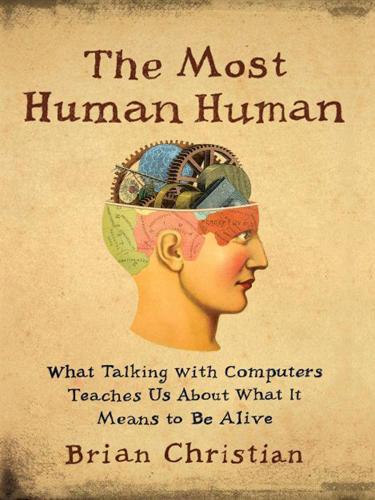
The Most Human Human: What Talking With Computers Teaches Us About What It Means to Be Alive
by
Brian Christian
Published 1 Mar 2011
Uh and Um When trying to break a model or approximation, it’s useful to know what is captured and not captured by that model. For instance, a good first start for someone trying to prove they’re playing a saxophone, and not a synthesizer made to sound like a saxophone, would be to play non-notes: breaths, key clicks, squawks. Maybe a good start for someone trying to break models of language is to use non-words: NYU philosopher of mind Ned Block, as a judge in 2005, made a point of asking questions like “What do you think of dlwkewolweo?” Any answer other than befuddlement (e.g., one bot’s “Why do you ask?”) was a dead giveaway. Another approach would be to use words that we use all the time, but that historically haven’t been considered words at all: for example, “um” and “uh.”
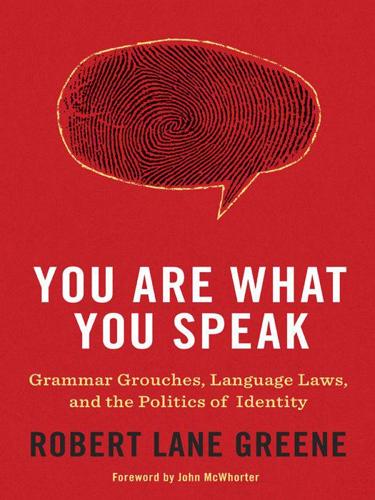
You Are What You Speak: Grammar Grouches, Language Laws, and the Politics of Identity
by
Robert Lane Greene
Published 8 Mar 2011
.: Lawrence Erlbaum Associates, 2006), pp. 48–49. 8 Another purist, an overzealous Czech: George Thomas, Linguistic Purism (London: Longmans, 1995), p. 87. 9 “Then late one night”: From Ben Yehuda’s autobiography A Dream Come True, quoted in George Mandel, “Resistance to the Study of Hebrew,” in Hebrew Study from Ezra to Ben-Yehuda (Edinburgh: Horbury, 1999), p. 296. 10 singing a Russian lullaby: Mark Abley, Spoken Here (Boston: Houghton Mifflin, 2003), p. 231. 11 the party’s sole language: Bernard Spolsky and Robert Cooper, The Languages of Jerusalem (Oxford, England: Clarendon, 1991), p. 59. 12 it now has a distinctive accent: Edward Ullendorff, “Hebrew in Mandatary Palestine,” in Mandel, Hebrew Study from Ezra to Ben-Yehuda, pp. 300–06. 13 The European backgrounds: Ibid., p. 303. 14 Israelis coin mongrel words: Joel M. Hoffman, In The Beginning: A Short History of the Hebrew Language (New York: NYU Press, 2004), p. 201. 15 “Ben Yehuda would be dismayed”: Ilan Stavans, Resurrecting Hebrew (New York: Nextbooks, 2009), p. 96. 16 “Modern oddities”: Ullendorff, “Hebrew in Mandatary Palestine.” 17 demoting Arabic: Forward, June 12, 2008. 18 Franco was a centralizer: Vincent de Melchor Muñoz, El catalán: una lengua de Europa para compartir (Barcelona: Universitat Autònoma de Barcelona, 2002), pp. 157–69. 19 “Hind[ustani] is that language”: Robert D.

Station Eleven
by
Emily St. John Mandel
Published 8 Sep 2014
He’d been spending more time in the past lately. He liked to close his eyes and let his memories overtake him. A life, remembered, is a series of photographs and disconnected short films: the school play when he was nine, his father beaming in the front row; clubbing with Arthur in Toronto, under whirling lights; a lecture hall at NYU. An executive, a client, running his hands through his hair as he talked about his terrible boss. A procession of lovers, remembered in details: a set of dark blue sheets, a perfect cup of tea, a pair of sunglasses, a smile. The Brazilian pepper tree in a friend’s backyard in Silver Lake. A bouquet of tiger lilies on a desk.

Free culture: how big media uses technology and the law to lock down culture and control creativity
by
Lawrence Lessig
Published 15 Nov 2004
The idea goes something like this: Creative work has value; whenever I use, or take, or build upon the creative work of others, I am taking from them something of value. Whenever I take something of value from someone else, I should have their permission. The taking of something of value from someone else without permission is wrong. It is a form of piracy. This view runs deep within the current debates. It is what NYU law professor Rochelle Dreyfuss criticizes as the "if value, then right" theory of creative property[16] —if there is value, then someone must have a right to that value. It is the perspective that led a composers' rights organization, ASCAP, to sue the Girl Scouts for failing to pay for the songs that girls sang around Girl Scout campfires.[17] There was "value" (the songs) so there must have been a "right"—even against the Girl Scouts.
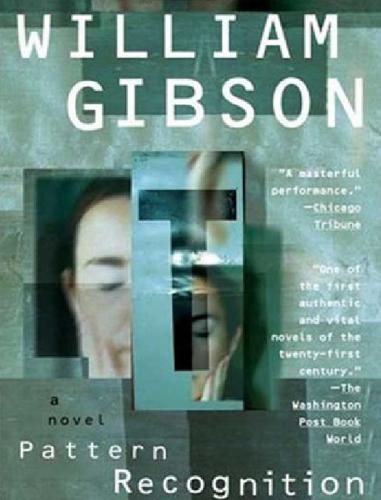
Pattern Recognition
by
William Gibson
Published 2 Jan 2003
She's long kept track of certain obscure mirror-world pop figures, not because they interest her in themselves but because their careers can be so compressed, so eerily quantum-brief, like particles whose existence can only be proven, after the fact, by streaks detected on specially sensitized plates at the bottom of disused salt mines. Billy Prion's streak is by reason of his having deliberately had the left side of his mouth paralyzed with Botox for the first BSE gigs, and because, when Margot was taking her NYU extension course in disease-as-metaphor, Cayce had suggested she do something with his mouth. Mar-got, struggling to outline a paper in which Bigend was the disease she needed to find a metaphor for, hadn't been interested. Having automatically registered Prion media hits ever since, she knows that BSE had broken up, and that he'd been briefly rumored to be romantically involved with that Finnish girl, the one whose band had been called Velcro Kitty until the trademark lawyers arrived.
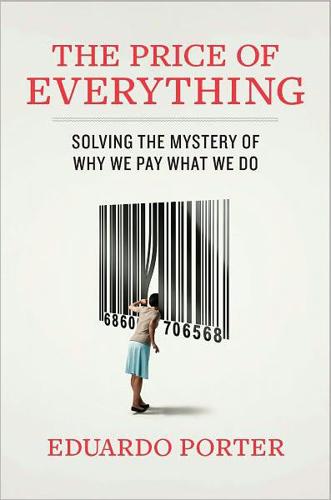
The Price of Everything: And the Hidden Logic of Value
by
Eduardo Porter
Published 4 Jan 2011
Data on corporate pay is drawn from Thomas Piketty and Emmanuel Saez, “Income Inequality in the United States, 1913-1998,” Quarterly Journal of Economics, Vol. 118, 2003, pp. 1-39, updated tables and figures (at elsa.berkeley.edu/~saez/TabFig2010.xls, accessed 07/18/2010); Carola Frydman and Raven Saks, “Executive Compensation: A New View from a Long-Term Perspective, 1936-2005,” NBER Working Paper, June 2008, Table 3; and Xavier Gabaix and Augustin Landier, “Why Has CEO Pay Increased so Much?,” NYU Working Paper, 2006. Sherwin Rosen’s analysis is in Sherwin Rosen, “The Economics of Superstars,” American Economic Review, Vol. 71, No. 5, December 1981, pp. 845-858. The analysis of the fast growth of earnings at the top in pop music, Hollywood, and soccer draws from Alan Krueger, “The Economics of Real Superstars: The Market for Rock Concerts in the Material World,” Journal of Labor Economics, Vol. 23, January 2005, pp. 1-30; the IMDB database (at www.imdb.com/name/nm0000129/bio and http://www.imdb.com/title/tt0120755/, accessed 07/18/2010); Edward Jay Epstein, “Tom Cruise Inc.: The Numbers Behind His Celebrity,” Slate, June 27, 2005; Claudia Eller, “Tom Cruise Sees Box Office Share Scaled Back,” Los Angeles Times, February 17, 2010; Matthew Saltmarsh, “European Soccer Revenue Climbs, but So Do Salaries,” New York Times, June 8, 2010; Garry Jenkins, The Beautiful Team (New York: Simon & Schuster, 2006); Futebolfinance.com; Christina Settimi, “Soccer’s Highest Earners,” Forbes.com, April 21, 2010; and Fédération Internationale de Football Association (www.fifa.com/aboutfifa/marketing/factsfigures/tvdata.html).
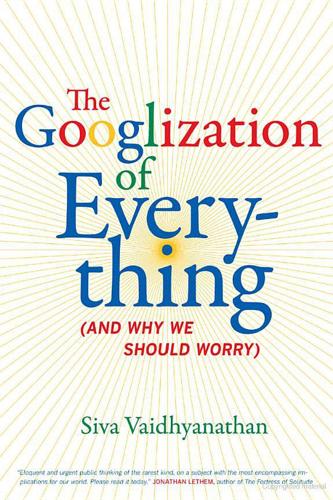
The Googlization of Everything:
by
Siva Vaidhyanathan
Published 1 Jan 2010
For an argument that Google’s library project cannot help but promote book sales, see Cory Doctorow, “Why Publishing Should Send Fruit-Baskets to Google,” post on BoingBoing, February 14, 2006, www.boingboing.net. For questions and doubts about the quality and effectiveness of Google’s book search service in general, see Siva Vaidhyanathan, “The Great Unanswered Question: Can Google Do It Right?” www.nyu.edu/classes/siva/archives/002811.html (February 20, 2006). 19. See, for example, Lexmark International, Inc. v. Static Control Components, Inc., 387 F.3d 522 (6th Cir. 2004); Chamberlain Group, Inc. v. Skylink Techs, Inc., 292 F. Supp. 2d 1040 (N.D. Ill. 2003). 20. Copyright Act, 17 U.S.C. § 106 (2006). 21.
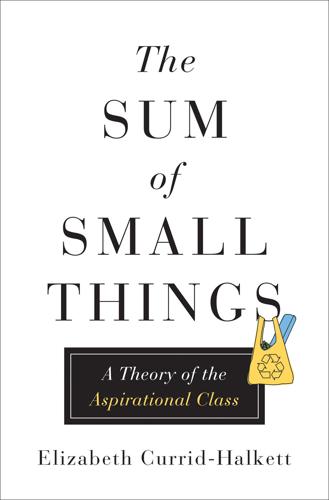
The Sum of Small Things: A Theory of the Aspirational Class
by
Elizabeth Currid-Halkett
Published 14 May 2017
In reality, however, most of these students were as entitled as previous elites and their social behaviors were reflective of this. The belief in hard work becomes what Khan calls “a rhetorical cover” to mask what is actually privilege. “It is those students from advantaged backgrounds,” Khan writes with NYU sociologist Colin Jerolmack, “who are most likely to succeed because throughout their lives, before even crossing the threshold of these spaces, they have developed the dispositions and cultural capital that give them an advantage over others. They feel at home within the institutions that reward them for exactly the type of behavior that is ‘native’ to them.”7 To borrow an example from the sociologist Douglas Holt, the act of attending the opera is not the cultural capital, but rather the combination of the knowledge of when the performances are scheduled and where to buy the tickets, the appreciation of the music, the ability to reference the performance in discussion of other topics, and having people to share the experience with—and finally, the understanding that going to the opera is a valuable use of time.8 Similarly, many of the observations made by New York Times columnist Paul Krugman could just as easily be made by simply thinking about massive inequality, unemployment, and the Great Recession’s aftermath.
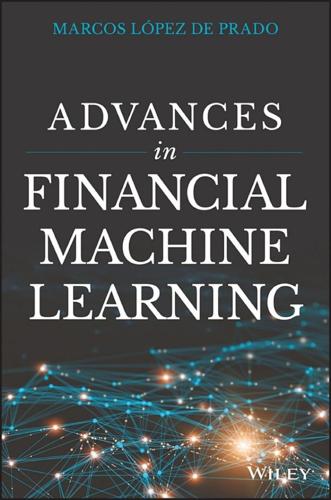
Advances in Financial Machine Learning
by
Marcos Lopez de Prado
Published 2 Feb 2018
The book blends the latest technological developments in ML with critical life lessons learned from the author's decades of financial experience in leading academic and industrial institutions. I highly recommend this exciting book to both prospective students of financial ML and the professors and supervisors who teach and guide them.” Prof. Peter Carr, Chair of the Finance and Risk Engineering Department, NYU Tandon School of Engineering “Marcos is a visionary who works tirelessly to advance the finance field. His writing is comprehensive and masterfully connects the theory to the application. It is not often you find a book that can cross that divide. This book is an essential read for both practitioners and technologists working on solutions for the investment community.”
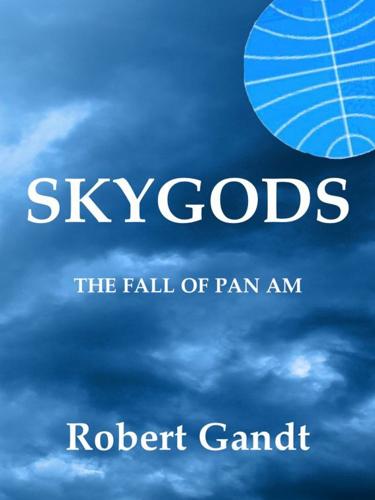
Skygods: The Fall of Pan Am
by
Robert Gandt
Published 1 Mar 1995
Then one day Trippe came up with a new assignment. “Would you mind going down to Washington to see about something?” Washington? Halaby knew what that meant. Lobbying. Now he was supposed to wield his “influence” with LBJ and the Democrats. So that was the reason he had been hired. Chapter Seven New Hires New hire /’n(y)u ‘hir/ n 1 : bottom stratum of aeronautical hierarchy 2 : lowest form of human life (in a cockpit) The ship sails into the void of space. On the sound track you hear Strauss’s Blue Danube. Stars glitter in the background like jewels on black velvet. The interior of the vessel has typical passenger accommodations—safety harnesses and handrails and a zero-gravity lavatory.
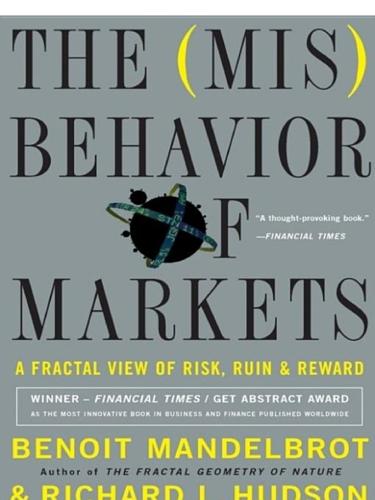
The Misbehavior of Markets: A Fractal View of Financial Turbulence
by
Benoit Mandelbrot
and
Richard L. Hudson
Published 7 Mar 2006
Paris: Organization for Economic Cooperation and Development. Bachelier, Louis. 1900. Théorie de la Spéculation. Doctoral dissertation. Annales Scientifiques de l’École Normale Supérieure (iii) 17, 21-86. Translation: Cootner, 1964. Bakshi, Gurdip and Dilip Madan. 1998. What is the probability of a stock market crash? NYU Conference on Finance and Accounting. Baillie, Richard T. 1996. Long memory processes and fractional integration in econometrics. Journal of Econometrics 73: 5-59. Baillie, Richard T. and Maxwell L. King. 1996. Editors’ introduction: Fractional differencing and long memory processes. Journal of Econometrics 73: 1-3.
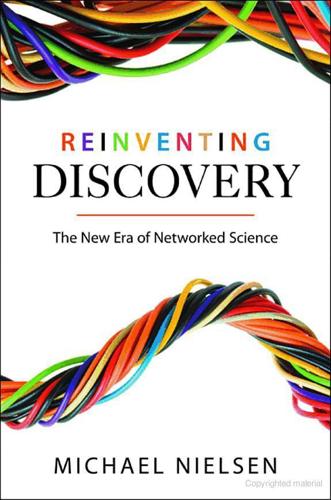
Reinventing Discovery: The New Era of Networked Science
by
Michael Nielsen
Published 2 Oct 2011
Influenza fact sheet number 211, March 2003. http://www.who.int/mediacentre/factsheets/2003/fs211/en/. [245] Lynn Wu and Erik Brynjolfsson. The future of prediction: How Google searches foreshadow housing prices and sales. Presented at the 2009 Workshop on Information Systems and Economics (WISE 2009), 2009. http://pages.stern.nyu.edu/~bakos/wise/papers/wise2009-3b3_paper.pdf. [246] Shirley Wu. Envisioning the scientific community as One Big Lab. One Big Lab (blog), April 14, 2008. http://onebiglab.blogspot.com/2008/04/envisioning-scientific-community-as-one.html. [247] Donald G. York et al. The Sloan digital sky survey: Technical summary.

Bold: How to Go Big, Create Wealth and Impact the World
by
Peter H. Diamandis
and
Steven Kotler
Published 3 Feb 2015
On top of that, we had countless partnership proposals for almost every major component maker—from batteries to blenders to speakers. Even potential distributors got in touch.” CHAPTER NINE BUILDING COMMUNITIES * * * Reputation Economics “The trillions of hours of free time the population of the planet has to spend doing the things they care about” is how NYU professor Clay Shirky defines the term cognitive surplus.1 The entire third part of this book has been spent exploring strategies for tapping this surplus, but we’ve come to one of the most important lessons: how to build a community that you can tap into, work with, and use to accomplish the big and bold.
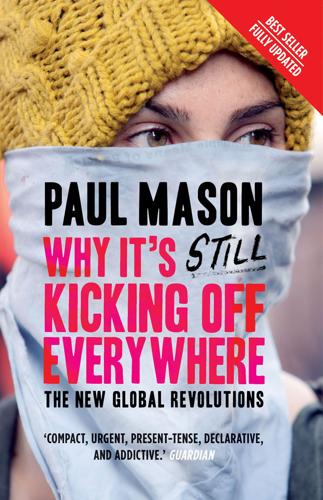
Why It's Still Kicking Off Everywhere: The New Global Revolutions
by
Paul Mason
Published 30 Sep 2013
The previous year PASOK’s finance minister, George Papaconstantinou, had told me: ‘the country is essentially corrupt. We went to the upmarket district of Kolonaki and found doctors and dentists with a claimed annual income of €30,000, driving cars worth €30,000 alone.’ Papaconstantinou, educated at the LSE and NYU, seemed like the right man to implement the solution: accepting a bailout from the European Union on harsh terms, forcing through tax reforms and cuts to public sector pay, but protecting services for the needy and protecting the jobs of state employees, most of whom traditionally vote PASOK. The problem was the EU’s politicians: trapped in a time warp of their own creation, they would spend an astonishing eighteen months struggling to comprehend the scale of the crisis.
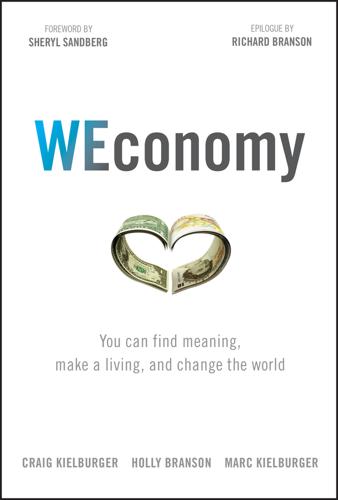
WEconomy: You Can Find Meaning, Make a Living, and Change the World
by
Craig Kielburger
,
Holly Branson
,
Marc Kielburger
,
Sir Richard Branson
and
Sheryl Sandberg
Published 7 Mar 2018
Edelman, goodpurpose 2012: Executive Summary, p. 2, http://www.scribd.com/doc/90411623/Executive-Summary-2012-Edelman-goodpurpose%C2%AE-Study. 5. Tully, Stephanie M., and Russell S. Winer. “Are People Willing to Pay More for Socially Responsible Products: A Meta-Analysis,” Stern School of Business, New York University, August 2013, p. 17, http://web-docs.stern.nyu.edu/pa/winer_tully.pdf. 6. Ibid., p. 16. 7. Mission Measurement, December 2015. Building the Business Case for Corporate Partnerships. Unpublished internal document. ME TO WE. 8. Edelman, p. 3. 9. “Unilever Named as an Industry Leader in Dow Jones Sustainability Index.” Unilever.com. September 8, 2016.

Messing With the Enemy: Surviving in a Social Media World of Hackers, Terrorists, Russians, and Fake News
by
Clint Watts
Published 28 May 2018
A copy of Sheikh Hassan Aweys’s Kenya visa application can be found here: https://ctc.usma.edu/app/uploads/2013/10/Hassan-Aweys-Kenya-Visa-Application-Translation.pdf. 22. James R. Hollyer, B. Peter Rosendorff and James Raymond Vreeland, “Democracy and Transparency,” The Journal of Politics, vol. 73, No. 4 (Oct. 21, 2011), 1191–1205. https://wp.nyu.edu/faculty-rosendorff/wp-content/uploads/sites/1510/2015/03/HRVJOP.pdf. 23. Eric Schmitt, “C.I.A. Warning on Snowden in ’09 Said to Slip Through the Cracks,” The New York Times (October 10, 2013). http://www.ny times.com/2013/10/11/us/cia-warning-on-snowden-in-09-said-to-slip-through-the-cracks.html. 24.
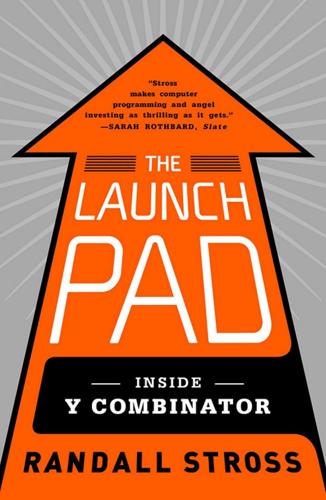
The Launch Pad: Inside Y Combinator, Silicon Valley's Most Exclusive School for Startups
by
Randall Stross
Published 4 Sep 2013
The number of schools that Shah wants to add—twelve—is more settled than the selection of which ones. He addresses Altman: “One of the things I wanted to ask you was, do you think it’s better to go ahead and do kind of a national rollout in the fall? Or do you think it’s better to do geographically located launches? For New York, for example, doing NYU and Columbia together. In Boston, Harvard, MIT, Boston University, and Northeastern all together?” “How important was it to you when you launched your initial schools that they were in the same areas?” “Not very,” Shah and Pellow say simultaneously. Campbell is the one who had to sign up the merchants, however, and he does not answer.
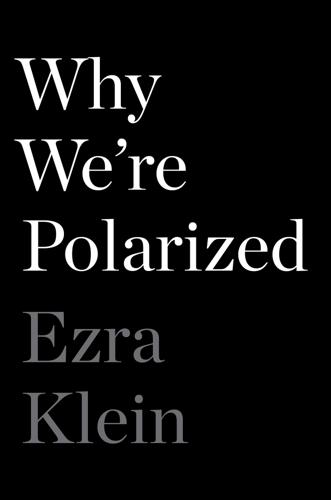
Why We're Polarized
by
Ezra Klein
Published 28 Jan 2020
Cass Sunstein, “Antonin Scalia, Living Constitutionalist,” Harvard Public Law Working Paper No. 16-15, Harvard Law Review, dx.doi.org/10.2139/ssrn.2759938. 3 Antonin Scalia, “In Conversation: Antonin Scalia,” interview by Jennifer Senior, New York, October 4, 2013, nymag.com/news/features/antonin-scalia-2013-10. 4 Thomas Ferraro, “Republican Would Back Garland for Supreme Court,” Reuters, May 6, 2010, reuters.com/article/us-usa-courthatch/republican-would-back-garland-for-supreme-court-idUSTRE6456QY20100506. 5 Robin Bradley Kar and Jason Mazzone, “The Garland Affair: What History and the Constitution Really Say About President Obama’s Powers to Appoint a Replacement for Justice Scalia,” NYU Law Review 91 (2016): nyulawreview.org/online-features/the-garland-affair-what-history-and-the-constitution-really-say-about-president-obamas-powers-to-appoint-a-replacement-for-justice-scalia. 6 Mike DeBonis, “Will Hillary Clinton Stick with Merrick Garland If She Wins the White House?” Washington Post, August 16, 2016, washingtonpost.com/news/powerpost/wp/2016/08/16/the-forgotten-nominee-merrick-garlands-fate-rests-on-forces-beyond-his-control/. 7 Jennifer Bendery, “Democrats, Still Bitter over How Their SCOTUS Pick Was Treated, Now Weigh Trump’s,” Huffpost, January 31, 2017, huffpost.com/entry/democrats-merrick-garland-supreme-court_n_58911e44e4b02772c4ea1f68. 8 Ted Barrett, “In Reversal from 2016, McConnell Says He Would Fill a Potential Supreme Court Vacancy in 2020,” CNN, May 20, 2019, cnn.com/2019/05/28/politics/mitch-mcconnell-supreme-court-2020/index.html. 9 Juan Linz, “The Perils of Presidentialism,” Journal of Democracy 1, no. 1 (Winter 1990): 51–69, scholar.harvard.edu/levitsky/files/1.1linz.pdf. 10 Ibid. 11 Matthew Yglesias, “American Democracy Is Doomed,” Vox, October 8, 2015, vox.com/2015/3/2/8120063/american-democracy-doomed. 12 Linz, “Perils of Presidentialism.” 13 Lee Epstein and Eric A.

The Knowledge Machine: How Irrationality Created Modern Science
by
Michael Strevens
Published 12 Oct 2020
,” Quartz, http://qz.com/627989/why-are-so-many-smart-people-such-idiots-about-philosophy/. 262 “Philosophers’ historic failure”: Dawkins’s tweet can be read at https://twitter.com/richarddawkins/status/433519270102708224. 263 “Would a leading North American journal”: Quotes are from Alan Sokal, “A Physicist Experiments with Cultural Studies,” originally published in the journal Lingua Franca. This article and many related resources can be found on Sokal’s website at https://physics.nyu.edu/faculty/sokal/. 263 “Tell most scientists about the ‘science wars’”: Gould, The Hedgehog, the Fox, and the Magister’s Pox, 101–2. 264 “So many scientists are narrow, foolish people”: Wilson, Consilience, 62; it is narrowness rather than foolishness that I emphasize here. For similar thoughts, see Consilience, 42, and Ziman, Real Science, 161. 264 “A good commander”: Tolstoy, War and Peace, 644. 264 It seems apt: Schally’s comparison is recorded by Latour and Woolgar, Laboratory Life, 130. 265 These thinkers: I hope I have not omitted any friends or important reviewers. 267 “Resolve to abide”: Lawrence, Studies in Classic American Literature, 27. 267 “To be nobody-but-yourself”: Cummings, “A Poet’s Advice to Students,” 13. 267 “In this ever-changing society”: Schultz and Yang, Pour Your Heart Into It, 248.
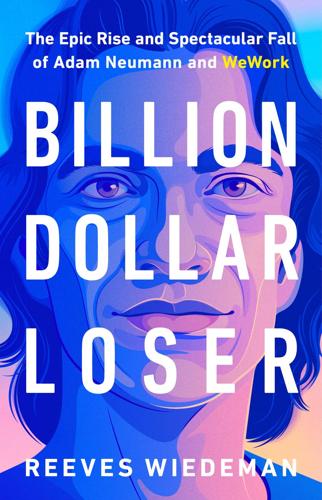
Billion Dollar Loser: The Epic Rise and Spectacular Fall of Adam Neumann and WeWork
by
Reeves Wiedeman
Published 19 Oct 2020
He was talking about the math behind valuations and how widely their underlying calculations could vary, depending on what numbers you put in. In this case, Gurley was defending an outsize valuation: Uber, another Benchmark company, had recently been valued at $17 billion. Gurley was critiquing an NYU professor who said that Uber’s valuation was inflated “by a factor of 25.” The professor’s analysis presumed that Uber’s total addressable market, or TAM, was the $100 billion taxi-and-limousine market. Gurley believed that Uber’s TAM was every single car on the road—a market theoretically worth $1.3 trillion.

Artificial Intelligence: A Guide for Thinking Humans
by
Melanie Mitchell
Published 14 Oct 2019
Ibid. 21. ARC Dataset Leaderboard, Allen Institute for Artificial Intelligence, accessed Dec. 17, 2018, leaderboard.allenai.org/arc/submissions/public. 22. All of the examples in this section are from E. Davis, L. Morgenstern, and C. Ortiz, “The Winograd Schema Challenge,” accessed Dec. 17, 2018, cs.nyu.edu/faculty/davise/papers/WS.html. 23. T. Winograd, Understanding Natural Language (New York: Academic Press, 1972). 24. H. J. Levesque, E. Davis, and L. Morgenstern, “The Winograd Schema Challenge,” in AAAI Spring Symposium: Logical Formalizations of Commonsense Reasoning (American Association for Artificial Intelligence, 2011), 47. 25.

Hype: How Scammers, Grifters, and Con Artists Are Taking Over the Internet―and Why We're Following
by
Gabrielle Bluestone
Published 5 Apr 2021
Magnises’s paying cardholders, on the other hand, were not celebrities, despite what he and his partners claimed. They were the people who couldn’t afford the lifestyle but wanted to look like they did—an early prototype for the Fyre audience. “[We like] smart people from great schools, so they have the family background and education,” said Emir Bahadir, then twenty-one years old, an NYU student, and an adviser to Magnises.84 The offspring of a wealthy real-estate family in Turkey, Bahadir is perhaps better known for his Instagram page, where he routinely poses in photographs modeling his designer wardrobe and traveling around the world aboard yachts, helicopters, and private jets for his 1.3 million followers.
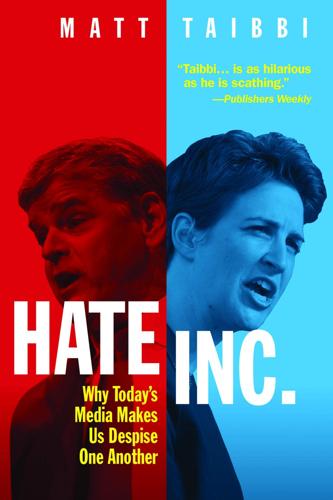
Hate Inc.: Why Today’s Media Makes Us Despise One Another
by
Matt Taibbi
Published 7 Oct 2019
They’re in the sell-ads-to-aging-anger-junkies-while-propagating-their-owner’sright-wing-ideas business. The only reason not to point this out is that it might make audiences wonder about the business model of other TV stations. Still, the Why Do They Hate Us? question began to close once high-profile press critics like Jay Rosen of NYU started talking about a Trump-led “hate movement against journalists.” The president’s decision to escalate anti-press sentiment to the point of calling us “enemies of the people” has flipped the script. Where Trump once rode to electoral victory by appealing to existing anti-press sentiment, and by mocking campaign coverage conventions that had been decades in the making, he is now described as the head of a top-down hate movement.
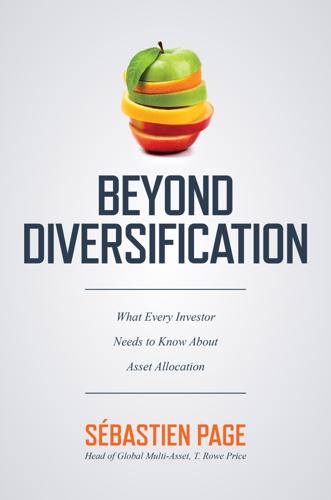
Beyond Diversification: What Every Investor Needs to Know About Asset Allocation
by
Sebastien Page
Published 4 Nov 2020
It represents an authoritative survey of a broad range of recent research on related topics of asset allocation, risk measurement, and return forecasting, with an emphasis on its practical application in asset management. It is thoughtful, well written, and surprisingly entertaining. The author is a thought leader in this area, and his book is a very important contribution. —Stephen Brown Professor Emeritus of Finance, Department of Banking and Finance, NYU Stern School of Business; Executive Editor Financial Analysts Journal Sébastien Page has masterfully woven threads from academia and practice, combining insights from rigorous research and high-bandwidth anecdotes, to provide an amazingly entertaining and informative tapestry of state of the art asset-allocation techniques.
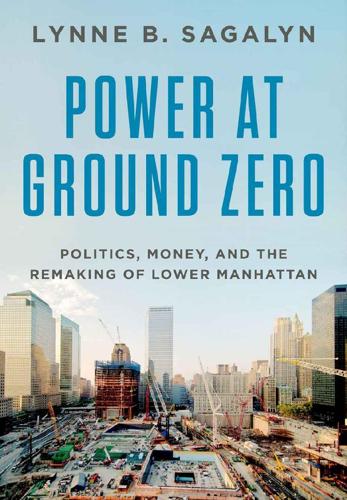
Power at Ground Zero: Politics, Money, and the Remaking of Lower Manhattan
by
Lynne B. Sagalyn
Published 8 Sep 2016
He served as a governor of the industry’s powerful lobbying organization, the Real Estate Board of New York (REBNY), and as its chairman from 1983 to 1985, and as a trustee of his alma mater, New York University. He inherited his father’s classical musical interests, plays the piano, and is a patron of the New York Philharmonic. Believing that real estate should be taught on a professional level, along with others he provided seed money and fundraising energy to help establish the NYU Real Estate Institute in 1967. Yet for all his wealth and his accomplishments, he was not a part of the real estate power elite that was rapidly reshaping the world of Manhattan real estate. Then he captured the brass ring of the World Trade Center complex. He would steadfastly hold on to his prize through continued controversy and conflict, harsh personal criticism, and persistent questions about his financial capacity to carry through with his pledge to rebuild all that had been destroyed.
…
Millstein, attorney (Weil, Gotshal & Manges LLP), pro bono counsel to the LMDC board of directors, and 9/11 Memorial Foundation board member. Jeffrey A. Moerdler, attorney (partner, Mintz, Levin, Cohn, Ferris, Glovsky and Popeo, PC), PANYNJ board commissioner appointed by Governor David Paterson (April 2010−June 2015). Mitchell Moss, urban planning professor (NYU), policy advisor to the Bloomberg administration. Cherrie Nanninga, director of real estate (1998–2002), PANYNJ; chief operating officer (July 2002−April 2014), CBRE TriState. Barry R. Ostrager, attorney (partner, Simpson Thacher & Bartlett LLP), lead counsel for Swiss Re in the WTC insurance battle.
…
Dunlap, “Blocks: How a Cultural Building Divides the Trade Center,” NYT, July 28, 2005; Topousis, “WTC Center’s Change Bids for Museum Peace.” 35 Burlingame: “Do we really want to entrust the meaning of Sept. 11 to a man who is calling our secretary of defense, in a time of war, dishonorable and dishonest?” Fisher, “Relatives Protest Plan for Museum at 9/11 Memorial Site”; “If you want to debate, go to Columbia or NYU. Don’t do it on the ashes of all these people,” Douglas Feiden, “Violated … Again’. Kin Slap Art Center’s 9–11 Pieces,” DN, June 21, 2005; “This kind of ploy [Pataki’s ultimatum] completely undermines our confidence in the governor’s ability to do the right thing, or even know what the right thing is,” Healy, “Pataki Warns Cultural Groups for Museum at Ground Zero”; “It is dishonest and despicable to use the 9/11 artifacts and 9/11 heroes as window dressing to mislead the public.
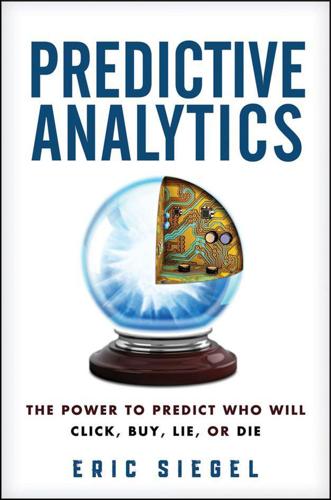
Predictive Analytics: The Power to Predict Who Will Click, Buy, Lie, or Die
by
Eric Siegel
Published 19 Feb 2013
Wolpert, “The Lack of a Priori Distinctions between Learning Algorithms,” Neural Computations 8, issue 7 (October 1, 1996): 1341–1390. http://dl.acm.org/citation.cfm?id=1362128. Early work in decision trees: James N. Morgan and John A Sonquist, “Problems in the Analysis of Survey Data, and a Proposal,” Journal of the American Statistical Association 58, issue 202 (June 1963): 415–434. www.cs.nyu.edu/~roweis/csc2515–2006/readings/morgan_sonquist63.pdf. Decision tree overlearning figures derived from Figure 3.6 of: Tom M. Mitchell, Machine Learning, Science/Engineering/Math (McGraw-Hill, 1997). Classification and regression trees: Leo Breiman, Jerome Friedman, Charles J. Stone, and R.
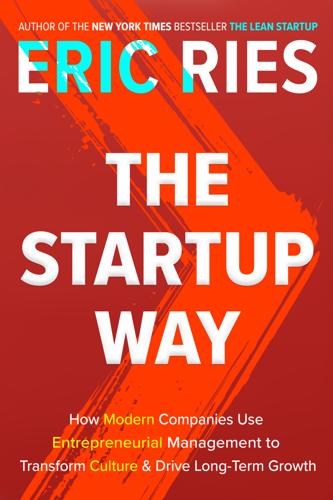
The Startup Way: Making Entrepreneurship a Fundamental Discipline of Every Enterprise
by
Eric Ries
Published 15 Mar 2017
As Blank explains it, “Our goal was to scale these classes across the country, giving students the opportunity to perform a national service by solving real defense and diplomacy problems using lean methods.” To date, twenty-three additional colleges and universities plan to offer the class. It’s also inspired other courses, such as “Hacking for Diplomacy” at Stanford; and “Hacking for Energy” at Columbia, NYU, and City University of New York, which focuses on innovating in the energy industry.11 Blank is also the founder of a government education program called I-Corps, at the National Science Foundation, which has brought Lean Startup practices to researchers to teach them how to turn their discoveries into businesses.
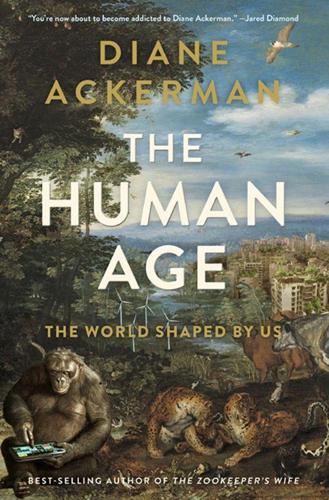
The Human Age: The World Shaped by Us
by
Diane Ackerman
Published 9 Sep 2014
Stanford’s Anatomage (formerly known as the Virtual Dissection Table) offers corpses that can be nimbly dissected from many viewpoints, plus ultrasound, X-ray and MRI. At New York University, medical students can don 3D glasses and explore virtual cadavers stereoscopically, as if swooping along Tokyo’s neon-cliffed streets on Google Maps. The appeal is easy to understand. As one twenty-one-year-old female NYU student explains, “In a cadaver, if you remove an organ, you cannot add it back in as if it were never removed. Plus, this is way more fun than a textbook.” Exploring virtual cadavers offers constant change, drama, progress. It’s more interactive, more lively, akin to a realistic video game instead of a static corpse that just lies there.

Rise of the Robots: Technology and the Threat of a Jobless Future
by
Martin Ford
Published 4 May 2015
In an October 2013 blog post, Yann LeCun, the director of Facebook’s newly created AI research lab in New York City, warned that “AI ‘died’ about four times in five decades because of hype: people made wild claims (often to impress potential investors or funding agencies) and could not deliver. Backlash ensued.”3 Likewise, NYU professor Gary Marcus, an expert in cognitive science and a blogger for the New Yorker, has argued that recent breakthroughs in areas like deep learning neural networks, and even some of the capabilities attributed to IBM Watson, have been significantly over-hyped.4 Still, it seems clear that the field has now acquired enormous momentum.

Remix: Making Art and Commerce Thrive in the Hybrid Economy
by
Lawrence Lessig
Published 2 Jan 2009
., 15. 80706 i-xxiv 001-328 r4nk.indd 305 8/12/08 1:56:22 AM 306 NO T E S 8. I’ve enumerated some errors on my blog. See Lawrence Lessig, “Keen’s ‘The Cult of the Amateur’: BRILLIANT!” Lessig Blog, available at link #39. 9. Keen, The Cult of the Amateur, 27. 10. New York Institute for the Humanities and NYU Humanities Council, “The Comedies of Fair U$e,” Internet Archive, available at link #40 (last visited July 30, 2007); Joy Garnett, “Full Program Audio on Archive.org,” Comedies of Fair U$e, available at link #41 (last visited July 30, 2007). 11. Steven Johnson, Everything Bad Is Good for You: How Today’s Popular Culture Is Actually Making Us Smarter (New York: Riverhead, 2005). 12.
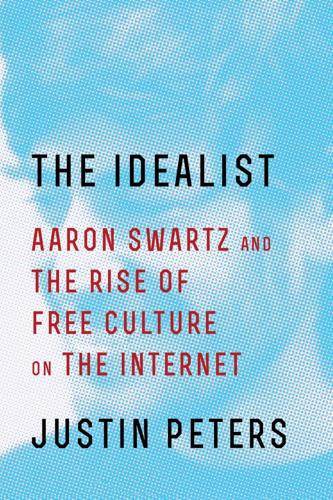
The Idealist: Aaron Swartz and the Rise of Free Culture on the Internet
by
Justin Peters
Published 11 Feb 2013
Cambridge, MA: Technology Press, 1920. Mathews, Cornelius. The Various Writings of Cornelius Mathews. New York: Harper and Brothers, 1843. McGrane, Reginald Charles. The Panic of 1837. Chicago: University of Chicago Press, 1924. McLeod, Kembrew. Pranksters: Making Mischief in the Modern World. New York: NYU Press, 2014. McSherry, Corynne. Who Owns Academic Work? Battling for Control of Intellectual Property. Cambridge, MA: Harvard University Press, 2001. Merton, Robert K. The Sociology of Science: Theoretical and Empirical Investigations. Edited by Norman W. Storer. Chicago: University of Chicago Press, 1973.
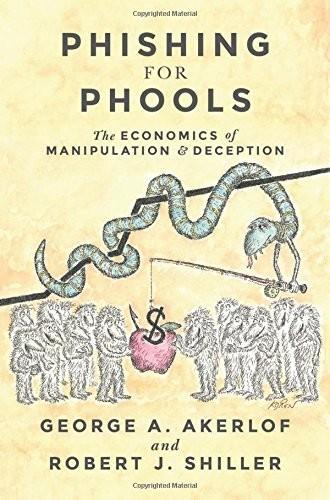
Phishing for Phools: The Economics of Manipulation and Deception
by
George A. Akerlof
,
Robert J. Shiller
and
Stanley B Resor Professor Of Economics Robert J Shiller
Published 21 Sep 2015
Similarly, it might be a mistake to stuff one’s portfolio with Drexel Burnham Lambert new issues because Braddock Hickman, and later observers, had given high marks to fallen angels. Milken was then faced with the following nightmare. If it were noticed that newly issued junk and fallen angels were different, that could undo his whole enterprise. The statistics available masked this in one way. NYU finance professor Edward Altman and his former student Scott Nammacher had found average default rates of 1.5 percent.21 This figure is misleading since junk bonds have higher default rates as they age, and the market was growing very rapidly. Taking a simple average, like this, of default rates, was thus like inferring mortality rates from a population with one grandfather and one hundred 10-year-olds.
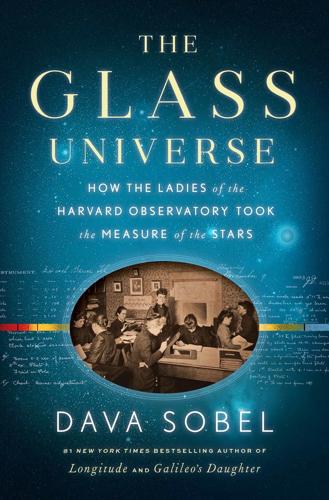
The Glass Universe: How the Ladies of the Harvard Observatory Took the Measure of the Stars
by
Dava Sobel
Published 6 Dec 2016
Although the photographic process reduced the rainbow hues to black and white, the images preserved telltale patterns of lines within each spectrum—lines that hinted at the stars’ constituent elements. In after-dinner conversation at the November gala, Pickering had offered to help decipher the spectral patterns by measuring them with specialized equipment at Harvard. The doctor had declined, confident that his new freedom from teaching at NYU would allow him time to build his own measuring apparatus. But now all that had changed, and so Pickering repeated the offer to Mrs. Draper. “I should be greatly pleased if I might do something in memory of a friend whose talents I always admired,” he wrote. “Whatever may be your final arrangements regarding the great work you have undertaken,” Pickering said in closing, “pray recollect that if I can in any way advise or aid you, I shall be doing but little to repay Dr.
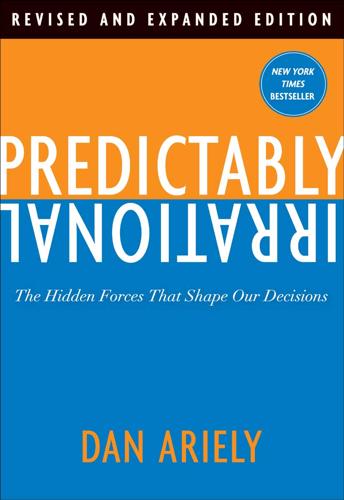
Predictably Irrational, Revised and Expanded Edition: The Hidden Forces That Shape Our Decisions
by
Dan Ariely
Published 19 Feb 2007
Sure enough, the participants in the experimental group were affected by the “elderly” words: their walking speed was considerably slower than that of a control group who had not been primed. And remember, the primed participants were not themselves elderly people being reminded of their frailty—they were undergraduate students at NYU. ALL THESE EXPERIMENTS teach us that expectations are more than the mere anticipation of a boost from a fizzy Coke. Expectations enable us to make sense of a conversation in a noisy room, despite the loss of a word here and there, and likewise, to be able to read text messages on our cell phones, despite the fact that some of the words are scrambled.

We Are All Fast-Food Workers Now: The Global Uprising Against Poverty Wages
by
Annelise Orleck
Published 27 Feb 2018
Graduate student Keegan Shepard points out that up to half of academic and research work at universities is performed “for free by graduate students.” The university dresses it up as part of their education, insisting that graduate student workers are therefore not entitled to labor protections. Though public universities are strapped in an age of state and federal budget cuts, wealthy private universities take the same tack. Yale and NYU, to name two, challenged a 2016 National Labor Relations Board ruling that graduate students have the right to organize. American higher education would come crashing to a halt without unpaid labor by graduate students, says Shepard. It’s wage theft, he says. Plain and simple. “They try to fool us, to make us believe we’re special because we have advanced degrees.

Lonely Planet's Best of USA
by
Lonely Planet
Joe’s Pub Live Music Map Google Map Part cabaret theater, part rock and new-indie venue, this small and lovely supper club hosts a wonderful variety of styles, voices and talent. (Map; %212-539-8500, tickets 212-967-7555; www.joespub.com; Public Theater, 425 Lafayette St, btwn Astor Pl & 4th St; b6 to Astor Pl, R/W to 8th St-NYU) Rockwood Music Hall Live Music Map Google Map This breadbox-sized concert space features a rapid-fire flow of bands and singer/songwriters on three different stages. Many shows are free. (Map; %212-477-4155; www.rockwoodmusichall.com; 196 Allen St, btwn Houston & Stanton Sts; h6pm-2am Mon-Fri, from 3pm Sat & Sun; bF/V to Lower East Side-Second Ave) Le Poisson Rouge Live Music Map Google Map This basement club is one of the premier venues for experimental contemporary, from classical to indie rock to electro-acoustic.
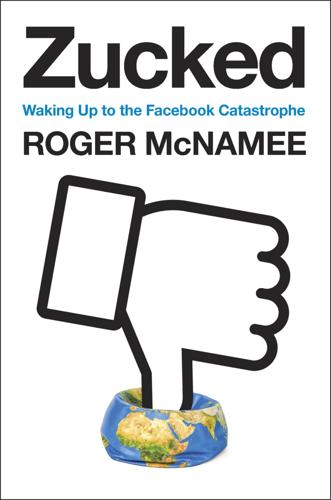
Zucked: Waking Up to the Facebook Catastrophe
by
Roger McNamee
Published 1 Jan 2019
Libertarianism remains fashionable in Silicon Valley, though not everyone has embraced Thiel’s version of it. The Four: The Hidden DNA of Amazon, Apple, Facebook, and Google, by Scott Galloway (New York: Portfolio, 2017), is an unusually insightful business book. The former entrepreneur and current professor at the NYU Stern School of Business combines a deep understanding of economics and business with trenchant analyses of management and strategy. There is more to the tech industry today than internet platforms. Companies founded before 1990 have fundamentally different cultures. The CEO of Microsoft, Satya Nadella, wrote about this vision for a better tech industry in Hit Refresh: The Quest to Rediscover Microsoft’s Soul and Imagine a Better Future for Everyone (New York: HarperBusiness, 2017).

The Deep Learning Revolution (The MIT Press)
by
Terrence J. Sejnowski
Published 27 Sep 2018
Yann LeCun, “Modèles connexionistes de l’apprentissage” (Connectionist learning models) (Ph.D. diss., Université Pierre et Marie Curie, Paris, 1987). 11. Krizhevsky, Sutskever, and Hinton, “ImageNet Classification with Deep Convolutional Neural Networks.” Notes 303 12. M. D. Zeiler and R. Fergus, “Visualizing and Understanding Convolutional Networks,” 2013. https://www.cs.nyu.edu/~fergus/papers/zeilerECCV2014.pdf. 13. Patricia Smith Churchland, Neurophilosophy: Toward a Unified Science of the Mind-Brain (Cambridge, MA: MIT Press, 1989). 14. Patricia Smith Churchland and Terrence J. Sejnowski, The Computational Brain, 2nd ed. (Cambridge, MA: MIT Press 2016). 15. D. L. Yamins and J.
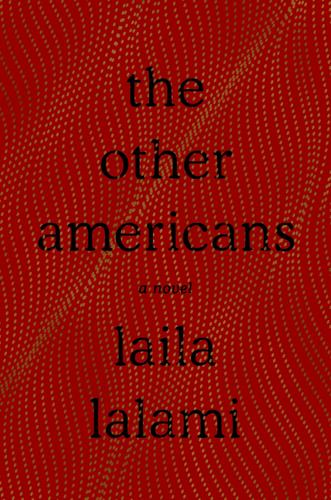
The Other Americans
by
Laila Lalami
Published 26 Mar 2019
An image came back to me now, blurry and yet also solid, of Jeremy Gorecki standing at the cash register in a white polo shirt and red apron, waiting to ring up our orders. I felt the heat rising to my cheeks and was conscious of him noticing it. For a moment, I was quiet, thinking about those long-gone days. Whatever happened to Sonya? She had gotten into NYU and sent enthusiastic emails for the first few weeks, but I hadn’t heard from her in years. I’d have to look her up someday. “I remember one time you and Sonya got into such a giggling fit you knocked down the spoon rack. The whole place was a mess.” “For the record, Officer, it was the cup display, and we got kicked out for that.”
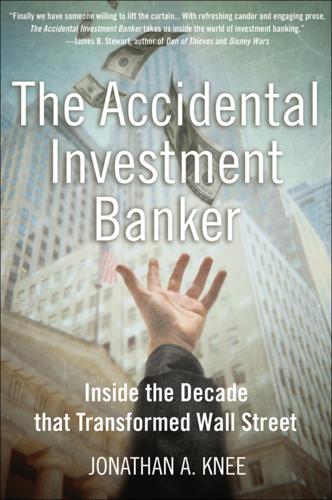
The Accidental Investment Banker: Inside the Decade That Transformed Wall Street
by
Jonathan A. Knee
Published 31 Jul 2006
During a group outing, a drunken Kitts took offense at something a young male analyst said and lunged at him. During the struggle that ensued Kitts bit the analyst’s ear. Once separated, Kitts left abruptly only to return later in a cab to pick up a young woman in the group with whom he was having an affair. The woman, Elena Drill, a statuesque Russian blonde, had graduated with honors from NYU but had not been admitted to the regular analyst program. Drill spoke with a thick accent, had been a model in her native country, and seemed more than a little out of place in the analyst bullpen. Kitts had nonetheless hired her as an “administrative assistant” in the group. Within days everyone on Wall Street had heard about Morgan Stanley’s “Hannibal Lecter” (or sometimes “Mike Tyson”).3 In a different era I have no doubt that a Morgan Stanley or a Goldman Sachs would have fired Bob Kitts, no questions asked.
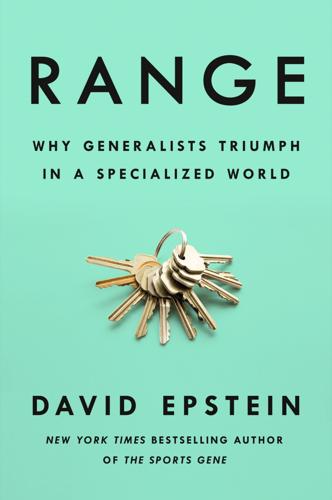
Range: Why Generalists Triumph in a Specialized World
by
David Epstein
Published 1 Mar 2019
The latest video game challenge for artificial intelligence is StarCraft, a franchise of real-time strategy games in which fictional species go to war for supremacy in some distant reach of the Milky Way. It requires much more complex decision making than chess. There are battles to manage, infrastructure to plan, spying to do, geography to explore, and resources to collect, all of which inform one another. Computers struggled to win at StarCraft, Julian Togelius, an NYU professor who studies gaming AI, told me in 2017. Even when they did beat humans in individual games, human players adjusted with “long-term adaptive strategy” and started winning. “There are so many layers of thinking,” he said. “We humans sort of suck at all of them individually, but we have some kind of very approximate idea about each of them and can combine them and be somewhat adaptive.
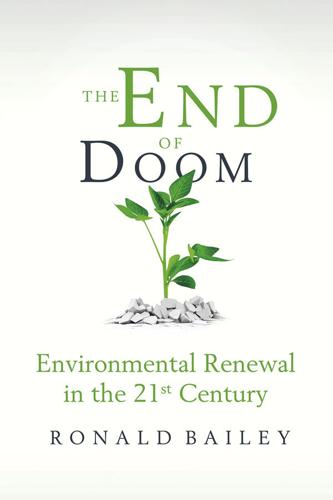
The End of Doom: Environmental Renewal in the Twenty-First Century
by
Ronald Bailey
Published 20 Jul 2015
Instead, they ask: “Is it realistic to predict that knowledge accumulation is so powerful as to outweigh the physical limits of physical capital services and the limited substitution possibilities for natural resources?” In other words, can increasing scientific knowledge and technological innovation overcome the limitations to economic growth posed by the depletion of nonrenewable resources? And, according to Paul Romer, an economist and founding director of the NYU Stern Urbanization Project, the answer is yes. Romer has observed, “Every generation has perceived the limits to growth that finite resources and undesirable side effects would pose if no new recipes or ideas were discovered. And every generation has underestimated the potential for finding new recipes and ideas.
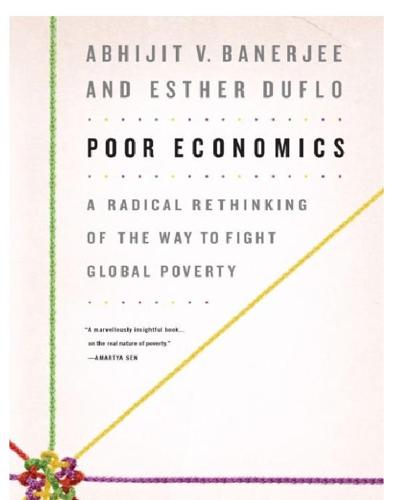
Poor Economics: A Radical Rethinking of the Way to Fight Global Poverty
by
Abhijit Banerjee
and
Esther Duflo
Published 25 Apr 2011
., p. 72. 17 William Easterly, “Trust the Development Experts—All 7 Billion,” Financial Times, May 28, 2008. 18 The White Man’s Burden, p. 73. 19 Marianne Bertrand, Simeon Djankov, Rema Hanna, and Sendhil Mullainathan, “Obtaining a Driving License in India: An Experimental Approach to Studying Corruption,” Quarterly Journal of Economics (November 2007): 1639–1676. 20 See his presentation on the subject, available at http://dri.fas.nyu.edu/object/withoutknowinghow.html. 21 Rohini Pande and Christopher Udry, “Institutions and Development: A View from Below,” Yale Economic Growth Center Discussion Paper 928 (2005). 22 Monica Martinez-Bravo, Gerard Padro-i-Miquel, Nancy Qian, and Yang Yao, “Accountability in an Authoritarian Regime: The Impact of Local Electoral Reforms in Rural China,” Yale University (2010), manuscript. 23 Benjamin Olken, “Monitoring Corruption: Evidence from a Field Experiment in Indonesia,” Journal of Political Economy 115 (2) (April 2007): 200–249. 24 Abhijit Banerjee, Esther Duflo, Daniel Keniston, and Nina Singh, “Making Police Reform Real: The Rajasthan Experiment,” draft paper, MIT (2010). 25 Thomas Fujiwara, “Voting Technology, Political Responsiveness, and Infant Health: Evidence from Brazil,” University of British Columbia, mimeo (2010). 26 World Bank, World Development Report 2004: Making Services Work for Poor People (2003). 27 Raghabendra Chattopadhyay and Esther Duflo, “Women as Policy Makers: Evidence from a Randomized Policy Experiment in India,” Econometrica 72 (5) (2004): 1409–1443. 28 Leonard Wantchekon, “Clientelism and Voting Behavior: Evidence from a Field Experiment in Benin,” World Politics 55 (3) (2003): 399–422. 29 Abhijit Banerjee and Rohini Pande, “Ethnic Preferences and Politician Corruption,” KSG Working Paper RWP07-031 (2007). 30 Nicholas Van de Walle, “Presidentialism and Clientelism in Africa’s Emerging Party Systems,” Journal of Modern African Studies 41 (2) (June 2003): 297–321. 31 Abhijit Banerjee, Donald Green, Jennifer Green, and Rohini Pande, “Can Voters Be Primed to Choose Better Legislators?
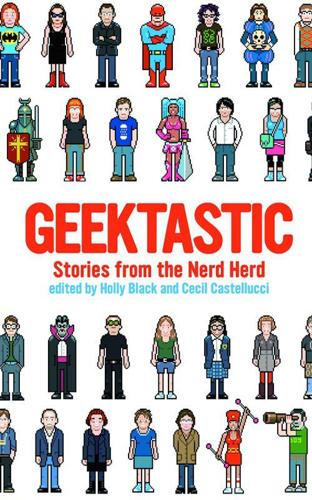
Geektastic: Stories From the Nerd Herd
by
Holly Black
and
Cecil Castellucci
Published 1 Aug 2009
I had been one of four Kahanamoku Academy valedictorians, the others include Samantha Tsui, a girl I had never heard speak until she gave a killer speech during graduation, Kai Risdale, whose family generously donated the new auditorium, and Danny Kaleho, my boyfriend. Danny earned a scholarship to NYU, and even though we both knew the time would come when we’d go our own ways, it still hurt. He left first. Danny was eager to get off the island and get on with the rest of his life. I, on the other hand, was reluctant to leave. “Felicity, you have to go,” my mother insisted. “I’m grounded here and so is Carl, but you can go places.

Smart Mobs: The Next Social Revolution
by
Howard Rheingold
Published 24 Dec 2011
Hughes, telephone interview by author. 81. GNU Radio, <http://www.gnu.org/software/gnuradio/gnuradio.html > (29 March 2002). 82. Lessig, interview by the author. 83. Yochai Benkler, “Overcoming Agoraphobia: Building the Commons of the Digitally Networked Environment,” Harvard Journal of Law and Technology 287, 1998, <http://www.law.nyu.edu/benklery/agoraphobia.pdf > (18 November 2001). 84. Kevin Werbach, “Open Spectrum: The Paradise of the Commons,” Release 1.0, 19, 10 (November 2001), <http://release1.edventure.com/abstracts.cfm?Counter=5423494 > (23 February 2002). 85. Quentin Hardy, “The Great Wi-Fi Hope,” Forbes, 18 March 2002, <http://www.forbes.com/forbes/2002/0318/056.html > (29 March 2002). 86.
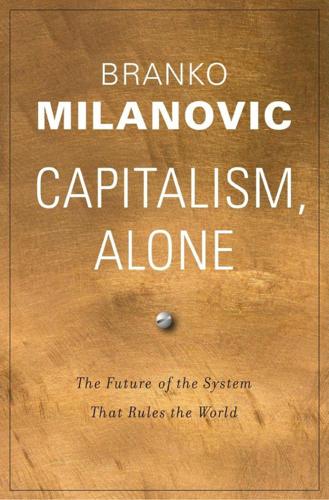
Capitalism, Alone: The Future of the System That Rules the World
by
Branko Milanovic
Published 23 Sep 2019
Cambridge, MA: Harvard University Press. Raworth, Kate. 2018. Doughnut Economics: Seven Ways to Think Like a 21st Century Economist. White River Junction, VT: Chelsea Green. Ray, Debraj. 2014. “Nit-Piketty: A Comment on Thomas Piketty’s Capital in the Twenty-First Century.” Unpublished manuscript, May 25, https://www.econ.nyu.edu/user/debraj/Papers/Piketty.pdf. Rognlie, Matthew. 2015. “Deciphering the Fall and Rise in the Net Capital Share: Accumulation or Scarcity?” Brookings Papers on Economic Activity, Spring. https://www.brookings.edu/wp-content/uploads/2016/07/2015a_rognlie.pdf. Rotman, David. 2015. “Who Will Own the Robots?”
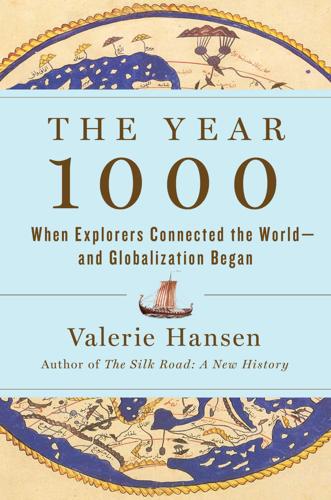
The Year 1000: When Explorers Connected the World―and Globalization Began
by
Valerie Hansen
Published 13 Apr 2020
Chapter Seven: Surprising Journeys The following scholars have helped me with this chapter by providing materials, discussing questions, and critiquing drafts: Haydon Cherry, Northwestern University History Department; Jan Wisseman Christie, professor emerita at the Centre for South-East Asia Studies, University of Hull; David Ludden, NYU History Department; R. I. Moore, professor emeritus of History at University of Newcastle; Himanshu Prabha Ray, Oxford Centre for Hindu Studies; and Charles Wheeler, AcademicEditorial.com. monsoon winds: Himanshu Prabha Ray, “Seafaring in the Bay of Bengal in the Early Centuries AD,” Studies in History 6.1 (1990): 1–14.
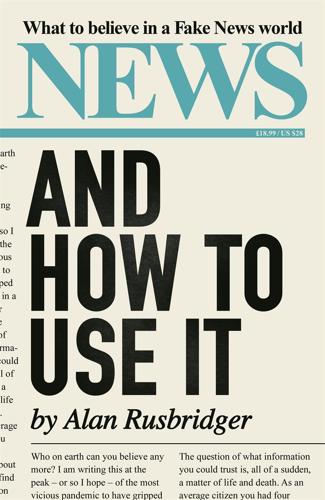
News and How to Use It: What to Believe in a Fake News World
by
Alan Rusbridger
Published 26 Nov 2020
At the heart of this was the early digital age (1999) dictum of Dan Gillmor, then on the San Jose Mercury News: ‘My readers know more than I do.’ Not always true, but true enough to make the active reader an interesting concept. The Dutch news site De Correspondent was born with the idea of incorporating active readers from the start. Jay Rosen, the NYU professor who became an adviser to the organisation, explained how the journalists were expected to have a radically different relationship with the reader than in traditional media. ‘Expectations are that writers will continuously share what they are working on with the people who follow them and read their stuff.
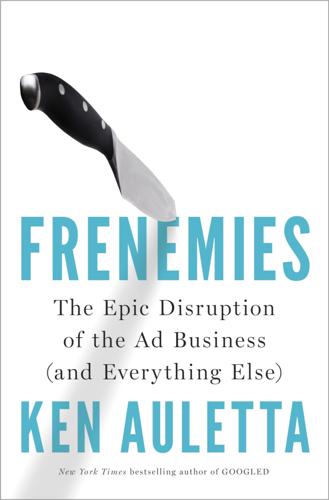
Frenemies: The Epic Disruption of the Ad Business
by
Ken Auletta
Published 4 Jun 2018
“Tell her you’re bringing someone,” he persisted. She dialed Randi. Cupping the phone as it rang, she asked him, “Who do I tell her I’m bringing?” “Tell her you’re bringing your fiancé.” “Randi,” she blurted, “I have to call you back. I think I just got engaged!” They married in December 1974 and moved to New York. He enrolled in NYU law school’s Master of Law (LLM) program in tax law; Ronnie supported them by working various jobs. They went back to Los Angeles in 1976. With his mother orchestrating the search, they tried to buy a house, but lacked the money to get what they wanted, so they rented an apartment. The next day “Michael went out and bought a Porsche, which was a little irresponsible,” Ronnie says.
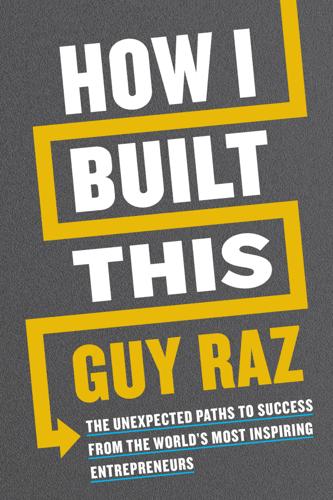
How I Built This: The Unexpected Paths to Success From the World's Most Inspiring Entrepreneurs
by
Guy Raz
Published 14 Sep 2020
All told, they raised $150,000 from those investors to open the second Five Guys location in a similarly small space—this one in a run-down strip mall in Alexandria, Virginia—and from there it was off to the races. Jerry’s story is not unlike that of Carley Roney and David Liu, who ten years later, in 1996, co-founded The Knot with two of their friends from NYU film school. Originally funded by AOL as a portal to provide wedding content for its members, The Knot broke away from AOL in July 1997, when Carley and David launched Theknot.com on its own, as a full-service wedding planning destination. By then, they already had a quarter million monthly visitors to their little corner of the AOL universe, and they were adding 300 members every day.

The Smart Wife: Why Siri, Alexa, and Other Smart Home Devices Need a Feminist Reboot
by
Yolande Strengers
and
Jenny Kennedy
Published 14 Apr 2020
West, Whittaker, and Crawford, Discriminating Systems. 55. Kate Crawford et al., AI Now 2019 Report (New York: AI Now Institute, 2019), https://ainowinstitute.org/AI_Now_2019_Report.pdf, 6. 56. UNESCO and EQUALS Skills Coalition, I’d Blush If I Could. 57. Safiya Umoja Noble, Algorithms of Oppression: How Search Engines Reinforce Racism (New York: NYU Press, 2018). 58. Sara Wachter-Boettcher, Technically Wrong, Sexist Apps, Biased Algorithms, and Other Threats of Toxic Tech (New York: W. W. Norton, 2017). 59. See, for example, Hilary Bergen, “‘I’d Blush If I Could’: Digital Assistants, Disembodied Cyborgs and the Problem of Gender,” Word and Text 6 (December 2016): 95–113. 60.

Reset
by
Ronald J. Deibert
Published 14 Aug 2020
Whether it’s a form of what Zuboff calls “psychic numbing” or what science fiction author Cory Doctorow has called “peak indifference” (problems seem so overwhelming that the only viable option is just to shrug and move on), it seems that no revelation about the practices surrounding surveillance capitalism is outrageous enough to separate users from their precious applications.78 Indeed, a recent survey of American attitudes undertaken by Georgetown University and NYU found that Amazon and Google were the second- and third-most trusted institutions respectively, ahead of even colleges and universities and courts.79 The direct effects of such a profound transformation in modes of communication are enormous, but the unintended consequences are likely to be far more unsettling.
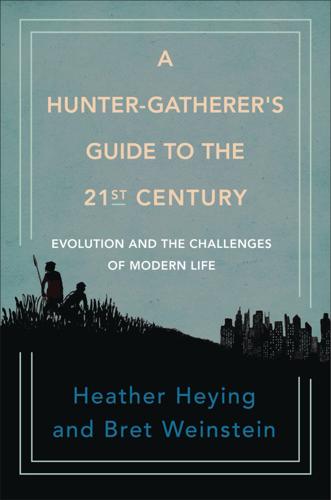
A Hunter-Gatherer's Guide to the 21st Century: Evolution and the Challenges of Modern Life
by
Heather Heying
and
Bret Weinstein
Published 14 Sep 2021
Special Publication No. 1. 27. See, for example, Conard, N. J., 2005. “An Overview of the Patterns of Behavioural Change in Africa and Eurasia during the Middle and Late Pleistocene.” In From Tools to Symbols: From Early Hominids to Modern Humans, d’Errico, F., Backwell, L., and Malauzat, B., eds. New York: NYU Press, 294–332. 28. Aubert, M., et al., 2014. Pleistocene cave art from Sulawesi, Indonesia. Nature, 514 (7521): 223. 29. Hoffmann, D. L., et al., 2018. U-Th dating of carbonate crusts reveals Neandertal origin of Iberian cave art. Science, 359(6378): 912–915. 30. Lynch, T. F., 1989. Chobshi cave in retrospect.
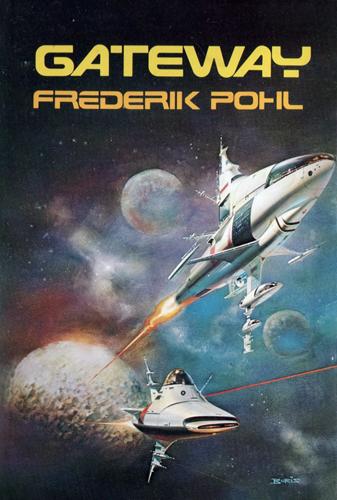
Gateway
by
Frederik Pohl
Published 15 Dec 1977
Ya. has one trait that impresses me even more than possessing the sweetest rear view that God ever laid on a human female. Her damn good job is in information handling. She went to the Akademogorsk University, she was a fellow at the Max Planck Institute for Machine Intelligence, and she teaches graduate students in the AI department at NYU. She knows more about Sigfrid than Sigfrid knows about himself, and that suggests interesting possibilities to me. 10 Along about my fifth day on Gateway I got up early and splurged, breakfast out in the Heecheetown Arms, surrounded by tourists, bloody-eyed gamblers from the casino across the spindle, and liberty sailors from the cruisers.
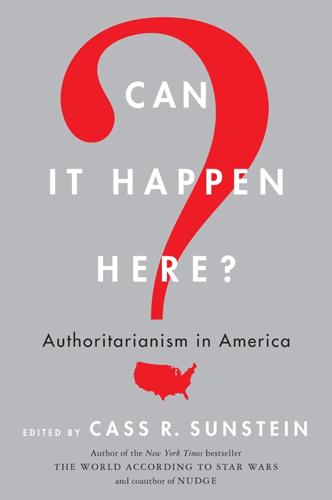
Can It Happen Here?: Authoritarianism in America
by
Cass R. Sunstein
Published 6 Mar 2018
Research conducted over the course of the election found that “political bot activity reached an all-time high for the 2016 campaign,”20 with one study concluding that during the critical final weeks of the race, bots accounted for 3.8 million tweets—essentially one-fifth of the entire Twitter conversation about the election.21 Meanwhile, the sheer quantity of misleading stories shared on Facebook is staggering. Using a database of 156 election-related news stories that fact-checking websites deemed “false,” economists from NYU and Stanford determined that these false stories had been shared by American social media users 38 million times in the final three months of the 2016 presidential election alone.22 European countries have been on the receiving end of similar Russian measures, characterized by National Security Advisor H.
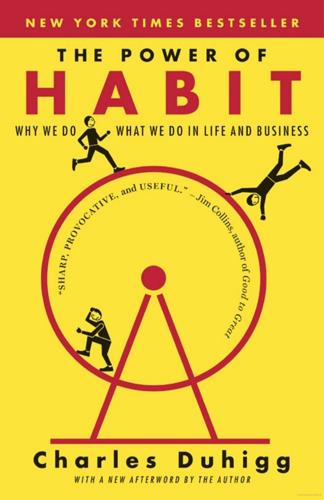
The Power of Habit: Why We Do What We Do in Life and Business
by
Charles Duhigg
Published 1 Jan 2011
Kimberlan, “Viral Encephalitis,” Pediatrics in Review 20, no. 6 (1999): 192–98. 1.4 was seven years old Some published papers say that H.M. was injured at age nine; others say seven. 1.5 he was hit by a bicycle Previous research indicates that H.M. was hit by a bicycle. New documents, as yet unpublished, indicate he may have fallen off a bike. 1.6 landed hard on his head Luke Dittrich, “The Brain That Changed Everything,” Esquire, October 2010. 1.7 He was smart Eric Hargreaves, “H.M.,” Page O’Neuroplasticity, http://www.nyu.edu. 1.8 When the doctor proposed cutting Benedict Carey, “H. M., Whose Loss of Memory Made Him Unforgettable, Dies,” The New York Times, December 5, 2008. 1.9 with a small straw This was a common practice at the time. 1.10 He introduced himself to his doctors Dittrich, “The Brain That Changed Everything”; Larry R.

Age of Discovery: Navigating the Risks and Rewards of Our New Renaissance
by
Ian Goldin
and
Chris Kutarna
Published 23 May 2016
Quartz Africa. Retrieved from www.qz.com. 26. Luef, Birgit, Kyle Frischkorn, et al. (2015). “Diverse Uncultivated Ultra-Small Bacterial Cells in Groundwater.” Nature Communications 6(6372). 27. New York University (2010, June 3). “Chemist Seeman Wins Kavli Prize in Nanoscience.” Retrieved from www.nyu.edu/about/news-publications/news. 28. Arthur, Brian (2010). The Nature of Technology. London: Penguin. 29. Rabelais, Francois (1490–1553) (1608). “Chapter 8: How Pantagruel, Being at Paris, Received Letters from His Father Gargantua, and the Copy of Them.” In Five Books of the Lives, Heroic Deeds and Sayings of Gargantua and His Son Pantagruel, Book Two.
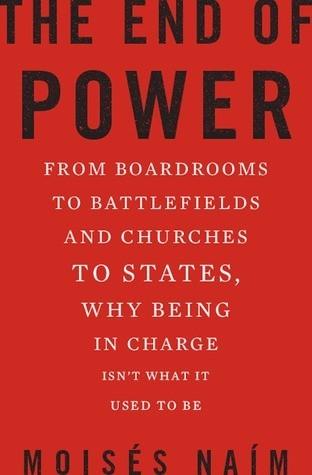
The End of Power: From Boardrooms to Battlefields and Churches to States, Why Being in Charge Isn’t What It Used to Be
by
Moises Naim
Published 5 Mar 2013
Greg Sargent, “Sharron Angle Floated Possibility of Armed Insurrection,” Washington Post, June 15, 2010, http://voices.washingtonpost.com/plum-line/2010/06/sharron_angle_floated_possibil.html. 8. This figure is quoted from Matt Golder, “Democratic Electoral Systems Around the World, 1946–2000,” Electoral Studies (2004), https://files.nyu.edu/mrg217/public/es_long.pdf. In the same publication, see also Figures 5.1 and 5.2, which show the proliferation of sovereign states, the decline of dictatorships, and the rise of democracies. 9. See Marshall et al., “Political Regime Characteristics and Transitions, 1800–2010” (2010), Polity IV Project, available online at http://www.systemicpeace.org/polity/polity4.htm. 10.

The Undoing Project: A Friendship That Changed Our Minds
by
Michael Lewis
Published 6 Dec 2016
“A Set of Independent Necessary and Sufficient Conditions for Simple Majority Decision.” Econometrica 20, no. 4 (1952): 680–84. Rosch, Eleanor, Carolyn B. Mervis, Wayne D. Gray, David M. Johnson, and Penny Boyes-Braem. “Basic Objects in Natural Categories.” Cognitive Psychology 8 (1976): 382–439. http://www.cns.nyu.edu/~msl/courses/2223/Readings/Rosch-CogPsych1976.pdf. Tversky, Amos. “The Intransitivity of Preferences.” Psychological Review 76 (1969): 31–48. ——— . “Features of Similarity.” Psychological Review 84, no. 4 (1977): 327–52. http://www.ai.mit.edu/projects/dm/Tversky-features.pdf. CHAPTER 4: ERRORS Hess, Eckhard H.

Lunar Park
by
Bret Easton Ellis
Published 15 Mar 2005
My second novel, The Rules of Attraction, for example, began with this: and it’s a story that might bore you but you don’t have to listen, she told me, because she always knew it was going to be like that, and it was, she thinks, her first year, or actually weekend, really a Friday, in September, at Camden, and this was three or four years ago, and she got so drunk that she ended up in bed, lost her virginity (late, she was eighteen) in Lorna Slavin’s room, because she was a Freshman and had a roommate and Lorna was, she remembers, a Senior or Junior and usually sometimes at her boyfriend’s place off-campus, to who she thought was a Sophomore Ceramics major but who was actually either some guy from N.Y.U., a film student, and up in New Hampshire just for The Dressed To Get Screwed party, or a townie. The following is from my third novel, American Psycho. ABANDON ALL HOPE YE WHO ENTER HERE is scrawled in blood red lettering on the side of the Chemical Bank near the corner of Eleventh and First and is in print large enough to be seen from the backseat of the cab as it lurches forward in the traffic leaving Wall Street and just as Timothy Price notices the words a bus pulls up, the advertisement for Les Misérables on its side blocking his view, but Price who is with Pierce & Pierce and twenty-six doesn’t seem to care because he tells the driver he will give him five dollars to turn up the radio, “Be My Baby” on WYNN, and the driver, black, not American, does so.

Cities Are Good for You: The Genius of the Metropolis
by
Leo Hollis
Published 31 Mar 2013
The images from Staten Island showed whole neighbourhoods being flattened by the floods as cars were picked up by the rising waters and dumped, like flotsam. Meanwhile in Breezy Point, Queens, an exploding generator caused a fire across a number of blocks and destroyed more than a hundred homes. And then there were the human stories: the patients of NYU Langone Medical Center, Manhattan, who were evacuated en masse as the winds picked up after the hospital’s back-up generator failed; the young policeman in Staten Island who drowned trying to save his family; Glenda Moore, a black woman trapped in her SUV in South Beach who lost her two children when they were ripped from her arms by the flood waters.
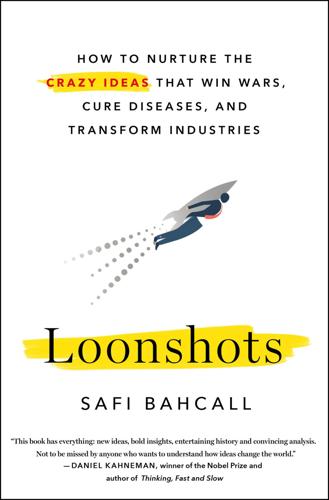
Loonshots: How to Nurture the Crazy Ideas That Win Wars, Cure Diseases, and Transform Industries
by
Safi Bahcall
Published 19 Mar 2019
A Cultural History of Civil Examinations in Late Imperial China. U. California, 2000. Feynman, Richard P. Perfectly Reasonable Deviations. Basic Books, 2005. Finlay, Robert. “China, the West, and World History.” J. World Hist. 11 (2000): 265. Gabler, Neal. An Empire of Their Own. Crown, 1988. Gil, Alexandra. “Breaking the Studios.” NYU J. Law & Liberty 3 (2008): 83. Gingerich, Owen. “The Great Martian Catastrophe and How Kepler Fixed It.” Phys. Tod. 64 (2011): 50. Gingerich, Owen, and Robert S. Westman. “The Wittich Connection.” Trans. Am. Phil. Soc. 78 (1988): i. Goldstone, Jack A. Why Europe? McGraw-Hill, 2009. Golinski, Jan.

Deep Medicine: How Artificial Intelligence Can Make Healthcare Human Again
by
Eric Topol
Published 1 Jan 2019
For example, sleep quality—an important metric for a range of mental health issues—is often assessed through a wristband or watch that simply senses the wearer’s movements during sleep. But to truly know the patient’s sleep state, those movements would need to have established correlations with brain waves, which has not been done. The biomarkers may also be too simple. As Nunzio Pomara, a professor at NYU said, “Depression is too complex to be reduced to a single biomarker.”19 We have so many biomarkers for mental health (Table 8.1), and we have no idea which ones, or how many of these, are critical to making an accurate diagnosis or for monitoring a treatment response. With seventy-four voice subfeatures and forty-five keyboard interaction subfeatures, and so on, we would need a computer just to figure out the millions of permutations and combinations.
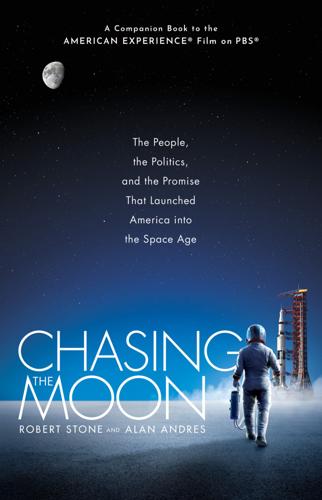
Chasing the Moon: The People, the Politics, and the Promise That Launched America Into the Space Age
by
Robert Stone
and
Alan Andres
Published 3 Jun 2019
“We’re not the Soviets” Watkins, Apollo Moon Missions, p. 52. During one internal presentation Duff, interview with Mauer (April 24, 1989), Glennan-Webb-Seamans Project Interviews 1985–1990, NASM. “It would be better” Gerard J. Degroot, Dark Side of the Moon: The Magnificent Madness of the American Lunar Quest (New York: NYU Press, 2006), pp. 183–184. Marooned wasn’t produced for another five years, by which time the story had been revised to follow the plight of a later Apollo Applications mission, in the early 1970s. When the film finally went before the cameras, NASA did provide some technical assistance. He once joked that Lange’s art David Larson, “Harry Lange,” Guardian (July 7, 2008).

Siege: Trump Under Fire
by
Michael Wolff
Published 3 Jun 2019
But in early 2017, Kissinger, lobbied by Kushner to write an encomium about the young man for Time’s annual list of the hundred most influential people, seemed forced to balance his own status-seeking inclinations against Kushner’s lack of foreign policy bona fides. As part of the Trump family, Jared is familiar with the intangibles of the president. As a graduate of Harvard and NYU, he has a broad education; as a businessman, a knowledge of administration. All this should help him make a success of his daunting role flying close to the sun. The subtle hedging of his bet on Kushner did not go unnoticed by the foreign policy professionals in the new Trump administration. * * * Through much of their first year in Washington, Jared and Ivanka seemed often to regret their move into official positions.
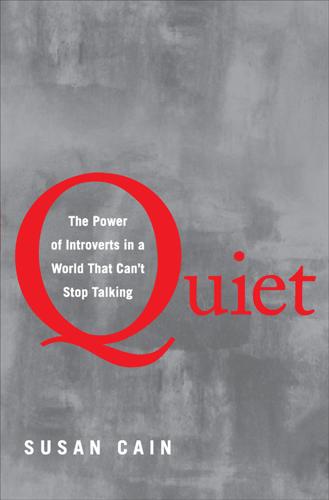
Quiet: The Power of Introverts in a World That Can't Stop Talking
by
Susan Cain
Published 24 Jan 2012
Some say that temperament is the foundation: See http://www.selfgrowth.com/articles/Warfield3.html. 5. potent organ: Kagan and Snidman, The Long Shadow of Temperament, 10. 6. When the Frisbee looks like it’s headed straight for your nose: This image comes from an online video with Joseph Ledoux, a scientist at NYU who studies the neural basis of emotions, especially fear and anxiety. See “Fearful Brain in an Anxious World,” Science & the City, http://www.nyas.org/Podcasts/Atom.axd (accessed November 20, 2008). 7. “alert attention”: Elaine N. Aron, Psychotherapy and the Highly Sensitive Person (New York: Routledge, 2010), 14. 8.

Platform Revolution: How Networked Markets Are Transforming the Economy--And How to Make Them Work for You
by
Sangeet Paul Choudary
,
Marshall W. van Alstyne
and
Geoffrey G. Parker
Published 27 Mar 2016
In traditional businesses, both are delivered through linear value chains—pipelines—which justifies our lumping them together in this discussion. 2 NETWORK EFFECTS The Power of the Platform For several weeks in June 2014, a very public debate over a seemingly arcane topic raged between a famous finance professor at New York University and a renowned venture capitalist in Silicon Valley. Aswath Damodaran—a chaired professor at NYU, author of textbooks on corporate finance and valuation, and the 2013 recipient of the prestigious Herbert Simon Award—launched the debate when he published an article estimating the value of Uber, the platform company whose smartphone app connects riders with drivers. Earlier that month, investors had ponied up $1.2 billion in financial capital for Uber, receiving in return a share of the company that suggested the overall value of the business was around $17 billion.
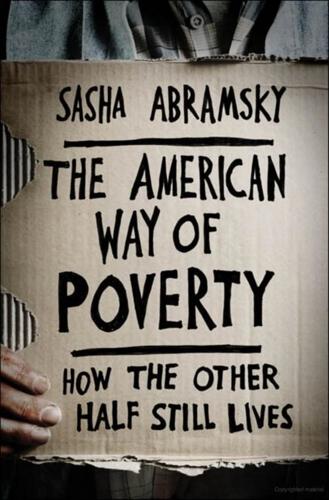
The American Way of Poverty: How the Other Half Still Lives
by
Sasha Abramsky
Published 15 Mar 2013
Jay Olshansky, “Differences in Life Expectancy Due to Race and Educational Differences Are Widening, and Many May Not Catch Up,” available at http://content.healthaffairs.org/content/31/8/1803.abstract. Olshansky is a professor of public health at the University of Illinois, Chicago. 7. Kristin Lewis and Sarah Burd-Sharpes, The Measure of America 2010–2011 (New York: NYU Press, 2010), 63. 8. 2010 U.S. Census Bureau data. 9. Credit Suisse Research Network, Global Wealth Report 2011, 17. 10. Merrill Lynch and Capgemini, World Wealth Report, 2011. Available at http://www.us.capgemini.com/services-and-solutions/by-industry/financialservices/solutions/wealth/worldwealthreport. 11.

Nerds on Wall Street: Math, Machines and Wired Markets
by
David J. Leinweber
Published 31 Dec 2008
Lo, “Optimal Control of Execution Costs,” Journal of Financial Markets 1 (1998): 1–50, http://web.mit.edu/alo/www/papers/bertlo98. html. 15. Robert Almgren and Neil Chriss, “Optimal Execution of Portfolio Transactions,” Journal of Risk 3, no. 2 (Winter 2000/2001). Almgren calls this “the most cited, least read paper in algo trading” (www.courant.nyu.edu/˜almgren/papers/optliq.pdf). 16. Elizabeth Corcoran is the author of an excellent series of photo articles on robotics in Forbes (September 4, 2006). 17. Michael Wooldridge, An Introduction to MultiAgent Systems (Hoboken, NJ: John Wiley & Sons, 2002), www.csc.liv.ac.uk/˜mjw/pubs/imas/. 18. Peter Horowitz, “Shifting from Defense to Offense: A Model for the 21st Century Capital Markets Firm,” www.bearingpoint.com. 88 Nerds on Wall Str eet 19.
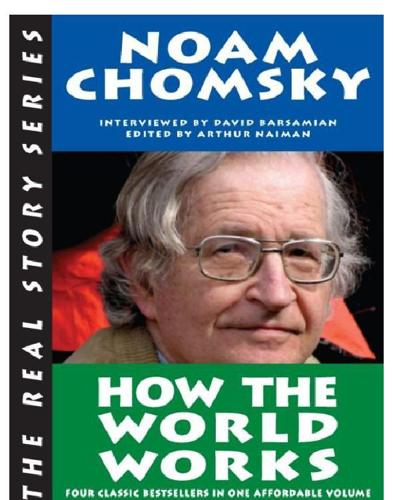
How the World Works
by
Noam Chomsky
,
Arthur Naiman
and
David Barsamian
Published 13 Sep 2011
It certainly opened itself up to that, and it’s been exploited that way, sometimes in ugly—and often in comical—ways. But it doesn’t only have that aspect. It can also mean that people have the right to adopt their individual ways of living if they want, without oppression or discrimination. Postmodernism A respected NYU physics professor, Allen Sokal, got an article published in Social Text, which has been described as the leading cultural-studies journal in the country. To point out the decline in intellectual rigor in certain parts of American academia, he intentionally filled the article with errors. What do you make of that?

Habeas Data: Privacy vs. The Rise of Surveillance Tech
by
Cyrus Farivar
Published 7 May 2018
Franklin, “Federal Computers Amass Files on Suspect Citizens,” The New York Times, June 28, 1970. Available at: http://www.nytimes.com/1970/06/28/archives/federal-computers-amass-files-on-suspect-citizens-many-among.html. The book’s author, Arthur R. Miller: “Arthur R. Miller,” New York University. https://its.law.nyu.edu/facultyprofiles/index.cfm?fuseaction=profile.biography&personid=20130. “Data transmissions also are more”: Miller, 183. One of the crucial elements: INTELLIGENCE ACTIVITIES AND THE RIGHTS OF AMERICANS BOOK II FINAL REPORT OF THE SELECT COMMITTEE TO STUDY GOVERNMENTAL OPERATIONS WITH RESPECT TO INTELLIGENCE ACTIVITIES UNITED STATES SENATE, April 26, 1976.

Mbs: The Rise to Power of Mohammed Bin Salman
by
Ben Hubbard
Published 10 Mar 2020
“until the events of 1979”: “Saudi Arabia’s heir to the throne talks to 60 Minutes,” 60 Minutes, March 19, 2018. put them to the sword: Michael Crawford, Ibn ‘Abd Al-Wahhab (London: Oneworld Publications, 2014) ebook. they considered blasphemous: Alexei Vassiliev, The History of Saudi Arabia (New York: NYU Press, 2000). The estimates of those killed range from 2,000 to 4,500. from performing the pilgrimage: Michael Darlow and Barbara Bray, Ibn Saud: The Desert Warrior Who Created the Kingdom of Saudi Arabia (New York: Skyhorse Publishing, 2010) ebook. denied that the practice existed: Robert Lacey, The Kingdom: Arabia and the House of Saud (New York: Avon Books, 1981), pp. 344–45.
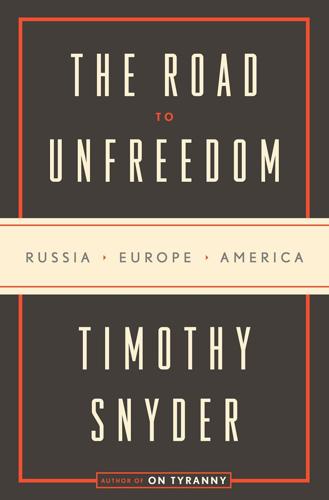
The Road to Unfreedom: Russia, Europe, America
by
Timothy Snyder
Published 2 Apr 2018
., The Weaponization of Culture (Budapest: Political Capital Institute, 2016), 6, 61; Van Herpen, Putin’s Propaganda Machine, 109; “Milos Zeman,” TG, Sept. 14, 2016. Lukoil paid a $1.4 million fine owed by Martin Nejedly´, Zeman’s advisor and vice chairman of his party (Roman Gerodimos, Fauve Vertegaal, and Mirva Villa, “Russia Is Attacking Western Liberal Democracies,” NYU Jordan Center, 2017). 2018 campaign: Veronika Špalková and Jakub Janda, “Activities of Czech President Miloš Zeman,” Kremlin Watch Report, 2018. Like Putin, Zeman presided over a country that took almost no refugees from Syria; and like Putin, he used the image of threat, speaking of a “super-Holocaust” that Muslims could perpetrate upon Czechs.
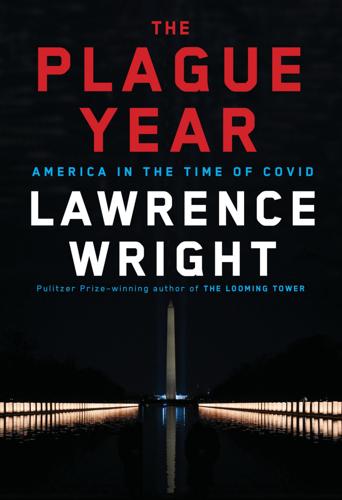
The Plague Year: America in the Time of Covid
by
Lawrence Wright
Published 7 Jun 2021
He had been ill for nearly a month. His muscles ached. Twice he had to stop and catch his breath, sitting for a while on a fire hydrant. He was too exhausted to be afraid. His vital signs showed dangerously low potassium levels and his heart kept skipping beats. An ambulance ferried him from the clinic to NYU Langone Hospital on 55th Street, in Brooklyn. Bloodwork showed worrisome heart abnormalities. The damage that Covid-19 can do to the heart wasn’t yet known, and Oskar’s symptoms weren’t the ones normally associated with the disease; only later would an antibody test show that he was suffering from the coronavirus.

The Costs of Connection: How Data Is Colonizing Human Life and Appropriating It for Capitalism
by
Nick Couldry
and
Ulises A. Mejias
Published 19 Aug 2019
“Deregulating Collection: Must Privacy Give Way to Use Regulation?” Social Science Research Network, December 28, 2017. https://papers.ssrn.com/sol3/papers.cfm?abstract_id=3092282. . Privacy in Context. Stanford, CA: Stanford University Press, 2010. Noble, Safiya Umoja. Algorithms of Oppression. New York: NYU Press, 2018. Obar, Jonathan A., and Anne Oeldorf-Hirsch. “The Biggest Lie on the Internet: Ignoring the Privacy Policies and Terms of Service Policies of Social Networking Services.” Social Science Research Network, May 13, 2018. https://papers.ssrn.com/abstract=2757465. Obermeyer, Ziad, and Ezekiel J.

Border and Rule: Global Migration, Capitalism, and the Rise of Racist Nationalism
by
Harsha Walia
Published 9 Feb 2021
Black People Don’t,” Washington Post, August 24, 2015, www.washingtonpost.com/news/post-nation/wp/2015/08/24/white-people-in-new-orleans-say-theyre-better-off-after-katrina-black-people-dont/; Richard Florida, “How Natural Disasters Can Spur Gentrification,” Citylab, February 12, 2019, www.citylab.com/environment/2019/02/gentrification-causes-new-orleans-natural-disasters-hurricane-katrina/582499/. 53.Fred Moten, Stolen Life (Durham: Duke University Press, 2018), 135. 54.Black Alliance for Just Immigration, The State of Black Immigrants: Black Immigrants in the Mass Criminalization System, State of Black Immigrants, http://stateofblackimmigrants.com, 15. 55.Alex Anfruns, “1996–2016: 20 Years after the Harshest Immigration Laws Ever Approved in the US,” Investig’Action, June 22, 2016, www.investigaction.net/en/1996-2016-20-years-after-the-harshest-immigration-laws-ever-approved-in-the-us/. 56.Juliana Morgan-Trostle, Kexin Zheng, and Carl Lipscombe, The State of Black Immigrants, NYU Law School and Black Alliance for Just Immigration, January 22, 2016, www.stateofblackimmigrants.com/assets/sobi-fullreport-jan22.pdf. 57.Jamila Osman, “Do Black Lives Matter in the Immigrant Rights Movement?” Al Jazeera, December 10, 2017, www.aljazeera.com/indepth/opinion/black-lives-matter-immigrant-rights-movement-171210095207677.html. 58.Saidiya Hartman, Lose Your Mother: A Journey along the Atlantic Slave Route (New York: Farrar, Strauss, & Giroux, 2007), 6. 59.Ju-Hyun Park, “The Alien and the Sovereign: Yellow Peril in Pandemic Times,” Evergreen Review, Spring 2020, https://evergreenreview.com/read/the-alien-and-the-sovereign-yellow-peril-in-pandemic-times/. 60.Nikhil Pal Singh, “The Pervasive Power of the Settler Mindset,” Boston Review, November 26, 2019, http://bostonreview.net/war-security-race/nikhil-pal-singh-pervasive-power-settler-mindset. 61.Gary Clayton Anderson, The Conquest of Texas: Ethnic Cleansing in the Promised Land (Norman: University of Oklahoma Press, 2019). 62.Kelly Lytle Hernández, Migra!

Arriving Today: From Factory to Front Door -- Why Everything Has Changed About How and What We Buy
by
Christopher Mims
Published 13 Sep 2021
—Brad Stone, author of The Everything Store and Amazon Unbound “With the elegance and efficiency of a first-rate tech journalist, Mims leads us into the nooks and crannies, robots, AI, warehouses, and ships that are highly complex so as to make our daily life simple. A must-read.” —Scott Galloway, professor of marketing at NYU Stern School of Business and author of The Four and The Algebra of Happiness “A meticulously and presciently rendered account of the surprising journey of a USB charger from the factory to my home. It’s nice to get your stuff fast. But Mims asks us to ponder, Was it worth it?” —Steve LeVine, author of The Powerhouse “Adeptly draws us into the container ships, fulfillment centers, and algorithms that deliver us what we want, when we want it.
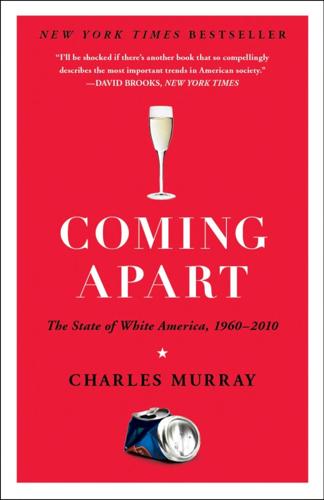
Coming Apart: The State of White America, 1960-2010
by
Charles Murray
Published 1 Jan 2012
Journal of Human Resources 22 (2):248–68. National Center for Health Statistics. 1941. Vital Statistics of the United States, 1939, Part I. Washington, DC: National Center for Health Statistics. Nelson, William E. 1967. Emerging notions of modern criminal law in the Revolutionary era: An historical perspective. N.Y.U. Law Review 450. Nie, N. H. 2001. Sociability, interpersonal relations, and the Internet: reconciling conflicting findings. American Behavioral Scientist 45:420. Novak, Michael. 2002. On Two Wings: Humble Faith and Common Sense at the American Founding. San Francisco: Encounter Books. Olasky, Marvin. 1992.

Machine, Platform, Crowd: Harnessing Our Digital Future
by
Andrew McAfee
and
Erik Brynjolfsson
Published 26 Jun 2017
World Wide Web Foundation, “History of the Web,” accessed February 7, 2017, http://webfoundation.org/about/vision/history-of-the-web. ‡‡ Key contributions were made by Joe Farrell and Garth Saloner (for example, Joseph Farrell and Garth Saloner, “Standardization, Compatibility, and Innovation,” Rand Journal of Economics 16, no. 1 [Spring 1985], 70–83, http://www.stern.nyu.edu/networks/phdcourse/Farrell_Saloner_Standardiization_compatibility_and_innovation.pdf), and independently by Michael Katz and Carl Shapiro (“Network Externalities, Competition, and Compatibility,” American Economic Review 75, no. 3 [June 1985]: 424–40, https://www.jstor.org/stable/1814809?seq=1#page_scan_tab_contents). §§ Meaning that the benefits to users (the source of demand) grow as the scale increases.

Dawn of the New Everything: Encounters With Reality and Virtual Reality
by
Jaron Lanier
Published 21 Nov 2017
What changed more, L.A. or my ability to perceive L.A.?1 A 2015 gathering, at Microsoft Research’s Faculty Summit, that included many of the VR researchers mentioned in this book. This is not a photograph, but a 2-D image of a volumetric capture. From left to right: research intern Victor Mateevitsi; Ken Perlin, NYU; Mark Bolas (in a HoloLens), then at USC, now at Microsoft; research intern Andrea Won; Christoph Rhemann, Microsoft; Andy van Dam, Brown University; me, Jaron; David Kim; Henry Fuchs, UNC; research intern Joseph Menke; Steve Feiner, Columbia; Shahram Izadi, Microsoft; Blair MacIntyre, Georgia Tech; Carolina Cruz-Neira, University of Arkansas, in a HoloLens; research intern Kishore Rathinavel; Tom Furness, University of Washington; research Intern Gheric Speiginer (practically swallowed by a Reality Masher experimental headset); Ken Salisbury, Stanford; Wayne Chang, Microsoft; Jianxiong Xiao, Princeton; Ran Gal, Microsoft; two unidentified visitors; Javier Porras Luraschi, Microsoft; Zhengyou Zhang, Microsoft.
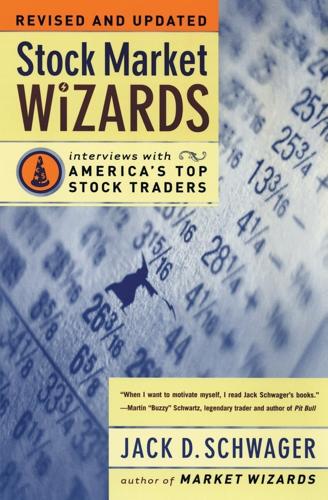
Stock Market Wizards: Interviews With America's Top Stock Traders
by
Jack D. Schwager
Published 1 Jan 2001
I couldn't compete against people who had gone to Harvard and interned at Goldman Sachs. Therefore, I had to do it the hard way. I went to work for an insurance company, doing credit analysis, essentially to pay the bills, but also to gain some analytical experience. I also applied to business school at NYU but couldn't get in. I enrolled at Fordham University for a semester, received good grades, and then transferred. After I graduated, I interviewed with about forty different hedge fund managers, which was very helpful, because it gave me a feeling for what other people were doing. I landed a job at Bankers Trust working in the small cap department [group that invested in stocks with small capitalization].
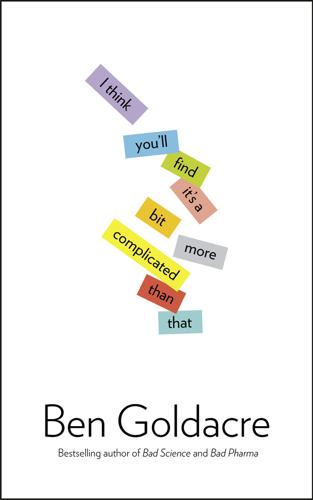
I Think You'll Find It's a Bit More Complicated Than That
by
Ben Goldacre
Published 22 Oct 2014
‘Deconstructing the Evidence-Based Discourse in Health Sciences: Truth, Power and Fascism’– from the current International Journal of Evidence-Based Healthcare – is one such paper. Even Rik Mayall in The Young Ones might pull back from using the word ‘fascist’ – or derivatives of it – twenty-eight times in six pages. Initially I thought it might be a spoof. After all, who could forget the Sokal hoax, where a Professor of Physics at NYU submitted ‘Transgressing the Boundaries: Towards a Transformative Hermeneutics of Quantum Physics’ to Social Text, the leading postmodernist academic journal. This deliberately meaningless joke article – purporting to undermine the entire discipline of physics – was accepted and published, to universal delight.

What to Think About Machines That Think: Today's Leading Thinkers on the Age of Machine Intelligence
by
John Brockman
Published 5 Oct 2015
IT DEPENDS ROBERT SAPOLSKY Neuroscientist, Stanford University; author, Monkeyluv What do I think about machines that think? Well, of course it depends on who that person is. WILL MACHINES DO OUR THINKING FOR US? ATHENA VOULOUMANOS Associate professor of psychology, New York University; principal investigator, NYU Infant Cognition and Communication Lab If we can’t yet even understand how a two-year-old toddler—or, for that matter, a two-day-old baby—thinks, machines that think like humans are probably many decades away. But once we do have machines that “think,” what kind of thinking will they do? The answer will define future human societies.
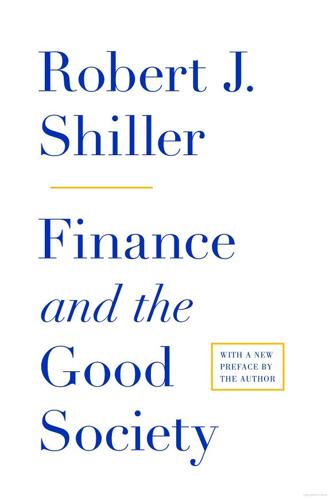
Finance and the Good Society
by
Robert J. Shiller
Published 1 Jan 2012
Brain Bugs: How the Brain’s Flaws Shape Our Lives. New York: W. W. Norton. Burman, Leonard, Robert Shiller, Gregory Leiserson, and Je rey Rohaly. 2007. “The Rising Tide Tax System: Indexing the Tax System for Changes in Inequality.” Unpublished paper, Department of Economics, Syracuse University, http://www.newfinancialorder.com/burman-nyu-030807.pdf. Bush, Vannevar. 1945. Science: The Endless Frontier. Washington, DC: U.S. Government Printing Office. Cabré, Anna, and Juan Antonio Módenes. 2004. “Homeownership and Social Inequality in Spain.” In Home Ownership and Social Inequality in a Comparative Perspective, 233– 54. Stanford, CA: Stanford University Press.

Geek Heresy: Rescuing Social Change From the Cult of Technology
by
Kentaro Toyama
Published 25 May 2015
The White Man’s Burden: Why the West’s Efforts to Aid the Rest Have Done So Much Ill and So Little Good. Penguin. ———. (2014). The Tyranny of Experts: Economists, Dictators, and the Forgotten Rights of the Poor. Basic Books. Easterly, William, and Laura Freschi. (2012). Save the poor Beltway bandits! NYU Development Research Institute Blog, May 7, 2012, http://nyudri.org/2012/05/07/save-the-poor-beltway-bandits/. Economist. (1977). The Dutch disease. Nov. 26, 1977, 82–83. ———. (2005). The real digital divide. May 10, 2005, www.economist.com/node/3742817. ———. (2008). Malthus, the false prophet. May 15, 2008, www.economist.com/node/11374623. ———. (2014).
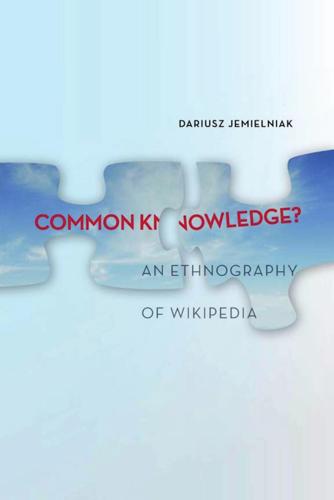
Common Knowledge?: An Ethnography of Wikipedia
by
Dariusz Jemielniak
Published 13 May 2014
Leadership behavior in virtual communities. In Seventh Annual Conference of the Southern Association for Information Systems: 2004 Proceedings (pp. 97–104). Savannah, GA: SAIS. Retrieved from http://sais.aisnet.org/sais2004/ Greiner.pdf Grossman, W. (2001). From anarchy to power: The net comes of age. New York: NYU Press. Gruber, J., & Trickett, E. J. (1987). Can we empower others? The paradox of empower ment in the governing of an alternative public school. American Journal of Community Psychology, 15(3), 353–371. Guo, C., & Musso, J. A. (2007). Representation in nonprofit and voluntary organizations: A conceptual framework.

Work Rules!: Insights From Inside Google That Will Transform How You Live and Lead
by
Laszlo Bock
Published 31 Mar 2015
Day (New York: Oxford University Press, 2014), http://www-personal.umich.edu/~cgmyers/deruemyersoxfordhandbookcha.pdf. 157. “Kirkpatrick Hierarchy for Assessment of Research Papers,” Division of Education, American College of Surgeons, http://www.facs.org/education/technicalskills/kirkpatrick/kirkpatrick.html. 158. Yevgeniy Dodis, “Some of My Favorite Sayings,” Department of Computer Science, New York University, cs.nyu.edu/~dodis/quotes.html. 159. David Streitfeld, “Silicon Valley’s Favorite Stories,” Bits (blog), New York Times, February 5, 2013, http://bits.blogs.nytimes.com/2013/02/05/silicon-valleys-favorite-stories/?_r=0. 160. “William Shockley Founds Shockley Semiconductor,” Fairchild Semiconductor Corporation, http://www.fairchildsemi.com/about-fairchild/history/#. 161.

The Innovation Illusion: How So Little Is Created by So Many Working So Hard
by
Fredrik Erixon
and
Bjorn Weigel
Published 3 Oct 2016
National Bureau of Economic Research, Jan. 2006. Copeland, Adam, “Seasonality, Consumer Heterogeneity and Price Indexes: The Case of Prepackaged Software.” Journal of Productivity Analysis, 39.1 (2013): 47–59. Corbae, Dean, and Pablo D’Erasmo, “A Quantitative Model of Banking Industry Dynamics.” Workshop paper, Mar. 2013. At http://www.econ.nyu.edu/user/galed/fewpapers/FEW%20S13/Corbae-D’Erasmo.pdf. Cournède, Boris, “The Political Economy of Delaying Fiscal Consolidation.” OECD Economics Department Working Paper No. 548. Organisation for Economic Co-operation and Development, Mar. 2007. At http://dx.doi.org/10.1787/240788215175. Couturier, Jerome, Davide Sola, and Paul Stonham, “Are Sovereign Funds ‘White Knights’?”
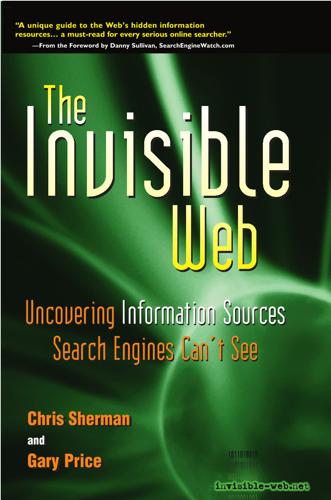
The Invisible Web: Uncovering Information Sources Search Engines Can't See
by
Gary Price
,
Chris Sherman
and
Danny Sullivan
Published 2 Jan 2003
Texts of legislation are summarized in English or mentioned by their title. Where possible, links are provided to other Web sites that contain full texts of the legislation in question.” Search Form URL: http://www-nt.who.int/idhl/en/ConsultIDHL.cfm Literature, Arts, and Medicine Database http://endeavor.med.nyu.edu/lit-med/lit-med-db/ “The Literature, Arts, & Medicine Database is an annotated bibliography of prose, poetry, film, video, and art [that] is being developed as a dynamic, accessible, comprehensive resource in MEDICAL HUMANITIES, for use in health/pre-health and liberal arts settings.” Each entry includes an annotation.

Dreaming in Code: Two Dozen Programmers, Three Years, 4,732 Bugs, and One Quest for Transcendent Software
by
Scott Rosenberg
Published 2 Jan 2006
I hunched over the teletype in the terminal room, a hulking console that shook each time its typewriter head whammed leftward to begin a new line. I stared at smudgy lines of black code. I’d lost track of the time several hours before; it had to be after midnight. The janitors had switched off the hall lights. I didn’t have anyone’s permission to hang out there in the NYU physics building, using the computer account that the university was giving away, for free, to high school students. But then nobody was saying no, either. I was fifteen years old and in love with a game called Sumer, which put me in charge of an ancient city-state in the Fertile Crescent. Today’s computer gamers might snicker at its crudity: Its progress consisted of all-capital type pecked out line by line on a paper scroll.
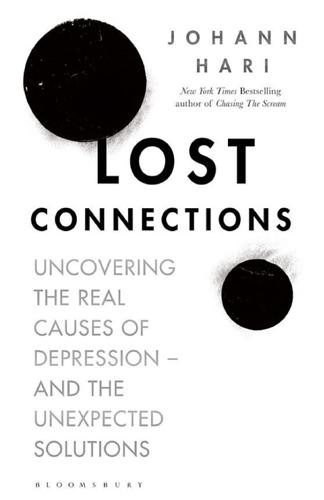
Lost Connections: Uncovering the Real Causes of Depression – and the Unexpected Solutions
by
Johann Hari
Published 1 Jan 2018
CHAPTER 20 Reconnection Five: Sympathetic Joy, and Overcoming Addiction to the Self I hadn’t seen my friend Rachel for nearly three years when she walked into my hotel room in a small town in the American heartland, lay down on the bed, and laughed. When I first moved to New York, Rachel Shubert was one of the first people I bonded with. We sat next to each other when we took a class at NYU and we were both a bit disoriented, by the city and by life. Rachel was in a marriage that wasn’t working out, for all sorts of reasons. She was trying to build a career for herself, and she was, as it turned out, about to become pregnant with her first child. I was ragged and worn from a series of crises.
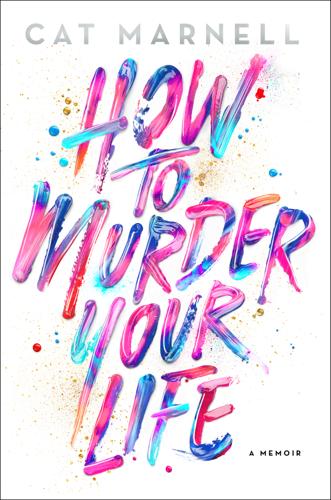
How to Murder Your Life: A Memoir
by
Cat Marnell
Published 30 Jan 2017
Each illegal after-hours party was more fantastical than the last. One was on Elizabeth Street in Noho, across from Planned Parenthood. It was down a rabbit hole—or it felt like it, since you descended a ladder into a lair with dirt floors. It was very kooky! Everyone was in there. It was full of drug dealers and NYU girls in American Apparel. Another spot was through a normal-looking Brooklyn deli. You walked past the register, the cat food, the SunnyD, and the Four Loko—straight to the back. The shopkeepers wouldn’t stop you; they were in on it. You’d pass through a storage room, and there it was: a secret enchanted garden.
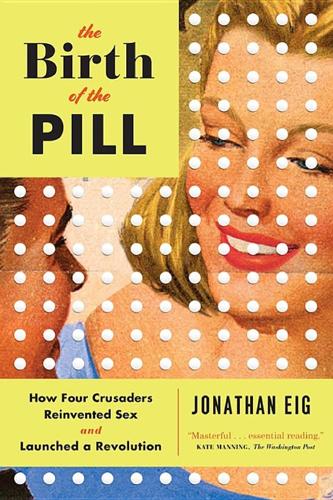
The Birth of the Pill: How Four Crusaders Reinvented Sex and Launched a Revolution
by
Jonathan Eig
Published 12 Oct 2014
oid=1075512 (accessed February 20, 2014). 59 some of the money: Madeline Gray, Margaret Sanger: A Biography of the Champion of Birth Control (New York: Richard Marek Publishers, 1979), p. 292. 59 Prescott S. Bush: “Bush Family Planning,” Margaret Sanger Papers Project newsletter, Winter 2006/2007, no. 44, New York University, http://www.nyu.edu/projects/sanger/newsletter/articles/bush_family_planning.htm (accessed February 20, 2014). 60 in Sanger’s words: Katharine Dexter McCormick to Margaret Sanger, October 27, 1950, Margaret Sanger Papers, SSC. 60 “Confidential Please”: Margaret Sanger to Clarence Gamble, dated “Saturday/October 1942,” Gamble Papers, CLM.

Plutocrats: The Rise of the New Global Super-Rich and the Fall of Everyone Else
by
Chrystia Freeland
Published 11 Oct 2012
Born and educated in Chennai, India, he landed his first two jobs working for Lucas Diesel Systems in the UK and France. He got his MBA in the United States, from Cornell University, and spent the next decade at GE in Stamford, Connecticut, and Hong Kong, before moving back to India. Chopra met his wife, a fellow Indian, while he was working in the United States; she has a law degree from NYU and worked as an M&A lawyer for white-shoe Wall Street firm Weil, Gotshal and Manges. In 2007, when he was just thirty-seven, Chopra was chosen as the first Indian to run GE’s Indian business. That job put Chopra at the center of the globalization and technology revolutions, which are transforming our world as dramatically as the industrial revolution did two centuries ago.
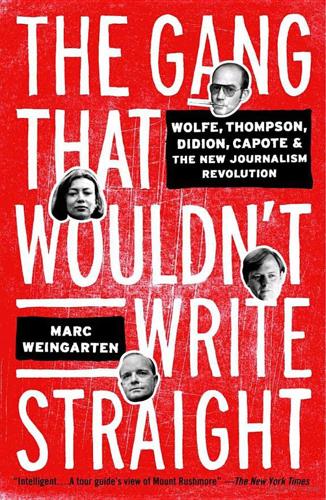
The Gang That Wouldn't Write Straight: Wolfe, Thompson, Didion, Capote, and the New Journalism Revolution
by
Marc Weingarten
Published 12 Dec 2006
“mean, low-down cold streak”: Tom Wolfe, “Miserable Weather to Continue; Ships, Aircraft, Shores Battered,”New York Herald Tribune, December 8, 1962. “with eyes that looked like poached eggs”: Tom Wolfe, “He Elevates Fraternities,”New York Herald Tribune, December 2, 1962. “A willowy co-ed”: Tom Wolfe, “600 at NYU Stage Lusty Rent Strike,”New York Herald Tribune, April 13, 1962. “usual non-fiction narrator”: Wolfe and Johnson, eds., Tom Wolfe, “The New Journalism,”The New Journalism, 17. “Is that Joan Morse”: Wolfe, “The Saturday Route,”The Kandy-Kolored Tangerine-Flake Streamline Baby (New York: Farrar, Straus and Giroux, 1965), 223.
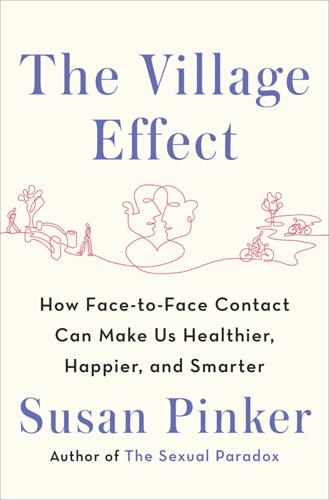
The Village Effect: How Face-To-Face Contact Can Make Us Healthier, Happier, and Smarter
by
Susan Pinker
Published 30 Sep 2013
Children whose parents did not have a college degree were spending ninety minutes more a day with various media than children from more educated families. Black and Hispanic children spent nearly four and a half hours more a day on TV and computer games than white children. There was no proof that screens were the cause, but children who were heavy media users were getting lower grades in school.4 Dr. Perri Klass, a pediatrician, author, and NYU professor, has been associated with Reach Out and Read since its inception and is now the program’s medical director. When I met her in the clinic that day, I discovered that Reach Out and Read is an ethical commitment for her as well as a professional one. “When I think about children growing up in homes without books, I have the same visceral reaction as I have when I think of children in homes without milk or food or heat: It cannot be, it must not be.
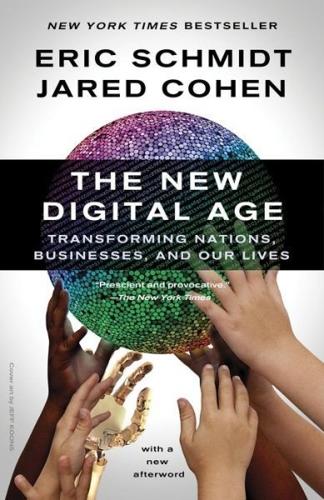
The New Digital Age: Transforming Nations, Businesses, and Our Lives
by
Eric Schmidt
and
Jared Cohen
Published 22 Apr 2013
the “mobile health” revolution: “mHealth in the Developing World,” m+Health, accessed October 23, 2012, http://mplushealth.com/en/SiteRoot/MHme/Overview/mHealth-in-the-Developing-World/. Mobile phones are now used: Lakshminarayanan Subramanian et al., “SmartTrack,” CATER (Cost-effective Appropriate Technologies for Emerging Region), New York University, accessed October 11, 2012, http://cater.cs.nyu.edu/smarttrack#ref3. tiny microchip that uses low-radiation: Kevin Spak, “Coming Soon: X-Ray Phones,” Newser, April 20, 2012, http://www.newser.com/story/144464/coming-soon-x-ray-phones.html. how could a dog eat his cloud storage drive?: A New Yorker cartoon by Tom Cheney in 2012 expressed a similar idea.

Nexus
by
Ramez Naam
Published 16 Dec 2012
The small amount of data bandwidth we have explains why the vision we restore is grainy, why the hearing isn't good enough for music appreciation, and so on. But one thing we've learned over the years is that electronics get better fast. Indeed, one of the pioneers of neuroscience, an elder statesman of the field named Rodolpho Llinas who chairs the NYU Department of Neuroscience, has proposed a way to get a million or more electrodes in the brain – use nanowires. Carbon nanotubes can conduct electricity, so they can be used to carry signals. And they're so small that a bundle of one million nanowires would slide easily down even the smallest blood vessels in the brain, leaving plenty of room for blood cells and nutrients and so on.
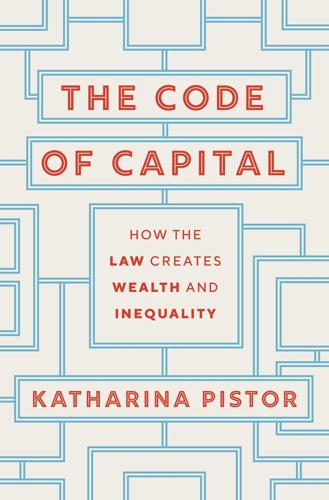
The Code of Capital: How the Law Creates Wealth and Inequality
by
Katharina Pistor
Published 27 May 2019
Note, however, that some medical schools have eliminated school fees in order to encourage graduates to pursue not only the most lucrative doctoral careers, but to consider family practice and other, relatively less-paid positions in the medical profession. See David Chen, “Surprise Gift: Free Tuition for All N.Y.U. Medical Students,” New York Times, August 16, 2018, available online at www.nytimes.com (last accessed August 29, 2018). 43. For a similar point, see Robert L. Hale, Freedom Through Law, especially chapters 1 (Economic Liberty and the State) and 2 (The Legal Basis for Economic Inequality). 44. The official representative of the open-source community just celebrated its twentieth anniversary.
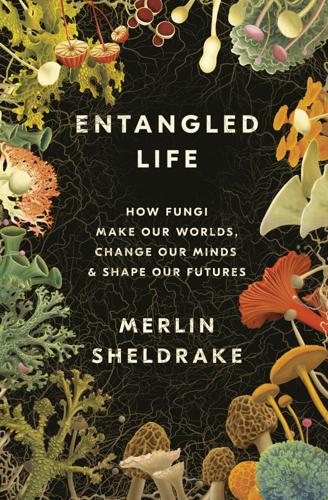
Entangled Life: How Fungi Make Our Worlds, Change Our Minds & Shape Our Futures
by
Merlin Sheldrake
Published 11 May 2020
in the pond, and…: For a full exposition of the “extended phenotype” see Dawkins (1982); for “tightly limited speculation” see Dawkins (2004); for a discussion of fungal manipulation of insect behavior in terms of extended phenotypes see Andersen et al. (2009), Hughes (2013 and 2014), and Cooley et al. (2018). is simply catching up: For a discussion of the “first wave” of psychedelic research in the 1950s and ’60s see Dyke (2008) and Pollan (2018), ch. 3. history of modern medicine: For the Johns Hopkins study see Griffiths et al. (2016); for the NYU study see Ross et al. (2016); for the interview with Griffiths see Fantastic Fungi: The Magic Beneath Us, directed by Louis Schwartzberg; for a general discussion, including the record “treatment effect” sizes, see Pollan (2018), ch. 1. defined sense of self: For a study on psilocybin-occasioned mystical experience see Griffiths et al. (2008); for the role of awe in psychedelic-assisted psychotherapy see Hendricks (2018).
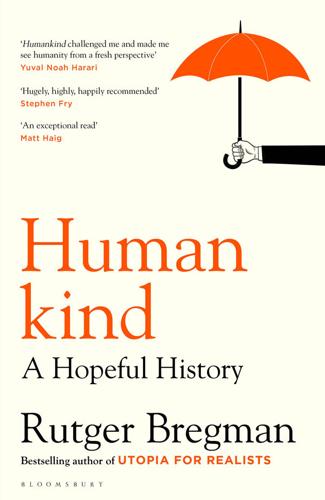
Humankind: A Hopeful History
by
Rutger Bregman
Published 1 Jun 2020
Without having ever set foot in a real prison, the psychologist asserted that prisons are inherently brutal, no matter how you dress them up. This verdict got a warm reception and gained popularity when the infamous Martinson Report appeared one year later. The man behind this report, Robert Martinson, was a sociologist at NYU with a reputation as a brilliant if slightly maniacal personality. He was also a man with a mission. In his younger years, Martinson had been a civil rights activist and landed in jail for thirty-nine days (including three in solitary confinement). This awful experience convinced him that all prisons are barbaric places.
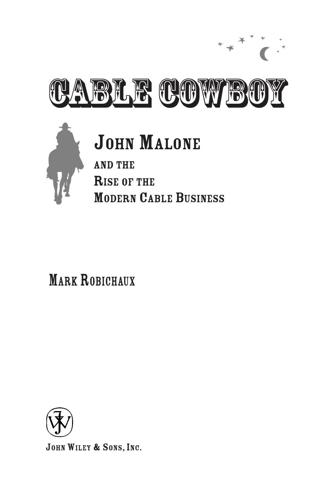
Cable Cowboy
by
Mark Robichaux
Published 19 Oct 2002
In 1963, Malone reached three important milestones in his life: (1) He graduated Phi Beta Kappa from Yale with a bachelor’s in electrical engineering; (2) he married his steady girl; and (3) he accepted a job as a systems engineer at Bell Labs, the research arm 9486_Robichaux_01.f.qxd 8/28/02 9:53 AM Page 27 Ru n n i ng t he Show of American Telephone & Telegraph (AT&T) and one of the few companies that promised to pay for his continuing education. AT&T would forever hold a place in Malone’s heart for financing his advanced degrees: a master’s in industrial management at Johns Hopkins University in Baltimore, which he received in 1964, a master’s in electrical engineering from an NYU program at Bell Labs in 1965, and a doctorate in operations research, which he received from Johns Hopkins in 1967. Malone drove a white Porsche Speedster, recalled former Bell colleague and roommate Gerald “Jerry” Bennington, who studied around the clock with Malone in a small rented white wooden house near school.5 In their down time, the pair sped along the picturesque highways of the Shenandoah Mountains on weekends.
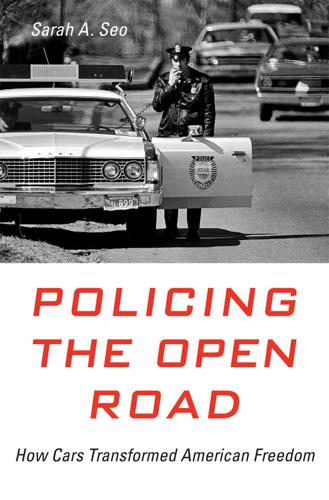
Policing the Open Road
by
Sarah A. Seo
Finishing this book would have taken many more years if not for the generous financial support of the Beach Law Faculty Opportunity Fund at Iowa Law School, the American Philosophical Society’s Franklin Research Grant, the William Nelson Cromwell Foundation Grant, the Charles W. McCurdy Fellowship at UVA Law School, and the Samuel I. Golieb Fellowship at NYU Law School. My thinking has benefited immeasurably from presenting chapters at conferences and faculty workshops. I am grateful to the organizers and participants at the American Bar Foundation’s Legal History Workshop, American Society for Legal History’s 2017 Annual Meeting, Emory Law School’s Faculty Colloquium, Iowa Law School’s Junior Faculty and Legal Studies Workshops, Law and Society Association’s 2018 Annual Meeting, Southeastern Association of Law Schools’ 2017 Conference, University of Chicago Law School’s Legal Theory Workshop, University of Maryland Law School’s Con Law Schmooze, University of Minnesota’s Faculty Works-in-Progress and Legal History Workshops, and University of Oregon Law School’s Race, Ethnicities, and Inequalities Colloquium.
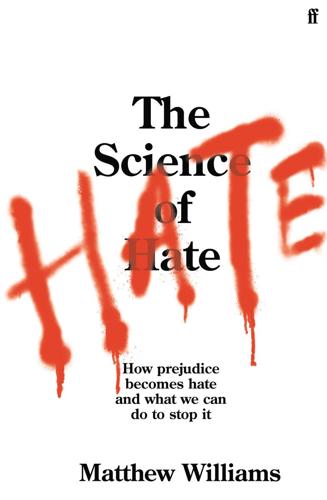
The Science of Hate: How Prejudice Becomes Hate and What We Can Do to Stop It
by
Matthew Williams
Published 23 Mar 2021
Based on this insight, the answer lies beyond the brain, in society itself – we must reform society and its institutions if we are to change what the amygdala is exposed to and in turn what it detects as potential threats. The parts that can edge us towards hate More recent research on the role of the amygdala in the prejudice network casts some doubt on the universality of its role. In 2008, a brain scanning study by Professor Jay Van Bavel and colleagues at NYU found that mixing images of black and white faces with team badges shifted the response of the amygdala away from the black faces to the team subjects associated with.33 The team’s badge proved a stronger stimulus than the black face. This suggests the amygdala adapts to what seems most important to the subject in the context of the moment.
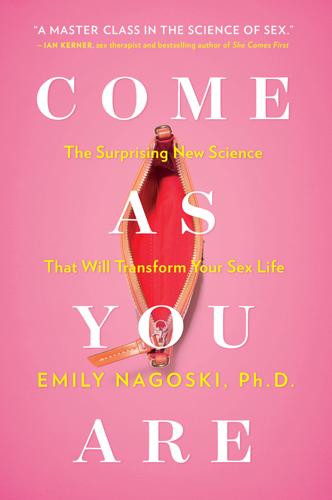
Come as You Are: The Surprising New Science That Will Transform Your Sex Life
by
Emily Nagoski Ph.d.
Published 3 Mar 2015
YouTube video, 2009. www.youtube.com/watch?v=O1Q3jZw4FGs. Goldstein, Andrew, Caroline F. Pukall, and Irwin Goldstein. When Sex Hurts: A Woman’s Guide to Banishing Sexual Pain. Boston: Da Capo Press, 2011. Gollwitzer, Peter M., and Gabriele Oettingen. “Implementation Intentions.” New York University. www.psych.nyu.edu/gollwitzer/Implementation%20Intentions.pdf. Gottman, John M. The Science of Trust: Emotional Attunement for Couples. New York: W. W. Norton, 2011. Gottman, John, and Joan DeClaire. The Heart of Parenting: Raising an Emotionally Intelligent Child. New York: Simon and Schuster, 1997. Gottman, John, and Nan Silver.
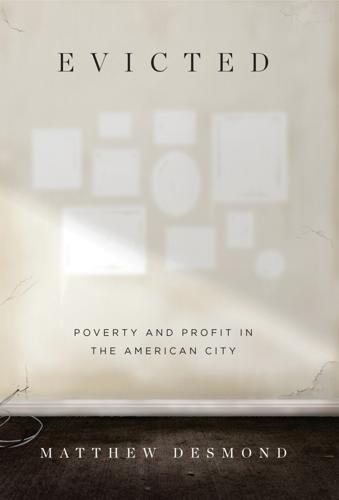
Evicted: Poverty and Profit in the American City
by
Matthew Desmond
Published 1 Mar 2016
On the role today’s black church plays in the inner city, see Omar McRoberts, Streets of Glory: Church and Community in a Black Urban Neighborhood (Chicago: University of Chicago Press, 2003). On religious experience, see Timothy Nelson, Every Time I Feel the Spirit: Religious Experience and Ritual in an African American Church (New York: NYU Press, 2004). 11. Douglas Massey and Nancy Denton, American Apartheid: Segregation and the Making of the Underclass (Cambridge: Harvard University Press, 1993); Camille Zubrinsky Charles, “The Dynamics of Racial Residential Segregation,” Annual Review of Sociology 29 (2003): 167–207. 12. Lewis Mumford, The City in History: Its Origins, Its Transformations, and Its Prospects (New York: MJF Books, 1961), 417.
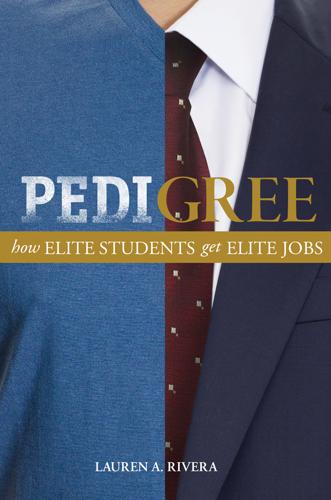
Pedigree: How Elite Students Get Elite Jobs
by
Lauren A. Rivera
Published 3 May 2015
Conversely, students at less selective institutions needed to be at the top of their classes. Consultant Javier confessed: If you are not part of one of a group of pretty much three or four universities, then you have to be in like the top 1 percent or more [of the class] of the second-tier universities. A second-tier university would be like NYU. And we do take people from there, but you’d have to be sort of a summa cum laude rock star. Whereas just being kind of average at Harvard might get you an interview. Attorney Rebecca provided a slightly more lenient standard: “Outside of top schools, they won’t look at anyone below the top 10 percent.”
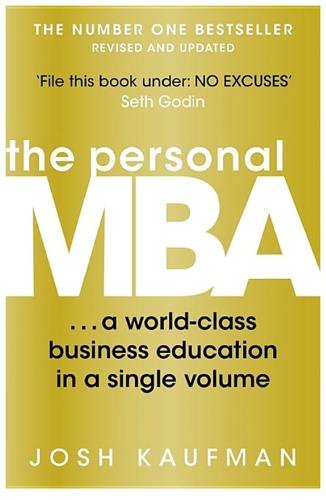
The Personal MBA: A World-Class Business Education in a Single Volume
by
Josh Kaufman
Published 2 Feb 2011
Why bother, when MBA programs are profitable status symbols for the colleges and in such high demand? As long as students are still signing up, don’t expect the hallowed halls of business schools to change their tune. The Single Benefit of Business Schools Institutions will try to preserve the problem to which they are the solution. —CLAY SHIRKY, PROFESSOR AT NYU AND AUTHOR OF HERE COMES EVERYBODY AND COGNITIVE SURPLUS The one significant benefit that business schools do provide is better access to Fortune 50 recruiters, consulting firms, large accounting firms, and investment banks via on-campus recruiting and alumni networks. Upon graduating from a top-tier business school, you’ll find it much easier to get an interview with a corporate recruiter who works for a Fortune 50, investment bank, or consulting firm.
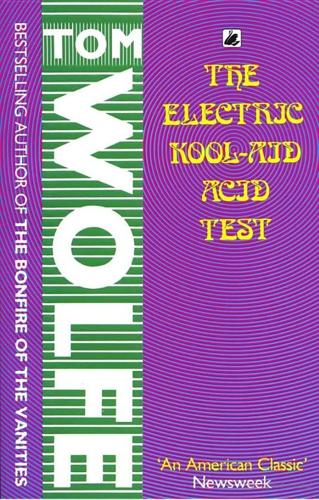
The Electric Kool-Aid Acid Test
by
Tom Wolfe
Published 1 Jan 1968
Sandy is the younger brother of Carl Lehmann-Haupt, whom Kesey had known on Perry Lane. Sandy is a handsome kid, 22 years old, tall, lean—high-strung. Sandy had met Kesey three months before, November 14, 1963, through Carl, when Kesey had come to New York for the opening of the stage version of One Flew Over the Cuckoo's Nest. Kirk Douglas played McMurphy. Sandy had dropped out of N.Y.U. and was working as a sound engineer. He was a genius with tapes, soundtracks, audio systems and so forth, but he was going through a bad time. It got to the point where one day he tried to enter himself in a psychiatric ward, only to be talked out of it by Carl, who took him off to see the opening of One Flew Over the Cuckoo's Nest.
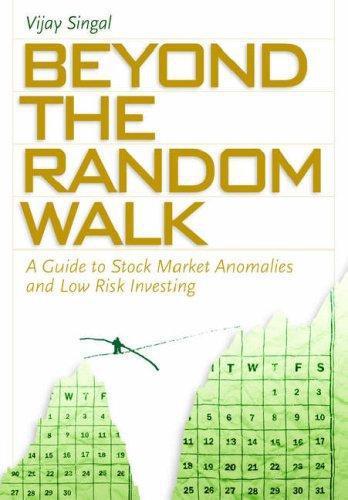
Beyond the Random Walk: A Guide to Stock Market Anomalies and Low Risk Investing
by
Vijay Singal
Published 15 Jun 2004
Note that the rule of thumb is 285 286 Beyond the Random Walk developed not by scientific reasoning but simply on the basis of one’s own experience or knowledge. Living in Blacksburg (home to Virginia Tech), a resident might believe that Virginia Tech is the best university in the nation. A New Yorker might believe that Fordham University is third only to NYU and Columbia. Or a Philadelphia resident might believe that Temple is just behind the University of Pennsylvania. Not only do people believe in what they think, they believe it so strongly that they suffer from overconfidence. Moreover, overconfidence becomes worse with self-attribution. Assume an investor “knows” that after a long bull run, Cisco is bound to fall.
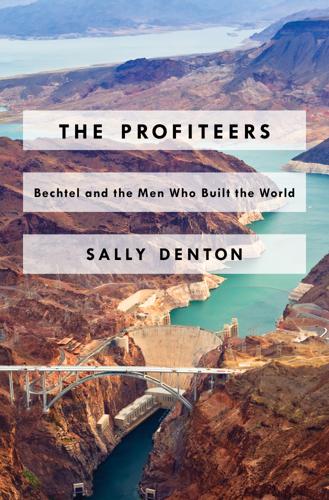
The Profiteers
by
Sally Denton
“Not only was he an outspoken left-wing activist,” according to one account, “he also was Jewish.” Steve Jr. threatened to disinherit her if she went through with the marriage, but following the mediation efforts of her adoring grandfather Steve Sr., Laurie and Alan were accepted into the patriarchal fold. Smart and ambitious, with a masters in business administration from NYU, Alan became an executive in the firm, and Lauren, who graduated from Stanford with a degree in psychology, would go on to work for the family foundation. Nonie, the youngest daughter, graduated from Berkeley and married Sheldon Ramsay, the blue-blooded son of an affluent California family. From the start, though, it was Riley, born in 1952, whose mind and assertive personality caught the attention of his father, grandfather, and other Bechtel managers.
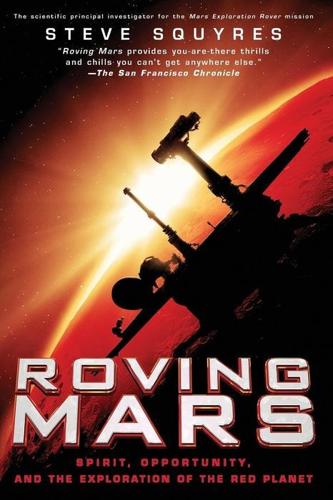
Roving Mars: Spirit, Opportunity, and the Exploration of the Red Planet
by
Steven Squyres
Published 2 Aug 2005
It was so ironic; endless truckloads of debris from the towers were flowing by Honeybee every day. But if we were going to do this, we couldn’t build a memorial by going Dumpster diving, or by grabbing something off the back of a truck. We had to do it right. Steve had an idea. A friend of his, John Sexton, was the dean of the NYU Law School, and well known within the administration of New York’s mayor, Rudy Giuliani. Working through Sexton, Steve made contacts at a series of increasingly high levels within the overburdened city administration. At every step he struggled to convince people that we were legit, that we really were sending something to Mars.

Operation Chaos: The Vietnam Deserters Who Fought the CIA, the Brainwashers, and Themselves
by
Matthew Sweet
Published 13 Feb 2018
Sometimes I would feel sorry for him and go up and say hello; he never replied except in a mumble or a curt rejoinder. Once I mustered the audacity to ask him to explain his latest document. My polite interest evoked nothing but a look of utter contempt. One member of the Socialist Workers Party, however, was more sympathetic. Carol Larrabee, a Brooklyn-born, NYU-educated math teacher, became LaRouche’s lover and, by 1964, had allowed him to move into her apartment on Morton Street in Greenwich Village. The building had a history: her flat was directly below one that had served as a meeting place for the Soviet spy ring that included Julius and Ethel Rosenberg.

The Future Is Asian
by
Parag Khanna
Published 5 Feb 2019
The emergence of top-tier Western centers of learning in Asia may have significant consequences for the number—and caliber—of Asian youths who travel to the United States for their tertiary education. Singapore’s top graduates, known as government scholars, are accustomed to spreading themselves across Stanford, Harvard, Oxford, and Cambridge but now have the option of attending NYU Shanghai or Yale in their own backyard. Additionally, leading Chinese, Japanese, and Korean universities have in the past decade launched all-English curricula with a mix of faculty including repatriated Asian PhDs and Western academics seeking well-paid opportunities abroad.35 Asians increasingly have the luxury of getting their top-tier English-language education delivered in their home country, meaning that a decade or two hence, Asia’s best and brightest may well remain in Asia for their entire educational journey.

Shoot for the Moon: The Space Race and the Extraordinary Voyage of Apollo 11
by
James Donovan
Published 12 Mar 2019
New York: Knopf, 1972. Davis-Floyd, Robbie, Kenneth J. Cox, and Frank White. Space Stories: Oral Histories from the Pioneers of America’s Space Program. Kindle, 2012. Dawson, Virginia P., and Mark D. Bowles. Realizing the Dream of Flight. Washington, DC: NASA, 2005. DeGroot, Gerard J. Dark Side of the Moon. New York: NYU Press, 2006. de Monchaux, Nicholas. Spacesuit: Fashioning Apollo. Cambridge, MA: MIT Press, 2011. Dethloff, Henry C. Suddenly, Tomorrow Came: The NASA History of the Johnson Space Center. Washington, DC: NASA, 1993. Dick, Steven J. Remembering the Space Age. Washington, DC: NASA, 2008. ———, and Roger D.

People, Power, and Profits: Progressive Capitalism for an Age of Discontent
by
Joseph E. Stiglitz
Published 22 Apr 2019
Big Data is increasing these asymmetries, and thereby potentially making resource allocations less efficient. 19.Jennifer Valentino-DeVries, Jeremy Singer-Vine, and Ashkan Soltani, “Websites Vary Prices, Deals Based on Users’ Information,” Wall Street Journal, Dec. 24, 2012. 20.To use the colorful language of Nobel Prize winners George Akerlof and Robert Shiller, to “phish for phools.” See Akerlof and Shiller, Phishing for Phools. 21.See Tüfekçi’s TED talk, “We’re Building a Dystopia Just to Make People Click on Ads,” Oct. 27, 2017. 22.Others joined in the suit against Myriad, including the University of Pennsylvania and researchers at Columbia, NYU, Emory, and Yale. The American Civil Liberties Union and the Public Patent Foundation provided legal representation for the plaintiffs. I wrote an expert report for the plaintiffs on the economics of the case, arguing that the removal of the patent would stimulate innovation. What happened subsequently was consistent with my analysis. 23.The government has the power to get access to data that is in private hands when it wants to; in the US, it’s harder than in some other countries, like China, but we shouldn’t pretend that there’s an iron wall between the two.
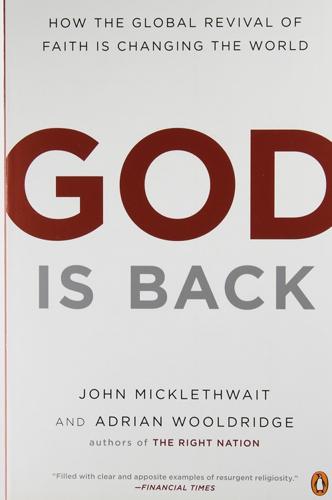
God Is Back: How the Global Revival of Faith Is Changing the World
by
John Micklethwait
and
Adrian Wooldridge
Published 31 Mar 2009
They are being helped by Evangelical businesspeople and foundations, which are pouring money into creating an intellectual infrastructure. The Pew Charitable Trusts, which were cofounded by an Evangelical oil magnate, J. Howard Pew, support some of the best work on religion being done anywhere; they also back Evangelical scholars at universities, including Yale, Emory and NYU. The Lilly Endowment, which was established by the family behind the Eli Lilly pharmaceutical company, has invested more than $171 million in religious studies at over a hundred campuses since 2001.19 The John Templeton Foundation, set up by the late investor, gives away around $60 million a year in an attempt to reconcile religion and science: its annual $1.6 million Templeton prize is one of the biggest in the intellectual world.
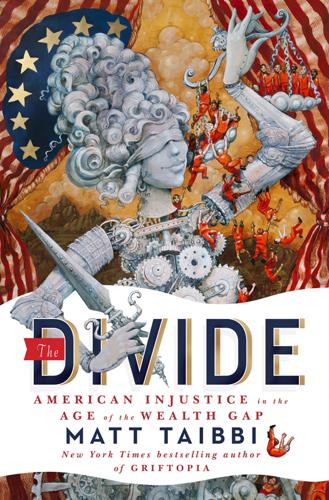
The Divide: American Injustice in the Age of the Wealth Gap
by
Matt Taibbi
Published 8 Apr 2014
No court had ever accepted a Rule 60 motion to reopen such a massive deal. Judge Peck was no boat rocker, either. He was a well-known Wall Street bankruptcy lawyer who had been a partner at the high-priced New York firm of Schulte Roth & Zabel when he was appointed to the bench. He even went to the same law school as Barclays’s famous defense lawyer, David Boies—NYU. Provided the judge adhered to convention, establishment opinion, and his own legal decision, Barclays was in the clear. The Barclays lawyers didn’t spend a whole lot of time contesting the basic facts of the case. They didn’t disagree about the size and timing of the bonuses, or the meaning of paragraph 13, and so on.
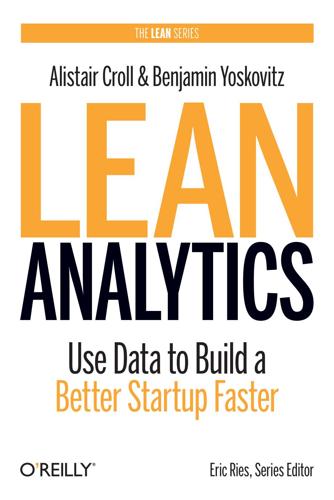
Lean Analytics: Use Data to Build a Better Startup Faster
by
Alistair Croll
and
Benjamin Yoskovitz
Published 1 Mar 2013
That’s not the case. Price is related to what your customers are prepared to pay.” Socialight Discovers the Underlying Metrics of Pricing Socialight was founded in 2005 by Dan Melinger and Michael Sharon, and sold to Group Commerce in 2011. The idea came from work Dan was doing in 2004 with a team at NYU focused on how digital media was changing how people communicated. This was in the early days of social networking: Friendster was the dominant social platform. Socialight’s first incarnation was as a destination social network for Java-enabled mobile phones, which were considered the pinnacle of mobile app technology at the time.
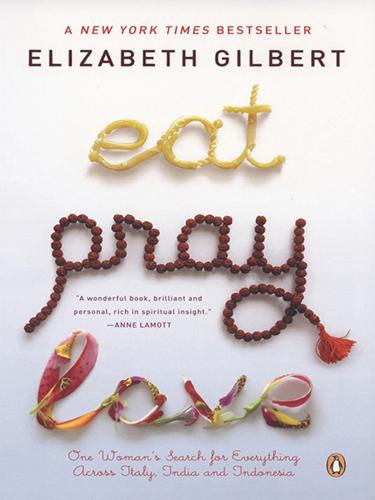
Eat, Pray, Love: One Woman's Search for Everything Across Italy, India and Indonesia
by
Elizabeth Gilbert
Published 1 Jan 2000
So a few days ago, after a particularly yucky session of chanting, I decided to seek advice from my favorite teacher around here—a monk with a wonderfully long Sanskrit name which translates as “He Who Dwells in the Heart of the Lord Who Dwells Within His Own Heart.” This monk is American, in his sixties, smart and educated. He used to be a classical theater professor at NYU, and he still carries himself with a rather venerable dignity. He took his monastic vows almost thirty years ago. I like him because he’s no-nonsense and funny. In a dark moment of confusion about David, I’d once confided my heartache to this monk. He listened respectfully, offered up the most compassionate advice he could find, and then said, “And now I’m kissing my robes.”
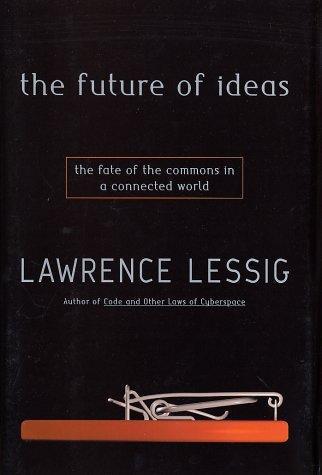
The Future of Ideas: The Fate of the Commons in a Connected World
by
Lawrence Lessig
Published 14 Jul 2001
There is a tragedy of the commons that we will identify here; it is the tragedy of losing the innovation commons that the Internet is, through the changes that are being rendered on top.11 LAYERS THE IDEA of the commons may be obscure, but the notion of “layers” is more easily recognized. The layers that I mean here are the different layers within a communications system that together make communications possible. The idea is taken from perhaps the best communications theorist of our generation, NYU law professor Yochai Benkler.12 As he uses the idea, it helps organize our thought about how any communications system functions. But in organizing our thought, his work helps show something we might otherwise miss. Following the technique of network architects, Benkler suggests that we understand a communications system by dividing it into three distinct “layers.”13 At the bottom is a “physical” layer, across which communication travels.
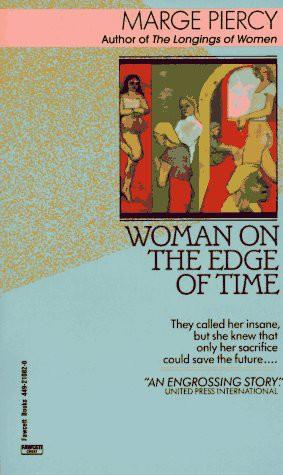
Woman On The Edge Of Time
by
Piercy, Marge
Published 1 Jan 1976
TWENTY Excerpts from the Official History of Consuelo Camacho Ramos * * * State of New York—Department of Mental Hygiene Bellevue Hospital CLINICAL SUMMARY IDENTIFICATION: This 35-year-old Mexican-American Catholic woman separated from her husband Edward for the past three years has one child, Angelina, aged 4. The patient has been on Aid to Dependent Children since last May. PRESENTING PROBLEM: This patient brought her child into emergency at N.Y.U., stating that she had accidentally broken her wrist. The child was bruised. When questioned by caseworker, the patient readily admitted beating her daughter, while drunk or drugged. The patient was incoherent, weeping, and exhibited bizarre behavior. PAST HISTORY: This socially disorganized individual has been in an increasingly deteriorating state since the breakup of her marriage.
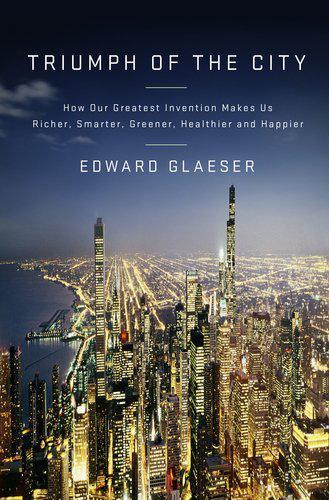
Triumph of the City: How Our Greatest Invention Makes Us Richer, Smarter, Greener, Healthier, and Happier
by
Edward L. Glaeser
Published 1 Jan 2011
If records were instruments, then why not add vocals? Grandmaster Flash and MC Melle Mel are celebrated as the seminal, Bronxbased partnership that brought rapping and mixing records together. Def Jam Records, which began with the urban connections of a Bronx hip-hop DJ (Jazzy Jay), a rap promoter (Russell Simmons), and an NYU student (Rick Rubin) who played in a punk rock band, then brought hip-hop into the mainstream with acts like Run DMC, LL Cool J, and the Beastie Boys. The Division of Labor and Lamb Vindaloo Today an evening’s entertainment in a big city is more likely to mean a dinner at a restaurant than a night at the theater, and since so many more people eat out than go to plays, great restaurants are a more important draw for most cities than great theaters.
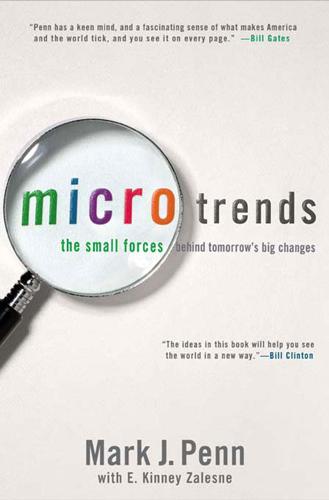
Microtrends: The Small Forces Behind Tomorrow's Big Changes
by
Mark Penn
and
E. Kinney Zalesne
Published 5 Sep 2007
Apart from a place to stand at tee-ball practice—go to any sports activity for upscale preschoolers and you’ll see the parents and the nannies gracefully self-segregated on the sidelines, with the college-educated nannies hovering awkwardly in the middle. But more broadly, the nannies need a community. A way to share both child care tips and boss-related exasperation. Something like a chat room expanding upon The Nanny Diaries, the 2002 best-selling novel (and 2007 forthcoming movie) chronicling an NYU student’s romp as the nanny for a spoiled, dysfunctional New York family. Employers have needs, too. Parents who think they’ve found a gold mine in a nanny who can help their kids with calculus may think twice in a few years, when (a) their private lives are splashed up on the big screen; or (b) their employee has led the drive to publicize industry-wide mistreatment, underpay, and/or overexpectations on the part of employer parents.

Crypto: How the Code Rebels Beat the Government Saving Privacy in the Digital Age
by
Steven Levy
Published 15 Jan 2002
Technically, though, regulations seemed to forbid anyone from placing a crypto concoction somewhere a foreigner might see it. Which was exactly what Bernstein wanted to do. Bernstein’s project was inspired, coincidentally, by something Ralph Merkle had produced at Xerox PARC in 1989: a hash function called Snefru. Written in 1990 when he was an undergraduate at NYU, Bernstein’s addition to Snefru playfully tweaked the illogic of the export codes. He knew that while encryption programs were subject to restrictions, hash functions like Merkle’s (which don’t scramble information per se) were not. So Bernstein wrote a program that transformed the hash function Snefru into something that could perform encryption and decryption.
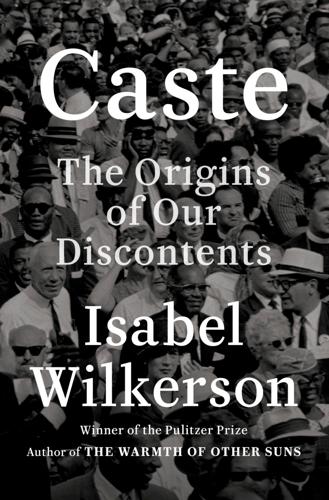
Caste: The Origins of Our Discontents
by
Isabel Wilkerson
Published 14 Sep 2020
New York: Knopf, 1998. ———. Trouble in Mind: Black Southerners in the Age of Jim Crow. New York: Vintage, 1999. Logan, Rayford. The Betrayal of the Negro: From Rutherford B. Hayes to Woodrow Wilson. New York: Collier, 1965. López, Ian Haney. White by Law: The Legal Construction of Race. New York: NYU Press, 1997. Luxenberg, Steve. Separate: The Story of Plessy v. Ferguson, and America’s Journey from Slavery to Segregation. New York: W. W. Norton, 2019. Manu, and Patrick Olivelle. The Law Code of Manu. New York: Oxford University Press, 2004. Marsh, Jason, Rodolfo Mendoza-Denton, and Jeremy A.

The Lonely Century: How Isolation Imperils Our Future
by
Noreena Hertz
Published 13 May 2020
See Mallory Lochlear, ‘Amsterdam will limit Airbnb rentals to thirty days a year’, Engadget, 10 January 2018, https://www.engadget.com/2018-01-10-amsterdam-airbnb-rental-30-day-limit.html; ‘How London hosts can manage around Airbnb’s 90-day limit’, Happyguest, 2 June 2018, http://www.happyguest.co.uk/blog/how-london-hosts-can-manage-around-airbnbs-90-day-limit; Ian Lloyd Neubauer, ‘Countries that are cracking down on Airbnb’, New Daily, 30 August 2019, https://thenewdaily.com.au/life/travel/2019/08/30/countries-crack-down-airbnb/. 32 Joseph Stromberg, ‘Eric Klinenberg on Going Solo’, Smithsonian Magazine, February 2012, p.4, https://www.smithsonianmag.com/science-nature/eric-klinenberg-on-going-solo-19299815/. 33 ‘All by myself’, NYU Furman Center, 16 September 2015, https://furmancenter.org/thestoop/entry/all-by-myself; ‘Cities with the largest percentage of single-person households in the United States in 2018’, Statista, September 2019, https://www.statista.com/statistics/242304/top-10-us-cities-by-percentage-of-one-person-households/. 34 US Census Data, 2010, available at https://census.gov; see also Chuck Bennett, ‘Poll: Half of Manhattan Residents live alone’, New York Post, 30 October 2009, https://nypost.com/2009/10/30/poll-half-of-manhattan-residents-live-alone/.
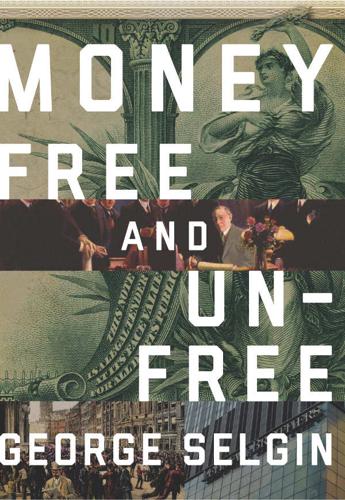
Money Free and Unfree
by
George A. Selgin
Published 14 Jun 2017
Higgs, R. (2009) “Wartime Prosperity? A Reassessment of the U.S. Economy in the 1940s.” Journal of Economic History 52 (1): 41–60. Hodges’ Journal of Finance and Bank Note Reporter (various dates) New York: Edward Hodges. Hoenig, T. M. (2011) “Do SIFIs Have a Future?” Paper presented at the Conference, “Dodd-Frank One Year On,” NYU–Stern School of Business Washington (June 27). Hogan, T. L.; Le, L.; and Salter, A. W. (2015) “Ben Bernanke and Bagehot’s Rules.” Journal of Money, Credit, and Banking 47 (2/3): 333–48. Horwitz, S. (2003) “The Costs of Inflation Revisited.” Review of Austrian Economics 16 (1): 71–95. Hsieh, C.-T., and Romer, C.

The House of Morgan: An American Banking Dynasty and the Rise of Modern Finance
by
Ron Chernow
Published 1 Jan 1990
The case would darkly foreshadow later Wall Street scandals. It started with the hiring of Adrian Antoniu, a Romanian refugee whose family settled in New York in the 1960s. The Antonius had no money and spoke no English; Adrian’s would be a classic success story: after his father died, he supported his mother, worked his way through NYU, and in 1972 graduated from the Harvard Business School. Hired as a Morgan Stanley associate that year, he worried about money. He fretted about his mother’s failing fabric business in Queens and was concerned about making payments on his student loan. Bright and sociable, Antoniu was mesmerized by the new wealth around him and took up a trendy lifestyle, complete with BMW and Park Avenue apartment.
…
“He just looked too good, too well-pressed and too well-groomed,” said an acquaintance.18 Starting in corporate finance, Antoniu was soon drawn into Greenhill’s growing merger operation, where a newcomer could quickly lay his hands on valuable information. In 1973, Antoniu hatched a deal with a former N.Y.U. classmate, James Newman, who worked in a brokerage house. Antoniu would feed names of takeover candidates to Newman, who put up the money to buy the stocks; profits were to be shared equally. He cut similar deals with two other graduates from his business-school class. At first, the bets were touchingly modest.
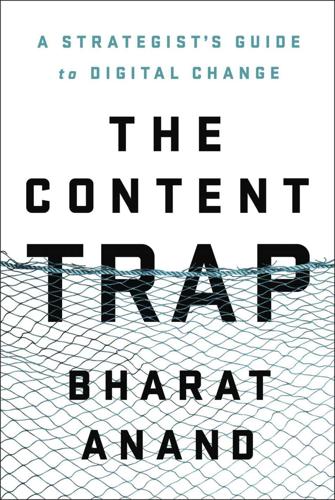
The Content Trap: A Strategist's Guide to Digital Change
by
Bharat Anand
Published 17 Oct 2016
With this information, you can figure out every viewer’s preferences for every channel—finding, in effect, the “demand curve” for each channel. And from there you can figure out how channels would be priced in an à la carte world. The approach was clever, allowing one to go in reverse: from bundled prices to channel preferences, which in turn allowed predictions about à la carte pricing. The NYU and Harvard researchers came to more or less the same conclusion. For example, Yurukoglu, working with Gregory Crawford (then at University of Warwick), found that if channels were offered à la carte, with prices fixed at their levels in the bundled world—the “naïve” à la carte analysis—consumers would benefit.

An Empire of Wealth: Rise of American Economy Power 1607-2000
by
John Steele Gordon
Published 12 Oct 2009
Morse spent endless energy trying to devise a recording device to make the electricity “visible,” only to discover that his code was so simple that it was easily interpreted by ear, and the letters could be simply written down by hand by a trained telegrapher. Morse took on partners—Leonard Gale, a professor at NYU, and Alfred Vail, a gifted mechanic whose father owned a prosperous ironworks in New Jersey—to help refine his system. They applied to the government for funds to build a system large enough to demonstrate the technology’s capability. But the government, typically, could not see the potential, and for six years they got nowhere.
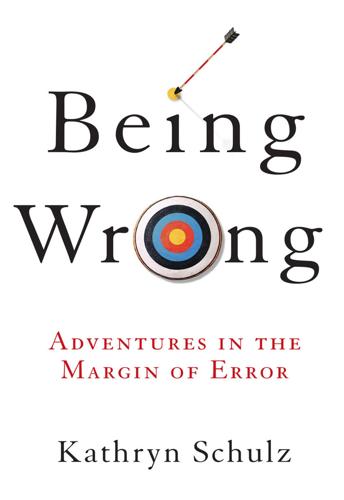
Being Wrong: Adventures in the Margin of Error
by
Kathryn Schulz
Published 7 Jun 2010
The claim that flashbulb memories decline in accuracy at the same rate as more mundane memories was advanced by Jennifer Talarico and David Rubin in their paper “Flashbulb Memories Result from Ordinary Memory Processes and Extraordinary Event Characteristics,” in Olivier Luminet and Antonietta Curci, eds., Flashbulb Memories: New Issues and New Perspectives (Psychology Press, 2009), 79–98. Information about the 9/11 Memory Consortium can be found online at http://911memory.nyu.edu/. In addition to the above-mentioned sources, the information on implanted false memories comes from Trauma and Memory: Reading, Healing, and Making Law, Austin Sarat, Nadav Davidovitch, and Michal Alberstein, eds. (Stanford University Press, 2008). The story of Chris, the boy who was told that he had been lost in a mall as a child, comes from “The Reality of Illusory Memories,” Elizabeth F.

Turning the Tide
by
Noam Chomsky
Published 14 Sep 2015
This and what follows is drawn from an illuminating study by Melvyn Leffler, “The American Conception of National Security and the Beginnings of the Cold War, 1945-48,” AHR Forum, American Historical Review, April 1984. 50. Kolko, Politics of War. 51. Samuel Huntington, in M.J. Crozier, S.P. Huntington and J. Watanuki, The Crisis of Democracy (NYU, 1975), report of the Trilateral Commission. On this commission, see Holly Sklar, ed. Trilateralism (South End, 1980) and TNCW. 52. Shoup and Minter, Imperial Brain Trust; see TNCW for a brief review. See Robert Schulzinger, The Wise Men of Foreign Affairs (Columbia, 1984), a much more superficial conventional history that omits the crucial material Shoup and Minter discuss while citing the “official rebuttal” by William Bundy, which condemned them for “selectivity” (Foreign Affairs, October, 1977).
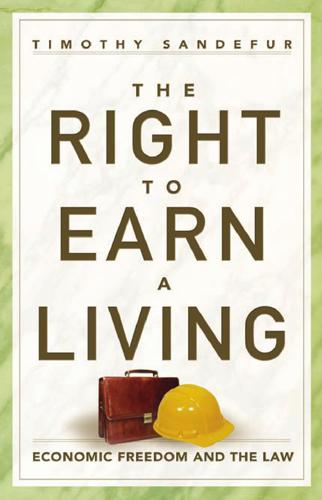
The Right to Earn a Living: Economic Freedom and the Law
by
Timothy Sandefur
Published 16 Aug 2010
Sitz: A Roadblock to Meaningful Judicial Enforcement of Constitutional Rights,” Hastings Law Journal 42 (1991): 285–390, 288, n. 15. 44. See, for example, Richard A. Epstein, “The ‘Necessary’ History of Property and Liberty,” Chapman Law Review 6 (2003): 1–28. 45. Randy E. Barnett, “What’s So Wicked about Lochner?” NYU Journal of Law & Liberty 1 (2005): 325–33. 46. See, for example, Clint Bolick, Leviathan: The Growth of Local Government and the Erosion of Liberty (Stanford, CA: Hoover Institution Press, 2004). 47. The scholarly attacks on Slaughterhouse are many. See Kimberly Shankman and Roger Pilon, “Reviving the Privileges or Immunities Clause to Redress the Balance among States, Individuals, and the Federal Government,” Texas Review of Law and Politics 3 (1998): 1–48; David R.
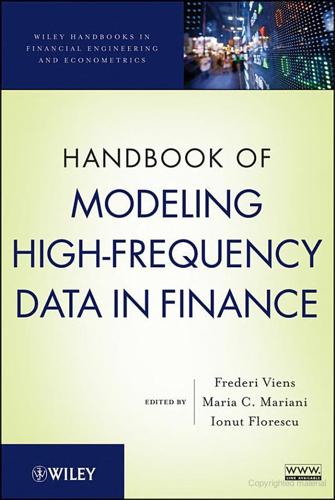
Handbook of Modeling High-Frequency Data in Finance
by
Frederi G. Viens
,
Maria C. Mariani
and
Ionut Florescu
Published 20 Dec 2011
Logistic regression, adaboost and Bregman distances. Mach Learn 2004;48:253–285. Collins R, Green RD. Statistical methods for bankruptcy forecasting. J Econ Bus 1982;34:349–354. Creamer G. Using link mining for investment decisions: extensions of the Black Litterman model. Paper presented at 2nd. Workshop on Information in Networks, NYU, New York; 2010. Creamer G, Freund Y. A boosting approach for automated trading. J Trading 2007;2:84–95. References 71 Creamer G, Freund Y. Automated trading with boosting and expert weighting. Quant Finance 2010a;10:401–420. Creamer G, Freund Y. Learning a board balanced scorecard to improve corporate performance.
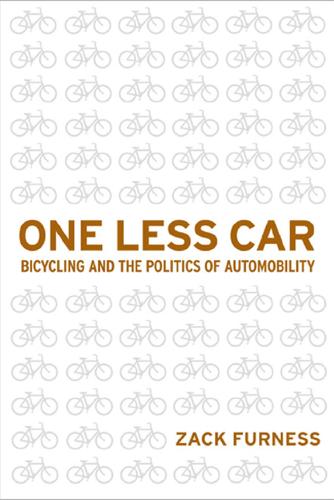
One Less Car: Bicycling and the Politics of Automobility
by
Zack Furness
and
Zachary Mooradian Furness
Published 28 Mar 2010
Moreover, the New York Daily News (whose account paints a rather different picture of the incident) reported that Cidron drove for a full mile along the path before hitting ng with “such force that the victim’s bicycle and one of his black Converse all Stars flew onto the adjacent West Side Highway.” indeed, ng’s body was thrown fifty feet from the initial point of impact. See Kerry Burke and Carrie Melago, “DWi Kills nyU Grad on Bike, Cops Say,” New York Daily News, December 2, 2006. Statistics on the culpability of cyclists in auto-bicycle accidents vary widely and are highly questionable for several reasons including, but certainly not limited to, the accuracy of the police report (if/when one is filed), the high number of accidents not reported to police, the production of statistics based solely on accident report checklists as opposed to police testimony (if one is even available), and, most important, the gray areas often surrounding what constitutes “right of way.”
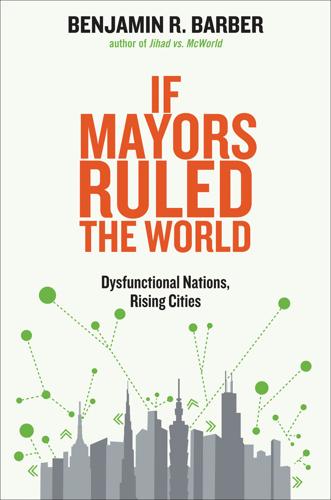
If Mayors Ruled the World: Dysfunctional Nations, Rising Cities
by
Benjamin R. Barber
Published 5 Nov 2013
Flanagan wants to “bring mayors back in” to the political debate and depict the features that afford them strong leadership. 6. These include the London School Economics, LSE Cities, http://www2.lse.ac.uk/LSECities/home.aspx; City University of New York, Center for Urban Research, http://www.urbanresearch.org/; New York University, Center for Urban Science and Progress, http://www.nyu.edu/about/; and the Globalization and World Cities research network (GaWC), http://www.iboro.ac.uk/gawc/. 7. “105 Minutes with Boris Johnson,” interview with Carl Swanson, New York Magazine, June 17, 2012. 8. Sarah Lyall, “London Journal,” New York Times, April 23, 2012. Livingstone, a former mayor, faced Johnson, the current mayor and “more recognizable than anyone in British politics, including Prime Minister David Cameron” in 2012 in a battle not so much of political parties as of personalities. 9.

Consumed: How Markets Corrupt Children, Infantilize Adults, and Swallow Citizens Whole
by
Benjamin R. Barber
Published 1 Jan 2007
My new organization under CivWorld, called The Paradigm Project, is designed to facilitate global thinking among internationalists looking for ways to encourage collaboration across borders. See www.civworld.org. 62. Held, The Ethics of Care, p. 119. 63. Nancy Kranich, “The Information Commons: A Public Policy Report,” Free Expression Policy Project, Brennan Center for Justice at NYU School of Law, 2004, p. 1, available on-line at www.fepproject.org (italics as in original). Also see John Willinsky, The Access Principle: The Case for Open Access to Research and Scholarship (Cambridge, Mass.: MIT Press, 2006).
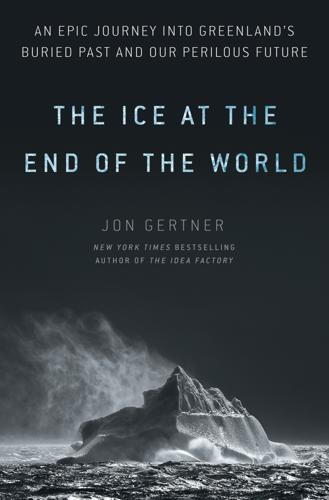
The Ice at the End of the World: An Epic Journey Into Greenland's Buried Past and Our Perilous Future
by
Jon Gertner
Published 10 Jun 2019
“And by some miracle of nature, the halibut cover the bottom half of the ice fjord.” That means they swim in the icy depths down to three thousand feet or so. Using a satellite network, the seals phone in their data several times a day—information that is routed to a rooftop antenna near Holland’s office at NYU, in Manhattan’s Greenwich Village. “The cost per measurement is really small,” Holland says. “And the data—well, I don’t know if any technology can compete with seals for that purpose.” * * * — One afternoon, a pilot arrives in a small helicopter, and Holland takes short flights across the fjord, to Camp Fox and Camp Huge Rabbit, to upgrade the seismic instruments.
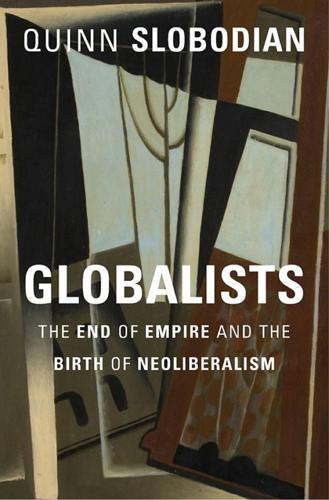
Globalists: The End of Empire and the Birth of Neoliberalism
by
Quinn Slobodian
Published 16 Mar 2018
Patricia Clavin, Securing the World Economy: The Reinvention of the League of Nations, 1920–1946 (New York: Oxford University Press, 2013), 44. 61. Haberler, The Theory of International Trade, 384; emphasis in the original. 62. Ludwig Mises, “Die Rückwirkung der Entwicklung der Weltwirtschaft auf die Ausgestaltung der Sozialpolitik,” Statistische Monatsschrift 10 (1905): 949. 63. Ludwig Mises, Nation, State, and Economy (1919) (New York: NYU Press, 1983), 93. 64. Dennis, “Tariff Walls Block Europe’s Recovery.” 65. “How Can Austria Be Saved? An Economic Policy Program for Austria,” Die Börse, February 17, 1921, in Richard Ebeling, Selected Writings of Ludwig von Mises, vol. 2 (Indianapolis: Liberty Fund, 2002), 248–250. 66. Hörtlehner, “Ludwig von Mises,” 142. 67.

Robot Rules: Regulating Artificial Intelligence
by
Jacob Turner
Published 29 Oct 2018
Nilsson, Introduction to Machine Learning: An Early Draft of a Proposed Textbook (2015), https://ai.stanford.edu/~nilsson/MLBOOK.pdf, accessed 1 June 2018. 117Samuel is widely quoted as the source of this definition, but where, when and indeed whether he ever wrote or said it remains obscure. See, for example, Andres Munoz, “Machine Learning and Optimization”, Courant Institute of Mathematical Sciences (2014), 1, https://www.cims.nyu.edu/~munoz/files/ml_optimization.pdf, accessed 1 June 2018. 118Report: Evolvable hardware, “Machines with Minds of Their Own”, The Economist, 22 May 2001, http://www.economist.com/node/539808, accessed 1 June 2018. 119Andrew Ng, “CS229 Lecture Notes: Supervised Learning”, Stanford University, http://cs229.stanford.edu/notes/cs229-notes1.pdf, accessed 1 June 2018.

Poking a Dead Frog: Conversations With Today's Top Comedy Writers
by
Mike Sacks
Published 23 Jun 2014
Sort of a self-imposed isolation based on my circumstances, but I actually enjoyed it. Maybe I would have been like that no matter what. I’m still like that. How did you get the writing job for Letterman in 1985? Well, Dave’s probably the most important person in my life. He gave me my career—which I later set fire to—and basically gave me a reason to live. I was attending NYU film school and came on to Late Night a couple of years after the show started. I just cold-called and asked if they had any internships available, and my timing was lucky. I was able to work for Steve O’Donnell, who was the head writer at the time. He’s a great guy and was hugely supportive. He bought me a lot of meals in those intern days.

Cities Under Siege: The New Military Urbanism
by
Stephen Graham
Published 30 Oct 2009
This latter project was shaped heavily by concern that roads allow for the speedy evacuation of urban centres in the event of nuclear war. 117 Packer, ‘Becoming Bombs’, 385; see also IHS Aero and Defense, Future Combat Systems (FCS), white paper, March 2007, available at aerodefense.ihs.com. 118 Ibid. 119 See Steve Conner, ‘Britain Will Be First Country to Monitor Every Car Journey’, Independent, 22 December 2005. 120 Ibid. 121 Maureen Sirhal, ‘Homeland Security Chief Touts Benefits of “E-Z-Pass” System’, National Journal’s Technology Daily, 13 February 2002. 122 Henry Peyrebrune and Allison L. C. de Cerreño, ‘Security Applications of Intelligent Transportation Systems: Reflections on September 11 and Implications for New York State’, report to the New York state legislature by the NYU Wagner Rudin Center for Transportation Policy and Management, 16 July 2002. 123 Noah Shachtman, ‘NYC is Getting a New High-Tech Defense Perimeter. Let’s Hope it Works’, Wired 16: 5, 2008. 124 See Cara Buckley, ‘New York Plans Surveillance Veil for Downtown, New York Times, 9 July 2007. 125 Ibid. 126 Steven Josselson, ‘New York’s “Ring of Steel”’, Gotham Gazette, 4 September 2007. 127 Defense Advanced Research and Projects Agency, ‘What Is Grand Challenge?’

Data and Goliath: The Hidden Battles to Collect Your Data and Control Your World
by
Bruce Schneier
Published 2 Mar 2015
Squire (Jan 2000), “Memory distortions develop over time: Recollections of the O. J. Simpson trial verdict after 15 and 32 months,” Psychological Science 11, http://psycnet.apa.org/psycinfo/2000-15144-007. Jennifer M. Talarico and David C. Rubin (Sep 2003), “Confidence, not consistency, characterizes flashbulb memories,” Psychological Science 14, http://911memory.nyu.edu/abstracts/talarico_rubin.pdf. Andrew R. A. Conway et al. (Jul 2008), “Flashbulb memory for 11 September 2001,” Applied Cognitive Psychology 23, http://onlinelibrary.wiley.com/doi/10.1002/acp.1497/abstract. Even minor infractions: Michelle Natividad Rodriguez and Maurice Emsellem (Mar 2011), “65 million need not apply: The case for reforming criminal background checks for employment,” National Employment Law Project, http://www.nelp.org/page/-/65_Million_Need_Not_Apply.pdf.
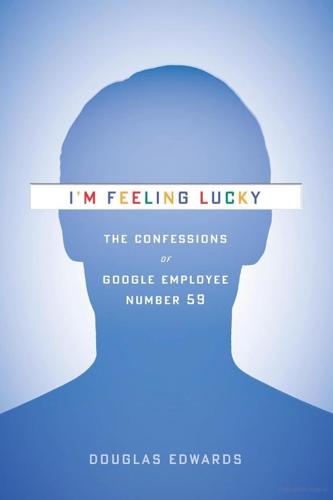
I'm Feeling Lucky: The Confessions of Google Employee Number 59
by
Douglas Edwards
Published 11 Jul 2011
Sergey wasn't convinced; he just didn't like repeating himself. So he turned to Susan instead. Susan didn't argue; she started looking for an artist to execute Sergey's vision. She found illustrator Ian Marsden and put him to work. In May 2000, Ian created the first Google Doodle.† It featured—surprise, surprise—aliens making off with our logo. NYU professor Ken Perlin created a bouncing heart applet for Valentine's Day and a bouncing-bunny game for Easter. Larry showed his gratitude with an offer of Google stock sufficient to make the code Ken sent us, line for line, quite possibly the most expensive ever written. Our users loved the randomness of the logo artwork and sent us dozens of appreciative emails.
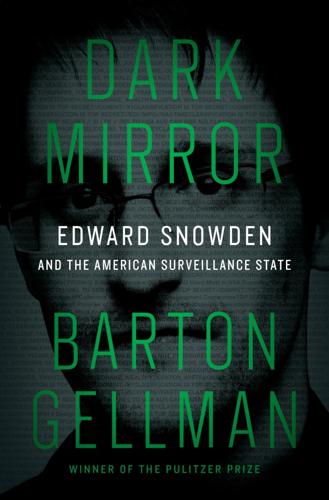
Dark Mirror: Edward Snowden and the Surveillance State
by
Barton Gellman
Published 20 May 2020
He smiled and said, “Actually, I kind of did.” He had branded Temple-Raston a patsy in a recent column about reporters who swallow U.S. intelligence claims without proof. See Glenn Greenwald, “Government Accusations: No Evidence Needed,” Salon, November 1, 2010, www.salon.com/2010/11/01/awlaki_2/. The NYU panel took place on November 5, 2010. The video, uploaded three days later, is at https://youtu.be/nyJU2Ceq83s. huge scoop about secret overseas prisons: See Dana Priest and Julie Tate, “CIA Holds Terror Suspects in Secret Prisons,” Washington Post, November 2, 2005, http://wapo.st/1fk1wVN. seized the press run, and burned it: See “Smiles or Tears for Town Crier?
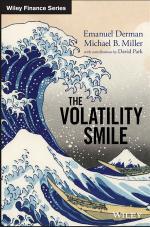
The Volatility Smile
by
Emanuel Derman,Michael B.Miller
Published 6 Sep 2016
Mathematical Finance 7 (2): 127–154. Breeden, D. T., and R. H. Litzenberger. 1978. “Prices of State-Contingent Claims Implicit in Options Prices.” Journal of Business 51, no. 4 (October): 621–651. Carr, Peter. 1999. “Frequently Asked Questions in Option Pricing Theory.” Courant Institute, New York University. www.math.nyu.edu/research/carrp/ papers/pdf/faq2.pdf. Carr, Peter, Katrina Ellis, and Vishal Gupta. 1998. “Static Hedging of Exotic Options.” Journal of Exotic Options 53 (3): 1165–1190. Carr, Peter, and Dilip Madan. 1998. “Towards a Theory of Volatility Trading.” In Volatility: New Estimation Techniques for Pricing Derivatives, edited by Robert Jarrow, 417–427.
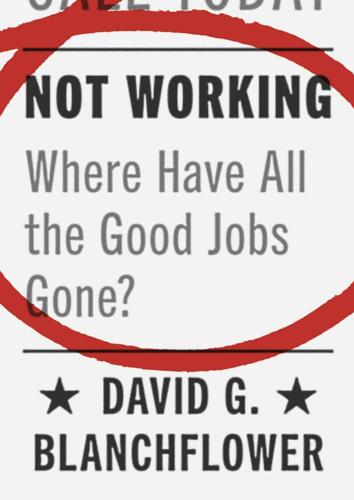
Not Working: Where Have All the Good Jobs Gone?
by
David G. Blanchflower
Published 12 Apr 2021
Princeton: Princeton University Press. Friedman, M. 1953. Essays in Positive Economics. Chicago: University of Chicago Press. ———. 1968. “The Role of Monetary Policy.” American Economic Review 58 (1): 1–17. Friedman, M., A. Grawert, and J. Cullen. 2016. “Crime in 2016: Updated Analysis.” Brennan Center for Justice, NYU School of Law. https://www.brennancenter.org/sites/default/files/analysis/Crime_in_2016_Updated_Analysis.pdf. Fry, R. 2016. “For First Time in Modern Era, Living with Parents Edges Out Other Living Arrangements for 18- to 34- Year-Olds.” Pew Research Center, May. Fry, R., and A. Brown. 2016. “In a Recovering Market, Homeownership Rates Are Down Sharply for Blacks, Young Adults.”

The State and the Stork: The Population Debate and Policy Making in US History
by
Derek S. Hoff
Published 30 May 2012
Pearl had secured funding for the IUSIPP from the Milbank Memorial Fund, which provided $10,000 annually from 1929 to 1931.134 But money promised by the Social Science Research Council and the National Research Council to launch the US committee did not materialize because of a conflict between Pearl and mathematician Edwin Wilson, president of the SSRC.135 In June 1931, Pearl resigned as president of the IUSIPP, and several demographers involved with the languishing US committee, again spurred on by Margaret Sanger (and again funded by Milbank), created the PAA as a virtually parallel organization. At this juncture, the debate over scientific inquiry versus social action came to a head once again, as the various factions of population discourse at the time (population scientists, eugenicists, Malthusians, and birth controllers) competed to chart the path of the new group. NYU sociologist Henry Pratt Fairchild, the organization’s first president, nominated Margaret Sanger to be vice-president, but this bid failed because Dublin and others did not consider her a rigorous scientist. In the end, the neutral-social-science camp prevailed.136 “We went to organizational lengths beyond all lengths to keep out all but the purest of the academically pure,” Frank Notestein recalled years later.137 Then again, Notestein painted this moment in very generous terms, as Fairchild was recently president of the American Eugenics Society.

Amazon Unbound: Jeff Bezos and the Invention of a Global Empire
by
Brad Stone
Published 10 May 2021
Listing these likely critics, the paper cited the advocacy organization Good Jobs First, which promoted corporate and government accountability in economic development, and the Institute for Local Self-Reliance, which supported the interests of communities and small businesses against chain stores and conglomerates. It also mentioned by name NYU professor Scott Galloway, who had charged that HQ2 was a “hunger games beauty contest” preordained to land “where Jeff wants to spend more time. My bet is the NYC metro area,” as well as Lina Khan, who had authored an article for the Yale Law Journal accusing Amazon of anticompetitive behavior and the nation’s antitrust laws of being woefully out of date.
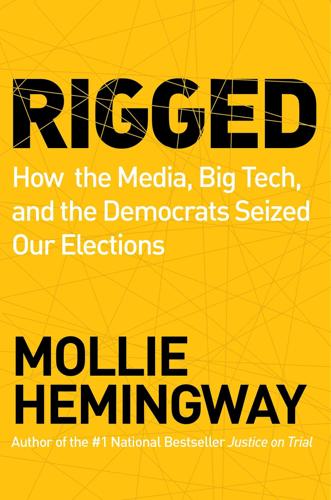
Rigged: How the Media, Big Tech, and the Democrats Seized Our Elections
by
Mollie Hemingway
Published 11 Oct 2021
Even the liberal Washington Post admitted in 2020 that the group, while technically nonpartisan, was “aligned with efforts to defeat the president.”84 “Even though the group was officially nonpartisan, for tax purposes, there was no secret that the goal of all its efforts was to generate new votes for Democrats,” wrote Sasha Issenberg in The Victory Lab: The Secret Science of Winning Campaigns.85 Ball also highlighted All Voting Is Local, a left-leaning get-out-the-vote operation.86 Hannah Fried, the organization’s national campaign director, worked on Obama’s re-election campaign and was a deputy general counsel on the 2016 Hillary Clinton campaign. That group focused its 2020 efforts not nationwide, but on the same states Democrats had identified as their primary targets: Arizona, Georgia, Nevada, Pennsylvania, Florida, Michigan, Ohio, and Wisconsin. Ball also highlighted the Brennan Center for Justice at NYU, another group that is technically nonpartisan but is in practice fiercely liberal. The center was named for former Supreme Court justice William Brennan, known as the father of judicial activism, and has a history of supporting far-left judicial activism. It would help groups file lawsuits when needed.
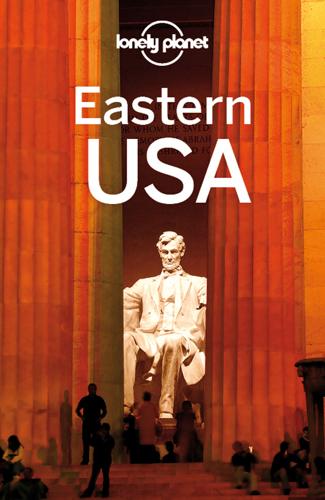
Eastern USA
by
Lonely Planet
Known by most visitors as ‘Greenwich Village,’ although that term is not used by locals, it has narrow streets lined with well-groomed and high-priced real estate, as well as cafes and restaurants, making it an ideal place to wander. Washington Square Park & Around PARK This park began as a ‘potter’s field’ – a burial ground for the penniless – and its status as a cemetery protected it from development. It is now a completely renovated and incredibly well-used park, especially on the weekend. Children use the playground, NYU students catch some rays and friends meet ‘under the arch,’ the renovated landmark on the park’s northern edge, designed in 1889 by society architect Stanford White. Dominating a huge swath of property in the middle of the Village, New York University, one of the largest in the country, defines the area around the park and beyond architecturally and demographically.
…
Turn right on Minetta Lane and right on MacDougal St to find the historic Minetta Tavern, which opened as a speakeasy in 1922, its walls now lined with photos of celebs who have visited. Also on this block is the former site of the Folklore Center, where Izzy Young established a hangout for folk artists including Dylan, who found his first audience at the music venue Cafe Wha?. Double back along MacDougal to the current Research Fellows & Scholars Office of the NYU School of Law, the former site of the Liberal Club, a meeting place for free thinkers, including Jack London and Upton Sinclair, founded in 1913. Beyond here is the southwest entrance to Washington Square Park, which has a long history as a magnet for radicals. Wrap up the tour by leaving the park at the iconic arch and head up Fifth Ave.

WTF?: What's the Future and Why It's Up to Us
by
Tim O'Reilly
Published 9 Oct 2017
Retrieved April 2, 2017, http://piketty. pse.ens.fr/files/capital21c/en/media/Time%20-%20Capital%20in%20the %20Twenty-First%20Century.pdf. 247 “‘sustainable prosperity’”: Lazonick, “Stock Buybacks,” 2. 247 more of the compensation moved to stock: Foroohar, Makers and Takers, 280. 247 options had to be disclosed, but not valued: Hal Varian, “Economic Scene,” New York Times, April 8, 2004, retrieved April 2, 2017, http://people.ischool.berkeley. edu/~hal/people/hal/NYTimes/2004-04-08.html. 248 “profit extracted through harm to others”: Umair Haque, “The Value Every Business Needs to Create Now,” Harvard Business Review, July 31, 2009, https://hbr.org/2009/07/the-value-every-business-needs. 248 disinformation firms used by the tobacco industry: Naomi Oreskes and Erik Conway, Merchants of Doubt (New York: Bloomsbury Press, 2011). 249 “left holding the bag”: George Akerlof and Paul Romer, “Looting: The Economic Underworld of Bankruptcy for Profit,” Brookings Papers on Economic Activity 2 (1993), http://pages.stern.nyu. edu/~promer/Looting.pdf. 250 “The customer is the foundation of a business”: Peter F. Drucker, The Practice of Management (New York: Routledge, 2007), 31–32. 251 “a dumb idea”: Francesco Guerrera, “Welch Condemns Share Price Focus,” Financial Times, March 12, 2009, https://www.ft.com/content/294ff1f2-0f27-11de-ba10-0000779fd2ac. 252 “now serves mainly itself”: Rana Foroohar, “American Capitalisms’s Great Crisis,” Time, May 11, 2016, http://time.com/4327419/american-capitalisms-great-crisis/.
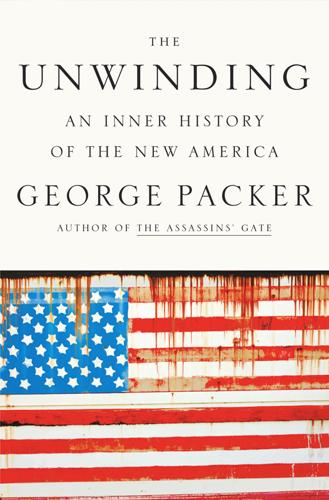
The Unwinding: An Inner History of the New America
by
George Packer
Published 4 Mar 2014
Hutton had been writing checks for sums it couldn’t cover and transferring the money between accounts, using the funds for a day or two as interest-free loans and making millions of dollars on the float. Up in Washington, Joe Biden of the Senate Judiciary Committee was on the case. He began going on TV talking about the growing epidemic of white-collar crime on Wall Street and the failure of the Reagan Justice Department to police it. In a speech at NYU he said, “People believe that our system of law and those who manage it have failed, and may not even have tried, to deal effectively with unethical and possibly illegal misconduct in high places.” Reagan was in his senescent second term, his administration riddled with corruption, and Biden was setting himself up to go after the big prize.
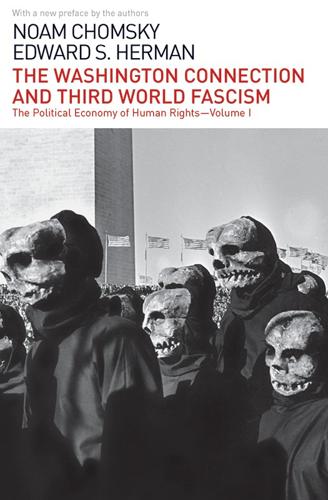
The Washington Connection and Third World Fascism
by
Noam Chomsky
Published 24 Oct 2014
After its critics are silenced, a government can prepare international aggression, whip up a war psychosis among its citizens and secretly increase military expenditures at the expense of social needs.” 2. See M.J. Crozier, S.P. Huntington, and Joji Watanuki, The Crisis of Democracy: Report on the Governability of’ Democracies to the Trilateral Commission. NYU Press, 1975. For discussion, see N. Chomsky, “Human Rights” and American Foreign Policy, Spokesman, 1978. 3. See especially Richard A. Falk, The Vietnam War and International Law, Princeton University Press, 1968, 2 vols. 4. See Seymour M. Hersh, Chemical and Biological Warfare, Bobbs-Merrill, 1968; Eric Prokosch, “Conventional Killers,” The New Republic, 1 November 1969; AFSC-Narmic, Weapons for Counterinsurgency, 1970; Prokosch, The Simple Art of Murder: Anti-Personnel Weapons and their Development, AFSC-Narmic, 1972. 5.
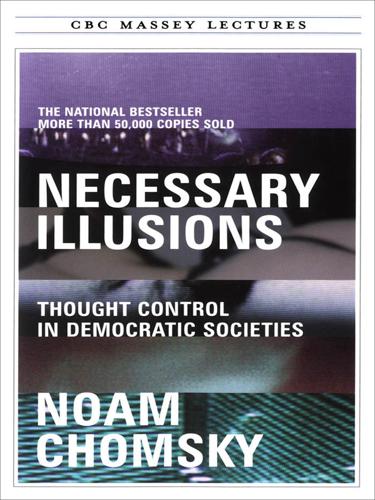
Necessary Illusions
by
Noam Chomsky
Published 1 Sep 1995
Such options indeed challenge corporate oligopoly and the rule of the wealthy generally. Therefore, they can only be interpreted as “state control” by someone who regards it as unthinkable that the general public might, or should, gain access to the media as a step towards shaping their own affairs. 33. Appleby, Capitalism and a New Social Order (NYU, 1984, 73). On the absurd George Washington cult contrived as part of the effort “to cultivate the ideological loyalties of the citizenry” and thus create a sense of “viable nationhood,” see Lawrence J. Friedman, Inventors of the Promised Land (Knopf, 1975, chapter 2). Washington was a “perfect man” of “unparalleled perfection,” who was raised “above the level of mankind,” and so on.

MacroWikinomics: Rebooting Business and the World
by
Don Tapscott
and
Anthony D. Williams
Published 28 Sep 2010
In a 2010 study, the Pew Internet Project has found that people in their twenties exert more control over their digital reputations than older adults, more vigorously deleting unwanted posts and limiting information about themselves.13 This supports our findings and those of others who have argued that young people who have grown up digital are confronted with the privacy issue at an earlier age and naturally come to grips with it earlier.14 Helen Nissenbaum, an NYU professor of culture, media, and communication, came to the same conclusion in her book Privacy in Context, explaining that teenagers naturally learn to be protective of their privacy as they navigate the path to adulthood.15 Managing the Dark Side The list of concerns goes on and the skeptics are ascendant.
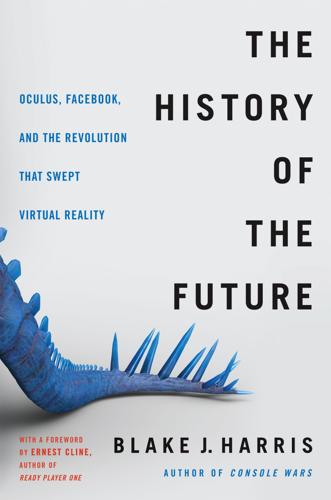
The History of the Future: Oculus, Facebook, and the Revolution That Swept Virtual Reality
by
Blake J. Harris
Published 19 Feb 2019
“Palmer,” Resnick replied, “we had an entire conversation where you discussed this with me and at no time said that we couldn’t use your name . . . I would point you to journalistic ethics guides which dictate that: ‘These deals must be agreed to beforehand, never after. A source can’t say something then claim it was “off the record.” That’s too late.’” Resnick ended his email with a link to the NYU Journalism Handbook for Students. Three hours later, Resnick’s article about Luckey and Nimble America—co-authored with editor Ben Collins—was published on The Daily Beast with the following juicy-but-false headline: The Facebook Billionaire Secretly Funding Trump’s Meme Machine Palmer Luckey—founder of Oculus—is funding a Trump group that circulates dirty memes about Hillary Clinton.3 BACK AT FACEBOOK—AS THE STORY BEGAN TO SPREAD AROUND CAMPUS—Oculus’ head of communications spoke briefly with Luckey and then sent an update to a handful of execs: FROM: Tera Randall SUBJECT: Palmer Trump Story The story from Palmer’s conversations with the reporter about his donations to Trump just hit.
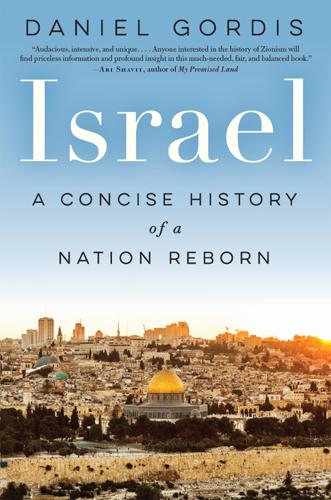
Israel: A Concise History of a Nation Reborn
by
Daniel Gordis
Published 17 Oct 2016
In the decades that followed, other suggestions included Uasin Gishu in East Africa (1903–1905), the Benguela Plateau in Angola (1907–1914), Madagascar (1933–1942), Port Davey, Tasmania (1940–1945), and Suriname (1938–1948). It was only Israel’s creation in 1948 that put an end to these seemingly endless searches for a new Jewish home. (Adam Rovner, In the Shadow of Zion: Promised Lands Before Israel [New York: NYU Press, 2014].) * The number of Zionist writers for whom this was their religious and intellectual trajectory is astounding. The list includes, among numerous others, Max Nordau, A. D. Gordon, Eliezer Ben-Yehuda, Micha Josef Berdyczewski, Ahad Ha’am, Chaim Weizmann, Yosef Brenner, and Berl Katznelson, all of whom figure later in the book
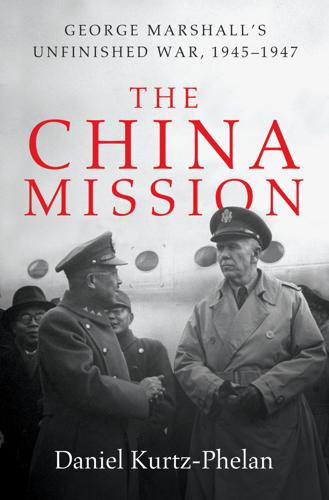
The China Mission: George Marshall's Unfinished War, 1945-1947
by
Daniel Kurtz-Phelan
Published 9 Apr 2018
William Chan was a tremendous fellow traveler and intellectual partner—and deserves many additional thank-yous for his ongoing friendship and advocacy. At New America, I’m thankful to Steve Coll, Anne-Marie Slaughter, Andres Martinez, Peter Bergen, Becky Shafer, and Kirsten Berg for building an unparalleled infrastructure and fostering an unparalleled environment for writers trying to make progress on first books. At NYU, Mike Williams supported the final stages. Jose Fernandez and Andrea Gabor lent me a beautiful place to write. A long list of friends, mentors, and colleagues talked through or read some or all of the manuscript (in a few cases more than once): Alan Schoenfeld, Patrick Radden Keefe, Mira Rapp-Hooper, Kurt Campbell, Harold Tanner, Gideon Rose, Jonathan Tepperman, Stuart Reid, Rebecca Lissner, Jacob Freedman, Jake Sullivan, John Gaddis, Mike Fuchs, Marc Dunkelman, Katharine Smyth, Dan Brook, Richard Feinberg, Tom Meaney, Dan Schwerin, Jim Kurtz-Phelan, Jared Leboff, Chris Heaney, Ryan Floyd, Liaquat Ahamed, Joshua Cooper Ramo, Arne Westad, Barry Machado, Mark Stoler, and Paul Barron.
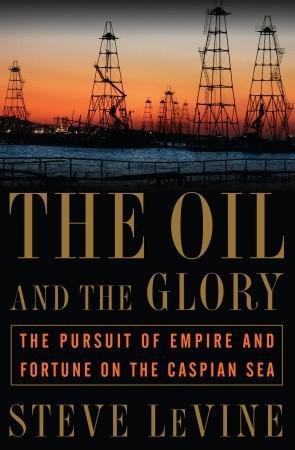
The Oil and the Glory: The Pursuit of Empire and Fortune on the Caspian Sea
by
Steve Levine
Published 23 Oct 2007
“a stylish quality”: [London] Guardian, October 15, 1990. “had to walk my pug”: Author interview with Robert Finn, August 9, 1999. “spillage”: Author interview with Hamilton. “eyes started itching”: Author interview with Paolo Lembo, February 1997. “tanks rolled over”: Thomas de Waal, Black Garden (New York: NYU Press, 2003), 93. “out of habit”: Keller, The New York Times, February 18, 1990. “Armenians were thrown”: De Waal, Black Garden, 90. “a seat at the table”: Author interview with Steve Remp, September 6, 1996. Out came his personal: Khoshbakht Yusufzade took the photograph from his office safe, November 28, 1996.
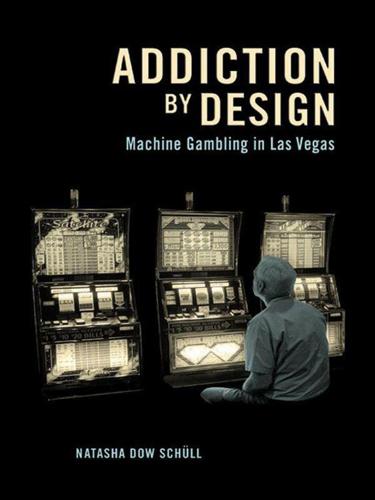
Addiction by Design: Machine Gambling in Las Vegas
by
Natasha Dow Schüll
Published 15 Jan 2012
Peter’s enthusiasm, support, and guidance were particularly important. New York University’s vibrant International Center for Advanced Study, headed by Tim Mitchell and Thomas Bender, was the next intellectual home for the project. Emily Martin and Rayna Rapp’s Science Studies Workshop, also based at NYU, was a forum for stimulating exchanges with peers during my postdoctoral years in New York. Mary Murrell at Princeton University Press first took on my manuscript, turning it over to her successor, Fred Appel, when she realized that she should be writing books herself. Reviewers Lucy Suchman, Emily Martin, and Vincent Crapanzano gave invaluable feedback on the first version of the manuscript.

The Billionaire's Apprentice: The Rise of the Indian-American Elite and the Fall of the Galleon Hedge Fund
by
Anita Raghavan
Published 4 Jun 2013
But he also knew there was little chance of him being hired by a white-shoe firm in New York without a degree from a top-tier law school, so he did what pragmatic Indians did. He went back to law school and graduated among the top of his class with a degree from New York University in tax law. If there ever was a guarantee of steady employment, it was a graduate degree in tax law. Recruited directly out of NYU by the prestigious firm Cahill Gordon & Reindel, Wadhwa navigated the grueling law associate gauntlet and later moved on to the even tonier Skadden, Arps, Slate, Meagher & Flom. The work proved intellectually challenging but soul crushing. The hours he spent helping investment banks like Merrill Lynch and Goldman Sachs design esoteric financial products to peddle to pension funds for ordinary Americans left him queasy.
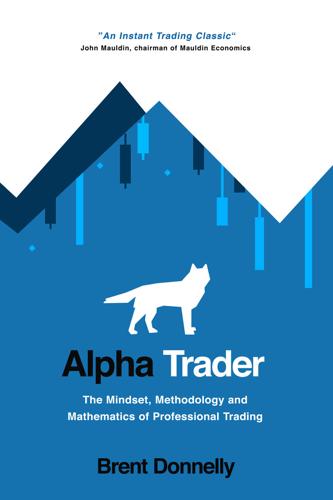
Alpha Trader
by
Brent Donnelly
Published 11 May 2021
Once you get that feeling of excitement, the in the zone moments where the P&L piles up so fast you can’t believe your eyes—you want that feeling again. Problem is, you can’t get that feeling by trading low probability set ups. Instead, those low EV trades give you that “why did I do that” feeling. You can’t trade to chase a rush. Your only goal each day should be to maximize P&L. In 2018, Stephen Brown of NYU et al. conducted a cool study where they dug through vehicle ownership records and found the make and model of car driven by more than 1,000 hedge fund managers76. Then, they compared fund performance to car type and found this intuitive result: Using a novel data set of automobile purchases by hedge fund managers, this paper exploits cross-sectional variation in vehicle attributes to investigate the effects of sensation seeking on investment behavior.
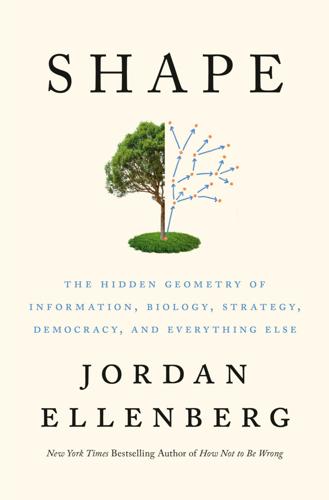
Shape: The Hidden Geometry of Information, Biology, Strategy, Democracy, and Everything Else
by
Jordan Ellenberg
Published 14 May 2021
And we’re trying to locate in that infinite-dimensional abstract haystack a decision-making protocol better than anything Marion Tinsley’s or Lee Se-dol’s experience-sharpened intuition could devise. That sounds hard. How do we proceed? It all comes down to that crudest and most powerful of methods, trial and error. Let’s see how it works. Chapter 7 Artificial Intelligence as Mountaineering My friend Meredith Broussard, an NYU professor with an expertise in machine learning and the societal impact of same, was on television not long ago, tasked with explaining to a national audience, in two minutes or so, what artificial intelligence is and how it works. It’s not killer robots, she explained to the anchors, or passionless androids whose mental powers dwarf our own.

Manias, Panics and Crashes: A History of Financial Crises, Sixth Edition
by
Kindleberger, Charles P.
and
Robert Z., Aliber
Published 9 Aug 2011
Wimmer, ‘The Gold Crisis of 1869: a Problem in Domestic Economic Policy and International Trade Theory’ (PhD diss., University of Chicago, 1968); US Congress, House, Gold Panic Investigation, 41st Cong., 2nd sess., H. Rept. 31, 1 March 1870. 54. Wirth, Handelskrisen, p. 464. 55. US Congress, House, Gold Panic Investigation, p. 132. 56. C.P. Kindleberger, ‘The Panic of 1873’, paper presented to the NYU-Salomon Brothers Symposium on Financial Panics, reprinted in Historical Economics: Art or Science? (New York: Harvester/Wheatsheaf, 1990), pp. 310–25. 57. Henrietta M. Larson, Jay Cooke, Private Banker (Cambridge, Mass.: Harvard University Press, 1936). 58. Homer Hoyt, One Hundred Years of Land Values in Chicago: the Relationship of the Growth of Chicago to the Rise in Land Values, 1830–1933 (Chicago: University of Chicago Press, 1933), pp. 101–2, 117. 59.

Thank You for Being Late: An Optimist's Guide to Thriving in the Age of Accelerations
by
Thomas L. Friedman
Published 22 Nov 2016
But there is a strong aversion in Minnesota, which I share, to the kind of globalist multiculturalism that took hold in Europe, where everyone is just left to go their own way and one day you wake up and discover the melting pot is busted and there is no real community. The Minnesota way is that everyone should maintain their customs, but there are certain bedrock values—regarding how you treat women, the rule of law, other faiths, public institutions, and community spaces—that are nonnegotiable. Jonathan Haidt, a social psychologist at the NYU Stern School of Business, made the case for why in an essay in The American Interest on July 10, 2016, entitled “When and Why Nationalism Beats Globalism.” “Having a shared sense of identity, norms, and history generally promotes trust … Societies with high trust, or high social capital, produce many beneficial outcomes for their citizens: lower crime rates, lower transaction costs for businesses, higher levels of prosperity, and a propensity toward generosity, among others … The trick … is figuring out how to balance reasonable concerns about the integrity of one’s own community with the obligation to welcome strangers, particularly strangers in dire need.”
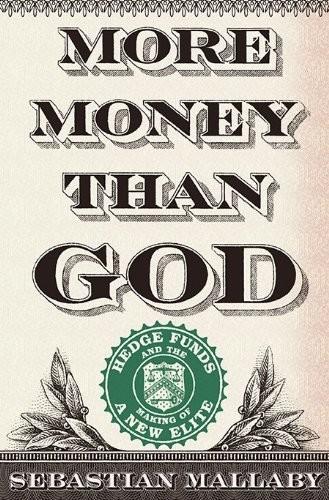
More Money Than God: Hedge Funds and the Making of a New Elite
by
Sebastian Mallaby
Published 9 Jun 2010
Kaplan and Antoinette Schoar, “Private Equity Performance: Returns, Persistence, and Capital Flows,” Journal of Finance 60, no. 4 (August 2005); Jones, Charles, and Matthew Rhodes-Kropf, “The Price of Diversifiable Risk in Venture Capital and Private Equity” (working paper, Columbia University, 2003); Alexander Ljungqvist and Matthew Richardson, “The Cash Flow, Return, and Risk Characteristics of Private Equity” (NYU Stern Working Paper Series, 2003). On the returns of buyout funds, Jones and Rhodes-Kropf estimate annual alpha of 0.72 percent per year, while Kaplan and Schoar are more negative. Ljungqvist and Richardson find stronger alpha for buyout funds, possibly because they focus on funds that were raised in the 1980s, when returns were higher. 10.

Extreme Money: Masters of the Universe and the Cult of Risk
by
Satyajit Das
Published 14 Oct 2011
Praise for Extreme Money “A true insider’s devastating analysis of the financial alchemy of the last 30 years and its destructive consequences. With his intimate first-hand knowledge, Das takes a knife to global finance and financiers to reveal the inner workings without fear or favor.” —Nouriel Roubini, Professor of Economics at NYU Stern School of Business and Chairman of Roubini Global Economics “Das describes the causes of the financial crisis with the insight and understanding of a financial wizard, the candor and objectivity of an impartial observer, and a wry sense of humor that reveals the folly in it all.” —Brooksley Born, Former Chairperson of the U.S.

Space Odyssey: Stanley Kubrick, Arthur C. Clarke, and the Making of a Masterpiece
by
Michael Benson
Published 2 Apr 2018
The other, “Jupiter and Beyond the Infinite,” signaled the film’s last two acts, namely the Star Gate and hotel room sequences. Finally, Kubrick inserted the brief reprise of Cantwell’s sunrise-over-the-monolith shot, just prior to Moonwatcher’s bone-weapon epiphany. The changes were controversial in some quarters. A letter from NYU graduate film student Jon Davison to the New York Times on April 28 slammed MGM for the edits and “meaningless title cards.” Davison wrote that “Stanley Kubrick’s magnificent work has been butchered; the sad result of the critical abuse heaped upon it,” concluding, “The bastardization, complete with sloppy splices and uneven pacing, is now being viewed by even more confused audiences than met the original.

Adaptive Markets: Financial Evolution at the Speed of Thought
by
Andrew W. Lo
Published 3 Apr 2017
First, no individual financial institution has access to systemic information like all the counterparty relationships that exist between all the stakeholders in the financial system (regulators don’t even have such information yet, though they’re working on it). Second, individual institutions don’t have either the economic incentive or the mandate to manage systemwide risk. To borrow an analogy from NYU financial economists Viral Acharya and Matthew Richardson, a financial institution’s risk acts on the financial system in the same way a polluter acts on the environment, a “negative externality”: everyone’s quality of life is negatively affected by their bad actions, not merely the polluter or the financial institution in question.13 The classical economic method to deal with negative externalities is to tax the people who produce them, essentially converting a systemwide problem into the polluter’s problem.
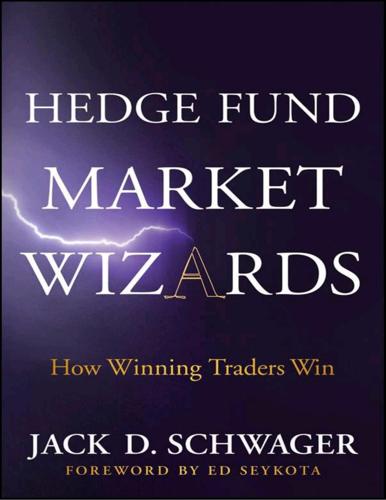
Hedge Fund Market Wizards
by
Jack D. Schwager
Published 24 Apr 2012
As for my career path, when I decided I was ready to buckle down, my father nudged me toward accounting as a backdoor way to get into private equity. It’s a better background for private equity than the traditional career paths of investment banking or management consulting. There is truth in the adage that accounting is the language of business. Did you go back to school for an accounting degree? Yes. At the time, NYU had a special master’s of accounting program that was sponsored by the “Big Six” accounting firms who wanted to diversify their staff pool to include undergrads with liberal arts degrees. In fact, one of the prerequisites to be hired into the program was that you hadn’t taken any prior accounting courses.
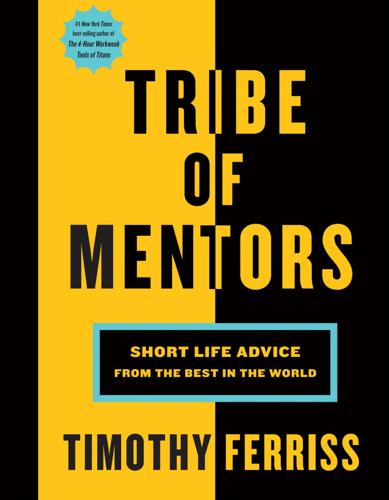
Tribe of Mentors: Short Life Advice From the Best in the World
by
Timothy Ferriss
Published 14 Jun 2017
I left work that very afternoon and bicycled round and round Central Park in NYC, having no idea what to do next. I thought I’d travel. I thought I’d stare at the walls for a while. Instead—and it all happened so suddenly and cinematically that it might defy belief—I remembered that actually I had always wanted to be a writer. So I started writing that very evening. The next day I signed up for a class at NYU in creative nonfiction writing. And the next week, I attended the first session of class and knew that I was finally home. I had no expectation of ever making a living through writing, but it was crystal clear to me that from then on, writing would be my center, and that I would look for freelance work that would give me lots of free time to pursue it.

The Zionist Ideas: Visions for the Jewish Homeland—Then, Now, Tomorrow
by
Gil Troy
Published 14 Apr 2018
Willis, Ellen “Is There Still a Jewish Question? Why I’m an Anti-Anti-Zionist (Wrestling with Zion, edited by Tony Kushner and Alisa Solomon, 2003),” in The Essential Ellen Willis, 437 (Minneapolis: University of Minnesota Press, 2014), copyright © 2014 Nona Willis Aronowitz. Sasson, Theodore The New American Zionism (New York: NYU Press, 2014). Reprinted with permission. Central Conference of American Rabbis “A Statement of Principles for Reform Judaism,” CCAR, May 1999. World Zionist Organization “The Jerusalem Program,” The Jerusalem Program, June 2004, www.wzo.org. Sources Sources are arranged by individual thinkers’ last names.

The power broker : Robert Moses and the fall of New York
by
Caro, Robert A
Published 14 Apr 1975
Even as a boy at the turn of the century, one of seven children of a poor Irish boilermaker, he had followed that scent to its source: the noses of his Waterbury, Connecticut, playmates may have been flattened against candy-store windows; Tom Shanahan's nose was pressed against the glass front door of Waterbury's Colonial Trust Company; reminiscing forty years later, he would recall vividly passing that building almost every day of his youth and staring inside almost every time he passed; it had been, he would say, a place of "august halls"; from as far back as he could remember, he would say, he had wanted to be a banker. He followed the scent down to the great city after high school, but for long years he seemed to have followed it into a trap: the tall, strong young man spent seven years behind the barred windows of tellers' cages. He went to NYU at night, in 1926 earned a degree, but five years later still had a job only slightly better—assistant cashier—at one of the smallest and shakiest banks in the city, the eight-year-old Federation Bank and Trust Company. But when, in 1931, the Depression forced the infant institution to shut its doors, it was the assistant cashier who, with Federation's despairing officers ready to liquidate, thought up a complex refinancing plan that reduced the bank's obligations, personally talked a financier into loaning it the money to pay them off, and saved the bank.
…
By the close of the Age of Moses, for example, the skyline along much of the eastern shore of Manhattan Island that was the heart of metropolis—a skyline that was, to a great extent, Governor Smith Houses, La Guardia Houses, Corlears Hook Houses, Baruch Houses, Lillian Wald Houses, Jacob Riis Houses, Stuyvesant Town, Peter Cooper Village, Bellevue Hospital, NYU-Bellevue Medical Center, the United Nations, Rockefeller Institute, New York Hospital, East River Houses, Woodrow Wilson Houses, Senator Robert F. Wagner, Sr., Houses, Abraham Lincoln Houses, Riverton Houses, North Harlem Houses, Harlem River Houses, Colonial Park Houses—was, for miles at a time, a Robert Moses creation.
…
When the incoming Governor accepted his recommendations on several appointments—including that of Burch McMorran as Superintendent of Public Works—and vetoed the bill that would have forced Moses to shift his Verrazano Bridge approach out of Bay Ridge, Moses began to speak of "Nelson" (he would never address him as Governor, as he had never addressed Roosevelt, Lehman, Dewey or Harriman as Governor; for Robert Moses, there would always be only one Governor) with an affection that was almost paternalistic. In the early months of Rockefeller's Governorship there had been one area of friction. William J. Ronan, a former professor of government at NYU who had begun working for Rockefeller in 1956 as executive director of a temporary state commission Rockefeller was heading, and had thereafter— thanks, in the opinion of some observers, to a remarkable capacity for obsequiousness to the Governor—advanced to become a steadily more important member of his inner circle of advisers.
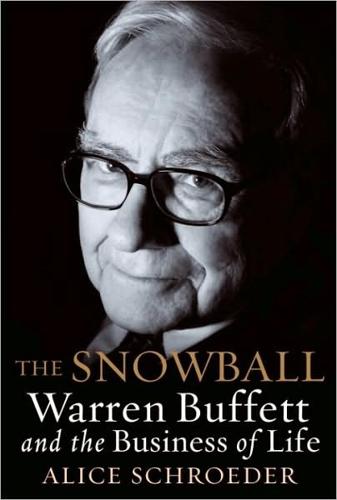
The Snowball: Warren Buffett and the Business of Life
by
Alice Schroeder
Published 1 Sep 2008
Nonetheless, through the howling wind, the homilies of Ben Franklin, divorce planning, and penises in a jar, one message came through, loud and clear: Buffett’s affection and admiration for Rose Blumkin.53 He had plans for her and enlisted Buffett Group member Larry Tisch in his behind-the-scenes machinations. In a virtuoso display of gratitude and showmanship, he had decided to turn the geriatric Rose into Cinderella. With the help of Tisch, who was a trustee of New York University, he arranged it so that both Creighton University and NYU gave Rose honorary degrees.54 At Creighton, the tiny Mrs. B was so overcome that she covered her face with her hands and cried on the stage, saying, “Oy, oy, oy, I never even believe it.”55 Then she spoke of America, the country that made her dream come true. Her advice to the graduating seniors: “First, honesty,” she said.
…
If you’re good, they’ll keep you.”56 In the city for the New York University ceremony, the family took care to keep her from seeing the price of her hotel room, for she had been to New York before and thought anything more than $75 for a hotel room was outrageous.57 She had Louie take her to see Ellis Island and Delancey Street, but getting around the city was a struggle, for she felt cheated by the price of a taxi.58 On the morning of commencement, Mrs. B was “robed” with great pomp and circumstance and received her degree alongside Senator Daniel Patrick Moynihan and the poet Octavio Paz. Despite the august company of the NYU ceremony, when asked which of the two honorary degrees she preferred, Rose did not hesitate. It was Creighton’s. They had bought carpet from her. Soon after, Berkshire’s auditors conducted the Nebraska Furniture Mart’s first inventory. The store was worth $85 million. Mrs. B, seized with a severe case of remorse after she had sold it for a total value of $60 million, including the share retained by the family, told Regardie’s magazine, “I wouldn’t go back on my word, but I was surprised….
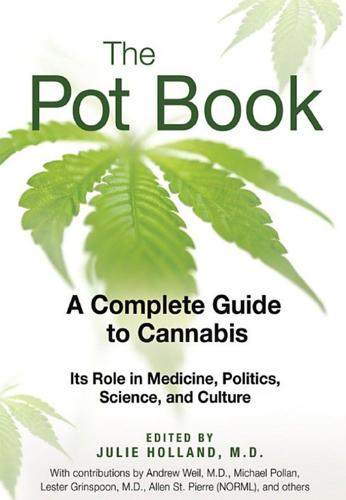
The Pot Book: A Complete Guide to Cannabis
by
Julie Holland
Published 22 Sep 2010
Jeremy Wolff is an artist who has created photo-collages for the cover of Newsweek and whose writing has been featured in The Wall Street Journal. He lives in a small town north of New York City. An expanded and updated version of his chapter is online at http://very.com/pot. About the Author Julie Holland, M.D., is an Attending Psychiatrist at Bellevue Hospital and is on the faculty of the NYU School of Medicine. A recognized expert on street drugs, Dr. Holland is the editor of Ecstasy: The Complete Guide, and has discussed the risks and benefits of MDMA in The Lancet, Harper's, and the Washington Post and has provided expert perspective on the drug for numerous television programs, including the MTV series True Life.
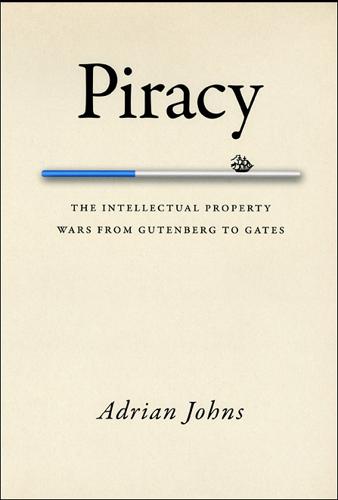
Piracy : The Intellectual Property Wars from Gutenberg to Gates
by
Adrian Johns
Published 5 Jan 2010
I have also been the beneficiary of many learned responses when I have presented versions of some of the claims published here at academic institutions and societies. Over the years I have been fortunate to have the opportunity to do this many times: at Berkeley, Bucknell University, Harvard, McGill, NYU, the University of Pittsburgh, Princeton, the Society for the History of Authorship, Reading, and Publishing, Stanford, various annual meetings of the History of Science Society, the University of Chicago, UCLA, the University of Illinois at UrbanaChampaign, the University of Michigan, and Yale. Audiences at all these places helped enormously in the refinement of the book’s arguments.

The Making of Global Capitalism
by
Leo Panitch
and
Sam Gindin
Published 8 Oct 2012
See Daphne Eviatar, “Wildcat Lawyering,” American Lawyer, November 24, 2002, p. 80. 46 Goldstein and Steinberg, “Regulatory Shift”, pp. 221–37. 47 See “Bilateral Investment Treaties 1995–2006, Trends in Investment Rulemaking,” UNCTAD, Geneva, 2007, esp. p. xi. 48 Daniel Price, cited in Been and Beauvais, “The Global Fifth Amendment,” p. 55. See also Vicky Been, “Does an International ‘Regulatory Takings’ Doctrine Make Sense?” NYU Environmental Law Journal 11, pp. 49–63. 49 See World Investment Report 2010: Investing in a Low-Carbon Economy, UNCTAD: Geneva, 2010, p. 16; and Jiro Honda, Do IMF Programs Improve Economic Governance? Washington, DC: International Monetary Fund, 2008, esp. p. 4. 50 See Ngaire Woods, “The United States and the International Financial Institutions: Power and Influence within the World Bank and the IMF,” in R.
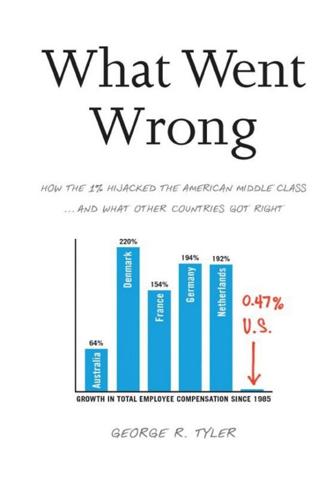
What Went Wrong: How the 1% Hijacked the American Middle Class . . . And What Other Countries Got Right
by
George R. Tyler
Published 15 Jul 2013
(economist), 130, 274, 444 Friedman, Benjamin (economist), 376, 384, 385, 466–67 Friedman, Milton (monetary economist), 25–26, 31-2, 124, 219 Adam Smith, opposed, 28,105 Advocated for shareholder capitalism and Ayn Rand’s philosophy, 102–4, 205 Capitalism and Freedom, 102 Chicago School and, 25–26, 28 deficits, endorsed, 204-5 efficient market hypothesis, 92, 103, 123, insider trading should be legal, 80–81 laissez-faire economics, resurrected, 32–33 monetary policy manipulation for political gain, 219 non-profit maximizing behavior, 123-5 Reagan and, 33, 80, 204 Reaganomics, intellectual veneer for, 131 shareholder capitalism, 47, 142, 178 “The Social Responsibility of Business Is to Increase Its Profits,” 102–3 stakeholder capitalism, criticized altruistic and socially accountable, 103 subprime home mortgages, 68 Friedrich Krupp AG, 167 Frum, David (Bush’s speechwriter), 33, 196, 224 Fuerst, Michael E. (University of Miami), 172–179, 375, 443, 494n63 Fukuyama, Francis (political scientist and author), 21, 241 G Gabaix, Xavier (Stern School of Business at NYU), 136, 137–38 Galbraith, James K. (economist), 78–79, 92, 220 Gandhi, Priyank (economist), 85 Garnaut, Ross (Vice-Chancellor’s Fellow at the University of Melbourne), 58, 436, 439 Garn-St. Germain Depository Institutions Act, 80 Garon, Sheldon (New York Times reporter), 217 Gatinois, Claire (Le Monde reporter), 150–51 General Motors, 14, 99, 210, 258 Gentile, Mary (economist), 445 Geoghegan, Thomas (author), 168, 239, 240 George, Bill (Harvard Business School), 147, 166 German Federal Statistical Office, 314 Geronimus, Arline, 303 Gerson, Michael (Bush’s speechwriter), 295 Gertner, Jon (New York Times Magazine reporter), 56, 528n4 Gettler, Leon (journalist), 433, 481n45 Ghilarducci, Teresa (economist), 409, 410 Ghosn, Carlos (CEO Nissan-Renault), 347 Giersch, Herbert, 241 Gilder, George, 226 Gillespie, John, Money for Nothing (with David Zweig), 129, 131, 133, 138, 443 Ginglinger, Edith, 375 Gingrich, Newt, 182 Gino, Francesca, 161 Giovannoni, Olivier (economist), 220 Gitter, Robert J., 354 Gittins, Ross (Sydney Morning Herald), 307 Gladwell, Malcom, 197, 258 Globalization, 230–32, 318–121 Goethe, Johann Wolfgang (German author), 219 Goldfarb, Zachary A.
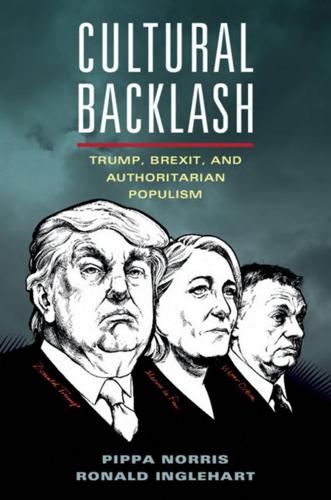
Cultural Backlash: Trump, Brexit, and Authoritarian Populism
by
Pippa Norris
and
Ronald Inglehart
Published 31 Dec 2018
A comprehensive district-level analysis.’ Munich: CESifo Working Papers 6438-2017. Paper presented at the 65th Panel Meeting of Economic Policy. http://cep.lse.ac.uk/pubs/ download/dp1480 pdf. 60. Adriana Stephan. 2015. The Rise of the Far Right: A Sub-Regional Analysis of National Front Support in France. www.politics.as.nyu.edu/docs/IO/ 5628/Stephan_Thesis.pdf; www.nytimes.com/interactive/2017/05/07/world/ europe/france-election-results-maps.html. 61. http://wahl.tagesschau.de/wahlen/2017-09-24-BT-DE/index.shtml. 62. See Italo Colantone and Piero Stanig. 2017. ‘The trade origins of economic nationalism: Import competition and voting behavior in Western Europe.’
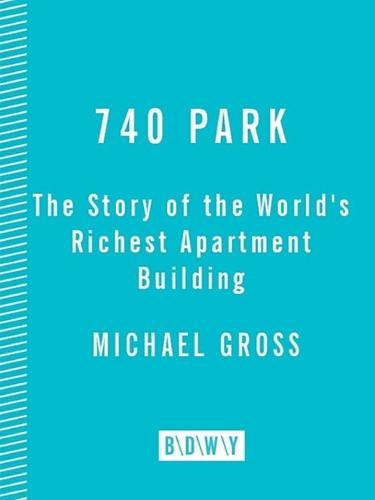
740 Park: The Story of the World's Richest Apartment Building
by
Michael Gross
Published 18 Dec 2007
He proudly told the story of how he thought it was a hoax the day the elder John D. Rockefeller called to ask advice on how to give away money. He became friends with the family, though he was not, as Tova likes to boast, the godfather of Junior’s children. Sam’s son Arthur married his first wife, Joan Rose Wheeler, in 1939 while attending NYU. After serving as a first lieutenant in the Army, he went to work for his father’s firm and spent his entire professional life there. Like his father, Arthur invested in real estate and Jewish philanthropy. In the mid-1950s, he was a partner in the slum-clearance project that created Washington Square Village.
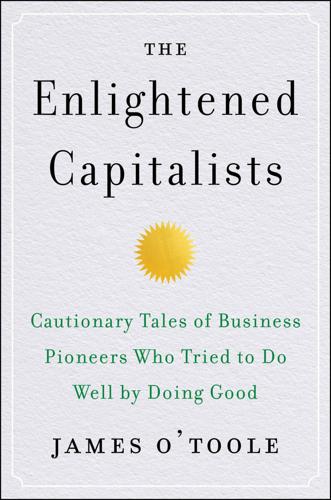
The Enlightened Capitalists
by
James O'Toole
Published 29 Dec 2018
Theoretically he was right, but the world of commerce seldom conforms to theory—and that’s why businesspeople need lawyers. Irish American Herb Kelleher was an unusual kind of lawyer—a chain-smoking, whiskey-swilling, charming, folksy risk-taker. After earning an undergraduate degree in English from Wesleyan, followed by a JD from NYU, he shucked his proper Back East ways and headed west to Texas, where he quickly earned a reputation as a corporate lawyer willing to take on cases others in his profession rejected as losing propositions. The process of getting the necessary approvals for King’s airline was just such a case. The established airlines pulled out all the available legal, regulatory, and legislative stops to prevent the launch of a discount competitor they feared would drive down their profits, if not drive them out of business.
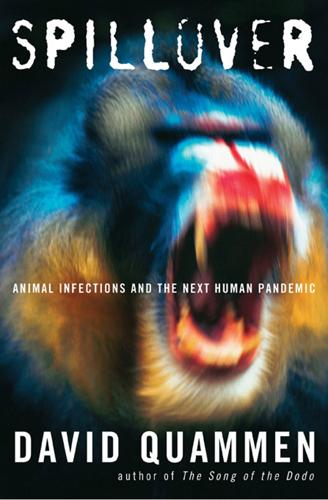
Spillover: Animal Infections and the Next Human Pandemic
by
David Quammen
Published 30 Sep 2012
His breathing became labored and he turned blue. Put into a respirator, he convulsed and lost consciousness. Frothy liquid came wheezing out of his mouth and nostrils. Five hours later, William Brebner was dead at the age of twenty-nine. What killed him? Was it polio? Was it rabies? A fellow researcher in the same NYU lab, just out of medical school but bright and ambitious, assisted at Brebner’s autopsy and then made a further investigation, using bits of Brebner’s brain, spinal cord, lymph nodes, and spleen. This man was Albert B. Sabin, decades before his fame as creator of an oral polio vaccine. Sabin and a colleague injected an emulsion from Brebner’s brain back into monkeys; they also injected some mice, guinea pigs, and dogs.
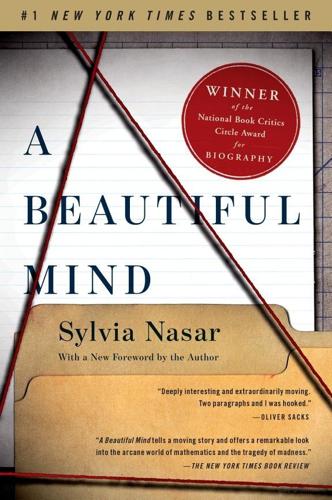
A Beautiful Mind
by
Sylvia Nasar
Published 11 Jun 1998
Once again, Donald Spencer and Albert Tucker approached Robert Winters.58 James Miller, a friend of Winters from Harvard, was in the psychiatry department at the University of Michigan and was connected with a university-sponsored clinic run by Ray Waggoner.59 Through Miller, Winters succeeded in making a unique arrangement whereby Nash would be treated at the clinic and also have an opportunity to work as a statistician in the clinic’s research program. Tucker at Princeton and Martin at MIT decided to set up a fund to make the Michigan plan feasible.60 Anatole Rappaport and Merrill Flood at the University of Michigan, Jürgen Moser at NYU, Alexander Ostrowski of Westinghouse, and others committed themselves to raise funds among mathematicians on Nash’s behalf.61 The Ann Arbor group felt that a stay of two years was necessary. The cost for out-of-state patients was $9,000 a year or $18,000 for the entire stay. Virginia Nash offered to guarantee $10,000 and the group of mathematicians arranged, through the American Mathematical Society, to set up a fund-raising drive for the remaining $8,000.
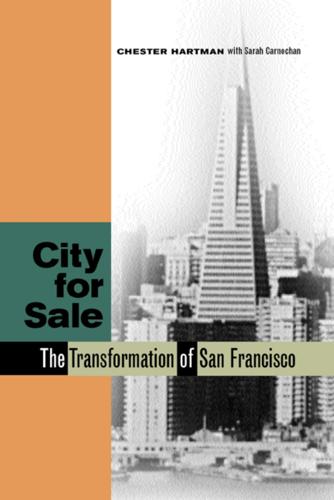
City for Sale: The Transformation of San Francisco
by
Chester W. Hartman
and
Sarah Carnochan
Published 15 Feb 2002
Having alienated tenant groups, her original base of supporters, Silver lost her bid for reelection in 1988, the only incumbent supervisor to lose that year. Her metamorphosis is rather sad: A recent book describes her civil rights activities during Mississippi’s 1964 Freedom Summer. See Debra L. Schultz, Going South: Jewish Women in the Civil Rights Movement (New York: NYU Press, 2001). And that earlier work still is important in her life, as evidenced that she is chair of the fortieth reunion of the 1961 Freedom Riders, which took place in Jackson, Mississippi, in late 2001. 354 / Chapter 13 tactics and fence-sitting of Supervisor Wendy Nelder (daughter of former San Francisco Police Chief and Supervisor Al Nelder).
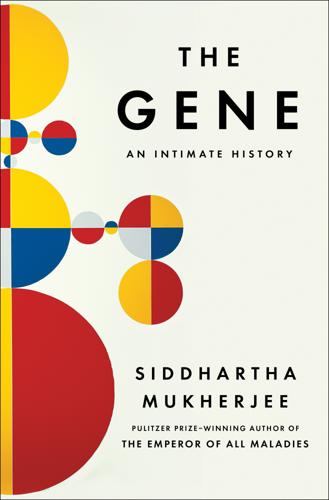
The Gene: An Intimate History
by
Siddhartha Mukherjee
Published 16 May 2016
Gene Hunter: The Story of Neuropsychologist Nancy Wexler. New York: Franklin Watts, 2005. Hamer, Dean. Science of Desire: The Gay Gene and the Biology of Behavior. New York: Simon & Schuster, 2011 Happe, Kelly E. The Material Gene: Gender, Race, and Heredity after the Human Genome Project. New York: NYU Press, 2013. Harper, Peter S. A Short History of Medical Genetics. Oxford: Oxford University Press, 2008. Hausmann, Rudolf. To Grasp the Essence of Life: A History of Molecular Biology. Berlin: Springer Science & Business Media, 2013. Henig, Robin Marantz. The Monk in the Garden: The Lost and Found Genius of Gregor Mendel, the Father of Genetics.
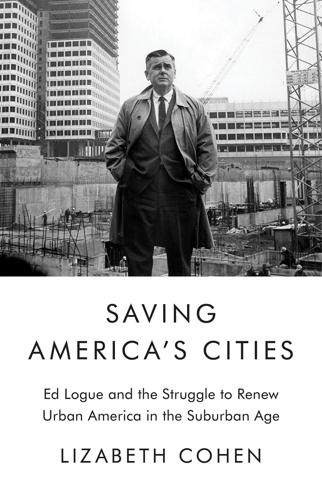
Saving America's Cities: Ed Logue and the Struggle to Renew Urban America in the Suburban Age
by
Lizabeth Cohen
Published 30 Sep 2019
At first he set himself up in Rockefeller’s Critical Choices Commission, until he was invited to share offices with his friends Kenneth and Mamie Clark at 60 East 86th Street, where he opened a consulting firm, the Logue Development Company. A typical project enlisted George Raymond and Robert Litke in an assessment for HUD of why some New Towns had failed and what could be done about it.126 Sympathetic and still-admiring associates also offered him part-time teaching opportunities—at Yale and NYU law schools, Princeton’s School of Architecture, and the University of Pennsylvania’s City and Regional Planning Program.127 Personally it was a dark period. The journalist Fried reported that initially “Logue was bitter and depressed at the way he was expelled from the top ranks of his profession.”
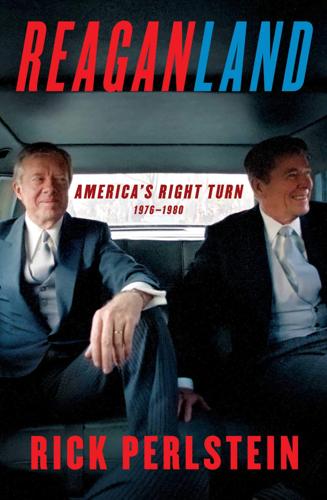
Reaganland: America's Right Turn 1976-1980
by
Rick Perlstein
Published 17 Aug 2020
A Choice, Not an Echo Rick Perlstein, Before the Storm: Barry Goldwater and the Unmaking of the American Consensus (New York: Hill and Wang, 2001), 349, 477. “a few secret kingmakers” Phyllis Schlafly, A Choice Not an Echo: Updated and Expanded 50th Anniversary Edition (New York: Regnery, 2014). “What’s Wrong with ‘Equal Rights’ ” Reprinted in Lyman Tower Sargent, ed., Extremism in America: A Reader (New York: NYU Press, 1995), 257. Within days Ruth Murray Brown, For a “Christian America”: A History of the Religious Right (New York: Prometheus, 2002), 29. William F. Buckley Firing Line, April 15, 1973. In January “Equal Rights Amendment Slows Down,” WP, January 28, 1973. phalanx of regional leaders Brown, For a “Christian America,” 87–92.
…
By 1954 Elizabeth Fones-Wolf, Selling Free Enterprise: The Business Assault on Labor and Liberalism, 1945–1950 (Urbana: University of Illinois Press,1995), 204. only legitimate role William F. Buckley, “National Review: Statement of Intentions (1955),” in Gregory Schneider, ed., Conservatism Since 1930: A Reader (New York: NYU Press, 2003), 195–200. His pitch yielded John Judis, William F. Buckley: Patron Saint of the Conservatives (New York: Simon & Schuster, 1988), 191. gross domestic product “US GDP by Year Compared to Recessions and Events,” https://www.thebalance.com/us-gdp-by-year-3305543. In 1960, a conservative polling firm Sharon Beder, “The Role of ‘Economic Education’ in Achieving Capitalist Hegemony,” State of Nature 2 (Sept/Oct 2006).
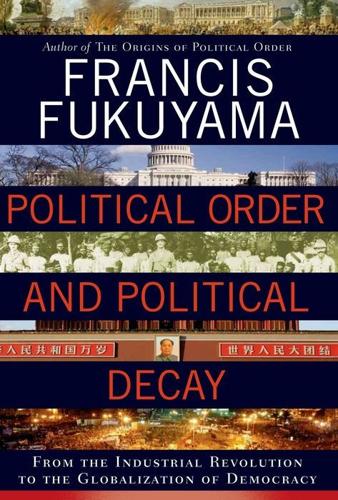
Political Order and Political Decay: From the Industrial Revolution to the Globalization of Democracy
by
Francis Fukuyama
Published 29 Sep 2014
Bloomington: Indiana University Press. Geddes, Barbara. 1994. Politician’s Dilemma: Building State Capacity in Latin America. Berkeley: University of California Press. Gellner, Ernest. 1987. Culture, Identity, and Politics. New York: Cambridge University Press. ______. 1997. Nationalism. New York: NYU Press. ______. 2006. Nations and Nationalism. 2nd ed. Malden, MA: Blackwell. Gerschenkron, Alexander. 1962. Economic Backwardness in Historical Perspective. Cambridge, MA: Harvard University Press. Gilman, Nils. 2003. Mandarins of the Future: Modernization Theory in Cold War America. Baltimore: Johns Hopkins University Press.

Wired for War: The Robotics Revolution and Conflict in the 21st Century
by
P. W. Singer
Published 1 Jan 2010
SMART BOMBS, NORMA JEANE,AND DEFECATING DUCKS: A SHORT HISTORY OF ROBOTICS 42 “The further backward you look” As quoted in Ray Kurzweil, The Singularity Is Near: When Humans Transcend Biology (New York: Viking, 2005), 35. 42 “Perhaps the most wonderful piece” David Brewster, as quoted in Jay Richards, Are We Spiritual Machines? Ray Kurzweil vs. the Critics of Strong AI, 1st ed. (Seattle: Discovery Institute Press, 2002). 42 called it “most deplorable” Rony Gelman, “Gallery of Automata,” 1996 (cited November 17, 2006); available at http://www.nyu.edu/pages/linguistics/courses/v610051/gelmanr/ling.html. 42 “the Defecating Duck” Jessika Riskin, “The Defecating Duck, or, the Ambiguous Origins of Artificial Life,” Critical Inquiry 29, no. 4 (2003). 43 “getting assistance by producing some machines” Gelman, “Gallery of Automata.” 43 these punch cards would inspire George Dyson, “The Undead: The Little Secret That Haunts Corporate America . . .

This Changes Everything: Capitalism vs. The Climate
by
Naomi Klein
Published 15 Sep 2014
And as renowned psychiatrist and author Robert Jay Lifton has noted, no technology does more to confirm the notion that man has tamed nature than the ability to split the atom.60 Based on this research, Kahan and others argue, environmentalists should sell climate action by playing up concerns about national security and emphasizing responses such as nuclear power and “geoengineering”—global-scale technological interventions that would attempt to reverse rapid warming by, for instance, blocking a portion of the sun’s rays, or by “fertilizing” the oceans so that they trap more carbon, among other untested, extraordinarily high-risk schemes. Kahan reasons that since climate change is perceived by many on the right as a gateway to dreaded anti-industry policies, the solution is “to remove what makes it threatening.” In a similar vein, Irina Feygina and John T. Jost, who have conducted parallel research at NYU, advise policymakers to package environmental action as being about protecting “our way of life” and a form of patriotism, something they revealingly call “system-sanctioned change.”61 This kind of advice has been enormously influential. For instance, the Breakthrough Institute—a think tank that specialized in attacking grassroots environmentalism for its supposed lack of “modernity”—is forever charting this self-styled middle path, pushing nuclear power, fracked natural gas, and genetically modified crops as climate solutions, while attacking renewable energy programs.
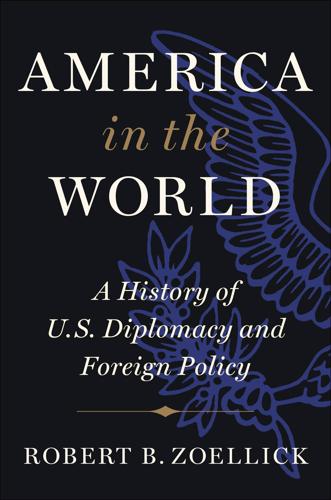
America in the World: A History of U.S. Diplomacy and Foreign Policy
by
Robert B. Zoellick
Published 3 Aug 2020
Bar Associations introduction from Zimmermann, First Great Triumph, 128. Hamilton Commencement speech from ibid., 134. For legal training, “scientific” case methods, and Root’s classical legal ideology, see Jonathan Zasloff, “Law and the Shaping of American Foreign Policy: From the Gilded Age to the New Era,” NYU Law Review 78 (2003), 239. Lodge quote from Jessup, Root, vol. 1, 453. 20. See Jessup, Root, vol. 1, 183 for quote and income. See Zimmermann, First Great Triumph, 144 and 488 for his views on post–Civil War amendments and defense of underdogs. 21. TR quotes from Jessup, Root, vol. 1, 453; Leopold, Root, 72. 22.
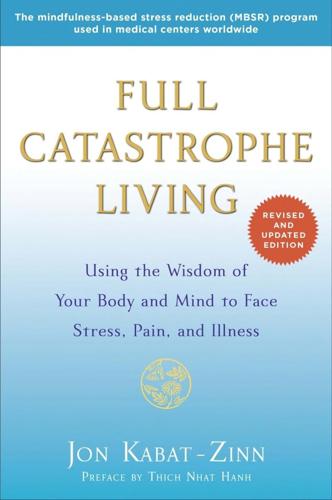
Full Catastrophe Living (Revised Edition): Using the Wisdom of Your Body and Mind to Face Stress, Pain, and Illness
by
Jon Kabat-Zinn
Published 23 Sep 2013
Kabat-Zinn: “There is more right with you than wrong with you”—those words of yours have stayed with me through two frightening cancer surgeries. So many other comforting thoughts that you offer on your video have helped me keep my sanity. At night, when alone after my visitors were gone, I couldn’t wait to turn on the NYU Medical Center in-house channel because, somehow, I became dependent on the comfort you would offer. I can still see your face before me, almost as though my experience was a personal one. You offer a meaningful philosophy that puts everything into perspective for a frightened human being. Thank you so much for that.
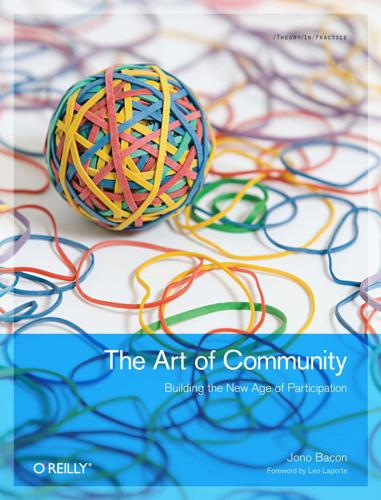
The Art of Community: Building the New Age of Participation
by
Jono Bacon
Published 1 Aug 2009
But one day I checked back into Twitter, and by gum, I had 5,000 followers! I was embarrassed that I hadn’t been giving them anything to follow, so I started to tweet actively. And because I’m an ideas guy, what I shared was links to what I was reading far more than what I was doing. That’s a style of tweeting that @jayrosen_nyu christened “mindcasting.” At the time, it was somewhat atypical, but it’s since become one of the most common forms of tweeting. How has your usage of Twitter changed and evolved over time? Now that I have over 1.5 million followers, that’s a kind of publishing platform. I follow about 800 people and try to pass on a lot of tweets from them via retweet, as a way of amplifying not just the ideas but other people who are good sources of them.
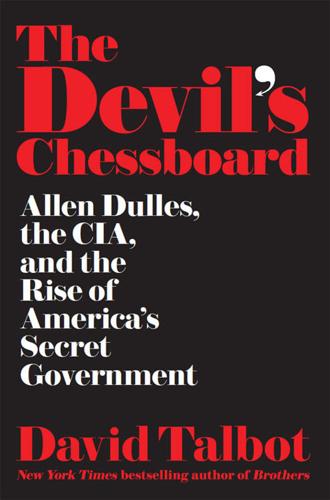
The Devil's Chessboard: Allen Dulles, the CIA, and the Rise of America's Secret Government
by
David Talbot
Published 5 Sep 2016
., 154. 170“It was clear he did not want to proceed”: Ambrose, Nixon: The Education of a Politician, 178. 171Some of this confidential information about Hiss: Summers, Arrogance of Power, 78. 171The HUAC investigation could have been “acutely embarrassing”: Nixon, Six Crises, 21. 172“He was no more concerned about whether Hiss”: Summers, Arrogance of Power, 67. 173“We built [the typewriter]”: John Dean, Blind Ambition: The White House Years (New York: Simon & Schuster, 1976), 57. 173“unparalleled venom”: Nixon, Six Crises, 67. 174“not a revolution by violence”: Whittaker Chambers, Witness (Washington, DC: Regnery Publishing, 2001), 472. 174“it was a call to arms”: Interview with Hiss conducted by Judah Graubart and Alice V. Graubart for their book, Decade of Destiny (Chicago: Contemporary Books, 1978). Available on “The Alger Hiss Story” Web site, iles.nyu.edu/th15/public/home.html. 176“We looked at each other”: Chambers, Witness, 73. 176“his attitude to me”: Summers, Arrogance of Power, 69. 176“The true story of the Hiss case”: Ibid., 68. 177“the most important U.S. government economist”: James M. Boughton, “The Case Against Harry Dexter White: Still Not Proven” (working paper, International Monetary Fund, 2000). 177a “New Deal for a new world”: R.
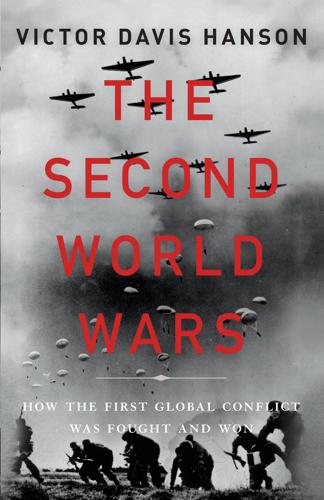
The Second World Wars: How the First Global Conflict Was Fought and Won
by
Victor Davis Hanson
Published 16 Oct 2017
The Dynamics of Military Revolution, 1300–2050 (Cambridge: Cambridge University Press, 2001). Koistinen, Paul A. C. Arsenal of World War II: The Political Economy of American Warfare, 1940–1945 (Lawrence: University Press of Kansas, 2004). Koliopoulos, Giannes, and Thanos Veremis. Greece: The Modern Sequel, From 1831 to the Present (New York: NYU Press, 2002). Kotkin, Stephen. Stalin, Vol. 1: Paradoxes of Power, 1878–1928 (New York: Penguin Press, 2014). Kozak, Warren. LeMay: The Life and Wars of General Curtis LeMay (Washington, DC: Regnery, 2009). Kramer, Alan. Dynamic of Destruction: Culture and Mass Killing in the First World War (Oxford: Oxford University Press, 2007).
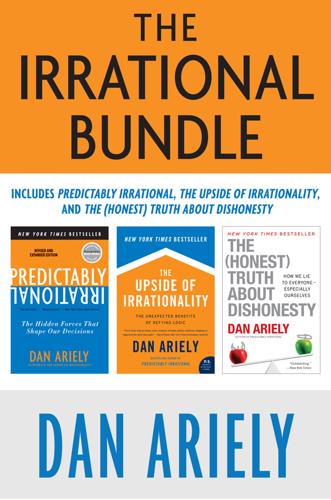
The Irrational Bundle
by
Dan Ariely
Published 3 Apr 2013
Sure enough, the participants in the experimental group were affected by the “elderly” words: their walking speed was considerably slower than that of a control group who had not been primed. And remember, the primed participants were not themselves elderly people being reminded of their frailty—they were undergraduate students at NYU. ALL THESE EXPERIMENTS teach us that expectations are more than the mere anticipation of a boost from a fizzy Coke. Expectations enable us to make sense of a conversation in a noisy room, despite the loss of a word here and there, and likewise, to be able to read text messages on our cell phones, despite the fact that some of the words are scrambled.
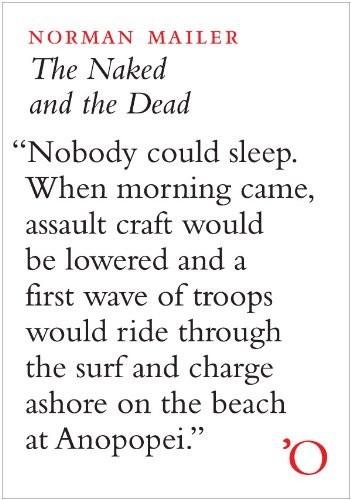
The Naked and the Dead
by
Norman Mailer
Published 20 Jul 2010
His powerful back muscles contract only slightly as he flips up another carton. You’ll get the hang of it, he says cheerfully. There are lots of things in this kind of work you have to study about. * * * A lonely deal. Sad things, like leafing through the annual catalogues sent out by MIT, Sheffield School of Engineering, NYU, and so on. But there is a party at last, a girl to whom he can talk, a pretty dark-haired little girl with a soft shy voice and an attractive mole on her chin of which she is self-conscious. A year or two younger than he, just out of high school, and she wants to be an actress or a poetess. She makes him listen to the symphonies of Tchaikovsky (the Fifth is her favorite) and she is reading Look Homeward, Angel, works as a salesgirl in a woman’s store.

Bourgeois Dignity: Why Economics Can't Explain the Modern World
by
Deirdre N. McCloskey
Published 15 Nov 2011
The Birth of the Modern World: Global Connections and Comparisons, 1780–1914. Oxford: Blackwell. Becker, Howard S., and Alain Pessin. 2005. “A Dialogue on the Ideas of ‘World’ and ‘Field.’” Ed. Harvey Molotch. French version in Sociologie de l’art, English trans. in Sociological Forum 21 (2006). Manuscript version at http://nyu.edu/classes/bkg/objects/becker.doc. Beckett, J. C. 1965 (2008). The Making of Modern Ireland, 1603–1923. London: Faber and Faber. Bell, Emma. 2008. Reading Management and Organisation in Film. Hampshire: Palgrave Macmillan. Bell, Tom W. 2014. Intellectual Privilege: Copyright, Common Law, and the Common Good.

The Rise and Fall of American Growth: The U.S. Standard of Living Since the Civil War (The Princeton Economic History of the Western World)
by
Robert J. Gordon
Published 12 Jan 2016
The Lynds (1929) report that 100 percent of the blue-collar households that they surveyed in 1925 subscribed to at least one daily newspaper. 7. Newspaper circulation is the sum of daily circulation for daily newspapers and weekly circulation for Sunday-only and weekly newspapers. 8. Facts in this paragraph come from Innis (1942, p. 11). 9. Giordano (2003, p. 11). 10. www.nyu.edu/classes/keefer/ww1/byrne.html. Some historians doubt that this exchange actually happened. See Campbell (2001, p. 72). 11. Both quotations from Allen (1931, p. 76). 12. Phillips (2000, p. 271). 13. Totty (2002, p. R13). 14. Thompson (1947, pp. 90–91). 15. All three quotations in this paragraph are from DuBoff (1984, p. 571). 16.
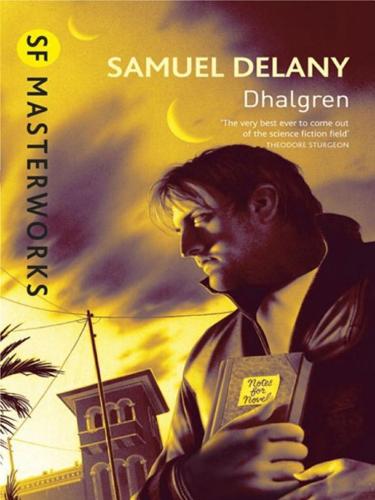
Dhalgren
by
Samuel R. Delany
Published 31 Dec 1973
But one cannot be president with a Jewish grandmother. A millionaire family with connections at Harvard helps. A moderately wealthy one with strong emotional ties to Wooster (paint-thinner manufacturers in Cleveland) can be a downright nuisance. Shall I twist the knife? A degree in corporate law from Yale is one thing; one in patents from N.Y.U., (cum laude, 1960, and still two tries at the New York bar. Personal reasons again…? The pain!) is something else again. I ramble. More than likely I shall not be at the house for a while. Until we do meet, I remain, Sincerely, Roger Calkins RC;wd too dark to see. So got up, stretched, put down my plank, went inside—and was suddenly bellowing and yelling and laughing, and everybody was pouring in to see what was going on: "Night run!"
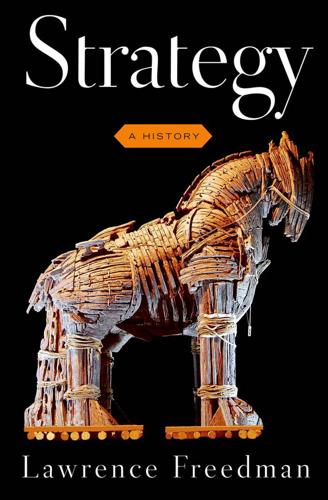
Strategy: A History
by
Lawrence Freedman
Published 31 Oct 2013
Cited by Francesca Polletta, It Was Like a Fever: Storytelling in Protest and Politics (Chicago: University of Chicago Press, 2006), 48–50. 38. John Arquilla and David Ronfeldt, eds., Networks and Netwars: The Future of Terror, Crime and Militancy (Santa Monica, CA: RAND, 2001). 39. See, for example Jay Rosen, “Press Think Basics: The Master Narrative in Journalism,” September 8, 2003, available at http://journalism.nyu.edu/pubzone/weblogs/pressthink/2003/09/08/basics_master.html. 27 Race, Religion, and Elections 1. William Safire, “On Language: Narrative,” New York Times, December 5, 2004. By the same token, Al Gore had been criticized during the 2000 presidential debates for telling “tall tales.” The problem, as Francesca Polletta noted, was Gore lacked a gift for “persuasive storytelling,” and that intellectual policy wonks were less able to make appeals to emotions.

USA Travel Guide
by
Lonely, Planet
Washington Square Park & Around PARK (Offline map) This park began as a ‘potter’s field’ – a burial ground for the penniless – and its status as a cemetery protected it from development. It is now a completely renovated and incredibly well-used park, especially on the weekend. Children use the playground, NYU students catch some rays and friends meet ‘under the arch,’ the renovated landmark on the park’s northern edge, designed in 1889 by society architect Stanford White. Dominating a huge swath of property in the middle of the Village, New York University, one of the largest in the country, defines the area around the park and beyond architecturally and demographically.
…
Turn right on Minetta Lane and right on MacDougal St to find the historic Minetta Tavern , which opened as a speakeasy in 1922, its walls now lined with photos of celebs who have visited. Also on this block is the former site of the Folklore Center , where Izzy Young established a hangout for folk artists including Dylan, who found his first audience at the music venue Cafe Wha? . Double back along MacDougal to the current Research Fellows & Scholars Office of the NYU School of Law, the former site of the Liberal Club , a meeting place for free thinkers, including Jack London and Upton Sinclair, founded in 1913. Beyond here is the southwest entrance to Washington Square Park , which has a long history as a magnet for radicals. Wrap up the tour by leaving the park at the iconic arch and head up Fifth Ave.

The Price of Silence: The Duke Lacrosse Scandal
by
William D. Cohan
Published 8 Apr 2014
All the rules are out the window, then you have chaos, and that’s why the rules are so important and that’s what you got in this case. It’s chaotic. It looks bad for North Carolina. It looks bad for the DA’s office. It looks bad for the criminal justice system in general.” Easley’s talk, which was recorded by NYU and then released, caught Nifong off-guard. Neither he nor his attorney, David Freedman, would comment about Easley’s observations. And the governor would not, either. Years later, Nifong expressed no love for Easley, who in 2010 became the first governor, or former governor, of North Carolina, to plead guilty to a felony, when he agreed he failed to report on a required campaign disclosure form that he had accepted a $1,600 helicopter ride with a supporter in October 2006.
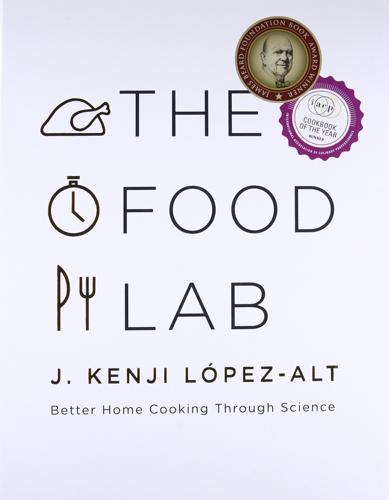
The Food Lab: Better Home Cooking Through Science
by
J. Kenji López-Alt
Published 20 Sep 2015
Then again, even grain-finished cows are only finished on grain for a few months before they are slaughtered—hardly enough time to put them at risk of serious health problems, so I’m frankly not too concerned about that argument. According to Marion Nestle, a professor of nutrition and public health at NYU, grass-fed cows tend to have lower levels of E. coli, as well as lower levels of dangerous bacteria in their feces, and require fewer antibiotics, making them, all in all, safer to consume. They also tend to have higher levels of omega-3 fatty acids (that’s the healthy stuff), along with higher levels of transconjugated linoleic acids (CLAs).

Ashes to Ashes: America's Hundred-Year Cigarette War, the Public Health, and the Unabashed Triumph of Philip Morris
by
Richard Kluger
Published 1 Jan 1996
Louis, he wore his dark hair long, and his angular face often bore a dour, world-weary, even distasteful expression that looked to some as if he had just detected an unpleasant aroma in the vicinity. If his high opinion of himself was not entirely endearing, there was no gainsaying Ernie Wynder’s brains, energy, and ambition. In the course of a summer internship at NYU after his second year at medical school, Wynder attended an autopsy of a lung cancer victim and was struck by the absence of any report of smoking in the deceased’s medical history. Inquiring of the widow, he discovered that the man had been a two-pack-a-day smoker, and Wynder began to suspect that the relationship between smoking and lung cancer had been underestimated due to such faulty reporting.
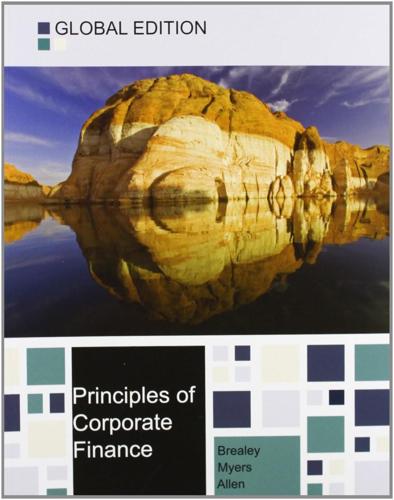
Principles of Corporate Finance
by
Richard A. Brealey
,
Stewart C. Myers
and
Franklin Allen
Published 15 Feb 2014
Green Loughborough University Mark Griffiths Thunderbird, American School of International Management Re-Jin Guo University of Illinois, Chicago Ann Hackert Idaho State University Winfried Hallerbach Erasmus University, Rotterdam Milton Harris University of Chicago Mary Hartman Bentley College Glenn Henderson University of Cincinnati Donna Hitscherich Columbia University Ronald Hoffmeister Arizona State University James Howard University of Maryland, College Park George Jabbour George Washington University Ravi Jagannathan Northwestern University Abu Jalal Suffolk University Nancy Jay Mercer University Thadavillil (Nathan) Jithendranathan University of Saint Thomas Kathleen Kahle University of Arizona Jarl Kallberg NYU, Stern School of Business Ron Kaniel Duke University Steve Kaplan University of Chicago Eric Kelley University of Arizona Arif Khurshed Manchester Business School Ken Kim University of Wisconsin, Milwaukee Jiro Eduoard Kondo Northwestern University Kellogg School of Management C. R. Krishnaswamy Western Michigan University George Kutner Marquette University Dirk Laschanzky University of Iowa Scott Lee Texas A&M University Bob Lightner San Diego Christian College David Lins University of Illinois, Urbana Brandon Lockhart University of Nebraska, Lincoln David Lovatt University of East Anglia Greg Lucado University of the Sciences in Philadelphia Debbie Lucas Northwestern University Brian Lucey Trinity College, Dublin Suren Mansinghka University of California, Irvine Ernst Maug Mannheim University George McCabe University of Nebraska Josie McLaren, University of Newcastle Eric McLaughlin California State University, Pomona Joe Messina San Francisco State University Tim Michael University of Houston, Clear Lake Dag Michalson Bl, Oslo Franklin Michello Middle Tennessee State University Peter Moles University of Edinburgh Katherine Morgan Columbia University James Nelson East Carolina University James Owens West Texas A&M University Darshana Palkar Minnesota State University, Mankato Claus Parum Copenhagen Business School Dilip Patro Rutgers University John Percival University of Pennsylvania Birsel Pirim University of Illinois, Urbana Latha Ramchand University of Houston Rathin Rathinasamy Ball State University Raghavendra Rau Purdue University Joshua Raugh University of Chicago Charu Reheja Wake Forest University Thomas Rhee California State University, Long Beach Tom Rietz University of Iowa Robert Ritchey Texas Tech University Michael Roberts University of Pennsylvania Mo Rodriguez Texas Christian University John Rozycki Drake University Frank Ryan San Diego State University Marc Schauten Eramus University Brad Scott Webster University Nejat Seyhun University of Michigan Jay Shanken Emory University Chander Shekhar University of Melbourne Hamid Shomali Golden Gate University Richard Simonds Michigan State University Bernell Stone Brigham Young University John Strong College of William & Mary Avanidhar Subrahmanyam University of California, Los Angeles Tim Sullivan Bentley College Shrinivasan Sundaram Ball State University Chu-Sheng Tai Texas Southern University Tom Tallerico Dowling College Stephen Todd Loyola University, Chicago Walter Torous University of California, Los Angeles Emery Trahan Northeastern University Gary Tripp Southern New Hampshire University Ilias Tsiakas University of Warwick Narendar V.